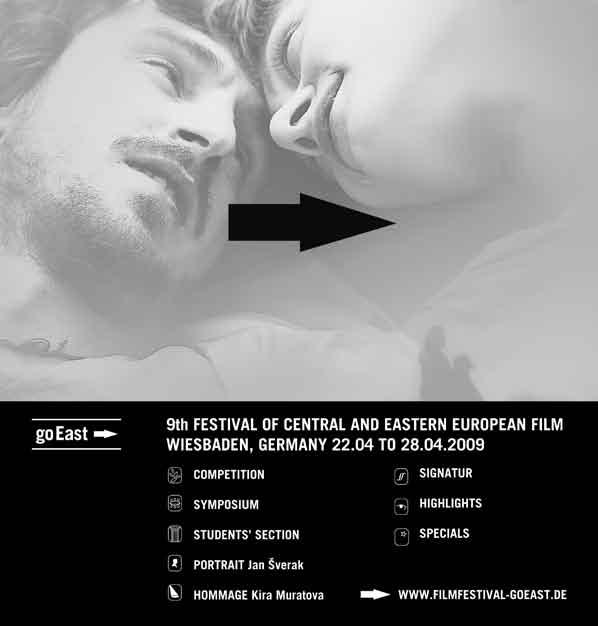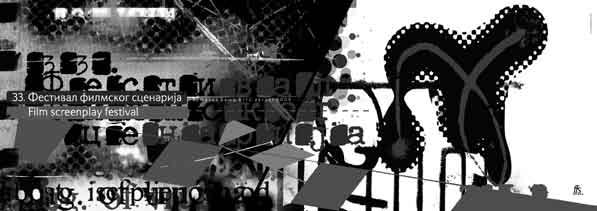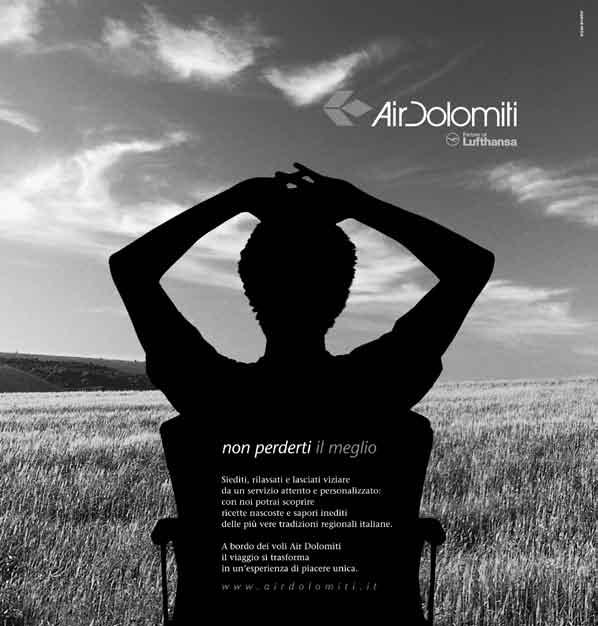




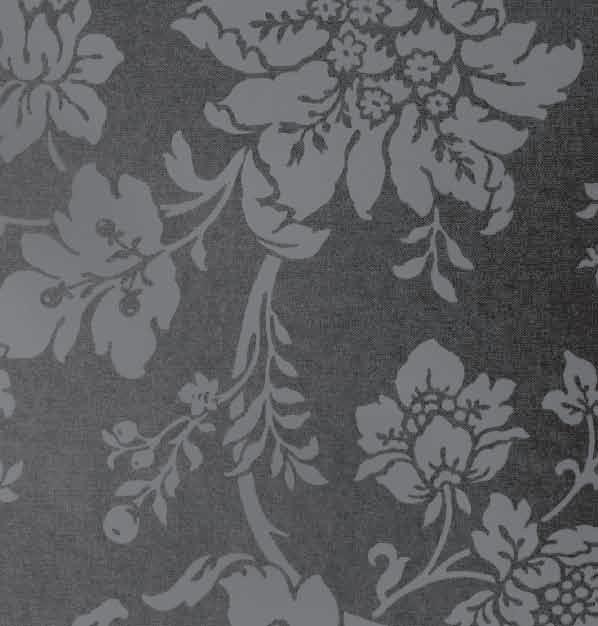
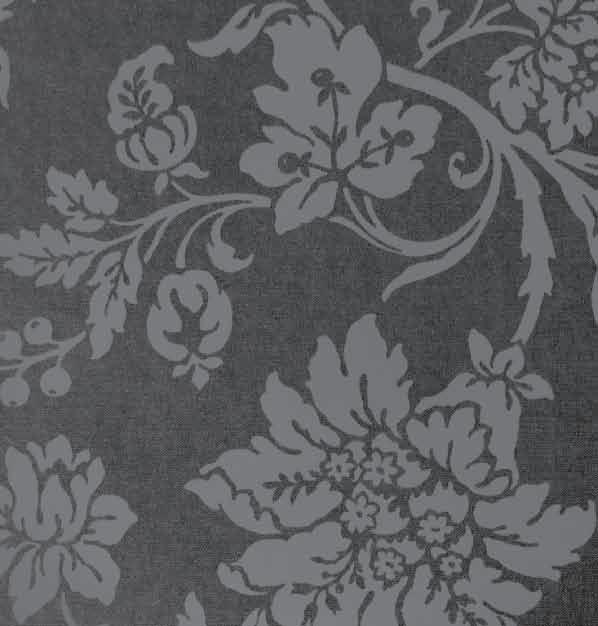
Alpe Adria Cinema
via Donota 1 34121 trieste / italia
tel. +39 040 3476076
fax +39 040 662338
info@alpeadriacinema.it www.triestefilmfestival.it
a project by alpe adria cinema
20a edizione
15-22 gennaio 2009
con il patrocinio di Comune di trieste
Direzione Generale per il Cinema –
ministero per i Beni e le attività Culturali
sindacato nazionale Critici Cinematografici – triveneto
con il contributo di
Regione autonoma Friuli venezia Giulia
assessorato all’istruzione e Cultura
meDia Plus Programme of the european Union
Cei – Central european initiative
Direzione Generale per il Cinema –
ministero per i Beni e le attività Culturali
Comune di trieste
assessorato alla Cultura
Provincia di trieste
assessorato alla Cultura
Camera di Commercio – trieste
con il sostegno di air Dolomiti
Comunità greco orientale di trieste
Goethe-institut italien
irish Film institute
British Film institute
ministero degli affari esteri della Grecia
tCD - triesteCittàDigitale
con la collaborazione di Fucine mute
Greek Film Centre
C sC - Cineteca nazionale
Gruppo 78
servizio di Cineteca Regionale
teatro miela
alpe adria cinema aderisce a associazione italiana Festival Cinematografici
Centeast
alpe adria cinema ringrazia per i servizi offerti
Bip Computer (trieste)
Hotel Continentale (trieste)
mozart Café (trieste)
Rvnet.eu (trieste)
sim2 (Pordenone)
spin (trieste)
Urban Hotel Design (trieste)
direttore artistico
annamaria Percavassi
consulenti
vincenzo Bugno (Germania)
Nerina Kocjančič (Slovenia)
maciej Karpiński (Polonia)
Judit Pintér (Ungheria)
eva Zaoralová (Repubblica Ceca)
organizzazione associazione alpe adria Cinema
presidente, coordinamento organizzativo
Cristina sain
produzione max mestroni
segreteria generale
elena Giuffrida con monica Goti
ufficio ospitalità e accrediti
margherita stecca, Giovanni Portosi
programmazione e ricerca filmica
nicoletta Romeo
movimento copie e pre-selezione
monica Goti
con la collaborazione di Lorna Reed
catalogo generale a cura di tiziana Ciancetta, Giovanna tinunin con la collaborazione di sergio Crechici (per la ricerca iconografica e bibliografica generale e per le biofilmografie della sezione “1909 – 2009 da trieste a Dublino: james joyce e il cinema volta”)
alberto Pezzotta (per “associazioni imprevedibili. il cinema di Walerian Borowczyk”)
nicoletta Romeo (per “Cinema greco. Film dal margine”, schede e biofilmografie)
maria Kassotaki e Lucia marcheselli Loukas (per “Cinema greco. Film dal margine”, traslitterazione dal neogreco all’italiano)
elisabetta d’erme (per “1909 – 2009 da trieste a Dublino: james joyce e il cinema volta”, schede e biofilmografie)
Cinzia agrizzi (per “Lo schermo triestino 3: Giacomo Gentilomo”, schede e biografia di Giacomo Gentilomo)
elfi Reiter (per “tracce di muro”, sinossi e biografie) traduzioni
italiano / inglese (saggi e introduzioni)
Julian Comoy, Lucian Comoy (schede e biografie autori)
Julian Comoy, Lucian Comoy, tiziana Ciancetta, Giovanna tinunin inglese / italiano
Giacomo Barsanti, tiziana Ciancetta, michela Gandolfo, Giovanna tinunin gestione materiale iconografico
tiziana Oselladore fotografia di piazza unità gentilmente concessa da Roberto Germani concept e layout grafico catalogo marco Brollo
concept e layout grafico programma di sala alpe adria Cinema con la collaborazione di massimo miani
progetto e sviluppo sito internet tiziana Oselladore per tCD - triesteCittàDigitale s.r.l. videodiary
Romina Bagatin con Giordano Bianchi, martina marafatto redazione
tibisay Campanella con enrico Colussi, margherita nicotra
ufficio stampa volpe&sain comunicazione
sala stampa
moira Cussigh, Daniela sartogo con la collaborazione di elisa Romeo promozione
Patrizia Pepi Gioffrè
sottotitoli elettronici
Underlight di evelyn Dewald silverscreen di edward Catalini e Claudia Pezzutti coordinamento
Claudia Pezzutti traduzioni
silvia agostini, Beatrice Biggio, edward Catalini, Gabriella Catalini, evelyn Dewald, elisa erlacher, Francesco Ledovini, Gianluca Pontrandolfo, Francesca Prelazzi
incontri con gli autori moderatore: Roberto Ferrucci interprete: ada Prelazzi
coordinamento giurie
tiziana Ciancetta, monica Goti con la collaborazione di Lorna Reed
progetto grafico marco Brollo
immagine coordinata e allestimenti
alpe adria Cinema
progetto e allestimento cavò_rifugio videoespositivo
michele Lanari, Lodovico mascarin per ell(e)gi, trieste realizzazione: ivan Olivo
sigla del festival
Fabio Bressan,
musiche originali di massimo Zamboni
festival promo
Davide Del Degan
trasporti
Dhl, R&D Logistica
autisti festival
marco Urban con Daniele Braida, elis Cian
desk hotel
alessandra Bortolin, silvia Genovese
uffici del festival & infopoint
Giulia Battaglini con Francesco Basile, vera marchesi, Guendalina Pastorutti
Cinema Excelsior proiezioni
Paolo venier, Blendi tagani cassa
veruska Driutti, Rossella mestroni personale di sala
Patrizia Pepi Gioffrè con monica Bertuzzi, Giulia Bigazzi, alberta Del Favero, Laura Ferreri, elisabetta Giotto, alessandra iapelli, Laura marcone, Claudia Palombieri, Giulia sadun, enrica sartore, elena tubaro, Luana verbanac
Cinema Ariston
isidoro Brizzi, elena Pachys
Teatro Miela responsabile artistico
Rosella Pisciotta responsabile di sala
Francesco De Luca proiezioni
michele somberaz sotte
le sezioni del festival
concorso lungometraggi eventi speciali a cura della direzione artistica con la collaborazione di nicoletta Romeo
concorso cortometraggi a cura di tiziana Ciancetta e elena Giuffrida
concorso documentari fuori concorso omaggio a volker Koepp.
“Le donne di Wittstock” a cura di Fabrizio Grosoli con la collaborazione di elena Geri associazioni imprevedibili. il cinema di walerian borowczyk a cura di alberto Pezzotta
cinema greco. film dal margine a cura di nicoletta Romeo
1909 – 2009 da trieste a Dublino james joyce e il cinema volta progetto ideato e curato da elisabetta d’erme, John mcCourt, erik schneider e realizzato con il contributo di Regione autonoma
Friuli venezia Giulia, Comune di trieste –assessorato alla Cultura –Direzione area Cultura con il patrocinio di Comune di trieste ambasciata d’irlanda in italia con la collaborazione di trieste Joyce school (Università di trieste), British Film institute, irish Film institute, Radio telefís Éireann, Cineteca nazionale, Paolo venier, isidoro Brizzi, Luke mcKernan
il cinema e Joyce rassegna cinematografica a cura di elisabetta d’erme
roll away the reel world: James Joyce e il cinema Convegno internazionale di studi a cura di John mcCourt, sala tiziano tessitori, Palazzo della Regione, 15 – 16 gennaio 2009
lo schermo triestino progetto pluriennale a cura di Luciano De Giusti e annamaria Percavassi lo schermo triestino 3: giacomo gentilomo. un protagonista nel cinema di genere rassegna cinematografica in collaborazione con Facoltà di scienze della Formazione dell’Università di trieste (Federico Zecca) Centro sperimentale di Cinematografia-Cineteca nazionale, Roma
La Cineteca del Friuli Ripley’s Film
walls of sound. sound(e)scapes of possibilities rassegna di documentari musicali a cura di Giovanna tinunin con la collaborazione di monica Goti
zone di cinema a cura della direzione artistica
Cei event: progetto eastweek. nuovi talenti, grandi maestri a cura di elena Giuffrida con la cortese partecipazione di Márta Mészáros, Jerzy Stuhr, Dinko Tucaković, andrzej Żuławski
tracce di muro. per una memoria visiva e sonora del muro di berlino a 20 anni dalla sua caduta rassegna cinematografica a cura di alpe adria Cinema con la collaborazione di elfi Reiter
catodica 4 rassegna internazionale di videoarte promossa da fucine mute associazione culturale a cura di maria Campitelli / Gruppo 78
ringraziamenti
Albania
marubi Film school (Kujtim Çashku)
Austria austrian Film Commission (anne Laurent, Brigitte Weich), autlook Film sales, coop99 filmproduktion (antonin svoboda), Filmfabrik marko Doringer Filmproduktion, Händl Klaus Filmproduktion, nikolaus Geyrhalter Filmproduktion
Bosnia Erzegovina
Mamafilm (Elma Tataragić), Ivan Ramadan, Irena taskovski, Banja Luka Film institute, akademija Umjetnosti Banja Luka
Bulgaria
Agitprop (Martička Božilova, Nelly Rousseva), Bulgar Beats (mila Kirova), Kristina Grozeva, vihrena ninova, nU Boyana Film, RFF international (stefan Kitanov), mira staleva, trikitri
Croazia
Propeler Film (Lana Ujdur, Boris T. Matić)
danimarca trustnordisk
Estonia
Kuukulgur Film (Jaak Kilmi)
Finlandia
Finnish Film archive (Juha Kindberg), the Finnish Film Foundation (marja Pallassalo, Otto suuronen), making movies Oy (Jenny Ranta), matila Röhr Production Oy
Francia
arte, Coproduction Office (Philippe Bober, Olimpia Pont Cháfer), elle Driver (mathilde meyer, Julie susset), KW Filmworks (Odile allard), injam Production (marc andréani), Les Films de l’après-midi, michael Levy, Lobster Films (maria Chiba), Bertrand mandico, Pyramide international (Paul Richer) tamasa
Distribution (Laurence Berbon, Philippe Chevassu), Pascal vimenet
Germania
Jana Cisar, mandala vision (Gerd Conradt), Deckert
Distribution (ina Rossow), matthias Fesel, Filmakademie Baden-Würrtemberg Gmbh (tobias Lindörfer), Film tank GmbH (Katja Berls, Julia Cöllen, thomas tilsch), Flying moon filmproduktion GmbH (Helge albers, micaela Woell), HFF “Konrad Wolf” PotsdamBabelsberg (martina Liebntiz, anne Baeker), Jost Hering Filme, Kloos&Co. medien GmbH (Lena müller), ma.ja.de filmproduktion (Heino Deckert), miromar entertainment
aG (alexander tsukernyk), Werner nekes, Pallas Film GmbH, Pandora film (Raimond Goebel), Peter Rommel Production, Progress Film-verleih GmbH (miriam mai), nico Raschik, Rise and shine World sales, Rohfilm, Rundfunk Berlin-Brandeburg, Helke sander, schweizer Fernsehen, senator international, sense music & media (afsun m. nezhad), the match Factory (thania Dimitrakopoulou), ZDF/Das kleine Fernsehspiel, ZDF/ arte
Grecia
thanos anastopoulos, Fantasia audiovisual Ltd, Greek Film Centre (evi Lazari, anna Kasimati, marinos Kritikos, Liza Linardou, Dimitris sofianopoulos, Paola starakis, iliana Zakopoulou), nova, Haralambos Rocanas
Irlanda
irish Film institute (aoife Coughlan), sean O’mordha, Radio telefís Éireann, sean Walsh (Odissey Pictures)
Italia
Giuliano abate, elisabetta albanese, Luca andreotti, Gianluca arcopinto, arealpina, Babydocfilm (enrico Giovannone, andrea Parena), Chiara Barbo, alice Bensi, Bim Distribuzione (Dafne mauro), Pier Paolo Bisleri, isidoro Brizzi, Gian Paolo Bommarco, La Cappella Underground (Daniele terzoli), valerio Caprara, Centro espressioni Cinematografiche (sabrina Baracetti, thomas Bertacche), Centro sperimentale di Cinematografia di Roma - Produzione (Carla manfredonia), Giulio Ciani, Cinemazero (andrea Crozzoli, sandra Frizziero), La Cineteca del Friuli (Livio Jacob, Piera Patat, Giuliana Puppin, ilaria Cozzutti), eva Ciuk, Piero Colussi, Fabrizio Comel, Cosmas Cosmidis, Roberto Curti, mario de Luyk, silvia de Rosa, alexandru victor Dragos, Dream Film, Duffogrup, adriano Dugulin, edizioni Lindau (ezio Quarantelli, Barbara Zileri), Fabiola Faidiga, Filmarchiv Goetheinstitut Roma Kulturprogramm (Carmen Hof), Filmcritica (edoardo Bruno), Fondazione Centro sperimentale di Cinematografia - Divisione Cineteca nazionale - Uff. Diff. Culturale (Juan Francisco Del valle Goríbar), nicola Gaiarin, Luciana Gentilomo, Riccardo Gentilomo, Ghira Film (Claudia Cipriani), antonio Giacomin, Goethe-institut trieste (alexandra Hagemann), Roberto Germani, Graphart (David stupar, Peter Ferluga, Roberto Godina) sergio Grmek Germani, Gianluca Guerra, ennio Guerrato, interprint italia, maria Kassotaki, nicole Leghissa, Francesca Locci, Giuseppe Longo, alessandro malcangi, Lucia marcheselli Loukas, Franca marri, ilaria masullo, maxman Coop, Roy menarini, Lorenzo michelli, Pasquale monaco, nanowaR, ernesto Perez, Daniela Picoi, marina Pierro, Pilgrim Film (Giovanni Barbo, andrea magnani), Prospettive storiche, Donatella Quarantotto, stella Rasman, elfi Reiter, annamaria Richter, Luisa Romeo, Federico Rossin, marco Rossitti, Corso salani, sculler Boston
– trieste, sD Cinematografica (alessio Zanardo), Luigi semerani, servizio di Cineteca Regionale – Regione Friuli venezia Giulia (Pasquale monaco), settimarte, antonio sofianopulo, Paola sponda, stefilm (elena Filippini, edoardo Fracchia), sub-ti London (Federico spoletti), Grazia tatò, tico Film, Fulvio toffoli, Gianni torrenti, maria Carla triadan, Francesco vecchi, Gian Paolo venier, Paolo venier, martina vesnaver, Paolo vidali, videa – CDe spa (angelica Canevari, Giovanna Longo), videoest, vivo Film srl (Gregorio Paonessa, marta Donzelli), Leda Zocchi
Israele
Cinephil
Kazakistan eurasia Film
Montenegro Fakultet Dramskin Umjetnosti (andro martinovic, Branko Baletic)
norvegia sigurd Wik (Cinemateket UsF, Bergen)
olanda Pieter van Huystee Film (Curien Kroon), snD Films
Polonia
Filmcontract, Film studio everest (Catherine Pergol), Filmoteka narodowa (tadeusz Kowalski, maciej Prawdzic-Kornacki, Helena Damętka), muzeum Kinematografii w Łodzi (Mieczysław Kuźmicki, Barbara Kurowska), Paulina Gac, HBO Polska sp. Z.o.o. (Joanna nurowska), PWsF tvit (maria Gawinek), arthur schmidt, marian schmidt, skopia Film, sti studio filmowe, studio filmowe OtO sp. Z.o.o., tvP sa
Regno unito
BFi – national archive (Bryony Dixon, Fleur Buckley), momentum Pictures (Hamish moseley), Park Circus Limited (mark truesdale, nick varley), semtex Films
Repubblica Ceca
artvolume s.r.o., Cabiria Films (aleksandar manic), Cinepol int. (John Riley), Film a sociologie s.r.o. (Kateřina Riley), negativ s.r.o., První veřejnoprávní s.r.o.
Romania
Centrul național al Cinematografiei (teodora Craciunescu, adina Pintilie), saga Film (Oana Kelemen)
Russia
CtB Film Production, Film Company slovo, Leevandia entertainment (ivan Lopatin), northern sky Films, Parallax Pictures
Serbia
Balkan Film d.o.o., akademija Umetnosti Univerzitet
Novi Sad (Stefan Arsenijević, Srdan Golubović, Vesna Jezerkić, Srdjan Koljević), Aleksandar Davić, Fakultet
Dramskih Umetnosti (Andrija Dimitrijević, Olivera Rasinac), Melina Pota Koljević, Prababa Production (Jovana nikolic), testament Films d.o.o. (svetozar Cvetković, Tihomir Stanic), Nikolina Vucetić
Slovacchia artileria (ivana Petríková)
Slovenia
AGRFT (Jan Zakonjšek, Miran Zupanić), Art Rebel 9 (sašo Podgoršek), nord Cross Production (viva Videnovič), Petra Pan Film Production, Staragara Production (Jožko Rutar), Studio Vrtinec d.o.o. (Boštjan Frantar), vertigo/emotion Film
Stati uniti
Dresden Films, extinct Films, Katapult Films (anna Kvorning), northern sky Films, nU image, inc., Cecile starr, andrea Weiss
Svizzera
Cobra Film, eurovision Fiction, Les Films Hors-Champ (elena Hill), tsR
Turchia
Bilim ve sanat vakfi, Bogaziçi Üniversity mithat alam Film Center, Hayal Perdesi Cinema toplulugu
ucraina mF Films
ungheria
Duna Workshop, Dunatáj alapítvány, Filmteam, inforg stúdió, Laokoon Film, magyar Filmunió (Dorottya szörényi), Proton Cinema
ci hanno aiutato a rendere questa edizione ancora più bella e ospitale
alex Benvenuti (Hotel Duchi d’aosta, trieste), sabrina e manuel Costantin (Urban Hotel Design, trieste), armando Krota e Daniela macchia (Bip Computer, trieste), andrea Walcher (sim2), Piero Zecchini (air Dolomiti), Patrizia Petrani (mozart Cafè), mariarosa Lokar, alessandro Lucchetta (Hotel Continentale, trieste)
le mostre
Trieste, James Joyce e il cinema: storia di mondi possibili mostra multimediale a cura di erik schneider sala Umberto veruda, Palazzo Costanzi, 15 gennaio - 10 febbraio 2009 per il prestito dei materiali esposti si ringraziano archivio di stato (trieste), Civico museo teatrale “C. schmidl” (trieste), Civici musei di storia ed arte (trieste), Civico museo Revoltella – Galleria d’arte moderna (trieste), museo del Precinema Collezione minici Zotti (Padova), archivio storico e Diplomatico (trieste), Cornell University Library (ithaca, nY), national Library of ireland (Dublin), Famiglia Rebez, teresita Zajotti, isidoro Brizzi, erik schneider l’allestimento della mostra è stato realizzato con la collaborazione di marino ierman (nORP Civici musei di storia ed arte), enrico Halupka, Francesca stopper, silvia Cortina, michela messina, alessandra Relli, Peter Deschmann, Boris Juretic e Gianni emanuelli (Civici musei di storia ed arte) con la consulenza di Lorenzo michelli progetto grafico di marco Brollo immagine coordinata di alpe adria Cinema realizzazioni scenografiche Laboratori scenografici della Fondazione teatro Lirico Giuseppe verdi Belinda De vito (modellino del padiglione Cinematografico trasportabile)
Giacomo Gentilomo – dipinti mostra di pittura facoltà di scienze della formazione, 16 - 23 gennaio 2009 per il prestito dei materiali esposti si ringraziano Luciana e Riccardo Gentilomo
Krzysztof Kieślowski. Fotografie della città di Łódź mostra fotografica realizzata grazie al prezioso sostegno del Muzeum Kinematografii di Łódź Cinema excelsior, 15 - 22 gennaio 2009
i premi del Trieste Film Festival
Premio trieste al miglior lungometraggio in concorso (euro 5.000)
Premio alpe adria Cinema al miglior documentario in concorso (euro 2.500)
Premio trieste short al miglior cortometraggio in concorso (euro 2.000)
Premio Cei (Central european initiative) al film che meglio interpreta la realtà contemporanea e il diaologo tra le culture (euro 3.000)
Premio Zone di Cinema assegnato dal pubblico al miglior film dell’omonima sezione, offerto dalla Provincia di trieste (2.000)
Premio del pubblico al miglior film di ciascuno dei 3 concorsi
SoSTEnIToRI 2008
trieste Film Festival ringrazia per il loro generoso sostegno: mariagrazia Celli, italia Roberto Della Rosa, italia Leonardo Guerra seragnoli, italia slawomir Jozwik, Polonia adelina Preziosi, italia Giuseppe stefanel, italia
alpe adria cinema via Donota 1 34121 trieste italia
tel. +39 040 3476076 fax +39 040 662338 email info@alpeadriacinema.it www.triestefilmfestival.it
con il patrocinio di
con il contributo di

con il sostegno di


in collaborazione con

trieste film festival ringrazia per i servizi offerti
info point e sala stampa
incontri stampa
videoproiezioni
service e redazione web tv happy hour
servizi web
allestimenti esterni
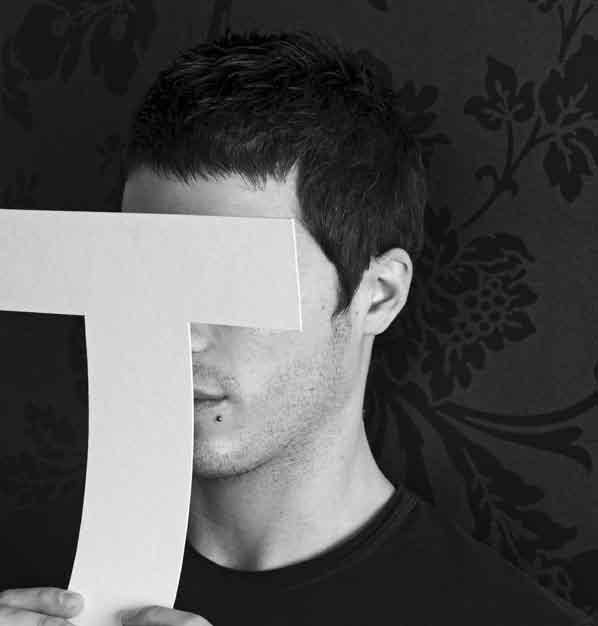
113
BERTRAnd MAndICo:
PoRTRAIT CRAChé / RITRATTo SPuTATo
BeRtRanD manDiCO: PORtRait CRaCHÉ / sPittinG imaGe
114 Intervista a Bertrand Mandico (Alberto Pezzotta) an interview with Bertrand mandico (alberto Pezzotta)
116 I film the Films
124 CInEMA GRECo. FILM dAL MARGInE
GReeK Cinema . FiLms FROm tHe eDGe
127 Introduzione (nicoletta Romeo) introduction (nicoletta Romeo)
136 I film the Films
146 1909-2009. dA TRIESTE A duBLIno:
JAMES JoyCE E IL CInEMA VoLTA 1909-2009. FROm tRieste tO DUBLin: James JOYCe anD tHe vOLta Cinema
149 Introduzione (John McCourt) introduction (John mcCourt)
155 Introduzione (Eric Schneider) introduction (eric schneider)
159 Joyce e il cinema Volta (Luke McKernan) Joyce and the volta Cinematograph (Luke mcKernan)
168 I film (Elisabetta d’Erme) the Films (elisabetta d’erme)
178 Lo SChERMo TRIESTIno 3: GIACoMo GEnTILoMo un PRoTAGonISTA nEL CInEMA dI GEnERE
Cinema PeOPLe OF tRieste 3: GiaCOmO GentiLOmO a PROtaGOnist in GenRe Cinema
181 Introduzione (Luciano de Giusti) introduction (Luciano De Giusti)
185 I film the Films
192 MuRI dEL Suono
Sound(E)SCAPES oF PoSSIBILITIES WaLLs OF sOUnD sOUnD(e)sCaPes OF POssiBiLities
195 Introduzione (Giovanna Tinunin)
introduction (Giovanna tinunin)
200 I film the Films
210 zonE dI CInEMA
Cinema ZOnes
212 Introduzione (Alpe Adria Cinema) introduction (alpe adria Cinema)
215 I film the Films
225 Evento Speciale special event
227 LA SIGLA dEL FESTIVAL
tHe FestivaL tRaiLeR
228 EVEnTI CoLLATERALI
COLL ateRaL events
230 EASTWEEK - nuovi talenti, grandi maestri eastWeeK - new talents, great masters
235 TRACCE dI MuRo: per una memoria visiva e sonora del Muro di Berlino a vent’anni dalla sua caduta tRaCinG tHe WaLL: twenty Years after the Fall of the Berlin Wall. memories evoked through image and sound
238 Sonata a Kreuzberg (Massimo zamboni) Kreuzberg sonata (massimo Zamboni)
239 CATodICA 4
249 dIzIonARIo dEI REGISTI
DiCtiOnaRY OF DiReCtORs
290 REPERToRIo dEI PRoduTToRI E dISTRIBuToRI ESISTEnTI inDex OF PResent PRODUCeRs anD DistRiBUtORs
294 IndICE dEI FILM inDex OF FiLms
296 IndICE dEI REGISTI inDex OF DiReCtORs
nelle sezioni del catalogo è stato rispettato l’ordine alfabetico per titolo. Fanno eccezione le sezioni “associazioni imprevedibili. il cinema di Walerian Borowczyk”, “Cinema greco. Film dal margine”, “1909-2009. Da trieste a Dublino: James Joyce e il cinema volta” e “Lo schermo triestino 3: Giacomo Gentilomo” (che rispettano un ordine cronologico).
alphabetical order for the titles has been maintained in the various sections of the catalogue. the only exceptions are “Unexpected Connections. Walerian Borowczyk’s Cinema”, “Greek Cinema. Films From the edge”, “1909-2009. From trieste to Dublin: James Joyce and the volta Cinema” and “Cinema People of trieste 3: Giacomo Gentilomo” (which follow chronological order).
RoBERTo MoLInARo
assessore regionale all’istruzione, formazione e cultura
Regional councillor for education, training and culture
trieste Film Festival, la più ricca rassegna italiana sulle cinematografie dell’europa centro-orientale, festeggia il traguardo della 20ma edizione con un ricco programma di eventi curato, secondo tradizione, da alpe adria Cinema. in calendario concorsi, anteprime, retrospettive e varie sezioni tematiche, accompagnati da mostre, convegni, musica, incontri con autori e ospiti famosi. tra le novità 2009 la (ri)scoperta del cinema greco degli ultimi dieci anni e l’approfondimento, attraverso proiezioni e ricostruzioni d’ambiente, di due figure strettamente legate alla città di trieste: lo scrittore James Joyce ed il regista Giacomo Gentilomo, entrambi testimoni dei molti e diversi fermenti innovativi che hanno percorso il primo novecento. tra le novità del 2009 anche l’avvio del progetto “eastWeeK. nuovi talenti, grandi maestri” che si propone di realizzare una rete tra le scuole e le accademie di cinema dell’area Cei per un maggior coinvolgimento dei giovani sui temi della regia, della recitazione, della sceneggiatura, attraverso le testimonianze di importanti autori dell’area interessata, protagonisti di workshop e dibattiti. a dare risalto al ventennale anche la prosecuzione del viaggio nell’universo e nelle provocazioni del regista polacco Walerian Borowczyk, personalità eclettica e incline alle sfide. Un nutrito programma, dunque, i cui molti “pezzi forti” confermano l’attenzione di alpe adria Cinema - trieste Film Festival verso tutto ciò che accade nell’est dell’europa e del mediterraneo, cogliendone i fermenti e le sollecitazioni con occhi acuti e penetranti, a volte ironici e provocatori.
trieste Film Festival, the richest italian survey of Central and eastern european films, celebrates its 20th edition with a packed programme of events curated, as usual, by alpe adria Cinema. the programme includes competitions, premieres and retrospectives, together with various thematic sections, accompanied by exhibitions, congresses, music, meetings with authors and celebrities. among the new features for 2009 is the (re)discovery of Greek cinema of the past ten years and the investigation through screenings of films and the reconstruction of settings of two figures closely associated with trieste: James Joyce the writer, and Giacomo Gentilomo the director, both witnesses of the many and varied innovative movements typifying the early 20th century. another new feature for 2009 will be the launch of the “eastWeeK. new talents, great masters” project that aims to set up a network between schools and film academies in the Cei zone, for a closer involvement of the young in such areas as directing, acting, scriptwriting, through the experience of leading exponents in each sector, who will be holding workshops and debates. a high point of this 20th edition will be continuation of the voyage through the world and controversies of the Polish director, Walerian Borowczyk, an eclectic figure given to taking up challenges. it will be a full programme, therefore, with plenty of “high points” confirming the attention of alpe adria Film Festival towards all that takes place in eastern europe and the mediterranean, revealing the movements and new trends with a sharp eye that is at times ironic and provocative.
MARIA TERESA BASSA PoRoPAT
Presidente della Provincia di trieste President of the Province of trieste
si è consolidato, grazie al continuo e costante lavoro di molti, il binomio trieste/Cinema tramutando l’impegno particolare in una vera e propria vocazione collettiva che assicura alla nostra città quel respiro aperto al confronto internazionale che non disdegna, anzi favorisce, lo sviluppo economico del territorio. in un momento di difficoltà e di riduzione di risorse a disposizione per le attività culturali agire, come sta facendo alpe adria Cinema, in un’ottica di sistema e di sinergia tra enti, istituzioni e produzioni appare quanto mai una scelta opportuna specie se accompagnata dal rigore, in fase di selezione delle pellicole, che sempre ha contraddistinto l’azione del trieste Film Festival. Qualità, vasto panorama di collaborazioni, attenzione per il mondo dei giovani anche grazie al coinvolgimento delle scuole di Cinema, sono gli aspetti che fanno di questo festival un appuntamento di grande rilievo accostando sempre più alla cinematografia dei paesi dell’europa centro orientale e del bacino mediterraneo – quest’anno una sezione è dedicata al cinema greco degli ultimi dieci anni – un pubblico vieppiù eterogeneo che attraverso le diverse sezioni può conoscere storie, linguaggi, tradizioni, vicende umane diverse, aprendosi a un confronto che, nel solco della conoscenza, può aiutare la comprensione delle tante, diverse e spesso drammatiche storie dell’europa contemporanea. nelle diverse sezioni a concorso si alternano, in un confronto intergenerazionale, cineasti e interpreti già affermati e giovani esordienti esaltando le funzioni del Festival chiamato a promuovere l’arte cinematografica in tutti i suoi aspetti e ad assecondare stili e linguaggi differenti. in questo contesto la Provincia di trieste ha voluto sostenere, con un apposito premio, la sezione “Zone di cinema 2009” destinata a dare visibilità alla produzione locale e alle vicende di quest’area fino a poco tempo fa di confine e ora baricentrica nella nuova europa allargata. immagini, parole, trame per raccontare, con l’efficacia e la forza empatica del cinema, fatti anche molto complessi come i rapporti tra le due comunità autoctone del territorio, quella italiana e quella slovena, e le testimonianze, oggi sempre più frequenti e positive, di dialogo, rispetto, ascolto.
Ricordo, infine, che il festival, quasi cartina di tornasole della varia cultura di trieste, non esita a soffermarsi anche quest’anno, attraverso appositi progetti di ricerca, su alcune figure di intellettuali e cineasti. si
thanks to the continuous and constant work of many people, the linking of ‘trieste’ with ‘Cinema’ has become consolidated, transforming the particular commitment into a veritable collective vocation, assuring our city that openness to international contacts that does not discourage, and indeed fosters, the economic growth of the territory. in a moment of difficulty and of a reduction in resources available for cultural activities, operating to create a system and synergy between organisations, institutions – as does alpe adria Cinema – increasingly appears an opportune choice, especially if accompanied by adroitness in selecting the films, an element that has always marked the way the trieste Film Festival operates. Quality, a vast range of collaborations, attention for the world of the young thanks in part to the involvement of Film schools, are all aspects that make this festival a major event, revealing the film sectors of Central and eastern europe and of the mediterranean basin – this year, a section has been dedicated to Greek cinema of the past ten years – to a heterogeneous public that through the various sections can explore many stories, languages, traditions and human affairs, opening their eyes on worlds which, through awareness of them, can lead to an understanding of the many, different and often dramatic events of today’s europe. the various sections in competition present wellestablished film makers and actors and new talent, alternating in an intergenerational comparison, and underlining the Festival’s function of promoting cinema art in all its forms, and of supporting different styles and languages.
Within this context, the Province of trieste has, with a special prize, decided to support the “Cinema zones 2009” section, intended to provide visibility for local productions and events of this area, until recently an area of frontiers and now at the centre of a new, enlarged europe. images, words and narrative to describe in an effective manner and with the empathetic force of film even such complex matters as the relationships between the two local communities in the territory – italian and slovene – and the increasingly frequent and positive signs of dialogue, respect and openness.
i wish to recall, finally, that the festival – almost a litmus test of trieste’s varied culture – does not hesitate this year to examine,
tratta di Giacomo Gentilomo e di James Joyce le cui vicende umane ed artistiche si intrecciano sullo sfondo di trieste per riverberarsi in innumerevoli altri contesti mescolando generi, lingue e tradizioni diverse.
Un sentito grazie, dunque, ad annamaria Percavassi e a tutti i suoi collaboratori che, anche per questa edizione, hanno saputo raccogliere attorno al Festival importanti realtà pubbliche e private e grandi personalità facendo di trieste un palcoscenico unico nel panorama delle più importanti rassegne internazionali.
once again, a series of intellectuals and film makers through specific research projects. this year sees an examination of Giacomo Gentilomo and of James Joyce, whose human and artistic affairs took place against the backdrop of trieste, which itself had an echo in innumerable other contexts, mixing genres, languages and traditions. Heartfelt thanks, therefore, to annamaria Percavassi and all those working with her who have, once again this year, attracted leading public and private figures to the Festival, making of trieste an event that is unique amongst the most important international festivals.
MASSIMo GRECo assessore alla Cultura Comune di trieste Councillor for Culture municipality of trieste
È più interessante e coinvolgente collaborare a un’iniziativa non solo come mero erogatore di contributi, ma come soggetto istituzionale direttamente impegnato nella costruzione del progetto. È quanto avvenuto con alpe adria Cinema in occasione di questa ventesima edizione di “trieste Film Festival”: l’ “operazione Joyce”, in particolare, reca anche la firma del Comune nell’organizzazione della mostra che si terrà a Palazzo Costanzi, sala veruna dal 14 gennaio al 12 febbraio 2009. mostra che riguarderà da vicino la nostra città in un’originale e inedita dimensione “irlandese”. ma altri spunti di reciproco interesse non mancano: per esempio lo spazio riservato al cinema greco segue di pochi mesi le manifestazioni estive, allestite dall’amministrazione, dedicate a maria Callas e alla musica ellenica. Un occhio di attenzione, dunque, per una realtà, quella greca, verso la quale trieste, coerentemente a tre secoli di intensi rapporti economici e culturali, continua a guardare con grande interesse. Un interesse europeo e mediterraneo
it is more interesting and appealing collaborating with an initiative not as mere supplier of funds but as institutional subject directly involved in the construction of the project. and this is what has taken place with alpe adria cinema for this 20th edition of “trieste Film Festival”. in particular, the ‘Joyce operation’ bears the hallmark of the municipality in the organisation of the exhibition to be held in the sala veruna at Palazzo Costanzi from 14 January to 12 February 2009. this exhibition will concern our city closely and provide an original and new “irish” dimension. However, there are plenty of other aspects of mutual interest: for example, the space reserved for Greek cinema follows on just a few months after the summer events arranged by the municipality dedicated to maria Callas and Greek music. this marks an interest in Greece in which trieste, in accordance with three centuries of close economic and cultural ties, continues to show great interest. a european and mediterranean interest.
PRoGRAMMA MEdIA
MEdIA PRoGRAMME
L’Europa ama i festival europei Europe loves European Festivals
I festival, luogo privilegiato di incontri, scambi e scoperte, rappresentano il contesto più vibrante e accessibile in cui presentare l’ampia varietà di talenti, storie ed emozioni che compongono la cinematografia europea.
il Programma meDia dell’Unione europea ha lo scopo di promuovere il patrimonio audiovisivo europeo e di incoraggiare la circolazione dei film fra un paese e l’altro, sostenendo inoltre la competitività dell’industria audiovisiva. il Programma meDia riconosce, infatti, il ruolo culturale, educativo, sociale ed economico giocato dai festival, contribuendo nel 2007 al finanziamento di 82 di essi in tutta europa.
sono festival che si distinguono per la loro ricca e variegata programmazione europea, per le possibilità che offrono a professionisti e pubblico di incontrarsi ed entrare in relazione, per le attività che portano avanti a favore di giovani professionisti, per le iniziative formative che promuovono e l’importanza che attribuiscono al consolidamento del dialogo interculturale. nel corso del 2007, i festival sostenuti dal Programma meDia hanno presentato complessivamente più di 14.500 opere provenienti da tutta europa a un pubblico di appassionati di cinema composto da circa 2 milione e seicentomila persone.
MEdIA è lieto di sostenere la 20ma edizione di Trieste Film Festival ed estende i suoi migliori auguri a tutti i frequentatori abituali del festival perché siano spettatori di un evento divertente e stimolante.
A privileged place for meetings, exchanges and discovery, festivals provide a vibrant and accessible environment for the widest variety of talent, stories and emotions that constitute Europe’s cinematography.
the meDia Programme of the european Union aims to promote european audiovisual heritage, to encourage the transnational circulation of films and to foster audiovisual industry competitiveness. the meDia Programme acknowledges the cultural, educational, social and economic role of festivals by co-financing 82 of them across europe in 2007.
these festivals stand out with their rich and diverse european programming, networking and meeting opportunities for professionals and the public alike, their activities in support of young professionals, their educational initiatives and the importance they give to strengthening inter-cultural dialogue. in 2007, the festivals supported by the meDia Programme have screened more than 14,500 european works to more than 2.6 million cinema-lovers.
MEdIA is pleased to support the 20th edition of the Trieste Film Festival and we extend our best wishes to all of the festival goers for an enjoyable and stimulating event.
AFIC
assOCiaZiOne FestivaL itaLiani Di Cinema tHe assOCiatiOn OF itaLian FiLm FestivaLs
nel complesso del sistema audiovisivo italiano, i festival rappresentano un soggetto fondamentale per la promozione, la conoscenza e la diffusione della cultura cinematografica e audiovisiva, con un’attenzione particolare alle opere normalmente poco rappresentate nei circuiti commerciali come ad esempio il documentario, il film di ricerca, il cortometraggio. e devono diventare un sistema coordinato e riconosciuto dalle istituzioni pubbliche, dagli spettatori e dagli sponsor.
Per questo motivo e per un concreto spirito di servizio è nata nel novembre 2004 l’associazione Festival italiani di Cinema (aFiC). Gli associati fanno riferimento ai principi di mutualità e solidarietà che già hanno ispirato in europa l’attività della “Coordination européenne des Festivals”. inoltre, accettando il regolamento, si impegnano a seguire una serie di indicazioni deontologiche tese a salvaguardare e rafforzare il loro ruolo.
L’aFiC nell’intento di promuovere il sistema festival nel suo insieme, rappresenta già oggi più di 30 manifestazioni cinematografiche e audiovisive italiane ed è concepita come strumento di coordinamento e reciproca informazione. aderiscono all’aFiC le manifestazioni culturali nel campo dell’audiovisivo caratterizzate dalle finalità di ricerca, originalità, promozione dei talenti e delle opere cinematografiche nazionali ed internazionali. L’aFiC si impegna a tutelare e promuovere, presso tutte le sedi istituzionali, l’obiettivo primario dei festival associati.
With the framework of the italian audiovisual system, festival represent a fundamental means for the promotion, knowledge and diffusion of film and audiovisual culture, with particolar attention to works that normally receive little attention in commercial circuits, like documentaries, research films and shorts. they must also become a coordinated system that is recognized by public institutions, audience and sponsors.
For this reason, and in a concrete spirit of service, the italian Film Festivals association (aFiC) was created in november 2004. association members adhere to the principle of mutuality and solidarity that inspire the activities of the Coordination europÈenne des Festivals in europe. moreover, by accepting the regulations, they promise to follow a series of deontological indications whose purpose is to safeguard and strengthen their role. aFiCís aim is to promote the festival system as a whole, and already today it represents over thirty italian cinematographic and audiovisual manifestations.
aFiC members include cultural manifestations in the audiovisual field that are characterized by research, originality and the promotion of talents and cinematographic works, both at home and abroad. aFiC also strives to protect and promote at every institutional level the primary objective of the associated festivals.

associazione Festival italiani di Cinema (afic) via villafranca, 20 00185 Roma
italia
Direttore artistico trieste Film Festival
artistic Director trieste Film Festival
Curare ininterrottamente per venti anni la linea artistica di un festival cinematografico può sembrare cosa strana se si pensa agli attuali caroselli, che sempre elettrizzano i media, delle nomine prestigiose e a rotazione ai vertici dei grandi eventi, la cui scelta è dovuta in gran parte a un sottile gioco di delicati equilibri tra competenza effettiva del candidato, chiamate politiche e opportunismi culturali del momento. invece nella fascia, in realtà molto ampia, delle manifestazioni più modeste, in cui il peso economico è assolutamente subordinato alla passione e alla competenza che richiede la loro direzione, la cosa può succedere, come è successo a me, e penso sia stato determinante nella scelta del mio nome il fatto di aver io contribuito con molta energia proprio a far nascere questo festival, spinta da un reale bisogno mio di conoscenza e con l’impegno dichiarato di dar vita a un preciso, e forse faticoso, progetto di ricerca culturale a lungo termine su obiettivi chiari e specifici. non ho mai pensato di allestire una facile vetrina, scintillante di merce varia e all’ultima moda. volevo invece avvicinare l’est lontano, renderlo più accessibile, familiarizzare di più con il suo cinema in fermento che mandava lampi di genio da zone d’ombra e di misteri.
Le prime politiche comunitarie europee mi hanno aiutato allora a trovare sul progetto consensi internazionali (il Parlamento europeo, la Comunità di lavoro alpe adria, le associazioni dei Cineasti e i ministeri di alcuni paesi dell’europa Centro Orientale) e locali (per prima la Provincia di trieste, poi la Regione Friuli venezia Giulia, infine il Comune di trieste).
e così il viaggio esplorativo di cui sentivo l’urgenza, è partito con la delega della direzione artistica conferitami dal primo Comitato scientifico internazionale della nuova manifestazione, con la collaborazione immediata delle istituzioni e dei cineasti sloveni, croati, ungheresi, austriaci e bavaresi e con la certezza comune di tesori da scoprire cammin facendo, di maestri da cercare, di lezioni da ascoltare, di incontri e scambi da promuovere. Ho potuto contare subito sull’aiuto di un equipaggio piccolo ma giusto, decisamente motivato a partire con me per un’avventura a forte rischio e allora controcorrente e devo riconoscere che senza l’entusiasmo e il lavoro di quei primi coraggiosi compagni di viaggio non ci sarebbe stato un futuro a quella piccola
Uninterruptedly curating the artistic line of a film festival for 20 years may seem strange if we consider today’s sessions of musical chairs, which so excite the media, with prestigious nominations for the top positions of major events, the selection of whom results largely from a subtle play of delicate balances between the actual competence of the candidate, political calls and the cultural opportunism of the moment. Yet in the broad reality of more modest events, it can happen that the financial clout is completely subordinate to the passion and competence required by their directors, as in my case. i believe that the factor that made my name emerge was the fact that i had contributed a great deal of energy to bring this festival to life, propelled by my own need for knowledge and the declared commitment to breathe life into a precise and perhaps tiring long-term cultural research project into clear, specific objectives. i have never thought of setting up an ‘easy’ shop window, sparkling with various goods of the latest fashion. instead, i wanted to make the distant east appear somewhat closer, to render it accessible and familiarise myself with its fruitful cinema, which shot the occasional brilliant bolt from areas of shadow and mystery.
the first european Community policies then helped me bring international consensus to the project (the european Parliament, the alpe adria Community, the film-makers’ associations, and the ministries of various Central and eastern european countries and local territories (first the Province of trieste, then the Friuli venezia Giulia Region and lastly the trieste City Council).
and thus the voyage of exploration which i felt an urgent need to undertake began with the position of artistic director, conferred upon me by the first international scientific committee of the new event, with the immediate collaboration of slovene, Croatian, Hungarian, austrian and Bavarian institutions and film makers, and with the shared certainty of treasures to be found, masters to be sought, lessons to be learned, meetings and exchanges to be promoted as we advanced. i was immediately able to count on the help of a small but effective and highly motivated team, which set out with me on a high-risk adventure that at the time ran counter to the trend, and i have to say that without the enthusiasm and work of those initial courageous companions, there would have been no future for that small (five films) and humble trial
(cinque film) e umile (un giorno per uno scambio di proposte e di idee) edizione-prova di “alpe adria: aree cinematografiche a confronto” nel dicembre 1987 (diventata subito, l’anno dopo, “incontri di alpe adria Cinema”, poi semplicemente “alpe adria Cinema”). Da allora abbiamo lavorato insieme viaggiando sempre più a est, sempre più a nord e sempre più a sud col solo bagaglio di quel progetto, così azzardato per i tempi!, ma da consolidare con pazienza. e l’abbiamo pilotato negli anni, modificando ancora il nome in parallelo all’espandersi delle ricerche (“alpe adria Cinema: incontri con il cinema dell’europa centro – orientale”) e infine al radicarsi definitivo della manifestazione alla città e al moltiplicarsi delle iniziative nel corso dell’anno (“trieste Film Festival, un progetto di alpe adria Cinema”), sempre sfidando i tanti e difficili venti, che hanno agitato e mutato l’europa al passaggio del millennio: venti dall’est al tramonto, venti della storia in cammino, delle guerre feroci, delle mode improvvise, dei tormenti balcanici, dei muri da abbattere e di quelli nuovi da erigere, venti delle transizioni, dei saliscendi politici, delle trasformazioni sociali e culturali, venti dei nuovi transiti umani. a distanza e a dispetto di questi densissimi vent’anni mi commuove trovarmi ancora qui con quell’equipaggio ormai rodato e temprato, ma non logorato dalle difficoltà del nostro lavoro, certamente un po’ cambiato nel tempo (qualcuno se ne è andato, qualcuno si è avvicinato più tardi ed è ancora con noi, qualcuno è ritornato dopo anni d’assenza, qualcuno ha preso il volo per altri incarichi importanti), certamente cresciuto, e non solo di numero, sempre più sicuro e autonomo e pronto a continuare il viaggio anche con piloti nuovi e più energici di me. e mi inorgoglisce aver visto maturare al mio fianco questo gruppo di lavoro che si è dimostrato capace di rendere concreto e meno faticoso il percorso della nostra specifica ricerca su un certo tipo di cinema, passato in questi anni dal buio delle cancellazioni ai trionfi delle ribalte internazionali, forse in parte grazie anche alle pazienti scoperte del nostro lavoro.
Un percorso sempre sostenuto dai governi regionali e locali, dai ministeri italiani e dai programmi europei e apprezzato dalle varie correnti politiche che in questi vent’anni si sono alternate alla guida del paese, della regione e della città.
edition (one day in which to exchange proposals and ideas) of “alpe adria: film areas facing each other” in December 1987 (the following year, it had become “alpe adria Cinema meetings”, and then simply “alpe adria Cinema”).
since then, we have worked together, wandering ever further east, further north and further south, bearing only the baggage of that project – so risky for the time! – and consolidating it with patience. and we have guided it over the years, again modifying the name in parallel with the expansion of the research (“alpe adria Cinema: meetings with Central and eastern european Cinema”) until definitively linking the event ot the city and to the multiplication of events over the course of the year (“trieste Film Festival, a project by alpe adria Cinema”). always, we have had to face difficult and contrary winds that have agitated and changed europe as the world entered a new millennium: winds from the east, winds of history on the march, of ferocious wars, of sudden fashions, of Balkan torments, of walls to be knocked down and new ones to be erected, winds of transitions, of political ups and downs, of social and cultural transformations, of new human events. after and despite they hectic 20 years, i am still moved to find myself with that team, now tried and tested but not worn down by the difficulties of our work; certainly somewhat changed over time (some people have left, some came later and are still here, some returned after a few years’ absence, some left for other and important posts) and certainly more mature and numerous. it is increasingly confident and autonomous and ready to continue the voyage even with new and more energetic pilots than myself. i am proud to have seen this group mature by my side in our work, one which has shown itself able to render our specific research into a certain type of cinema more concrete and less tiring; a type of cinema that in recent years has emerged from the darkness of cancelled screenings to the triumphs of international recognition, perhaps in part thanks also to the patient discoveries of our own work.
Our work has always been supported by the regional and local authorities, by the italian ministries and by european programmes, and appreciated by the various political colours that have alternated over the past 20 years at the helm of the country, region and city.
nell’epoca attuale che privilegia l’effimero e l’immediato non è cosa da poco il lungo esempio di continuità e coerenza dato dalla nostra linea progettuale, che ha saputo attraversare, raccontandoli, i capovolgimenti storici, che ha anticipato mode cinematografiche future, e previsto affermazioni artistiche di grande portata. sono convinta che sia stata una scelta giusta non aver cambiato rotta durante il cammino e ringrazio con grande affetto chi mi ha seguito e accompagnato con convinzione aiutandomi a costruire l’edificio del festival e dei tanti progetti collaterali. e sono grata e affezionata anche a chi ha lavorato al mio fianco sbuffando un po’ su certe mie ostinazioni che forse hanno gravato sul carico di lavoro e sui problemi di bilancio:
- il cinema visto sempre come parte inscindibile di un contesto culturale più allargato e di cui tener conto;
- la continuità di progettazione sul rapporto fondamentale del cinema con la letteratura (approdata quest’anno a Joyce, dopo aver riflettuto su schulz, Hrabal, schnitzler, svevo);
- la complementarità al cinema delle arti figurative e quindi la necessità di un corredo espositivo (quest’anno i dipinti di Giacomo Gentilomo e le fotografie giovanili di Kieślowski), così come quella della musica (quest’anno addirittura una rassegna tematica, “muri del suono”) e quindi l’opportunità funzionale dei concerti (tra gli altri la gioia di una serata con massimo Zamboni e il piacere della sua musica per la sigla di questa edizione);
- l’apertura,senza gelosie, pregiudizi o vacui problemi di protagonismo, a tutte le possibili collaborazioni: locali (con La Cappella Underground, dal cui grembo il nostro Festival è nato, con Catodica e il Gruppo 78, con il Goethe institut, con maremetraggio, con anno Uno, con il teatro miela e con il Cinema ariston), nazionali (con il Laboratorio immagine Donna di Firenze e l’Unione italiana di Fiume, con le varie Cineteche del nostro paese), internazionali (con le scuole di cinema dell’area balcanica per il progetto eastweek della Cei, col Greek Film Centre, lrish Film institut, il British Film institut e via elencando), istituzionali (con l’Università di trieste per il progetto quinquennale “Lo schermo triestino” dedicato quest’anno a Giacomo Gentilomo, con l’Università di Roma, la Joyce school di trieste, l’area Cultura del Comune di trieste e l’archivio di stato per il progetto su Joyce e il cinema, eccetera);
in our current age, which favours the ephemeral and immediate, the long example of continuity and coherence given by our research is something to be proud of: it has lived through and described historic changes, anticipated future cinematographic fashions, and foreseen artistic developments of major importance. i am convinced that we have been right not to have changed route during our journey and i wish to give my heartfelt thanks to those who have followed and accompanied me with conviction, helping me to build the festival and the many collateral projects. and i am also grateful to those who have worked by my side, grumbling a little about my obstinacy that perhaps added to the workload and the financial stresses:
- cinema seen always as an inseparable part of a broader cultural context to take into account;
- the continuity of the fundamental relationship between cinema and literature (which this year examines Joyce, having in the past reflected on schulz, Hrabal, schnitzler and svevo);
- the complementary nature of cinema and of the figurative arts and hence the need for a space for exhibitions (this year displaying the paintings of Giacomo Gentilomo and the youthful photographs of Kieślowski), and also of cinema and music (which this year sees a thematic series, “Walls of sound”), and hence the functional opportunity for providing concerts (including the joy of an evening with massimo Zamboni and the pleasure of having his music as the theme for this edition);
- the openness, without any jealousy, prejudice or vacuous problems of ‘precedence’, to all possible collaborations: local (with La Cappella Underground, whence was born our Festival, with Catodica and Gruppo 78, with the Goethe institut, maremetraggio, anno Uno, the teatro miela and the Cinema ariston), national (with the Laboratorio immagine Donna of Florence and the Unione italiana di Fiume, with the various film archives of our country), international (with the film schools in the Balkans for the eastweek project of the Cei, with the Greek Film Centre, lrish Film institute, the British Film institute and so on) and institutional (with the University of trieste for the five-year project, “Cinema People of trieste”, dedicated this year to Giacomo Gentilomo, with the University of Rome, the Joyce school of trieste, the cultural division of
- l’importanza di dare spazio e attenzione alle attività e alle produzioni audio-visive legate al nostro territorio (“Zone di cinema” e “Lo schermo triestino”);
- la memoria sempre vigile sugli snodi della storia, così determinanti per la comprensione del cinema europeo di cui ci occupiamo (quest’anno il muro di Berlino, in passato il ’56 ungherese, il ’68 di Praga, o la guerra balcanica raccontata in diretta dai bombardamenti di Zagabria e dalle granate di sarajevo negli anni della rassegna “spazio aperto a sarajevo” e del “Premio sarajevo”);
- l’attenzione ai legami politico-economici, soprattutto attuali, della nostra regione, o della nostra città, col Centro e l’est d’europa, o con l’area mediterranea (quest’anno il cinema greco contemporaneo, ma in passato il cinema turco tedesco, o il cinema ebraico trapiantato dall’est europa in israele);
- l’accoglienza amichevole degli ospiti, scevra da troppo etichettate cerimonie, che ha creato un legame di sincera reciproca stima tra il festival, la città e molti autori che tornano spesso con piacere, come cari amici ad un appuntamento di famiglia. sono ostinazioni, queste mie, che spero abbiano contribuito anche a delineare la fisionomia particolare del nostro festival e degli altri progetti che alpe adria Cinema riesce e realizzare nel corso dell’anno, molte volte dando continuità a iniziative presentate in parte o anche solo annunciate a gennaio durante il trieste Film Festival, come è il caso della rassegna dedicata al lato meno noto (il cinema d’animazione) del talento provocatorio di Walerjan Borowczik, che si conclude quest’anno con la pubblicazione di un ricco volume sull’autore franco-polacco dopo lo stuzzicante prologo della scorsa edizione. sono stati avviati, insomma, in questi anni tanti filoni di ricerca, che dovrebbero continuare a dare frutti importanti anche al di là o al di fuori del festival.
Ho infatti la sensazione, forse un po’ presuntuosa, di aver saputo captare in questo lungo periodo di responsabilità artistica come direttore una molteplicità di stimoli alla riflessione provenienti da direzioni diverse, le più svariate, quasi ventate di vitale energia orientate tutte, stranamente, a convergere su questo nostro approdo, aperto alle accoglienze come la nostra Piazza unica al mondo, per farlo diventare
the trieste City Council, and the state archives for the project on Joyce and cinema, etc.);
- the importance of making space and focusing on the activities and audio-visual productions associated with out territory (“Cinema Zones”, “Cinema People of trieste”);
- the ever-vigilant memory as regards the permutations of history, so fundamental for the comprehension of european cinema (this year, we look at the Berlin Wall; in the past, Hungary in 1956, Prague in 1968, and the Balkan war described live from the bombing of Zagreb and grenade shelling of sarajevo over the years of the “Open space at sarajevo” and of the “sarajevo Prize”);
- a focus on the topical political and economic links of our region, or of our city, with Central and eastern europe or with the mediterranean area (this year, we examine contemporary Greek cinema, whilst in the past we focused on turko-German cinema, or Jewish cinema transplanted from eastern europe to israel);
- the friendly welcoming of guests, without an overly pompous ceremony, which has created a bond of sincere reciprocal esteem between the festival, the city and many figures from the film world, who frequently return with pleasure as close friends to a family gathering. these are points about which i am stubborn, but which i hope have contributed to defining the way our festival and the other projects alpe adria Cinema manages to realise during the year actually are. these other events very often give a sense of continuity to initiatives presented in part or only announced in January during the trieste Film Festival, as in the case of the series dedicated to the less well-known side of the provocative talent of Walerjan Borowczik (his animated works), which concludes this year with the publication of an important volume on the Franco-Polish film maker and follows on from the fascinating prologue of the preceding edition. in short, many lines of research have been initiated over the years, and these should continue to give important results even beyond or outside the festival.
i have the perhaps presumptuous sensation of having been able to take hold of a number of sources of inspiration providing the starting point for reflection from various directions during this long period as artistic director; from all directions, as i say, as though propelled by a vital
straordinario baricentro (più di ogni altra manifestazione europea) di una grande area di cinema (dal Baltico al mediterraneo, dall’Ovest all’est ormai solo geografico) su cui negli anni si è concentrata con coerenza la nostra ricerca. a testimoniare la molteplicità e la ricchezza di questi stimoli sarà con noi ancora una volta, tra i tantissimi ospiti avuti dal festival in questi anni, una nutrita rosa di autori noti e particolarmente familiari al nostro pubblico, che presenzieranno in varie forme e in diversi ruoli in ciascuna delle sezioni del festival, per ricordare la lunga storia della nostra manifestazione e rinnovare il rapporto affettuoso con il pubblico. Una ideale “rosa dei venti” (come i nostri anni di lavoro) formata dai nomi dei cineasti che negli anni tFF ha proposto, scoperto, fatto conoscere, accolto con onore. Cui voglio aggiungere, anche nel ricordo, i nomi di tutti i membri del Comitato scientifico internazionale, che ha avuto un ruolo determinante, soprattutto all’inizio, nell’indicare i temi di maggior interesse comune su cui indirizzare scelte di programma e lavoro di ricerca. Poi i nomi di tutti i curatori scientifici delle varie sezioni che nel corso degli anni hanno dato al nostro Festival, con le loro proposte sempre giuste in un momento giusto, lo spessore di un grande evento culturale irradiato dal cinema. e i nomi, sempre nel cuore, di chi non è riuscito a vedere lo sviluppo del nostro lavoro, come Piero Percavassi, il primo Presidente di alpe adria Cinema, l’associazione nata con lui proprio per occuparsi di questo Festival, o come silvan Furlan, il primo grande amico d’oltre confine, entusiasta sostenitore della nostra iniziativa comune.
e per chiudere la rosa un ricordo tra i tanti, particolare, indelebile, emblematico.
Una sera di fine festival, in una birreria un po’ mitteleuropea del centro città Izet Sarajlić, grande poeta bosniaco cui abbiamo appena conferito il Premio sarajevo è seduto al pianoforte e accompagna, con la moglie al fianco, i canti slavi struggenti di due suoi carissimi amici nostri ospiti come lui: il grande Živojin Pavlović, regista serbo autore di un film del programma, e Predrag Matvejević, scrittore croato bosniaco rifugiato a Parigi e non ancora tanto famoso, invitato da noi per conferire il premio al poeta della sua terra. intorno a loro altri autori croati, bosniaci, serbi: si tengono stretti tutti in un abbraccio potente che sembra non
energy geared to converge on our festival, as open to all comers as is our unique ‘Unità square’, and making it into an extraordinary centre of gravity (more than any other european event) for a large area of the cinema sector (from the Baltic to the mediterranean, and from the east to the West in a region now divided only geographically) upon which our research has concentrated in focused manner over the years. Bearing witness to the multiplicity and richness of these stimuli, this year will once again see the presence, amongst the festival’s many guests over the years, of a significant number of figures who are well-known to our public. in various ways and with different roles, they will preside over the various sections of the festival, to recall the long history of our event and renew an affectionate relationship with the public.
an ideal “list”, formed of the names of the film makers proposed, discovered, propounded, welcomed with honour over the years by tFF. to whom i wish to add the names of all the members of the international scientific Committee who have played a fundamental role, especially at the outset, by indicating the themes of greatest common interest on which to focus the selection of programmes and research. Plus all the scientific curators of the various sections who, during these years, have helped make the Festival into a major event dedicated to cinema, with their correct recommendations made at the right time. and those, who live on in our hearts, who have been unable to see the development of our work, such as Piero Percavassi, the first President of alpe adria Cinema, the association he helped set up to manage this Festival, or silvan Furlan, the first great friend from beyond the frontier and an enthusiastic supporter of our shared initiative.
and to close this “virtual list”, one particular, indelible and emblematic memory from all those available.
One evening towards the end of the festival, in a brewery in the city centre, Izet Sarajlić – the great Bosnian poet to whom we have just awarded the sarajevo Prize – is seated at the piano and, with his wife by his side, is accompanying the moving slav songs of two dear friends of his, also our guests: the great Živojin Pavlović, a Serb director whose latest film was being screened at the Festival, and Predrag Matvejević, a Croat-Bosnian writer living in Paris and not yet very famous, whom we had invited to confer the prize on the poet from his own land. around
volersi sciogliere più, è tanto tempo che non si vedono, mormorano le sommesse parole d’amore del canto che tutti loro conoscono bene, ridono nelle lacrime, piangono nei sorrisi, e mi ringraziano di averli fatti alloggiare nello stesso albergo, amici come sempre mentre la barbarie della guerra etnica sta ancora straziando i loro paesi e li vuole nemici. Di questi nomi e di ricordi come questo è fatta la mia, la nostra rosa dei venti, una rosa semplice e sicura che ci ha aiutato a orientarci, e a non perdere noi stessi strada facendo. a nome di tutto lo staff di alpe adria Cinema e veramente dal cuore grazie a chi – persona, ente, istituzione, media o sponsor – ci ha finora seguito, aiutato e sostenuto nel nostro lavoro e grazie a chi sentirà di farlo ancora.
spero che la 20ma edizione del trieste Film Festival, con le sue sorprese e le sue proposte, sappia dare l’avvio a un 2009 felice per il cinema
them were other Croatian, Bosnian and serb artists; all in a strong embrace that seemed destined to remain firm for ever. it has been a long time since they have last met, and they murmur the subdued words of the love song they know well, laughing through their tears, crying through their laughs, and they thank me for having accommodated them in the same hotel, still friends while the barbarities of the ethnic war stalks their lands and seeks to make them enemies.
my, our “list” is made of these memories. it is a simple yet extraordinary “list”, and it has helped us find our way and maintain it as we moved forward.
in the name of all the staff of alpe adria Cinema, our truly heartfelt thanks go to those – individuals, organisations, institutions, media or sponsors – who have followed, helped and supported our work thus far, and our thanks to those who will continue to do so.
i hope that with its surprises and proposals, the 20th edition of the trieste Film Festival will constitute a happy start to 2009 for cinema.
by
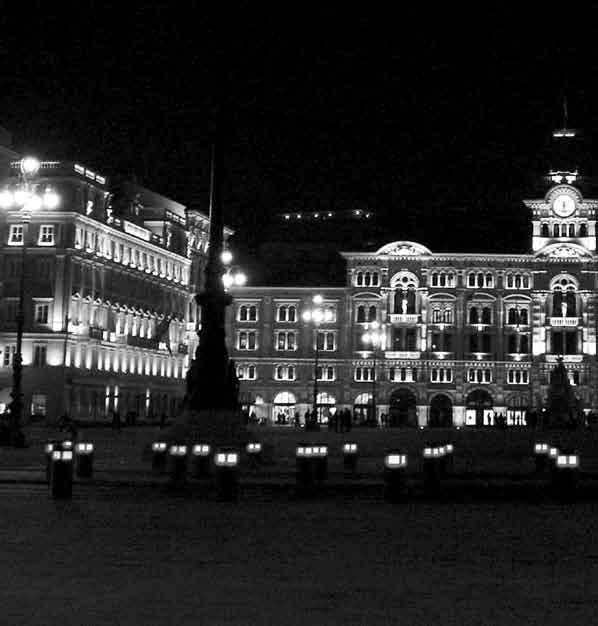
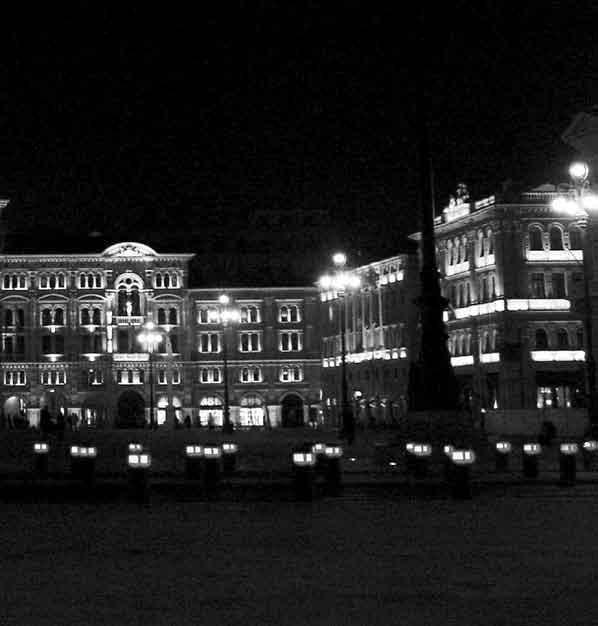
PRunE EnGLER

vive e lavora a Parigi. È laureata in Letteratura e Cinema. Ha lavorato sul set di diversi film ed è stata anche direttore casting. Dal 2001 è la direttrice artistica dell’international Film Festival di La Rochelle, che si svolge per 10 giorni fra giugno e luglio. Con il festival aveva iniziato una collaborazione già dal 1985. il programma del festival prevede circa 250 film provenienti da tutto il mondo e si occupa di tutto il cinema in generale: dai film muti alle grandi retrospettive di autori importanti, omaggi, scoperte e film ancora non distribuiti in sala.

È nata nel 1975 a skopje, ora macedonia. Diplomata allo european Film College (Danimarca), ha studiato anche arte e archeologia presso l’Università di san Kiril e metodi (skopje) e poi all’Università dell’arizona, a tucson. Ha iniziato la sua carriera di attrice, nel ruolo di Zamira, in Prima della pioggia il film di Milcho Mančevski, Leone d'Oro a venezia nel 1994. nel 1996 Labina ha un ruolo in Benvenuti a Sarajevo (1997) di michael Winterbottom, che la chiama anche nel successivo I Want you (1998). nel 2000, è stata vesna, in Samotáři del regista ceco David Ondříček. Oltre a recitare, Labina ha anche prodotto il cortometraggio macedone Veta di teona strugar mitevska, presentato in anteprima mondiale alla Berlinale nel 2001, dove si è aggiudicato una menzione speciale della giuria. Con la stessa società (la “sisters and Brother mitevski”), formata da teona, Labina e il fratello vuk, hanno prodotto il primo lungometraggio Kako ubi svetec (2004): diretto da teona, interpretato da Labina, il film è andato in concorso a Rotterdam. Come attrice ha lavorato fra gli altri in Warchild (2006) del regista tedesco Christian Wagner; in Jas sum od Titov Veles (2007) diretta ancora dalla sorella teona (il film è stato anche coprodotto da “sisters and Brother mitevski”) nel ruolo di afrodita, presentato alla Berlinale nel 2008. Labina mitevska è anche selezionatore per il “Cinedays international Film Festival” di skopje, dove cerca di promuovere il cinema dei registi giovani che hanno una sincera visione artistica.
Prune engler lives and works in Paris. Graduated from the Faculty of Literature and Cinema. Has worked on several films and was a casting director. since 2001, she is the director of the La Rochelle international Film Festival wich takes place during 10 days between june and july. she has worked within the Festival’s team since 1985. this festival shows around 250 films from all over the world and tells about the whole cinema history from silent films to great retrospectives of major filmmakers, tributes, discoveries and unreleased contemporary movies.
Labina mitevska was born in 1975 in skopje, now macedonia. Graduated from the european Film College (Denmark), she studied also art and archaeology at the University of st. Kiril and metodi (skopje) and then in tucson at the University of arizona. she started her acting career in Milcho Mančevski’s film Before the Rain (1994, Golden Lion at the venice Film Festival) in the role of Zamira. in 1996, Labina played in Welcome to Sarajevo (1997), directed by michael Winterbottom, who next cast her in I Want you (1998). in 2000, she played, as vesna, in the Czech film Samotáři by David Ondříček. Besides acting, Labina was engaged as a producer of the successful macedonian short film Veta by teona strugar mitevska, which had the world premiere at the Berlin Film Festival in 2001 and was awarded the special mention of the Jury. Under the auspices of the same company (sisters and Brother mitevski), teona and Labina and their brother vuk, did their first feature film Kako ubi svetec (How i killed a saint, 2004), which was in competition at the international Film Festival in Rotterdam. among others roles she played: in 2006 she acted in Warchild by the German director Christian Wagner, in 2007 she had the role of afrodita in Jas sum od Titov Veles (i am from titov veles) directed by her sister teona (and co-produced by sisters and Brother mitevski company) which had a premiere at the Berlin Film Festival in 2008. Labina mitevska is also a selector for the Cinedays international Film Festival in skopje, where she promotes young and new directors with uncompromising artistic vision.
AndRáS MuhI

Produttore, è nato a Budapest nel 1956. Ha fondato la società di produzione inforg stúdió, assieme a Klára muhi e László Hartai, e la dirige dal 1999, anno in cui ha prodotto i primi cortometraggi (zárás di Bálint Kenyeres e Aranymadár di istván szaladiák). nel 2002 ha ricevuto il premio di miglior produttore di cortometraggi alla settimana del Cinema Ungherese, dove l’anno successivo viene nominato miglior produttore per Rengeteg, opera prima di Benedek Fliegauf. Lo stesso riconoscimento gli viene dato nel 2005. il 2005 è stato l’anno in cui viene insignito anche del Premio Béla Balázs, il più alto riconoscimento per il cinema ungherese. È membro della european Film academy. Fra i titoli prodotti: dealer (2004), Tejút (2007; Pardo d’Oro a Locarno) entrambi diretti da Benedek Fliegauf; il corto Before dawn (2005) di Bálint Kenyeres, in concorso a Cannes e premiato alla european Film academy (Prix UiP). Fra le sue coproduzioni: Bab’Aziz (2005) di nacer Khemir, A fény ösvényei (2005) di attila mispál e Svetat e goljam i spasenie debneotvsjakade (2008) di stephan Komandarev.
Producer, born in Budapest in 1956. One of the founders of the production company inforg stúdió, alongside Klára muhi and László Hartai, since 1999 when he started producing the first shortfilms (zárás by Bálint Kenyeres, Aranymadár by istván szaladiák). in 2002 he received the Best short Film Producer award at the 33th Hungarian Film Week. He also won a Best Film Producer award at the 34th Hungarian Film Week in 2003 (for Rengeteg the first feature of Benedek Fliegauf) and at the 36th Hungarian Film Week in 2005. in 2005 was also awarded Béla Balázs Prize, the most dignified prize of Hungarian film artists. member of european Film academy. among the films he produced: dealer (2004), Tejút (milky Way, 2007; Golden Leopard Prize at Locarno international Film Festival) both directed by Benedek Fliegauf; the short Before dawn (2005) by Bálint Kenyeres, which was in competition at Cannes Film Festival and was awarded at the european Film academy (Prix UiP). among his co-production: Bab’Aziz (2005) by nacer Khemir, A fény ösvényei (2005) by attila mispál and Svetat e goljam i spasenie debneotvsjakade (2008) by stephan Komandarev.
BERnd BudER

È nato nel 1964 a Berlino (Ovest), ha studiato scienze Politiche alla “Freie Universität Berlin”. Dal 1996 al 2005 è stato direttore della programmazione del festival berlinese “Berliner Filmkunsthaus Babylon”. È consulente in diversi festival di cinema, fra cui il Cottbus Film Festival e il goeast Filmfestival di Wiesbaden per cui ha contribuito alla nascita del portale “seedox”, sul cinema documentario dell’europa sud Orientale. Dal 2005 è consulente della sezione “international Forum of new Cinema” del festival di Berlino. È anche lecturer e giornalista cinematografico (per le testate, «Film-Dienst», «Der Freitag», «Berliner morgenpost», «Frankfurter Rundschau»). Gli argomenti trattati principalmente, sia nelle conferenze che negli articoli di critica cinematografica: il cinema dell’europa sud Orientale, il cinema turco e quello tedesco.

nato a tirana nel 1950, si è diplomato presso l’accademia di arti drammatiche di tirana (nel 1972) e l’istituto di Cinema e teatro di Bucarest (nel 1975). Ha iniziato come documentarista nel 1975, ma anche nei successivi lungometraggi ha parlato di eventi reali avvenuti nel suo paese, scelta pagata spesso con la censura (il suo Pas vdekjes, del 1980, è rimasto bloccato per dieci anni). il suo Kolonel Bunker (1996), presentato anche al trieste Film Festival, è stato candidato agli Oscar nella categoria miglior film in lingua straniera. Çashku fa parte della european Film academy ed è fra i promotori della prima edizione dello Human Rights international Film Festival, svoltosi nel 2006 in albania. Di Çashku il trieste Film Festival ha presentato anche il suo lungometraggio Magic Eye (2005).
Bernd Buder, born 1964 in Berlin (West), studied Political sciences at the “Freie Universität Berlin”. 1996 - 2005 programme director of the Berlin art film cinema “Berliner Filmkunsthaus Babylon”. Consulting several film festivals, among them the Film Festival Cottbus and the Wiesbaden goeast Filmfestival for which he co-initiated the “seedox” website on south eastern european documentary film. since 2005, he is consultant of the “international Forum of new Cinema” section of the Berlin Film Festival. Works also as a lecturer and film journalist (FilmDienst, Der Freitag, Berliner Morgenpost, Frankfurter Rundschau). main subjects in lecturing and reviewing: south eastern european Cinema, turkish Cinema, and German cinema.
Kujtim Çashku was born in 1950 in tirana (albania). a graduate of the academy of Dramatic art in tirana (in 1972) and the Film and theatre school in Bucharest (in 1975), he started out as a documentary maker, but his feature films also deal mainly with real events in his native land. this caused him many censorship problems (for example, his Pas vdekjes, 1980, was banned for ten years). His feature Kolonel Bunker (1996), presented also at the trieste Film Festival, was nominated for an academy award in the Best Foreign Language Film category. Kujtim Çashku is a member of the european Film academy and a founder of the 1st Human Rights international Film Festival in albania in 2006. His feature Magic Eye (2005) was also screened at the trieste Film Festival.
AndREA WInK

È nata nel 1966 a Wiesbaden (Germania), ha dedicato al cinema gran parte della sua vita. Ha studiato storia dell’arte, archeologia e Cinema e nel 1990 ha co-fondato il festival di cinema di Wiesbaden “exground on screen”, oggi “exground filmfest”, il più importante dell’assia. andrea è uno dei direttori organizzativi ed è responsabile della programmazione. Oltre al lavoro svolto per “exground filmfest”, andrea Wink lavora a Francoforte per il German Filminstitute, cura il concorso dei film realizzati dagli studenti di cinema per il goeast-Festival di Wiesbaden, coordina il programma di formazione del festival “goeast-Young Professionals” e il goeast project-market per giovani filmmaker provenienti dalla Germania e dall’europa Centro Orientale.
andrea Wink, born 1966 in Wiesbaden, Germany, has dedicated most of her life to film. she studied art history, classic archaeology and film studies and, in 1990, co-founded the film festival Wiesbaden “exground on screen”, today “exground filmfest”, Hesse’s biggest filmfestival. she is one of the directors of organisation and head of programming. Besides her work on “exground filmfest” she also works for the German Filminstitute in Frankfurt, curating the student competition for the goeast-Festival and coordinating the festival’s training programme “goeast-Young Professionals” as well as a the goeast project-market for young filmmakers from Germany, Central and eastern europe.
hoVoRKA

È nato nel 1980 a Jihlava, Repubblica Ceca. È direttore del Festival internazionale del documentario di Jihlava. si è diplomato in cinema documentario alla FamU di Praga. La sua filmografia comprende 5 cortometraggi e alcuni mediometraggi. Fra il 1996 e il 1997 ha organizzato e condotto incontri con vari rappresentanti del panorama culturale ceco. nel 1997 ha co-fondato il Festival internazionale del documentario di Jihlava, il più grande festival di questo genere nell’europa Centrale, assieme al mercato (east silver market) per i documentari che provengono dall’europa dell’est e al portale web Doc-air.com. È membro del comitato di consulenza della rivista specializzata in cinema documentario «Do» e del mensile «dok.revue». Ha fatto parte di diverse giurie internazionali a vari festival, fra cui nyon (visions du Réel), monaco (Doku.fest), Cracovia.

Regista, è nato nel 1966 ad ancona. si è laureato in storia e Critica del Cinema presso l’Università di torino. nel 1991 ha iniziato a collaborare con l’archivio nazionale cinematografico della Resistenza. Ha girato numerosi cortometraggi di fiction e documentari, tra cui La ferita (1991), che ha vinto il secondo premio spazio italia al Festival Cinema Giovani di torino e L’orecchio ferito del piccolo comandante (1994), menzione speciale al Festival di Locarno. nel 1998 ha collaborato alla sceneggiatura e lavorato come assistente alla regia per il film Così ridevano di Gianni amelio, Leone d’Oro alla mostra di venezia. nel 2000 ha esordito nel lungometraggio con I nostri anni, selezionato alla Quinzaine del Festival di Cannes e nel 2004 il suo secondo lungometraggio, nemmeno il destino, ha vinto il tiger award al Festival di Rotterdam. il suo ultimo lavoro, Rata neće biti! (la guerra non ci sarà), ha vinto invece il Premio speciale della Giuria nel concorso “italiana.doc” al torino Film Festival.
Was born in 1980 in Jihlava, Czech Republic. Director of Jihlava international Documentary Film Festival. He graduated documentary film studies at the Prague Film academy (FamU). His filmography includes 5 short and medium-length films. in 1996 and 1997 he organized and hosted meetings with various representatives of Czech cultural landscape. in 1997 he co-founded Jihlava international Documentary Film Festival, which is the biggest festival of its kind in Central europe, accompanying it with the east silver market for documentaries from eastern europe and on-line web portal Doc-air. com. He is a member of advisory board of revue of documentary films called Do and monthly magazine dok.revue. He was invited to several international juries at different festivals (e.g. visions du Réel nyon, Doku.fest munich or Cracow iFF).
Filmmaker, born in ancona (italy) in 1966. Graduated in History and Cinema Critics at turin University. in 1991 he began collaborating with anCR, the national Film archives of the Resistance. He has shot numerous fiction shorts and documentaries, including La ferita (1991), which won the second prize in the “spazio italia” section at the Festival Cinema Giovani in turin, and L’orecchio ferito del piccolo comandante (1994), which won a special mention at the Locarno international Film Festival. in 1998 he collaborated on the screenplay and worked as assistant director for the film Così ridevano directed by Gianni amelio, Golden Lion at the venice Film Festival. in 2000 he made his first feature film our years, which was selected for the Quinzaine at the Cannes Film Festival. in 2004, his second feature, nemmeno il destino, won the tiger award at the Rotterdam international Film Festival. Rata neće biti! (la guerra non ci sarà), his latest documentary, won the special Jury award at turin Film Festival (in the “italiana.doc” competition).
NeRiNa T. KocjaNčič

È nata a Koper, slovenia nel 1962. Cinema promoter e giornalista, si è laureata in Letteratura comparata e Filosofia alla Facoltà di arte di Lubiana. Ha lavorato nella sezione di cinema del Centro Culturale studentesco (ŠKUC) e nei programmi culturali di Radio student a Lubiana. Ha scritto recensioni di cinema per quotidiani e riviste slovene («teleks», «Delo», «Razgledi», «ekran») e per altre pubblicazioni. Occasionalmente continua a scrivere articoli. Dal 1997 al 1999 ha collaborato a “video dokument”, il primo progetto di ricerca sulla video arte in slovenia. nel 2001 ha scritto e diretto un documentario di 30 minuti per la televisione slovena, dal titolo Ljudje s planeta orient. Dal 1995 lavora con il Filmski sklad Republike slovenije (agenzia per il cinema sloveno), dove è responsabile della promozione e del marketing del cinema sloveno. Dal 2005 rappresenta il Filmski sklad nell’eFP (european Film Promotion).
Born in Koper, slovenia in 1962. Cinema promoter and journalist. Graduated with a degree in comparative Literature and Philosophy from the Faculty of arts in Ljubljana. she worked in the film section of student Cultural Center (ŠKUC) and the cultural program of Radio student. she has written film reviews for slovenian newspapers and magazines (Teleks, Delo, Razgledi, Ekran), and for different publications. she continues to write occasional articles. in the years 1997-1999 she collaborated at “video dokument”, the first research project on video art in slovenia. in 2001 she wrote and directed a 30 minutes long documentary film Ljudje s planeta orient for tv slovenia. since 1995 she has spent most of her time at Filmski sklad Republike slovenije (the slovenian Film Fund), where she is responsible for the promotion and marketing of slovene films. From 2005 she is representing the Filmski sklad in the eFP (european Film Promotion).
33 SzEny z ŻyCIA di Małgośka szumowska
dELTA di Kornél mundruczó
CzTERy noCE z AnnĄ di Jerzy skolimowski
dIoRThoSI di thanos anastopoulos
KARAMAzoVI di Petr Zelenka
MÄRz di Händl Klaus
PRoGnozA di sophia Zornitsa
LAS MEnInAS di Ihor Podolčak
SnIJEG
di Aida Begić
EVEnTI SPECIALI sPeCiaL events
FILTh And WISdoM
di madonna
LE VITE PoSSIBILI
di Corso salani
TuRnEJA
TuLPAn di sergej Dvorcevoj
di Goran Marković
WoLKE 9
di andreas Dresen
33
33
Fotografa dalla promettente carriera, Julia vive felice accanto alla sorella, ai genitori, due artisti famosi – il padre è un regista e la madre una scrittrice – e all’adorato marito, un compositore di musica contemporanea. tra i vari membri della famiglia regnano l’amore e il rispetto reciproco. Questa parentesi di tranquillità finisce quando la madre di Julia scopre di avere un cancro. La malattia, il cui decorso resta a lungo incerto, scuote profondamente l’equilibrio dei protagonisti e Julia, la cui carriera è in declino, vede crollare a una a una le persone che aveva accanto e che la proteggevano. Perdita dopo perdita, nel giro di un anno la donna vedrà così svanire tutto quello che aveva di più caro. Unico antidoto alla sofferenza e alla sfortuna? Ridere...
Premio speciale della giuria all’ultimo festival di Locarno.
“Ho iniziato a lavorare alla sceneggiatura in un momento molto particolare della mia vita... Ero incinta e stavo per compiere 33 anni. Nel giro di poco tempo avevo perso all’improvviso entrambi i genitori. Alla fine, sebbene nel film ci sia molto della mia esperienza personale, la storia che racconto è quella di un’altra persona, di un’altra famiglia. A rimanere intatto è il sentimento che mi ha accompagnato in quei sei mesi: la sensazione che tutto ciò non fosse vero. Sentivo la necessità di condividere questo senso di assurdità e questo bisogno di ridere anche quando poteva sembrare del tutto fuori luogo.” (M. Szumowska)
MaŁgośKA SzuMoWSKA
Germania - Polonia / Germany - Poland 2008, 35mm, col., 95’ v.o. polacca / Polish o.v.
AnTEPRIMA ITALIAnA ITALIAn PREMIERE
sceneggiatura / screenplay:
Małgośka Szumowska.
Fotografia / Photography: Michał englert. montaggio / editing: Jacek drosio. musica / music: Paweł Mykietyn. suono / sound: Michał Dominowski. scenografia / art Direction: Anna niemira.
Costumi / Wardrobe: Julia Jarża-Brataniec.
interpreti / Cast:
Julia Jentsch, Peter Gantzler, Maciej Stuhr, Małgorzata Hajewska, Andrzej hudziak, Iza Kuna. Produzione / Produced by: Pandora Filmproduktion.
Coproduzione / Co-produced by: STI Studio Filmowe, zdF/ARTE. Con il sostegno di / supported by: Filmstiftung nRW, MEdIA development, dFFF, Polish Film Institute.
Distribuzione internazionale / World sales: Trustnordisk.
Young Julia is happy and fulfilled, both personally and professionally: her career as a photographer is going from strength to strength, she is close to her sister, her successful artist parents – father is a filmmaker, mother a writer – and her loving husband who is a contemporary music composer. Love and mutual esteem bind this family together. However, this idyllic period comes to an end when Julia’s mother learns she has cancer. this disease, the outcome of which remains in doubt for a long time, has a profoundly disturbing effect on them all, and Julia, whose career begins to suffer, sees those around her, those who used to protect her, collapse one after another. in just one year, Julia loses everything that has made up her life. in the face of all this misfortune, she finds only one solution: laughing. special Prize of the Jury at the latest Locarno international Film Festival.
“I began working on the script at a very strange and new time in my life… I was pregnant and my 33rd birthday was just around the corner. In a very short time, unexpectedly, I had lost both my parents. The final version, although it has much in common with what I had experienced, is the story of a different person, a different family. What remained was the feeling that had accompanied me during those 6 months of my life: the notion that it wasn’t for real. I had to share this feeling of absurdity and a need for laughter, even in moments that seemed inappropriate.”
(M. Szumowska)
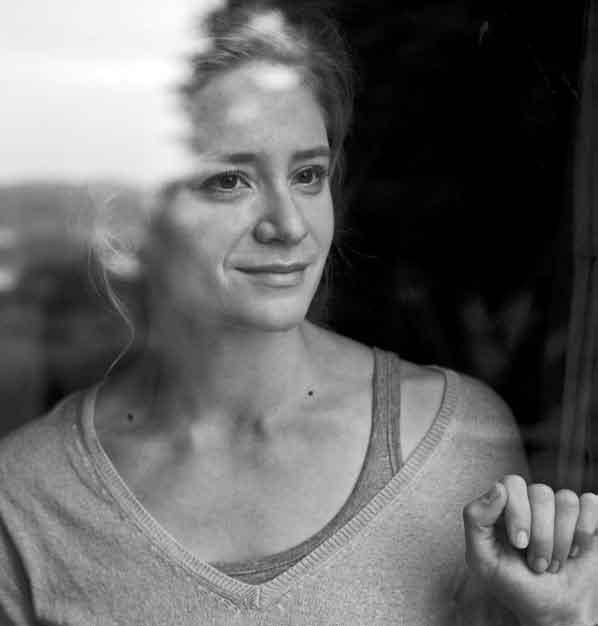
QuATTRo noTTI Con AnnA
FouR nIGhTS WITh AnnA
in una piccola cittadina della provincia polacca, il quarantenne Leon Okrasa lavora come fuochista nel crematorio dell’ospedale. in passato, è stato testimone – o forse protagonista? – di un brutale stupro ai danni di anna, che ora ha 30 anni e lavora come infermiera nello stesso ospedale. i due sono anche vicini di casa, lei in un dormitorio per i dipendenti e lui in una casetta diroccata a pochi metri dall’edificio. spesso, l’uomo spia la ragazza, sia di giorno quando la vede passare per strada che di notte, attraverso le finestre dell’appartamento di lei. Una notte si introduce nella stanza di anna e trascorre la notte seduto accanto al suo letto, guardandola dormire, immersa nel chiarore lunare. La cosa si ripete molte volte, e la sua presenza comincia piano piano a influire sulla vita della ragazza: le attacca un bottone perduto, le ripara un orologio, sostituisce il cibo andato a male nel frigorifero, e così via. Quando comincia a mettere del sonnifero nello zucchero, diventa chiaro come l’uomo stia perdendo sempre di più il controllo. anna comincia ad accorgersi che attorno a lei accadono cose strane, ma pensa che siano solo il frutto della sua immaginazione. Un giorno, Leon viene arrestato proprio mentre si sta introducendo nella casa della donna... Ritorno alla regia dopo 17 anni di assenza del grande regista polacco, Cztery noce z Anną ha aperto l’anno scorso la “Quinzaine des Réalisateurs” a Cannes
JERzy SKoLIMoWSKI
Francia - Polonia / France - Poland 2008, 35mm, col., 87’ v.o. polacca / Polish o.v.
AnTEPRIMA ITALIAnA ITALIAn PREMIERE
sceneggiatura / screenplay: Ewa Piaskowska, Jerzy Skolimowski Fotografia / Photography: Adam Sikora. montaggio / editing: Cezary Grzesiuk. musica / music: Michał Lorenc. suono / sound: Fréderic de Ravignan, Philippe Lauliac, Gérard Rousseau.
scenografia / art Director: Marek zawierucha. Costumi / Wardrobe: Joanna Kaczyńska.
interpreti / Cast:
Kinga Preis, Artur Steranko, Jerzy Fedorowicz, Barbara Kołodziejska, jakub Snochowski, Małgorzata Buczkowska, Redbad Klijnstra, Anna Lenartowicz. Produzione / Produced by: Skopia Film, Alfama Films Production. in associazione con / in association with: Wild Bunch.
Coproduzione / Co-produced by: Telewizja Polska - Agencja Filmowa. Con il sostegno di / supported by: Soficapital.
Distribuzione internazionale / World sales: Elle driver.
a small, provincial town on the outskirts of Poland. Leon Okrasa, 40, is a stoker at the hospital crematory. in the past, he witnessed – or perhaps committed – a brutal rape upon anna, now 30 and working as a nurse at the same hospital. they live near one another as well, she – in a hostel for workers next to the hospital, he – in a dilapidated cottage a few meters away. He often spies on her in the streets by day and peeps at her window by night. But he wants more. One night he sneaks into her room through the window and spends the night sitting at her bed, looking at her in the moonlight. it soon becomes an obsession. He breaks into her room more and more often. and, step by step, he begins to influence her life – sews in a missing button, mends her clock, replaces spoiled food in her fridge, etc. When he begins to mix powdered sleeping pills with her sugar, it is clear that Leon is about to loose control. anna begins to notice strange things happening around her, but she thinks it’s all in her head. One day, Leon is arrested when sneaking into anna’s through the window... the film marks a return to directing after 17 years of absence of the great Polish director, and opened last year the “Directors’ Fortnight” in Cannes.

Un taciturno giovane uomo fa ritorno al paesaggio selvaggio e isolato del delta del Danubio, un labirinto di canali, isolette e vegetazione rigogliosa, dove gli abitanti vivono completamente tagliati fuori dal resto del mondo e da cui lui manca da quando era bambino. Qui, gli viene presentata la sorella che non ha mai saputo di avere. La ragazza è fragile e timida, ma dimostra grande risolutezza quando decide di raggiungerlo nella sua capanna malandata sulla riva. insieme, fratello e sorella costruiscono una palafitta in mezzo all’acqua dove poter vivere, lontano da tutti. Un giorno, invitano gli abitanti del villaggio vicino a una festa, ma appare subito evidente che questi non accettano la loro relazione ‘innaturale’…
“Piuttosto che parlare di una deviazione sessuale, quello che mi interessava era arrivare a capire il genere di libertà che permette a una persona di trascendere la regola. Al cuore della storia non c’è l’incesto, bensì il coraggio che ci vuole per accettare un’attrazione naturale, anche se questa rompe con le convenzioni. La cosa veramente intollerabile è che esistano persone che credono di potersi arrogare il diritto di condannare chi esce dalla norma.”. (K. Mundruczó)
KoRnéL MundRuCzó
Ungheria - Germania / Hungary - Germany
2008, 35mm, col., 92’ v.o. ungherese / Hungarian o.v.
AnTEPRIMA ITALIAnA
ITALIAn PREMIERE
sceneggiatura / screenplay: Yvette Bíró, Kornél Mundruczó. Fotografia / Photography: Mátyás Erdély. montaggio / editing: Dávid jancsó.
musica / music: Félix Lajkó. suono / sound: Gábor Balázs, Tamás zányi.
scenografia / art Director: Márton ágh.
Costumi / Wardrobe: János Breckl.
interpreti / Cast:
Félix Lajkó, orsi Tóth, Lili Monori, Sándor Gáspár.
Produzione / Produced by: Proton Cinema, Essential Filmproduktion, Filmpartners.
Con il sostegno di / supported by: Motion Picture Public Foundation of hungary, national Cultural Fund, Medienboard Berlin-Brandenburg, Mitteldeutsche Medienförderung, zdF daf Kleine Fernsehspiel / ARTE, TV2, MEdIA Programme of the European Community. Distribuzione internazionale / World sales: Coproduction office.
a quiet young man returns to the wild, isolated landscape of the Delta. it is a labyrinth of waterways, small islands and over-grown vegetation, where the villagers are cut off from the outside world. the young man, who has been away since early childhood, is introduced to a sister he never knew he had. she is frail and timid, but resolute when she decides to join him in his run-down hut on the shore. together they build a house on stilts in the middle of the river, far away from everyone else. One day, they invite the villagers over to share a meal together, but it becomes apparent that the coarse locals do not accept their “unnatural” relationship.
“I tried to understand the kind of freedom that allows someone to transcend the norm, rather than talk about sexual deviance. It is not the incest that is at the heart of the story, but the courage it takes to accept what is a natural attraction, even if it breaks with conventions. What is intolerable is that there are people who believe they have the right to persecute those who do not fit the norm.” (K. Mundruczó)
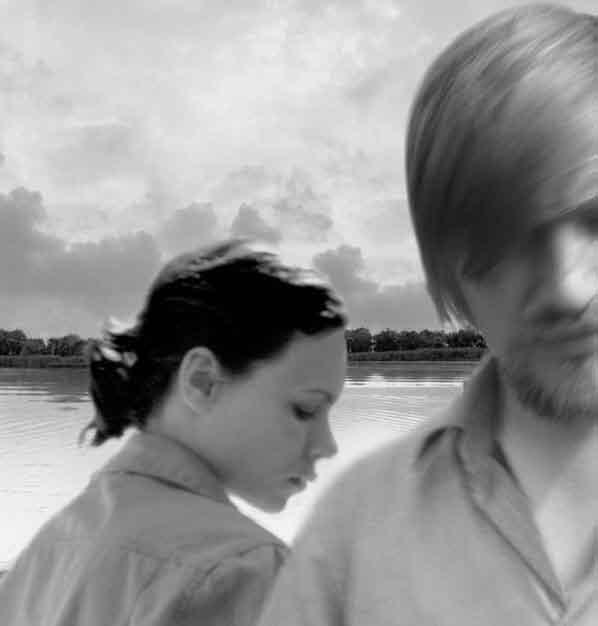
CoRREzIonE
CoRRECTIon
Un uomo esce di prigione. Come un moderno Ulisse, inizia un vagabondaggio in un’atene contemporanea, popolata da migranti, senzatetto e altra umanità che vive ai margini della società. sulla sua strada incontra una donna e una ragazzina. sono i membri di una famiglia sfasciata o semplicemente vittime e persecutori di una società violenta, dominata dal conflitto, che impedisce loro di vivere insieme?
“Sono nato e cresciuto in un quartiere del ceto medio del centro di Atene. Oggi, è diventata una zona dagli affitti bassi e con una qualità della vita ancora più bassa, dove persone di cultura e identità diverse cercano di costruire una sorta di convivenza. Ogni volta che ripercorro le strade della mia infanzia, fino alla piazza della chiesa e al ristorante souvlaki, rimango colpito da questa forte immagine di apparente convivenza fra classi e culture differenti, ma allo stesso tempo dall’atmosfera che vi si respira, fatta di tensioni nazionalistiche sotterranee. È un quartiere in trasformazione, che sta cercando una nuova identità. Ho voluto calare i personaggi del mio film in questa città, dove la violenza nascosta dei gruppi nazionali è in crescita e dove le cose essenziali rimangono celate come un segreto.” (T. Anastopoulos)
ThAnoS AnASToPouLoS
Grecia / Greece
2007, 35mm, col., 83’
v.o. greca - albanese / Greek - albanian o.v.
AnTEPRIMA ITALIAnA
ITALIAn PREMIERE
sceneggiatura / screenplay: Thanos Anastopoulos, Vasilis Raisis. Fotografia / Photography: Ilias Adamis. montaggio / editing: napoleon Stratogiannakis. suono / sound: Stefanos Efthimiou, Kenan Akkawi, Costas Varibopiotis. scenografia / art Director: Costumi / Wardrobe: Mayou Trikerioti. interpreti / Cast: yorgos Symeonidis, ornela Kapetani, Savina Alimani, Bujar Alimani, nikos
Georgakis, dimitris Liolios, yorgos nanouris, nicoletta Kyrana, Edda Ghemi, Armando daouti, Gherghi Bega.
Produzione / Produced by: Fantasia Audiovisual Ltd, Thanos Anastopoulos. Coproduzione / Co-produced by: Greek Film Centre, nova. Distribuzione internazionale / World sales: Fantasia Audiovisual Ltd.
a man gets out of prison. Like a modern Ulysses he will undertake a homeless journey into contemporary athens peopled by migrants, homeless, and other marginalized persons of the society. On his way he will meet a woman and a little girl. are the three of them members of a disrupted family or just persecutors and victims of a violent and conflict driven society that prevents them from living together?
“I was born and grew up in a middle-class neighbourhood in the centre of Athens. Today it’s an area with low cost rents and an even lower quality of life, where many people of different cultures and identities try to live together. Every time that I walk along the streets of my childhood, to the church square and the souvlaki restaurant with the tables outside where people gather, I’m struck by this rich image of apparent co-habitation of different cultures and classes, and at the same time of this atmosphere of hidden national tensions. It’s a neighbourhood under transformation seeking for a new identity. I wanted to place the characters of my film in this city, where hidden national violence grows and where anything essential remains hidden like a secret.” (T. Anastopoulos)

I FRATELLI KARAMAzoV
ThE KARAMAzoVS
sceneggiatura / screenplay: Petr zelenka, basata sul romanzo di F.m. Dostoevskij / based on the novel by F.m. Dostojevsky. adattamento di / Dramatization by: Evald Schorm.
Fotografia / Photography: Alexander Šurkala. montaggio / editing: Vladimír Barák. musica / music: Jan Kaczmarek. suono / sound: Michal holubec.
Polonia, un caldo giorno d’estate. Un gruppo di attori praghesi si trova in un’acciaieria in rovina per uno spettacolo teatrale che avrà luogo il giorno dopo. Fra i resti delle vecchie macchine e i rottami, inizia la prova generale. i pochi operai rimasti al lavoro non prestano loro molta attenzione, perlomeno all’inizio, afflitti come sono dalla tragedia che il giorno prima ha colpito l’addetto alla manutenzione: il figlio è caduto da una passerella, ferendosi gravemente. Lo spettacolo è un adattamento de I fratelli Karamazov di Dostoevskij ed è centrato sul processo per l’omicidio del vecchio Karamazov. Per tutta la durata delle prove, il “mondo reale” degli operai rimane ai bordi dello spettacolo, ma la tragedia appena occorsa tocca in loro alcune corde emotive che sono simili a quelle evocate dal testo teatrale e, progressivamente, i due piani si intrecciano in modo sempre più inestricabile… il film è stato girato nella stessa acciaieria di Cracovia dove andrzej Wajda girò nel 1976 L’uomo di marmo. menzione speciale della giuria all’ultimo festival di Karlovy vary.
“Cosa accade quando qualcuno uccide un’altra persona nel nome dei nostri ideali, quasi grazie alle nostre istruzioni? Ne siamo responsabili? Per dirla più chiaramente: una persona intelligente è responsabile del comportamento degli idioti che la circondano?” (P. Zelenka)
PETR zELEnKA
Repubblica Ceca - Polonia / Czech Republic - Poland
2008, 35mm, col., 98’
v.o. ceca - polacca - inglese / Czech - Polish - english o.v.
AnTEPRIMA ITALIAnA
ITALIAn PREMIERE
scenografia / art Direction: Barbara ostapowitz. Costumi / Wardrobe: Martin Chocholoušek. interpreti / Cast: Ivan Trojan, Igor Chmela, Martin Myšička, David Novotný, Radek Holub, Lenka Krobotová, Michaela Badinková, Lucie Žáčková, jan Kolařík, Marek Matějka, Pavel Šimčík, jerzy Michal Bozyk, Malgorzata Galkowska, Jurij Kolva, Klára Lidová, Roman Luknár, Andrzej Mastalerz, Adrianna Miara, Jerzy Rogalski, Matja Solce.
Produzione / Produced by: První veřejnoprávní s.r.o. Coproduzione / Co-produced by: Warszaw Pact Film Production, česká televize.
Distribuzione internazionale / World sales: Cinepol int.
On a hot summer day in Poland, a group of people walk through a run-down steel mill. they are actors, from a theater in Prague, and they’re here to rehearse for a performance to be held in the space the next day. there are a few workers still on the job at this mill, that pay the actors little attention at first, preoccupied with a personal tragedy: the day before, the son of a maintenance man fell from a catwalk and seriously injured his spine. amid remnants of old machinery and old junk, the rehearsal begins. it is an adaptation of Fyodor Dostoevsky’s
The Brothers Karamazov: specifically concerned with the trial for the murder of Old Karamazov. all the while they are rehearsing, the “real world” of the workers remains at the edges of the performance, the tragedy they’re experiencing striking similar chords as events within the play, until the two threads become inextricably knotted.
the film was shot in Krakow, in the same steel mill where also andrzej Wajda shot his movie Man of Marble in 1976. special mention of the Jury at the latest Karlovy vary international Film Festival.
“What happens when somebody kills another person in the name of our ideals, by means of our instructions? Are we responsible for it? Or to put it in simple words: is an intelligent person responsible for idiots’ behaviour?” (P. Zelenka)

MARzo MARCh
Una notte, in un piccolo paese del tirolo, Christian, Berni e elmar, compagni di università, prendono in prestito una macchina e si recano in un bosco. Fumano un’ultima sigaretta e poi collegano il tubo di scappamento all’abitacolo, si siedono in macchina e accendono il motore. sereni, con un leggero sorriso sulle labbra, inspirano profondamente e muoiono. alcuni mesi dopo la tragedia, le loro famiglie cercano di condurre una vita normale, ma il dolore, sempre presente, travolge tutti a ondate di varia intensità. Legati da un dramma ormai divenuto tabù, i famigliari non riescono a comunicare, a esprimere i propri sentimenti e ognuno gestisce a suo modo la terribile perdita. al di là del vuoto lasciato dai giovani, a tormentare l’esistenza delle famiglie è il fatto di non riuscire a trovare una spiegazione al loro gesto...
Premio speciale della Giuria al festival di sarajevo e Pardo per la migliore opera prima al Festival di Locarno.
“Una quindicina di anni fa ero ospite di amici nel Sud Tirolo proprio quando tre ragazzi si tolsero la vita dopo aver stretto un patto suicida. La notizia fu un vero shock e le persone non ne parlavano volentieri. Il gesto era apparentemente immotivato e i ragazzi non avevano lasciato alcun messaggio d’addio. Sono tornato diverse volte in quel paesino ... Volevo capire l’incomprensibile. Dall’esterno quel gesto sembrava un rifiuto dell’esistenza e gli altri continuavano a vivere in quel rifiuto. März è un film composto da scene di vita quotidiana, scene che continuano a far parte della vita anche dopo una simile tragedia ... Alla fine non abbiamo trovato nulla. Non esiste spiegazione per quello che è accaduto.” (H. Klaus)
hÄndL KLAuS
austria
2008, 35mm, col., 83’ v.o. tedesca / German o.v.
AnTEPRIMA ITALIAnA
ITALIAn PREMIERE
sceneggiatura / screenplay: händl Klaus. Fotografia / Photography: Gerald Kerkletz. montaggio / editing: Joana Scrinzi. suono / sound: hjalti Bager-Jonathansson, Atanas Tcholakov. scenografia / art Director: Julia Libiseller, Alexandra Bachlechner. interpreti / Cast: Isolde Ferlesch, Florian Eisner, Josef Kuderna, Julia Gschnitzer, Alfred Kleinheinz, Julia Strauhal, Ilse Kuen,
Theodor Schuler, david Schrottner, Benno Eberhard, Irmi Frajo-Apor, heidi Keplinger, Florian Mayr, Katharina zeisler, Marika Green, hubert Eichler, Paul Schweinester, Siggi haider, Josef holzknecht, Brigitte Jaufenthaler, Klaus Rohrmoser, Lukas Broll, Florian draxl, Stefan Mittermayr, Alexander oberhauser, Christoph Bloéb, Thomas hiessl, olivia Grigolli. Produzione / Produced by: Coop99, händl Klaus Filmproduktion. Distribuzione internazionale / World sales: Austrian Film Commission.
in a small tyrol village, Christian, Berni and elmar, friends at university, borrow a car and drive into the forest in the middle of the night. after smoking their last cigarette, they connect the exhaust to the interior of the car, get in and start the engine. serenely, smiling slightly, they take a deep breath, and die. a few months later, their families are trying to live a normal life. their mourning parents also continue to live their lives as before but an ever present grief afflicts them all, in waves of varying intensity. sharing the same experience, which has become a taboo subject, these individuals, however close to one another, cannot communicate and share their feelings, each dealing in a different way with this terrible loss. But more than the emptiness left by their beloved’s death, it is the incomprehension that poisons the families’ lives. special Prize of the Jury at sarajevo, Leopard for the Best First Feature at Locarno Film Festival.
“15 years ago I was visiting friends in South Tyrol when three young men killed themselves in a suicide pact. It came as such a blow: the people could hardly talk about it. And there was no apparent motive, there were no suicide notes. Afterwards I went back to the village a number of times ... I tried to understand what in the end is beyond understanding. From the outside it looks like a denial of this existence, and the others have to continue living with this denial. Those are scenes from everyday life. That's what life consists of, even after a tragedy like this ... In the end we have seen nothing that provides us with a key there is nothing that can give any explanation for what has happened.” (H. Klaus)
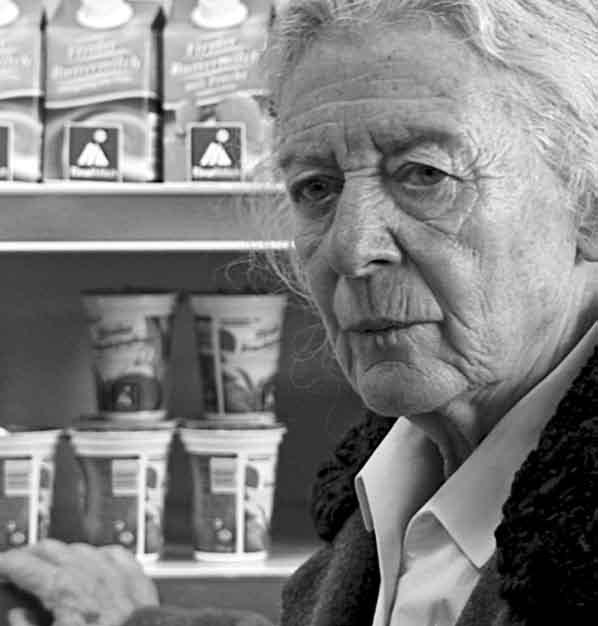
Riflessione sugli effetti che la routine quotidiana può produrre su mente e psiche, sull’importanza delle scelte e sul significato delle cose comuni e dei suoni (parte integrante della colonna sonora), il film è come un puzzle che sta allo spettatore ricomporre in un quadro unitario. La storia ruota attorno a una famiglia di quattro persone che vivono in una strana e antica villa in Galizia che sembra più un’installazione artistica che una casa vera e propria. Personaggio principale, benché poco presente sullo schermo, è il figlio, un uomo sulla trentina che soffre di asma e di eczemi fin da piccolo e che usa la propria condizione per manipolare genitori e sorella. L’esistenza di questa famiglia terrorizzata, sempre in attesa dell’ennesima “crisi di salute” del protagonista, si snoda così in un rituale infinito che ha come scopo il soddisfacimento di tutti i suoi desideri… Opera prima dell’artista visivo ucraino Podolčak, che per la parte musicale si è avvalso della collaborazione del famoso regista di video musicali Dean Karr.
“Da artista, ho realizzato questo film come avrei dipinto un quadro. Il film è nato da una storia che mi ha raccontato un mio amico psichiatra su una famiglia che ha in cura… Poi si è trattato di metterci dentro le mie impressioni, i miei ricordi, le fantasie e gli oggetti della vita di tutti i giorni e di dar loro una veste diversa, trasformandoli in ‘costruzioni’ mentali differenti.” (I. Podolčak)
iHoR PoDoLčaK
Ucraina / Ukraine
2008, DigiBeta, col., 99’ v.o. ucraina / Ukrainian o.v.
AnTEPRIMA ITALIAnA
ITALIAn PREMIERE
sceneggiatura, montaggio, effetti speciali / screenplay, editing, special effects: ihor Podolčak. Fotografia / Photography: Serhij Mykhalčuk. musica / music: oleksandr Ščetynskij. suono / sound: Myroslav Kuvaldin. scenografia / art Director: Svitlana Makarenko. Costumi / Wardrobe: Tetyana Moskal.
interpreti / Cast:
Mykola Vereseň, Ljubov Tymoševska, Hanna jarovenko, Dmytro černyavskij, Ilona Arsentijeva, Stas Arsentijev, Valerija Ulyančenko, Viktorija Ulyančenko. Produzione / Produced by: MF Films.
this film is about what the routine of everyday life can do to the human mind and psyche. also a reflection on the importance of the choices we make and of the significance of ordinary things and sounds (an important part of the music score), Las meninas resembles the scattered pieces of a puzzle. it is up to the viewer to assemble them in order to form his very own picture. the plot evolves around a family of four. they live in a strange and ancient Galician villa that appears to be more like a piece of installation art than a real house. the main character, who hardly appears on screen, is the son, a man in his thirties. suffering from asthma and eczema since childhood, he uses his condition to manipulate his parents and his sister. thus the existence of the terrorized family turns into an endless ritual of attempting to satisfy his whims, and always on the alert for yet another one of his “health crises”. Feature debut by the Ukrainian visual artist Podolchak, helped by the well-known music video director Dean Kerr for the musical part of the film.
“As a professional artist, I made this film like I would a painting. The starting point of the film was a story told by a psychiatrist friend of mine about a family that he is treating…. Then came the experience of filling in this plot with my own impressions, memories, fantasies, and objects of everyday life, and of their “repackaging” into different mental ‘constructions’.” (I. Podolchak)

PREVISIonE FoRECAST
Margarita lascia il famoso reporter Marco Matanić e raggiunge suo fratello per andare a fare windsurf con alcuni amici provenienti da paesi diversi dei Balcani. marco arriva sull’isola “solamente” per recuperare la tavola che margarita gli ha rubato. improvvisamente sull’isola non c’è più vento. Gli uomini cominciano a litigare per motivi nazionalistici. marco, per provare le sue capacità a margarita, li riprende e ne fa un reportage. L’episodio viene riportato dalle principali testate, ‘accendendo’ un conflitto fra i paesi dell’area balcanica. Gli amici allora costruiscono dei ‘confini nazionali’ fra una tenda e l’altra mentre margarita sparisce in mare...
“Prognoza non è il tipico film sulle relazioni nei Balcani come quelli che abbiamo visto negli ultimi 10 anni ... I festival e il mondo occidentale hanno delle aspettative verso la nostra regione. In questo modo hanno creato una moda, che si è trasformata in un cliché, tuttavia distante dalla verità. Ho fatto un film sulla nostra generazione, su come siamo e non su come la gente si aspetta che siamo ... L’idea di Babele è qualcosa che mi ha affascinata per molto tempo. A differenza però del racconto biblico, in Prognoza abbiamo persone che parlano in lingue diverse ma si capiscono abbastanza bene ... Nel momento in cui iniziano a litigare, iniziano a usare l’inglese, ‘la lingua della guerra’ per capirsi meglio. Certo, usando l’inglese si capiscono, ma riescono realmente a comunicare?” (S. Zornitsa)
SoPhIA zoRnITSA
Bulgaria
2008, 35mm, col., 102’ v.o. bulgara - inglese - serba - macedone - turca / Bulgarian - english - serbian - macedonian - turkish o.v.
AnTEPRIMA ITALIAnA
ITALIAn PREMIERE
sceneggiatura / screenplay: Sophia zornitsa, Emil Bonev, aleksej Kožumarov.
Fotografia / Photography: Krum Rodriguez.
montaggio / editing: Aleksander Etimov. musica / music: Roumen Toskov. suono / sound: Aleksander Buchvarov. scenografia / art Director: Sabina hristova. Costumi / Wardrobe: Sandra Klinčeva.
interpreti / Cast:
Teodora Duhovnikova, Krešimir Mikić, Assen Blatechky, deyan Slavchev-deo, Julian Vergov, Stephan A. Shtereff, Kalina Stančeva.
Produzione / Produced by Bulgar Beats.
Coproduzione / Co-produced by: nu Boyana Film.
Con il sostegno di / supported by: national Film Center, MEdIA Programme of the European Community. Distribuzione internazionale / World sales: nu Image Inc. owska.
margarita leaves the famous reporter marco matanich and joins her brother going for windsurfing vacation with his friends from different Balkan countries. marco arrives on their island “only” for the board margarita stole from him. suddenly, the wind stops. the men start fighting over nationalistic issues. marco, to prove his skills to margarita, shoots them in reportage. Quoted by leading media it fires a Balkan countries conflict, the friends build national borders between their tents and margarita disappears in the open sea...
“Prognoza is not the typical film about the Balkan relations that we see the last decade ... The festivals and the western world have certain expectations towards our region. This way they create a fashion, which turns into a cliché, which is far away from the truth. We made a film about our generation, the way we are, not the way we are expected to be ... The symbol of Babel is something that fascinates me for a long time. Unlike the Bible tale, in Prognoza we have people that speak different languages, but understand each other pretty well with a little give and take ... From the moment they start fighting, they start speaking English, ‘the language of war’, to better understand each other. Yes, they understand English quicker, but do they really communicate?”
(S. Zornitsa)
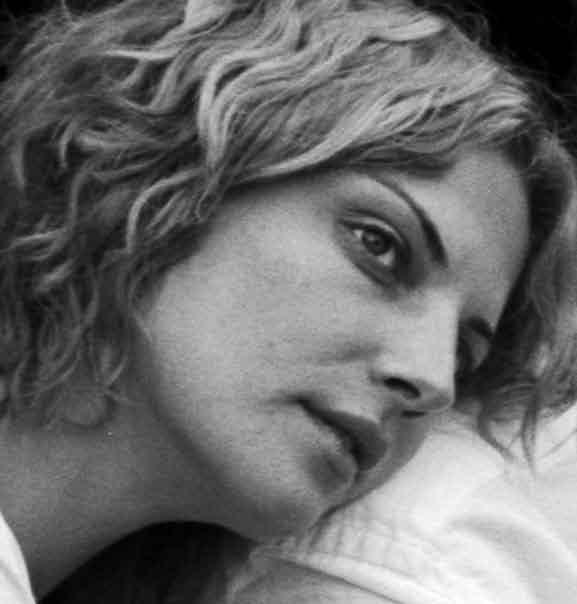
nEVE
SnoW
Bosnia 1997. sei donne, un anziano, quattro ragazzine e un bambino vivono nel villaggio di slavno, devastato dalla guerra e isolato dal mondo. Familiari e amici sono stati uccisi, i corpi mai ritrovati. La prima neve, quella che isola il luogo dal resto del mondo, si avvicina. alma, giovane donna cocciuta, cerca un modo per far uscire il villaggio dalla povertà vendendo marmellate di susine, frutta e verdura lungo una strada dove non passa mai nessuno. Un giorno però, arrivano a slavno due uomini d’affari che propongono agli abitanti di lasciare il villaggio in cambio di denaro: accettare o no l’offerta che potrebbe salvare loro la vita, sacrificando però la loro anima? Una tempesta improvvisa blocca i nuovi arrivati nel villaggio, costringendoli ad affrontare un problema molto più grande: la verità.
“… Dolore e gioia, amore e odio, oriente e occidente esistono, sono qui e si scontrano. Tutto questo rende il mio paese e la mia gente molto speciale, ma non sempre è facile trovare un modo per uscire dalla confusione e dall’ingiustizia che seguono a una guerra. Non è facile avere dei sogni e credere che si potranno avverare … Oggi, può sembrare troppo romantico insistere sull’importanza di lottare per la verità e la libertà. Ma chi, se non l’arte, è qui per ricordarcelo?” (A. Begić)
Bosnia erzegovina - Germania - Francia - iran / Bosnia & Herzegovina - Germany - France - iran 2008, 35mm, col., 99’ v.o. bosniaca / Bosnian o.v.
ITALIAn PREMIERE
sceneggiatura / screenplay: aida Begić, elma Tataragić (scritta in collaborazione con / written in collaboration with noemie de Lapparent).
Fotografia / Photography: erol Zubčević. montaggio / editing: Miralem S. Zubčević. musica / music: igor čamo. suono / sound: Frank Bubenzer, Branko neškov. scenografia / art Director: Vedran Hrustanović.
Costumi / Wardrobe: Sanja Džeba. interpreti / Cast: Zana Marjanović, jasna ornela Bery, Sadžida Šetić, Vesna Mašić, emir Hadžihafizbegović.
Produzione / Produced by: Mamafilm.
Coproduzione / Co-produced by: Rohfilm, Les films de l’apres-midi. Distribuzione internazionale / World sales: Pyramide International.
Bosnia, 1997. six women, a grandfather, four girls and a young boy live in war ravaged and isolated village of slavno. their families and friends had been killed and their bodies had never been found. the first snow, that brings full isolation in the village, is approaching. alma, a young stubborn woman, tries to find their way out of poverty by selling plum jam and other fruits and vegetables on a deserted road. two businessmen unexpectedly visit slavno demanding the residents to leave the village offering money in return. should the villagers accept the offer that could save their lives, but destroy their souls? a sudden storm traps the businessmen in slavno, forcing them to face a problem bigger than anything they expected – the truth!
“ … Pain and joy, love and hate, east and west are all happening and clashing at the same time. All this makes my country and people very special, but it is not always easy to find a way out of post-war confusion and injustice. It is not easy to have dreams and believe they can come true … Today it may sound overly romantic to insist that the struggle for truth and freedom is worthwhile. But maybe we just need to be reminded. If art is not there to remind us, then what is?” (A. Begić)
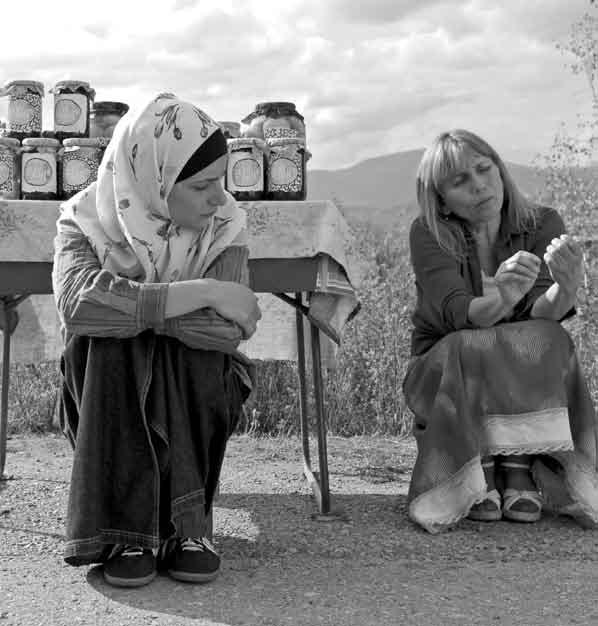
sceneggiatura / screenplay: Sergej dvorcevoj, Gennadij ostrovskij. Fotografia / Photography: Jola dylewska. montaggio / editing: Isabel Meier, Petar Markovic. suono / sound: Peter Bräker, olivier dandre, Williams Schmit, Eric Tisserand. scenografia / art Director: Roger Martin. Costumi / Wardrobe: Gaziza Korshiyeva. interpreti / Cast: Askhat Kuchinchirekov,
terminato il servizio militare in marina, il giovane asa torna a casa, nella steppa kazaka, dove il fratello pastore e la sorella conducono una vita nomade. Per cominciare un’esistenza del tutto nuova, e diventare lui stesso un pastore, asa deve prima prendere moglie. nella steppa deserta, la sua unica speranza è rappresentata da tulpan, anche lei appartenente a una famiglia di pastori. il povero asa, però, scopre con disappunto di non piacere alla ragazza a causa delle sue orecchie, che lei ritiene troppo grandi. Ciononostante, non si dà per vinto e continua a sognare una vita forse impossibile nella steppa…
SERGEJ dVoRCEVoJ
Germania - svizzera - Kazakistan - Russia - Polonia / Germany - switzerland - Kazakhistan - Russia - Poland 2008, 35mm, col., 100’ v.o. kazaka - russa / Kazakh - Russian o.v.
ITALIAn PREMIERE
Samal yeslyamova, ondasyn Besikbasov, Tulepbergen Baisakalov, Bereke Turganbayev, nurzhigit zhapabayev, Mahabbat Turganbayeva, Amangeldi nurzhanbayev. Produzione / Produced by: Pandora Filmproduktion. Coproduzione / Co-produced by: Cobra Film (Switzerland), Eurasia Film (Kazakistan), Film Company Slovo (Russia), Ctb Filmproduction (Russia), Filmcontract (Polonia), Pallas Film (Germania). in associazione con / in association with: zdF/das kleine Fernsehspiel & zdF/
Arte, Schweizer Fernsehen, BIM distribuzione. Con il sostegno di / supported by: Medien und Filmgesellschaft Baden-Württemberg, Mitteldeutsche Medienförderung, Polish Filminstitut, Schweizerische Eidgenossenschaft (BAK), Russian Federal Agency of Culture and Cinema, MEdIA development. Distribuzione internazionale / World sales: The Match Factory. Distribuzione italiana / Distributed in italy by: BIM distribuzione.
after completing his naval service, young asa travels back to the Kazakh steppe where his sister and her shepherd husband live a nomadic life. to start his new life, eager asa must get married first before he can become a shepherd himself. asa’s only hope for marriage on the deserted steppe is tulpan, the daughter of another shepherd family. Poor asa is disappointed to learn that tulpan doesn’t like him because she thinks that his ears are too big. But asa doesn’t give up and he continues to dream of a life that may not be possible on the steppe ...
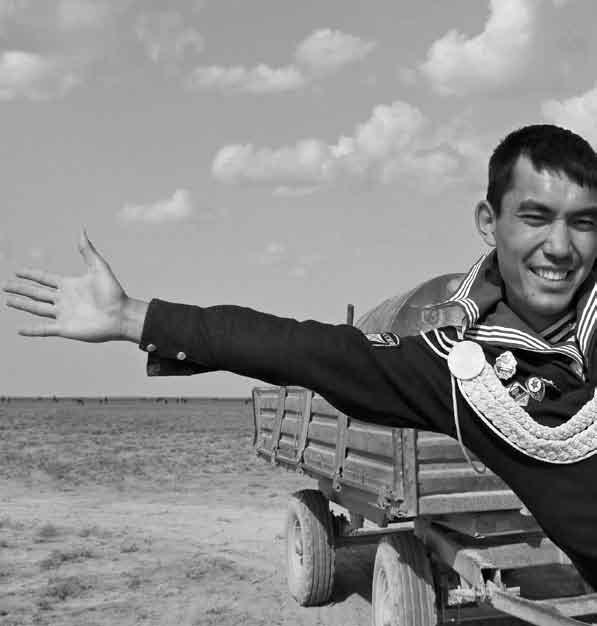
LA TouRnéE
ThE TouR
1993, il periodo più buio della guerra in Bosnia erzegovina. Un gruppo di attori di Belgrado in cerca di facili guadagni, del tutto inconsapevoli di ciò che accade attorno a loro, decide di partire per una tournée nella Krajina serba. si ritrovano nel vivo dei combattimenti e iniziano a vagare da un fronte all’altro, da un esercito all’altro. Durante il loro orribile viaggio incontrano combattenti serbi, musulmani, croati, si trovano faccia a faccia con situazioni disperate ma riescono sempre a venirne fuori. Proprio quell’ingenuità che li ha portati in mezzo a eventi agghiaccianti sarà ciò che li salverà.
“Gli attori sono allo stesso tempo seri e frivoli. La natura della loro arte è a tratti molto infantile, ma anche molto, molto profonda. Spesso si comportano come dei bambini ignari della complessità dei compiti che la vita assegna loro, ma anche come creature in grado, più di chiunque altro, di ridurre l’essenza del destino umano a qualcosa di comprensibile. Sono bambini e filosofi, irresponsabili ma impegnati, superficiali eppure appassionati.” (G. Marković)
goRaN MaRKoVić
serbia
2008, 35mm, col., 108’ v.o. serba / serbian o.v.
AnTEPRIMA ITALIAnA
ITALIAn PREMIERE
sceneggiatura / screenplay: goran Marković. Fotografia / Photography: Radoslav Vladić. montaggio / editing: Snežana ivanović. musica / music: Zoran Simjanović. suono / sound: Branko neskov.
scenografia / art Director: Veljko Despotović. Costumi / Wardrobe: Ljiljana Petrović.
interpreti / Cast:
Tihomir Stanić, josif Tatić, Mira Furlan, jelena Ðokić, Dragan Nikolić, gordan Kićić, Slavko Štimac, Svetozar cvetković, Branimir Popović, Bogdan Diklić. Produzione / Produced by: Testament Films. Con il sostegno di / supported by:. Coproduzione / Co-produced by: Balkan Film.
Distribuzione internazionale / World sales: Eurovision Fiction.
Year 1993, the bleakest time of war in Bosnia and Herzegovina. a group of actors from Belgrade, utterly unaware of what they’re setting themselves up for, embark on a search for quick earnings – on a “tour” around the serbian Krajina. However, there they are thrust into the heart of war and begin to wander from warfront to warfront, from one army to the next. During their horrible journey they meet serbian, muslim and Croatian fighters, are faced with hopeless situations but always seem to work their way out of them. their naivety, which put them in the midst of these horrific events in the first place, is also what saves them.
“The actors are at the same time a serious and frivolous sort. The nature of their art contains something very childish but also very, very deep. They often act like children, unaware of the complexity of the tasks life sets before them, but also like creatures who are able better than anyone else to adapt the essence of man’s destiny into something comprehensible to all. They are both children and philosophers, irresponsible yet very engaged, superficial yet passionate.” (G. Marković)
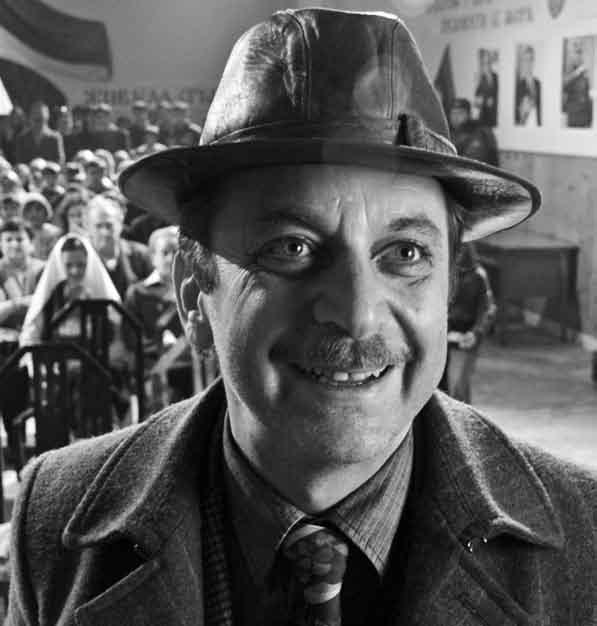
AL SETTIMo CIELo
CLoud 9
sceneggiatura / screenplay: Andreas dresen, Cooky ziesche, Laila Stieler, Jörg hauschild. Fotografia / Photography: Michael hammon.
montaggio / editing: Jörg hauschild. suono / sound: Peter Schmidt. scenografia / art Director: Susanne hopf.
Costumi / Wardrobe: Sabine Greunig.
inge è una donna che ha superato i sessant’anni, sposata da trenta con Werner e innamorata di suo marito. ma quando incontra il settantaseienne Karl fra i due è subito passione. Ritrova gli sguardi d’intesa, l’attrazione fisica, una vita sessuale ormai dimenticata. improvvisamente si sente di nuovo giovane... Premio “Coup de Coeur” nella sezione “Un Certain Regard” all’ultimo Festival di Cannes.
“Mi sono sempre chiesto perché agli anziani, al cinema o in televisione, sia concesso unicamente uno sguardo sentimentale sulla vita o storie gentili e romantiche incomplete di quello che comunque è sempre un tiepido risveglio di un particolare sentimento … Le persone normali, quelle che hanno saputo invecchiare con dignità, ma che non si adattano più all’immagine di una gioventù bella e gioiosa semplicemente non vengono rappresentate o rimangono nell’ombra. Si dà per scontato che non provino emozioni forti, tanto meno di natura sessuale … In definitiva, Wolke 9 non è solo un film che tratta dell’amore e del sesso fra persone anziane, ma è una storia normale sull’amore e sul dolore e sulla difficoltà di convivere con la paura di amare.” (A. Dresen)
AndREAS dRESEn
Germania / Germany
2008, 35mm, col., 98’ v.o. tedesca / German o.v.
AnTEPRIMA ITALIAnA ITALIAn PREMIERE
interpreti / Cast: ursula Werner, horst Rehberg, horst Westphal, Steffi Kühnert. Produzione / Produced by: Rommel Film.
Coproduzione / Co-produced by: Rundfunk Berlin-Brandenburg. Con la collaborazione di / in collaboration with: ARTE.
Con il sostegno di / supported by:
Medienboard Berlin-Brandenburg, Bundesbeauftragter für Kultur und
Medien BKM, deutscher Filmförderfonds, Filmkunstpreis des Festival des deutschen Films.
Distribuzione / World sales: The Match Factory.
Distribuzione italiana / Distributed in italy by:
Videa-CdE.
inge is in her mid-60s. she has been married for 30 years and loves her husband. But inge is drawn to this older man Karl, already 76. it’s passion. it’s sex. there are stealing glances, attraction and suddenly she feels like a young girl again ... Winner of the award “Coup de Coeur” in the “Un Certain Regard” section at the latest Cannes Film Festival.
“I had always wondered why the aged in film and TV are allowed at most a sentimental look on life or halfway romantic and mild-mannered stories of yet another half-hearted awakening to a specific feeling … Normal old people, those who have wrinkled and aged with dignity but no longer conform to the image of beautiful and joyful youth simply are not seen or represented. They are not granted any great emotions, and no sexuality whatsoever … In the end, Wolke 9 is a film not only about love and sexuality between old-aged people, but it is also a very normal story about love and pain and how difficult it is to withstand the terror of love.” (A. Dresen)
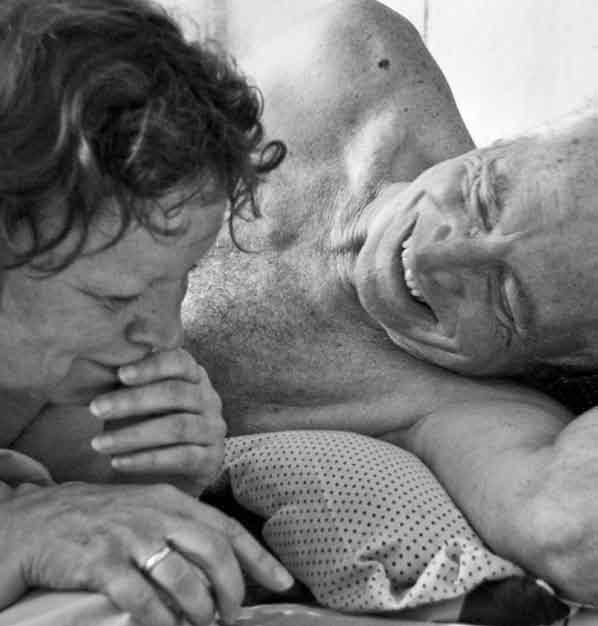
oSCEnITà E SAGGEzzA
tre amici si dividono tra lavori improbabili per riuscire a sbarcare il lunario, sognando un futuro più luminoso. a .K. è un immigrato ucraino che ha un solo obiettivo nella vita: raggiungere il successo con la sua band, i Gogol Bordello. Divide il suo appartamento con due ragazze, Holly e Juliette. Holly è un’aspirante ballerina, il suo sogno è quello di danzare per il Royal Ballet. ma non è mai riuscita a guadagnare un penny come ballerina e continua a ‘perfezionarsi’ come lap dancer al Beechman’s exotic Gentleman’s Club. Juliette sogna di diventare una sorta di Florence nightingale e di trasferirsi in africa per aiutare i bambini, ma per ora si deve accontentare di lavorare dietro al bancone della farmacia di quartiere, gestita dall’indiano sardeep.
“Ho sempre ammirato il cinema come arte e I’abilità di raccontare una buona storia. Girare Filth and Wisdom per me è stato come frequentare una scuola di cinema. È stato molto importante scrivere il soggetto, delineare i personaggi ed essere coinvolta in ogni passaggio, dalla scenografia fino al montaggio. E sono più che certa che con Ie mie continue domande ho fatto impazzire tutti i miei collaboratori. Ma è stata un’esperienza di grande soddisfazione perché mi ha permesso di esplorare tutto ciò che amo nella vita: la letteratura, la musica e la danza.” (Madonna)
MAdonnA
Regno Unito / United Kingdom
2008, 35mm, col., 81’ v.o. inglese / english o.v.
sceneggiatura / screenplay: Madonna, dan Cadan.
Fotografia / Photography: Tim Maurice Jones.
montaggio / editing: Russell Icke.
suono / sound: danny Sheehan, Simon hayes. scenografia / art Director: Gideon Ponte.
Costumi / Wardrobe:
B. interpreti / Cast: Eugene hütz, holly Weston, Vicky McCLure, Richard E. Grant,
Produzione / Produced by: Semtex Films.
Coproduzione / Co-produced by: Exposure/hSI.
Distribuzione internazionale / World sales: Katapult Films Sales.
three friends settled into meaningless jobs that barely keep them afloat dreaming of brighter futures. a .K. is a Ukrainian immigrant who has one goal in life - to reach superstardom with his band Gogol Bordello. He shares his apartment with two girls, Holly and Juliette who, like their immigrant roommate, are both walking one path in the hopes that it will lead to another. Holly is a trained ballerina, her big dream is to dance with the Royal Ballet. so far she hasn’t been able to earn a single penny with her dancing, and continues to ‘polish’ her skills as a pole dancer at Beechman’s exotic Gentleman’s Club. Juliette dreams of being a kind of Florence nightingale of the developing world, but is currently working behind the counter at the local drug store run by sardeep, the indian chemist.
“I have always admired the art of filmmaking and the ability to tell a good story. Filth and Wisdom was essentially my way of putting myself through film school. It was very important to me to write the story, create the characters, and be involved in every step of the way from the production design to the editing and I’m pretty sure I drove every head of department mad with my endless questions. It was an extremely fulfilling experience as it allowed me to explore all elements that I love in life, from literature to music to dance.” (Madonna)
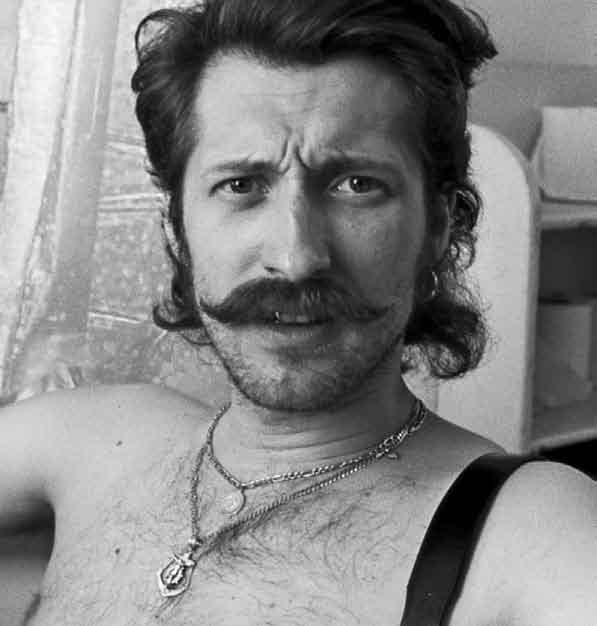
PoSSIBLE LIVES
“nelle tante ore filmate per la serie dei Confini d’Europa erano rimasti tanti volti, tanti paesaggi, tanti momenti di vita vissuta o vista vivere, che non avevano trovato spazio nel montaggio degli episodi, ma che, lo stesso, non volevo perdere. Frammenti di persone sconosciute, o appena sfiorate, di cui immaginarsi la vita, le emozioni, i sentimenti, i pensieri. Perché tanto non c’è altro da fare, il tempo delle riprese è finito, e sono rimaste soltanto le immagini. Chissà chi erano quelle donne filmate, e chissà dove ero io che le filmavo: non importa. i film forse servono anche a questo, a inventare la vita delle persone che si sfiorano, anche solo per pochi momenti.” (C. salani)
CoRSo SALAnI italia / italy 2008, Dv, col., 51’ didascalie italiane / italian titles
AnTEPRIMA ASSoLuTA WoRLd PREMIERE
montaggio / editing:
Corso Salani. suono / sound: Anette dujisin.
Produzione, Distribuzione internazionale / Produced by, World sales: Vivo Film.
“in the many hours it took to film for the series Borders of Europe there were still so many faces, landscapes and moments from my experiences and the experiences of those i was filming, that had not found space, after editing, in the episodes, but that in the same way i did not want to lose. Fragments of unknown persons, or barely touched, of whom we can imagine the lives, emotions, feelings, thoughts. Because there was nothing left to do, once the shooting had finished all that was left were the images. Who knows who those women filmed were, and who knows where i was when i shot them: it doesn’t matter. the films may also serve this; to invent the lives of people who were only touched upon even if only for a few moments.” (C. salani)

BALASTIERA # 186 di adina Pintilie, George Chiper
CRonACA dI un RAPIMEnTo di Guido tortorella
I don’T FEEL LIKE dAnCInG di evi Goldbrunner, Joachim Dollhopf
In dEInER hAuT di Pola schirin Beck
A dAy’S WoRK di edward Feldman
FAȚA GALBEnĂ CARE RÂdE di Constantin Popescu
ELSŐ SzERELEM di ildikó enyedi
MALTER di Dániel Béres
MESéLd EL... di andrás salamon
My hAPPy End di milen vitanov
MóJ BRAT di Jan Wagner
PoLE, KLouny, JABLoKo... di Šota Gamisonia
RESoLuTIon di Pavel Orešnikov
SARdunyA di Mustafa Emin Büyükcoşkun
ToLERAnTIA di ivan Ramadan
ToST di Ognjen Glavonić
VEM di Jan Cvitkovič
BoŽii di Kristina Grozeva

CAVA dI SABBIA # 186
SAndPIT # 186
AdInA PInTILIE, GEoRGE ChIPER Romania
2007, 35mm, b-n / b-w, 20’ senza dialoghi / no dialogues
Periferia di una città industriale. Una cava di sabbia abbandonata e il suo custode. Un giorno in questo mondo deserto, fatto di sabbia e ferro, arriva uno straniero... niente sembra cambiare... ma le cose non saranno più le stesse...
sceneggiatura / screenplay: Adina Pintilie, George Chiper. Fotografia / Photography: George Chiper, Iulian nan. montaggio, suono / editing, sound: Vlad Voinescu. scenografia, costumi / art Director, Wardrobe: Andrada Chiriac. interpreti / Cast: Richard Bovnoczky, Gabriel Spahiu. Produzione / Produced by: unATC.
Outskirts of an industrial city. a deserted sandpit and its solitary tenant. One day, an ordinary day, in his empty concrete and iron world a stranger comes... nothing seems to change... but things are not the same anymore...
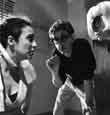
ThE ChRonICLE oF A KIdnAPPInG
GuIdo ToRToRELLA
italia / italy
2008, 35mm, col., 15’ v.o. italiana / italian o.v.
Graziana lavora come cameriera e pretende una vita migliore. È disposta a fare qualunque cosa per ottenerla, anche se si tratta di rapire la figlia del suo datore di lavoro egiziano – nonostante la sua totale inesperienza nel mondo del crimine – per chiedere un consistente riscatto. suo figlio michele, aspirante regista di cinema, decide di realizzare un video per chiedere i soldi...
sceneggiatura / screenplay: Andrea Cedrola, Chiara Ridolfi, Guido Tortorella.
Fotografia / Photography: Ethel Pistritto. montaggio / editing: Giovanni Furore. musica / music: Andrea Farri. suono / sound: Andrea Viali.
scenografia / art Director: Lara Sikic.
Costumi / Wardrobe: Teresa d’Arienzo. interpreti / Cast: Patrizia Loreti, Pietro de Silva, Beniamino Marcone, Astrid Meloni Produzione, distribuzione internazionale / Produced by, World sales: CSC (Centro Sperimentale di Cinematografia).
Graziana works as a waitress and wants a better life. she is willing to do anything to get it, even if that means to kidnap the daughter of his egyptian employer – despite her total inexperience in the world of crime – asking for a consisting ransom. Her son michele, aspiring film director, decided to make a video to ask for the ransom money...

A dAy’S WoRK un GIoRno dI LAVoRo
EdWARd FELdMAn
Usa - Repubblica Ceca / Usa - Czech Republic
2007, DigiBeta, b-n / b-w, 14’ v.o. ceca - inglese / Czech - english o.v.
anna vive nella periferia di Praga con il figlio saša in un squallido quartiere di case popolari. Quando non può affidare saša alla sua vicina, anna se lo deve portare al lavoro. andare al lavoro è una sfida quotidiana: l’autobus su cui sale non va. arriva tardi al lavoro, un turno di doppiaggio audio per un film americano con thomas, un regista isterico, e ed, il suo impacciato produttore …
“I cortometraggi hanno una struttura particolare anche dal punto di vista narrativo, così è stata una sfida fare in modo che tutto funzionasse.” (E. Feldman)
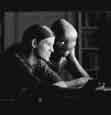
ELSŐ SzERELEM
PRIMo AMoRE FIRST LoVE
Ungheria / Hungary
2008, Betacam sP, col., 20’ v.o. ungherese / Hungarian o.v.
Una ragazza incontra un ragazzo che non ha mai visto prima, da sola, di notte, in un parcheggio buio. La cosa più folle da fare all’età di 16 anni. Quello che lei trova è quanto di più imprevedibile per noi. ma lei non sembra preoccuparsene. Perché è innamorata, ed è la prima volta nella sua vita.
“Dicono che l’amore è cieco. In un certo senso forse è cosi ... Non ti interessa da dove viene, da quale ambiente familiare, che cosa possono pensare di lui la tua famiglia e i tuoi amici. Tutto ciò che vedi è la bellezza e l’unicità della sua anima immortale.” (I. Enyedi)
sceneggiatura / screenplay: Edward Feldman, Thomas Logoreci.
Fotografia / Photography: Petr Stepanek.
montaggio / editing: nathan Petty. suono / sound: Joaby deal.
interpreti / Cast: daniela Reinisch, Robin Kotubej, Edward Feldman, Thomas Logoreci. Produzione / Produced by: dresden Films.
Coproduzione / Co-produced by: Cabiria Films.
anna lives on the outskirts of Prague with her son sasha in a dismal housing project. When her neighbor can’t watch sasha for the day, anna must bring him with her to work. Getting there proves to be challenging. the bus she takes is not running. she arrives late to work, an audio dubbing session for an american film with thomas, an ornery director, and ed, his sheepish producer ...
“Short films are unique in structure and narrative behavior so it was a challenge to make it all work.” (E. Feldman)
sceneggiatura / screenplay: ildikó enyedi.
Fotografia / Photography: Mátyás Erdély.
montaggio / editing: anna Kis. musica / music: Console.
suono / sound: Tamás zányi, Tamás Csaba. scenografia / art Director: Imola Láng.
Costumi / Wardrobe: Iván Pohárnok (Aro design).
interpreti / Cast: Juli droste, Pálma Pásztor. Produzione, distribuzione internazionale / Produced by, World sales: inforg Stúdió.
a girl meets a boy she has never seen yet - alone, at night, in a dark parking lot. the most foolish thing to do when you are 16. What she finds there is the most unexpected - for us. But she doesn't seem to be bothered. she is in love, that's why. she is in love for the first time in her life.
“They say love is blind. Perhaps in an everyday sense it is ... You don’t care where he’s from, what his background is, who his family is, what your family or friends are thinking about him. All you can see is his immortal soul’s unique and profound beauty. ” (I. Enyedi)
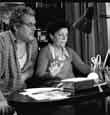
ConSTAnTIn PoPESCu Romania
2008, 35mm, col., 15’ v.o. rumena / Romanian o.v.
“in questo film, come nei miei precedenti, affronto ancora il delicato problema della difficoltà di comunicazione. Questa volta lo faccio in un modo più rilassato e umoristico, anche se metto in scena un piccolo dramma familiare: un figlio lontano da casa, per lavoro, e i genitori obbligati a imparare a usare un PC per tenersi in contatto con lui. Penso che nulla sia più forte dei legami familiari, e che la difficoltà di comunicare sia un argomento ancora più forte quando riguarda genitori e figli.” (C. Popescu)
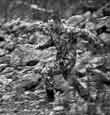
I don’T FEEL LIKE dAnCInG non ho VoGLIA dI BALLARE
EVI GoLdBRunnER , JoAChIM doLLhoPF Germania / Germany
2008, 35mm, col., 7’ v.o. inglese / english o.v.
in una zona qualunque di guerra. tre giovani soldati provano a distrarsi. Uno di loro viene attratto da una ragazza del posto. i commilitoni la inseguono…
“Come mostrare il meccanismo della guerra in pochi minuti? ... Se consideriamo tutte le violenze che accadono in guerra, la nostra storia racconta un episodio minore, uno di quelli che non leggeresti neanche sui giornali. Tuttavia riesce a cogliere il punto: come la gente può cambiare in un ambiente disumano...” (E. Goldbrunner, J. Dollhopf)
sceneggiatura / screenplay: doru Lupeanu.
Fotografia / Photography: Liviu Mărghidan.
montaggio / editing: Eugen Kelemen. suono / sound: Florin Tăbăcaru.
scenografia / art Director:
Simona Pădurețu.
Costumi / Wardrobe: Brândușa Ioan, Andreea Tana.
interpreti / Cast: Luminița Gheorghiu, Teodor Corban, George Constantinescu. Produzione / Produced by: Saga Film.
“in this film i deal with the same delicate issue of miscommunication as in my other short films. this time, i do it in a more relaxed manner, with humour, although i show a small family drama, with the son being far away from home, because he has to earn a living, and the parents being forced to learn to work with a PC in order to hear from him. i think nothing is more powerful than family ties, and the issue of a strange communication is never more meaningful than the one between parents and children. “ (C. Popescu)
sceneggiatura / screenplay: Evi Goldbrunner, Joachim dollhopf, Robby dannenberg.
Fotografia / Photography: Gregor Schönfelder.
montaggio / editing: Kai Minierski. musica, suono / music, sound: Johannes heidingsfelder.
scenografia / art Director: daniela Petrozzi, Franzisska Rufledt
Costumi / Wardrobe: Riccarda Merten-Eicher, urs dierker.
interpreti / Cast: Antonio Wannek, Vesela Kazakova, Jakob Bieber, Maximilian haas Produzione, distribuzione internazionale / Produced by, World sales: hochschule für Film und Fernsehen (hFF) “Konrad Wolf”, PotsdamBabelsberg.
somewhere in a warzone. three young stationed soldiers divert themselves from everyday warlife. One of them becomes aware of a native girl. the comrades follow her...
“How to show the mechanism of war in a few minutes? ... Our story tells just a minor incidence among the crueltys of war which you wouldn’t even find in the newspapers. But it hits the point of how people’s characters change within an inhumane environment...” (E. Goldbrunner, J. Dollhopf)

dEnTRo dI TE
sceneggiatura / screenplay: Pola Schirin Beck.
PoLA SChIRIn BECK
Germania / Germany
2008, Betacam sP, col., 23’ v.o. tedesca / German o.v.
Una storia estiva ambientata in una casa sulla costa del mar Baltico. suse (16 anni) sta passando le vacanze con la madre e il nuovo fidanzato della donna, entrambi felicemente innamorati. sentendosi rifiutata, suse inizia a isolarsi sempre di più fino a che scopre come volgere le cose a suo favore. Deve solo usare il modo giusto...
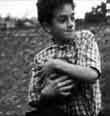
InSIdE you MALTER
dánIEL BéRES
Ungheria / Hungary
2008, super 16mm, col., 13’ v.o. ungherese - inglese - tedesca / Hungarian - english - German o.v.
agosto 1989: thomas (9 anni) della Germania dell’est incontra per la prima volta a Budapest l’ungherese Pali, di 9 anni anche lui. Durante il periodo di caos successivo alla caduta del muro di Berlino, i due perdono le tracce l’uno dell’altro. Quando 15 anni dopo cercano di incontrarsi per la seconda volta a Berlino, Pali sembra avere problemi proprio con il muro...
Fotografia / Photography: Juan Camilo Sarmiento. montaggio / editing: Susanne Krauss. musica / music: ninca Leece. suono / sound: zofia Golebiowska, Ludwig Bestehorn. scenografia / art Director: nico Stock.
Costumi / Wardrobe: Krisha Lindner. interpreti / Cast: Kim Schnitzer, Margrit Sartorius, olaf Rauschenbach.
Produzione, distribuzione internazionale / Produced by, World sales: hochschule für Film und Fernsehen (hFF) “Konrad Wolf”, PotsdamBabelsberg.
a summer story set in a summer house on the Baltic coast. suse (16) is spending her vacations with her mum and her new boyfriend, happily in love. Feeling rejected she begins to shut herself away more and more until she discovers how to turn things in her favor. she just has to use the right means…
sceneggiatura / screenplay: dániel Béres, Anita németh.
Fotografia / Photography: András Petrik.
montaggio / editing: Gábor Takács. musica / music: Black Rebel Motorcycle Club. suono / sound: Martin Kleinmichel.
scenografia / art Director: Csenge Kolozsvári.
Costumi / Wardrobe: Csenge Kolozsvári, Jennifer Mäurer. interpreti / Cast: Péter Bersényi, Karsten Mielke, Tilo Werner, Marcell Szkévisz, Leon Parcsami, Verena Specht-Ronique, Péter Janicsek, Adolfo Assor.
Produzione, distribuzione internazionale / Produced by, World sales: duna Műhely.
Con il sostegno di / supported by: duna TV zrt, dFFB, nipkow Program, Ch Berlin.
august 1989: thomas (9) from east-Germany meets Pali (9) from Hungary in Budapest for the first time. During the chaotic times of the Berlin Wall coming down they lose track of each other. When 15 years later they try to meet for the second time in Berlin, Pali seems to have a problem with the Wall...

RACConTATELo AI VoSTRI BAMBInI... TELL youR ChILdREn...
AndRáS SALAMon
Ungheria / Hungary
2007, 35mm, b-n / b-w, 5’ senza dialoghi / no dialogues
alla fine della seconda guerra mondiale, migliaia di ebrei ungheresi furono trucidati sulle sponde del Danubio da propri concittadini, i membri del Partito Ungherese delle Croci Frecciate, che cooperavano con i nazisti. Una ragazzina riesce a fuggire da questo orrore. La rivediamo alla fine del film, è una vecchia signora che s’imbatte in una coppia di neo-nazisti. La storia si ripete.
sceneggiatura / screenplay:
András Salamon.
Fotografia / Photography: gábor Szabó.
montaggio / editing: Károly Szalai. musica / music: ági Kazai.
suono / sound: Gábor Balázs.
Costumi / Wardrobe: János Brecki.
interpreti / Cast: Lilla Tanai, Ilona Bakos, Eszes Fruzsina.
Produzione, distribuzione internazionale / Produced by, World sales: Filmteam Kft.
at the end of the second World War, thousands of HungarianJewish people were butchered at the bank of the Danube by their own fellow citizens, the Hungarian arrow Cross members, cooperating with the German nazis. this film is about a little girl who managed to escape from this horror. at the end of the film, we see her as an old lady, as meets a couple of neo nazis. History repeats itself.
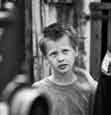
MóJ BRAT
MIo FRATELLo My BRoThER
JAn WAGnER
Polonia / Poland
2007, 35mm, col., 10’ v.o. polacca / Polish o.v.
Cosa fa realmente mio fratello quando va a pesca.
sceneggiatura / screenplay: Jan Wagner.
Fotografia / Photography: Michał Stajniak. montaggio / editing: Bogusia Furga. musica, suono / music, sound: zosia Gołębiowska.
scenografia / art Director: Kasia Wilk, zbigniew olejniczak.
Costumi / Wardrobe: Bożenka Mistrzak.
interpreti / Cast: Adam znyk, Mateusz Bednarczyk. Produzione, distribuzione internazionale / Produced by, World sales: PWSFTviT (Polish national Film, Television and Theatre School - Łodź).
What my brother really does when he goes fishing.
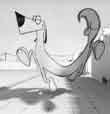
MILEn VITAnoV
Germania / Germany
2007, 35mm, col., 5’ senza dialoghi / no dialogues
tutti i cani si cacciano la coda. Uno di loro finalmente ce la fa a prenderla. La sua vita da quel momento cambia, perché finalmente ha trovato il suo migliore amico.
sceneggiatura, animazione, montaggio / screenplay, animation, editing : Milen Vitanov.
Fotografia / Photography: nikolai Kanow. musica / music: Stefan Maria Schneider. suono / sound: Thomas Bachmann. effetti speciali / special effects: dennis Rettkowski.
Produzione, distribuzione internazionale / Produced by, World sales: hochschule für Film und Fernsehen (hFF) “Konrad Wolf”, PotsdamBabelsberg.
all dogs chase their tails. a dog once succeeds in catching his own tail. that changes his life as he finds his best friend in it.
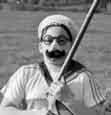
CAMPo, PAGLIACCI, MELA ... FIELd, CLoWnS, APPLE...
ŠoTA GAMISonIA
Russia
2008, HD, col., 12’ senza dialoghi / no dialogues
“Questa è la storia del piccolo Georgij, che viveva vicino al mare e sognava di diventare marinaio. L’autore medita sui posti, dove i sogni ci portano, e sul cammino che il piccolo Georgij deve intraprendere.” (Š. Gamisonia)
sceneggiatura / screenplay: Šota Gamisonia.
Fotografia / Photography: Andrej debabov. montaggio / editing: Sergeij Gaziev. suono / sound: Evgenij Goryainov. scenografia / art Director: dmitry Malich, daria Sincova. Costumi / Wardrobe: daria Sincova.
interpreti / Cast: Vadim utenkov, Aleksander Gorelov, Ksenija Katalymova, Julija Makarova. Produzione, distribuzione internazionale / Produced by, World sales: Leevandia-entertainment.
“this is the story of little Georgij, who lived by the sea and dreamed of becoming sailor. the author ponders about the places, where dreams take us, and about the path little Georgij has to take.” (Š. Gamisonia)
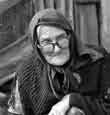
uCCELLI
BIRdS oF hEAVEn
KRISTInA GRozEVA
Bulgaria
2008, 35mm, col., 30’ v.o. bulgara - inglese / Bulgarian - english o.v.
Una smemorata turista straniera e una stramba contadina bulgara si incontrano in un villaggio sperduto. nonostante le evidenti incomprensioni causate dalle differenze di lingua, di cultura e di personalità, le due donne diventano amiche inseparabili. Cosa può nascere da ciò? Un miracolo, sicuramente!
sceneggiatura / screenplay: Petar Valchanov, Kristina Grozeva. Fotografia / Photography: Krum Rodriguez, Julian Atanasov
montaggio / editing: Valeria usheva, Petar Valchanov musica / music: hristo namliev.
suono / sound: Ivailo nacev.
scenografia, costumi / art Director, Wardrobe: Vanina Geleva.
interpreti / Cast: Ann Firbank, Ilka zafirova, Iordanka Angelova. Produzione / Produced by: TRIKITRI.
a forgetful foreign tourist and a crazy bulgarian peasant meet in a desolate village in the mountains. Despite the ensuing conflicts caused by the language barrier, cultural and personality differences, they discover true friendship. What could possibly come out of this? a miracle, for sure!

RESoLuTIon
SoLuzIonE
PAVEL oREŠnIKoV
Russia
2008, super 16mm, col., 15’ senza dialoghi / no dialogues
Un giorno nella vita di un piccolo villaggio russo dove un uomo, maltrattato dai vicini, tenta di riprendere in mano la propria vita. egli decide di affrontare di petto la situazione e di ricorrere a una soluzione drastica. Riuscirà a ritrovare il proprio onore e a imporsi agli occhi della comunità? menzione speciale nella sezione “Pardi di domani” all’ultimo Festival di Locarno.
sceneggiatura, montaggio, scenografia / screenplay, editing, art Director: Pavel orešnikov.
Fotografia / Photography: Pavel orešnikov, Aleksander Solov’ëv. musica / music: Stanislav Faleev, Stanislav zavjalov. suono / sound: Stanislav Faleev. interpreti / Cast: dmitrij Podnozov, dmitrij Petruškov, Vladimir orževskij, Natalija Nikulenko,
Natalija orževskaja, Nicolaj Kločev, Maksim yakovlev.
Produzione, distribuzione internazionale / Produced by, World sales: northern Sky Films.
a day in the life of a small Russian village where a man, bullied by his neighbours, tries to reassert control over his life. He decides to take matters into his own hands and makes a life-changing resolution. But can he regain his honour in the community and inspire respect?
special mention in the “Leopards of tomorrow” section at the latest Locarno Film Festival.
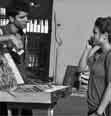
GERAnIo GERAnIuM
MUSTaFa eMiN BüYüKcoşKUN
turchia / turkey
2008, HDv, col., 18’ v.o. turca / turkish o.v.
“Sardunya è la storia di un ambulante che vende CD di film piratati. La vita dell’ambulante cambia inaspettatamente quando una ragazza gli chiede un titolo che lui non ha mai sentito prima. Le promette di trovare il film e chiede alla ragazza di ritornare. ma la ragazza non torna più. Distaccato dal mondo reale, il ragazzo trasforma a poco a poco l’attesa di rivedere la ragazza in un’ossessione.”
(M. E. Büyükcoşkun)
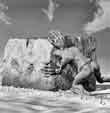
IVAn RAMAdAn
Bosnia erzegovina / Bosnia & Herzegovina
2008, 35mm, col., 7’ senza dialoghi / no dialogues
È il primo film di animazione in 3D prodotto in Bosnia erzegovina.
“Dopo un lungo sonno, l’eroe di questa storia - un Bosniaco - si sveglia e comincia a costruire un monumento meraviglioso. Il suo modo di ragionare non è proprio invidiabile, ma comunque lui non è molto diverso da te. Tu con lui condividi delle cose, nel profondo...” (I. Ramadan)
sceneggiatura, montaggio / screenplay, editing: Mustafa emin Büyükcoşkun. Fotografia / Photography: orkan Bayram. suono / sound: Arda Erdir. scenografia, costumi / art Director, Wardrobe: ayşe gülsüm Özel.
interpreti / Cast: enes Özel, elif Kapıcı, Mithat Yediok, osman Aslan, Burhan deniz, Mücahit Eker.
Produzione, ditribuzione internazionale / Produced by, World sales: Mustafa emin Büyükcoşkun. Coproduzione / Co-produced by: Bilim ve Sanat Vakfı, Boğaziçi Üniversitesi Mithat Alam Film Center.
“Sardunya is the story of a street vendor selling pirated movie CDs. the vendor’s life changes unexpectedly when a girl asks for a movie title he has never heard of. He promises to find the movie and asks the girl to come back for it, but she never does. as he gets detached from the world, his anticipation gradually gives way to obsession.” (M. E. Büyükcoşkun)
sceneggiatura, montaggio, suono, animazione / screenplay, editing, sound, animation: Ivan Ramadan. musica / music: Mostar Sevdah Reunion. Produzione / Produced by: Ivan Ramadan.
Tolerantia is the first 3D animated film produced in Bosnia and Herzegovina.
“After a long sleep, the hero of this story – a Bosnian – awakes and starts building a wonder. His reasoning is not something you should be jealous of, but he is not very different from you, either. You share some things with him, deep inside...” (I. Ramadan)

ogNjeN gLaVoNić
serbia
2008, Betacam sP, col., 10’ v.o. serba / serbian o.v.
Un solitario uomo di mezza età: la sua vita quotidiana è pianificata in modo molto scrupoloso... e anche la postina ogni giorno suona alla stessa ora...
sceneggiatura / screenplay: ognjen glavonić.
Fotografia / Photography: Tatjana Krstevski.
montaggio / editing: jelena Rosić.
suono / sound: davor duboka.
scenografia / art Director: Magdalena Vlajić, Nataša Bogdanović.
Costumi / Wardrobe: ivana Stojanović, Srđan janković.
interpreti / Cast: Branislav Zeremski, isidora Minić. Produzione / Produced by: Fakultet dramskih umetnosti (Beograd).
a lonely middle aged man: his everyday life has a particular schedule... even the postwoman comes every day at the same time...

Io So I KnoW
slovenia - Ungheria / slovenia - Hungary
2008, 35mm, col., 7’ senza dialoghi / no dialogues
Un uomo costruisce un congegno in cantina. Una donna e un bambino lo guardano. Dio guarda tutti loro.
“Nessuno dà delle spiegazioni in questo film. Nessuno ha delle cose da dire. Questo film mostra le cose e le emozioni, così come sono. Così ogni spettatore potrà costruirsi la propria storia.” (J. Cvitkovič)
sceneggiatura / screenplay: jan cvitkovič.
Fotografia / Photography: jure černec.
montaggio / editing: Miloš Kalusek. suono / sound: Julij zornik.
scenografia / art Director: niko novak.
Costumi / Wardrobe: Beti njari.
interpreti / Cast: Niko Novak, Medea Novak, Miha gulič. Produzione, distribuzione internazionale / Produced by, World sales: Staragara Production.
Coproduzione / Co-produced by: inforg Stúdió.
a man builds a mechanism in his cellar. the woman and the boy watch him. God watches all three of them.
“No one explains things in this film. No one has anything to say. This film shows the state of things, how they are, and the state of emotions. The viewer indeed creates her or his own story...” (J. Cvitkovič)

BAM - RAudTEE EI-KuhuGI di Jouni Hiltunen
GALERIA Ady di vladimir Kolas
CARMEn MEETS BoRAT di mercedes stalenhoef
KAVIJAR KonEKŠn di Dragan Nikolić
LA GuERRA dELLE ondE. Storia di una radio che non c’era di Claudia Cipriani
ISTnIEnIE di Marcin Koszałka
MEIn hALBES LEBEn di marko Doringer
LA MÈRE di antoine Cattin, Pavel Kostomarov
MoSTAR unITEd di Claudia tosi
oBčaN HaVeL
di Pavel Koutecký, miroslav Janek
PoRoS ÖLTÖNY
di arthur Bálint
ThE REVoLuTIon ThAT WASn’T di aljona Polunina
SLEPé LáSKy di Juraj Lehotský
fuori concorso / out of competition
RaTa Neće BiTi! (La gUeRRa NoN ci SaRÀ) di Daniele Gaglianone
PREdSTAVLEnJE di sergej Loznica
SReŠča PRi ajFeLoVaTa KULa di Valentin Valčev
evento speciale / special event
oMAGGIo A VoLKER KoEPP
Le donne di Wittstock: una storia tedesca dal Muro a oggi.
A TRIBuTE To VoLKER KoEPP
The women of Wittstock: A German tale from the Wall until today.
MÄdChEn In WITTSToCK (1975)
WIEdER In WITTSToCK (1976)
LEBEn und WEBEn (1981)
LEBEn In WITTSToCK (1984)
nEuES In WITTSToCK (1990-1992)
WITTSToCK, WITTSToCK (1997)
BAM - unA FERRoVIA VERSo IL nuLLA
BAM - RAILRoAd To noWhERE
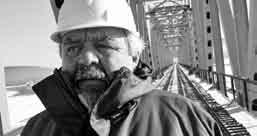
La linea ferroviaria che collega il lago Baikal ad amur è lunga 4300 chilometri. Completata nel 1984, la Baikal-amur magistral (Bam) non ha mai assolto al suo scopo originario. Voluta da Brežnev nel 1974 per collegare duecento stazioni e altrettante comunità della siberia meridionale e consentire così lo sfruttamento delle risorse naturali dell’area siberiana, la Bam avrebbe dovuto essere completata in cinque anni, realizzata dal fior fiore della gioventù comunista. L’ultimo dei grandi progetti monumentali dell’Unione sovietica venne invece inaugurato appena nel 1984, seppur con grande clamore e copertura da parte dei mezzi di informazione. il lavoro dei giovani pionieri era stato infatti filmato per anni e l’opera divenne addirittura il soggetto di molte canzoni, presentata come grande opportunità di crescita per le popolazioni del luogo. Jouni Hiltunen ha attinto a un’enorme quantità di materiali d’archivio sulla Bam, ha intervistato i responsabili dei lavori e creato un documentario che parla dello spirito pionieristico di persone che hanno costruito il futuro con le proprie mani e che continuano, in qualche modo, a conviverci, anche se il resto del mondo preferirebbe dimenticarsi di loro.
JounI hILTunEn
Finlandia - estonia / Finland - estonia 2008, DigiBeta, b-n / b-w & col., 73’ v.o. finnica - russa / Finnish - Russian o.v.
AnTEPRIMA ITALIAnA
ITALIAn PREMIERE sceneggiatura / screenplay: Jouni hiltunen. Fotografia / Photography: Tahvo hirvonen. montaggio / editing: Anne Lakanen. musica / music: Pessi Levanto. suono / sound: Ivo Felt.
Produzione / Produced by: Making Movies oy. Coproduzione / Co-produced by: Allfilms (Estonia).
the railway track between Lake Baikal and amur is 4300km long. Completed in 1984, the Baikal-amur magistral (Bam) never fulfilled its initial function. Bam was a Leonid Brezhnev’s plan, conceived in 1974, to connect 200 stations and communities in five years in southern siberia to tap the natural resources of siberia. the work was to be done mainly by Komsomol elite youth. When this last monumental construction project was opened in the soviet Union in 1984, it was also a media event: the pioneering work of the young builders had been filmed over the years, and was the subject of a number of songs. the railway track was supposed to offer a perspective to population. Jouni Hiltunen lovingly spreads out the ample stock material on the Bam and interviews the leaders of the brigades that lay down the tracks. the result is a documentary about the pioneering spirit, about people who built the future with their own hands and how today they are trying to hold on to it, even if the rest of the world would like to forget them.
CARMEn InConTRA BoRAT
MERCEdES STALEnhoEF
Paesi Bassi / the netherlands 2008, 35mm, col., 85’ v.o. rumena - inglese / Rumanian - english o.v.
AnTEPRIMA ITALIAnA
ITALIAn PREMIERE
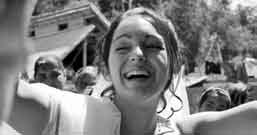
Carmen ha 17 anni e vive a Glod, uno sperduto villaggio gitano sulle montagne romene. Lavora nel bar del padre e viene corteggiata da Christi. sogna però un futuro migliore altrove, di sposare l’uomo dei sogni e condurre una vita ricca e fantastica. Quando un uomo di nome Borat e la sua troupe arrivano in paese, tutti gli abitanti collaborano perché credono che stiano girando un documentario. anche il padre e il nonno di Carmen fanno una comparsata nel film, ma dal momento che nessuno di loro capisce l’inglese, non sospettano nemmeno lontanamente di cosa si tratti. non appena scoprono che il loro villaggio è stato fatto passare per kazako e che nel film Borat li chiama “prostitute”, “ladri” e “abortisti”, capiscono di essere stati presi in giro e si sentono oltraggiati. Quando due avvocati stranieri, un americano e un tedesco, arrivano a Glod e convincono il padre, il nonno di Carmen e il sindaco a fare causa alla twentieth Century Fox per 30 milioni di dollari, l’atmosfera nel villaggio cambia di punto in bianco. Le persone si rendono conto che presto potrebbero diventare molto ricche e cominciano a fantasticare su quello che potrebbero fare con tutti quei soldi. all’improvviso, anche Carmen vede davanti a sé un futuro radioso: diventerà ricca e non avrà bisogno di lasciare famiglia e amici. il paese diventerà un bel posto dove vivere e, in fondo, anche la prospettiva di sposare Christi non sembra poi così male. ma la domanda rimane: il villaggio vincerà la causa? Come cambierà la vita dei suoi abitanti? e Borat finirà con lo scusarsi?
sceneggiatura / screenplay: Mercedes Stalenhoef. Fotografia / Photography: Erik van Empel. montaggio / editing: Gys zevenbergen. musica / music: Vincent van Warmerdam. suono / sound: Mark Wessner.
Produzione, distribuzione internazionale / Produced by, World sales: Pieter van huystee Film.
Col sostegno di / supported by: IKon, BBC, yLE, SBS Television, SuBCuLT-uRA/Romania, The netherland Film Fund, CoBo Fund.
Carmen is 17 years old and lives in Glod, a small gypsy village, somewhere in the Romanian mountains. she works daily in the shop and pub of her father, and has a admirer from the village, Christi. But Carmen dreams of a future somewhere else, somewhere she can find her ideal husband and lead a fantastic and rich life. When a man called Borat and his film crew appear, the villagers cooperate on what they believe will be a documentary. Carmen’s father and her grandfather appear in the film, but as nobody speaks english, they have no clue what the film really is about. as soon as the villagers find out the film Borat makes a fool of them, pretending Glod to be Kazakhstan, they are outraged. Borat calls them ‘whores’, ‘thieves’ and ‘abortionists’. they feel abused and discriminated. When an american and a German lawyer arrive and persuade Carmen’s father, her grandfather and the mayor to sue twentieth Century Fox for 30 million U.s.$., the atmosphere in the village changes tremendously. People start realising they might be rich soon and fantasize about what they want to do with all that money. also Carmen suddenly sees a promising future for herself: she will get rich and doesn’t have to leave her family and friends. the village itself will become a lovely place to live. marrying Christi is not that bad an option after all. the question remains: will the village win the case? How will this affect the life in Glod? and will Borat himself come to apologize?
LA GALLERIA dI AdA
AdA GALLERy
VLAdIMIR KoLAS
Polonia / Poland
2008, Betacam sP, col., 53’ v.o. bielorussa - polacca / Belorusian - Polish o.v.
AnTEPRIMA ITALIAnA ITALIAn PREMIERE

ada Raichonak e suo marito aleh sono un’anziana coppia di agricoltori bielorussi. vivono nella zona più pittoresca del paese, la regione di vitebsk, che ha dato i natali a marc Chagall e ad altri artisti famosi in tutto il mondo. Per contrasto rispetto al meraviglioso paesaggio, la povertà è tanta e la vita delle persone è molto dura. nonostante tutte le cose che ha da fare, ada trascorre gran parte del suo tempo a organizzare ‘plein air’, sessioni di pittura all’aperto. Con le sue limitate risorse, ha comprato una grande casa e l’ha trasformata in una galleria d’arte. al suo interno, espone le opere di tutti gli artisti che d’estate arrivano da tutto il paese per partecipare ai suoi ‘plein air’, attirati dalla bellezza unica del luogo. Per farcela, ada ha bisogno dell’aiuto dei suoi vicini, ma non tutti reagiscono allo stesso modo alle sue iniziative, c’è chi se ne disinteressa, chi è diffidente, riluttante o semplicemente pigro. La Bielorussia è tristemente nota come l’“ultima dittatura d’europa”. in questo clima, essere un libero pensatore non viene visto di buon occhio e persino un’attività innocente come quella di ada non è bene accetta e può causare problemi con le autorità locali. ma non c’è tempo per queste cose, il prossimo ‘plein air’ sta per cominciare…
sceneggiatura / screenplay: Vladimir Kolas. Fotografia / Photography: Vladimir Babaryka, Jury Plushchau, henadz zayats. montaggio / editing: Jury Pivavarau. suono / sound: Ales Tytsiuha, yaraslau Shpak, Raisa Krul.
interpreti / Cast: Ada Raichonak, Aleh Raichonak. Produzione, distribuzione internazionale / Produced by, World sales: Studio Filmowe Everest.
ada Raichonak and her husband aleh are an aged couple of Belarusian farmers. they live in the most picturesque place of Belarus – vitebsk region which had given to the world marc Chagall and other famous artists. there is a lot of poverty and people’s life is very difficult, this makes strong contrast with the wonderful landscapes. Despite many duties ada spends a lot of her time on organizing plein-airs. On her own limited account she bought a waste house in her village and organized a picture gallery in it. in this gallery ada exhibits pictures of the artists who come to her from all over the country for summer artistic sessions (plein-airs), attracted by the unique beauty of local nature. in order to organize the plein-airs ada needs the help from her neighbours, but they respond to her activity in different ways (they are apathetic, distrustful, reluctant or just lazy). Belarus is known as the “Last Dictatorship in europe” and being a freethinker is not too good. even such an innocent activity (plein-airs and creating the gallery) is considered as unwelcome and can cause problems with local authorities. But next plein-air is starting…
ThE WAR oF ThE WAVES.
hISToRy oF A RAdIo ThAT WAS nEVER ThERE
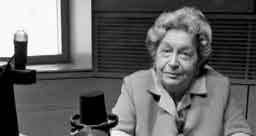
1968, i sovietici invadono la Cecoslovacchia. Occupano, tra le altre cose, la sede di Radio Praga, la radio pubblica cecoslovacca. i suoi giornalisti trovano rifugio in una piccola radio italiana comunista, “Radio Oggi in italia”, che verrà chiusa poco dopo l’invasione di Praga per aver palesato posizioni pro-Dubček. “Radio Oggi in Italia” era nata a Praga nel 1950 e trasmetteva in italiano notizie di attualità e argomenti culturali che riguardavano l’italia, tutti con un’impostazione antigovernativa. L’idea di un programma radiofonico alternativo alla Rai aveva avuto origine all’interno del Partito Comunista italiano, cui era negato l’accesso ai canali radio statali. Fu per questo che “Radio Oggi in italia” non trasmetteva dall’italia, ma da Praga, dove nell’immediato dopoguerra erano espatriati molti ex-partigiani comunisti. superata la fase artigianale degli esordi, la radio si era perfezionata, caratterizzandosi per la tempestività dell’informazione, per la costante polemica con la Rai, per la sua apertura a tutta la sinistra italiana e non solo al PCi. Fu il primo organo d’informazione a dare notizia dei fatti di Ungheria nel 1956 e anticipò la Rai nell’informare dell’accordo tra Kennedy a Chruščëv sui missili di Cuba. Protagonista del filmato è stella, speaker della radio dall’inizio alla chiusura che, per la prima volta dopo tanti anni, decide di tornare a Praga per andare a visitare gli archivi della radio e rivedere i vecchi amici.
CLAudIA CIPRIAnI
italia / italy
2008, DigiBeta, col., 60’ v.o. italiana - ceca / italian - Czech o.v.
AnTEPRIMA ITALIAnA
ITALIAn PREMIERE sceneggiatura / screenplay: Claudia Cipriani. Fotografia / Photography: Simone Pera. montaggio / editing: Claudia Cipriani, Luca Angeleri. musica / music: Max Latronico. suono / sound: Maddalena May. Produzione / Produced by: Ghira Film.
1968: the soviet army invades Czechoslovakia. amongst other things, they occupy the offices of Radio Prague, the Czechoslovakian public-service radio. its journalists take refuge in a small italian communist radio, “Radio Oggi in italia”, which would be shut down shortly after the invasion of Prague for having been pro-Dubchek. “Radio Oggi in italia” had been founded in Prague in 1950 and broadcast news and cultural affairs about italy in italian, all with an anti-government stance. the idea of an alternative radio programme to the Rai had arisen within the italian Communist Party, which was denied access to the state’s radio channels. this was why “Radio Oggi in italia” was not broadcast from within italy but from Prague, to which many former communist partisans had fled immediately after the war. after an initial home-spun phase, the radio had become more professional, being noted for its rapid provision of news, for its constant diatribe against the Rai, for its openness to the whole of the italian left and not merely the PCi (italian Communist Party). it was the first information medium to provide word of the events in Hungary in 1956 and also stole a march on the Rai in giving information concerning the agreement between Kennedy and Kruschev for the missiles on Cuba. the protagonist of the film is stella, the radio’s presenter from the start until it closed; for the first time after many years, she has decided to return to Prague to visit the radio’s archives and meet old friends.
ESISTEnzA
ExISTEnCE
MaRciN KoSZaŁKa
Polonia / Poland
2007, super 16mm, col., 68’ v.o. polacca / Polish o.v.
AnTEPRIMA ITALIAnA
ITALIAn PREMIERE
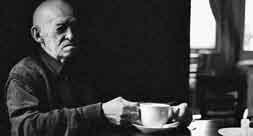
Jerzy nowak è un attore polacco di 84 anni. Famoso nel suo paese per aver recitato in molti film (fra cui quelli di Wajda e in Schindler’s List di spielberg), decide che dopo la morte il suo corpo venga donato alla scienza. il documentario mostra il processo interiore con cui l’uomo prende questa decisione, i suoi dubbi e le sue riflessioni sulla morte. Come attore, sa che sarà il suo primo ruolo da protagonista, ma anche l’ultimo della sua vita. in modo personale, ironico e a volte ottimista, nowak spiega appassionatamente le ragioni di questa controversa decisione...
sceneggiatura, fotografia / screenplay, Photography: Marcin Koszałka. montaggio / editing: Anna Wagner. musica / music: zygmunt Konieczny. suono / sound: Bartek Putkiewicz, Piotr Knop, Matiusz Bielecki, Krystof Suchodolski. interpreti / Cast:
Jerzy nowak, Marie Andruszkiewicz, Jan Adamski, Robert Jarosz, Antoni Karwowski, Andrzej Konic, zygmunt
Konieczny, Beata Rybotycka, Konstanty Slusarczyk, Jerzy Turbasa, Marek Walerian.
Produzione / Produced by: hBo Polska.
Coproduzione / Co-produced by:
Studio Filmowe oto.
Con il sostegno di / supported by: Polish Film Institute.
Jerzy nowak, a renowned 84 year old Polish actor who has appeared in andrzej Wajda films as well as in steven spielberg’s Schindler’s List, decided that after death, his body should be used for the benefit of science. this intimate documentary follows mr. nowak as he makes this most personal and final decision and reveals his own dilemmas and thoughts about death. as an actor, Jerzy is playing his last role, while at the same time the first leading role of his life. Personal, ironic and often times positive, Jerzy nowak passionately explains the reasons for this controversial decision...
LA ConnECTIon dEL CAVIALE
ThE CAVIAR ConnECTIon
DRagaN NiKoLić
serbia - Usa 2008, HD, b-n / b-w & col., 58’ v.o. serba / serbian o.v.
AnTEPRIMA ITALIAnA ITALIAn PREMIERE
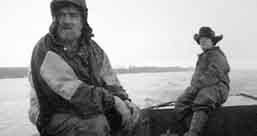
Lungo le sponde del Danubio, i pochi abitanti rimasti cercano di sbarcare il lunario con la pesca. tutti loro sognano di trovare nella loro rete un grasso storione, le cui uova valgono letteralmente tanto oro quanto pesano. il “narratore” del documentario è proprio uno storione ed è lui a presentarci i personaggi principali: i fratelli ivan e Dragan, figli del leggendario pescatore Pa Drnda, costretto a farsi da parte e a vedere la propria prole rovinare la sua ottima reputazione. il film segue i due fratelli durante i periodi di magra e ne osserva le piccole preoccupazioni di ogni giorno: il doloroso risveglio dopo l’ennesima nottata a base di alcool, la preparazione abituale della barca e delle reti, le discussioni con gli altri pescatori sulla divisione delle zone dove pescare, la pesca deludente, sempre che ci sia qualcosa da pescare. Un lavoro ingrato che viene interrotto, di tanto in tanto, da una sala da bingo “mobile” che arriva nel sudicio centro del paese, dove la gente segna i numeri mentre sullo sfondo va un film porno; oppure dalla morte, sempre vicina e favorita dallo stile di vita malsano degli abitanti del luogo. Un bando sulla pesca sostenuto dall’Unione europea finirà per introdurre un cambiamento di enorme portata. Difficile stabilire però se in meglio o in peggio...
“La Serbia è un paese in cui la realtà supera la fantasia. In questa terra di sognatori, di combinazioni e calcoli, i fratelli Rat seguono le loro ingenue fantasie, in un modo così toccante e allo stesso tempo inafferrabile che riflette il moderno ‘selvaggio west’ di cui la Serbia fa parte.” (D. Nikolić)
sceneggiatura / screenplay: Dragan Nikolić.
Fotografia / Photography: Dragan Nikolić, Dejan Madić, Srđan Keca.
montaggio / editing: Miloš Stojanović. musica / music: Dragan Ristić & Kal. sound / suono: Dobrivoje Milijanović.
voce narrante / narrator: Biljana Milenović.
Produzione / Produced by: Prababa produkcija.
Coproduzione / Co-produced by: Independent Television Service (ITVS International, usa).
Con il sostegno di / supported by: Film Center Serbia, Jan Vrijman Fund & IdFAcademy Programme, City of Belgrade – Secretariat for Culture, Pro helvetia Belgrade.
Distribuzione internazionale / World sales: Film Transit International.
On and around the Danube river, the scarce locals try to eke out a living by fishing. they all dream of finding a fat sturgeon in their nets, whose eggs are literally worth their weight in gold. the voice-over in this observing documentary is a sturgeon’s, who introduces the main characters: the brothers ivan and Dragan, sons of legendary fisherman Pa Drnda, who is forced to stand by and watch his offspring wreck his fine reputation. the film follows the two brothers during the barren seasons in their day-today worries: the painful awakening after yet another late and inebriated night, the practised preparation of the boat and nets, the quarrels with other fishermen about fishing territories, the disappointing catch, if there is one. the drudgery is occasionally interrupted. By a bingo drive in the dirty village centre, where people fill in the numbers while a porn movie plays in the background. Or by death, which is never far away due to the population’s unhealthy lifestyle. a fishing ban enforced by the european Union eventually causes a trail-blazing change, but the film ignores the question whether it is for the better.
“Serbia is a country in which reality prevails even the most vivid imagination. In this land of dreamers, combinations and calculations, the Rat brothers, are following their naive dreams, in a touchy and subtle way which reflex a modern ‘wild west’, that Serbia is a part of.” (D. Nikolić)
A METà dELLA MIA VITA (hALF) ThE TIME oF My LIFE
MARKo doRInGER
austria 2008, 35mm, col., 93’ v.o. tedesca / German o.v.
AnTEPRIMA ITALIAnA ITALIAn PREMIERE
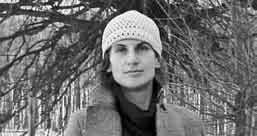
il regista marko Doringer attraversa una crisi profonda: ha 30 anni, non ha combinato nulla nella vita e ha appena perso il suo primo molare. il decadimento fisico è iniziato, la giovinezza sta svanendo velocemente. Cosa gli riserva la vita prima che sia tutto finito? Decide quindi di imbarcarsi in una missione molto personale: visiterà i suoi vecchi amici, i genitori e i loro amici per capire se stanno meglio di lui. Perché deve essere così duro avere 30 anni? Perché è tanto difficile accettare il successo altrui e il proprio? Mein halbes Leben è, allo stesso tempo, il ritratto ironico di un’intera generazione, una versione reale e contemporanea di un romanzo di formazione e uno sguardo al futuro di marko.
“Quando avevo 20 anni, la mia vita era semplice, lineare. La parola ‘tempo’ non significava granché per me. 10 anni dopo la mia visione delle cose è del tutto cambiata. Non ho niente. Non sono niente. Ancora 30 anni e sarò morto. A differenza di chi ci ha preceduto, la mia generazione non ha dovuto patire né guerra né privazioni. Ci possiamo concedere il lusso di crescere tardi. Le mie riflessioni nascono dal fatto che sono l’ennesimo trentenne coccolato della classe media? Si può rimanere bambini in eterno? Oppure arriva un momento biologico, in cui il nostro corpo o la nostra coscienza ci dicono che è ora di darsi da fare e realizzare qualcosa di significativo per la nostra vita?” (M. Doringer)
sceneggiatura, fotografia / screenplay, Photography: Marko doringer.
montaggio / editing: Marko doringer, Martin hoffmann. musica / music: Les hommes Sauvages (Kristof hahn, Viola Limpet). suono / sound: Johannes Schmelzer-ziringer, Markus Böhm.
interpreti / Cast: Katha harrer, Martin obermayr, Thomas Berger, Marko doringer.
Produzione / Produced by: Filmfabrik Marko doringer Filmproduktion.
Coproduzione / Co-produced by: nGF - nikolaus Geyrhalter Filmproduktion Gmbh.
Con il sostegno di / supported by: Österreichisches Filminstitut, cine Styria, Land niederösterreich, Land Salzburg, Stadt Salzburg.
Distribuzione internazionale / World sales: Cinephil.
Filmmaker marko Doringer is in a deep crisis: he is 30 years old, hasn't achieved anything in life, and has just lost his first molar. Bodily decay has begun, youth is disappearing fast. What else is there in life before it’s all over? marko has decided to go on a very personal mission. He will visit old friends, his parents, and their friends to find out whether they are better off than him. Why does being 30 have to be this hard? Why is it so difficult accepting the success of others? Why it is so difficult to accept one’s own? Mein halbes Leben is an ironic self-portrait of a whole generation, a real life version of a coming-of-age novel of our present, and marko’s future.
“When I was 20, my life was simple, straightforward. The term ‘time’ didn’t mean anything to me. Roughly ten years later my view on life has changed completely. I have nothing, I am nothing. Another 30 years and I will be dead. Unlike generations before us ours has never experienced war or starvation. We have the luxury of being able to grow up late in life. So, do I have these thoughts because I'm just another spoiled 30 year old Western European middle class child? Do our generation want to remain children forever? Is there a biological time, when our bodies or consciousness tells us to get up and finally do something significant with our lives?” (M. Doringer)
LA MAdRE
ThE MoThER
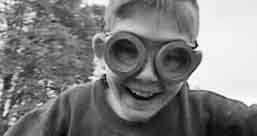
Liuba è una donna russa che si è rifugiata in campagna con i suoi 9 figli per sfuggire a un marito violento. Li cresce con l’aiuto della figlia maggiore, alessia, in una fattoria collettiva dove entrambe lavorano. La ragazza si occupa delle mucche e di tutti i lavori di casa: cucina, tiene pulita la casa, lava i vestiti di tutti. tirare avanti è dura e si vive alla giornata, ma nonostante questo Liuba decide di adottare un altro bambino di appena 3 anni, figlio di una sua collega della fattoria che non si occupa affatto di lui. Un giorno alesia incontra Zhenia, che guida il trattore nella stessa fattoria, e sembra intenzionata a sposarlo. il ragazzo non si ubriaca e gli piacciono i bambini e questo lo rende diverso da tutti gli altri uomini del luogo… Ritratto forte, duro ma allo stesso tempo poetico di una donna che, in mezzo a mille problemi, riesce tuttavia a dimostrare ai suoi figli l’amore che nutre per loro e a vivere un’esistenza dignitosa.
“Quello che rende eccezionale la storia di questa madre non sono solo le cose che le capitano … ma l’amore sconfinato che, nonostante tutto, sa dimostrare. Ed era proprio questo che volevamo fare: un ritratto emotivo, insieme realistico e poetico di una donna incredibilmente forte che, malgrado le privazioni e la povertà della società che la circonda, trova ancora la voglia e la forza per continuare a lottare, per il bene dei suoi figli.” (A. Cattin, P. Kostomarov)
AnToInE CATTIn, PAVEL KoSToMARoV svizzera / switzerland 2007, DigiBeta, col., 80’ v.o. russa / Russian o.v.
AnTEPRIMA ITALIAnA
ITALIAn PREMIERE sceneggiatura, fotografia, montaggio, suono / screenplay, Photography, editing, sound: Antoine Cattin, Pavel Kostomarov. musica / music: Thierry van osselt, Alexander J.S. Craker, oleg Gazmanov, Valerija. Produzione, distribuzione internazionale / Produced by, World sales: Les Films hors-Champ. Coproduzione / Co-produced by: Les Films d’Ici, Parallax Pictures, Télévision Suisse Romande, ARTE France.
Lyuba fleed with her 9 children to the Russian countryside to escape from a violent husband. she raises them along with her eldest daughter alessia, who like her mother works at a collective farm of the village. she minks cows and she is also the one who does the “women's work”: cooking, housekeeping, laundry. Life is hard but despite the family’s hand-to-mouth existence, Lyuba still intends adopting 3-year-old sasha, who is being totally neglected by a work colleague. One day alesia meets Zhenia, a tractor driver at the collective farm. she seems willing to marry him. One must admit that Zhenia doesn’t drink and likes children, which is rather unusual around there... an unusually strong, raw yet also poetic portrait of a woman who, despite her ill fortune, manages to express her love for her children and live a dignified existence.
“What makes this mother’s story exceptional is not only the ‘facts’ … it is because of her boundless love, in spite of it all, that she is extraordinary. And this is what we tried to depict. Our intention was to draw her emotional portrait, at once realistic and poetic: a prodigiously strong woman who, despite hardships and the poverty of the society around her, finds the will and strength to go on fighting, for her children’s happiness.” (A. Cattin, P. Kostomarov)
CLAudIA ToSI
italia - slovenia / italy - slovenia 2008, Betacam sP, col., 74’ v.o. bosniaca - inglese / Bosnian - english o.v.
AnTEPRIMA ITALIAnA
ITALIAn PREMIERE

Dopo aver combattuto nella guerra di Bosnia per proteggere la sua mostar e il Ponte, mensud Durakovic è impegnato in una nuova battaglia: trasmettere alle nuove generazioni il senso perduto dell’unità. Divisa e avvelenata dal nazionalismo, mostar non è più la montmartre dei Balcani come lo era prima della guerra, ma due ghetti separati da un grande boulevard. sul campo della sua scuola di calcio del velez, la squadra storica di mostar, mensud guida un esercito di ragazzini, ma suo figlio Dzenan, uno degli allievi, sogna un ingaggio in europa e una vita lontana dall’odio. Per mensud non è una situazione facile da accettare, ma una nuova generazione di bambini è già sul campo che lo aspetta.
“Volevo fare un film sulla Mostar che non ho conosciuto, quella che la mia migliore amica, una ragazza mostarina, ricordava come una città gioiosa e multiculturale, prima che la guerra e il nazionalismo la spaccassero in due e la avvelenassero. Ho cercato ciò che poteva essere sopravvissuto, ammesso che qualcosa lo fosse, di quel passato in cui Mostar era la città di tutti. È così che ho trovato il Velez Football Klub. Prima del ’92, anno in cui esplose il conflitto, tutta la città andava allo stadio a gridare ‘Mostar nel cuore, Velez fino alla tomba’. Con la guerra tutto è cambiato. Oggi il Velez non è più l’orgoglio di tutti, ma rappresenta una sola parte della città, e durante i derby tra le due squadre di Mostar, l’atmosfera è quella dello stato di assedio, con un migliaio di agenti, tra poliziotti, forze internazionali di pace e guardie di sicurezza.” (C. Tosi)
sceneggiatura / screenplay: Claudia Tosi. Fotografia / Photography: Brand Ferro. montaggio / editing: Rasmus høgdall Mølgaard. musica / music: daniele Rossi. suono / sound: Claudia Tosi, Vladimir Rakic. Produzione, distribuzione internazionale / Produced by, World sales: SteFilm International.
Coproduzione / Co-produced by: Petra Pan Film Production (Slovenia), Multicanal Iberia s.l.u. in associazione con / in association with: Lichtpunt, yLE FST, nRK, RTV Bih Bosnia Erzegovina, RTV Slovenija, TSI. Con il sostegno di / supported by: Filmski Sklad Republike Slovenije, Piemonte doc Film Fund - Fondo Regionale per il documentario, Provincia di Modena, Assemblea Legislativa Regione Emilia Romagna, uISP per Adottalapace, Peacegames, Movimenta, Programma MEdIA.
mensud Durakovic fought in the Bosnian war, defending his hometown mostar and the Old Bridge. now that peace has returned and the Bridge has been rebuilt, mensud is fighting once again, this time against the new nationalist mentality. torn apart and enraged by ethnical conflict, mostar is more like two ghettos divided by a big boulevard, than the joyful montmartre of the Balkans that it was before the war. From the pitch of the velez football school, the legendary team of mostar, mensud teaches an army of kids the value of friendship and unity. His son, Dzenan, his best player, cannot stand this struggle any longer. He dreams of playing for a major european team and living in a safe environment. it's not easy for mensud to accept this bitter end but a new generation of kids is already on the pitch waiting for him.
“I wanted to make a film about the Mostar that I had never known, which my best friend, a girl from Mostar, remembered as a joyous and multicultural city before war and nationalism tore it in two and destroyed it. I searched for what might have survived, assuming something had, of that past when Mostar was a city which belonged to everyone. It was here that I found the Velez Football Club. Before ’92, the year when the conflict broke out, the entire city would go to the stadium to shout ‘Mostar’s in my heart, Velez until I die’. With the war everything changed. Velez is no longer the pride of everyone but represents just one side of the city and, during the derby between the two Mostar teams, the atmosphere is that of a state of emergency with a thousand policemen, international peace forces and security guards present.” (C. Tosi)
CITTAdIno hAVEL
CITIzEn hAVEL
PAVEL KouTECKý, MIRoSLAV JAnEK
Repubblica Ceca / Czech Republic 2008, 35mm, col., 120’ v.o. ceca - inglese / Czech - english o.v.
AnTEPRIMA ITALIAnA ITALIAn PREMIERE
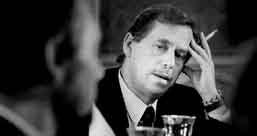
Con la divisione della Cecoslovacchia, nel 1992, l’ex dissidente, leader della Rivoluzione di velluto, commediografo e saggista václav Havel è diventato il primo presidente di un nuovo paese, la Repubblica Ceca. L’ex nemico dello stato si è trovato così investito del mandato popolare di trasformare proprio quello stato e quelle istituzioni che prima contestava. Cose del genere non si verificano tutti i giorni e quindi l’uomo politico decise di permettere al suo amico, il regista Pavel Koutecký, di rimanere vicino a lui per catturare il più possibile di questa sua nuova vita, sia a Praga che all’estero. nel corso dei successivi 13 anni, regista e troupe hanno accumulato 45 ore di immagini e 90 ore di registrazioni. Una mole di materiale unico, che oltre a comporre un ritratto dell’uomo Havel, getta uno sguardo dietro le quinte della politica internazionale fra la fine del ventesimo e l’inizio del ventunesimo secolo (nel documentario compaiono protagonisti illustri della scena internazionale, da Bill Clinton a Jacques Chirac, ma anche mick Jagger e i Rolling stones) e degli eventi che hanno segnato la transizione di un paese dal totalitarismo alla democrazia.
sceneggiatura / screenplay: Pavel Koutecký. Fotografia / Photography: Stano Slušný. montaggio / editing: Tonička janková, Martin Steklý. suono / sound: daniel nímec, Viktor Ekrt. interpreti / Cast: Václav havel.
Produzione / Produced by: Film a Sociologie s.r.o.
Coproduzione / Co-produced by: negativ s.r.o.
Distribuzione internazionale / World sales: deckert distribution.
after the split of Czechoslovakia in 1992, former political dissident, leader of the velvet Revolution, playwright and essayist václav Havel became the first president of a new country, the Czech Republic. thus it came to pass that a former enemy of the state was actually given the popular mandate to transform that state and its institutions. such events are not commonplace so from the beginning, he permitted his friend, filmmaker Pavel Koutecký, to be with him and capture as much of it as possible, whether in Prague Castle or around the world (in the film we see Bill Clinton, Jacques Chirac, mick Jagger and the Rolling stones among others). in the course of 13 years the crew has filmed 45 hours of images and recorded 90 hours of sound material. this truly unique material offers a portrait of Havel but also new looks behind the scenes of international politics in the late twentieth and early twenty-first century, and also into events in a post-totalitarian country during its transition to democracy.
un CoMPLETo PoLVERoSo duSTy SuIT
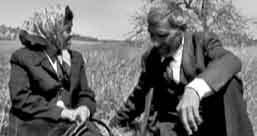
molto tempo fa, Frici, della comunità Rom, era un musicista e un cantante. sua moglie, però, non riusciva ad accettare il fatto che se ne stesse lontano da casa per lunghi periodi, così Frici ha venduto il suo strumento. Da quel momento la sua vita è cambiata: si guadagna da vivere con lavori di fatica e di rado ha l’occasione di salire su un palco. Di tanto in tanto, lo invitano a cantare ai festival di danze popolari. È in quelle occasioni che ricorda i bei giorni andati e piange sul suo destino.
ARThuR BáLInT
Ungheria / Hungary 2007, Betacam sP, col., 76’ v.o. ungherese / Hungarian o.v.
AnTEPRIMA ITALIAnA
ITALIAn PREMIERE sceneggiatura, Fotografia / screenplay, Photography: Arthur Bálint. montaggio / editing: Károly Kovács. sound / suono: Vince Kapcsos. interpreti / Cast: Ferenc Lévai. Produzione / Produced by: dunatáj Alapítvány. Con il sostegno di / supported by: Magyar Mozgókép Közalapítvány, oktatási és Kulturális Minisztérium.
a long time ago Frici, a gipsy, used to be musician and singer, but his wife could not accept, that he is very often far from home, therefore he sold his instrument. since than his life has changed: he earns money by physical work and he rarely has the opportunity to stand on stage. sometimes he is invited to folkdance camps as a singer, where he remembers the good old days and mourns over his fate.
PARATA REVuE
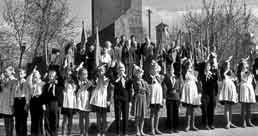
Documentario d’archivio che raccoglie i filmati di propaganda sovietici degli anni ’50 e ’60 e mostra aspetti pressoché dimenticati dell’epoca sovietica e della mentalità che l’hanno contrassegnata. Un viaggio nella vita quotidiana di persone sparse in tutta la madrepatria sovietica, una vita condotta all’insegna della durezza, delle privazioni e di rituali assurdi, ma allo stesso tempo illuminata dalla luce gloriosa dell’illusione comunista.
SERGEJ LoznICA
Germania - Russia - Ucraina / Germany - Russia - Ukraine 2008, 35mm, b-n / b-w, 82’ v.o. russa / Russian o.v.
AnTEPRIMA ITALIAnA
ITALIAn PREMIERE montaggio / editing: Sergej Loznica. suono / sound: Vladimir Golovnitsky. Produzione / Produced by: ma.ja.de. Filmproduktions. Coproduzione / Co-produced by: St. Petersburg documentary Film Studio, MdR. in associazione con / in association with: yLE TEEMA, Inspiration Films. Distribuzione internazionale / World sales: deckert distribution.
the documentary is based on archive propaganda newsreels produced in the UssR in the 50-s and 60-s. the film shows the almost forgotten side of the soviet times and the way of thinking at that period. it explores the life of people all across the vast expanse of the soviet motherland, though full of hardship, deprivation and absurd rituals, but at the same time illuminated by the glorious shining of the communist illusion.
LA RIVoLuzIonE ChE non C’È STATA
ALJonA PoLunInA
estonia - Finlandia / estonia - Finland 2008, DigiBeta, col., 96’ v.o. russa / Russian o.v.
AnTEPRIMA ITALIAnA
ITALIAn PREMIERE
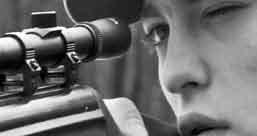
nella Russia del 2007, l’opposizione al regime di Putin si prepara alle elezioni presidenziali che avranno luogo esattamente un anno dopo. anatolij e andrej non sono semplicemente due oppositori, bensì due veterani della rivoluzione. secondo loro, solo un cambiamento radicale potrebbe far nascere “un’altra Russia”. tuttavia, in quanto membri del fuorilegge Partito nazionale Bolscevico, hanno scelto di provare a seguire la strada della democrazia, anche se sia la vittoria che la Rivoluzione appaiono del tutto improbabili. Così, mentre il figlio adolescente di anatolij continua a credere nella causa, anatolij trova consolazione nella chiesa ortodossa, nemica storica della Rivoluzione russa. il documentario mostra il conflitto permanente che esiste fra un’opposizione che rimane aggrappata agli ideali che un tempo ispiravano l’Unione sovietica e quelli di coloro che governano la Russia con pugno fermo e neo-capitalista. Un ritratto di quegli attivisti politici che operano clandestinamente, consapevoli della possibilità di dover sacrificare anche la propria vita per combattere contro un sistema che, dall’interno, sembra indistruttibile.
sceneggiatura, montaggio / screenplay, editing: Aljona Polunina.
Fotografia / Photography: dmitry Rakov, Irina Shatalova. sound / suono: Kyösti Väntänen.
Produzione / Produced by: Kuukulgur Film.
Coproduzione / Co-produced by:
Mrp - Matila Röhr Productions oy.
Distribuzione internazionale / World sales: Rise and Shine / Kloos & Co. Medien.
in Russia 2007, the opposition to Putin’s regime is gathering forces for the next presidential elections due in exactly one year. anatoly and andrei are not just two such opposition fighters, they are veteran revolutionaries. according to them, only a revolution can bring about “the other Russia”. However, as members of the banned national Bolshevik Party they will try and go the “democratic” way - but neither Revolution nor victory are in sight. While anatoly’s teenage son remains with the political cause, anatoly finds spiritual refuge in the Orthodox Church – the Russian revolution’s arch-enemy. The Revolution That Wasn’t shows us the ongoing conflict between an opposition clinging onto the ideals that once formed the soviet Union and those ruling Russia with a firm neo-capitalist grip. a film about political activists in the Russian underground who know they might have to sacrifice their lives in order to fight a system which seems unbreakable from within.
AMoRI CIEChI BLInd LoVES
JuRAJ LEhoTSKý
Repubblica slovacca / slovakia 2008, 35mm, col., 77’ v.o. slovacca / slovak o.v.
AnTEPRIMA ITALIAnA
ITALIAn PREMIERE
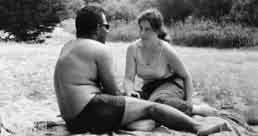
trovare il proprio posto nel mondo e qualcosa che consenta di essere felici è già difficile per chi ci vede. Quanto più arduo può essere per un non vedente? La “vista” delle persone non vedenti è spesso pura ed essenziale, brillante e capace di scoprire nuove dimensioni della parola “felicità”. tentativo sincero di rappresentare il mondo in cui vive chi non vede, il documentario è anche una riflessione -attenta e molto potente sul piano emotivo- sui sentimenti e le emozioni più private delle persone non vedenti, condotta attraverso la storia di Peter, miro, elena e Zuzana. tutti ciechi dalla nascita, sono riusciti col tempo a crearsi un mondo interiore pieno di sogni, percezioni e punti di vista spesso singolari, ma con un’idea in comune: il bisogno di amore che tutti ci accomuna.
“Il fatto che esistano persone che sono nate nell’‘oscurità’ pone molti interrogativi sul modo in cui queste persone vivono. Secondo me, una delle domande principali riguarda la fonte della loro felicità. È vero che vivono senza poter vedere, ma sono più ricchi in altre cose, nella dimensione spirituale per esempio. Magari, sono proprio loro quelli che capiscono la vera essenza della felicità.” (J. Lehotský)
sceneggiatura / screenplay: juraj Lehotský, Marek Leščák. montaggio / editing: František Krähenbiel.
Fotografia / Photography: Juraj Chlpík.
suono / sound: Marián gregorovič, František Krähenbiel.
animazioni / animation: Michal Struss, Štefan Martauz, Slavo Šmalík, Joanna Kożuch, Róbert Baxa, Eva Janovská, Martin Snopek, Ivana zajacová.
interpreti / Cast: Peter Kolesár, Iveta Koprdová, Miro daniel, Monika Brabcová, Jolana danielová, Anna Brabcová, zuzana Pohánková, Radoslava Badinková, Manželia elena. Produzione / Produced by: Artileria.
Con il sostegno di / supported by: AudioVízia programme. Distribuzione internazionale / World sales: Autlookfilmsales.
to find one’s true call and happiness in this world is a difficult task for those of us who can see. How much more difficult it can get for the blind? the “view” of blind persons is often pure and essential, and very often witty. it uncovers new dimensions of meaning of happiness. Blind Loves is a very genuine attempt to depict the world blind people live in. On the other hand it is also a sensitive and emotionally extremely powerful reflection of the most intimate feelings and emotions of blind people. main characters are four people who were born with no sight, Peter, miro, elena and Zuzana. they’ve been creating a world of their own which is often full of unusual dreams, perceptions and ideas and are united by the idea of love and their need for it.
“The fact that someone is born to “darkness” calls for a number of questions about the ways these people live. One of the most important of them in my opinion is where the source of their happiness is? Their world might be lacking sight but it can be richer in spirituality on the other hand. And maybe it’s them who really understand the true essence of happiness.” (J. Lehotský)
CI VEdIAMo ALLA ToRRE EIFFEL
SEE
you AT ThE EIFFEL ToWER
VaLeNTiN VaLčeV
Bulgaria
2008, DigiBeta, b-n / b-w & col., 96’ v.o. bulgara - inglese - francese - polacca - italiana - russa / Bulgarian - english - French - Polish - italian Russian o.v.
AnTEPRIMA ITALIAnA
ITALIAn PREMIERE

marion Koblitz, di origine americana, fotografa, meglio nota come marion michelle, è stata sceneggiatrice, operatore e compagna di Joris ivens, fra il 1944 e il 1951. nel 1947 ivens e la michelle iniziarono un viaggio attraverso l’europa dell’est per realizzare de eerste jaren, sulla costruzione del socialismo in quella parte d’Europa. Nella Bulgaria di oggi, il regista Valentin Valčev decide di ripercorrerne le tracce insieme alla sua troupe, lungo le strade dell’europa post-comunista. valentin ha promesso a marion michelle di tornare a visitare i luoghi da lei filmati 60 anni prima e di farne un film. marion, da parte sua, gli ha promesso che vivrà abbastanza a lungo per vederlo. Valčev le porta ciò che ha girato, nella casa alla periferia di Parigi, poco prima della morte, all’età di 93 anni, nel 2007: attraverso le immagini marion ritrova le persone e i posti di allora. La ricerca di valentin e quella di marion si trasformano a poco a poco in una riflessione su quale sia il senso generale del fare cinema.
sceneggiatura / screenplay: Valentin Valčev.
Fotografia / Photography: Boris Missikrov, Georgi Bogdanov. montaggio / editing: Svetla neykova.
musica / music: Ivo Paunov. suono / sound: Momchil Bozhkov.
Produzione / Produced by: Agitprop.
Coproduzione / Co-produced by: Ragusa Film.
in associazione con / in association with: yLE Teema Atelje. Con il sostegno di / supported by: national Film Centre (Bulgaria), Programma MEdIA.
the originally american photographer marion Koblitz, better known as marion michelle, was Joris ivens’ screenwriter, camerawoman and girlfriend between 1944 and 1951. in 1947 ivens and michelle set on a journey through eastern europe to make de eerste jaren in 1949, about the socialist construction of eastern europe. today. Bulgarian filmmaker valentin valchev and his crew set out on a journey through post-Communist eastern europe. valentin promised 93-years-old marion michelle that he would revisit the places she had filmed 60 years earlier and make a film about it. she promised to live to see his film. He brings her what he has found at her home on the edge of Paris, shortly before she died at the age of 93, on 2007. through the camera she reconnects with people from all those places. marion and valentin’s quest gradually turns into an exploration of the general purpose of filmmaking.
RaTa Neće BiTi (THeRe WiLL Be No WaR)
dAnIELE GAGLIAnonE
italia / italy 2008, Betacam sP, col., 170’
v.o. italiano - inglese - serbo - croato - bosniaco / italian - english - serbian - Croatian - Bosnian o.v.
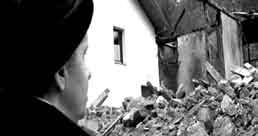
Una serie di incontri e di viaggi in Bosnia erzegovina. La notte di Capodanno, Zoran cammina per le strade della sua sarajevo e ripercorre un’infanzia di guerra; alla periferia della città, nella parte “serba”, saša difende l’ideale nazionalista; aziz, invece, ex soldato dell’armija bosniaca, compie un viaggio a ritroso verso il fiume Drina, dove sorgeva il villaggio della madre. altre storie e ricordi si intrecciano nel viaggio, mentre a srebrenica si provano le danze per uno spettacolo e, per un attimo, la guerra sembra lontana. Premio speciale della Giuria nel concorso “italiana.doc” al torino Film Festival.
“In quei luoghi, il tempo della guerra pesa ancora in modo determinante sul presente, sulla questione politica, sulle psicologie individuali e sulle relazioni umane. È un passato tragico che incombe su un presente dove l’oggi non c’è ancora.
La sensazione di attraversare un tempo sospeso mi ha guidato nel realizzare il documentario e in qualche modo ha dato forma alla sua struttura, alla sequenza dei capitoli in cui personaggi e racconto si prendono il proprio tempo, cercando forse di rompere quel limbo che li imprigiona”. (D. Gaglianone)
sceneggiatura / screenplay: daniele Gaglianone, Andrea Parena, Enrico Giovannone.
Fotografia / Photography: daniele Gaglianone, Andrea Parena.
montaggio / editing: Enrico Giovannone. suono / sound: Vito Martinelli, Angelo Galeano.
interpreti / Cast: zoran herceg, Saša, Aziz, hajra čatić, Mohamed Bektić, jasmina Mameledžma, il personale dell’International Commission
of Missing Persons / the personnel of the International Commission of Missing Persons.
Produzione, distribuzione internazionale / Produced by, World sales: Babydoc Film.
Coproduzione / Co-produced by: Gianluca Arcopinto.
Con il sostegno di / supported by: Piemonte doc Film Fund - Fondo regionale per il documentario.
a series of encounters and trips in Bosnia and Herzegovina. On new Year’s eve, Zoran is walking through the streets of his hometown, sarajevo, and thinks back to his childhood spent during the war. in the outskirts of the city, in the “serbian” sector, sasha defends nationalistic ideals. aziz, a former soldier in the Bosnian armija, follows the Drina river upstream to where his mother’s village used to be located. Other stories and memories intertwine during the voyage, while in srebrenica, dancers rehearse for a performance and, for a moment, the war seems far away.
special Jury award at the turin Film Festival (“italiana.doc” competition).
“In those places, the war still weighs heavily on the present, on political issues, on the psychology of the people and on human relations. This tragic past looms over a present in which ‘today’ still doesn’t exist yet. The feeling of crossing through suspended time guided me as I made this documentary and, to a certain extent, gave form to its structure, to the sequence of the capitals, in which the people and the story take their own time. Maybe they were trying to break out of the limbo that imprisons them.” (D. Gaglianone)
oMAGGIo A VoLKER KoEPP
Le donne di Wittstock: una storia tedesca dal muro a oggi.
A TRIBuTE To VoLKER KoEPP
The women of Wittstock: A German tale from the Wall until today.

LE RAGAzzE dI WITTSToCK
WITTSToCK GIRLS

sceneggiatura / screenplay: Volker Koepp, Wolfgang Geier, Richard Ritterbusch.
Fotografia / Photography: Christian Lehmann, Michael zausch. montaggio / editing: Barbara Masanetz-Mechelk. musica / music: Konrad Körner.
suono / sound: Eberhard Pfaff, hans-Jürgen Mittag. Commento / voice Over: dieter Mittag.
Produzione / Produced by: dEFA-Studio für dokumentarfilme, AG document.
VoLKER KoEPP
Germania est / east Germany
1975, 35mm, b-n / b-w, 19’ v.o. tedesca / German o.v.
nel 1974, volker Koepp dà inizio alla sua osservazione del paese di Wittstock an der Dosse. Ci tornerà, a intervalli irregolari, per i successivi 23 anni e il frutto di tutto questo sarà la famosa “serie di Wittstock”. in questo primo capitolo facciamo la conoscenza di tre operaie che lavorano in una fabbrica tessile: edith, elsbeth e Renate. attraverso le loro vite, i loro sogni e desideri, il lavoro difficile che svolgono nella fabbrica, Koepp intendeva non solo cercare di capire in che modo delle giovani provenienti da una regione agricola potessero diventare delle operaie, ma anche il modo in cui l’industria stava cambiando l’ambiente circostante, oltre che la vita e il modo di pensare delle persone.
in 1974, volker Koepp began his famous long-term observations (23 years) in Wittstock an der Dosse. He returned to Wittstock at irregular intervals to follow up events at the factory and what was happening to the three women. in this first episode of the Wittstock chronicle (he realized the last one in 1997) he introduces female workers in a knitting factory: edith, elsbeth and Renate. through them, their way of live, their personal dreams and wishes and their troubled work at the factory. Koepp not only wanted to investigate how young people from an agricultural region become factory workers, but he also wanted to record how industry changes the environment and people’s life and thoughts.
trieste

RIToRno A WITTSToCK BACK In WITTSToCK
sceneggiatura / screenplay: Volker Koepp.
Fotografia / Photography: Christian Lehmann.
montaggio / editing: Rita Blach.
musica / music: Mario Peters.
suono / sound: otto Koch, hans-Jürgen Mittag.
Commento / voice Over: Volker Koepp.
Produzione / Produced by: dEFA-Studio für dokumentarfilme, AG document.
VoLKER KoEPP
Germania est / east Germany 1976, 35mm, b-n / b-w, 22’ v.o. tedesca / German o.v.
Come hanno passato l’anno le ragazze della fabbrica, le protagoniste del primo documentario?
What was last year like for the young women working at the textile factory?
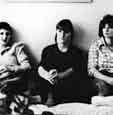
LEBEn und WEBEn
VITA E TESSITuRA
LIVInG And WEAVInG
sceneggiatura / screenplay: Volker Koepp, Wolfgang Geier.
Fotografia / Photography: Christian Lehmann.
montaggio / editing: Barbara Masanetz-Mechelk.
suono / sound: Eberhard Pfaff, hans-Jürgen Mittag.
Commento / voice Over: Volker Koepp.
Produzione / Produced by: dEFA-Studio für dokumentarfilme, AG document.
VoLKER KoEPP
Germania est / east Germany 1981, 35mm, b-n / b-w, 28’ v.o. tedesca / German o.v.
Un riepilogo degli ultimi dieci anni nella fabbrica tessile “ernst Lück”. summary of the 10 years in the knit work factory “ernst Lück”.
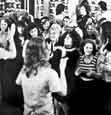
LA VITA A WITTSToCK
WITTSToCK LIFE
VoLKER KoEPP
Germania est / east Germany 1984, 35mm, b-n / b-w, 85’ v.o. tedesca / German o.v.
Questo lungo episodio sarebbe dovuto essere, nell’intenzione dell’autore, la chiusura della serie dei cortometraggi dedicati alla cittadina di Wittstock: erano infatti già dieci anni che le operaie della fabbrica tessile venivano “osservate” da Koepp. troviamo qui sempre le stesse ragazze, le quali raccontano delle difficoltà iniziali dell’azienda, delle mancanze della dirigenza e, infine, dei loro sogni e delle loro speranze per il futuro.
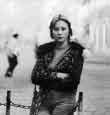
nEuES In WITTSToCK
noVITà dA WITTSToCK
nEWS FRoM WITTSToCK
VoLKER KoEPP
Germania / Germany
1990-92, 35mm, b-n / b-w, 99’ v.o. tedesca / German o.v.
Le operaie della fabbrica di Wittstock dopo la caduta del muro di Berlino. il film mostra le grandi trasformazioni cui gli abitanti della cittadina hanno dovuto assistere: il ritiro dei soldati sovietici e, soprattutto, il modo con cui la gente ha fatto fronte ai continui cambiamenti in atto. La storia delle tre operaie di Wittstock, centro di interesse principale per molti anni, si sposta ora su un binario parallelo e lascia spazio ad altri avvenimenti: l’impresa del Popolo che viene venduta, gli affaristi che arrivano in città e se ne impossessano… all’improvviso, edith, Renate e stupsi sono diventate delle semplici spettatrici delle loro stesse vite.
sceneggiatura / screenplay: Volker Koepp, Wolfgang Geier, Annerose Richter. Fotografia / Photography: Christian Lehmann. montaggio / editing: Lutz Körner. musica / music: Rainer Böhm. suono / sound: Peter dienst.
Produzione / Produced by: dEFA-Studio für dokumentarfilme.
the feature-length compilation film was supposed to be the ending of the Wittstock short films: for ten years volker Koepp has been accompanying the workers of the knit work factory. they talk of the teething problems of the business, of the deficiencies of the management and, last but not least, of their own dreams and hopes.
sceneggiatura / screenplay: Volker Koepp, Wolfgang Geier, Richard Ritterbusch.
Fotografia / Photography: Christian Lehmann, Michael zausch.
montaggio / editing: Barbara Masanetz-Mechelk. musica / music: Konrad Körner.
suono / sound: Eberhard Pfaff, hans-Jürgen Mittag. Commento / voice Over: dieter Mittag.
Produzione / Produced by: dEFA-Studio für dokumentarfilme, AG document.
the female workers in the small borough of Wittstock after the Fall of the Berlin Wall. the film shows the big transformation that occurred in the village: the withdrawal of soviet soldiers, the way people dealt with the continual changes. the story of the women workers in the large Wittstock textile company who had been the series’ focus of attention over many years serve now as a parallel story line. the People's Own enterprise has been sold, bargain hunters are taking possession of the town and all of a sudden, edith, Renate and stupsi have become spectators of their own lives.

VoLKER KoEPP
Germania / Germany
1997, 35mm, b-n / b-w, 119’ v.o. tedesca / German o.v.
Capitolo conclusivo della serie che riassume gli ultimi ventidue anni di vita delle operaie e gli sconvolgimenti che hanno investito il loro paese. La grande fabbrica ormai non esiste più, è stata chiusa nel 1993. elsbeth passa da un corso di riqualificazione a un altro, Renate ha lavorato per cinque anni come cameriera in un piccolo albergo e edith, la più ribelle delle tre, si è trasferita nella zona di Heilbronn, dove lavora e conduce una vita molto tranquilla. Quando la serie era iniziata, nell’ormai lontano 1974, la scelta era caduta su Wittstock perché, secondo Koepp, rappresentava l’intera DDR. Quello che la rendeva unica era questo suo relativo isolamento nella campagna tedesca. Ora che sono passati oltre vent’anni, la vita a Wittstock è di nuovo rappresentativa di ampie zone della parte orientale della Germania.
sceneggiatura / screenplay: Volker Koepp.
Fotografia / Photography: Christian Lehmann. montaggio / editing: Angelika Arnold.
suono / sound: uve haussig.
interpreti / Cast: Edith dahlke, Elsbeth Fischer, Renate Lust.
Produzione / Produced by: herbert Kruschke Filmproduktion (Berlin).
Coproduzione / Co-produced by: BR (Munich), oRB (Berlin), SFB (Berlin).
Distribuzione internazionale / World sales: Progress FilmVerleih.
the closing protrait includes 22 years of the female workers’ lives and the great upheavals in their country. the big factory is no longer there. it was closed in 1993. How elsbeth, Renate and edith cope without their work in the textile factory, the focus of their lives for such a long time? How could they recreate a normal life? elsbeth goes from one retraining course to another. Renate has now been working for five years as a chambermaid in a small hotel, and edith, who used to be so rebellious, has moved to the Heilbronn area, works there and has become very tranquil. When the series began in 1974 Wittstock was chosen because to Koepp it was typical for all of the GDR. What made it different from other places was its relative isolation in the countryside. and now, 20 years later and more, life in Wittstock is once again typical for the eastern part of Germany.
BYŁ SoBie RaZ… (1957)
SZKoŁa (1958)
SZTaNDaR MŁoDYcH (1957)
nAGRodzonE uCzuCIE (1957) doM (1958)
RoSALIE (1966)
JEux dES AnGES (1964)
dE JoAChIM (1965)
dR. JEKyLL ET LES FEMMES (1981)
unE CoLLECTIon PARTICuLIÈRE (1973)
ConTES IMMoRAux (1974)
ESCARGoT dE VEnuS (1975)
SChERzo InFERnAL (1985)
CéRéMonIE d’AMouR (1988)
BERTRAnd MAndICo:
PORtRait CRaCHÉ / RitRattO sPUtatO
BERTRAnd MAndICo:
PORtRait CRaCHÉ / sPittinG imaGe
Cortometraggi e videoclip / Short Films and Videoclips
LA ChAnSon du JARdInIER Fou (1998, con la collaborazione di / in collaboration with aline ahond)
L’AMouR à LA SAuVETTE (1998, con la collaborazione di / in collaboration with aline ahond)
LE CAVALIER BLEu (1999)
MonSIEuR FLuPERSu (2000)
L’ÎLE dE LA CoRnE (2001, con la collaborazione di / in collaboration with aline ahond)
LE SACRE (2001)
SALon BRéSIL (2002)
LES EnVIES (2003)
oSMoSE (2004)
TouT CE QuE VouS AVEz Vu EST VRAI (2004)
ChRIS d’AnGoISSE (dE dRoITE) (2005)
cHRiS D’aNgoiSSe (iLS DaNSeNT!) (2005)
SPonGE (2006)
IL dIT Qu’IL EST MoRT (2007)
ESSAI 135 (2007)
MIE (2008)
Spot e Sigle (1999-2006) ads and Opening sequences (1999-2006)
huSQVARnA
MES FInAnCES
CEGETEL
VAn houTEn
MonoMuR
hABILLAGES PouR ARTE
hABILLAGES PouR CAnAL J (con la collaborazione di / in collaboration with aline ahond)
BELLE BÊTE
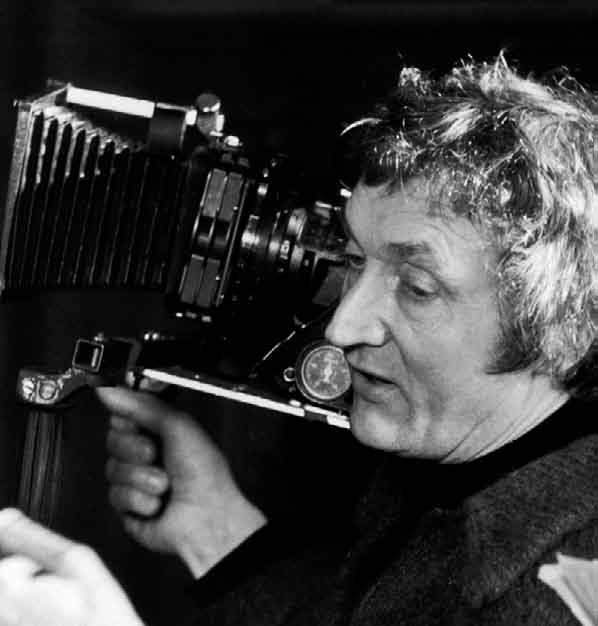
ALBERTo PEzzoTTA
Dopo la degustazione dell’anno scorso (“Walerian Borowczyk. Racconti animati”), quest’anno il trieste Film Festival dedica un omaggio consistente all’opera di Walerian Borowczyk (19232006). Regista di animazione, autore di film erotici (e non solo), ma soprattutto artista totale: un artigiano creatore di immagini, quadri e oggetti, che sarebbe riduttivo rinchiudere in una gabbia. “Ogni anno un nuovo film di Borowczyk conferma la posizione centrale che questo regista elusivo occupa nel cinema in generale, e non solo nel campo dell’animazione”, si scriveva negli anni ‘60. Con Goto, l’île d’amour (Goto, l’isola dell’amore), nel 1968, il passaggio al lungometraggio con attori fu felice e indolore. Bastarono cinque anni perché Borowczyk diventasse il più celebre regista erotico europeo (Racconti immorali, La bestia, Il margine…), e altri cinque per perdere visibilità e interesse agli occhi della maggior parte della critica, relegato nel ghetto di un cinema per uomini soli. e da qui è nata una sottovalutazione, in cui contano tanto l’ignoranza quanto il pregiudizio. ma da Renaissance (1963) a Dr. Jekyll et les femmes (nel profondo del delirio, 1981), la sua opera torna coerentemente sugli stessi temi: la distruzione e la ricostruzione di un mondo, spesso circoscritto in una stanza, dove si muovono i simboli del desiderio e del potere. surrealista, visionario, capace di costruire universi autosufficienti, Borowczyk è sempre Boro (o Borò, come lo chiamavano i francesi, a disagio col groviglio di consonanti del suo cognome - che per altro si risolvono, alla pronuncia, in un non insormontabile “borofcik”): dai labirinti concentrazionari di Les Jeux des Anges (1964) ai rituali di sopraffazione pomeridiana di Cérémonie d’amour (Regina della notte, 1988). il suo ultimo film, mai visto davvero e punta di questa retrospettiva, passa con nonchalance da una freschezza di caméra-stylo post-nouvelle vague a un montaggio ossessivo d’avanguardia, rivelando un autore che tronca bruscamente la propria carriera, pur avendo ancora molto da dire.
La retrospettiva (che è stata faticosa nell’assemblaggio e, per motivi pratici, a volte inferiore ai desideri), è anche un’occasione per riportare Borowczyk in italia, dove girò due film e trovò ispirazione e collaboratori fondamentali - a partire dall’attrice marina Pierro, ospite del festival. nell’italia plumbea degli anni ‘70 il cinema di Borowczyk sfondò porte e barriere (dell’immaginario,
after last year’s foretaste (“Walerian Borowczyk. animated tales”), this year’s trieste Film Festival pays a more substantial tribute to the work of Walerian Borowczyk (1923-2006): director of animated films, author of erotic movies (among others), but above all total artist. He was a craftsman able to create all sorts of images, paintings and objects, and it would be unfairly confining to try to pigeonhole him.
as early as the nineteen-sixties it was written that “every year a new Borowczyk film confirms the central position this elusive director occupies in cinema as a whole, and not just in the field of animated film”. With Goto, Island of Love, in 1968, he made the smooth and successful step up to feature films using live actors. it took Borowczyk only five years to become the most famous maker of erotic films in europe (Immoral Tales, The Beast, The Margin...) and another five to drop under the radar and lose the attention of the vast majority of critics, and find himself confined to the ghetto of films designed for audiences of lonely men. and this lies at the root of his underestimation, in which ignorance and prejudice combine.
But from Renaissance (1963) to Dr. Jekyll and his Women (1981), his work returns with consistency to the same themes: the destruction and reconstruction of a private world, often reduced to a single room, where the symbols of power and desire interplay. surrealist, visionary, assembler of self-sufficient worlds, Borowczyk is always Boro (or Borò, as the French called him, since they found it awkward to get to grips with the cluster of consonants in his surname – even though in the end they boil down to a reasonably straightforward “Borofchik” when pronounced): from the spiralling labyrinths in The Games of Angels (1964) to the rituals of afternoon abuse in Love Rites (1988). His last film, never screened in its entirety and the centrepiece of this retrospective, slides with nonchalance from a post-nouvelle vague caméra-stylo freshness to an uncompromising avant-garde editing, baring a director who suddenly brings the shutters down on his career, even though he still has plenty to say.
Gruelling as it has been to piece together and, for practical reasons, in some respects also falling below expectations, the retrospective is also a chance to reintroduce Borowczyk to
dei codici di rappresentazione, della censura) che ancora incombevano in un Paese la cui cultura non aveva mai davvero conosciuto una fase di follia surrealista. e conquistò una critica ricettiva, creando un fronte comune che partiva dai quotidiani e dai settimanali (tullio Kezich, Callisto Cosulich, alberto moravia) e arrivava alle riviste cinefile («Filmcritica»). Oggi guardiamo quei film con la nostalgia per un’epoca di libertà perduta: anche se Borowczyk non è mai stato un ingenuo utopista, e non ha mai nascosto che il desiderio – a partire da quello dello spettatore –è sempre una perdita.
italy, where he made two films and found inspiration and key collaborators – including the actress marina Pierro, who will be a guest at the festival. in the italy beset by terrorism of the nineteen-seventies, Borowczyk’s cinema broke down barriers (of the imagination, of codes of representation, of censorship) which still held sway in a country whose culture had never really gone through a phase of surrealist mayhem. His work was well received by the critics, ranging from those writing in the dailies and weeklies (tullio Kezich, Callisto Cosulich, alberto moravia) to those contributing to specialist film magazines (Filmcritica). today, these films are watched with a feeling of nostalgia for a time of lost freedom, although Borowczyk was never a naïve utopian, and never concealed the fact that desire – starting with the film-goer’s – always means losing something.

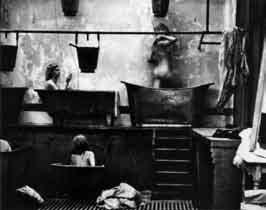
01 / dR. JEKyLL ET LES FEMMES
02 / LES ASTRonAuTES
03 / GoTo, L’ÎLE d’AMouR
04 / ConTES IMMoRAux

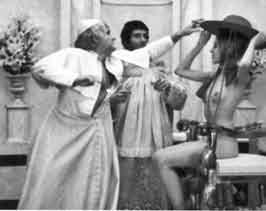
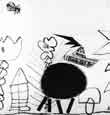
BYŁ SoBie RaZ…
C’eRa Una vOLta… OnCe UPOn a time
WALERIAn BoRoWCzyK, JAn LEnICA
Polonia / Poland
1957, 35mm, col., 9’ senza dialoghi / no dialogues
Una macchia nera munita di quattro tratti si anima su un foglio. Diventa un tripede, un quadrupede, un uccello, un personaggio antropomorfo. incontra angeli, donne e ippopotami. Fa visita in un museo che espone la Gioconda e mirò. Diventa parte di un quadro astratto. alla fine si vede il tavolo di lavoro degli animatori con tutti i materiali usati durante il film. La macchia si anima un’altra volta e scappa.
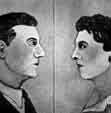
i sentimenti PRemiati LOve ReQUiReD
WALERIAn BoRoWCzyK, JAn LEnICA
Polonia / Poland
1957, 35mm, col., 8’ didascalie ceche / czech intertitles
Usando i dipinti naïf di Jan Płaskocinśki (e gli ottoni di una banda), Borowczyk e Lenica raccontano (grazie a didascalie) la storia di un uomo timido che decide di cercare l’anima gemella. La trova durante un’eclisse di sole. “stai piangendo?”, “no, ho guardato il sole senza occhiali”. ma sarà amore lo stesso.
sceneggiatura, disegni / screenplay, Drawnings: Walerian Borowczyk, Jan Lenica. Fotografia / Photography: edward Bryła. musica / music: Andrzej Markowski. tecnica / technique: Papiers découpés, disegni animati, found footage / Papiers découpés, animated drawings, found footage. Produzione / Produced by: KAdR Film Studio, WFd Warsaw.
a black patch with four distinguishable strokes moves across a sheet of paper, turning into a tripod, a quadruped, a bird and an anthropomorphic figure and encountering angels, women and hippos. it then visits a museum exhibiting the mona Lisa and mirò and becomes part of an abstract painting. the final frames show the animators’ work desk, with all the materials used during the making of the film. the patch comes back to life and makes off.
sceneggiatura / screenplay: Walerian Borowczyk, Jan Lenica. Dipinti di / Paintings by: jan Płaskocinśki.
Fotografia / Photography: edward Bryła. montaggio / editing: Krystyna Rutkowska. musica / music: Banda della Compagnia Municipale del Gas di Varsavia / Warsaw Municipal Gas Company Band
suono / sound. halina Paszkowska. Produzione / Produced by: WFd Warsaw.
Using the naïf paintings of Jan Płaskocinśki (and the music of a brass band), Borowczyk and Lenica tell the story, with the help of captions, of a shy man who decides to find his twin soul. He finds her during an eclipse of the sun. “are you crying?”, “no, i looked at the sun without sunglasses”. But love will blossom just the same.

LO stenDaRDO DeLL a GiOventù
tHe FL aG OF YOUtH
WALERIAn BoRoWCzyK, JAn LEnICA
Polonia / Poland
1957, 35mm, col. & b-n / b-w, 2’ senza dialoghi / no dialogues
Una sequenza originariamente inserita in un cinegiornale che pubblicizzava l’omonimo giornale per ragazzi. Occhi. incidenti, moto. missili. Jazz. Rock’n’roll. Picasso. arte astratta. il tutto alternato a macchie di colore sulla pellicola. Uno studio sul ritmo e sulla possibilità di sincronizzare musica e immagini. e un ritratto del mondo nel 1957.

La Casa
tHe HOUse WALERIAn BoRoWCzyK, JAn LEnICA
Polonia / Poland
1958, 35mm, col. & b-n / b-w, 12’ senza dialoghi / no dialogues
in una casa ottocentesca, una donna apre gli occhi e vede. macchinari biomorfi. Lottatori orientali. Una parrucca-piovra che mangia oggetti. Un uomo che appende sempre lo stesso cappello. alla fine bacia appassionatamente una testa di gesso, che poi si autodistrugge. Per questo cadavre exquis surrealista i due autori chiamano a raccolta le tecniche più diverse: fotografie animate, collage animati, animazione dal vero a passo 1, interventi sulla pellicola, riprese cinematografiche.
Disegni / Paintings: Walerian Borowczyk, Jan Lenica. Fotografia / Photography: edward Bryła. tecnica / technique: found footage, pittura su pellicola, animazione di foto fisse / found footage, painting on the film stock, animation of photographs. Produzione / Produced by: WFd Warsaw.
a sequence originally included in a film newsreel as an advertisement for the children’s newspaper of the same name. accidents, motorbikes, missiles, Jazz, Rock’n’roll, Picasso, abstract art – all interspersed with patches of colour on the film stock. a study of rhythm and the potential of synchronized music and images. the result is a portrait of the world in 1957.
sceneggiatura, disegni / screenplay, Drawings: Walerian Borowczyk, Jan Lenica. Fotografia / Photography: Antoni nurzyński (con la collaborazione di / in collaboration with: zbigniew Kamiński). montaggio / editing: Krystyna Rutkowska. musica / music: Włodzimierz Kotoński. suono / sound:
halina Paszkowska (con la collaborazione di / in collaboration with hanna Ciecierska). tecnica / technique: fotografie animate, pittura su pellicola, pixillation, riprese dal vero / animated photographs, painting on the film stock, pixillation, live action. interpreti / Cast: Ligia Branice. Produzione / Produced by: WFd Warsaw.
in a nineteenth-century house a woman opens her eyes and sees… biomorphic machines, oriental wrestlers, an octopuswig that eats objects, a man who always hangs up the same hat. in the end she gives a plaster head a passionate kiss, after which it falls apart. the two authors make use of the most disparate techniques in this surrealist cadavre exquis: animated photographs, animated collage, stop-motion animation, effects applied directly on the celluloid and filmed footage.
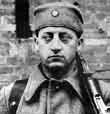
La sCUOL a tHe sCHOOL
WALERIAn BoRoWCzyK
Polonia / Poland 1958, 35mm, col., 7’ senza dialoghi / no dialogues
Fotografie animate. Un soldato marcia e cerca di sparare, obbedendo a fischi imperiosi. Una mosca per un attimo lo disturba. Quando si addormenta, sogna di essere un alto graduato, e di comandare una parata di gambe femminili. Una satira del militarismo dove emergono il desiderio e l’erotismo.
sceneggiatura, scenografia / screenplay, art Director: Walerian Borowczyk. Fotografia / Photography: Jan Tkaczyk. musica / music: Andrzej Markowski. interprete / Cast: Bronisław Stefanik. tecnica / technique: Fotografie animate, riprese dal vero / animated photographs, live action.
Produzione / Produced by: Studio Miniatur Filmowich.
animated photographs. a soldier is marching along and tries to shoot, obeying orders urgently conveyed through whistles. a fly disturbs him for an instant. When he falls asleep, he dreams of being a high-ranking officer in command of a regiment of female legs. a satire on militarism on a background of desire and eroticism.
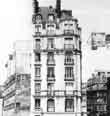
GLi astROnaUti
WALERIAn BoRoWCzyK
(con la collaborazione di / with the collaboration of Chris marker)
Francia / France
1959, 35mm, col. & b-n / b-w, 13’ senza dialoghi / no dialogues
Uno sgangherato ma geniale inventore si costruisce in casa un’astronave tutta di carta con la quale avventurarsi nello spazio in compagnia della sua civetta anabase. incontra una donna bellissima, un politico onnipotente e malvagio e una piccola astronave rossa che combatte con un grosso razzo: il suo buon cuore lo spinge a salvarla da sicura distruzione. Dietro la piccola astronave si cela, però, l’onnipresente politico che distrugge la macchina volante dell’inventore, il quale ricade sulla terra e ascende al cielo moltiplicato in mille anime.
sceneggiatura / screenplay: Walerian Borowczyk. Fotografia / Photography: daniel harispe. montaggio / editing: Jasmine Chasney. musica, suono / music, sound: Andrzej Markowski. tecnica / technique: fotografie animate, riprese dal vero, pixillation / animated photographs, live action, pixillation.
interpreti / Cast: Michel Boschet, Ligia Branice, Anatole dauman, Anabase. Produzione / Produced by: Anatole dauman (Argos Films), Les Films Armorial.
an absent-minded but brilliant inventor builds a spaceship at home made entirely out of paper, with which he intends to explore the universe accompanied by his owl anabase. He comes across a gorgeous woman, a all-powerful and evil politician and a small red spaceship, which he battles against with a big missile. However, his soft heart leads him to save it from assured destruction. But unbeknown to him, lurking within the small spaceship is the ubiquitous politician, who proceeds to destroy the inventor’s flying machine, which falls back to earth and rises back into the sky as thousands of little souls.
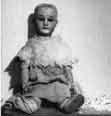
RinasCita RenaissanCe
WALERIAn BoRoWCzyK
Francia / France
1963, 35mm, b-n / b-w, 9’ senza dialoghi / no dialogues
Dalle macerie riprendono forma lentamente ma inesorabilmente alcuni oggetti: due tavolini, una tromba, il codice di procedura civile, la Bibbia, una bambola, un quadro con una vecchia foto di famiglia, una civetta impagliata, un paniere di giunco, un grappolo d’uva, una sveglia. sono l’arredo di una stanza dei ricordi destinata alla fine a esplodere di nuovo.
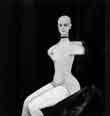
i GiOCHi DeGLi anGeLi tHe Games OF tHe anGeLs
WALERIAn BoRoWCzyK
Francia / France
1964, 35mm, col., 12’ senza dialoghi / no dialogues
Un treno sferraglia verso l’ignota città degli angeli: un campo di sterminio fatto di celle senza dimensione piene di tubi e inquietanti aperture, in cui strumenti di tortura dalle forme più varie mutilano corpi senza volto e canne d’organo immense rivelano una seconda natura mortifera. tutto è morte e terrificante esecuzione senza fine: le ali degli angeli cadono sanguinando e dell’uomo non restano che torsi senza senso e vita.
sceneggiatura, animazione / screenplay, animation: Walerian Borowczyk, Jan Lenica. Fotografia / Photography: Francis Pronier. montaggio / editing: Claude Blondel. musica / music: Avenir de Monfred. tecnica / technique: back motion pixillation. Produzione / Produced by: Jacques Forgeot (Cinéastes Associés).
From the debris slowly but inexorably begin to emerge a number of objects – two small tables, a trumpet, the civil code, the Bible, a doll, a framed old family photo, a stuffed owl, a wicker basket, a bunch of grapes and an alarm clock. these objects are the furnishings of a memory-filled room destined to explode all over again.
sceneggiatura, animazione / screenplay, animation: Walerian Borowczyk. Fotografia / Photography: Francis Pronier, Gérard Cox. montaggio / editing: Claude Blondel. musica / music: Bernard Parmegiani. suono / sound: Louis Perrin.
tecnica / technique: quadri e disegni animati / paintings, animated drawings. Produzione / Produced by: Jacques Forgeot (Cinéastes Associés).
a train hurtles towards the unknown city of the angels: a concentration camp made of dimensionless cells full of tubes and disturbing openings, in which all manner of instruments of torture mutilate faceless bodies and huge organ pipes reveal an alternative, deadly nature. Death and terrifying executions are ubiquitous and without end: angels’ wings fall bleeding to the ground and all that remains of men are torsos without identity or life.
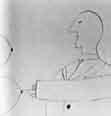
iL DiZiOnaRiO Di JOaCHim
JOaCHim’s DiCtiOnaRY
WALERIAn BoRoWCzyK
Francia / France
1965, 35mm, col., 10’ senza dialoghi / no dialogues
abbecedario (da “animation” a “Zoologie”) in cui protagonista di ogni lettera e parola è Joachim, metamorfico personaggio di carta capace delle più diverse trasformazioni, duplicazioni, mutilazioni.
sceneggiatura, animazione / screenplay, animation: Walerian Borowczyk. Fotografia / Photography: Costantin Tchikine. montaggio / editing: Catherine Kelber. musica / music: Bernard Parmegiani. suono / sound: Groupe de recherches musicales de l’o.R.T.F. (BAG 22).
tecnica / technique: disegni animati / animated drawings. Disegni / Drawings: Laurence demaria.
Produzione / Produced by: Pantaléon Films.
a journey through the alphabet (from “animation” to “Zoology”) in which the protagonist in each letter and every word is Joachim, a metamorphic paper character able to undergo the most extraordinary transformations, duplications and manglings.

WALERIAn BoRoWCzyK
Francia / France
1966, 35mm, col., 16’ v.o. francese / French o.v.
La foto di un soldato, una cintura, un lavoro a maglia, una trousse medicale, delle lenzuola insanguinate, due involti di carta di giornale e una pala con della terra: questi gli indizi a carico di Rosalie, cameriera presso la famiglia varambot. Dopo essere stata sedotta e abbandonata da un giovane militare, Rosalie racconta a noi – la sua giuria immaginaria – di essere rimasta incinta all’insaputa dei suoi padroni, e di aver partorito nottetempo nella sua camera e poi ucciso e seppellito in giardino i due neonati.
sceneggiatura / screenplay: Walerian Borowczyk, tratta dalla novella Rosalie Prudent di Guy de Maupassant / based on the short novel Rosalie Prudent by Guy de Maupassant. Fotografia / Photography: yann Le Masson. montaggio / editing: Catherine Kelber. musica / music: Bernard Parmegiani. suono / sound: Jacques Boujon.
tecnica / technique: riprese dal vero, pixillation / live action, pixillation. interprete / Cast: Ligia Branice. Produzione / Produced by: Pantaléon Films.
the photo of a soldier, a belt, some knitting, a doctor’s bag, some blood-soaked sheets, two folded pieces of newspaper and a spade with some soil: these are the clues that point to Rosalie, a maid employed by the varambot family. Rosalie tells us – her imaginary jury – that she was seduced by a young soldier, who abandoned her when he learned that she was pregnant. she hid her condition from her employers and gave birth in her room one night, then killed the newborn twins and buried them in the garden.
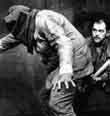
GOtO, L’isOL a DeLL’amORe
GOtO, isL anD OF LOve
WALERIAn BoRoWCzyK
Francia / France
1968, 35mm, col. & b-n / b-w, 93’ v.o. francese / French o.v.
Caratterizzato da una forte impronta surrealista, il film racconta in un bianco e nero interrotto solo da alcune macchie di colore, le vicende che si svolgono a Goto, un’isola un tempo sede di un impero florido e ora tagliata fuori dal mondo da un terremoto, dove tre uomini si contendono la stessa donna, Glossia: Goto iii, suo marito e signore incontrastato dell’isola, il giovane ufficiale Gono, il malfattore Grozo. Primo lungometraggio di Borowczyk.

Una COLLeZiOne PaRtiCOL aRe a PaRtiCUL aR COLLeCtiOn
WALERIAn BoRoWCzyK
Francia - Germania / France - Germany 1973, 35mm, col., 14’ v.o. francese / French o.v.
mentre un vecchio fonografo suona nostalgici motivetti, un signore senza volto mostra la sua raccolta di foto e oggetti erotici d’epoca, e ne aziona i meccanismi.
sceneggiatura / screenplay: Walerian Borowczyk (con la collaborazione di / with the collaboration of dominique duvergé). Fotografia / Photography: Guy durban. montaggio / editing: Charles Bretoneiche. musica / music: Georg Friedrich händel, Concerto n. 11 op. 7 (l’inno nazionale di Goto è composto da / the national anthem of Goto is
composed by Walerian Borowczyk). suono / sound: Gérard de Lagarde. interpreti / Cast: Pierre Brasseur, Ligia Branice, Jean-Pierre Andréani, Guy Saint-Jean, Ginette Leclerc, René dary, Fernand Bercher, Raoul darblay, hubert Lassiat, Michel Thomass, Colette Régis. Produzione / Produced by: René Thévenet, Louis duchesne (Les Productions René Thévenet), Euro-Images.
this film is strongly influenced by surrealism’s slant on the world and is shot in black and white, with splashes of colour here and there for effect. it tells of the events taking place on Goto, an island cut off from the rest of the world by an earthquake and where three men vie with each other for the attentions of the same woman, Glossia: Goto iii, her husband and unchallenged lord of the island, the young officer Gono and the miscreant Grozo. Borowczyk’s first feature film.
sceneggiatura / screenplay: Walerian Borowczyk. testi, commento, voce / texts, commentary, voice: André Pieyre de Mandiargues. Fotografia, montaggio / Photography, editing: Walerian Borowczyk (non accreditato / uncredited). tecnica / technique: riprese dal vero / live action.
Produzione / Produced by: Argos Film, Peter Schamoni Filmproduktion.
While on old phonograph plays nostalgic tunes, a faceless man displays his collection of photographs and vintage erotic objects, showing how they work.
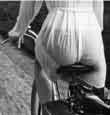
i RaCCOnti immORaLi Di BOROWCZYK
immORaL taLes
WALERIAn BoRoWCzyK
Francia / France 1974, 35mm, col., 103’ v.o. francese / French o.v.
Quattro episodi, quattro epoche diverse. nel primo, La marea, ambientato nella Francia odierna, il giovane andrè fa una scampagnata in bicicletta con la giovane cugina. i due si fermano lungo la spiaggia, su uno sperone roccioso dove lui le chiede di praticargli una fellatio. La sua idea è quella di far coincidere il picco del piacere con l’arrivo della marea. il secondo episodio, Teresa filosofa, ci trasporta nella Francia del diciannovesimo secolo, dove un’adolescente innocente viene rinchiusa per punizione dalla madre in una soffitta e trova “conforto” in una copia dimenticata di Teresa filosofa, romanzo pornografico del ‘700 attribuito a Jean-Baptiste de Boyer, marchese d’argens. nel terzo episodio, Erzsébet Báthory, vediamo l’omonima contessa ungherese fare strage delle giovani ragazze del suo contado, il cui sangue – secondo la leggenda – veniva poi usato per i suoi famosi “bagni di bellezza”. Lucrezia Borgia, infine, mette in scena l’incesto fra papa alessandro vi Borgia e i suoi due figli: il cardinale Cesare e la bella Lucrezia. inizialmente, il film doveva comprendere altri due episodi: une collection particulière e La véritable historie de la bête du Gévaudan. il primo è stato realizzato ed è divenuto nel 1973 un cortometraggio autonomo, mentre le riprese realizzate per il secondo sono andate a comporre la sequenza onirica de La bestia (1975).
sceneggiatura, scenografia, montaggio / screenplay, art direction, editing: Walerian Borowczyk (l’episodio La Marée è tratto dal racconto omonimo di André Pieyre de Mandiargues / the episode La Marée is based on the short story of the same title by André Pieyre de Mandiargues).
Fotografia / Photography: Bernard daillencourt, Guy durban, Marcel Grignon, noël Véry, Michel zolat. musica / music: Maurice Le Roux, Guillaume de Machaut, domenico Scarlatti (e musica antica spagnola e ungherese / and ancient spanish and Hungarian music).
Costumi / Wardrobe: Piet Bolscher, Alain Guillé. interpreti / Cast: ep. La Marée: Lise danvers, Fabrice Luchini; ep. Thérèse philosophe: Charlotte Alexandra; ep. Erzsébet Báthory: Paloma Picasso, Pascale Christophe, Marie Forså, nicole Karen, Kjell Gustavsson; ep. Lucrezia Borgia: Florence Bellamy, Jacopo Berinizi, Lorenzo Berinizi. Produzione / Produced by: Sara Films, Sofica Sofinergie.
the film is composed of four stories set in four different epochs. the first episode, The Tide, is set in present-day France. andré goes to a bicycle trip with his younger cousin. they stop to the shore and walk out to a rocky islet where he asks her to perform fellatio on him. He has memorized the tide schedules and wants to time his climax to coincide with the exact moment the tide comes in. in Thérése Philosophe (19th century, France) an innocent teenager is locked in the attic as punishment by her mother. she finds comfort in Therese the Philosopher, a 18thcentury pornographic novel ascribed to Jean-Baptiste de Boyer, marquis d’argens. in the third episode, the Hungarian countess erzsébet Báthory has a group of girls brought to her where they are taken and showered and then slaughtered so that the countess might bathe in their blood. in Lucrezia Borgia Pope alexander vi engages in an orgy with his beautiful daughter Lucrezia and his son Cesare.
Immoral Tales was conceived as a film of six stories. the other two were also filmed, but une collection particulière was released as a separate short in 1973, and the footage of La véritable historie de la bête du Gévaudan became the dream sequence of the feature-length The Beast (1975).
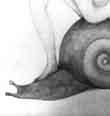
La LUmaCa Di veneRe venUs’ snaiL
WALERIAn BoRoWCzyK
Francia / France
1975, 35mm, col. & b-n / b-w, 5’ v.o. francese / French o.v.
Documentario sui disegni erotici di Bona tibertelli de Pisis: l’autrice legge un commento tratto da testi di Rémy de Gourmont. terminata la lettura afferra da un vaso un verme con cui nutre il suo camaleonte casalingo appollaiato su una pianta, torna al tavolo da lavoro e firma una delle sue creazioni.
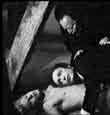
neL PROFOnDO DeL DeLiRiO
DR. JeKYLL anD His WOmen
WALERIAn BoRoWCzyK
Francia / France
1981, 35mm, col. , 91’ v.o. francese / French o.v.
“L’azione è concentrata in una notte: verso sera una bambina di sette-otto anni fugge terrorizzata per i vicoli di Londra, in un’alternanza di luci che ricordano la pittura surrealista e magritte, e finisce massacrata e stuprata da un sadico col cappello a cilindro. La notizia del crimine turba la festa di fidanzamento fra il dottor Henry Jekyll (Udo Kier) e la signorina Osbourne (marina Pierro). … Una minorenne che sembra fatta apposta per stuzzicare i maniaci balla in mezze calze di lana il valzer del Faust di Gounod, ma a tavola si appisola mentre i grandi discutono l’ultimo libro di Jekyll, fautore della medicina trascendentale … nel profondo del delirio resta il film di un maestro: la caduta della casa Jekyll è narrata con un piglio tra Poe e Buñuel, in una successione di dettagli significanti e sberleffi sarcastici. Quanti registi oggi sono capaci, con mezzi evidentemente limitati, di fabbricare un’atmosfera altrettanto suggestiva?” (tullio Kezich, Jekyll, Hyde e la signora, «la Repubblica», 9 novembre 1983)
sceneggiatura, montaggio / screenplay, editing: Walerian Borowczyk. testi / texts: Rémy de Gourmont. Fotografia / Photography: noël Véry. musica / music: Les Flûtes Roumaines. interprete, disegni / Cast, Drawings: Bona Tibertelli de Pisis.
tecnica / technique: riprese dal vero / live action. Produzione / Produced by: Argos Film, Films Martin-Boschet.
Documentary about the erotic drawings of Bona tibertelli de Pisis, who is shown reading a commentary taken from the works of Rémy de Gourmont. at the end of the reading, she grasps a worm from a vase, which she feeds to her pet chameleon perched on a plant, goes back to her desk and signs one of her creations.
sceneggiatura / screenplay: Walerian Borowczyk, liberamente tratta dalla novella di Robert Louis Stevenson, Lo strano caso del dottor Jekyll e del signor hyde / freely based on Robert Louis Stevenson’s short novel The Strange Case of dr. Jekyll and Mr. hyde Fotografia, scenografia / Photography, art Director: Walerian Borowczyk. montaggio / editing: Kadicha Bariha. musica / music:
Bernard Parmegiani. suono / sound: Gérard Barra. Costumi / Wardrobe: Piet Bolscher. interpreti / Cast: udo Kier, Marina Pierro, Patrick Magee, Giselle Preville, howard Vernon, Gérard zalcberg, Clement harari, Michael Levy. Produzione / Produced by: Whodunit Productions, Allegro Productions, Multimedia.
“the action is concentrated within a single night; towards evening a seven- or eight-year-old girl runs terrified through the lanes of London, the screen filling with a series flashing lights recalling surrealist paintings and the work of magritte, and ends up being beaten and raped by a sadist in a top hat. news of the crime causes a stir at the party given by Dr Henry Jekyll (Udo Kier) to mark his engagement with miss Osbourne (marina Pierro). … a young girl who seems tailor-made to titillate dirty old men dances to Gounod’s Faust waltz in short woollen socks, but she falls asleep at the table while the grown-ups discuss the latest book by Jekyll, the inventor of transcendental medicine … in the depth of its weirdness, this is clearly still the film of a master: the fall of the house of Jekyll is told in a style recalling Poe and Buñuel, in a series of telling details and sarcastic taunts. How many directors today would be able, with his same clearly limited means, to create a similarly evocative atmosphere?” (tullio Kezich, “Jekyll, Hyde e la signora”, la Repubblica, 9 november 1983)
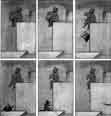
sCHeRZO inFeRnaLe inFeRnaL PRanK
WALERIAn BoRoWCzyK
Francia / France
1985, 35mm, col., 5’ v.o. francese / French o.v.
Un angelo di sesso femminile, Purea, viene messa dal Padre davanti alla scelta di un mestiere. La giovane lo scandalizza optando per la prostituzione e condannandosi così alle fiamme dell’inferno. Laggiù l’attendono diavoli d’ogni sorta, tra cui mastro, che di lei s’innamora possedendola con il suo membro a coda: ne nascerà niente meno che l’Uomo di Leonardo…

ReGina DeLL a nOtte LOve Rites
WALERIAn BoRoWCzyK
Francia / France
1988, 35mm, col., 97’ v.o. francese / French o.v.
Hugo è uno stilista di mezza età che un giorno incontra nel metrò la bella e seducente miriam. Colpito dal suo fascino intrigante, la segue per le strade di Parigi, fino a un attico misterioso proprietà di un’amica della ragazza, lussuosamente arredato e pieno di piante esotiche: qui miriam, dapprima remissiva, si trasforma pian piano in una sacerdotessa vendicatrice e lo sottopone a una sorta di rituale sadico e crudele, consumato il quale inizia per l’uomo un incubo che si prolungherà sulle rive della senna...
sceneggiatura, fotografia, montaggio, disegni / screenplay, Photography, editing, Drawings: Walerian Borowczyk. musica / music: Bernard Parmegiani. voce narrante / narrator: yves Robert.
tecnica / technique: disegni animati / animated drawings. Produzione / Produced by: Argos Film.
a female angel, Purea, is forced by God to choose a profession. she shocks him by opting for prostitution, thus condemning herself to the flames of hell. Down there devils of every kind await her, including mastro, who falls in love with her and ravishes her with his tail, generating what turns out to be none other than Leonardo’s vitruvian man…
sceneggiatura / screenplay: Walerian Borowczyk, tratta dal romanzo / based on the novel Tout disparaîtra di / by André Pieyre de Mandiargues. Fotografia / Photography: Gérard Monceau, Jean-Paul Sargent, Patrice Guillou, Michel zolat. montaggio / editing: Florence Poulain, Marie-hélène Eirisch, Guila Salama, Lili Sonnet. musica / music: Toccata, Adagio e Fuga in do maggiore Bwv 564 di / by Johann Sebastian Bach, interpretata da / performed by Jean-Paul Imbert.
suono / sound: Thierry Godard. scenografia / art Director: Walerian Borowczyk (non accreditato / uncredited).
Costumi / Wardrobe: Valérie Adda. interpreti / Cast: Marina Pierro, Mathieu Carrière, Josy Bernard, Isabelle Tinard, Julnan Lee, Jacques Couderic, Guy Bonnafoux, Claudine Berg. voce narrante / narrator: Jean négroni.
Produzione / Produced by: Sara Films, Sofica Sofinergie.
Hugo is a middle-aged fashion designer who one day meets the beautiful and seductive miriam in the metro. struck by her enchanting sophistication, he follows her through the streets of the city to her friend’s mysterious penthouse where she lives in luxury surrounded by exotic plants. Here miriam is gradually transformed from her original docility into a vengeful priestess and subjects Hugo to a cruel and sadistic ritual, after which the nightmare continues on the banks of the seine…
ALBERTo PEzzoTTA
imaGe
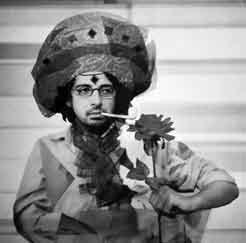
Bertrand mandico è nato a tolosa nel 1971. La sua opera multiforme è una scoperta: un regista artigiano che fabbrica oggetti e gioca con pari competenza con le tecniche, i generi e i formati più diversi, dall’animazione in stop-motion al videoclip. i 30 secondi di Belle bête, sigla per un canale televisivo francese, basterebbero a svelare la ricchezza poetica di un mondo che poi sorprende, in altre sue manifestazioni, con un umorismo stralunato. Ci piace porre questa mini-retrospettiva sotto il segno di Walerian Borowczyk: perché il regista di Goto è una delle influenze di mandico, e perché mandico è uno dei suoi massimi esperti, avendo collaborato a monografie come Walerian Borowczyk di Pascal vimenet (Paris, editions de l’oeil, 2008), e avendo curato con quest’ultimo la grande mostra B. Boro. Borowczyk. Walerian Borowczyk (1923-2006) al Centrum sztuki Wspólczesnej Zamek Ujazdowski di varsavia (gennaiomarzo 2008).
Bertrand mandico was born in toulouse in 1971. the protean work of this craftsman director is a real discovery, as he fashions objects and flits with equal confidence among the most varied techniques, genres and formats, ranging from stop-motion animation to videoclips. the thirty seconds of Belle bête, the opening sequence of a French television channel, alone suffices to disclose the poetic richness of a world which, in its multifarious aspects, often catches one off balance with its offbeat humour. We are especially pleased to hold this miniretrospective of Walerian Borowczyk’s work, as the director of Goto is one of mandico’s chief influences, and because mandico is one of the leading experts on Boro, having contributed to monographs such as Pascal vimenet’s Walerian Borowczyk (Paris, editions de l’oeil, 2008) and joined forces with the critic to put on the recent major exhibition B. Boro. Borowczyk. Walerian Borowczyk (1923-2006) at Centrum sztuki Wspólczesnej Zamek Ujazdowski in Warsaw (January-march 2008).
Qual è la tua formazione?
erratica. Cinefilia selvaggia. Poi sono entrato in una scuola di animazione a Parigi [l’École des Gobelins, ndr], con la vaga idea di diventare regista. volevo cominciare a imparare il cinema partendo dalle origini. Diciassette anni fa quello dell’animazione era un piccolo mondo desueto, vicino all’artigianato, dove ci si poteva nascondere e fare cose nella massima tranquillità.
hai lavorato con l’animazione di oggetti (pixillation) e con riprese dal vero. Che differenza c’è, a tuo avviso?
La ripresa fotogramma per fotogramma, per come la vedo, è un procedimento che mi permette di dare vita a cose inerti e di catturare la deperibilità degli elementi vivi. non mi sono mai considerato un cineasta d’animazione, piuttosto un regista che utilizza dei trucchi per creare illusioni, rendere poetiche le immagini. Oggi non uso più la pixillation, non mi piace nemmeno il termine. Quando facevo film d’animazione, andavo alla cieca, non usavo mezzi video o digitali per controllare il movimento. scoprivo il risultato a film finito. era un’esperienza formidabile, angosciante ma esaltante. nei film dal vero, non mollo mai la macchina da presa (per paura che me la confischino). Quando sono sul set, fiuto l’aria come un cane da caccia, spezzo rami e rovescio sedie per trovare l’equilibrio. e incoraggio gli attori a soprendermi. Devo essere impressionato da quello che vedo. Per tornare all’animazione, spesso mi sono detto che se un attore morisse durante le riprese (cosa che non mi auguro), potrei sempre finire il film tentando di animare il suo corpo fotogramma per fotogramma...
Come è nato Le Cavalier bleu? spesso, l’idea di un film nasce da una sfida che mi pongo. in questo caso ho preso in contropiede ciò che si fa di solito nel cinema d’animazione. Ho girato improvvisando a partire da un soggetto, senza sceneggiatura né story-board, lavorando in fretta (in dieci giorni), facendo molte riprese poi eliminate in sede di montaggio, usando per di più marionette poco adatte all’animazione… È stato possibile perché facevo da solo animazione e fotografia, la troupe era ridotta al minimo (tre persone), e così potevo seguire i miei impulsi. avevo l’impressione di celebrare un rito pagano un po’ grottesco, mi lasciavo guidare dal mio protagonista (una testa di cane infilzata su fili di ferro). mi piace paragonare questa esperienza all’art brut. alla fine delle riprese mi sembrava di cadere in un pozzo senza fondo.
What kind of training did you have?
erratic. i had an unbridled love of the cinema. then i went to an animated film school in Paris [École des Gobelins, ed.], with the vague idea of becoming a director. i wanted to begin learning about the cinema, starting from its origins. seventeen years ago, the world of animation was just a minor backwater, associated with handicrafts, where one could hide away and do things completely undisturbed.
you have worked with animated objects (pixillation) and live actors. What are the main differences, in your view? as i see it, shooting frame by frame is a process which enables me to give life to inert objects and to capture the decay of living things. i have never regarded myself as a director of animated films, but rather as a director who uses tricks to create illusions and make images poetic. i don’t use pixillation any more and i don’t even like the expression. When i made animated films, i used to make it up as i went along; i didn’t use video or digital technology to control the movement. i would see if it worked only at the end of the film. it was an incredible experience, nerve-racking but exciting. in live-action films, i don’t let go of the camera even for a second (for fear of having it spirited away). When i’m on the set, i sniff the air like a hunting dog. i break branches and overturn chairs to find my balance and i encourage the actors to surprise me. i have to be impressed by what i see. Going back to animated cinema, i’ve often told myself that if an actor were to die during the shooting (something i hope will never happen), i could always finish the film by trying to animate his body frame by frame…
Where did the idea of Le Cavalier Bleu come from? the ideas for my films often come from a challenge i set myself. in this case, i stood what one normally does in animated cinema on its head. i shot the film by improvising on a subject, without a screenplay or storyboard, working in a hurry (the whole film was shot in ten days), shooting a lot of footage which was then edited out, mainly using puppets not really suitable for animation… i was able to do it because i was doing the animation and photography all on my own; the crew was reduced to a minimum (three people), so i was able to follow my instincts. i felt as though i was involved in some rather grotesque pagan ritual: i wandered around following my protagonist (a dog’s head perched on steel wires). i like to compare this experience with Art Brut. at the end of the shooting i felt as though i was falling into a bottomless well.
hai lavorato per la televisione, hai girato videoclip, spot. Sei riuscito a essere libero in questi contesti? i lavori su commissione mi permettono di sperimentare cose che non farei spontaneamente. Prima di accettare un progetto, cerco sempre il modo di far passare le mie idee di contrabbando.
Nei tuoi film c’è spesso un lato bizzarro, molto humour noir… mi piace giustapporre disagio e umorismo, credo che mi rassicuri. se uno annega con scarpe da clown, la situazione perde drammaticità.
una volta hai scelto Renaissance di Walerian Browczyk come uno dei film che più ti hanno colpito. Che importanza ha per te Borowczyk?
mi affascina il suo percorso, mi sembra che la sua carriera rifletta Renaissance; un mondo chiuso che esplode e poi si ricompone. non so se quella di Borowczyk sia un’influenza predominante nei miei lavori, ma è profonda. L’ho sempre visto come un modello: un regista privo di complessi, un franco tiratore, ironico e solitario. Ha saputo creare un’opera coerente con una filmografia in apparenza eterogenea. È un regista dei mondi chiusi. e nessuno come lui sa riprendere i tratti del viso, la pelle, i peli, il legno…
In quale direzione va il tuo cinema dopo uno strano western in bianco e nero come Il dit qu’il est mort?
Gioco con i generi e moltiplico i progetti. Lavoro ad alcuni lungometraggi, senza trascurare i corti. sto per girare un omaggio irriverente a Borowczyk. sto preparando un rivermovie, ambientato nella foresta siberiana, all’epoca della Perestroika. sarà, spero, un film iconoclasta sulla deperibilità e la corruzione. sto sviluppando un progetto sull’erotismo e le mutazioni. e spero di girare un western sulla pigrizia. in tutti ci sono “beautiful losers” alle prese con una natura che li inghiotte. si battono come poveri diavoli, impugnando la malafede come altri la spada.
you have worked in television and made videoclips and ads. Were you able to keep your independence in these fields?
Commissioned work enables me to experiment with things i wouldn’t otherwise attempt. Before accepting a project, i always try to smuggle my own ideas in somehow.
There’s often an offbeat side to your films, with a fair amount of black humour…
i like to place disquiet and humour side by side; i think i find it reassuring. if someone drowns wearing a clown’s shoes, the situation loses its dramatic impact.
you once singled out Walerian Borowczyk’s Renaissance as one of the films which most struck you. how important is Borowczyk to you?
i’m fascinated by his career. it seems to match Renaissance – a closed world which explodes and is then pieced back together again. i don’t know if Borowczyk’s is the chief influence in my work, but it is certainly very strong. i’ve always taken him as a model; he’s a director without complexes, a loose cannon, ironic and solitary. He has been able to create a coherent body of work with a seemingly varied filmography. He is a director of closed worlds. and no one can capture facial features, the feel of wood, skin texture, hairs, and so on, like he does.
What kind of films are you going to make now, after experimenting with a strange Western shot in black and white like Il dit qu’il est mort?
i’m playing with the various genres and piling up different projects. i’m working on a number of feature films, while also keeping my hand in with shorts. i’m about to shoot an irreverent tribute to Borowczyk and i’m putting together a river movie in the forests of siberia at the time of Perestroika. i intend it to be an iconoclastic film on decay and corruption. i’m developing a project on eroticism and transmutations and i hope to shoot a Western based on the idea of sloth. in all of these there are “beautiful losers” getting to grips with a nature which is eating them up. they struggle for all they’re worth, thrashing out with bad faith the way others use the sword.
Cortometraggi e videoclip / Short Films and Videoclips
LA CAnzonE dEL GIARdInIERE PAzzo
ThE MAd GARdEnER’S SonG
BERTRAnd MAndICo
(con la collaborazione di / in collaboration with Aline Ahond)
Francia / France
1998, Betacam, col., 1’52’’ v.o. francese / French o.v.
BERTRAnd MAndICo
(con la collaborazione di / in collaboration with Aline Ahond)
Francia / France
1998, 35mm, col., 3’32’’ v.o. francese / French o.v.
IL CAVALIERE BLu
ThE BLuE KnIGhT
BERTRAnd MAndICo
Francia / France
1999, 35mm, col., 10’20’’ senza dialoghi / no dialogues
IL SIGnoR FLuPERSu
MR . FLuPERSu
BERTRAnd MAndICo
Francia / France
2000, super8, col., 2’35” v.o. inglese / english o.v.
Fotografia, inquadrature / Photography, Frames: Bertrand mandico. musica / music: Frederic acquaviva. tecnica / technique: stop motion, riprese dal vero / stop motion, live action. interpreti / Cast: Jocelyn Dorvault, aline ahond. Produzione / Produced by: Les télécréateurs, sombrero.
Fotografia / Photography: Christophe Grelié. inquadrature / Frames: Bertrand mandico. musica / music: François Hadji Lazaro. interpreti / Cast: Roland topor, François Hadji Lazaro.
messa in scena “epilettica” di una poesia di Lewis Carroll (La canzone del giardiniere pazzo).
epileptic staging of a poem by Lewis Carroll (The Mad Gardener’s song).
Fotografia / Photography: Christophe Grellier. inquadrature / Frames: Bertrand mandico. montaggio / editing: vonnick Guenee. musica / music: Frederic acquaviva. voce fuori campo / voice off: maria Faustino. tecnica / technique: Pixillation. Produzione / Produced by: Les télécréateurs.
Ricordo polveroso. videoclip per François Hadji Lazaro.
Dusty souvenir. videoclip for François Hadji Lazaro.
Fotografia, inquadrature / Photography, Frames: Bertrand mandico. musica / music: scanner. interpreti / Cast: stephane Rozenbaum. Produzione / Produced by: Les télécréateurs.
La spaventosa leggenda di un’icona pagana…
the nightmarish legend of a pagan icon…
il signor Flupersu è convinto di essere entrato in contatto con un’entità extraterrestre. Offre la propria testimonianza alla telecamera e offre le prove…
mr. Flupersu believes he has been in contact with an extraterrestrial being. He testifies before the camera, with supporting evidence.
06 07
08 09
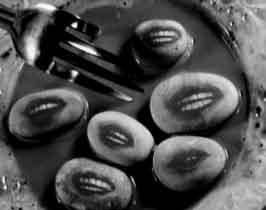
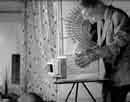
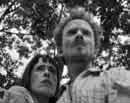


01 / LA ChAnSon du JARdInIER Fou
02 / L’AMouR à LA SAuVETTE
03 / LE CAVALIER BLEu
04 / MonSIEuR FLuPERSu
05 / LE SACRE
06 / SALon BRéSIL
07 / LES EnVIES
08 / oSMoSE
09 / TouT CE QuE VouS AVEz Vu EST VRAI
10 / ChRIS d’AnGoISSE (dE dRoITE)
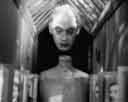
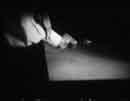
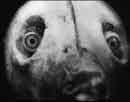
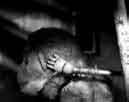
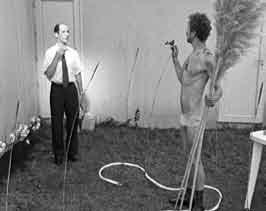
BERTRAnd MAndICo (con la collaborazione di / in collaboration with Aline Ahond) Francia / France
2001, 35mm, col., 52’’
BERTRAnd MAndICo Francia / France
2001, 35mm, col., 52’’
BERTRAnd MAndICo Francia / France
2002, 35mm, col., 52’’ v.o. inglese / english o.v.
BERTRAnd MAndICo
Francia / France
2003, super 16mm, col., 3’26’’ v.o. francese / French o.v.
BERTRAnd MAndICo
Francia / France
2004, super 16mm, col., 4’32’’ v.o. francese / French o.v.
Fotografia / Photography: eric vallin inquadratura / Frame: Bertrand mandico. musica / music: Glaz. tecnica / technique: Pixillation. Produzione / Produced by: Les télécréateurs.
Un’isola misteriosa e selvaggia attira i marinai.
a mysterious island full of wildlife attracts sailors.
Fotografia / Photography: eric vallin. inquadratura / Frame: Bertrand mandico. musica / music: Bonga. tecnica / technique: Pixillation. Produzione / Produced by: Les télécréateurs.
incoronazione di una scimmia. the coronation of a monkey.
Fotografia / Photography: eric vallin. inquadratura / Frame: Bertrand mandico. musica / music: Pink martini. tecnica / technique: Pixillation. Produzione / Produced by: Les télécréateurs.
Fotografia / Photography: Dylan Doyle, alain Duplantier. inquadrature / Frames: Bertrand mandico. musica / music: tété. interpreti / Cast: Ludovic schoendoerffer, Cécile Reigher, Walther schnorkel, Jacques Peupion. Produzione / Produced by: Le villane, Yellowhouse.
Un robot “cade” in una sala brasiliana. the irresistible fall of a robot in a Brazilian lounge.
Fotografia / Photography: Dylan Doyle. inquadrature / Frames: Bertrand mandico. musica / music: etienne Charry. interpreti / Cast: Ludovic schoendoerffer, Cécile Reigher, Laurent Pons. Produzione / Produced by: Le villane, Yellowhouse.
Gli abitanti di una casa di periferia cercano di liberarsi dalle proprie frustrazioni. videoclip per tété.
several inhabitants attempt to work off their frustrations in a suburban housing estate. videoclip for tété.
Una coppia fa l’amore nei pressi di un lago. Per aumentare il piacere, usano animali mutanti come se fossero organi sessuali mentre un guardone li spia. videoclip per etienne Charry.
a couple make love by a lake. in order to heighten their pleasure, they use transmuted animals as sexual organs. a voyeur observes them. videoclip for etienne Charry.
TouT CE QuE VouS AVEz
Vu EST VRAI
TuTTo QuELLo ChE AVETE VISTo È VERo
ALL you SAW IS TRuE
BERTRAnd MAndICo
Francia / France
2004, super8, col., 2’15’’ v.o. francese / French o.v.
ChRIS d’AnGoISSE (dE dRoITE)
ChRIS d’AnGoISSE (dI dESTRA)
ChRIS d’AnGoISSE (RIGhT-WInG)
BERTRAnd MAndICo
Francia / France
2005, 16mm, col., 2’12’’ v.o. francese / French o.v.
ChRIS d’AnGoISSE (iLS DaNSeNT!)
cHRiS D’aNgoiSSe (DaNZaNo!)
cHRiS D’aNgoiSSe (THeY’Re DaNciNg!)
BERTRAnd MAndICo
Francia / France
2005, 16mm, col., 2’12’’ v.o. francese / French o.v.
SPonGE
SPuGnA
BERTRAnd MAndICo
Francia / France
2006, Betacam, col., 1’ v.o. francese / French o.v.
dICE dI ESSERE MoRTo hE SAyS hE’S dEAd
BERTRAnd MAndICo
Francia / France
2007, super 16mm, b-n / b-w, 12’ v.o. francese / French o.v.
Fotografia / Photography: Kathy sebbha. inquadrature / Frames: Bertrand mandico. musica / music: etienne Charry. interpreti / Cast: Walther schnorkel, stephane Rozenbaum, Laurent Pons, nathalie Hauwelle, Bertrand mandico. Produzione / Produced by: Le village, Yellowhouse - L’oeil qui ment.
Fotografia / Photography: Dylan Doyle. inquadrature / Frames: Bertrand mandico. interpreti / Cast: Claude messinger, Philippe Katerine, Walther schnorkel. Produzione / Produced by: Films Hatari.
Bertrand mandico ci parla del suo lavoro con gli attori e della realizzazione del film osmose.
Bertrand mandico speaks about his work with actors and the making of the film osmose.
Fotografia / Photography: Dylan Doyle. inquadrature / Frames: Bertrand mandico. interpreti / Cast: Claude messinger, Philippe Katerine, Walther schnorkel. Produzione / Produced by: Films Hatari.
Un uomo è sconvolto all’idea di essere di destra.
a man distraught at the idea of being right-wing.
Fotografia / Photography: Dylan Doyle. inquadrature / Frames: Bertrand mandico. interpreti / Cast: Laurent Pons, Philippe Duquesnes, michael Lonsdale. Produzione / Produced by: Centrale électrique.
Un uomo è sconvolto dall’idea che sia stata organizzata in casa propria una festa danzante.
a man distraught at the idea of having a dinner-dance put on at his house.
Fotografia / Photography: Pascale Granel. inquadrature / Frames: Bertrand mandico. montaggio / editing: Julien Lacheray. musica / music: erwan eyck aKa Frederic acquaviva. suono / sound: Claire-anne Largeron. Costumi / Wardrobe: Céline ayel, amélie Chunleau. interpreti / Cast: Yekaterina Golubeva, augustin Legrand, thierry Benoiton, Jean-marc stehlé, Dimitri Khutoryansky, Yann LeroiGouran. Produzione / Produced by: Centrale électrique.
Un essere proveniente dal futuro assume sembianze umane per viaggiare nel tempo e sperimentare i piaceri della carne. episodio pilota di una mini serie mai realizzata.
a being from the future takes on human form to travel through time and experience the pleasures of the flesh. Pilot for a miniseries which was never made.
Un uomo viene impiccato ma la notizia della sua innocenza comincia a circolare mentre penzola dalla corda. Liberato, riprende fiato nell’erba alta.
a man is hanged. the news of his innocence comes through as he dangles. Released, the man gets his breath back in the long grass.
ESSAI 135
SAGGIo 135
BERTRAnd MAndICo
Francia / France
2007, 35mm, col., 2’ v.o. francese / French o.v.
BERTRAnd MAndICo
Francia / France
2008, super8, col., 10’40’’ didascalie francesi / French titles
Fotografia / Photography: Pascale Granel. inquadrature / Frames: Bertrand mandico. musica / music: Radiohead. interpreti / Cast: Patrick Dumont, Yekaterina Golubeva, aline ahond. Produzione / Produced by: L‘oeil qui ment.
Un uomo lavora sulla memoria sonora delle piante. Fa una scoperta che lo meraviglia, ma decide di tenersela per sé…
a man works on the sound memory of plants. His discovery astonishes him but he keeps it to himself…
Fotografia, inquadrature / Photography, Frames: Bertrand mandico. montaggio / editing: Laure saint-marc. musica / music: Bertrand mandico. interpreti / Cast: aline ahond, anna m, thierry Benoiton. Produzione / Produced by: L‘oeil qui ment.
Spot e sigle (1999-2006) / Ads and opening Sequences (1999-2006)
BERTRAnd MAndICo
Francia / France Betacam, col., 32’’
Fotografia, inquadrature / Photography, Frames: Bertrand mandico.
Ode alla natura (sia viva che morta) in quattro parti: danza ipnotica, un vagabondaggio fra le montagne, il sacrificio di un galletto, un dono bagnato...
Ode to nature (living and dead) in four tableaux: hypnotic dance, wandering in the mountains, sacrificed cockerel, sprinkled offering…
attrezzo da giardinaggio per la barba, sega per rivoluzionari.
Garden tools for beards, chain saw for revolutionaries.
BERTRAnd MAndICo
Francia / France
35mm, col., 1’09’’ v.o. francese / French o.v.
BERTRAnd MAndICo
(con la collaborazione di / in collaboration with Aline Ahond)
Francia / France
35mm, col., 28’’ v.o. francese / French o.v.
Fotografia / Photography: alain Duplainter. i nquadrature / Frames: Bertrand mandico.
Un uomo molto cortese e in cerca di consigli si nasconde sotto un tavolo...
a very obliging man seeking advice hides under a table.
Fotografia / Photography: eric Carioux. inquadrature / Frames: Bertrand mandico.
Due fidanzati si possono riunire grazie a un filo.
two sweethearts are reunited thanks to a thread.
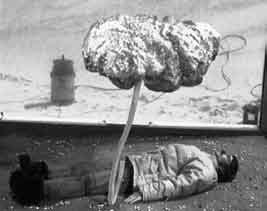
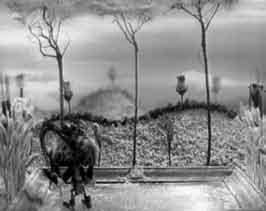
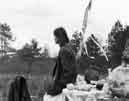

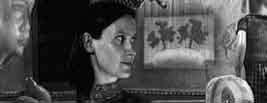
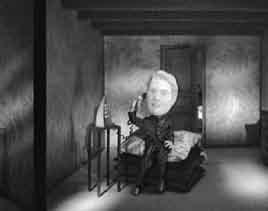
BERTRAnd MAndICo
Francia / France
Betacam, col., 1’ v.o. francese / French o.v.
BERTRAnd MAndICo
Francia / France
super 16mm, col., 30’’
SIGLE PER ARTE
oPEnInG SEQuEnCES FoR ARTE
BERTRAnd MAndICo
Francia / France
Betacam, col., 1’24’’& 30’’
hABILLAGES PouR CAnAL J
SIGLE PER CAnAL J
oPEnInG SEQuEnCES FoR CAnAL J
BERTRAnd MAndICo
(con la collaborazione di / in collaboration with Aline Ahond)
Francia / France
Betacam, col., 1’ & 38’’
BELLA BESTIA
BEAuTy BEAST
BERTRAnd MAndICo
Francia / France
35mm, col., 30’’
Fotografia, inquadrature / Photography, Frames: Bertrand mandico. Produzione / Produced by: Les télécréateurs.
Una confezione di cacao attira l’interesse dei vicini…
a box of cocoa attracts the neighbours’ interest.
Fotografia / Photography: Pascale Granel. inquadrature / Frames: Bertrand mandico. Produzione / Produced by: Whyus-premiereheure.
Fotografia, inquadrature / Photography, frames: Bertrand mandico. Produzione / Produced by: Les télécréateurs.
Un gigante scatena gli elementi contro una casa di mattoni.
a big man unleashes the elements on a brick house.
Fotografia / Photography: Christophe Grellier. inquadrature / Frames: Bertrand mandico. Produzione / Produced by: Gedeon.
Fotografia / Photography: Christophe Grellier. inquadrature / Frames: Bertrand mandico. Produzione / Produced by: Les télécréateurs.
variazioni su La Bella e la bestia sigla per Canal J.
variations on the Beauty and the Beast. Opening sequence for Canal J.
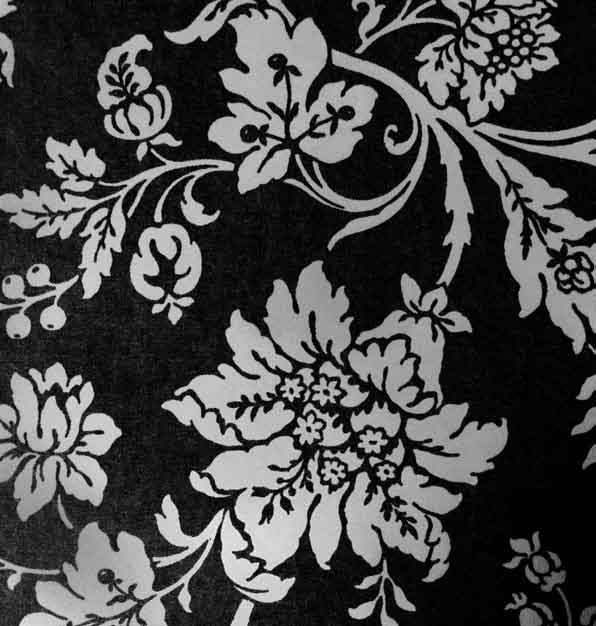
GReeK Cinema . FiLms FROm tHe eDGe
lungometraggi / feature films
APo TIn AKRI TIS PoLIS di Konstantinos iánnaris (1998)
KLISTÍ dRoMI di stavros ioannou (2000)
I EARInÍ SÍnAxIS Ton AGRoFILAKon di Dimos avdeliodis (1999)
ChoMA KE nERó di Panos Karkanevatos (1999)
dýSKoLI APoChERETISMÍ: o BABáS Mou di Penny Panaiotopoulou (2002)
I PSyChÍ STo SToMA di iannis ikonomidis (2005)
EFÍMERI PoLI di iorgos Zafiris (2000)
dIoRThoSI
di thanos anastopoulos (2007)
EduART di anghelikì antonìou (2006)
cortometraggi / short films
AMERIKAnoS di Christos Dimas (1999)
ELA nA Sou Po... di Katerina Filiotou (2000)
TA MATIA Pou TRonE di syllas tzoumerkas (2000)
ESoTERIKó SPITIoÚ ME GynEKA Pou KAThARIzI MILA (Leptomèries) di Èktoras Lyghizos (2001)
o GoGoS di Panaiotis Fafoutis (2001)
SEE no EVIL di aris Bafaloukas (2001)
dÈFTERI FySSI di vardìs marinakis (2005)
yGRAERIo di Bujar alimani (2006)
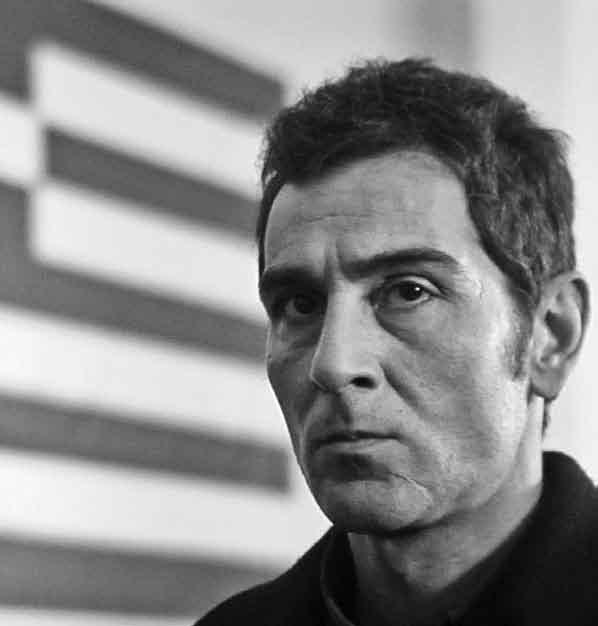
nICoLETTA RoMEo
Ogni altrove non è che questa riva, Questa città. inutilmente speri Un altro porto per la tua nave, Un altro sbocco per la tua strada.
“La città”, da Un’ombra fuggitiva di piacere, di Kostantinos Kavafis, a cura di Guido Ceronetti, adelphi edizioni, 2004
Un paese europeo noto da una parte per i valori della cultura classica e della democrazia, divenuti patrimonio dell’umanità, e dall’altra per l’iconografia legata ai paesaggi solari e mediterranei, e ai cliché che evocano un immaginario di vacanze e di otium, di un altrove armonioso e tranquillo. La Grecia. Un paese difficilmente collocabile: nonostante faccia parte della penisola balcanica e che quindi geopoliticamente sia situato nell’europa sudorientale, stranamente il cinema greco rientra solo di rado tra i paesi di interesse di quei festival espressamente dedicati alle cinematografie dell’europa centro orientale, al contrario per esempio dell’albania, il cui cinema viene invece incluso spesso nei programmi di festival e rassegne che di solito indagano ed esplorano il cinema di questa parte d’europa. evidentemente, il cinema greco si fa espressione di un’identità socio-culturale e geo-politica difficilmente collocabile e definibile, emblematico di una società con un rapporto tormentato con il proprio passato – quello classico, spesso ingombrante, e quello prossimo, volutamente rimosso – e con le proprie radici, europee, elleniche, mediterranee, balcaniche, ottomane ed orientali. Pur trovandosi a sud-est dei Balcani, e confinante con Bulgaria, serbia, Fyrom e albania, la Grecia non è mai appartenuta ai paesi della cortina di ferro e non ha mai avuto un regime comunista, anche se dopo la seconda guerra mondiale la guerra civile e la successiva dittatura dei Colonnelli hanno profondamente segnato la storia e l’economia del paese, che per anni è rimasto maggiormente arretrato rispetto ad altri paesi europei vicini. Durante il settennio della dittatura (1967–1974) il cinema subisce una specie di letargo, con una lunga stagione di produzioni cinematografiche popolari, in genere commedie, lontane da qualsiasi denuncia sociale per paura della feroce censura (e che ancora oggi vengono trasmesse con successo dalla televisione di stato greca). il cinema riprende un nuovo impulso a livello autoriale grazie al movimento del “nuovo cinema greco”, capeggiato da anghelopoulos e che vede tra le sue fila anche registi quali Panaiotopoulos, voulgaris, marketaki, Psarras e molti altri ancora. il movimento, nato durante il regime dei colonnelli, è composto da cineasti impegnati politicamente, che realizzano film caratterizzati da un’estetica
You will find no other place, no other shores. ... always you’ll return to this city. Don’t even hope for another. there’s no boat for you, there’s no other way out.
“the City” by Constantine Cavafy translated by stratis Haviaras, in C. P. Cavafy: The Canon, Hermes publishing, athens, 2004
a european country well-known on the one hand for its contribution to classical culture and democracy, their place in the world’s heritage secure, and on the other for its iconography of sun-drenched mediterranean landscapes and the myriad clichés conjuring up in the public imagination the idea of holidays and sweet idleness in a peaceful and harmonious elsewhere. Greece. a country hard to place: in spite of being part of the Balkan peninsula and thus geopolitically in southeastern europe, its cinema is strangely largely absent from those festivals specifically dedicated to films from Central and eastern europe, unlike for example albania’s, which is often put on the bill at festivals focusing on that part of europe. Clearly, the Greek cinema reflects a socio-cultural and geo-political identity that is hard to pin down and define. it is emblematic of a society which has a tormented relationship with its own past – whether its classical, often oppressive, heritage, or its frequently repressed more modern travails – and with its roots, at once european, Hellenic, mediterranean, Balkan, Ottoman and Oriental. Despite lying south-east of the Balkans and sharing borders with Bulgaria, serbia, Fyrom and albania, Greece has never been one of the eastern bloc countries and has never had a communist regime. even so, the civil war after the second World War and subsequent dictatorship of the Colonels have left an indelible mark on the history and economy of the country, which remained an underdeveloped backwater for years compared to neighbouring european countries. During the seven-year dictatorship (1967-1974) the cinema went into a sort of hibernation, when for a long time the studios turned out only light-weight comedies for mass consumption and steered clear of any kind of social criticism for fear of the fierce censorship (films still broadcast to widespread appreciation by the state television network). the cinema got a fresh shot in the arm from the “new Greek Cinema” movement, led by angelopoulos, which also included directors such as Panayotopoulos, voulgaris, marketaki, Psarras and many others besides. the movement first formed under the colonels’ regime and was made up of politically committed film makers whose films have a
modernista, che disprezzano lo star system e le norme tipiche importate da Hollywood, associate in genere alla struttura narrativa e alle categorie spazio-temporali del cinema popolare. il movimento fu prolifico per una ventina d’anni, fino al momento in cui all’inizio degli anni novanta la prima grande ondata di immigrazione, soprattutto dai paesi dell’europa dell’est, produsse un impatto considerevole a livello sociale e culturale, costringendo anche gli artisti a porsi in modo nuovo nei confronti della nuova società che si stava delineando. Da popolo di emigranti i greci si trasformano in popolo che accoglie immigrati. nel 1998 anghelopoulos vince la Palma d’oro a Cannes con Mia eoniotita ke mia mera (L’eternità e un giorno), unico cineasta greco a cui sia mai stata assegnata finora, e in qualche modo tuttavia si chiude un ciclo: i suoi film successivi non raggiungeranno più le vette di quelli precedenti, segnando una nuova fase, forse meno fortunata, del grande cineasta greco. nello stesso anno, iánnaris dirige Apo tin akri tis polis (La città nuda) che nel 1999 viene selezionato al festival di Berlino nella sezione “Panorama”, segnando gran parte delle produzioni successive della generazione più giovane di quei cineasti che realizzano le loro opere d’esordio a partire dal 2000. Questa rassegna si prefigge di presentare le migliori produzioni cinematografiche provenienti dalla Grecia degli ultimi dieci anni, iniziando dal 1998, anno fondamentale non solo per il cinema greco ma anche per l’evoluzione del suo tessuto sociale e culturale. non per niente il titolo che dà il nome alla rassegna è una parafrasi dal film di iánnaris, che vuole interpretare e problematizzare il margine come luogo di tanti set cinematografici (le periferie urbane in iánnaris, anastopoulos, ikonomidis) ma anche come metafora di una Grecia ancora non perfettamente inserita in un’europa multiculturale, oltre alle cui frontiere lo stesso cinema fa spesso fatica a circolare, rimanendo relegato, purtroppo, ai margini del mercato. nelle produzioni degli ultimi dieci anni si intravedono problematiche nuove legate al vivere quotidiano, alle recenti ondate di immigrazione dall’albania e dall’ex Unione sovietica, alle periferie: sono queste le storie di vita che l’omaggio affronta volutamente, tralasciando le proposte di Panaiotopoulos, voulgaris e soprattutto di anghelopoulos, che rimane pietra miliare della filmografia greca ma, appunto per questo, capace di soverchiare e oscurare gli altri cineasti che in Grecia lavorano, sperimentano, ricercano nuovi linguaggi e nuovi orizzonti. Rompere con i temi della frontiera, della malinconia, della memoria, del tempo che fugge (temi cari ad anghelopoulos) non è facile. Per i giovani registi greci cercare nuovi spazi, nuove prospettive, farsi largo con storie moderne in un panorama sociale così legato alla memoria storica e impregnato di quella grecità quasi palpabile, che costituisce un modo di essere, di pensare, di proporsi anche al di fuori dei confini del proprio paese, è una sfida con se stessi e la propria arte. sono storie di nuova impronta che si
modernist slant and explicitly despise the star system and typical Hollywood production values, generally associated with a straightforward narrative structure and the commonsense handling of space and time of popular cinema. the movement was very prolific for twenty years or so, until the country felt the social and cultural impact of the first big wave of immigration, especially from eastern europe, in the early nineteen-nineties. this led to artists having to take stock of the changed circumstances and look with fresh eyes at the new society that was emerging. From being a people of immigrants, the Greeks were turning into a people that had to learn to accommodate immigrants itself. angelopoulos won the Palme d’Or at the 1998 Cannes Festival with Mia eoniotita ke mia mera (eternity and a Day), and remains to this day the only Greek director to have been awarded the prize. in a way, the occasion also marked the end of a cycle: this great Greek film maker’s subsequent films have never reached the heights of his early work and have not achieved the same success. in the same year, Giannaris directed Apo tin akri tis polis (From the edge of the City), which was selected in the “Panorama” section of the 1999 Berlin Festival and acted as a beacon for the younger generation of film makers who entered the industry after 2000. this retrospective aims to screen the best films made in Greece over the past ten years, starting from 1998, a year of crucial importance not only for the Greek cinema, but also for its social and cultural evolution. it is not for nothing that the title of the retrospective is a paraphrase from Giannaris’s film, whose aim is to examine and analyze the margin as a place of many film sets (the outskirts of the city in the films of Giannaris, anastopoulos, economidis) but also as a metaphor for a Greece not yet perfectly integrated in a multicultural europe, beyond whose border films often find it hard to penetrate, unfortunately remaining confined to the margins of the market. the films of the last ten years have begun to explore new problems connected with daily life and the recent waves of immigration from albania and the ex-soviet Union to the outskirts of towns. these are the stories the event will aim to concentrate on, deliberately setting aside the works of Panayotopoulos, voulgaris and especially angelopoulos, who remains a milestone in the filmography of Greece, but for this very reason finds himself in the position of obscuring and overshadowing other film makers who are busy experimenting and seeking new challenges in Greece. it is not easy to break away from the themes of the frontier, melancholy, memory, the transience of life (some of angelopoulos’s favourite themes). it is a challenge for young Greek directors and their art to seek new horizons and new angles, and to tell fresh stories in a context which is still so strongly linked to the past and impregnated with that almost palpable
insinuano e, in un modo o nell’altro, contribuiscono a scompaginare l’idea di una Grecia tradizionale: è ciò che serpeggia nell’animo degli artisti che sentono la necessità di andare oltre, di confrontarsi e di esprimersi, trasformando in ricchezza il senso di soggezione e di limitazione della frontiera. sono storie di forte impatto sociale, di margini ed emarginati, che offrono una visione lucida, critica e a volte graffiante della Grecia e dei greci, anche se non sempre molto gradite in patria per i temi trattati (xenofobia, immigrazione, povertà, degrado), e per un’immagine certo non cartolinesca né di atene né della vasta provincia. nei quartieri dove si parlava solo greco ora si parla russo, albanese, polacco, curdo, e sono cambiamenti repentini di una geografia soprattutto umana a cui una società come quella greca forse non era preparata. La rassegna si compone di otto lungometraggi di autori già piuttosto affermati e di otto cortometraggi di giovani esordienti di cui sentiremo senz’altro parlare nel prossimo futuro. nel programma dedicato ai lungometraggi si possono individuare senz’altro almeno tre elementi fondanti che sembrano in qualche modo contraddistinguere non solo i film selezionati ma anche gran parte della produzione cinematografica greca di oggi: il racconto di forte impatto sociale delineato da tratti esistenziali (iánnaris, ioannou, ikonomidis, antonìou e anastopoulos), la commistione tra elementi folkloristici e mitologici (avdeliodis, Karkanevatos), e infine un filone nostalgico-intimista che si rivolge al passato attraverso la caduta delle illusioni e la perdita dell’innocenza (Panaiotopoulou). ad ogni modo, sono tutti autori che rappresentano la realtà – sia presente che passata, sia in maniera diretta, quasi documentaristica, sia indiretta, simbolica – senza mai fuggirne e senza creare universi paralleli d’evasione. il cinema di questi ultimi anni riflette e fa riflettere sulla società greca, il qui e l’adesso diventano più urgenti rispetto alle meditazioni sul rapporto tra l’uomo e la storia. Le spinte della modernità e delle sue nuove tensioni cancellano ogni tentazione di escapismo. Rispetto al “nuovo cinema greco” gli autori più giovani mantengono sempre una forte impronta politica, ma la rappresentazione della società in cui vivono e operano è più importante, si fa necessaria, ci si sofferma meno a voltarsi indietro verso il passato, la società ha subito trasformazioni economiche e socio-culturali così rapide e profonde che si sente l’urgenza di registrarne immediatamente i cambiamenti, le pulsioni, le contraddizioni, in modo critico e schietto. tra gli autori più affermati, ritroviamo la forza incisiva dell’indagine sociale di un autore quale Konstantinos Iánnaris, da sempre impegnato a denunciare le realtà dei quartieri periferici e degli emarginati, come nel caso di Apo tin akris tis polis (La città nuda), un’epica dei miserabili girata in un’atene dura, cinica e degradata, dove giovani russi originari del “Ponto”, profondamente sradicati, sono pronti a tutto pur di guadagnarsi
Greekness that is almost a style of life, a way of thinking and an image projected even beyond the national borders. these are stories with a wholly new outlook, which gradually sneak into the social fabric and in one way or another contribute to derailing the idea of a traditional Greece. this is what lurks in the bowels of artists who feel the need to go beyond, to compete with one another and find the means to express themselves, turning to advantage the sense of dread and of being cutoff of the border. these are stories with a powerful social impact that tell of alienation at the margins of society and they provide a clear-eyed and sometimes uncompromising critique of Greece and the Greeks. the topics the films deal with (xenophobia, immigration, poverty, decay) means they are not always well received in their own country and the image they give of athens and its vast hinterland is anything but the usual picture-postcard one. in the areas where once only Greek was spoken, now they speak Russian, albanian, Polish and Kurdish. these are sudden changes in human geography which perhaps caught Greek society unawares. the section is made up of eight feature films by quite well established directors and eight shorts by young film makers who are sure to make names for themselves in the near future. there definitely seem to be at least three common threads running through the feature films selected, and indeed a large proportion of the Greek films of today: a powerful, starkly outlined sense of social awareness (Giannaris, ioannou, economidis, antoniou and anastopoulos), a blend of folklore and myth (avdeliodis, Karkanevatos), and finally a nostalgic and intimate sensibility that looks at the past through the discarding of illusions and the loss of innocence (Panayotopoulou). at all events, these are all film makers who depict reality – whether present or past, whether directly, almost as documentary, or indirectly, symbolically –without ever averting their gaze or trying to create parallel, escapist worlds. the cinema of these last years reflects and encourages reflection on Greek society, the here and now become more urgent compared to musings on the relationship between man and history. the thrust of modernity and the new tensions it throws up cast out any temptation to seek refuge in escapist fantasies. Young Greek directors have retained the strong political awareness of “new Greek Cinema”, but for them it is more important and more relevant to provide a faithful reflection of the society they live and work in and are less inclined to look over their shoulders at the past. economic, social and cultural changes have been so rapid and far-reaching that they feel it imperative to capture the contradictions, tensions and unease in a forthright, critical manner.
denaro facile. Un racconto morale di taglio semi-documentaristico, un vivido affresco su una gioventù bruciata di stampo quasi pasoliniano (tra l’altro, nel 1990 è proprio a Pasolini che iánnaris dedicò un cortometraggio dal titolo A Desperate Vitality. The Films of Pier Paolo Pasolini / Una disperata vitalità: i film di Pier Paolo Pasolini). iánnaris destruttura il racconto in quadri e piani sequenza ponendo il montaggio in primo piano e frammentando l’unità di spazio e d’azione. i personaggi sono seguiti nelle loro peregrinazioni nelle periferie ateniesi come da una telecamera nascosta, osservati in ogni loro comportamento in gruppo; verso la seconda parte del film, oltre al tradizionale ma efficace utilizzo forsennato del montaggio nel seguire parallelamente il tragico evolversi del destino degli amici, il realismo è interrotto da scene visionarie che virano verso toni surreali. L’elemento documentaristico della pellicola è portato alle estreme conseguenze con l’introduzione di flash, collocati temporalmente lungo il film, durante un’intervista che il regista stesso sta facendo a saša, il protagonista.
Con Klistí dromi (strade bloccate) Stavros Ioannou indaga il fenomeno dell’immigrazione kurda ad atene, impiegando attori non professionisti in una quest story in cui un uomo, dopo un faticoso attraversamento dei confini turco-greci, sbarca alla ricerca del fratello in un’atene popolata da immigrati, spesso giovanissimi, in preda all’angoscia e nostalgici del paese natale, ma speranzosi in un avvenire migliore. attraverso gli occhi del protagonista, allo spettatore si presenta uno scenario di una città ostile, poco incline a offrire reali possibilità di una vita decente ai nuovi immigrati, spesso ostaggi delle mafie locali e paralizzati in una situazione di perenne e assurda attesa. Le varie peripezie per ottenere notizie sul proprio fratello, forse annegato, e l’impossibilità di proseguire il viaggio verso l’italia costringeranno il protagonista a una resa totale, non solo di fronte alle ricerche, ma alla vita stessa. il film è raccontato con un taglio documentaristico, dove la macchina da presa è appena percepita e dove il regista si mette sullo stesso piano dei molti protagonisti del film corale, cercando di restituirci l’umanità e il disorientamento alienato dei giovani immigrati, concentrandosi sui dettagli della loro quotidianità e sul senso di costante incertezza che incombe sulle loro vite.
Un piccolo caso cinematografico, invece, è rappresentato da Eduart di Angheliki Antonìou, una regista che vive e lavora tra la Grecia e la Germania, e che con questo film ha ottenuto un notevole successo in numerosi festival internazionali. Di nuovo una storia con un immigrato come protagonista, stavolta dall’albania, ispirato a un fatto realmente accaduto. eduart è un giovane albanese che fugge da un ambiente oppressivo e violento, ma giunto ad atene commette un delitto, in seguito
the incisiveness of Constantine Giannaris’s social critique of the outlying big city housing developments and the social outcasts who inhabit them, as depicted in Apo tin akri tis polis (From the edge of the City), puts him squarely among the more established directors. this epic of the life led by the poor in an unforgiving, cynical and decayed athens, describes the thoroughly rootless young Russians originally from the Black sea who are ready to do anything to earn a little easy money. this quasi-documentary moral tale provides a vivid picture of desperate youth of an almost Pasolini-like power (incidentally, in 1990 Giannaris dedicated a short to Pasolini entitled A Desperate Vitality. The Films of Pier Paolo Pasolini). Giannaris breaks the story down into shots and long sequences which enhance the importance of the editing and break up the unity of space and action. the characters are followed as they wander around the outskirts of athens as if by a hidden camera and all their behaviour as a group is closely observed; in the second half of the film, the realism is tempered by the traditional but still effective use of relentless editing to follow the parallel tragic fate of the friends, as well as by visionary scenes that sometimes achieve a surreal intensity. the film’s documentary approach is taken to extremes through the introduction of flashbacks at different moments during the film, while the director himself interviews sasha, the main character.
With Klisti dromi (Roadblocks) Stavros Ioannou explores the world of Kurdish immigrants in athens, using non-professional actors in a quest story in which a man arrives in athens to look for his brother after an exhausting journey across asia minor. He finds a city inhabited by often very young immigrants who feel totally out of place and extremely homesick, but nonetheless retain their hope for a brighter future. seeing the world through the eyes of the protagonist, the spectator experiences a hostile city ill-disposed towards the new immigrants’ expectations of carving out a better life for themselves. in reality, they often fall into the hands of the local mafias and at the least find themselves paralyzed in a situation of permanent, absurd standby. Getting nowhere in his peregrinations in search of news of his brother, who may have drowned, the protagonist soon finds it is impossible to continue his journey in italy and has to accept total defeat, in life itself as much as in the quest. the film is given a documentary perspective, in which the camera is barely noticed and the director puts himself on the same level as many of the figures appearing in it. the aim is to get as close as possible to the human predicament and bewildered alienation of the young immigrants, concentrating on the details of their daily life and the constant feeling of uncertainty that follows them like a cloud.
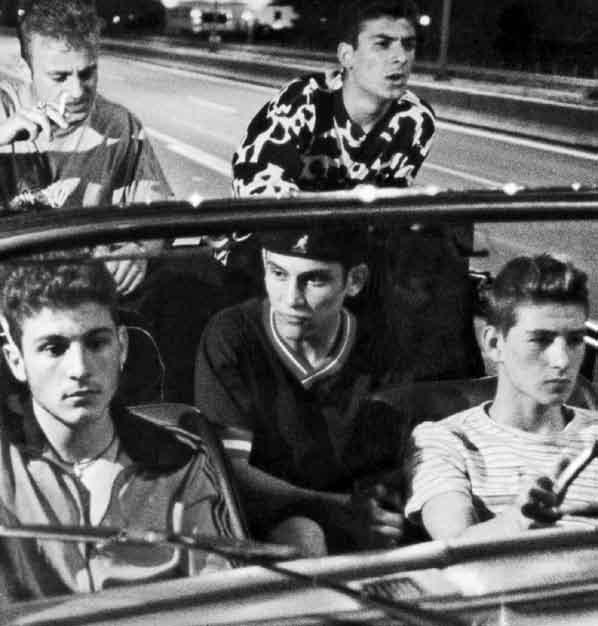
al quale decide di tornare al suo villaggio in albania, dove finirà in prigione per reati commessi in precedenza. in carcere incontrerà un medico tedesco che a poco a poco cercherà di smussare i lati aspri e cinici del suo carattere, per aprirlo al mondo e alla compassione umana, e portando così alla luce i suoi sensi di colpa. eduart tornerà in Grecia per confessare il suo crimine, dopo aver compiuto un cammino graduale e cosciente verso la redenzione, come un moderno Raskoľnikov.
Iannis Ikonomidis, invece, sceglie una storia di emarginati greci nel suo I psychí sto stoma (anima in subbuglio), presentato come proiezione speciale alla settimana della critica di Cannes nel 2006. Una storia turbolenta ed estrema di violenze urbane, fisiche, psicologiche e verbali, metafora di una società repressiva profondamente disumanizzante e maschilista, che non permette ai singoli individui di vivere in piena libertà e di esprimere i propri sentimenti, dove i rapporti umani, sia familiari che professionali, esplodono quotidianamente in una guerriglia perpetua e senza pietà. Colleghi che si insultano, mogli che tradiscono, capi sadici che usano il proprio potere per abusare dei propri impiegati, membri di una stessa famiglia che non comunicano se non attraverso l’uso di parole offensive e meschine, mirate ad annientare il prossimo. L’uso di un linguaggio particolarmente scurrile e di dialoghi urlati sottolinea l’atmosfera tesa e aggressiva che caratterizza il film dall’inizio fino alla fine, dove con un gesto disperato il protagonista-vittima, takis, si ribellerà al boss-carnefice.
Iorgos zafiris, invece, nel film Efímeri poli (Città effimera), presentato alla settimana della critica di Cannes nel 2001, narra del viaggio di andreas verso l’isola dove un tempo viveva sua madre, e dove i paesaggi sono profondamente mutati, accrescendo il senso di smarrimento del protagonista. Comunità di stranieri vi si sono insediate, trasformando l’identità e la fisionomia dell’isola, popolata per lo più da abitanti che hanno perduto la memoria, forse metafora di una Grecia prigioniera di un’amnesia del proprio passato, che non può e non vuole ricordare. Gli immigrati aiuteranno andreas nel difficile recupero dei luoghi e dei sentimenti del proprio passato, ma soprattutto a comprendere e ad accettare meglio il presente, con tutte le sue contraddizioni e i suoi inevitabili cambiamenti: nulla è com’era e come credevamo che fosse, alla fine il lento procedimento di ricostruzione maieutica di un luogo – soprattutto mentale – non può che dare alla luce una città effimera. Un film dove il gioco simbolico-psicanalitico (elaborazione del lutto, rapporto tra la vita caotica e imprevedibile e la morte) e l’approccio sociale (l’ondata di popolazioni straniere che travolge la vita dell’isola, cambiandone i luoghi e portando un’inaspettata vitalità) si mescolano, tutto giocato sull’uso sapiente della luce, dei paesaggi, e dei volti, con uno stile onirico e trascendente.
By contrast, Eduart, by Angeliki Antonìou, a director who spends part of her time in Greece and part in Germany, has been something of a cinematographic event, enjoying as it did considerable critical success at various international festivals. Once again the main character is an immigrant, this time from albania, and the plot is based on a true story. eduart is a young albanian fleeing a violent and oppressive environment, but when he reaches athens he commits a crime and decides to make his way back to his village in albania, where he is put in jail anyway for crimes committed previously. in prison he meets a German doctor, who little by little whittles away at the bitter and cynical side of his character and restores his faith in the world and the value of human compassion, thus paving the way for him to release his feelings of guilt. Once out of prison, eduart returns to Greece to confess his crime, following a long journey towards self-awareness and redemption, like a modern-day Raskolnikov.
the outcasts in yiannis Economidis’s I psychí sto stoma (soul Kicking), which was given a special screening during the Critics’ Week at Cannes in 2006, are instead Greek. the film describes a chaotic urban landscape in which violence is ever present in all its guises, physical, psychological and verbal, as the metaphor of a profoundly repressive, male-dominated society. People are prevented from living freely and expressing their true feelings and human relationships, whether private or professional, regularly degenerate into endless and pitiless feuds. Colleagues insult one another at work, wives betray their husbands, sadistic bosses use their power to oppress their employees, family members do not speak unless in a stream of swear words designed to crush others. the use of particularly foul language shouted out at the tops of the characters’ voices underlines the tense, aggressive atmosphere in which the film is steeped from the beginning to the end. Finally, in an act of desperation, the main character and chief victim takis attempts to rebel against his boss and tormentor.
Giorgos zafiris’s film Efimeri poli (ephemeral town) was screened during the Critics’ Week of the 2001 Cannes Film Festival and tells of andreas’ journey to the island where his mother used to live and where the landscape has now changed profoundly, increasing his sense of bewilderment. it has now been settled by groups of foreigners, changing the island’s identity and appearance. the people who live there now have lost their memory, perhaps a metaphor for a Greece that is prisoner of a collective amnesia and is reluctant, as much as unable, to remember its past. the new inhabitants help andreas in the hard task of resurrecting the places and feelings associated with his
Choma ke neró (terra e acqua) di Panos Karkanevatos è un film (presentato in concorso a Rotterdam nel 2000) sul rapporto tra nord e sud, tra città e campagna, fra tradizione e modernità, con un’intensa e delicata storia d’amore tra nikolas, un pastore-musicista di lira dedito al culto dionisiaco dell’”anastenaria” (la danza rituale sul fuoco ancora praticata in alcuni villaggi della tracia, della macedonia, della Grecia settentrionale e della Bulgaria) e Konstantina, una ragazza di buona famiglia, che ricambia il suo sentimento ma senza credere che la loro passione li possa portare davvero da qualche parte. Deluso, il ragazzo fuggirà in città, dove verrà a contatto con la mafia, la prostituzione e la corruzione, e dove incontrerà elena, una ragazza russa fragile e vulnerabile, ma al tempo stesso determinata e armata di un forte istinto di sopravvivenza. nikolas e Konstantina si rincontreranno, ma niente sarà più come prima, gli elementi di terra e acqua saranno nel frattempo diventati impuri. È interessante come l’autore recuperi alcuni elementi mitologici: l’ortodosso – ma dedito a rituali pagani come la danza sul fuoco - nikolas è un moderno Orfeo che segue l’amata euridice-Konstantina, sperimenta l’aldilà-ade (la città, centro della tratta delle schiave, della corruzione, della perdita definitiva dell’innocenza e dei valori) alla costante ricerca dell’oggetto del suo desiderio. La dicotomia tra città e campagna è molto frequente nella cinematografia greca: la città è il centro propulsivo delle speranze, degli incontri, degli smarrimenti, delle occasioni perdute o addirittura del male. La campagna veniva rappresentata sovente come la custode dei valori tradizionali e di quella purezza di una grecità che tuttavia non esiste più, mentre in questo caso è raffigurata come un mondo rurale destinato a essere contaminato dalla modernità, da spinte e desideri generati dal nuovo che avanza.
dimos Avdeliodis è forse l’autore, tra gli otto registi greci presi in esame, ad avere avuto il maggiore successo in patria con l’uscita nelle sale del suo film I eariní sínaxis ton agrofílakon (Le quattro stagioni della legge), presentato al Forum di Berlino nel 2000, una parabola comico-realistica ben riuscita, il cui ritmo è scandito dalle Quattro Stagioni di vivaldi. il film, ambientato nell’isola di Chios negli anni sessanta, dove tra l’altro il regista è nato, narra le peripezie di quattro guardie rurali nominate per proteggere un remoto villaggio che ha una pessima reputazione, e ogni missione non riesce a durare per più di una stagione. Una commedia ben sceneggiata, con un’ottimia alchimia tra elementi pagano-mitologici e folklore locale, che celebra la natura attraverso il susseguirsi delle quattro stagioni, ma che strizza anche l’occhio al malgoverno, ai costumi un po’ arretrati e alle tradizioni locali.
past, but their true value lies in aiding him to understand and adapt to the present, with all its contradictions and inevitable changes: nothing is as it was and as we believed it was. in the end, the slow process of rebuilding a place, - especially of the mind, inevitably conjures up an ephemeral town. this film combines symbolic and psychoanalytical aspects (the mourning process, the relationship between a chaotic and unpredictable life and death) and the social dimension (the wave of foreigners swamping the time-honoured ways of the island, altering its lifestyle and bringing an unexpected vitality). the skilful use of light, landscape and faces, establishes a dreamlike tone of transcendence.
Choma ke nero (earth and Water), by Panos Karkanevatos, was in competition at the 2000 Rotterdam Film Festival and explores the relationship between north and south, city and countryside, tradition and modernity. the film describes the delicate but intense love story between nikolas, a shepherd-cum-lyre player devoted to the Dionysian cult of “anastenaria” (the ritual fire dance still performed in some villages in thrace, macedonia, northern Greece and Bulgaria) and Konstantina, a girl from a respectable family, who shares his passion without really believing that their relationship can lead to anything. the lovelorn young man runs off to town, where he is easy prey for the local mafia and gets involved in prostitution and corruption rackets. there he also meets elena, a fragile and vulnerable Russian girl who is at the same time determined and armed with a strong instinct for survival. nikolas and Konstantina meet once again, but things aren’t as they were before; earth and water have mixed and become contaminated. it is interesting to observe the way the director has made use of features from ancient mythology: nikolas is Greek Orthodox –although devoted to pagan rituals like the fire dance – and is a modernday Orpheus following his beloved euridice-Konstantina. He comes into contact with the netherworld-Hades (the city, the hub of the slave trade, corruption and the loss of innocence and values) in his perpetual search for the object of his desire. the dichotomy between city and countryside is a recurring theme in Greek cinema: the city is the place where lie hopes, encounters, false starts, missed opportunities and at times evil itself. the countryside is often represented as the repository of traditional values and the custodian of the pure Greekness which however no longer exists. in this particular instance it is portrayed as a rural backwater whose fate it is to be contaminated by the modern world and the new desires and demands that go with it.
Of the eight Greek directors brought together here, dimos Avdeliodis has perhaps enjoyed the most success in his home country with his
L’ultimo film della selezione dedicata alla cinematografia greca è Dýskoli apocheretismí: o babás mou (Difficili addii: mio padre) di Penny Panaiotopoulou, presentato al festival di Locarno nel 2002, è ambientato ad atene nel 1969, e segue le vicende di una famiglia costretta ad affrontare la morte improvvisa del padre. Per il figlio minore, ilias, l’accettazione del lutto non arriva facilmente: si abbandona a un rifiuto categorico del tragico evento, lasciandosi andare a una serie di fantasticherie e di menzogne che lo inducono a sperare in un prossimo ritorno del padre. il tono del film, nonostante il soggetto delicato e fortemente emotivo, è sorprendentemente leggero e a tratti ironico, aiutando così a bilanciare la durezza del tema della perdita delle illusioni e dell’innocenza infantile, con la conquista faticosa di una consapevolezza matura. alla fine saranno proprio i primi passi di neil armstrong sulla luna – un progetto a lungo sognato e “pianificato” con il padre – a portare ilias con i piedi per terra, e a fargli accettare la perdita del genitore. L’approccio visivo della regista trasforma l’elemento nostalgico del film in un’atmosfera da sogno, intensificando la presa di coscienza della perdita e del dolore.
a dimostrazione della vitalità del cinema greco quest’anno il trieste Film Festival ha voluto proiettare in concorso e in anteprima nazionale, Diorthosi (Correzione), l’opera seconda di Thanos Anastopoulos, già presentato al Festival di Berlino l’anno scorso e in numerosi altri festival internazionali, e selezionato per la Grecia per concorrere al miglior film straniero agli academy awards. si tratta forse della rivelazione del 2008, pur essendo una produzione indipendente a basso costo. Un uomo esce di prigione e si trova a girovagare in cerca di lavoro e di un rifugio per le strade di un’atene popolata da immigrati e da emarginati, emarginato e paradossalmente straniero egli stesso nella propria città. inizia a pedinare una donna e sua figlia, che all’inizio possono far pensare a una sua possibile famiglia, ma che con il passare del tempo capiamo essere il motivo di un suo tentativo di redenzione, per fare i conti con il proprio passato. il film, con stile distaccato e semi-documentaristico, fa luce su una società violenta, permeata da un becero nazionalismo, soprattutto quello legato alle bande xenofobe delle tifoserie calcistiche, ma anche quello veicolato attraverso i valori “puri” dell’ortodossia o più sottilmente attraverso le parate scolastiche a memoria di antiche e gloriose vittorie militari. Un film che combatte ogni stereotipo d’identità nazionale, familiare, religiosa o culturale. Ultimi, ma non meno importanti, sono i cortometraggi che fanno parte dell’omaggio al miglior cinema greco degli ultimi dieci anni: anche in questo caso si tratta di otto registi che siamo fieri di poter segnalare, perché certi che sentiremo ancora parlare di loro. sono film presentati
film I earini sinaxis ton agrofilakon (the Four seasons of the Law), first screened at the 2000 Berlin Forum. this well-devised realistic parable with comic undertones is accompanied by the rhythm of vivaldi’s Four Seasons. the film is set on the island of Chios in the nineteen-sixties, where the director was born, and follows the adventures of four guards appointed to protect a remote village with a terrible reputation and each mission is unable to last for more than a season. this comedy is well constructed, with an excellent interplay between pagan and mythological elements and local folklore. it contains a celebration of nature as the seasons mutate one into another, but also aims a barb or two at dubious practices in the public administration and pokes fun at slightly backward rural customs and local traditions.
the last film in the selection dedicated to the Greek cinema is Penny Panayotopoulou’s Dyskoli apocheretismi: o babas mou (Hard Goodbyes: my Father), which was presented at the 2002 Locarno Film Festival. the film is set in athens in 1969 and follows a family as it copes with the Father’s sudden death. it is not easy for the youngest son, elias, to accept the situation. He categorically refuses to acknowledge what has happened and slides into a world of makebelieve and fantasy, which leads him to hope that his father will soon return. in spite of the film’s delicate and harrowing subject matter, the tone is surprisingly lighthearted and at times even humorous, thus acting as a counterbalance to the painful nature of the theme of the loss of youthful illusions and innocence and the difficulty of acquiring an adult awareness. in the end neil armstrong’s first steps on the moon – something long looked forward to and “planned” with his father – are what bring ilias back down to earth, enabling him to accept the loss of his father. the director’s visual sensibility turns the film’s nostalgic aspects into a dreamlike atmosphere, reinforcing the sense of awareness of loss and the acceptance of pain.
in support of the claim that the Greek cinema is brimming with vitality, this year trieste Film Festival has decided to give a first italian screening to Thanos Anastopoulos’s second film Diorthosi (Correction) and to include it in the competition. the film was also shown at last year’s Berlin Festival and at several other international events, as well as being selected as the Greek entry for the Best Foreign Film at the academy awards. it was possibly the revelation of 2008, even though it is an independent, low-budget production. a man is released from prison and wanders around the streets of athens looking for work and somewhere to sleep. the city seems overrun by immigrants and social outcasts, and he himself feels an alienated
al festival di Drama, il più prestigioso festival greco dedicato ai cortometraggi e ad altri festival internazionali, dove hanno riscontrato successo di pubblico e di critica. in alcuni casi (alimani, Bafaloukas, Fafoutis, marinakis e tzoumerkas) i registi sono alle prese con la loro opera prima, che siamo impazienti di poter visionare; in un caso, Dimas, siamo di fronte a un regista che lavora nel cinema e nella televisione già da alcuni anni, e in due casi, la Filiotou e Lyghizos, siamo in curiosa attesa dei loro prossimi passi cinematografici. È una nuova generazione di giovani autori che prende consapevolezza della società che li circonda, costruendo storie di degrado urbano e umano (Ygraerio, Esoterikó spitioú me gyneka pou katharizi mila. Leptomèries); della paura degli esseri umani quando siamo confrontati con la natura e la morte anche se in giovane età (See no Evil, Dèfteri fyssi); storie di incomunicabilità di coppia e di avvenimenti che possono sconvolgere delicati equilibri tra marito e moglie (O gogos, Ela na sou po...); storie di generazioni messe a confronto, della perdita di Dio (Ta matia pou trone) o di ricerca della propria identità (Amerikanos).
La nuova generazione di autori greci non filma più la realtà come dovrebbe essere, in modelli lontani e inarrivabili, ma finalmente ha il coraggio di guardarsi allo specchio e di rappresentare la realtà quale essa è, cercando di superare le barriere nazionali, nel tentativo di portare le proprie visioni e le proprie storie più vicino al resto del cinema europeo. Lontano dal margine.
foreigner in his own town. He begins to follow a woman and her daughter, who at first sight might be his family, but as the film unfolds we realize they represent a means for him to achieve redemption and come to terms with his past. the detached, quasi-documentary stance of the film gives it a clear perspective of a violent society imbued with a mindless nationalism, especially when associated with the xenophobic thugs congregating in gangs of football supporters. a subtler version is to be found in the calls for the protection of the “pure” values of orthodoxy or, more insinuatingly, in the school parades in memory of ancient and glorious military victories. this film attacks every stereotyped national, family, religious or cultural identity.
Lastly, but no less importantly, there are the short films which are also part of the retrospective of the best Greek cinema over the past ten years. Once again we have chosen eight directors we are proud to introduce, certain that we shall hear plenty more about them. these films were screened at the Drama Festival, the most important Greek short film festival, as well as at other internarional festivals, where they have enjoyed success with both audiences and critics. in some cases (alimani, Bafaloukas, Fafoutis, marinakis and tzoumerkas), this is the director’s debut film, which we are impatient to view; in one case, Dimas, the director has been working in the cinema and in television for a number of years, and in two cases, Filiotou and Lyghizos, we look forward to seeing how their work will evolve. this is a new generation of film makers coming to terms with the society around them and creating stories that describe the urban and human decay they witness (Ygraerio, Esoteriko spitiou me gyneka pou katharizi mila. Leptomeries), the fear of human beings when we come face to face with our nature and death even at a very early age (See no Evil, Defteri fyssi), stories about couples unable to communicate and events that can upset a delicate balance between husband and wife (O gogos, Ela na sou po...), stories of generations confronting one another, of the loss of God (Ta matia pou trone) or of the search for one’s identity (Amerikanos).
the new generation of Greek film makers no longer shoots reality as it should be, as distant and unattainable models, but at last has the courage to look in the mirror and to depict reality as it is, trying to overcome the barriers of nationality in the attempt to bring their own points of view and their own stories closer to the rest of european cinema. Far from the edge.

La Città nUDa
FROm tHe eDGe OF tHe CitY
KonSTAnTInoS IánnARIS
Grecia / Greece 1998, 35mm, col., 90’ v.o. greca - russa / Greek - Russian o.v.
Bighellonare, bazzicare locali notturni, frequentare bordelli, andare in giro per le strade di città, commettere piccoli furti, adescare clienti in piazza Omonia... ecco gli elementi di spicco che uniscono il gruppo di giovani “Pontii” (russi greci originari della costa del mar nero che adesso vivono a menidi, il quartiere povero alla periferia ovest di atene). Giunti dal Kazakistan alcuni anni addietro, si sentono isolati nella loro nuova terra, nonostante la loro discendenza greca, come sostiene saša, il loro capo. adolescenti assetati d‘avventura osano sfidare la grande città che si estende seduttivamente ai loro piedi. sfruttano tutti i mezzi a loro disposizione, non fermandosi davanti a niente. solo saša ammette con coraggio a se stesso che qualunque cosa accada ora è semplicemente transitoria: un passaggio che lo condurrà a realizzare i propri sogni. Le loro vite, i loro valori e i legami di sangue che li uniscono cominciano a sfaldarsi non appena entrano in collisione con quel mondo crudele che loro cercano con tanto entusiasmo di conquistare, dai margini della città.
sceneggiatura / screenplay: Konstantinos Iánnaris. Fotografia / Photography: iorgos arghiroiliópoulos. montaggio / editing: Ioanna Spiliopoulou. musica / music: Akis daoutis. suono / sound: dinos Kittou. scenografia / art Director: Michalis Samiotis. Costumi / Wardrobe: Tassos diakomanolis.
interpreti / Cast: Stathis Papadópoulos, Dimitris Papoulidis, Theodora Tzimou, Kostas Kotsianidis, Panaiotis Chartomatsidis, Anestis Polychronidis, nikos Kamontos, Stelios Tsemboglidis, Iorgos Mavridis, PanaiotaVlachosotirou, Sylvia Venizelea, Emílios Chylakis, Vassias Eleftheriadis, Evry Sofroniadou, Iannis Kontrafouris, Tassos noussias. Produzione / Produced by: Mythos Productions Ltd. Coproduzione / Co-produced by: Rosebud S.A., hot Shot Productions, Greek Film Centre.
Hanging out, clubbing, cruising brothels and the city streets, petty thievery, soliciting in Omonia square... these are the superficial elements which unite the group of young “Pontii” (Greek Russians who originated from the coast of the Black sea) now living in menidi, a poor neighbourhood on the western outskirts of athens. Having arrived from Kazakstan a few years earlier, they feel isolated in their new homeland, despite the fact that - as their leader sasha says - they are of Greek descent. adolescents hungry for adventure, they dare to challenge the great city that sprawls seductively at their feet. Using aΙΙ the means at their disposal, they stop at nothing. Only sasha bravely admits to himself that whatever happens now is merely transient - a crossing that will take him closer to the fulfilment of his dreams. their lives, their values and the blood ties that bind them start to crumble as they collide with the ruthless world which they so eagerly strive to conquer from the edge of the city.
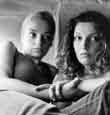
eaRtH anD WateR
PAnoS KARKAnEVAToS
Grecia - Bulgaria - Lussemburgo / Greece - Bulgaria - Luxembourg 1999, 35mm, col., 112’ v.o. greca / Greek o.v.
nikolas è un suonatore di lira nei riti dionisiaci, cerimonie in cui gli iniziati camminano sui carboni ardenti. È giovane, innocente, grezzo, e innamorato. Konstantina ha tutta la vita davanti. eccetto il vortice d’entusiasmo, lei e nikolas non hanno nulla in comune, o almeno lei così crede. Così lo scarica e se ne va. nikolas affonda nelle torbide acque del fiume. Ritorna a galla, si butta nel mondo, nella città, nella notte, lontano dalle proprie radici e dalla propria natura razionale. Laddove si dà fondo alle ultime riserve dell’esistenza. incontra elena, una russa. Con una cartolina di toronto nella borsetta. Fragile, vulnerabile, ma determinata. Dotata di forza di sopravvivenza, una forza che non cede a compromessi. vi è un tragico punto d’incontro tra Konstantina, nikolas ed elena: il sacrificio che nasce dall’amore. nikolas e Konstantina si perdono. Quando si rincontrano niente è più come prima. nikolas è passato dall’altra parte. ma Konstantina lo riporterà indietro, con sé. Laddove ogni cosa diviene più semplice, inevitabile e vera. niente più, niente meno di terra e acqua.
sceneggiatura / screenplay: Panos Karkanevatos. Fotografia / Photography: Iannis Valeras. montaggio / editing: Panos Karkanevatos. musica / music: Iannis Anghelakas, Iorgos christianakis, asclipiós Zambetas. suono / sound: Antonis Samaràs, Kostas Varibopiotis. scenografia, Costumi / art Director, Wardrobe: Tassos diakomanolis. interpreti / Cast: Iorgos Karamichos, Fotiní Papadòdima, Lena Kitsopoulou, Vassias Eleftheriadis, Katerina Karavianni, Michalis Mitroussis, dimitris Siakaras,
nikos Gheorgakis, Aléxandros Moukanos, Iorgos Konstas, Eleni dimopoulou, effi Drossou, Thódoros Teknetzidis, zafiris Katramadas, Iannis Anghelakas, dìmitra Chatoupi, Thodorìs Gonis, Iorgos Emirzàs.
Produzione / Produced by: Greek Film Centre.
Coproduzione / Co-produced by: hellenic Broadcasting Corp. ET1, Panos Karkanevatos, Cinergon, Geopoly, Monipoly Productions.
Con la partecipazione di / With the participation of: Salonicco, capitale europea della cultura, 1997 / Thessaloniki, European Capital of Culture, 1997. Con il sostegno di / supported by: Eurimages.
nikolas is a lyre player in the Dionysiac rites, ceremonies where initiates walk on burning coals. He is young, innocent, unrefined, in love. Konstantina’s whole life lies ahead of her. she and nikolas have nothing in common except for the whirlwind of ecstasy, or so she thinks. she dumps him and leaves. nikolas sinks into the muddy waters of the river. He comes out on the surface, goes out into the world, into the city, into the night, far from his roots and his rational nature. there where the ultimate reserves of existence are traded. He meets elena who comes from Russia. a postcard of toronto in her handbag. Fragile, vulnerable, but determined. armed with the strength to survive, a non-negotiable strength. there is a tragic balance between Konstantina, nikolas and elena: the sacrifice that stems from love. nikolas and Konstantina lose each other. When they meet again nothing is the same any more. nikolas has gone over to the other side. Konstantina will take him back, with her. there where everything becomes more simple, inevitable and true. nothing less, nothing more than earth and water.
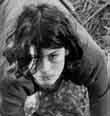
Le QUattRO staGiOni DeLL a LeGGe tHe FOUR seasOns OF tHe LaW
dIMoS AVdELIodIS
Grecia / Greece 1999, 35mm, col., 178’ v.o. greca / Greek o.v.
isola di Chios, anno 1960. in seguito alla morte improvvisa della guardia locale distaccata, il Consiglio del villaggio di tholopotamos chiede con forza all’agronomo della zona di nominare un altro uomo al posto del deceduto. Le guardie locali disponibili si rifiutano di andare in quel villaggio, dalla pessima reputazione, in cui il loro collega è perito nel compiere il proprio dovere. allorché il villaggio di tholopotamòs ripresenta la richiesta offrendo un incentivo in denaro, quattro di loro si offrono volontari per quel posto. Uno dopo l’altro vengono prima nominati e poi licenziati dall’agronomo, nel momento in cui ognuno dei quattro fallisce la propria missione.
sceneggiatura / screenplay: dimos Avdeliodis.
Fotografia / Photography: odysseas Pavlòpoulos (Estate / Summer), Alekos Iànnaros (Autunno / Autumn), Linos Mevtanis (Inverno / Winter), Sotiris Perreas (Primavera / Spring).
montaggio / editing: Kostas Iordanidis. musica / music: Antonio Vivaldi: Le quattro stagioni / The Four Seasons interpretate da / performed by Europa Galante, Fabio Bondi, Vienna Festival orchestra, Interphone Classic Germany; Tsitsanis: Sinefiasmeni Kyriakì; Kazantzidis: Ise i zoì mou.
suono / sound: Antonis Samaràs. scenografia / art Director: nikos Chatzìs.
Costumi / Wardrobe: Anna Karamouslì. interpreti / Cast: Anghelikì Malanti, Anghelos Pantelaras, Takis Agorìs, Iannis Tsoubariotis, Stelios Makriàs, Panaiotis Louros, Ilìas Petropouleas, dimitris Avghoustidis.
Produzione / Produced by: Greek Film Centre.
Coproduzione / Co-produced by: dimos Avdeliodis, The hellenic Broadcasting Corp. ET-1.
the island of Chios, 1960. Following the sudden death of the local rural guard, the council of the village of tholopótamos pressures the district agronomist to appoint a new man in the place of the deceased. the available rural guards refuse to go to this village, which has a bad reputation, and where their colleague died in the line of duty. When the village of tholopótamos resubmits its request and offers a financial incentive, four of them volunteer for the post. the agronomist appoints and subsequently dismisses one after another, when each of the four fails in his mission.
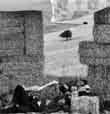
Città eFFimeRa
ePHemeRaL tOWn
IoRGoS zAFIRIS
Grecia / Greece 2000, 35mm, col., 89’ v.o. Greca / Greek o.v.
È la storia di un viaggio. andreas raggiunge la casa della madre scomparsa sull’isola. il paesaggio è mutato e gli abitanti, quelli che rimangono, non ricordano granché. Comunità straniere, famiglie e gruppi di forestieri si sono riversati sull’isola. andreas non sa più trovare casa sua. Ogni cosa è cambiata per sempre, così decide di fare la sola cosa che gli è rimasta. abbandonandosi al fantastico, ricostruisce il paesaggio andato perduto. Rimette la linea blu dell’orizzonte dov’era. e in questo percorso non sarà solo. i forestieri lo aiuteranno e la città sarà ricostruita, una città effimera.
sceneggiatura / screenplay: Iorgos zafiris, Christos Koulinos, Iannis Leontaris.
Fotografia / Photography: Stamatis Iannoulis. montaggio / editing: Iorgos Triantafyllou. suono / sound: Antonis Samarás, Kostas Varybopiotis. scenografia / art Director: Thalia Istikopoulou, Iorgos ziakas. Costumi / Wardrobe: Thalia Istikopoulou.
interpreti / Cast: Iorgos dialegmenos, Maria Skoulá, Maria Kechaioglou, Iorgos Vassilakis, Muzafer zifla, dioni Kourtaki, drita Pelinku, Vassilis Pyrros, Christos Tsangas, Iannis Anastassakis, Taxiarchis Chanos.
Produzione / Produced by: Greek Film Centre.
Coproduzione / Co-produced by: notos Film Productions, hellenic Broadcasting Corporation ERT S.A., Bad Movies, Telefilm, G.M. Lazaridis.
Ephemeral Town is the story of a journey. andreas travels to his dead mother’s home on the island. the landscape has been altered and the inhabitants - those who remain - don’t remember much. Foreign communities, families and groups of foreigners flood the island. andreas can no longer find his home. everything has changed for good, so he decides to do the only thing left to him. as he immerses himself in the myth he reconstructs the lost landscape. He sets the blue line of the horizon where it used to be and he will not be alone along this journey. the foreigners will help him, and the town will be rebuilt, an ephemeral town.
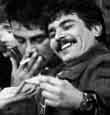
stRaDe BLOCCate ROaDBLOCKs
STAVRoS IoAnnou
Grecia / Greece 2000, 35mm, col., 98’ v.o. curda / Kurdish o.v.
ayat è riuscito a fatica a passare il confine turco-greco insieme a un numeroso gruppo di profughi curdi, alla ricerca del giovane fratello, ahmet, che ritiene possa essere ad atene. Durante la ricerca nei rifugi temporanei per i profughi viene a contatto con la mafia curda, che lo aiuta trovandogli il modo di raggiungere l’italia attraverso il mediterraneo. ayat lascia la città nascosto su un camion e continua il suo viaggio su una nave traghetto. sulla nave incontra un altro clandestino, Zirek, che ha conosciuto suo fratello. Durante la traversata gli dice tutto quello che sa di ahmet. Zirek fa una vivace descrizione della vita dei profughi curdi ad atene; parla delle loro paure e del costante senso di insicurezza che caratterizza le loro esistenze. Gli racconta anche della disperazione che attanaglia i profughi giorno dopo giorno, la loro nostalgia, i loro sogni e il loro profondo desiderio di una vita migliore. Racconta di quello che ha passato ahmet fino al momento in cui finalmente ha avuto abbastanza soldi per la traversata verso l’italia…
sceneggiatura / screenplay: Stavros Ioannou, Afroditi Pavlaki. Fotografia / Photography: diamantìs Papadòpoulos. montaggio / editing: Vanghelis Christoulakis. musica / music: Vanghelis Katsoulis, Tania nikoloudi. suono / sound: nikos Charalambidis.
interpreti / Cast: hussein Abdulah, Ahmet Guli, Falaha hassan, zirek Mizuri, Vinoir Tsia, Basir Ismail, Abas Esiar, Sitar Bizar.
Produzione / Produced by: Filmode Ltd.
Coproduzione / Co-produced by: Greek Film Centre.
ayat has struggled over the turkish-Greek border together with a large group of Kurd refugees in order to look for his younger brother, ahmet, whom he suspects may be in athens. During his search among the temporary shelters that have been erected for the refugees, he comes into contact with the Kurd mafia, who help him find out how he can get across the mediterranean to italy. ayat leaves the city hidden on a truck and continues his journey on a ferry. On the boat, he meets another illegal emigré, Zirek, who knew his brother. During the crossing, he tells him all he knows about ahmet. Zirek provides a vivid description of the lives of Kurd refugees in athens; he talks about their fears and the constant feeling of insecurity that characterises their existence. He also tells him of the despair that plagues the refugees every day, their homesickness, their dreams and their deep-seated desire for a better life. He recounts what ahmet went through until he finally had enough money for the seacrossing to italy…

DiFFiCiLi aDDii: miO PaDRe
HaRD GOODBYes: mY FatHeR
PEnny PAnAIoToPouLou
Grecia / Greece
2002, 35mm, col., 113’ v.o. greca / Greek o.v.
ilias, un ragazzino di dieci anni che vive ad atene verso la fine degli anni sessanta, perde improvvisamente il padre. mentre il resto della famiglia cerca di adattarsi alla nuova realtà, ciascuno a modo suo, il ragazzino si rifiuta di credere che il padre sia morto e continua a comportarsi come se aspettasse il suo ritorno, da uno dei suoi viaggi d’affari. inizia così ad agire stranamente, per mantenere il padre vivo dentro di sé per sempre.
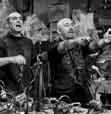
anima in sUBBUGLiO sOUL KiCKinG
IAnnIS IKonoMIdIS
Grecia / Greece
2005, 35mm, col., 111’ v.o. greca / Greek o.v.
takis è sposato con una donna che lo tradisce. takis ha una figlia che non vede mai. takis ha una famiglia ingrata che lo chiama ingrato. takis ha colleghi paranoici e un boss sadico. takis ha un amico che urla e creditori che gli urlano. takis è solo. violenza e oppressione. verbale, mentale, fisica. tutti contro uno e Dio contro tutti…
sceneggiatura / screenplay: Penny Panaiotopoulou. Fotografia / Photography: dimitris Katsaìtis. montaggio / editing: Petar Marković, ánghelos Anghelòpoulos. suono / sound: nikos Papadimitrìou.
scenografia / art Director: Lily Kentaka, Aurèlien Leriche. Costumi / Wardrobe: Lily Kentaka.
interpreti / Cast: Iorgos Karaiannis, Stelios Màinas, Ioanna Tsirigouli, Christos Stèrioglou, despo diamantidou, Christos Bouiotas. Produzione / Produced by: CL Productions, Twenty Twenty Vision, Penny Panaiotopoulou. Coproduzione / Co-produced by: hellenic Broadcasting Corp., Greek Film Centre, Max Productions, Alpha TV, Mythos Productions Ltd. Con il sostegno di / supported by: Eurimages.
elias, a ten year-old boy who lives in athens in the late sixties, suddenly loses his father. the rest of the family tries to adjust to the new reality, each in his own way, except for the little boy who refuses to believe that his father is dead and continues to act as though he is expecting him to return from one of his business trips. He starts acting strangely, in order to keep his father alive inside of him forever.
sceneggiatura / screenplay: Iannis Ikonomidis, con la collaborazione di / with the collaboration of Lenia Spyropoulou, Errikos Litsis e gli interpreti del film per il dialogo finale / the whole cast of the film to the final dialogue. Fotografia / Photography: dimitris Katsaìtis. montaggio / editing: Iannis Chalkiadakis. suono / sound: dinos Kittou. scenografia, costumi / art Director, Wardrobe: Ioulía Stavridou.
interpreti / Cast: Errikos Litsis, Maria Kechaioglou, Vanghelis Mourikis, Maria nafpliotou, iannis Voulgarakis, Kostas Xikominós. Produzione / Produced by: Argonauts S.A., Iannis Ikonomidis Films Ltd. Coproduzione / Co-produced by: hellenic Broadcasting Corporation ERT S.A., Cassandra Films, Strada Productions S.A. Con il sostegno di / supported by: Ministero dell’Educazione e della Cultura della Repubblica di Cipro / Ministry of Education and Culture of the Republic of Cyprus.
takis is married to a woman who is cheating on him. takis has a daughter he never sees. takis has an ungrateful family who calls him ungrateful. takis has paranoiac colleagues and a sadistic boss. takis has a friend who is yelling and creditors yelling at him. takis is alone. violence and oppression. verbal, mental, physical. all against one and God against everyone…
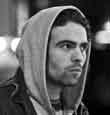
AnGhELIKì AnTonìou
Grecia - Germania / Greece - Germany 2006, 35mm, col., 105’ v.o. greca - albanese / Greek - albanian o.v.
eduart, un giovane cresciuto in un ambiente familiare duro e oppressivo, lascia l’albania per atene con il sogno di diventare un cantante rock e vivere una vita diversa. L’impulsività e le passioni legate alla sua età lo portano a un crimine estremo: una notte, con la disinvoltura di un uomo senza scrupoli morali, commette un omicidio. Perseguitato da tutti, compreso se stesso, in prigione è costretto a sopportare condizioni incredibilmente dure. Conosce un medico tedesco che lo aiuta a riportare a galla i sensi di colpa nascosti nel profondo della sua anima. eduart allora confessa il suo crimine, e il suo grande rimorso lo conduce dal buio alla luce. Come un moderno Raskol’nikov, passa dal delitto al “castigo”, osando urlare la sua colpa.
sceneggiatura / screenplay: anghelikì antonìou, Srđan Koljević, Kriton Kalaitzidis.
Fotografia / Photography: Jürgen Jürges. montaggio / editing: Takis iannópoulos. musica / music: Kostas Christidis, Minos Matsas. suono / sound: nikos Papadimitrìou. scenografia, costumi / art Director, Wardrobe: Ioulìa Stavridou. interpreti / Cast: Eshref durmishi, André hennicke,
ndricim xhepa, dancho Chevreski, Ermela Teli, Adrian Aziri, Gazmend Gjokaj, Manos Vakoussis, Edi Mehana, dimitris Liolios, nikolas Lambrou, Armando dauti, Luilzim zegja.
Produzione / Produced by: CL Productions, Jost hering Filmproduktion. Coproduzione / Co-produced by: Greek Film Centre, Medienboard Berlin-Brandenburg, Le Spot, nova, hellenic Broadcasting Corporation, odEon, Anghelikì Antonìou.
Distribuzione internazionale / World sales: Mdc int.
eduart, a young man who was brought up in a hard and oppressive family environment, leaves his country (alabania) with the dream of becoming a rock singer and living a different life in athens. the impulsiveness and the passions of his age lead him to an extreme crime: One night, with the ease of a man with no moral principles, he commits murder. Pursued by everyone, including himself, he is imprisoned under unbelievably harsh conditions. His acquaintance with a German doctor brings to the surface the guilt that was hidden deep inside him. eduart confesses his crime, and his deep remorse leads him from darkness to light. Like a modern Raskolnikov, he passes from crime to “punishment”, daring to cry out his guilt.

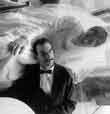
ameRiCani
ameRiCans
ChRISToS dIMAS
Grecia / Greece
1999, 35mm, col., 23’ v.o. greca / Greek o.v.
La storia di tony il Greco alla ricerca dell’ “altro” sogno americano a san Francisco.
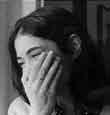
ELA nA Sou Po...
DevO DiRti Una COsa...
Listen...
KATERInA FILIoTou
Grecia / Greece 2000, 35mm, col., 26’ v.o. greca / Greek o.v.
iannis e sofia sono sposati da vent’anni e conducono una vita serena, finché non accadrà qualcosa che metterà in discussione il loro rapporto.
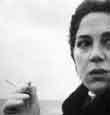
TA MATIA Pou TRonE
OCCHi DivORanti
tHe DevOURinG eYes
SyLLAS TzouMERKAS
Grecia / Greece
2000, 35mm, b-n / b-w & col., 26’ v.o. greca / Greek o.v.
sceneggiatura / screenplay: Christos dimas.
Fotografia / Photography: Kev Robertson, Eug. dionyssòpoulos. montaggio / editing: Sharon Franklin.
suono / sound: John Roenger.
interpreti / Cast:
Christos dimas, Catherine Trask, Bob Wott, Mauritha dunthy, Paul Gerrior
Produzione / Produced by: Fantasia Audiovisual Ltd. Con il sostegno di / With the support of: Greek Film Centre.
the tale of tony, a Greek immigrant in san Francisco, chasing the “other” american dream.
sceneggiatura / screenplay: Katerina Filiotou.
Fotografia / Photography: Iannis daskalothanassis. montaggio / editing: Elissavet Chronopoulou. suono / sound: Argyris Lazaridis.
interpreti / Cast: dina Michailidi, Giannis Kokiasmenos, Vivì Kokka, Stavros Panoussis, dafni Kyriakidou.
Produzione / Produced by: ERT.
Con il sostegno di / supported by: Greek Film Centre.
Yannis and sofia have been married for twenty years. they lead a peaceful life, until a sudden event will happen...
sceneggiatura, montaggio / screenplay, editing: Syllas Tzoumerkas. Fotografia / Photography: Pandelìs Mantzanàs. musica / music: Sakis Papadimitrìou. suono / sound: Sotiris Papagheorghìou. interpreti / Cast: Amalìa Moutoussi, Aspasìa Alevrà, dimitris Liolios, Kostìs Tzanokostakis.
Produzione / Produced by: dAnzAprojekt, Syllas Tzoumerkas, Stavrakos Film School, Instituut Media en Re/presentatie (utrecht).
tre giorni nella vita di due donne. La figlia: le prime pene d’amore, mentre il padre è via nel Pacifico. La madre: le sue fantasie, i suoi desideri inibiti o soddisfatti in fretta. suo marito è assente...
three days in the life of two women. the daughter: the first pangs of love. Her father away in the Pacific. the mother: her fantasies, her desires inhibited or hastily satisfied. Her husband absent....
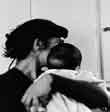
Pou KAThARIzI MILA (LEPToMÈRIES)
inteRnO COn DOnna CHe sBUCCia meLe (PaRtiCOL aRi)
inteRiOR WitH WOman PeeLinG aPPLes (DetaiLs)
ÈKToRAS LyGhIzoS
Grecia / Greece
2001, 35mm, col., 13’ v.o. greca / Greek o.v.
sceneggiatura / screenplay: Èktoras Lyghizos.
Fotografia / Photography: dimitris Kassimatis. montaggio / editing: A. Papatheofilopoulou. suono / sound: Vanghelis Vlessas. interpreti / Cast: Alexìa Kaltsiki, Christos Loulis, Sophia Moutidou, Fotinì Kontoudaki, Thanos Samaràs.
Produzione / Produced by: Èktoras Lyghizos.
Daily accidents and the silence of the society. incidenti quotidiani e il silenzio della società.
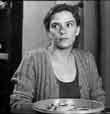
o GoGoS
iL venDitORe amBUL ante
tHe HaWKeR
PAnAIoTIS FAFouTIS
Grecia / Greece
2001, 35mm, col., 12’ v.o. greca / Greek o.v.
Una coppia vive un’esistenza piatta e monotona in una casa lungo una strada, che ogni tanto funge da trattoria per saltuari avventori. Un giorno un venditore ambulante fa una sosta e convince la donna ad acquistare alcune tovaglie per il suo locale. Da quel momento in poi le tovaglie iniziano a dominare la sua vita, come un modo per evadere la realtà.
sceneggiatura / screenplay: Panaiotis Fafoutis.
Fotografia / Photography: Iorgos Papandrikòpoulos. montaggio / editing: Panos Voutsaràs.
musica / music: dnA (Alèxandros Christaras, Michalis nivolianitis).
suono / sound: Iorgos Vassilìou.
scenografia / art Director: Pinelopi Valtì. Costumi / Wardrobe: Vassilis Barbarigos. interpreti / Cast: Maria Skoulà, Geràssimos Gennatàs, Akyllas Karazissis.
Produzione / Produced by: Greek Film Centre, Idéefixe Productions.
in a house by the side of the road that also operates as a country pub for passersby, lives a couple whose life is dull and uneventful. One day a hawker talks the woman into buying tablecloths for her pub. From that moment on, the tablecloths dominate her life as a means of escape from reality.
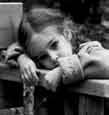
SEE no EVIL
nOn veDeRe iL maLe
ARIS BAFALouKAS
Grecia / Greece
2001, 35mm, col., 18’ v.o. greca / Greek o.v.
Un nonno e la sua nipotina escono per la solita passeggiata quotidiana nel parco. La bambina inventerà un gioco nel quale coinvolge anche il nonno.

dÈFTERI FySSI
seCOnDa natURa
seCOnD natURe
VARdìS MARInAKIS
Grecia / Greece
2005, 35mm, col., 12’ senza dialoghi / no dialogues
Un ufficiale di marina e una bambina provano, ciascuno a suo modo, un momento di solitudine e paura nella natura.

yGRAERIo Gas
BuJAR ALIMAnI
Grecia / Greece
2006, 35mm, col., 20’ v.o. greca / Greek o.v.
sceneggiatura / screenplay: Aris Bafaloukas.
Fotografia / Photography: odysseas Pavlòpoulos. montaggio / editing: Bonita Papastathi. musica / music: Melpo Bonatou.
suono / sound: Stèfanos Efthymìou.
interpreti / Cast: Kostas Sfikas, dìmitra doumeni.
Produzione / Produced by: ET1, Fantasia Audiovisual Ltd, Aris Bafaloukas.
Con il sostegno di / supported by: Greek Film Centre.
a grandfather and his granddaughter go out for their daily walk in a park. there they play a game she invents.
sceneggiatura / screenplay: Vardìs Marinakis.
Fotografia / Photography:
Vlassis Klotsotiras.
montaggio / editing: Iannis Chalkiadakis. musica / music: Christos Lainàs. suono / sound: Kennan Akkawi.
interpreti / Cast: Iordanis Kalessis, Antonela ziouda. Produzione / Produced by: Vardìs Marinakis.
a naval officer and a little girl experience, each in their own way, a moment of solitude and fear in nature.
sceneggiatura / screenplay:
Bujar Alimani.
Fotografia / Photography: Christos Karamanis. montaggio / editing: napoleon Stratoiannakis. musica / music: Thanassis Papakonstantinou. suono / sound: Lèandros dounis.
scenografia, costumi / art Director, Wardrobe: K. MacLellan.
interpreti / Cast:
Ierònimos Kaletsanos, Marios Alimani, Alexìa Kaltsiki, Tania Savvopoulou, Agoritsa Ikonomou, Ilìas Asproudìs. Produzione / Produced by: hellenic Broadcasting Corporation ERT S.a ., oxýmoron Films.
il padre è disoccupato, il figlio è malato e fuori fa freddo. the father is unemployed. His son is sick, outside it is cold.
1909-2009. dA TRIESTE A duBLIno:
James Joyce e il cinema Volta 1909-2009. FROm tRieste tO DUBLin: James Joyce and the volta Cinema
unA SERATA AL CInEMA VoLTA An EVEnInG AT ThE VoLTA CInEMA
unE PouPonnIÈRE à PARIS di ? (1909)
FRAnCESCA dA RIMInI; oR, ThE TWo BRoThERS di William v. Ranous (1907)
CoME CRETInETTI PAGA I dEBITI di andré Deed (1909)
IL SIGnoR TESTARdo di ? (1909)
LE huGuEnoT di Louis Feuillade (1909)
A GLASS oF GoAT’S MILK di Percy stow (1909)
ThE WAy oF ThE CRoSS di ? (1909)
(dER KLEInE SChLAuMEIER) di ? (1908)
PÊChE Aux CRoCodILES di ? (1909)
unE ConQuÊTE di Georges monca (1909) (fuori programma)
LuCIA dI LAMMERMooR di ? (1909)
VIAGGIo In ITALIA di Roberto Rossellini (1953)
PASSAGES FRoM FInnEGAnS WAKE di mary ellen Bute (1965-67)
uLIISSES di Werner nekes (1980-82)
uLySSES di Joseph strick (1967)
uLyS di
noRA di
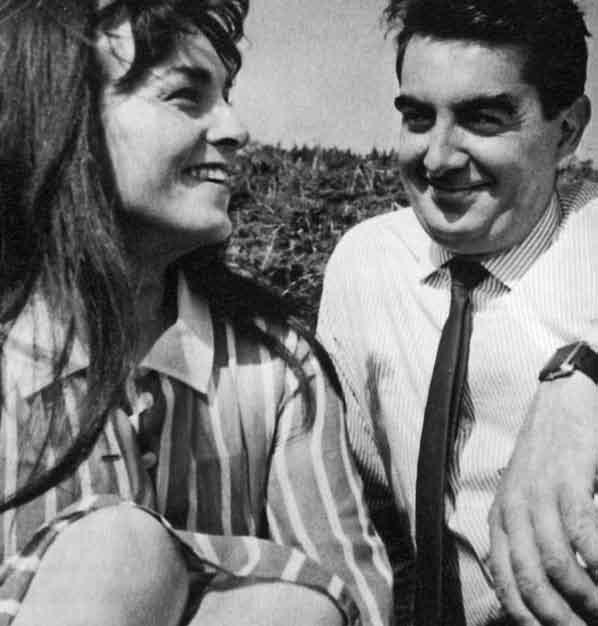
John McCouRT università Roma Tre, direttore della Trieste Joyce School director, Trieste Joyce School
Ritengo che i cinematografi siano il segno più evidente della corruzione americana. Trieste ne è piena e questi più volte nel corso della notte straripano di gente che vi si reca per vedere ciò che ha già visto e rivisto.
Così scriveva stanislaus Joyce nel suo diario triestino nel giugno del 1907, esprimendo sorpresa di fronte al rapido proliferare di nuovi cinema nei primi anni da lui trascorsi a trieste. La sua opinione rifletteva in tutto e per tutto il disdegno comunemente condiviso a quei tempi nei confronti del cinema, mezzo nuovo e rivoluzionario che presto sarebbe divenuto una delle colonne portanti dell’intrattenimento popolare. Fortunatamente il fratello James non condivideva tale critica e anzi riteneva che questa nuova invenzione potesse rappresentare tanto un’opportunità d’affari a livello personale, quanto una sfida innovativa, le cui tecniche radicali avrebbero potuto arricchire e ampliare la sua narrativa di nuove dimensioni. Joyce percepiva le grandi potenzialità legate al cinema e il suo interesse ricadeva su pellicole italiane dell’epoca quali King Lear (1910), Inferno (1911) e Odissea (1911) di Giuseppe De Liguoro, per non dire di Beatrice Cenci di mario Caserini, proiettato al volta di Dublino nel 1909. sebbene il cinema avesse già esordito a Dublino nel 1896 (all’aprile di quell’anno risalgono infatti le prime proiezioni di ‘film animati’ al “Palace of varieties” di Dublino – oggi teatro “Olympia”), e sebbene ci fossero delle vere e proprie stagioni cinematografiche allestite in diverse zone della città (come le stagioni di James J. Jameson al “Rotunda”), non si poteva tuttavia dire che esistesse una sala riservata esclusivamente alle proiezioni cinematografiche nella città natale di Joyce prima del 1909, anno in cui lo scrittore, sulla scia del crescente successo del cinema a trieste, decise di aprirne uno lì. sostenendo di conoscere ‘una città di 500.000 abitanti che non contava neanche un cinema’, egli riuscì a persuadere un gruppo di uomini d’affari triestini già attivi nell’ambiente cinematografico a trieste e a Bucarest – Giuseppe Caris, antonio machnich e Giovanni Rebez – a sostenerlo finanziariamente. L’amico, nonché avvocato e traduttore, nicolò vidacovich redisse un contratto particolarmente proficuo per Joyce: egli avrebbe goduto del 10% dei profitti, e in più gli sarebbe stata accordata la direzione esclusiva del cinema tutti i mesi di luglio e agosto – espediente ingegnoso, quest’ultimo, per
I call cinematographs the greatest sign of American corruption. Trieste is full of them, and they are full to overflowing half a dozen times a night with people who come to see what they have seen over and over again.
thus wrote stanislaus Joyce in his trieste diary in June 1907 expressing his surprise at the mushrooming of new cinemas in trieste in the early years of his life there. His opinion was fairly typical of the disdain commonly felt at the time towards the revolutionary new medium of cinema that was soon to become such a staple part of popular entertainment. Fortunately, his brother, James, did not share his curmudgeonly view and looked on the new invention as both a personal business opportunity and also as an innovative challenge whose radical techniques could enrich and add new dimensions to his own fiction. Joyce had a sense of the great potential of film and his interest was kindled by italian films of the time such as Giuseppe De Liguoro’s King Lear (1910), Inferno (1911) Odissea (1911), not to mention mario Caserini’s Beatrice Cenci which was shown at the volta in Dublin in 1909.
although films had reached Dublin as early as 1896 (in april of that year ‘living pictures’ were presented at Dublin’s Palace of varieties - today the Olympia theatre), and although there were regular seasons of films given in various locations around the city (such as James J. Jameson’s seasons at the Rotunda), no hall exclusively devoted to cinema existed in Joyce’s native city prior to 1909, the year in which Joyce, inspired by the success of cinema in trieste, decided to open one there. He managed to convince a group of triestine businessmen already involved in cinemas in trieste and Bucharest – Giuseppe Caris, antonio machnich, and Giovanni Rebez, - to back him financially by telling them that he knew ‘a city of 500,000 inhabitants where there is not a single cinema’. His friend, the lawyer and translator nicolò vidacovich, drew up a contract which was singularly generous to Joyce: he would receive 10% of any profits and would be given the sole right to manage the cinema in July and august of each year – an ingenious ruse, this, for guaranteeing a free annual holiday in Dublin far away from that ‘damn silly sun that turns men into butter’ that wearied him so
poter trascorrere ogni anno una vacanza spesata a Dublino, lontano da quel ‘sole maledettamente sciocco che trasforma gli uomini in burro’, quel sole che lo rendeva così insofferente a trieste. il triestino Lorenzo novak, si unì al gruppo di imprenditori in un secondo momento e venne nominato primo direttore del cinema, una volta che Joyce riuscì a farlo aprire. alla fine, dopo mesi di accurati preparativi, per lo più messi a punto dallo stesso Joyce, il 20 di dicembre del 1909 il cinema volta di Dublino aprì i battenti al pubblico. ‘Dublino invasa da un bioscopio italiano’ fu il titolo con cui «the Bioscope» annunciò l’evento, mentre sulle pagine dell’«evening telegraph», noto quotidiano dublinese, si leggeva:
Ieri, al numero 45 di Mary Street, una rassegna cinematografica estremamente interessante ha aperto i battenti a un folto pubblico di invitati. La sala adibita alla proiezione è attrezzata in modo estremamente ammirevole per l’occasione, così come altrettanto ammirevolmente si è pensato all’allestimento. Infatti sembrerebbe che non si sia badato a spese per far guadagnare allo spettacolo l’incoraggiamento del pubblico. Forse la sua particolarità risiede nelle origini italiane e in questo senso si tratta di qualcosa al di fuori delle comuni e più convenzionali forme di questo genere di proiezioni.
Joyce, come sempre bravissimo a corollare le proprie imprese di commenti positivi, non si smentì nemmeno questa volta: di distinse per ‘aver lavorato ovviamente senza risparmiarsi… meritandosi i complimenti’. Pareva proprio che il cinema non potesse vantare inizio più propizio. il volta si spacciava come “la sala più elegante di Dublino” e offriva ciò che per l’epoca era una vera e propria innovazione – un orario di programmazione continuato dalle cinque del pomeriggio alle dieci di sera. i palinsesti comprendevano soprattutto commedie mute, film di viaggio e d’attualità (dove erano le notizie a far da protagoniste). La maggior parte dei film, di una quindicina di minuti circa, aveva degli intertitoli in italiano o francese che di certo non facilitavano la visione agli spettatori irlandesi. venivano distribuiti volantini con brevi riassunti e un certo signor R. morgan si occupava dell’accompagnamento musicale con la sua orchestra scelta. addetto alla proiezione era Guido Lenardon, un triestino che si alternava con
much in trieste! Lorenzo novak later joined the enterprising group and was appointed to take over as the cinema’s first manager once Joyce had succeeded in getting it opened. On 20 December 1909, after months of careful preparation mostly carried out by Joyce himself, Dublin’s volta cinema finally opened its doors to the public. The Bioscope heralded the event with the headline ‘italian Bioscope invades Dublin’ while the prominent Dublin newspaper, the Evening Telegraph, reported:
Yesterday, at 45 Mary Street, a most interesting cinematograph exhibition was opened before a large number of invited visitors. The hall in which the display takes place is most admirably equipped for the purpose and has been admirably laid out. Indeed no expense would appear to have been spared in making the entertainment one deserving of the patronage of the public. Perhaps its special feature is that it is of Italian origin and is in that respect somewhat out of the ordinary and more conventional forms of such displays.
Joyce – always skilled at organising complementary press notices about himself - was singled out for having ‘worked apparently indefatigably ... and deserves to be congratulated’. the cinema, it seemed, could not have got off to a more propitious start.
the volta advertised widely as “the most elegant hall in Dublin” and offered what was then a complete innovation – a continuous film programme from 5 o’clock in the evening until 10 at night. the programmes were largely made up of silent comedies, travel films, and topicals (news features). most of the films, which lasted about fifteen minutes, had inter-titles in italian or French which certainly did not make viewing particularly easy for the irish audience. Handbills containing short synopses were handed out and musical accompaniment was provided by a mr R. morgan with his select orchestra. a triestine, Guido Lenardon, worked as projectionist alternating in this role with a young Dubliner named Lennie Collinge. as Luke mcKernan has illustrated, conditions at the volta were rather primitive though entirely typical of similar enterprises being established elsewhere at the time:
Lennie Collinge, un giovane ragazzo di Dublino. Come spiegato da Luke mcKernan, le condizioni al volta erano piuttosto arretrate, sebbene del tutto in linea con le iniziative affini che all’epoca si intraprendevano altrove:
Il Volta era colmo di panche di legno, duecento sedie da cucina riempivano le prime file riservate agli acquirenti dei biglietti più costosi. Palme in vaso e un tappeto lungo il corridoio centrale spiccavano su uno sfondo cremisi e blu chiaro. I cronisti insistevano sul fatto che attenzione particolare era stata riservata ‘al comfort e alla sicurezza dei clienti abituali’. Il proiettore, dotato di manovella ad uso manuale, era collocato all’interno di una stanza al piano superiore. Lennie Collinge … ricordava che c’era un unico proiettore e per di più senza un sistema di avvolgimento della bobina. Le pellicole già proiettate giacevano semplicemente avvolte all’interno di un secchio. Nell’intervallo fra un film e l’altro veniva proiettata una diapositiva sullo schermo per motivare il ritardo.
il 2 di gennaio del 1910, a meno di due settimane dall’apertura del volta, Joyce fece ritorno a trieste, dopo essersi assicurato per prima cosa di appianare le difficoltà relative alla licenza. nei mesi successivi si tenne in stretto contatto col novak, soprattutto per ciò che concerneva le scelte di programmazione e gli eventi promozionali. nonostante la sua assenza e sebbene il novak non parlasse bene l’inglese, pare comunque che all’inizio il cinema abbia avuto un discreto successo, guadagnandosi recensioni promettenti per i diversi film in calendario, specie quelle apparse sul quotidiano di arthur Griffith, il «sinn Fein». Citando ancora mcKernan: ‘alcuni film d’argomento religioso erano così popolari da tenere il cartellone per una settimana intera’, e di certo Joyce sapeva bene cosa preferisse il suo pubblico, prevalentemente della Dublino cattolica. Fra i film a carattere religioso che venivano proiettati, The Way of the Cross (che al volta prese il titolo di Quo Vadis) e Soeur Angélique (reintitolato Sister Angelica, a Legend of Lourdes) erano fra quelli che tenevano il cartellone più a lungo. ma l’assenza di Joyce, la mancanza di un madrelingua inglese nell’organizzativo, unitamente a una programmazione imprevedibile e alla comparsa di iniziative simili, senza dimenticare la completa assenza di film americani, facevano presagire che il progetto del
The Volta was fitted with wooden benches, with 200 kitchen chairs at the front for those paying top prices. The colour scheme was crimson and light-blue, with potted palms and a carpet down the central aisle. Commentators remarked upon the attention given to ‘the comfort and safety of its patrons’. The projector was hand-cranked, housed in an overhead room. Lennie Collinge ... recalled that there was just a single projector with no take-up spool. Used film simply spooled into a bucket. During film change-overs, a slide was put up on the screen explaining the delay.
On 2 January 1910, less than two weeks after the opening of the volta, Joyce returned to trieste having made sure to first iron out licence difficulties. in the months that followed he stayed in close touch with novak particularly with regard to programme choices and promotion. in his absence, and despite the fact that novak’s english was poor, the cinema initially seems to have done reasonably well and the varied programmes received favourable reviews, especially in arthur Griffith’s Sinn Fein newspaper. according to mcKernan ‘some films on religious themes were popular enough that they were kept over for a week’, and Joyce clearly knew what would go down best with his largely Catholic Dublin audiences. among the religious films given extended runs were The Way of the Cross (volta title, Quo Vadis) and Soeur Angélique (volta title, Sister Angelica, a Legend of Lourdes).
But Joyce’s absence and the lack of a native english speaker among the management team together with erratic programming and the emergence of rival ventures, as well as the total absence of american films, meant that the Dublin volta project was not destined to endure. in april, Joyce’s partners – much to his annoyance – decided to wind up the venture and eventually sold it at a loss of some £600 to the British Provincial Cinemas Company which ran it until 1919. although Joyce had not invested capital in the venture, he felt he was due a 10% share of the sale price for having supplied the idea and having committed considerable time and energy to its success– but his partners refused to concede.
volta di Dublino non fosse destinato a durare. nel mese di aprile i soci di Joyce – nonostante il suo parere contrario – decisero di chiudere i battenti e alla fine vendettero il cinema alla “British Provincial Cinemas Company”, perdendo qualcosa come seicento sterline. Quest’ultima poi lo gestì sino al 1919. sebbene Joyce non avesse investito alcunchè nell’impresa, riteneva gli fosse dovuto il 10% della liquidazione per esserne stato l’ispiratore e per aver speso molto tempo e un’infinità di energie per contribuire al suo successo; i suoi soci, però, non glielo accordarono.
Questa, molto sinteticamente, la storia del Cinema volta. il trieste Film Festival insieme alla Joyce school (Università di trieste) si propongono di celebrarne il centenario dalla fondazione con una mostra a Palazzo Costanzi, una retrospettiva cinematografica, un concorso per la miglior sceneggiatura breve del poema in prosa triestino di Joyce, il Giacomo Joyce, nonché con un convegno internazionale. La mostra, curata da erik schneider, ripercorre il primo incontro di Joyce col cinema a Pola nell’inverno fra il 1904 e il 1905 e rende accessibile una mole inedita di documentazione e materiale fotografico sui soci cinematografici triestini di Joyce – machnich, Caris e Rebez –, prima di spostare l’attenzione sul sodalizio del volta di Dublino. La retrospettiva cinematografica, curata da elisabetta d’erme, presenta una selezione dei film proiettati a Dublino da Joyce, come molti degli importanti adattamenti cinematografici delle opere joyciane. Joyce era dell’opinione che ‘solo due registi sarebbero stati in grado di dirigere Ulysses’ – eisenstein o Ruttman – ma, di fatto, nessuno dei due si sarebbe cimentato nell’impresa. Ciò nonostante, molti altri brillanti registi emergenti avrebbero preso il loro posto: da Joseph strick, con Ulysses e A Portrait of the Artist, a John Huston, con la sua versione memorabile e commovente di The Dead. al fine di valorizzare l’impronta spiccatamente triestina nel rapporto fra Joyce e il cinema, è stato organizzato un concorso per la miglior sceneggiatura breve ispirata all’unica opera in prosa che Joyce abbia ambientato fuori Dublino: il triestino Giacomo Joyce. il vincitore del concorso sarà proclamato il 17 gennaio e sarà arricchito da letture di Omero antonutti. Per ricostruire i molteplici aspetti della celebrazione del centenario,
this, very briefly, is the history of the Cinema volta which the alpe adria trieste Film Festival and the University of trieste’s Joyce school have teamed up to celebrate one hundred years after the event with an exhibition at Palazzo Costanzi, a film retrospective, a competition for the best short screenplay of Joyce’s triestine poem-in-prose, Giacomo Joyce, and an international conference. the exhibition, curated by erik schneider, covers Joyce’s first encounter with cinema in Pola during the winter of 1904-05 and provides much previously unseen documentary and photographic material on Joyce’s triestine cinema partners, machnich, Caris and Rebez, before turning the spotlight on the volta adventure in Dublin. the film retrospective, assembled by elisabetta d’erme, features a variety of the short films shown in Dublin by Joyce as well as many of the important film treatments of Joyce’s works. Joyce was of the opinion that ‘there were only two directors who could film Ulysses - eisenstein or Ruttman - but as it turned out, neither of them were to do so. many other distinguished filmmakers emerged, however, to take their place, from Joseph strick with his Ulysses and A Portrait of the Artist to John Huston with his memorable and moving version of The Dead to mark the distinctly triestine input into Joyce’s relationship with cinema, a competition has been organised for best short screenplay inspired by Joyce’s only prose work to be set outside of Dublin, that is, his triestine Giacomo Joyce. the winner of this competition will be announced on 17 January. to cap these various elements of our centenary celebration, an international conference on Joyce and cinema is being organised by the University of trieste’s Joyce school which brings together leading cinema and Joyce scholars to examine, among other things, Joyce’s involvement with the volta, the world of triestine cinema around 1909, the influence on Joyce of early cinema and of leading figures such as méliès, the impact of Joyce on filmmakers from Godard to Rossellini to scorsese, the artistic merits and demerits of the various film versions of Joyce’s works from mary ellen Bute’s early Finnegans Wake to sean Walsh’s 2004 Bloom
la trieste Joyce school (Università di trieste) ha organizzato un convegno internazionale su Joyce e il cinema, riunendo assieme i maggiori esperti sia joyciani che cinematografici. L’obiettivo è quello di analizzare, fra le altre cose, il coinvolgimento di Joyce nel progetto del volta, il mondo del cinema nella trieste del 1909, l’influsso su Joyce tanto del cinema ai suoi esordi, quanto di figure di rilievo come méliès, l’impatto di Joyce su registi come Godard, Rossellini e scorsese, pregi e difetti artistici dei diversi adattamenti cinematografici delle opere joyciane, dall’uscita di Finnegans Wake di mary ellen Bute (1965) al più recente Bloom di sean Walsh (2004).
‘Roll away the reel world’: James Joyce e il Cinema Convegno organizzato dalla trieste Joyce school e dal trieste Film Festival (15-16 Gennaio 2009)
‘Roll away the reel world’: James Joyce and Cinema a 2-day conference organised by the trieste Joyce school and the trieste Film Festival (15-16 January 2009)
Relatori / speakers
Louis Armand (Charles University, Prague): “Joyce and Godard”
Kevin Barry (n.U.i. Galway): “tracing Joyce: The Dead in Huston and Rossellini”
Marco Camerani (Università di Bologna): “Circe, Fregoli and Cinema”
Maria di Battista (Princeton University): “the Ghost Walks: Joyce and the spectres of silent cinema”
Cleo hannaway (University of Oxford): “see ourselves as others see us: Cinematic Ways of seeing and Being in Ulysses”
Barbara Maio (Università Roma tre): “On John Huston’s The Dead”
Carla Marengo Vaglio (Università di torino): “Joyce, between futurist music-hall and cinema”
davide Maschio (Università di torino): “On Bute’s Finnegans Wake”
Luke McKernan (British Library): “James Joyce and the volta Programme”
Jesse Meyers (independent scholar, new York): “James Joyce, Contemporary screenwriter?”
Katy Mullin (University of Leeds): “Joyce, early Cinema and the erotics of everyday Life”
Eric Schneider (independent scholar, trieste): “Dedalus among the film folk”
Philip Sicker (Fordham University), “mirages in the Lampglow: Joyce’s ‘Circe’ and méliès’s Dream Cinema”
Keith Williams (University of Dundee): “Odysseys of sound and image: ‘Cinematicity’ and the Ulysses adaptations”
moderatori / Chairs: masolino D’amico (Università Roma tre), Ron ewart (James Joyce Foundation, Zurich), John mcCourt (Università Roma tre), Katy mullin (University of Leeds), Laura Pelaschiar (Università di trieste), Franca Ruggieri (Università Roma tre).
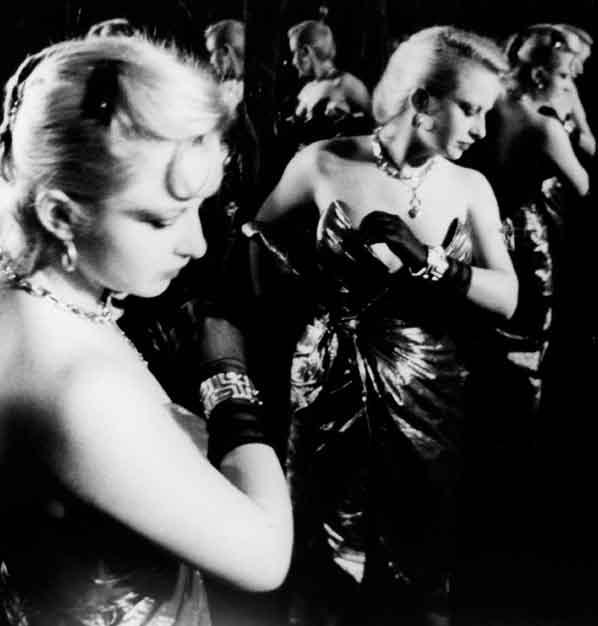
ERIK SChnEIdER
Curatore della mostra
“Trieste, James Joyce e il cinema: storia di mondi possibili”
Curator of the exhibition
“Trieste, James Joyce e il cinema: storia di mondi possibili”
“shadows by the film folk, masses by the good people.” Finnegans Wake, 221.21
La storia è una questione di fonti. Prendiamo in considerazione due esempi relativi alle origini del cinema a trieste:
1) teatRO FeniCe: “Quanto prima ci sarà a questo teatro il Cinematografo – proiezioni fotografiche animate.”
2) “Lanterna magica”. “Fonografo edison”. “Panoramica stereoscopica”. “Gabinetto elettromagnetico”. “Rolandografo”. “Fotografie istantanee” (schnellphotographen). “topo bianco e uccelli addomesticati”. “signora barbuta con 2 vampiri. esibisce sua figlia, un colosso, 17 anni, 200 chili”. “Gabinetto elettromagnetico con illusione di donna bruciata viva”.
il primo esempio è tratto dal quotidiano locale triestino «il Piccolo» (7 luglio, 1896), e annuncia le prime proiezioni di film a trieste, a solo pochi mesi dalla presentazione dell’invenzione dei fratelli Lumière al “salon indien” di Parigi. il secondo è una miscellanea di estratti dalle numerose richieste di autorizzazione per spettacoli pubblici (comprese le richieste relative a spettacoli cinematografici itineranti o temporanei) da tenersi nel Küstenland (il Litorale austriaco), la regione dell’alto adriatico sotto l’impero austro-ungarico, nel periodo che va dal 1895 al 1905. Questi documenti, che oggi si trovano negli archivi di stato di trieste, forniscono una visione significativa e asimmetrica delle origini del cinema a trieste e in tutta europa. topo bianco? signore barbute? Un colosso adolescenziale? sì, perché il cinema da principio costituì essenzialmente una curiosità tecnica, capace di attrarre tanto la borghesia, sempre ben disposta a specchiarsi nella sua immagine di progresso tecnico, quanto le classi ‘più umili’. Proprio come accaduto in precedenza per la fotografia e il grammofono, all’inizio il fascino del cinema ruotava attorno alla riproduzione e registrazione ‘dal vero’ dell’evento irripetibile: l’arrivo di un convoglio, il varo di
“shadows by the film folk, masses by the good people.” Finnegans Wake, 221.21
History is a question of sources. Consider the following two items regarding the origins of cinema in trieste:
1) teatRO FeniCe: “Quanto prima ci sarà a questo teatro il Cinetografo – proiezioni fotografiche animate. “
2) “magic lantern”. “edison phonograph”. “stereoscopic Panorama”. “electromagnetic cabinet”. “Rolandograph”. “instant photographs” (schnellphotographen). “White mice and trained birds”. “Bearded lady with 2 vampires. exhibits his own daughter, a colossus, 17 years old, 200 kilos”. “electromagnetic cabinet with illusion of woman being burned alive”.
the first item is from the local triestine newspaper il Piccolo (July 7, 1896), and announces the very first projections of films in trieste, only a few months after the Lumière brothers had presented their invention at the salon indien in Paris. the second is a potpourri of extracts taken from the numerous requests for public performances (including the first requests for travelling or temporary cinema shows) in the Küstenland, the upper adriatic area of the austro-Hungarian empire, in the period 1895-1905. these documents, which are found today in the trieste state archives, provide a remarkable, asymmetrical view of the origins of cinema in trieste and in europe in general. White mice? Bearded ladies? a teenage colossus? For cinema at its inception was essentially a technical curiosity, attracting both the bourgeoisie, always ready to admire itself in its own image of technical progress, and the ‘lower’ classes. Like the photograph or gramophone before, its initial fascination lay in the reproduction and recording ‘dal vero’ of the unrepeatable event: the arrival of a train, the launching of a boat, a teeming boulevard in Paris. Cheap and undemanding,
una nave, un viale brulicante di Parigi. economico e senza pretese, affascinante per sua stessa natura, per la sua capacità di offrire scorci fugaci e spesso totalmente sconnessi di realtà virtuale, il cinema rappresentò il fulcro di fiere, circhi e spettacoli ‘raree’ (una forma d’intrattenimento popolare), e avrebbe continuato a esserlo anche successivamente all’affermazione di cinematografi stabili e anche dopo (ovvero quasi subito) che questo nuovo medium iniziò a dar vita ad un proprio linguaggio ed a mettere in scena i suoi eventi puramente ‘cinematografici’.
ma fu subito evidente che sotto a questa superficie foto-tecnica, a questo ‘film’ di pura illusione, era al lavoro qualcosa di molto più potente e sconvolgente.
Prendiamo in considerazione l’ultimo esempio: ‘Gabinetto elettromagnetico con illusione di donna bruciata viva’, una richiesta di autorizzazione datata 1895 e che induce a sospettare che le origini del cinema si debbano far risalire persino a prima dell’invenzione del cinema stesso. non c’è spazio qui per un’analisi dettagliata, ma sicuramente suggestiva è la straordinaria concatenazione di parole quali ‘gabinetto’ ‘elettromagnetico’ ‘illusione’ ‘donna bruciata viva’ (perché eretica? martire? o come immagine di desiderio, contrappunto ante litteram dell’icona di Jean vigo, la musa subacquea de L’Atalante?). Ci troviamo di fronte a un’immagine fortemente inconscia o surreale, ancor prima che questi termini entrassero a far parte del gergo specialistico. Cosa poteva spingere l’osservatore a guardare quest’illusione, che probabilmente consisteva in nient’altro che in una cruda sovrapposizione d’immagini?
Perché in questo periodo diventa così cruciale l’impulso ottico, quel bisogno di vedere o visualizzare immagini in qualche modo ‘irreali’ o bandite dalla realtà socialmente conosciuta, che esistono solo in sogno, negli stati d’alterazione o nell’immaginazione artistica? Quale la possibile correlazione fra quest’illusione leggermente sensazionale ed elementi così diversi come Les Paradis artificiels di Baudelaire e il monologue intérieur di Dujardin (1887), fra Freud (i cui Studi sull’isteria, scritti con Breuer, e Progetto di una psicologia, il cui apparato psichico è basato su registri, ricettori e ‘tracce’, sono entrambi del 1895) e Senilità di svevo, scritto pressappoco nello stesso periodo e di cui il giovane insegnante d’inglese James Joyce sarebbe stato uno dei primi, nonché più importanti lettori?
fascinating by its very essence of offering brief and often totally unrelated snippets of virtual reality, it was the stuff of fairgrounds, circuses and raree-shows, a popular and plebeian form of entertainment, and would remain so even after the establishment of permanent cinemas and after this new medium (almost immediately) began to generate its own language and stage its own purely ‘cinematographic’ events. But clearly behind this photo-technical surface, this ‘film’ of mere illusion, there was something much more potent and unsettling at work. Consider the final item: ‘electromagnetic cabinet with illusion of woman being burned alive’, a request which dates from 1895, leading one to suspect that the origins of cinema are to be found even before the invention of cinema itself. there is no space here for a detailed analysis, but the extraordinary concatenation of words: ‘electro-magnetic’ ‘cabinet’ ‘illusion’ ‘woman being burned alive’ (for heresy or in martyrdom, or as an image of desire, an ante litteram counterpoint to vigo’s iconic underwater muse?) is certainly suggestive. What we have here is a potent unconscious or surreal image, well before these terms entered into even specialised usage. What would compel someone to see this illusion, which probably consisted of nothing more than a crude superimposition of images? Why does the optic urge become so crucial in this period, the need to see or visualise images which are somehow ‘unreal’ or excluded from socially acknowledged reality, which only exist in dream, in altered states or in the artistic imagination? What possible correlation exists between this slightly sensational illusion and elements as diverse as Baudelaire’s Les Paradis artificiels and Dujardin’s monologue intérieur (1887), between Freud (whose Studies on Hysteria, co-authored with Breuer, and Project for a Psychology, with its psychic apparatus based on registers, receptors and ‘traces’, both date from that same year, 1895) and svevo’s Senilità, written in nearly the same period and which would find one of its earliest and most important readers in the young english teacher, James Joyce? in short, what relations exist among the cinema, psychic processes, visual representation and the origins of the modern self?
But to return to the archives: in the exhibition “trieste, James
Per farla breve, quale è la relazione fra il cinema, i processi psichici, la rappresentazione visiva e le origini dell’io moderno? ma tornando agli archivi: nella mostra “trieste, James Joyce and the cinema: a history of possible worlds” (“trieste, James Joyce e il cinema: storia di mondi possibili”) (Palazzo Costanzi 14 gennaio – 12 febbraio 2009) è stata fatta una scelta consapevole di cercare di interpretare la nascita della storia del cinema a trieste e il possibile ruolo di Joyce in essa, sia come frequentatore di cinema, che come inverosimile impresario cinematografico a Dublino, la sua città natale, attraverso gli occhi degli archivi, quella mole ancora poco setacciata di documenti spesso banali e apparentemente insignificanti: ‘avanzi’ di burocrazia che tuttavia fanno luce su elementi importanti e spesso indispensabili della realtà di questo fenomeno.
Dagli archivi emerge un’immagine del cinema ai suoi esordi essenzialmente tecnico-legal-economica, di gran lunga lontana da qualsiasi connotazione artistica, affascinante o ‘spettacolare’. Ciò che emerge da questo mucchio di spazzatura burocratica sono i rudimenti meccanici di questa nuova tecnologia o fenomeno sociale, con cui produttore e consumatore, impresario e molteplici apparati amministrativi (come la polizia, la finanza e la pubblica sicurezza) cercano di venire a patti. La storia del cinema a trieste fra il 1896 e il 1915 è una specie di lavoro in fieri in cui, al pari di altre nuove tecnologie che implicano un forte impatto sulla società, gli sviluppi di carattere tecnico, produttivo e sociale sono sempre un passo avanti, se non addirittura due o tre, rispetto a qualsivoglia tentativo di regolarli o codificarli e in cui, solo negli anni che precedono di poco la Prima Guerra mondiale, le autorità iniziano a intuire (e con una certa preoccupazione) che il cinema rappresentava qualcosa di molto più efficace e sovversivo di una mera variante del teatro tradizionale, che il medium era anche il messaggio, e che in qualche modo l’individuo era più esposto e vulnerabile a questo ‘medium’ di quanto si pensasse, con effetti imprevedibili (vale a dire, deleteri, immorali e anti-sociali). in breve, che il cinema non era solo un modo di ‘osservare’ passivamente, ma si trattava piuttosto di una forte esperienza interattiva in cui spettatori o spettatrici rischiavano di venir radicalmente modificati da ciò che vedevano, un’esperienza fondante per la nascita d’una vera cultura di massa.
Joyce and the cinema: a history of possible worlds” (Palazzo Costanzi 14 January-12 February 2009), a conscious choice was made to try to read the early history of cinema in trieste, and Joyce’s possible role in that history as both cinema-goer and unlikely cinema entrepreneur in his native Dublin, through the eyes of the archives, that unsifted mass of often banal and apparently worthless documentation, a bureaucratic ‘dross’ which yet provides significant and often indispensable glimpses into the reality of this phenomenon. the image of the early cinema which emerges from the archives is essentially technical-legal-economic, something far removed from any connotations of art or glamour or ‘spectacle’. in this bureaucratic midden-heap what one finds is the nuts and bolts mechanics of this new technology, in which producer and consumer, entrepreneur and various administrative apparatuses (police, finance, public safety) seek to come to terms with this new technology and social phenomenon. the history of cinema in trieste from 1896-1915 is a sort of ‘work in progress’ in which, as with other new technologies that imply a strong social impact, the technical-productive-social developments are always a step (or two or three) ahead of any attempts to regulate or codify them and in which only in the years immediately preceding World War One the authorities begin to intuit (and with a certain alarm) that cinema was something much more potent and subversive than a mere variant of traditional theatre, that the medium was also its message, that the individual was somehow more exposed and vulnerable to this ‘medium’, and with unpredictable (i.e. deleterious, immoral and anti-social) effects. in short, that cinema was not merely a passive ‘looking at’ but a powerful interactive experience in which the viewer risked being radically modified by what he or she saw, laying the groundwork for the beginnings of a true mass culture.
all this becomes evident through a patient sifting and exploration of the marvellously voluminous trieste archives. Working in these archives is essentially an archaeology: the researcher digs and digs and eventually long buried and often fragmentary specimens come to light: plans for early cinemas, technical drawings for projection ‘cabins’, generators and electrical
tutto ciò diventa evidente quando si passano al setaccio e si esplorano pazientemente gli archivi di trieste, così incredibilmente voluminosi. Lavorare in questi archivi è come avventurarsi in una sorta di spedizione archeologica. il ricercatore scava e scava finché alla fine vengono alla luce degli esemplari spesso frammentari e a lungo rimasti sepolti: progetti relativi ai primi cinema, disegni tecnici per ‘cabine’ di proiezione, generatori e impianti elettrici (il cinema, come tutta la cultura di massa, è impensabile senza elettricità), atti e norme, inventari e relazioni tecniche, rapporti di polizia su cinema, film, proprietari e operatori cinematografici, ovvero quella sorta di umanità “sub-prime” che costituiva la versione locale del ‘film folk’ (il popolo del cinema). ma anche documenti relativi alla censura, denunce di attentati all’igiene ‘morale’ e all’autorità, atti di tribunale che archiviavano come prove le prime locandine cinematografiche ed altro materiale effimero, nonché deposizioni giurate con preziose informazioni di prima mano su tecniche ed economia del cinema ai suoi esordi, nonché sui suoi protagonisti dimenticati. e molto, molto di più… Un’ultima parola su Joyce e il volta: la mostra, assieme agli eventi correlati organizzati dall’associazione alpe adria Cinema e dalla trieste Joyce school, non è di certo il primo tentativo di documentare e in qualche modo ricreare il breve excursus di Joyce nel mondo del cinema. ma quasi certamente si tratta del primo tentativo di testimoniare e sottolineare l’importanza che ebbe il contesto triestino in quest’avventura. Per la prima volta esperti e visitatori comuni potranno farsi un’idea concreta non solo di come si presentava il cinema a trieste nei due decenni che precedettero la Prima Guerra mondiale, ma anche di quel primigenio “film folk” triestino, composto dai partner che spedirono Joyce in missione d’affari a Dublino. ancora una volta grazie agli archivi (e alla generosità della signora teresita Zajotti, nipote di nicolò vidacovich) è stato possibile ritrarre il pioniere del film, antonio machnich, gli impresari locali Giuseppe Caris e Giovanni Rebez, proprietari dei due maggiori cinema dell’epoca, nonché dominatori a trieste del cinema commerciale fino al 1918, e l’amico, nonché allievo e co-traduttore di Joyce, l’avvocato nicolò vidacovich, che redasse il contratto del volta di Dublino e in ultimo protesse lo scrittore irlandese dalle conseguenze finanziarie del suo fallimento.
systems (cinema, like all mass culture, is unthinkable without electricity), certificates and regulations, inventories and technical reports, police reports on cinemas, films and cinema owners and operators, that often ‘sub-prime’ humanity which constituted the local version of ‘film folk’, censorship and attempts at ‘moral’ hygiene and control, court files preserving early cinema posters and other ephemera as ‘evidence’, and sworn depositions with precious first-hand information on the techniques and economics of early cinema and its forgotten protagonists. and much, much more… a final word on Joyce and the volta: this exhibition, together with the related events organised by alpe adria Cinema and the trieste Joyce school, is certainly not the first attempt to document and somehow recreate Joyce’s brief excursus into the world of cinema. But it is almost certainly the first to document and underscore the importance of the triestine background to this venture. For the first time, scholars and general visitors alike can obtain a tangible sense not only of what cinema was like in trieste in the two decades preceding the first World War, but also of the early ‘film folk’ who were Joyce’s partners and who sent him to Dublin. Once again thanks to the archives (and to the generosity of signora teresita Zajotti, niece of nicolò vidacovich) it has been possible to present profiles of the local film pioneer antonio machnich, of the local entrepreneurs Giuseppe Caris and Giovanni Rebez, who owned the two principle cinemas of the period and who would dominate commercial cinema in trieste until 1918, and of Joyce’s friend, student and co-translator, the lawyer nicolò vidacovich, who drew up the contract and ultimately shielded the irish writer from the financial consequence’s of the volta’s failure in Dublin.
LuKE McKERnAn
nel settembre del 1909, durante il suo soggiorno a trieste, James Joyce colse un’occasionale osservazione della sorella eva: a trieste c’erano diversi cinema e a Dublino neanche uno. nel 1909 la cinematografia era ancora agli albori. i film erano proiettati in spazi fiera o in locali destinati alla musica dal vivo, occasionalmente in piccole sale o negozi. i teatri progettati specificamente per le proiezioni dei film, vale a dire le sale cinematografiche, si stavano appena affermando. Dublino aveva già avuto le sue proiezioni, ma non una sala cinematografica. anche se recenti ricerche dimostrano che vi erano probabilmente una o due sale cinematografiche a Dublino, prima del cinema volta, ciò non significa che eva Joyce non credesse che non ve ne fossero. sempre attento ad eventuali buoni progetti per far soldi, ed avvertendo in questo caso una buona opportunità, Joyce si rivolse a quattro uomini d’affari triestini che gestivano sale cinematografiche a trieste e Bucarest attraverso la società Cinematografica internazionale volta. Ottenuto l’incarico per organizzare l’apertura di un cinema in irlanda, Joyce partì dunque per Dublino, dove giunse il 21 ottobre. nei due mesi successivi si dedicò ai preparativi per l’inaugurazione del cinema volta e valutò la possibilità di aprire altri cinema a Belfast e Cork, ma poi la cosa non ebbe sviluppi. il 2 dicembre 1909 arrivarono i suoi partner italiani, e il cinema aprì il venti dello stesso mese. Dopo una serata iniziale con un programma dedicato ad ospiti speciali, il volta aprì regolarmente al pubblico. La programmazione aveva inizio alle cinque del pomeriggio con performance continue, di un’ora, fino alle dieci di sera. erano i tipici programmi dell’epoca: quattro o cinque titoli in un’ora, film o documentari, che cambiavano un paio di volte alla settimana. si trattava perlopiù di film italiani e francesi, del genere in voga in tutta europa. il programma inaugurale prevedeva The Bewitched Castle (il castello stregato), The First Paris Orphanage (il primo orfanotrofio a Parigi), Beatrice Cenci, Devilled Crab (Gamberi alla diavola) e La Pouponnière (L’asilo nido): una storia di misteri, due documentari o film a tema, un film storico e una commedia. La presentazione era alquanto goffa: nella programmazione inaugurale, ad esempio, i film, importati direttamente da trieste, andarono in sala senza la traduzione delle didascalie. Furono dunque distribuiti volantini con la traduzione in inglese. La musica era garantita da una piccola
While residing in trieste in september 1909 James Joyce picked up on a chance remark made by his sister eva that, while trieste had several cinemas, there were none in Dublin. Films in 1909 were still in their infancy, shown in fairgrounds, music halls or as intermittent shows in small halls or shops. theatres designed specifically for the exhibition of films, that is cinemas, were only just coming in. Dublin had had its film shows, but no cinema. (Recent research indicates that there were probably one or two cinemas in Dublin before the volta Cinematograph, but that does not mean that eva Joyce did not believe that there was none). ever on the lookout for good moneymaking schemes and sensing here a fine opportunity, Joyce approached four triestine businessmen who, as the international Cinematograph societé volta ran cinemas in trieste and Bucharest. Joyce teasingly told them that he knew of a city of half a million inhabitants without a single cinema, revealed that it was Dublin, and offered to make all the arrangements necessary to prepare the cinema for opening for 10% of the eventual profits. He put up no capital for the venture, of course having none.
Joyce then journeyed to Dublin, arriving on 21 October, and spent the next two months preparing the volta Cinematograph for its Dublin opening. the address was 45 mary street, and Joyce explored the possibility of opening further cinemas in Belfast and Cork, although these plans came to nothing. On 2 December his italian business partners arrived, and on 20 December 1909 the cinema opened. after the initial programme for a guest audience, the volta opened for regular business. Programmes started at 5.00pm and there were continuous one-hour performances until 10.00pm. the programmes were typical of the period: four or five titles in the hour, changing twice a week, mixing drama with documentary and featuring mostly italian and French films of the kind to be found throughout europe. the opening programme was The Bewitched Castle, The First Paris Orphanage, Beatrice Cenci, Devilled Crab and La Pouponniere: a mystery story, two documentary or interest films, a historical drama and a comedy. a sign of clumsy presentation was that the films in the opening programmes had been imported direct from trieste without the intertitles being translated, and handbills giving the english
orchestra di strumenti a corda, come si usava allora. i biglietti erano davvero a buon prezzo: 2 penny, 4 penny e 6 penny e i bambini pagavano la metà. nella fase precedente l’inaugurazione Joyce si dedicò totalmente al cinema volta. mise insieme tutto il personale necessario, si assicurò egli stesso la fornitura di energia elettrica, e si prodigò con vigore nel lavoro di promozione, con poster, uomini sandwich e pubblicità sistematica sulla stampa dublinese. La sua organizzazione ricevette il consenso di molti, ma il cattivo tempo teneva lontano il vasto pubblico. in ogni caso, Joyce aveva ricevuto solo il compito di effettuare i preparativi per il cinema: una volta che questo ebbe preso piede, la baracca fu lasciata nelle mani di un uomo d’affari italiano, Lorenzo novak. non fu una scelta saggia lasciare un cinema di Dublino nelle mani di un italiano nostalgico con scarsa padronanza della lingua inglese, così ben presto il business prese a singhiozzare, finché non fu venduto in perdita, nel luglio del 1910. Joyce stesso era ripartito per trieste il 2 gennaio 1910. Pertanto Joyce ebbe una reale influenza sul volta solo per i primi due mesi, sebbene questo punto costituisca motivo di dibattito: per quanto tempo si prolungò la sua influenza? aveva selezionato dei titoli per una futura programmazione? Può darsi che Joyce avesse svolto un ruolo attivo nella scelta dei film in programmazione, o magari si limitava a mettere in calendario quanto gli veniva consegnato dai partner triestini. Possiamo solo tirare a indovinare.
Per stabilire i titoli programmati al volta ci vuole un po’ di fiuto da detective. Joyce pubblicizzava regolarmente gli spettacoli al volta sulla stampa di Dublino, annunciando di volta in volta i quattro o cinque titoli in scena nella settimana. tuttavia, raramente tali titoli corrispondevano a quelli originali; pertanto è stato necessario fare una ricerca fra le recensioni dei film in inglese nei giornali di categoria, identificando poi gli originali in una varietà di cataloghi cinematografici. Con questo metodo è stato possibile determinare circa il 50% dei film proiettati al volta tra il dicembre 1909 e l’aprile 1910 (oltre tale data è difficile sostenere che ci sia stata una benché minima influenza di Joyce nella programmazione).
Fortunatamente, è noto che almeno ventidue tra codesti film sono arrivati ai giorni nostri, tra cui una serie inclusa in questo programma.
translation had to be handed out. music was supplied by a small string orchestra, as was common. tickets were very cheap: 2d, 4d and 6d, with children half-price.
Joyce was clearly much absorbed in the cinema in the run up to its opening. He organised all the necessary staff, concerned himself over the electrical supply, and put great efforts into promotional work, with posters, sandwich-men and regular advertisements in the Dublin press. His enterprise was rewarded by favourable notices, but poor weather kept audiences down, and Joyce in any case had only agreed to organise the preparations for the cinema, and once it was underway the enterprise was left in the hands of one of the italian businessmen, Lorenzo novak. it was unwise to leave a Dublin cinema in the hands of a homesick italian with little command of the english language, and the business soon faltered, being sold at a loss in July 1910. Joyce himself had left for trieste on 2 January 1910. thus only for the first couple of months did Joyce have any real influence over the volta, though it is a point for debate just how long that influence might have extended, if he had selected titles for future exhibition.
Joyce may have played an active part in choosing films for exhibition, or he may simply have taken what was delivered to him by his trieste partners. We can only speculate. identifying the titles show at volta involves some detective work. there were regular advertisements placed by Joyce in the Dublin press for volta shows, naming the four to five titles featured as that week’s presentations. However, these were seldom the titles under which the films were originally released, so it is necessary to search through the film reviews in english film trade papers and then to identify the originals from a variety of film catalogues. By this method, it has been possible to identify approximately 50% of the films shown at the volta between December 1909 and april 1910 (beyond that date it is difficult to argue for any Joycean influence at all). Happily, at least twenty-two of the films are known to survive, a selection of which is included in this programme.
Films from this era were silent (that is, they were accompanied by live music); they were monochrome (though one of the films in the programme demonstrates the use of colour tints to
all’epoca i film erano muti, vale a dire accompagnati da musica dal vivo, erano in bianco e nero (sebbene uno dei film nel programma mostri l’uso di alcune sfumature di colore per dare risalto alle attrazioni, come si usava in certi film), e duravano raramente più di dieci minuti. invece della colonna sonora, i film erano di solito muniti di didascalie. in ogni caso, queste sono le stramberie legate alla sopravvivenza dei film: alcune copie dei film in programma hanno titoli in tedesco o in inglese, sebbene si tratti per la maggior parte di produzioni francesi o italiane (in altre parole, sono le versioni in tedesco o in inglese).
Una filmografia dei titoli proiettati al cinema volta fra il dicembre 1909 e l’aprile 1910 è contenuta in «Film & Film Culture» (Waterford), vol. 3, 2004.
heighten the attractions of some films); they were seldom longer than ten minutes. instead of a soundtrack the films usually came with intertitles. However, such are the vagaries of film survival, some of the prints on show have German or english titles, although they are for the most part French or italian productions (in other words, they are the German or english release versions).
a filmography of titles shown at the volta Cinematograph between December 1909 and april 1910 was published in Film & Film Culture (Waterford), vol. 3, 2004.
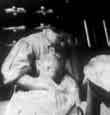
(titOLO vOLta / vOLta titLe:
La POUPOnniÈRe) Un asiLO niDO a PaRiGi / a DaY nURseRY in PaRis
dI / By ?
Francia / France
1909 (data di proiezione al volta: 20 dicembre 1909 / volta date: 20 December 1909), b-n / b-w, 2’ senza didascalie / no titles
Bambini accuditi in un asilo parigino.
Nota: Questo è l’unico film sopravvissuto del programma inaugurale del volta. Gli altri titoli erano The Bewitched Castle (presumibilmente Le Chateau hanté, Francia, 1908), The First Paris orphanage (presumibilmente La Première Pierre d’un Asile pour orphelins, Francia, 1908), Beatrice Cenci (italia, 1909), e devilled Crab (presumibilmente Cretinetti ha ingoiato un gambero, italia, 1909).

(titOLO vOLta / vOLta titLe:
FRanCesCa Da Rimini) FRanCesCa Da Rimini o i DUe FRateLLi
Usa - 1907 (data di proiezione al volta: 6-8 gennaio 1910 / volta dates: 6-8 January 1910), b-n / b-w, 15’ didascalie in inglese / english titles
La tragica storia di Francesca da Rimini, tratta dalla Divina Commedia. nell‘italia rinascimentale, il gobbo Lanciotto malatesta sta cercando di stringere un‘alleanza politica sposando Francesca, la figlia di un ex nemico. manda il fratello Paolo a prenderla, ma Paolo e Francesca s‘innamorano. Quando Lanciotto viene a sapere del matrimonio segreto grazie al burlone di corte, li uccide entrambi e poi si suicida. Nota: vi è una qualche incertezza a proposito dell’identità di questo film, semplicemente perché è strano che un film del 1907 sia proiettato nel 1909. Comunque non era stata realizzata alcuna altra versione filmica della storia prima del 1910. Florence turner fu una delle prime stelle del cinema americano, benché in quel periodo della sua carriera non fosse ancora conosciuta con il suo nome, ma solo come la “Ragazza della vitagraph”.
Produzione/ Production company: éclair.
Children being cared for in a Paris nursery.
Note: this is the only surviving film from the opening volta programme. the other titles were The Bewitched Castle (possibly Le Chateau hanté, France 1908), The First Paris orphanage (possibly La Première Pierre d’un Asile pour orphelins, France 1908), Beatrice Cenci (italy 1909), and devilled Crab (possibly Cretinetti ha ingoiato un gambero, italy 1909).
interpreti / Cast: Florence Turner (Francesca), hector dion (Paolo), William Raymond (Lanciotto).
Produzione/ Production company: Vitagraph Company of America.
the tragic story of Francesca da Rimini, taken from Dante. in Renaissance italy, the humpbacked Lanciotto malatesta seeks to forge a political alliance by marrying Francesca, the daughter of a former enemy. He sends his brother Paolo to fetch her, only for Paolo and Francesca to fall in love. When Lanciotto finds out from his court jester about their secret marriage he kills them both, then kills himself.
Note: there is some uncertainty over the identity of this film, simply because it would be unlikely for a 1907 film to be showing in 1909. However, there was no other filmed version of the story made before 1910. Florence turner was one of the first american film stars, though at this stage in her career she was not known by her name but only as ‘the vitagraph girl’.
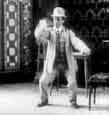
(titOLO vOLta / vOLta titLe: an easY WaY tO PaY BiLLs)
AndRé dEEd
italia / italy
1909 (data di proiezione al volta: 17-19 gennaio 1910 / volta dates: 17-19 January 1910), b-n / b-w, 7’ senza didascalie / no titles
Film comico, con trucchi cinematografici. Cretinetti fa uso della magia per sfuggire ai molti creditori: sparisce attraverso i muri, si nasconde in un borsone che si muove da solo e che i creditori inseguono invano. vende il borsone ad una coppia, poi assalita dai creditori. Cretinetti fugge ancora, e quando i due cercano di vendicarsi su di lui è insensibile alle loro botte. Nota: Cretinetti era il nome assunto dall’attore francese andré Deed per i film realizzati in italia; in Francia era conosciuto come Boireau. i suoi film comici erano famosi in tutta europa. il film è notevole per l’uso evidente delle tecnica di tecnica pixilation, vale a dire l’uso della cinematografia stop-motion per l’animazione di attori in carne e ossa. La pixilation è usata nella sequenza in cui i creditori all’inseguimento sono trascinati indietro di alcuni passi.
interpreti / Cast: André deed (Cretinetti). Produzione/ Production company: Itala Film.
Comedy/trick film. Cretinetti uses magic to escape his many creditors, disappearing through walls and then hiding himself in a large bag which moves by itself and which the creditors pursue in vain. He sells the bag to a couple, who get assaulted by the creditors. Cretinetti escapes again, and when the couple try to revenge themselves on him he is impervious to their blows.
Note: Cretinetti was the name adopted by French actor andré Deed for the films he made in italy; in France he was known as Boireau. His comic films were popular all over europe. the film is remarkable for its apparent pixilation technique; that is, the use of stop-motion cinematography to animate live actors, shown in the sequence where the pursuing creditors are dragged down some steps.
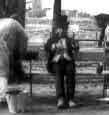
(titOLO vOLta / vOLta titLe:
mR testaRDi!)
mR stUBBORn
dI / By ?
italia / italy
1909 (data di proiezione al volta: 17-19 gennaio 1910 / volta dates: 17-19 January 1910), b-n / b-w, 4’ senza didascalie / no titles
Commedia. Un uomo testardo genera il caos rifiutandosi di aggirare vari ostacoli che gli si presentano innanzi: un uomo che consegna patate, alcuni bidoni di latte, delle impalcature, un soldato di pattuglia e un’automobile, che lo investe quando rifiuta di spostarsi. infine viene infradiciato da un idrante e ingoiato da una fogna. Nota: il film era noto in Gran Bretagna come Mr Stubborn il titolo volta, Mr Testardi!, è una traduzione letterale del titolo italiano; ciò prova che i film proiettati al volta provenivano direttamente da trieste e non dalla Gran Bretagna.
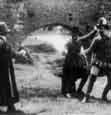
(titOLO vOLta / vOLta titLe: tHe Feast OF st BaRtHOLOmeW)
L’UGOnOttO
LouIS FEuILLAdE
Francia / France
1909 (data di proiezione al volta: 24-26 gennaio 1910 / volta dates: 24-26 January 1910), b-n / b-w, 14’ didascalie tedesche / german titles
Riduzione cinematografica del massacro degli Ugonotti (protestanti calvinisti francesi) nel giorno di san Bartolomeo, nel 1572, in cui si racconta la storia di nobili rivali, uno protestante e l’altro cattolico. La figlia del nobile cattolico va in aiuto del nemico di suo padre. il regista, Louis Feuillade, divenne famoso con la serie dei Fantomas. Nota: Probabilmente il titolo proiettato al volta.
Produzione/ Production company: Itala Film.
Comedy. a stubborn man causes chaos by refusing to move round the various obstacles that come in his way: a man delivering potatoes, some milk churns, some scaffolding, a soldier on guard duty and a motor car, which flattens him when he refuses to move. Finally he is drenched by a hose and swept down a drain.
Note: the film was known as Mr Stubborn in Britain. the volta title, Mr Testardi!, is a literal translation of the italian title, and evidence that the films shown at the volta came directly from trieste rather than Britain.
interpreti / Cast: Renée Carl, Georges Wague, Bréon, Maurice Vinot, Alice Tissot, Christiane Mandelys, henri duval. Produzione / Production company: Gaumont.
a dramatisation of the st Bartholomew’s Day massacre of Huguenots (French Calvinist Protestants) in 1572, telling the story of rival noblemen, one Protestant, the other Catholic, and the daughter of the latter who comes to the aid of her father’s enemy. the director became famous with the serial Fantomas.
Note: Possibly the title shown at the volta.
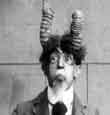
(titOLO vOLta / vOLta titLe:
BeWaRe OF GOat’s miLK!)
Un BiCCHieRe Di L atte Di CaPRa
PERCy SToW
Gran Bretagna / Great Britain
1909 (data di proiezione al volta: 3-5 febbraio 1910 / volta dates: 3-5 February 1910), b-n / b-w, 6’ senza didascalie / no titles
Commedia. Dopo aver bevuto un bicchiere di latte di capra, a un uomo spuntano un paio di corna e comincia a comportarsi come una capra, dando cornate ad oggetti sempre più grossi, finché non ribalta un autobus. infine le corna gli si conficcano in un palo e riesce a liberarsene.
Nota: non è certo che questo fosse il film proiettato al volta, ma certamente non vi furono molte altre commedie sul latte di capra!
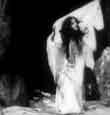
(titOLO vOLta / vOLta titLe: QUO vaDis, OR tHe WaY OF tHe CROss) La via DeLL a CROCe
dI / By ?
Usa
1909 (data di proiezione al volta: 14-16, 17-19 febbraio 1910 / volta dates: 14-16, 17-19 February 1910), b-n / b-w, 13’ didascalie tedesche / german titles
al tempo di nerone, valerio, un romano, s‘innamora di Leah, una donna cristiana. si unisce alla di lei religione solo quando la donna e i suoi compagni cristiani sono dati in pasto ai leoni nell‘arena. Nota: non basato sul romanzo Quo Vadis, di Henryk sienkiewicz, sebbene il tema fosse ovviamente simile. maurice Costello era uno degli attori americani cinematografici più famosi dell’epoca.
Produzione / Production company: Clarendon Film Company.
Comedy. after drinking a glass of goat’s milk, a man grows a pair of horns and starts to behave like a goat, butting ever larger objects until he overturns a bus. Finally his horns become embedded in a post and he is pulled free.
Note: the identification of the film with that shown at the volta is not certain, but it is unlikely that there were many other comedies made about goat’s milk!
supervisore / supervisor: J. Stuart Blackton. soggetto / script: Madison C. Peters. interpreti / Cast: Rose E. Tapley (Leah), Maurice Costello (Valerius), Edith Storey (Gallia), William humphrey. Produzione / Production company: Vitagraph Company of America.
at the time of nero, valerius, a Roman, falls in love with Leah, a Christian. eventually he joins her when she and her fellow Christians are thrown to the lions in the arena.
Note: not based on Henryk sienkiewicz’s novel Quo Vadis, though obviously similar to it in theme. maurice Costello was one of the most popular american film actors of the period.
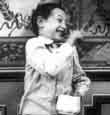
(titOLO vOLta / vOLta titLe: BeWaRe OF CastOR OiL!)
(iL PiCCOLO FURBaCCHiOne) / (tHe LittLe sLYBOOts)
dI / By ?
Francia / France
c. 1908 (data di proiezione al volta: 21-23 febbraio 1910 / volta dates: 21-23 February 1910), b-n / b-w, 4’ senza didascalie / no titles
Una madre acquista in farmacia olio di ricino per suo figlio, ma poi questi scambia la tazza con quella di suo padre. successivamente, l‘uomo viene colto da un attacco in pubblico, e cerca disperatamente un qualche posto per liberarsi. tale ricerca tocca una varietà di luoghi, mentre i passanti sono sconvolti dall‘odore. Finalmente si libera nella farmacia, dove nel frattempo la moglie e il figlio erano tornati. Nota: il titolo originale francese è sconosciuto (il titolo in tedesco che compare su questa copia si può tradurre con Il piccolo furbacchione. non è possibile sapere se questo fu il film proiettato al volta, ma era certamente un film molto simile. all’epoca film scatologici di questo tipo ne venivano prodotti molti, sia in Francia che in italia.
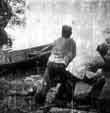
(titOLO vOLta / vOLta titLe:
CROCODiLe HUntinG)
CaCCia ai COCCODRiLLi
dI / By ?
Francia / France
1909 (data di proiezione al volta: 7-9 marzo 1910 / volta dates: 7-9 marzo 1910), col., 7’ didascalie inglesi / english titles
a caccia di coccodrilli nell‘isola di Giava. Nota: copia stampata in Pathécolor, un metodo semiautomatico per aggiungere sfumature di colore tramite stampini.
interpreti / Cast:
Max Linder (l’uomo sulla panchina del parco / man on park bench).
Produzione / Production company: Pathé.
a mother buys castor oil for her son at a chemist, but he swaps his cup with that of his father. the father is then short-taken in public, and looks desperately for somewhere to relieve himself. He does so in a variety of locations, upsetting passers-by with the smell. Finally he relieves himself at the chemist’s, to which mother and son have returned. Note: the original French title is not known (the German title supplied with this print translates as The Little Slyboots). it is not possible to know if this was the film shown at the volta, but certainly it was a film like it. there were several scatological films of this kind produced in France and italy around this time.
Produzione / Production company: Pathé.
Hunting crocodiles in Java. Note: the print features Pathécolor, a semi-mechanised method of adding colour tints through the application of stencils.
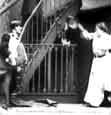
(titOLO vOLta / vOLta titLe: a COnQUest, a veRY COmiC PiCtURe) Una COnQUista
GEoRGES MonCA
Francia / France
1909 (data di proiezione al volta: 10-12 marzo 1910 / volta dates: 10-12 march 1910), b-n / b-w, 6’
Commedia. max si mette alle calcagna di una giovane donna che passa per la strada. nonostante la sua indifferenza, la insegue per tutta la città, comprando qualcosa in ogni negozio che lei visita. Ben presto, lui si trova carico di pacchi. Quando lei arriva a casa, max si trova di fronte al robusto marito, mette gentilmente giù i pacchi e se ne va. Nota: il comico francese max Linder fu una delle grandi star del primo periodo cinematografico, esercitando tra l’altro notevole influenza su Charlie Chaplin.
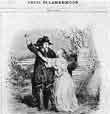
interpreti / Cast: Max Linder.
Produzione / Production company: Pathé.
Comedy. max goes in pursuit of a young woman who passes in the street. Despite her indifference, he pursues her across town, buying something at every shop she visits so that he is soon burdened with many parcels. On arriving at her flat max encounters her large husband, meekly puts down the parcels, and makes his leave.
Note: French comedian max Linder was one of the great film stars of the early film period, a notable influence upon Charlie Chaplin.
dI / By ?
Francia / France
1909, b-n / b-w, 3’57’’
Brani dall’opera di Gaetano Donizetti. excerpts from Gaetano Donizetti’s opera.
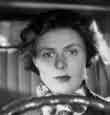
vOYaGe tO itaLY
RoBERTo RoSSELLInI
italia - Francia / italy - France 1953, 35mm, b-n / b-w, 79’ v.o. inglese - italiana / english - italian o.v.
Katherine e alex Joyce, una coppia di coniugi britannici in crisi, arrivano a napoli per una vacanza e per vendere la villa a torre del Greco che Katherine ha ricevuto in eredità dallo zio Homer. il loro “viaggio in italia” non è solo un viaggio d’affari, ma è anche una moderna rivisitazione del Gran tour classico. Lo sguardo dei Joyce sul mediterraneo è connotato dall’interesse per i resti di antiche culture e dall’attrazione/repulsione per l’esotismo barbarico degli usi e costumi della gente locale. il loro atteggiamento iniziale rispecchia la tradizionale presunzione di superiorità della civiltà britannica, e la loro visione del mondo appare ancora di tipo coloniale e imperiale. arrivati in italia, per la prima volta fuori dal loro ambiente, marito e moglie scoprono di essere due estranei e questo li porta a interrogarsi anche sulla loro reciproca fedeltà. L’impatto con la vitalità del sud e la visione dei resti custoditi nelle catacombe e quelli della coppia appena riesumata negli scavi di Pompei spingono alex e Katherine a ripensare la loro visione del mondo. improvvisamente, quando dopo liti e scenate di gelosia, sono sul punto di separarsi, nel mezzo del caos di una festa religiosa popolare a maiori, ritrovano l’amore perduto e, forse, un nuovo equilibrio. Come fa notare Kevin Barry nel suo saggio su The dead di John Huston (Cork University Press, 2001), Viaggio in Italia è palesemente ispirato al racconto di Joyce, tanto che in alcune parti i dialoghi riprendono fedelmente il testo dello scrittore irlandese. secondo Barry, la lettura di Rossellini/Brancati appare più efficace di quella di Huston perché più libera, meno aderente all’originale; nondimeno, grazie alla sospensione della narrazione e al suo modernismo, Viaggio in Italia è per Barry “un testo filmico profondamente joyciano”. alla sua uscita nel settembre del 1954 il film venne accolto negativamente dal pubblico e dalla critica, fino a quando nel 1961 non venne riscoperto e subito amato dagli autori dei «Cahiers du Cinema». Godard, Rivette, Rohmer, e truffaut lo collocarono nella loro lista dei dieci migliori film di tutti i tempi. La copia che viene presentata è quella restaurata nel 2007 grazie alla collaborazione tra Cinecittà Holding e il Centro sperimentale di Cinematografia – Cineteca nazionale di Roma.
sceneggiatura / screenplay: Vitaliano Brancati, Roberto Rossellini liberamente ispirata al racconto duo di Colette (1934) e da I Morti di James Joyce / Freely inspired by Colette’s duo (1934) and James Joyce’s The dead montaggio / editing: Jolanda Benvenuti. Fotografia / Photography: Enzo Serafin, Aldo Tonti, Luciano Trasatti. musica / music: Renzo Rossellini.
scenografia / art Director: Piero Filippine. interpreti / Cast: Ingrid Bergman, George Sanders, Marie Mauban, Anna Proclemer, Paul Mueller, Lyla Rocco, Anthony La Penna, natalia Ray, Jackie Frost, Leslie daniels.
Produzione / Produced by: Roberto Rossellini per Sveva Film, Adolfo Fossataro per Junior Film, S.G.C. (Société General de Cinematographie), Ariane, Francinex, Paris.
Katherine and alex Joyce, a British couple going through a crisis, arrive in naples for a holiday and to sell the villa at torre del Greco that Katherine inherited from her uncle Homer. their “journey to italy” is not only a business trip, but also a modern revisitation of the classic Grand tour. the Joyce’s view of the mediterranean is marked by their interest in the vestiges of ancient culture and by their attraction to/repulsion for the barbaric exoticism of the habits and customs of the locals. their initial behaviour reflects the traditional presumption of the superiority of British civilisation, and their vision of the world still appears colonial and imperial.
Having arrived in italy, for the first time outside their home turf, they realize that they are strangers and this leads them to question each others faithfulness. the impact with the vitality of the of the south and the vision of the remains from the catacombs and of a couple just excavated in Pompeii cause alex and Katherine to rethink their vision of the world. after quarrels and jealous scenes, they are on the point of separating when suddenly, in the middle of the chaos of a popular religious festival at maiori, they rediscover their lost love and, perhaps, a new equilibrium. as Kevin Barry points out in his essay on John Huston’s The dead (Cork University Press, 2001), Journey to Italy is clearly inspired by Joyce’s story, to the point that some parts of the dialogue faithfully reproduce the irish writer’s own words. according to Barry, the interpretation of Rossellini/Brancati is more effective than Huston’s because it is freer and not as faithful to the original; nevertheless, thanks to the suspension of the narrative and its modernism, Journey to Italy is for Barry “a profoundly Joycian filmic text”. On its release in september 1954, the film was not well received by the public and critics, until it was rediscovered in 1961 and immediately loved by the authors of the Cahiers du Cinema. Godard, Rivette, Rohmer and truffaut all put it in their list of ten best films of all time. the copy presented here is the one restored in 2007 thanks to the collaboration between Cinecittà Holding and the Centro sperimentale di Cinematografia - Cineteca nazionale di Roma.
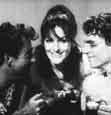
BRani Da FinneGans WaKe
MARy ELLEn BuTE
Usa
1965-67, 16 mm, b-n / b-w, 97’ v.o. inglese / english o.v.
Questa rara pellicola realizzata dall’artista americana mary ellen Bute rappresenta il primo tentativo di trasposizione cinematografica di un’opera di James Joyce. il film si basa sulla riduzione teatrale di mary manning di Finnegans Wake (1939), l’ultimo – più complesso – libro dello scrittore irlandese. La vicenda di Finn, proprietario di un pub, è narrata in toni surreali e onirici e descrive come, in stato di ubriachezza, egli finisca per immaginare la propria morte e la relativa “veglia”, durante la quale entra nei pensieri della moglie anna Livia Plurabelle, dei figli shem e shaun, di amici, parenti e astanti. L’acquisizione di questa “coscienza cosmica” avrà risvolti tragicomici. Una delle particolarità del film è l’uso della sottotitolazione, che riporta brani del polifonico testo originale di Joyce e che, associato alla musicalità del recitato e all’accompagnamento sonoro, contribuisce a conferire al film una notevole dimensione poetica. mary ellen Bute cattura i suoni e le immagini suggerite da Joyce ma, pur restando “fedele” al testo, crea un film originale e affascinante. L’artista ricorre a flashback, sovrimpressioni, fermo immagine, negativi, collages, citazioni da cinegiornali, interventi sulla pellicola, slow motion. non mancano immagini televisive, della bomba H, del twist e dei razzi interplanetari. L’autrice era certa che Joyce avrebbe apprezzato l’inserimento di questi elementi della modernità nel mare magnum di riferimenti che compongono Finnegans Wake.
sceneggiatura / screenplay: Mary Manning, Mary Ellen Bute, tratto da una piece teatrale di Mary Manning ispirata dal Finnegans Wake di James Joyce / based on a play by Mary Manning inspired by James Joyce’s Finnegans Wake (consulenza / consultant Jean Merrill).
montaggio / editing: Mary Ellen Bute, Paul Ronder, Thelma Schoonmaker, Catherine Pichonnier, yoshio Kishi.
Fotografia / Photography: Ted nemeth.
musica / music: Elliot Kaplan. suono / sound: dick Vorisek.
scenografia / art Director: Ronnie Solbert.
Consulenza artistica / Consultants & advisers: Ronnie Solbert, Eleanor Fast, John duane Kelly. interpreti / Cast: Ray Flanagan, Peter haskell, Page Johnson, Martin J. Kelly, Maura Pryor, Jane Reilly, Jo Jo Slavin, Joseph Alderham, Raymond Allen, Virginia Blue, Sean Brancato, Joan Campbell, Paddy Croft, Leonard Frey, Eileen Koch, Joseph Maher, Janis Markhouse, herbert Prah, Jan Thompson, Virginia J. Wallace, Carmen P. zavick.
Produzione / Produced by: Expanding Cinema, Mary Ellen Bute, Ted nemeth.
this rare film, made by mary ellen Bute, the american artist, represents the first attempt at a film version of a work by James Joyce. the film is based on mary manning’s abridgement of Finnegans Wake (1939) for theatre; this was Joyce’s last and most complex book. the story of Finn, a pub owner (martin J. Kelly), is narrated in surreal and dream-like tones and describes how, in a state of drunkenness, he ends up imagining his own death and resulting wake, during which he enters the thoughts of his wife, anna Livia Plurabelle, of his children shem and shaun, and also of friends, relations and bystanders. the acquisition of this “cosmic awareness” will have tragicomic results. One of the features of the film is the use of subtitles presenting some extracts of Joyce’s original polyphonic text and which, associated with the musicality of the recitation and accompanying soundtrack, helps give the film a considerable poetic dimension. mary ellen Bute captures the sounds and images suggested by Joyce and, while remaining faithful to the text, creates a fascinating, original film. she uses flashbacks, overlays, image freezing, negatives, collages, quotations from newsreels, interventions on the film reel and slow motion. there are also television images, pictures of the H bomb, twist and inter-planetary rockets. the director was certain that Joyce would have appreciated the inclusion of these elements of modernity in the compendium of references making up Finnegans Wake
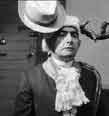
Regno Unito / United Kingdom 1967, 35mm, b-n / b-w, 132’ v.o. inglese / english o.v.
Dublino, anni ‘60. Una giornata, il 16 giugno, nella vita del giovane stephen Dedalus, di Leopold Bloom e di sua moglie molly. La macchina da presa segue le loro vicende e peregrinazioni in giro per la città e entra nelle loro menti e pensieri, in un tentativo di trasporre cinematograficamente la tecnica narrativa del flusso di coscienza. Dedalus è un sedicente poeta alla ricerca di sé stesso, in conflitto col mondo, la famiglia, la chiesa e lo stato, ossessionato dal fantasma della madre morta di recente. Bloom, ebreo di Dublino di origini ungheresi, è un uomo qualunque. si arrangia facendo il piazzista pubblicitario, anche lui ha un paio di lutti da elaborare, ma deve fare anche i conti con la notoria infedeltà di sua moglie molly, cantante d’opera. Le strade di stephen e di Leopold si incrociano più volte durante il giorno, ma si separeranno dopo che Bloom avrà salvato Dedalus da un impaccio all’uscita del bordello di Circe/Bella Cohen dove hanno passato parte della notte assieme. Come l’Ulisse omerico, anche Bloom affronta mille peripezie prima di riuscire a tornare infine alla sua itaca ed a riconquistare – forse – la sua Penelope. La pellicola di Joseph strick ripropone la varierà degli stili narrativi che caratterizzano i diversi episodi del romanzo di James Joyce, con risultati spesso esilaranti, come nell’episodio della redazione del giornale, o soprattutto in quello grottesco e surreale del bordello. La scelta d’ambientare il film negli anni ‘60, anziché nel 1904 come nel testo originale, fu motivo di controversie tra i critici ma, in accordo con margot norris: “Come lettori percepiamo la Dublino del 1904 come una vivace città moderna che mantiene l’ethos di un confortevole villaggio, e questa sensazione sembra perdurare anche negli anni ‘60 scelti da strick per il suo film (in ulysses, Cork University Press 2004). in molti paesi la pellicola fu oggetto di censura, come in australia, in sud africa e in nuova Zelanda. in irlanda il film ha subito 33 anni di censura ed è stato proiettato per la prima volta solo nel febbraio del 2001.
sceneggiatura / screenplay: Fred haines, Joseph Strick, dall’Ulisse di James Joyce / Based on James Joyce’s Ulysses. montaggio / editing: Reginald Mills.
Fotografia / Photography: Wolfgang Suschitzky. musica / music: Stanley Myers. suono / sound: Christian Wangler. scenografia / art Director: Graham Probst.
Costumi / Wardrobe: Betty Long.
interpreti / Cast: Martin dempsey, Fionnula Flanagan, Barbara Jefford, Joe Lynch, T. P. McKenna, Milo o ‘Shea, Mauriece Roëves, Sheila o ‘Sullivan, Graham Lines, Peter Mayock, Anna Manahan, Maureen Toal, Maureen Potter, Chris Curran, Maire hastings, Eddie Golden, Joe Lynch, Ruadhan neeson, Biddie White-Lennon, Meryl Gourley. Produzione / Produced by: Joseph Strick per ulysses Film Production.
Dublin in the 1960s. a day – June 16 – in the lives of the young stephen Dedalus, Leopold Bloom and his wife, molly. the camera follows them on their daily business and on their peregrinations around town, entering their minds and thoughts, in an attempt to transpose the stream of consciousness narrative technique to film. Dedalus is a would-be poet in search of himself, in conflict with the world, his family, the church and the state, obsessed by the ghost of his recently-deceased mother. Bloom, a Jew from Dublin but of Hungarian origin, is an ordinary man. He gets by as an advertising canvasser, and he too has serious losses to mourn, but he also has to come to terms with the notorious infidelity of his wife, molly, an opera singer. the paths of stephen and Leopold cross several times during the day, but they will later part once Bloom has saved Dedalus from an awkward situation outside Bella Cohen’s/Circe’s brothel where they spent part of the night together. Like Homer’s Ulysses, Bloom too goes through a thousand adventures before managing to return to his ithaca and reconquer – perhaps – his Penelope. Joseph strick’s film reproposes the variety of narrative styles characterising the different episodes of James Joyce’s novel, with often exhilarating results, as in the episode set in the newspaper office, and above all in the grotesque, surreal brothel chapter. the decision to set the film in the 1960s rather than in 1904 as in the original text was a much-debated one amongst critics but as margot norris has written: “[a]s readers, we perceive the Dublin of 1904 as a lively modern city maintaining the ethos of a comfortable village, and this sensation seems to survive in the 1960s chosen by strick for his film” (in Ulysses, Cork University Press 2004). the film was censored in many countries such as australia, south africa and new Zealand. in ireland, the film suffered 33 years of censorship and was screened for the first time only in February of 2001.

ULisse ULYsses
WERnER nEKES
Germania / Germany
1980-82, 35mm, col., 94’ v.o. inglese - tedesca / english - German o.v.
il film è una sorta di viaggio attraverso la storia del cinema. il tema è liberamente ispirato all’odissea di Omero e all’ulisse di Joyce, mentre la figura di telemaco/Phil proviene dalla piece teatrale The Warp di neil Oram, inglese, poeta-drammaturgo psichedelico attivo durante gli anni ‘70. sulla base di queste tre suggestioni narrative il filmmaker e ‘media artist’ Werner nekes racconta la storia di quella che chiama “lighterature” ovvero della scrittura fatta con la luce. Per il regista questa scrittura non sarebbe altro che la forma d’espressione artistica peculiare del “film”, che si basa proprio sulla proiezione di luci e ombre su uno schermo bianco in una sala buia. in questo moderno Panoptikum Ulisse/Bloom si trasforma nel fotografo Uli, Penelope/molly nella sua modella e telemaco/stephen nel poeta Phil. Le loro vite si incrociano nel corso di una giornata di settembre del 1980, in una città tedesca nella regione industriale della Ruhr, a ridosso delle elezioni della Repubblica Federale tedesca. a impreziosire questo interessante esempio di sperimentazione cinematografica la presenza dell’attrice tabea Blumenschein, uno dei volti del nuovo Cinema tedesco (Madame x, Bildnis einer Trinkerin, Taxi zum Klo, dorian Gray) qui nel doppio ruolo di molly e Penelope. nel libro sul film, eva m.J. schmidt evidenzia come Werner nekes “abbia tentato di tradurre l’uso joyciano dei diversi modelli storico-letterari da forme della comunicazione verbale in un prodotto filmicofotografico.”
sceneggiatura / screenplay: dall’Ulisse di James Joyce, l’Odissea di omero, The Warp del neil oram Team (Bernd Upnmoor, Birger Bustorff, Dore O. Herbert Jeschke, volker Bertzky, Gisela schanzenbach, astrid nicklaus, Werner nekes) / From James Joyce’s Ulysses, omero’s Odissey, neil oram Team’s The Warp (Bernd Upnmoor, Birger Bustorff, Dore O. Herbert Jeschke, volker Bertzky, Gisela schanzenbach, astrid nicklaus, Werner nekes).
Fotografia, montaggio, scenografia / Photography, editing, art Director: Werner nekes.
musica / music: Musicisti del Science Fiction Theater of Liverpool / Musicians of the Science Fiction Theater of Liverpool.
suono / sound: Anthony Moore, helge Schneider. interpreti / Cast: Tabea Blumenschein, Armin Woelfl, Russel dreson, Shezad Abbas, Sarah Antill, Jim Broadbent, Birger Bustorff, Ken Campbell, Joolia Cappleman, Lee Cornes, Suzan Crowley, neil Cunningham, Werner nekes, dore o., neil oram, John Joyce, Jacqueline da Costa, Mitch davies, henry davis, Bob Flag, Wanda Goodenufski, Richard howard, Annie hulley, Terry Johnson, Richard Kilgour, Wolfgang Liesen, Maria Moustaka, Bunny Reed, Anabel Temple.
Produzione / Produced by: Werner nekes Filmproduktion.
this film is a sort of voyage through the history of cinema. the story is freely drawn from Homer’s odyssey and Joyce’s ulysses, while the figure of telemachus/Phil is borrowed from the play The Warp by neil Oram, an english psychedelic poet and dramatist active in the 1970s. On the basis of these three narrative sources, the film maker and ‘media artist’ Werner nekes has told the story of what he calls “lighterature”, writing done with light. For the director, this writing is nothing other than the form of artistic expression typical of “film”, which is based on the projection of light and shadow on a white screen in a dark room. in this modern Panoptikum, Ulysses/Bloom is transformed into Uli, a photographer, Penelope/molly into his model and telemachus/stephen into the poet Phil. their paths cross during the course of a september day in 1980 in a German town in the industrial Ruhr region, just as the elections for the German Federal Republic are taking place. adding to the value of this interesting example of cinematographic experimentation is the presence of tabea Blumenschein, one of the exponents of the new German Cinema (Madame x, Bildnis einer Trinkerin, Taxi zum Klo, dorian Gray), in the double role here of molly and of Penelope. in the book about the film, eva m.J. schmidt underlines how Werner nekes “has tried to translate Joyce’s use of different historical and literary models from a form of verbal communication to a filmic and photographic product”.
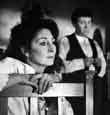
John huSTon
Usa - Regno Unito - Germania Federale / Usa - United Kingdom - German Federal Republic
1987, 35 mm, col., 83‘ v.o. inglese / english o.v.
Dublino, 1904, il film si apre con il party che ogni anno le anziane sorelle Kate e Julia morkan danno nel giorno dell’epifania in onore dei parenti e degli amici che gravitano attorno al mondo musicale della città. La serata si dipana tra danze accompagnate al pianoforte, esibizioni di canto e poesia (una libertà del regista, che introduce una lettura appassionata di False Promesse di Lady augusta Gregory, che non c’era nell’originale di Joyce). a dispetto del clima festivo l’occhio della macchina da presa registra però anche una serie di impercettibili crepe che - scena dopo scena - vanno ad aprirsi nel fragile tessuto sociale irlandese. il clou della serata è la cena a base di arrosto d’oca e pudding, tra chiacchiere su argomenti del giorno, la musica d’opera, i cantanti italiani, il divieto delle donne di essere coriste in chiesa, le tradizioni irlandesi, e smorzate polemiche religiose e politiche. Gabriel Conroy, il nipote prediletto delle zie morkan, recita il suo tradizionale discorso d’occasione, più volte rivisto nervosamente nel corso della sera. Quando quasi tutti gli ospiti sono andati via e Gabriel attende la moglie Gretta, dal piano superiore si ode un voce cantare una canzone popolare irlandese: “the Lass of aughrim”. Gretta si ferma rapita alla testa delle scale ad ascoltare. La donna sembra distratta e lontana e quando i coniugi arrivano in albergo dopo aver attraversato una Dublino innevata, sollecitata dalle domande del marito, Gretta racconta che la canzone le ha fatto ricordare michael Fury, un ragazzo al quale era stata legata durante l’adolescenza e che era morto per causa sua. saputo che Gretta doveva lasciare Galway, il giovane già malato era andato a salutarla sotto la pioggia gelida e dopo qualche giorno era morto. il ricordo di quell’amore assoluto e perduto fa scoppiare Gretta in un pianto sconsolato e liberatorio, mentre Gabriel si rende conto che la donna che ama e con la quale ha condiviso la sua vita è per lui una sconosciuta, ma anche che lui non sarebbe mai in grado di amare in modo così
sceneggiatura / screenplay: Walter Anthony huston, dalla novella I Morti di James Joyce / Based on James Joyce’s short story The Dead. montaggio / editing: Roberto Silvi. Fotografia / Photography: Fred Murphy. musica / music: Alex north, Ann Stockton (arpa / solo harp), Richard Bronskill (orchestrazioni / orchestration) suono / sound: James E. nowes.
scenografia / art Director: Stephen Grimes, dennis Washington, Josie MacAvin.
Costumi / Wardrobe: dorothy Jeakins.
Coreografie / Choreography: Paul Gleason.
Consulenza letteraria / Literary adviser (J. Joyce estate): Clive hart. interpreti / Cast: Anjelica huston, donal McCann, helena Carroll, Cathleen delany, Ingrid Craigie, Rachel dowling, Frank Patterson, Maria Mcdermottroe, donal donnelly, daniel o ‘herlihy, Marie Kean, Sean McClory, Katherine o ‘Toole, Maria hayden, Bairbre dowling.
Produzione / Produced by: Liffey Films, Vestron Pictures, zenith Productions, Channel Four, delta Film. Distribuzione / World sales: Park Circus.
Dublin, 1904. the film opens with the party that the elderly Kate and Julia morkan sisters hold on the feast of the epiphany in honour of their relatives and friends many of whom are part of the musical world of the city. the evening unfolds amidst dances accompanied on the piano, singing and recitations (a liberty, this, taken by the director who introduces a passionate reading of False Promises by Lady augusta Gregory, which is not in Joyce’s original). Underlying the festive climate, however, the eye of the camera also records a series of imperceptible cracks which – scene after scene – reveal themselves in the fragile irish social fabric. the high point of the evening is the roast goose and pudding dinner, amidst conversations on topical subjects, opera music, italian singers, the veto against female choristers in church, irish traditions and a series of religious and political polemics. Gabriel Conroy, the favourite nephew of the morkan aunts, recites his traditional ceremonial speech, nervously revised several times over the evening. When almost all of the guests have departed and Gabriel is waiting for his wife, Gretta, a voice is heard from the first floor, singing a popular irish song: “the Lass of aughrim”. Gretta pauses at the top of the stairs, enchanted. the woman seems distracted and distant when the couple arrive at their hotel after crossing a snow-bound Dublin, and questioned by her husband, Gretta states that the song reminded her of michael Fury, a lad to whom she had been attached as an adolescent and who had died through her fault. aware that Gretta was about to leave Galway, the lad, who was already ill, had gone to greet her under an icy rain and a few days later was dead. the memory of that absolute and lost love causes Gretta to burst into uncontrollable, liberating sobs, while Gabriel becomes aware that the woman he loves and with whom he shares his life is a stranger to him, but also that he
“eroico” tanto da sacrificare la sua vita. Col mirabile uso della grammatica e della sintassi classica, il discorso filmico si dipana dal “particolare” all’”universale”. Lo sguardo di Gabriel vaga per tutta l’irlanda coperta da un bianco sudario di neve, un paesaggio abitato da ombre. mesmerizzato dal turbinio del nevischio oltre i vetri della finestra egli pensa alle persone scomparse, alle inevitabili imminenti morti delle anziane zie, alla solitudine del “cimitero deserto in cima alla collina dov’era sepolto michael Fury”. Gabriel comprende che nella solitudine dell’individuo di fronte alla morte risiede l’unico, risolutivo elemento di comunione con gli altri, con il mondo. e mentre la sua anima scivola nel sonno ode “la neve cadere lieve su tutto l’universo, stancamente cadere come il discendere dell’ultima ora, su tutti i vivi e i morti.”
The dead è una fedele trasposizione dell’ultimo dei quindici racconti che compongono la raccolta Gente di dublino (dubliners, 1914) di James Joyce. il film venne presentato in anteprima mondiale alla 44° mostra del Cinema di venezia il 3 settembre del 1987, una settimana dopo la morte di John Huston, e fu unanimemente accolto come uno degli esiti più alti della sua carriera di regista.

PaRiGi eRa Una DOnna
GRETA SChILLER
Regno Unito / United Kingdom
1996, Betacam, b-n / b-w & col., 75’ v.o. inglese / english o.v.
would never be able to love in such a “heroic” manner, to the point of sacrificing his life. With an admirable use of grammar and classic syntax, the film expands from the “particular” to the “universal”. Gabriel’s gaze wanders over the whole of ireland, covered by a white mantle, a landscape full of shadows. mesmerised by the snowstorm beyond the window, he thinks of people now dead, of the inevitable imminent death of his elderly aunts, of the solitude of “the lonely churchyard on the hill where michael Fury lay buried.” Gabriel realises that in the solitude of the individual before death lies the only, final element of communion with others, with the world. and while his soul slides into sleep, he hears “the snow falling faintly through the universe and faintly falling, like the descent of their last end, upon all the living and the dead.”
The dead is a faithful transposition of the last of the 15 stories making up the dubliners (1914) by James Joyce. the film was given its world premiere at the 44th venice Film Festival on 3 september 1987, a week after the death of John Huston, and was unanimously acclaimed as being one of the director’s finest works.
sceneggiatura / screenplay: Andrea Weiss.
montaggio / editing: Greta Schiller.
Fotografia / Photography: nurith Aviv, Greta Schiller, Renato Tonelli, Fawn yacker. musica / music: Janette Mason.
suono / sound: Ronald Bailey, Al Livecchi, Barbara zahm.
voce narrante / narrator: Juliet Stevenson.
interpreti / Cast: Gertrude Stein, Alice B. Toklas,
Sylvia Beach, Adrienne Monnier, Janet Flanner, djuna Barnes, Romaine Brookes, Bernice Abbott, Gisele Freund, Greta Schiller, Andrea Weiss, Shari Benstock, John Bernard, Berthe Cleyrerque, Samuel Steward, Catharine Stimpson. Produzione / Produced by: Frances Berrigan, Greta Schiller, Andrea Weiss, Bjorn Koll, Jezbel Productions.
Coproduzione / Co-produced by: Cicada Films.
Distribuzione / World sales: Peccadillo Pictures.
negli anni ‘20 del secolo scorso, Parigi visse un momento di irripetibile fulgore culturale. erano gli anni in cui la maggior parte dei protagonisti del modernismo si trovarono – per un motivo o per l’altro – a vivere sulle rive della senna. molti di loro erano espatriati come James Joyce, Picasso, stravinskij, eisenstein, o ernest Hemingway. Parigi divenne presto anche la meta per una nuova generazione di donne indipendenti, che la scelsero come loro seconda patria. scrittrici come Djuna Barnes e Gertrude stein, pittrici come Romaine Brookes e marie Laurencin, fotografe come Bernice abbott e Gisele Freund, editrici e libraie come sylvia Beach e adrienne monnier, o giornaliste come Janet Flanner crearono una
During the 1920s, Paris lived through a period of unrepeatable cultural ferment. these were the years in which most of the protagonists of modernism found themselves living on the banks of the seine for one reason or another. many of them were expatriates, such as James Joyce, Picasso, stravinsky, eisenstein, and ernest Hemingway. Paris also became a destination for a new generation of independent women, who chose it as their second home. Writers like Djuna Barnes and Gertrude stein, painters like Romaine Brookes and marie Laurencin, fotographers like Bernice abbott and Gisele Freund, publishers and booksellers like sylvia Beach and adrienne
comunità artistica tutta coniugata al femminile che ancor oggi è ammantata di leggenda. Donne che hanno segnato profondamente la storia delle arti, hanno aperto saloni artistici, librerie, promosso riviste e hanno contribuito a fare di Parigi la capitale culturale di quel tempo. e si deve solo al coraggio e alla intraprendenza di una di queste donne, l’americana sylvia Beach, se l’ulisse di James Joyce poté essere pubblicato all’insegna della sua libreria “shakespeare & Company”.
Dopo anni di ricerche, Greta schiller e andrea Weiss, hanno realizzato questo documentario utilizzando materiali inediti e rarissimi, in particolare home movies che ci mostrano Gertrude stein e alice B. toklas, o sylvia Beach con James Joyce e adrienne monnier, il tutto accompagnato da ricchissimo materiale iconografico dell’epoca e da brillanti interviste con Janet Flanner, Gisèle Freund e la governante di natalie Clifford Barney, Berthe Cleyrerque. ne risulta non solo il ritratto del microcosmo lesbico della Rive Gauche parigina, ma anche di un intero mondo che la seconda Guerra mondiale avrebbe presto spazzato via.
monnier, or journalists like Janet Flanner created a female artistic community which is still seen today as legendary. these were women who left a profound mark in the history of art, opening art salons, bookshops, promoting periodicals and contributing to the elevation of Paris to cultural capital of the time. and it was thanks to the courage and initiative of one of these women, the american sylvia Beach, that Joyce’s ulysses was published by her bookshop, “shakespeare & Company”. after years of research, Greta schiller and andrea Weiss produced this documentary using unpublished and rare material, in particular home movies showing Gertrude stein and alice B. toklas, or sylvia Beach with James Joyce and adrienne monnier, all accompanied by rich iconographic material from the period and brilliant interviews with Janet Flanner, Gisèle Freund and natalie Clifford Barney’s housekeeper, Berthe Cleyrerque. What emerges is not only the portrait of the lesbian microcosm of the Rive Gauche, but also of an entire world that the second World War would soon sweep away.

uLyS ULisse
TIMoThy BooTh
irlanda / ireland
1997, 35 mm, col., 5’ v.o. inglese / english o.v.
Cartone animato dell’artista e musicista irlandese tim Booth, basato sulle varie peripezie attraversate da James Joyce per scrivere l’ulisse
sceneggiatura / screenplay: Timothy Booth. montaggio / editing: Sé Merry doyle. musica / music: Ivan Pawle, doctor Strangely Strange (compositore / music composer), Tim Goulding (esecuzione / music performance). suono / sound: Chile Brown.
interpreti / Cast: Susan Scott, owen Roe, Jonathan Ryan.
Produzione / Produced by: Timothy Booth, Frameworks. Coproduzione / Co-produced by: Bórd Scánnán na heireann / Irish Film Board, Radio Telefís éireann / RTE, Arts Council of Ireland.
ulys is an animated look at James Joyce’s struggle with the writing of his novel ulysses. as the man himself is alleged to have said, ‘it’s a real bollix of a buk’.

PAT MuRPhy
Regno Unito - irlanda - Germania
- italia / United Kingdom - ireland
- Germany - italy 2000, 35mm, col., 106’ v.o. inglese / english o.v.
Girato in buona parte a trieste, Nora racconta l’incontro e i primi anni di vita comune fra nora Barnacle e lo scrittore James Joyce, interpretati da ewan mcGregor (Trainspotting, Velvet Goldmine) e da susan Lynch (Il segreto dell’isola di Roan, Svegliati ned), che rende appieno l’esuberanza e la sfrontatezza della giovane Barnacle, pronta a lasciare l’irlanda per seguire un uomo che ha appena conosciuto, e che saprà restargli accanto, tenergli testa e ispirarlo. L’enfasi del film è soprattutto sulla storia d’amore, appassionata e carnale, fra quella che è sempre stata considerata una ignorante ragazza di provincia e lo scrittore, uomo tormentato e vulnerabile, compagno faticoso, vittima di gelosie autodistruttive e schiavo dell’alcol. Da segnalare la ricostruzione che Pat murphy suggerisce dell’esperienza di James Joyce come imprenditore cinematografico durante l’avventura del Cinema volta a Dublino nel 1909, nonché l’utilizzo di citazioni di film dal cinema degli esordi che nora frequentava a trieste e la regista usa come pretesto per l’ideazione della figura di michael Furey del racconto The dead.
“Tanti film sono stati fatti su Joyce a Trieste. Mi sono accorta però che nessun film ha mai trattato specificatamente la storia di Nora. Si tratta anche della storia di Trieste, da un certo punto di vista, perché egli ha amato Trieste tantissimo. Inizialmente, non avevo veramente capito il suo rapporto con Trieste. Pensavo a Trieste come ad una città molto italiana, come altri posti che ho visitato in Italia. Sapevo della sua multi-etnicità, ma non l’avevo mai vissuta. Camminando e passeggiando ho udito tante lingue, sentivo le diverse origini e provenienze. Ho incominciato a capire come questa città abbia potuto fare da cornice ai lavori di Joyce.” (Pat Murphy)
sceneggiatura / screenplay: Pat Murphy, Gerard Stembridge. tratto dal romanzo omonimo di / Based on the novel of the same title by: Brenda Maddox.
Fotografia / Photography: jean-François Robin. montaggio / editing: Pia di Ciaula. musica / music: Robert Boyle, Stanislas Syrewicz. suono / sound: Peter Lindsay.
scenografia / art Director: Alan Macdonald.
Costumi / Costumes: Consolata Boyle. interpreti / Cast: Ewan McGregor, Susan Lynch,
Vinnie McCabe, Veronica duffy, Aedin Moloney, Pauline McLynn, darragh Kelly, Alan devine, Peter Mcdonald, Paul hickey, Martin Murphy, Karl Scully, Frances Burke, Roberto Citran, Monica Scattini, Adrian McCourt, Ignazio oliva, Stefania Montorsi, Franco Trevisi, Eamonn hunt, Manuel Bragato, Andrew Scott, Kate o ‘Toole.
Produzione / Produced by: natural nylon, Gam Film e Tecnovisual, Volta Films e Metropolitan Film, Road Movies Vierte Produktionen, IAC holdings.
Distribuzione / Distributed by: IAC Film.
Largely filmed in trieste, nora tells the story of the encounter between James Joyce, played by ewan mcGregor (Trainspotting, Velvet Goldmine), and nora Barnacle, played by susan Lynch (The Secret of Roan Inish, Waking ned). it portrays their early years together, fully rendering nora’s youthful exuberance and sense of adventure, her readiness to leave ireland to follow a man she had only met a short time earlier, and her steadfastness in staying with him, standing up to him, and ultimately inspiring him. the film is, above all, a love story, a depiction of a passionate, carnal relationship between nora, who was always seen as nothing more than an ignorant young woman from the provinces, and Joyce, a tormented and vulnerable man, a difficult companion, a victim of selfdestructive jealousies and excessive alcohol dependence. it is worth pointing out that Pat murphy’s film also depicts Joyce’s experience as a cinema entrepreneur, showing him involved in the preparations for the opening of the volta Cinema in Dublin in 1909. it also offers hints and quotations from early films that nora would have seen in trieste, which are offered here as part of the pretext for the creation of the character of michael Furey in The dead
“Lots of films have been made about Joyce in Trieste. But I noticed that no film has ever specifically tackled the story of Nora. It’s also the story of Trieste, from a certain point of view, because he loved Trieste a great deal. Initially, I had not really understood his relationship with Trieste. I imagined Trieste as a very Italian city, like other places I have visited in Italy. I knew of its multi-ethnic nature, but I had never experienced it. Strolling around, I heard lots of languages, and felt their various origins. I began to understand how this city could function as a framework for Joyce’s stories”. (Pat Murphy)
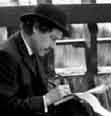
SEAn WALSh
irlanda / ireland 2003, 35mm, col., 113’ v.o. inglese / english o.v.
“molto è stato scritto sul rapporto tra Leopold Bloom e stephen Dedalus, su come i loro percorsi si incrocino e si uniscano; - ha dichiarato sean Walsh, il regista di BL,.M – ma questo mi interessa meno. mi interessava invece ciò che accade a Leopold Bloom in quanto uomo, a molly Bloom in quanto donna e a stephen Dedalus in quanto ragazzo. mi interessa l’individuo. Bloom ne ha passate di tutti i colori: è stato felice, è stato triste. e un pragmatico, sa di non poter cambiare il mondo in cui vive, ma deve andare avanti e lo fa. molly è come lui. stephen è invece più tormentato e certo meno pragmatico.” il film, tempestivamente realizzato in concomitanza dei festeggiamenti del centenario del Bloomsday del 2004, è un tentativo di trasporre per il cinema l’ulisse di Joyce evitando ogni possibile effetto sperimentale o avanguardistico. il regista si è concentrato sugli aspetti umani e umoristici del romanzo; particolarmente interessante è la resa del surrealismo comico dell’episodio di Circe, ambientato nel bordello di Bella Cohen, e che permette al regista di mettere in scena le fantasie di Leopold Bloom. a parere del giovane regista: “l’ulisse è stato considerato per anni il miglior romanzo del xxmo secolo, specialmente in irlanda dove Joyce è venerato come un grande scrittore. il problema è che pochi lo hanno letto; tutti ne posseggono una copia e nessuno l’ha letto!” Questo paradosso avrebbe spinto sean Walsh a realizzare un film accessibile a tutti, perché “come può quest’opera essere considerata un capolavoro se nessuno l’ha letta?”.
sceneggiatura / screenplay: Sean Walsh, adattamento dall‘ulisse di James Joyce / adapted from James Joyce’s ulysses.
montaggio / editing: Sarah Armstrong. Fotografia / Photography: Ciaran Tanham.
musica / music: david Kahne.
scenografia / art Director: Steve Simmonds, Mervyn Rowe. Costumi / Wardrobe: Tara van zyl.
interpreti / Cast: Stephen Rea, Angeline Ball, hugh o’Connor, Patrick Bergin, Alan devlin, Phelim drew, Maria Lennon, Alvaro Lucchesi, Eoin McCarthy, Rachel Pilkington, dearbhla Molly.
Produzione / Produced by: Anne Brow, Mark Byrne, John hubbard, Ros hubbard, Sean Walsh.
Coproduzione / Co-produced by: Mark Byrne.
Distribuzione / World sales: odyssey Pictures.
“much has been written about the relationship between Leopold Bloom and stephen Dedalus, on how their paths cross and join”, declared sean Walsh, director of BL,.M, “but this interested me less. What instead interested me is what happens to Leopold Bloom as a man, to molly Bloom as a woman and to stephen Dedalus as a young man. the individual is what interests me. Bloom has suffered just about everything: he has been happy and he has been sad. He is a pragmatist; he knows he cannot change the world in which he lives, but he has to move forward, and he does. molly is the same. But stephen is more tormented and certainly less pragmatic”. the film, made quickly on the occasion of the celebrations for the centenary of Bloomsday in 2004, marks an attempt to transpose Joyce’s ulysses to the screen avoiding any experimental or avantgarde effects. the director has concentrated on the human and humorous aspects of the novel; of particular interest is the manner in which the comic surrealism of the Circe episode, set in Bella Cohen’s brothel, is achieved. the staging of Leopold Bloom’s fantasies is equally successful. according to the young director: “ulysses has been for years considered the best novel of the 20th century, especially in ireland, where Joyce is venerated as a great writer. the problem is that not many people have read it; everyone has a copy and nobody’s read it!” this paradox apparently stimulated sean Walsh to make a film accessible to all, because “how can this work be considered a masterpiece if nobody has read it?”
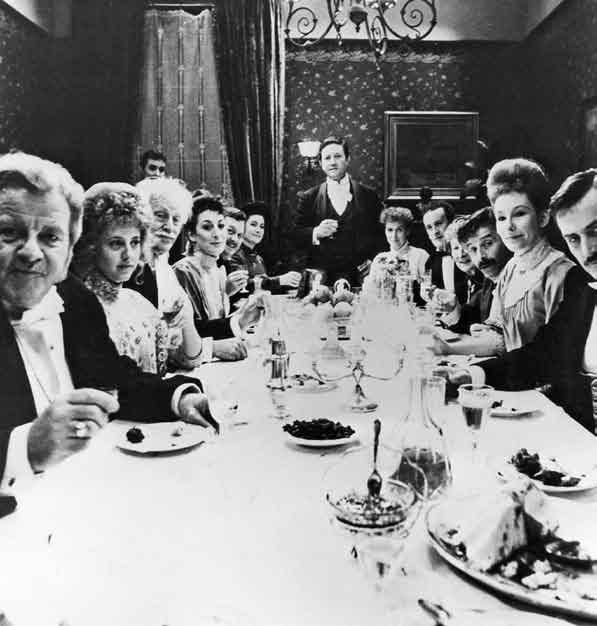
GIACoMo GEnTILoMo un protagonista nel cinema di genere Cinema PeOPLe OF tRieste 3: GiaCOmO GentiLOmO a protagonist in genre cinema
ATTo dI ACCuSA (1950)
LA CIECA dI SoRREnTo (1953)
un GEnTILuoMo dEL CInEMA di Fulvio toffoli (1991)

LuCIAno dE GIuSTI
Giacomo Gentilomo è stato per lungo tempo un regista dimenticato, trascurato anche dalle storie del cinema nelle quali talvolta viene appena fugacemente trattato. a questo esito ha contribuito forse anche la scelta da lui compiuta a metà degli anni ’60 di abbandonare il cinema per dedicarsi alla pittura, richiudendosi in un impenetrabile silenzio. Dieci anni dopo questa irrevocabile decisione, quando il critico e storico Francesco savio gli propose di rispondere a un questionario per il suo volume Cinecittà anni Trenta, il regista oppose un cortese ma netto rifiuto: “Caro savio, non risponderò ad alcuna delle domande che lei mi ha posto. in questo, mi creda, non vi è nulla di personale. semplicemente, desidero non ricordare il periodo – il lungo periodo, o se preferisce, il troppo lungo periodo – della mia attività cinematografica, alla quale ho posto fine dieci anni fa, nel 1964”. Passò un altro decennio e il ritrovamento di una copia del suo film più compiuto e significativo, al quale egli stesso era molto affezionato, O’ sole mio (1945), innescò un processo di revisione della sua produzione, ripensamento aperto da un profilo critico complessivo tracciato da sergio Grmek Germani in occasione di una retrospettiva parigina dedicata ai cineasti triestini nel 1986 (organizzata da La Cappella Underground e curata da annamaria Percavassi e Lorenzo Codelli). a sottrarlo all’oblio hanno poi concorso altri contributi critici e alcune interviste, rilasciate dal regista che in tarda età ruppe l’isolamento e il lungo silenzio che si era imposto, concedendosi in conversazioni, sia pure misurate e concise, nelle quali ha rievocato alcune tappe della sua carriera. Una di esse, condotta in forma filmata da Fulvio toffoli (Un gentiluomo del cinema, 1991), venne corredata da testimonianze che concorsero a tracciarne un vivo ritratto professionale e umano, restituendone la sfaccettata personalità.
L’omaggio del trieste Film Festival, con una selezione dei suoi film, e la pubblicazione di un volume che ne ricostruisce l’itinerario produttivo, da parte della Facoltà di scienze della Formazione dell’Università di trieste, costituiscono un doveroso atto di riconoscimento e, insieme, di risarcimento, reso dalla città nella quale è nato e si è formato, proprio in occasione del centenario della nascita (trieste 1909).
L’avventura nel cinema di Gentilomo comincia come un ripiego rispetto alla sua originaria passione per il teatro e in particolare
Giacomo Gentilomo has for a long time been forgotten as a director and is neglected even in histories of the cinema, where he is sometimes just barely mentioned. One of the reasons for this outcome was perhaps his decision in the mid-sixties to drop the cinema for painting, shutting himself away in an impenetrable silence. ten years after this irrevocable decision, when the historian and critic Francesco savio asked him to fill out a questionnaire for his book Cinecittà Anni Trenta, the director politely, but firmly, refused: “Dear savio, i won’t answer any of the questions you have sent me. there is nothing personal in this, believe me. it’s just that i don’t want to be reminded of the period – the long period, or if you prefer, the overlong period – when i worked in the cinema, which i brought to an end ten years ago, in 1964”. another decade came and went and the discovery of a copy of his most assured and most significant film, of which he himself was extremely fond, O’ sole mio (1945), elicited a review of his work and a reassessment of his stature, initiated by sergio Grmek Germani’s wide-ranging critical profile for a retrospective of film makers from trieste held in Paris in 1986 (presented by La Cappella Underground and curated by annamaria Percavassi and Lorenzo Codelli). Other critical writings and a number of interviews, which the director gave in his later years, then combined to further drag him out of his self-imposed isolation. albeit measured and concise, these conversations broke Gentilomo’s long silence, giving his own perspective on the various stages of his career as a director. One of these, recorded on film by Fulvio toffoli (Un Gentiluomo del Cinema, 1991), was combined with other material to give a vivid portrait of Gentilomo from both the human and professional point of view, bringing out the many sides of his personality.
the tribute of trieste Film Festival, with a selection of his films, supplemented by a publication covering the evolution of his career in the cinema, produced by the Faculty of educational sciences at trieste University, constitute a long overdue act of recognition on the part of the city where he was born and grew
per il disegno di bozzetti scenografici. alla Cines, presso la quale si reca nel 1931 con questo intento, lasciando per sempre trieste, accetta dapprima l’impiego quale segretario di edizione, successivamente quello di montatore, sceneggiatore, aiuto regista per registi quali Carlo Ludovico Bragaglia, mario mattoli, svolgendo talvolta più d’una di queste mansioni nella realizzazione dello stesso film. matura così una vasta conoscenza della filiera filmica che gli gioverà al momento del suo esordio nella regia. i primi tre film che dirige, assai diversi l’uno dall’altro, hanno nella sua formazione professionale un valore di prove e sperimentazioni. il documentario Sinfonie di Roma (1937) gli offre l’occasione di sperimentare per primo in italia il sistema technicolor, mentre nel suo primo film di finzione, Il Carnevale di Venezia (1940), in coregia con Giuseppe adami, prova la commistione di commedia e filone musicale. La sperimentazione di vari registri e stili si amplia ulteriormente in Ecco la radio! (1940), composto, nonostante la cornice documentaria, di alcuni microfilm appartenenti a generi diversi, dalla commedia al musical, dal comico all’avventura: quasi una prova generale di alcuni dei generi popolari nei quali in seguito si cimenterà. nella prima metà degli anni ’40, ancora in regime di telefoni bianchi, la produzione sarà dominata dalla commedia, declinata nelle varianti di commedia degli equivoci, sofisticata, brillante, sentimentale, cui si aggiungono due curiose ibridazioni con il giallo, combinato al rosa del lieto fine: Brivido (1941) e Cortocircuito (1943). Con Gentilomo, in questa fase compiono un tratto rilevante del loro percorso iniziale alcune personalità di spicco: mario monicelli, futuro maestro della commedia italiana, debutta accanto a lui come aiuto regista e sceneggiatore; Renato Rascel, già affermatosi come attore nella rivista d’avanspettacolo, viene diretto da Gentilomo nel suo esordio sullo schermo in Pazzo d’amore (1943), scritto da vittorio metz. tullio Pinelli firma la sua prima collaborazione alla sceneggiatura in un film di Gentilomo, In cerca di felicità (1943). nel 1945, in un clima che risentiva degli eventi ancora caldi della guerra civile, Gentilomo realizza O’ sole mio!, imperniato su una vicenda resistenziale che si conclude con le celebri Quattro Giornate di napoli, girato nel capoluogo partenopeo contemporaneamente a Roma città aperta, in gran fretta, con pochi mezzi, per alcuni tratti come
up and also marks the centenary of his birth (trieste 1909). Gentilomo’s life in the cinema began when he fell back on film as an alternative to his first love the theatre, particularly set designing. His first job, as a film editing secretary, was at Cines, where he went in 1931 with the intention of pursuing this career, leaving trieste for ever. He later became a film editor proper, screenwriter and assistant director for directors such as Carlo Ludovico Bragaglia and mario mattoli, sometimes acting in more than one capacity in the same film. the breadth of his experience in the film industry was to stand him in good stead when he at last turned to directing himself. His first three films as a director, all very different, were an opportunity to learn new skills and stretch his wings in a series of experiments. the documentary Sinfonie di Roma (1937) gave him the chance to be the first in italy to use the new technicolor system, while his first fiction film, The Carnival of Venice (1940), co-directed with Giuseppe adami, attempted to blend comedy with music. His experimentation with various registers and styles was taken to new heights in Ecco la radio (1940), which, in spite of its apparent documentary approach, is actually composed of a number of different miniature films belonging to various genres, ranging from light comedy to adventure films and musicals: almost a dress rehearsal for the kind of popular formats which were to become his hallmark. in the early forties, when elegant “white telephone” films were still the rage, he concentrated on producing a number of sophisticated light comedies with romantic plots and witty dialogue, together with two curious hybrids, thrillers with a happy ending: Brivido (1941) and Cortocircuito (1943). a number of leading figures in the cinema shared a significant part of their early experience of film with Gentilomo at this time, including mario monicelli, a future master of italian comedy, who was assistant director and screenwriter for him, Renato Rascel, already an established actor in pre-feature shows, who was directed by Gentilomo on his debut in a film role in Pazzo d’amore (1943), written by vittorio metz. tullio Pinelli wrote the screenplay for In Cerca
se fosse un documentario. nel personale tragitto di Gentilomo ha rappresentato un nuovo inizio e molte delle sue componenti espressive si ritrovano nei lavori che seguiranno, a cominciare dalla contaminazione di registri e stili che continuerà a essere uno dei tratti distintivi del regista. nella successiva produzione postbellica ritroveremo innanzitutto la sua radicata predisposizione al melodramma, forse la più intima e propria dell’autore che darà vita a una ragguardevole produzione di film appartenenti a questo genere di largo ascolto e presa popolare: Amanti in fuga (1946), contrastata vicenda amorosa, immaginariamente costruita sulla vita del musicista alessandro stradella; I fratelli Karamazoff (1947), premiato da riconoscimenti e dalla critica per la forma elegante in cui il celebre romanzo di Dostoevskij è stato ridotto e adattato per lo schermo facendone un melodramma in costume; Atto di accusa (1950), con un giovane marcello mastroianni che, in una delle sue prime prove sullo schermo, presta il suo talento a un film di pregevole fattura, a metà strada tra il melodramma e il giallo del filone giudiziario. ai film di questa fervida stagione produttiva, seguiranno i mèlo degli anni ’50, da La cieca di Sorrento (1953) a Le due orfanelle (1954), fino ad Appassionatamente (1954), degno di figurare, anche grazie alla presenza di amedeo nazzari, accanto ai migliori film di Raffaello matarazzo. ma una certa inclinazione verso il melodramma si ritrova anche nei film d’avventura esotica come Lo sparviero del Nilo (1949), con un affilato vittorio Gassman, e in quelli appartenenti al filone musicale: Enrico Caruso, leggenda di una voce (1951) e Melodie immortali (1952), dedicato a mascagni: tutti, gli uni e gli altri, appaiono intrisi di una prediletta cifra espressionista, giustamente identificata dalla critica quale tratto espressivo proprio e peculiare del regista, una vocazione che spesso si manifesta nel taglio obliquo delle inquadrature, spiccatamente angolate dal basso e dall’alto, e nell’uso frequente dei forti contrasti di luce e ombra. nell’ultima fase della carriera, la filmografia di Gentilomo si fa via via più eclettica e variegata, alternando regie di genere storico-mitologico con quelle dell’avventuroso, il guerresco con il peplum, mantenendosi comunque sempre nell’alveo del cinema popolare di largo consumo, spesso destinato al cosiddetto mercato di profondità. L’approdo di questa produzione eterogenea è rappresentato dai
di Felicità (1943), his first for a Gentilomo film. in 1945, in a country still feeling the after effects of the civil war, Gentilomo made O’ sole mio!, based on a resistance story ending in the famous Four Days of naples and shot in that city at the same time as Roma Città Aperta, in a great hurry and on a shoestring, and in some sections almost like a documentary. this represented a new departure in Gentilomo’s career up until then and he was to turn to many of the creative techniques first used in this film in his subsequent works. His postwar movies confirmed his marked preference for melodrama, which perhaps best expressed his own deepest instincts, and he was to make a large number of films in this key, which was hugely popular and was always sure to draw large audiences: Amanti in fuga (the Lovers, 1946), a love story loosely based on the life of the musician alessandro stradella; I fratelli Karamazoff (the Brothers Karamazov, 1947), a prize-winning film praised by critics for the elegance with which Dostoyevsky’s famous novel was abridged and adapted for the screen, turning it into a costume drama; Atto di Accusa (1950), with a young marcello mastroianni, who appears in one of his very first roles in an excellent film, mid way between a melodrama and a courtroom drama. the films from this highly fertile period, were followed by the melodramas of the nineteen-fifties, including La Cieca di Sorrento (1953), Le due orfanelle (the two Orphans, 1954) and Appassionatamente (1954), which stands comparison with the best films of Raffaello matarazzo, thanks partly to the performance of amedeo nazzari. a certain inclination towards melodrama can also be seen in his exotic adventure films, such as Lo sparviero del Nilo (the Hawk of the nile, 1949), with a razor-sharp vittorio Gassman, and in his films with a musical theme: Enrico Caruso leggenda di una voce (the Young Caruso, 1951) and Melodie immortali (immortal melodies, 1952), devoted to mascagni: all of these seem imbued with his favourite impressionist approach, rightly pinpointed by critics as a hallmark of the director, often seen in his preference for low-angled shots and in the frequent
due Maciste nei quali le mitiche avventure dell’uomo forte sono ibridate rispettivamente con elementi provenienti dall’horror e dalla fantascienza. a differenza di quanto aveva fatto fin dall’inizio della carriera, quando partecipava alla elaborazione della sceneggiatura, in quest’ultima parte Gentilomo non segue più la preparazione dei suoi film, limitandosi invece al lavoro professionalmente esecutivo di messa in scena e direzione degli attori. Può essere considerato come un segnale significativo della progressiva presa di distanza fino al distacco da questo genere di produzione, come se l’allentamento della sua presa e controllo sul film fosse il preludio della rinuncia e del successivo abbandono. insofferente delle costrizioni imposte da produttori e distributori, insoddisfatto e già a disagio in un mondo con il quale non si sentiva in consonanza, decide di ritirarsi per dedicarsi al primo e antico amore, quello per la pittura, che, a differenza del lavoro collettivo del cinema, lo vede da solo di fronte alla tela, alla quale può consegnare in totale libertà i fantasmi della propria creazione.
use of strong contrasts between light and shade. in the last stage of his career, Gentilomo’s filmography becomes more and more varied and eclectic, alternating the direction of historical-mythological films with adventure, war films with romance, always aiming to produce works with mass appeal, often designed for the so-called bottom end of the market. the culmination of this multifaceted production was represented by his two Maciste films, in which the adventures of the mythical strongman are combined with elements of the horror film in the first and science-fiction in the second. in contrast to his practice since the beginning of his career, when he would take part in developing the screenplay, in these latter stages Gentilomo confined himself to supervising the set arrangements and directing the actors. this can be taken as a significant sign of his gradual distancing from this type of production, as if loosening his grip and thus relinquishing control over the film were paving the way for his decision eventually to drop out altogether. impatient with the restrictions of producers and distributors, frustrated and already ill at ease in a world with which he felt less and less affinity, he decided to retire from the cinema to dedicate his time to his first love, painting, which unlike the collective pursuit of film-making left him alone with his empty canvas, where he felt free to release the phantoms of his imagination just as he pleased.
BRIVIdo tHRiLL
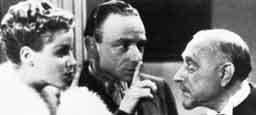
Ugo Palfy (Umberto melnati), autore di libri gialli in difficoltà finanziarie, deve trovare l’intreccio di un libro che ha già venduto, del quale ha scritto solo il titolo, L’uomo nel baule. Quella sera è atteso a cena l’editore Janosky (ernesto almirante) e Ugo prega la sua segretaria margot di chiedere in prestito l’argenteria a Federica Usticky (Clara Calamai), al piano di sopra, che viene sorpresa in una lite con il marito ignazio (sandro Ruffini). Poco dopo Federica s’incontra con il suo amante, mattia (andrea Checchi), ex fidanzato di Janette, l’altra segretaria di Palfy. terminata la cena, Cristina, Janosky e ignazio vanno a un concerto. Federica, intanto, riceve la visita del fratello che ha bisogno di denaro ma si rifiuta di aiutarlo. Ugo a un tratto sente della musica provenire dal piano di sopra e vede delle gocce d’acqua cadere dal soffitto. Corre a vedere e trova Federica uccisa nel bagno allagato: chiama la polizia e informa Cristina, Janosky e ignazio, tornati dal concerto. Giungono il commissario di polizia (Giacomo moschini) e il dottore. il fratello di Federica è accusato dell’omicidio e, nel frattempo, si compie un altro delitto: il cameriere degli Usticky è trovato morto dentro un baule. tutte le prove sono contro mattia…
GIACoMo GEnTILoMo italia / italy 1941, 35mm, b-n / b-w, 84’ v.o. italiana / italian o.v.
sceneggiatura / screenplay: Alessandro de Stefani, Mino Caudana, Giacomo Gentilomo, Mario Monicelli, tratto dalla commedia / based on the play Il triangolo magico di / by Alessandro de Stefani. Fotografia / Photography: Giuseppe La Torre. montaggio / editing: Renzo Lucidi. musiche / music: ulisse Siciliani. suono / sound: Enrico Palmieri, Giovanni Rossi.
scenografia / art Direction: Fulvio Paoli. interpreti / Cast: umberto Melnati, Maria Mercader, Clara Calamai, Andrea Checchi, Carlo Campanini, Sandro Ruffini, Pina Renzi, Ernesto Almirante, Giacomo Moschini, Vasco Creti, Eugenia zaresca, nicoletta Parodi, Edoardo Toniolo, Aldo Silvani. Produzione / Produced by: Ente nazionale Industrie Cinematografiche (Enic), Incine.
Ugo Palfy (Umberto melnati), a thriller writer in dire financial straits, has to think up a plot for a book he has already sold, but only the title has been written on the blank page in front of him, The Man in the Trunk. that evening he has been invited to dinner by the publisher Janosky (ernesto almirante) and Ugo instructs his secretary margot to ask to borrow the silverware of Federica Usticky (Clara Calamai), from the flat below. When she goes down, she finds Federica in the middle of a row with her husband ignazio (sandro Ruffini). soon after, Federica goes to see her lover mattia (andrea Checchi), the former fiancé of Janette, Palfy’s other secretary. after dinner, Cristina goes with Janosky and ignazio to a concert. meanwhile, Federica’s brother drops in on her and tells her he needs money, but she refuses to help him. Ugo suddenly hears music from the floor above and water starts to drip down from the ceiling. He runs up to investigate and finds Federica lying dead in the bathroom, with water splashing out of the tub. He calls the police and tells Cristina, Janosky and ignazio, who are back from the concert. the police inspector (Giacomo moschini) and the doctor arrive. Federica’s brother is taken to be the culprit, but another murder comes to light: the Usticky’s servant is found dead in a trunk. all the evidence points to mattia...
CoRToCIRCuITo sHORt-CiRCUit
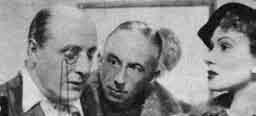
Ugo Redy (Umberto melnati), stressato autore di romanzi gialli, decide di trovare riposo nella clinica psichiatrica di villabianca. intanto, un delitto avvenuto in città, la morte del dottor Heker causata dalla puntura di uno spillo avvelenato, rinforza la tesi dell’editore storch (Lauro Gazzolo), convinto che l’assassino abbia seguito le istruzioni del romanzo di Redy, Il sonno della morte, in cui si narra la storia di un pazzo che uccide con spilli avvelenati. se così fosse, un incremento delle vendite sarebbe inevitabile, agli occhi di storch, che, insieme al commissario di polizia (Giacomo moschini) e al suo aiutante Gruner (mario Besesti), costringe la moglie dello scrittore, Cristina (vivi Gioi), a rivelare dove si trova il marito. storck raggiunge Redy e insiste per avere un nuovo romanzo entro la fine del mese. in seguito a un cortocircuito nella sala da pranzo della clinica, Redy ha un’idea per il libro. Lo scrittore si ritira nella sua stanza a lavorare mentre una scarica elettrica nell’ascensore provoca la morte di Besson, assistente del dottor muller (Guido notari), direttore della clinica. Ready crede di essere l’assassino: tutto ciò che aveva pensato per il suo romanzo, infatti, è accaduto...
GIACoMo GEnTILoMo italia / italy 1943, 35mm, b-n / b-w, 85’ v.o. italiana / italian o.v.
sceneggiatura / screenplay:
Ezio d’Errico, Mario Monicelli, Ernesto Grassi, Giacomo Gentilomo, Mino Caudana (non accreditato / uncredited).
Fotografia / Photography: Giorgio orsini. montaggio / editing: Renzo Lucidi. musiche / music: Ezio Carabella. scenografia / art Director: Piero Filippone, Guglielmo Borzone.
interpreti / Cast:
Vivi Gioi, umberto Melnati, Guglielmo Barnabò, Enzo Biliotti, Guido notari, Giacomo Meschini, Mario Bisesti, Bianca doria, dino di Luca, Fausto Guerzoni, dina Perbellini, Gilda Marchiò, Mirka Bereny, Lauro Gazzolo, Egisto olivieri, Gualtiero Isnenghi, Luisa Garella, Giuseppe Pierozzi, Gerardo Frossi. Produzione / Produced by: Iris - Arno.
Ugo Redy (Umberto melnati), a stressed out thriller writer, decides to seek respite in the psychiatric clinic of villabianca. meanwhile, a Dr Heker is murdered in town. the manner of his death, by stabbing with a poisoned pin, convinces the publisher storck (Lauro Gazzolo) that the murderer is re-enacting the plot of Redy’s novel Death’s Sleep, in which a madman goes around killing people in exactly this way. if this were the case, in storck’s view it would inevitably lead to a big increase in sales of the book. so he joins forces with the police inspector (Giacomo moschini) and his assistant Gruner (mario Besesti) to force the writer’s wife Cristina (vivi Gioi) to reveal where he is holed up. storck catches up with Redy and insists on him writing a fresh novel by the end of the month. a short circuit in the clinic’s dining room gives Redy the idea for a new plot and he retreats to his room to work it up. meanwhile Besson, the assistant of Dr muller (Guido notari), the director of the clinic, is electrocuted in the lift and dies. Redy thinks he is responsible because everything he has imagined for his novel has taken place...

Giovanni (tito Gobbi) è un agente dei servizi speciali paracadutato dagli americani nei pressi di napoli per prendere contatto con la Resistenza. Divenuto amico del “borsaro nero” Gaetano (vittorio Caprioli), ne accetta l’ospitalità in casa sua e si innamora di sua sorella Graziella (adriana Benedetti). Giovanni finge di essere un cantante e, dopo aver preso contatto con i compagni della Resistenza, si esibisce a Radio napoli, allora in mano ai tedeschi, con romanze e canzoni tra cui ‘o sole mio!, allo scopo di trasmettere agli alleati messaggi cifrati picchiettando il microfono. Graziella scopre la verità su Giovanni e lo aiuta nella sua impresa, portando un messaggio al Banco di prestiti su pegno, in via di Porta Capuana, dove si nascondono i patrioti del Comitato per la Resistenza. Un’impiegata della radio, Clara (vera Carmi), è un’informatrice dei tedeschi e complica la strada al giovane: lo fa pedinare, ordina una perquisizione al Banco dei pegni, non fa trasmettere alla radio ‘o sole mio!, e infine lo ricatta, invitandolo a casa sua. Dopo la cattura di suo fratello (Carlo ninchi), che faceva parte della Resistenza, e la sua morte, Clara si pente e aiuta il cantante a trasmettere il messaggio agli alleati attraverso il brano ‘o sole mio!. Poi, lo fa fuggire e muore per salvarlo. il popolo prende le armi e insorge: i tedeschi si arrendono e napoli viene liberata prima dell’arrivo delle truppe alleate in città
GIACoMo GEnTILoMo italia / italy 1945, 35mm, b-n / b-w, 109’ v.o. italiana / italian o.v.
sceneggiatura / screenplay: Akos Tolnay, Mario Sequi. Fotografia / Photography: Anchise Brizzi, Tonino delli Colli. montaggio / editing: Guido Bertoli. musiche / music: Ezio Carabella. suono / sound: Piero Cavazzuti, Enrico Palmieri. scenografie / art Direction: Alfredo Boccianti.
interpreti / Cast: Tito Gobbi, Adriana Benetti, Vera Carmi, Ernesto Almirante, Vittorio Caprioli, Salvatore Cuffaro, Arnoldo Foà, Lilly Granado, Carlo ninchi, Giovanni Petti, heinrich Bode, Armando Francioli, Cesare Fantoni, Vittorio Sanipoli, Cesare Polacco, domenico Serra. Produzione / Produced by: Rinascimento Film.
Giovanni (tito Gobbi) is a secret service agent working for the americans, who drop him by parachute near naples to establish contact with the Resistance. He makes friends with “borsaro nero” Gaetano (vittorio Caprioli), accepts his hospitality and promptly falls in love with his sister Graziella (adriana Benedetti). Giovanni pretends to be a singer and after making contact with other members of the Resistance he is given work on Radio napoli, which is run by the Germans. He sings his songs, including ‘o sole mio!, and acts in dramatizations, using the performances to send coded messages to the allies by tapping on the microphone. Graziella discovers Giovanni’s true identity and decides to help him by delivering one of his messages to the pawnbroker’s in via di Porta Capuana, where the Resistance Committee members are hiding out. One of the girls working at the radio, Clara (vera Carmi), is an informer working for the Germans and makes life difficult for Giovanni. she has him followed, has the pawnbroker’s searched, stops ‘o sole mio! being broadcast and finally invites him to her flat, where she blackmails him. When her brother (Carlo ninchi), who is also in the Resistance, is captured, Clara has a change of heart and helps the singer broadcast his messages to the allies through his song ‘o sole mio!. then she helps him to escape and dies protecting him. the people of naples rise up and drive the Germans out of the city before the arrival of the allies.
tHe BROtHeRs KaRamaZOv
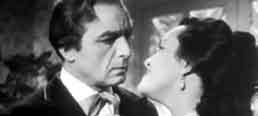
il giovane Dimitri Karamazoff (Fosco Giachetti) pretende dal padre, Fjodor Karamazoff (Lamberto Picasso), l’eredità di diecimila rubli, lasciatagli dalla madre: è stabilito un incontro in un convento insieme a ivan (andrea Checchi) e alioscia (Carlo Conscio), gli altri due fratelli, ma non si giunge a nessun accordo. Fjodor Karamazoff sperpera tutto il denaro per una donna, Gruscenka (elli Parvo), della quale è innamorato anche Dimitri, fidanzato con Katerina (mariella Lotti). ivan è segretamente innamorato di Katerina e geloso di Dimitri. Quest’ultimo ordina al fratello smerdiakov (Giulio Donnini), malato di epilessia, di impedire che Gruscenka vada da suo padre, il quale le ha promesso tremila rubli. Poco dopo smerdiakov parla con ivan che è in partenza per mosca, confessandogli di temere che Dimitri possa uccidere suo padre. ivan cambia destinazione e parte per la più vicina Cermacnja. Durante la notte Fjodor viene ucciso e Dimitri incriminato…
GIACoMo GEnTILoMo italia / italy 1947, 35mm, b-n / b-w, 112’ v.o. italiana / italian o.v.
sceneggiatura / screenplay: Giacomo Gentilomo, Gaspare Cataldo, Alberto Vecchietti, Guido Pala, dal romanzo di Fjodor dostoevskij / based on Fyodor dostoyevsky’s novel. Fotografia / Photography: Giuseppe La Torre. montaggio / editing: Renzo Lucidi. musiche / music: Renzo Rossellini. scenografie / art Direction: Alberto Boccianti, Gino Brosio.
Costumi / Wardrobe: Gino C. Sensani. interpreti / Cast: Fosco Giachetti, Mariella Lotti, Elli Parvo, Andrea Checchi, Giulio donnini, Lamberto Picasso, Carlo Conso, Milly Vitale, Franco Scandurra, Laura Carli, Gina Spadaro, Paola Veneroni, Ernesto Almirante, Armando Guarnieri, domenico Serra, Gina Spadaro, Attilio Torelli, Riccardo Foti, Ettore G. Mattia, Vukiv zarko, Alberto Vecchietti. Produzione / Produced by: Comiran.
the young Dimitri Karamazov (Fosco Giachetti) claims by his father, Fjodor Karamazov (Lamberto Picasso), his mother’s legacy of ten thousand rubles. a meeting is set in a convent with ivan (andrea Checchi) and alioscia (Carlo Conscio), the other two brothers, but fails to lead to any agreement. Fjodor Karamazov squanders all his money for a woman, Gruscenka (elli Parvo). also Dimitri is secretly in love with her, but has a girlfriend, Katerina (mariella Lotti). she is in turn secretly loved by ivan, who is jealous of Dimitri. the latter orders his brother smerdiakov (Giulio Donnini), sick of epilepsy, to prevent Gruscenka go by his father, who has promised her three thousand rubles. shortly after, smerdiakov talks with ivan, who is leaving for moscow, confessing to fear that Dimitri could kill his father. ivan changes destination and decides to leave for the nearest Cermacnja. During the night Fjodor is killed and Dimitri is indicted...
tHe aCCUsatiOn

Renato La torre (marcello mastroianni) torna dopo anni dalla guerra e ritrova irene (Lea Padovani), la donna che amava, sposata. i due sono ancora innamorati e si vedono segretamente. L’avvocato massimo Ruska (Karl Ludwig Diehl), marito di irene, scopre che la moglie s’incontra con l’amante in casa della signora Pacetti, sarta e affittacamere. accecato di gelosia, Ruska uccide la signora Pacetti, soffocandola, e le ruba i gioielli per simulare un furto e incolpare Renato. il commissario (andrea Checchi) trova nel salotto della Pacetti due mozziconi di sigaretta, di cui uno con impronte di rossetto, e recupera un elenco delle clienti della sarta per scoprire quale avesse un amante come quello descritto dalla signora inghirami (marga Cella), la vicina di casa curiosa, che aveva visto Renato scendere dalle scale del palazzo. irene, intanto, propone a massimo la separazione e lui per vendicarsi le manda una lettera anonima, ricattandola: se non consegnerà al più presto 800mila lire il suo amante sarà denunciato alla polizia...
GIACoMo GEnTILoMo italia / italy 1950, 35mm, b-n / b-w, 98’ v.o. italiana / italian o.v.
sceneggiatura / screenplay: Franco Brusati, Gaspare Cataldo, Ezio d’Errico, Giacomo Gentilomo. Fotografia / Photography: Alvaro Mancori.
montaggio / editing: otello Colangeli. musiche / music: Carlo Rustichelli. suono / sound: Enrico Palmieri, Giovanni Rossi. scenografie / art Direction: Gastone Medin, Alberto Boccianti.
Costumi / Wardrobe: dina di Bari. interpreti / Cast: Lea Padovani, Marcello Mastroianni, Karl Ludwig diehl, Andrea Checchi, Marga Cella, Amilcare Pettinelli, Gaetano Verna, Alda Mangini, Emma Baron, Silvana Muzi, Maria Pina Spini, Mary Genni, Alessio Ruggeri. Produzione / Produced by: Athena Cinematografica.
Renato La torre (marcello mastroianni) is back after years of war and found irene (Lea Padovani), the woman he loved, married. the two are still in love and meet secretly. the lawyer massimo Ruska (Karl Ludwig Diehl), husband of irene, discovers that his wife meets with the lover in the house of mrs. Pacetti, seamstress and landlady. Blinded with jealousy, Ruska chokes mrs. Pacetti and steals jewels to simulate a theft and blame Renato. the police inspector finds in mrs. Pacetti’s living room two cigarette ends, one with lipstick imprints, and retrieves a list of customers of her to discover which had a lover like that described by mrs. inghirami (marga Cella), the curious neighbor who had seen Renato down the stairs of the building. irene, meanwhile, proposes parting to massimo who, by revenge, sends her an anonymous letter blackmailing her: if not she soon deliver 800,000 lire her lover will be reported to the police.
tHe BLinD WOman FROm sORRentO
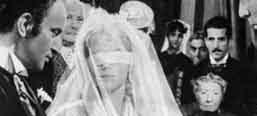
nel 1848 il Comitato Rivoluzionario lotta contro il governo borbonico. andrea Pisani, un rappresentante dei rivoluzionari di napoli, raggiunge il marchese di Rionero (Carlo Fazzetti), a sorrento, per prendere del denaro da portare al Comitato per le armi. Un uomo mascherato entra nella villa, ruba i gioielli e uccide la marchesa. La figlia Beatrice (antonella Lualdi), per il trauma, diventa cieca. La polizia accusa Pisani: condannato a morte, chiede al figlio Oliviero (Paul Campbell) di cambiare identità e di riprendere il suo nome quando la verità verrà a galla. Oliviero decide che da grande sarà un oculista: guarirà Beatrice affinché possa riconoscere l’assassino di sua madre. Da adulto, Oliviero torna a sorrento con il nome di dottor Dupré, incontra Beatrice e la convince a farsi operare.
GIACoMo GEnTILoMo italia / italy 1953, 35mm, b-n / b-w, 88’ v.o. italiana / italian o.v.
sceneggiatura / screenplay: Liana Ferri, Ivo Perilli dal romanzo di / based on the novel by Francesco Mastriani.
Fotografia / Photography: Romolo Garroni.
montaggio / editing: Elsa dubbini. musiche / music: Carlo Rustichelli.
scenografie / art Direction: Mario Garbuglia, dante Fazzi.
Costumi / Wardrobe: Maria de Matteis. interpreti / Cast: Antonella Lualdi, Paul Campbell, Vera Carmi, Paul Muller, Enzo Biliotti, Carlo Fazzetti [Charles Fawcett], Corrado Annicelli, nuccia Aronne, Maurizio di nardo, Giuliano Montaldo, Michele Riccardini, Giovanni onorato, Marilyn Buferd, Giovanni Vari, Siro Carme, Carlo d’Elia, Patrizia Lari, Rina dei. Produzione / Produced by: Astoria Film.
it is 1848 and the Revolutionary Committee is struggling against the Bourbon government of naples. andrea Pisani, one of the revolutionaries, arranges to meet the marquess of Rionero (Carlo Fazzetti) in sorrento to collect some money to take to the committee to buy arms. a masked man enters the villa, steals some jewels and kills the marquess’s wife. His daughter Beatrice (antonella Lualdi) is traumatized and struck blind. the police charge Pisani with murder and he is duly sentenced to death. He tells his son Oliviero (Paul Campbell) to change his identity and only restore his real name when the truth comes to light. Oliviero decides to become an ophthalmologist so that he can cure Beatrice’s blindness, thus enabling her to recognize her mother’s murderer. as an adult, Oliviero returns to sorrento under the name of Dr Dupré, meets Beatrice and convinces her to undergo an operation.
GEnTILuoMo dEL
a GentLeman in Cinema
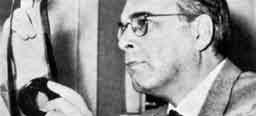
nel 1964 Giacomo Gentilomo gira il suo ultimo film, Maciste e la regina di Samar, che chiude definitivamente la carriera cinematografica del regista appena 54enne. Profondamente disilluso dal mondo del cinema, Gentilomo si nega a produttori, critici e giornalisti, proibisce a tutti in casa di parlare dei suoi film e si dedica ad altro, in particolare alla pittura e alla collezione di libri antichi illustrati. Per anni di Gentilomo non si ha notizia. Ci si dimentica di lui, tanto che tullio Kezich in un articolo lo dà per morto anzitempo. nel 1991, Fulvio toffoli realizza su di lui un ritratto-documentario per la televisione, incontrando molti fra quanti, nel mondo del cinema, l’avevano conosciuto e apprezzato, da mario monicelli a Franco Giraldi, da antonella Lualdi a valerio Caprara, oltre a molti altri.
FuLVIo ToFFoLI
italia / italy
1991, Betacam sP, col., 54’ v.o. italiana / italian o.v.
Fotografia / Photography: Alberto Spalletta. montaggio / editing: Žarko Šuc.
suono / sound: Ivo Tul.
interviste con / interviews with: Arnoldo Foà, Valerio Caprara, Carlo Ludovico Bragaglia, Piero Tortolina, Mario Monicelli, Guido Cincotti, Sergio Grmek Germani, Lorella de Luca, duccio Tessari, Edmund Purdom, Antonella Lualdi,
Angelo Sangermano, Valeria Moriconi, Callisto Cosulich, Franco Giraldi. Produzione / Produced by: Sede Regionale RAI del Friuli Venezia Giulia
in 1964 Gentilomo directed Maciste e la regina di Samar (maciste vs. the moon men), with which he brought down the curtain on his career as a director at the age of only fiftyfour. Profoundly disillusioned with the world of the cinema, Gentilomo withdrew from producers, critics and journalists, forbade everyone at home to speak about his films and dedicated himself to other pursuits, especially painting and collecting old illustrated books. there was no news of Gentilomo’s life at all for several years, to the extent that he was assumed to be dead in an article written by tullio Kezich. in 1991 Fulvio toffoli realized this tv portrait, interviewing many protagonists of cinema world who had worked with and value him (among others, mario monicelli, Franco Giraldi, antonella Lualdi, valerio Caprara).
ThE BooT FACToRy di Lech Kowalski
CASTLE PARTy 2006 di arthur schmidt
dIVIdEd STATES oF AMERICALAIBACh 2004 TouR di sašo Podgoršek
FuLL METAL VILLAGE di sung-Hyung Cho
gLaSBa je čaSoVNa UMeTNoST, LP FILM PAnKRTI-doLGCAJT di igor Zupe
hEAVy METAL AuF dEM LAndE di andreas Geiger
hERE WE CoME di nico Raschick
MuzyCznA PARTyzAnTKA di Mirosław Dembiński
uLICA GRAFITA di sergej Kreso
LoPoTT RITMuS (hIPI-hoPI) di martin szecsanov
We caLL iT TecHNo! di maren sextro, Holger Wick
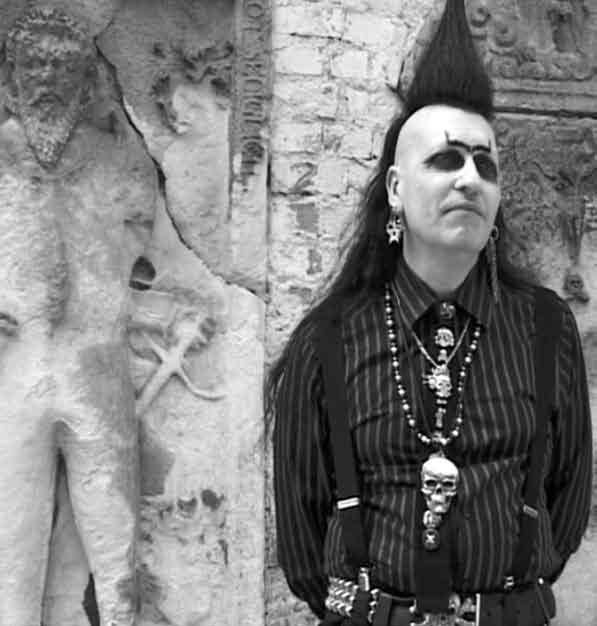
GIoVAnnA TInunIn
“…questo trovo grandioso dei primi giorni della techno, che tutti avessero un sacco di illusioni…” tripler, We Call it Techno!
nel 1977, a Berlino, David Bowie registra Low. Disco della svolta, in cui gli umori glam dei primi anni ‘70 vengono abbandonati per diventare qualcos’altro. troppo raffinato per il punk, Bowie incontra Brian eno, il non musicista che ha fatto irrompere satie e Duchamp nel pop con i Roxy music, e porta con sé anche il re dei junkie, il depravato di Detroit, il Re iguana, iggy Pop. Cosa fanno a Berlino il Duca Bianco, il Re iguana e Brian Peter George st. John le Baptiste de la salle eno, figlio di un postino del suffolk con un nome da principe delle fiabe? Riportano il rock dove il rock apparentemente non è mai stato, nel centro dell’europa. nel punto in cui il cuore del vecchio mondo si spacca in due, nella città del muro, quello per antonomasia, dove il suono è ancora possibile. tre anni prima, nel 1974, Ralf e Florian, allievi di di stockhausen e leader di un gruppo di uomini-robot chiamato Kraftwerk, avevano pubblicato un disco la cui facciata a durava 22 minuti e 42 secondi. È Autobahn, la sinfonia definitiva della modernità tedesca, la musica folkloristica bavarese nell’era delle macchine. Richard Wagner che scende dal venusberg e corre nel verde dei boschi, in auto, lungo l’autostrada. il fatto è che in quegli anni, mentre gli stati Uniti e l’inghilterra si consumano in quella che sembra essere l’estrema parabola del rock, al centro dell’europa succede qualcosa di strano. Personaggi inquietanti salgono sul palco mettendo in scena rituali elettrici con l’aiuto di due flipper e di cut-up rumoristici. musicisti d’avanguardia reclutano un improbabile cantante giapponese e creano inclassificabili sinfonie di rock atonale o di jazz allucinato. Due musicisti schizzati inventano il suono motorik: catene di montaggio e pulsazioni regolari, la ripetizione come via per il superamento dello schema rock. in Germania il punk viene previsto e sgretolato attraverso metodi di decostruzione avanguardistica: Faust, Can, neu! sono solo alcuni dei protagonisti di questo attraversamento di territori musicali a cavallo fra rock, elettronica e sperimentazione. il
“…that is what i think is great about the early techno days – people had quite a lot of illusions…” tripler, We Call It Techno!
David Bowie recorded Low in Berlin in 1977. this album marked a turning point for him, in which the glam tones of the early seventies were dropped and replaced by something entirely different. too cultivated for punk, Bowie joined Brian eno, the non-musician whose Roxy music injected satie and Duchamp into pop music and who joined forces with the king of the junkies, the pervert of Detroit, the iguana King, iggy Pop. What were the White Duke, the iguana King and Brian Peter George st. John le Baptiste de la salle eno, the son of a suffolk postman and boasting a fairytale prince’s name, doing in Berlin? they were taking rock back to where it had apparently never been, the centre of europe. to the very spot where the heart of the Old World is cleaved in two, to the city of the Wall, par excellence, where sound is still alive. three years earlier, in 1974, Ralf and Florian, pupils of stockhausen and leaders of a group of robot-men called Kraftwerk, had released a record whose a side lasted 22 minutes and 42 seconds. this was Autobahn, the defining symphony of modern Germany, Bavarian folk music in the machine age. Richard Wagner come down from the venusberg and driving along the autobahn through the green woods. the fact is that in those years, while the United states and england were engulfed in what seemed to be the last breath of rock, in the centre of europe something strange was beginning to happen. Disturbing figures appeared on the stage to perform electric rituals with the aid of two pinball machines and noisy cut-ups. avant-garde musicians recruited an improbable Japanese singer and created unclassifiable atonal rock symphonies or offbeat jazz. two crazy musicians invented the motorik sound: assembly lines and regular beats, repetitiveness as a means of overcoming the rock format. in Germany, punk was pre-empted and dismantled through avantgarde systems of deconstruction: Faust, Can, neu! are just
centro dell’europa è, negli anni ‘70, un nucleo di irradiamento di possibilità ancora inesplorate. venticinque anni dopo Autobahn, ventidue dopo Low, Berlino diventa il centro di una possibilità ancora più incredibile: il muro crolla e un istante prima che i suoi frammenti vadano a finire sulle bancarelle mostrando subito che con il capitalismo non si scherza e che il mercato fa quello che ha sempre fatto - cioè vendere - per un attimo tutto sembra possibile. Qualcuno ha parlato di fine della storia, e dovranno passare ancora 12 anni perché nella capitale della musica moderna, nella new York di Broadway, dei Ramones, della no Wave e dello studio 54 due aerei ci ricordino che la storia è sempre in marcia.
Cos’è accaduto nel momento in cui il muro è crollato riportando l’europa centrale e orientale all’interno di un orizzonte, quello musicale, da cui era stata esclusa per tanto tempo? Questa rassegna vuole provare a raccontare frammenti di questo orizzonte decentrato, ma in cui le possibilità non hanno mai smesso di essere tali: gli adolescenti della DDR che scoprono la breakdance (Here We Come) attraverso un brutto film americano che ha creato la leggenda di un ballo robotico. La musica gotica e dark (ritenuta oggi talmente pericolosa che la Duma russa ha proposto di metterla fuori legge), con il suo corredo di eleganza marziale, incubi sadomaso e radici folk che porta alle estreme conseguenze una delle tendenze già presenti, in modo meno scoperto, nei Kraftwerk: le divise sono sexy, le macchine parlano il linguaggio delle folle, la società industriale, declinando, incontra le sue radici (Castle Party 2006). il sogno della riconciliazione est-ovest passa – correndo lungo l’asse Berlino-Colonia-Francoforte – attraverso la summer of love tedesca, che tra le sonorità sintetiche della techno e dell’elettronica, le sfilate carnevalesche della Love Parade e l’emergere della DJ culture, propone un modello di autoproduzione sottratto ai circuiti del mercato musicale (We Call It Techno!). anche se poi arriverà, inevitabile, il riflusso. Perché la musica è anche – soprattutto? – mercato. Cosa ne è stato del sogno di ribellione cantato negli anni ’50 dall’innocuo Bill Haley, già vecchio prima ancora di diventare, con Il seme
a few of the protagonists in this gallop through the musical landscape straddling rock, electronic and experimental music. in the seventies, the centre of europe was a central nucleus from which as yet unexplored possibilities radiated outwards. twenty-five years after Autobahn, twenty-two after Low, Berlin found itself at the heart of an even more incredible possibility: the Wall came crashing down and for a moment everything seemed possible – before the pieces were snapped up and put on stalls as souvenirs, proving once and for all that you don’t monkey around with capitalism; the market does what it has always done – it sells. the notion of this marking the end of History gains popularity but just twelve years later two planes in new York, the capital of modern music, Broadway, the Ramones, the no Wave and studio 54, brought everyone back down to earth and reminded us that history is always on the march.
What happened the instant the Wall collapsed, drawing central and eastern europe within the musical orbit of a world from which it had been cut off for so long? this retrospective will attempt to pinpoint fragments of this centreless world, where possibilities have nonetheless never ceased to surface: teenagers in the DDR who discovered breakdancing (Here We Come) thanks to a second-rate american film which launched a legendary robotic dance. Gothic and dark music (regarded today as so dangerous that the Russian Duma proposed outlawing it), with its accompanying military paraphernalia, sadomasochistic fantasies and folk roots, carrying to extremes one of the trends already present, though less explicitly, in Kraftwerk. the uniforms were sexy, the cars played to the gallery, and industrial society, in decline, was reconnected to its roots (Castle Party 2006). the dream of reconciliation between east and West was rerouted through the German summer of love, and the synthetic sounds of techno and electronic music, the carnival atmosphere of the Love Parade and the emergence of DJ culture proposed a model of self-production lifted from music market circles (We Call It Techno!). although this brought
della violenza e la sua Rock Around the Clock, un simbolo della musica adolescenziale per eccellenza? Forse il sogno si ritrova nell’heavy metal, musica brutta sporca e cattiva, fuori dal giro buono (anche se negli ultimi tempi per un ironico contrappasso il metal d’avanguardia sconfina nella musica colta), impossibile da redimere con la patina culturale a causa della sua retorica reazionaria e della sua spinta sessista. eppure, nel cuore della Germania il metal diventa motore economico del territorio e lo fa con una casa discografica come la nuclear Blast: la cattiveria crea lavoro, il rumore e la velocità parossistica si sposano con la tranquillità agreste del paesaggio, dischi di gruppi come meshuggah, Dimmu Borgir e Hypocrisy creano ricchezza. ma è tutta un’illusione, gli unici sacrifici umani avvengono sull’altare del mercato e le magliette con immagini blasfeme vengono impacchettate dalle madri di famiglia (Heavy Metal auf dem Lande). La musica come mezzo di produzione e riproduzione, mostri e vampiri che vanno a braccetto con gli spettri del feticismo del Capitale. Ci parlano di questa difficoltà di conciliare DiY e mercato un gruppo di punk polacchi, che per vivere, fabbricano anfibi, colti nella loro quotidianità dall’obbiettivo di Lech Kowalski, il cantore delle vite ai margini e dei perdenti (The Boot Factory). C’è poi chi, su questi cortocircuiti tra Capitale e spinta rivoluzionaria, ha costruito un “discorso” politico e musicale provocatorio e geniale. i Laibach, da Lubiana alla conquista del mondo, nascono nell’alveo della nsK (neue slowenische Kunst) e inscenano provocatorie operazioni di guerriglia semiologica: la contestazione al comunismo balcanico avviene per esasperazione. attraverso la creazione di piccoli rituali di nazionalismo iperbolico e l’assunzione di un’iconografia totalitaria, usano l’elettronica per dipingere quadri di orwelliano controllo delle menti. e ci ricordano la natura ferocemente marziale del rock: i quattro quarti come musica dell’inquadramento, i raduni di folle circondati da torce a norimberga, i canti gloriosi delle falangi spagnole, i teschi e le invocazioni alla morte di tutti i fascismi, ma anche la fratellanza gloriosa dell’Uomo nuovo, il sol dell’avvenir, i musical che piacevano tanto a stalin. il rock è fascinazione della folla, ipnosi
the inevitable backlash in its wake. Because music is also – chiefly? – marketing. Whatever happened to the yearning for rebellion of the fifties, expressed by the harmless Bill Haley, who was already old before becoming the supreme symbol of teenage music with Rock Around the Clock, the theme music of Blackboard Jungle? Perhaps the dream resurfaced in heavy metal, harsh, coarse and mean music, historicaly at the margins, even though in past years trend-setting heavy metal music has overlapped with serious music, but still impossible to redeem on a cultural level on account of its reactionary rhetoric and sexist impulses. and yet, in the heart of Germany heavy metal turned into the area’s economic powerhouse and did it with a recording company like nuclear Blast. meanness brings work. noise and paroxystic speed combined with peaceful rural landscapes, and albums by groups like meshuggah, Dimmu Borgir and in Flames brought wealth. But this is all an illusion; the only human sacrifices occurred on the altar of the marketplace and t-shirts with blasphemous pictures are packed by housewives (Heavy Metal auf dem Lande). music as a method of production and reproduction, monsters and vampires going hand-in-hand with the ghosts of Capital’s fetishism. We can find the perennial difficulty of reconciling DiY and market in the daily life of a group of Polish punks who earn a living by making boots, dissected by the camera of Lech Kowalski, the songster whose subjects are the losers living on the margins of society (The Boot Factory). then there are those who have built a challenging and briliant political and musical “agenda” around these blindspots lurking between capital and revolutionary impulses. the Laibach, ready to conquer the world out of Ljubljana, are the brainchildren of nsK (neue slowenische Kunst) and perform subversive semiological guerrilla operations: Balkan communism is pilloried through exasperation. Creating tiny rituals of hyperbolic nationalism and adopting a totalitarian iconography, they use electronics to paint scenes of Orwellian mind control. and they remind us of the fiercely martial nature of rock: four-to-the-floor beats as music to form up to, the huge,
di massa, gioco di prestigio estetico e politico. La pulsazione elementare dell’elettronica diventa simbolo di un mondo che non può che continuare a erigere nuovi muri: quindi anche la musica non può che mettere in scena all’infinito i riti di dominio per esorcizzarli. a darsi appuntamento lungo le rotte del tour americano dei Laibach, nel clima teso e greve seguito all’elezione di Bush nel 2004, accorrono orde di freak e di seguaci del cuoio, delle modificazioni corporee, delle prelibatezze postmoderne e delle uniformi con la testa di morto (Divided States of America - Laibach 2004 Tour). Dall’america all’europa e ritorno, il cerchio si chiude: i fantasmi tribali che l’occidente proietta sui Balcani ritornano a infestare l’america, che diventa così un’immensa periferia urbana popolata da tribù post-umane. Dalla decadenza rinascono nuovi spazi di creatività. Come in un film di tarkovskij, le fabbriche abbandonate vengono invase da acque, piante, rifiuti. Gli stalker ci accompagnano all’interno di Zone musicali temporaneamente autonome (le t.a .Z., Temporary Autonomous Zones di Hakim Bey) che sembrano attraversare il tempo e lo spazio, come nella Jugoslavia degli anni ‘70, capitale della geografia alternativa del punk europeo con i grandiosi Pankrti (Glasba je časovna umetnost, LP Film Pankrti-Dolgcajt). Un sorriso ci salverà? Forse sì, perché le origini e le discendenze sono un effetto di prospettiva e persino l’hip hop, ultima vera musica folk americana, potrebbe essere nato in Ungheria (Lopott Ritmus - Hipi hopi). soundystem sulle rive del Balaton, gli occhialoni di afrika Bambaataa e le note di Rapper’s delight teletrasportati dalle strade di new York alle distese immense della Puszta. Perché il suono è anche la scoperta di mondi possibili, esplorazione di piccole storie personali. Come quelle degli abitanti di Wacken, in Germania, che per alcuni giorni all’anno diventa capitale del microcosmo metallico, tra mucche che vanno alla carica sull’onda delle deflagrazioni elettriche, gatti ghiotti di latte e coppie di anziani innamorati, raccontati in Full Metal Village, storia di una pacifica invasione e di una convivenza improbabile, ma reale. i mondi possibili sono anche quelli che ricominciano a funzionare sulle macerie, in quegli spazi privati dove si riannodano
torch-lit crowds gathering in nuremburg, the proud chants of the spanish Falangists, the skulls and glorification of death in every hue of Fascism, but at the same time the enveloping brotherhood of the new man, the bright new dawn, the musicals that charmed stalin. Rock is the crowd’s trance, mass hypnosis, an aesthetic and political conjuring trick. since the elemental throbbing of electronic music comes to symbolize a world that can only continue to erect new walls, also music can only continue to perform the rituals of domination over and over again in order to exorcize them. Hordes of weirdos and leather lovers, body-trasformation fans and devotees of postmodern fads and uniforms sporting skulls (Divided States of America) rush to Laibach’s post-11 september american gigs in the tense, doom-laden atmosphere following Bush’s re-election in 2004. From america to europe and back again, in full circle: the spectres of tribalism which the West conjures up in the Balkans return to haunt america, which thus becomes a huge suburbia inhabited by post-human tribes.
new creative energies are released by this fresh decadence. as in a tarkovsky film, derelict factories are engulfed by water, vegetation and refuse. stalkers guide us through Hakim Bey’s Temporary Autonomous Zones (t.a .Z.), which seem to straddle time and space, like the Yugoslavia of the seventies, transmuted into the capital of the alternative geography of european punk by the sensational Pankrti (Glasba je časovna umetnost, LP Film Pankrti-Dolgcajt).
Will a smile save us? Perhaps it will, because origins and ancestry are a question of perspective and even Hip Hop, the latest true american folk music, might have been born in Hungary (Lopott Ritmus - Hipi hopi). soundsystems on the banks of Lake Balaton, afrika Bambaataa’s big glasses and the notes of Rapper’s Delight beamed up from the streets of new York to the endless expanse of the Puszta. Because sound is also the discovery of possible worlds, the exploration of little personal stories. Like those of the inhabitants of Wacken, in Germany, which for a certain number of days in the year
i fili spezzati dalla guerra, per esempio finendo di registrare un album iniziato prima dell’assedio di sarajevo (Ulica grafita-Graffiti Street).
e poi, infine, l’incontro fra politico e privato, a dimostrazione che la musica, anche nell’era di mtv, può ancora essere il sogno di una parola finalmente liberata, laddove la dittatura non è una condizione mentale ma un dato di fatto della vita di tutti i giorni, come nella Bielorussia di Lukašenko, dove per manifestare – seppur cantando – contro un regime si corre il serio rischio di essere arrestati (Music Partisans). Dove una canzoncina punk può diventare, ancora una volta, un inno liberatorio.
becomes the capital of the world of heavy metal, surrounded by cows driven into stampedes by the pounding rhythms, milkloving cats and elderly couples in love. all described in Full Metal Village, the story of a peaceful invasion and an unlikely but nonetheless real coexistence. Possible worlds are also those which begin to function once again out of the rubble, in those private spaces where the threads snapped by the war are tied back together again, for example by completing an album begun before the siege of sarajevo (Ulica grafita-Graffiti Street). then, finally, politics encounters private life, proving that music, even in the age of mtv, can still be the dream of a word set free at last in those places where dictatorship is not a mental condition but taken for granted as the backdrop to daily life, as in Lukashenko’s Bielorussia, where demonstrating against the regime – even just with a song – means running the grave risk of being arresting (Music Partisans). Where a punk ditty can become, once again, a hymn to freedom.
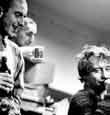
La FaBBRiCa Di anFiBi
LECh KoWALSKI
Francia - Usa / France - Usa 2000, DigiBeta, b-n / b-w & col., 92’ v.o. polacco / Polish o.v.
Cracovia, una comune di punk fabbrica stivali per vivere. il film ci trasporta senza commenti esterni in questo piccolo microcosmo in bianco e nero autoregolato, interno a un sistema che rifiuta. Kowalski osserva da vicino la quotidianità di questa piccola impresa artigiana, scandita dal ritmo dei martelli e da canzoni anarchiche che vengono ascoltate e cantate insieme. Dagli aghi per cucire il cuoio a quelli delle siringhe il passo è breve. Gli affari migliorano, l’esistenza si organizza e il film torna a colori, in una seconda parte in cui si assiste a vari cambiamenti. La mdp si aggira discreta fra questa umanità, sempre però completamente immersa nel flusso degli eventi. attraverso primi piani portati all’estremo, mostra senza esitazione la rudezza del cuoio e le cicatrici sulla pelle.
Fotografia / Photography: Lech Kowalski, Mark Siska. montaggio / editing: Lech Kowalski. musica / music: Charge 69, Siekiera. suono / sound: Paul Rimple.
Produzione / Produced by: KW Filmworks, Injam Production. in collaborazione con / in association with: ARTE France.
Distribuzione internazionale / World sales: Extinkt Films.
Kracow, a small group of punks make leather boots in order to survive. the film plunges us in black and white into this little microcosm that makes its own rules while still remaining part of the system it rejects without any commentary. Lech Kowalski follows the little artisan company in its daily routine, given rhythm by the blows of hammers and the singing of anarchistic songs. Connections are spun, between sewing needles and syringes. Little by little, manufacture improves, lives become organized, and the film recovers color in a second part where various changes makes themselves felt. the camera moves around discreet but always totally immersed in the events. it moves into extreme close-up, without hesitating to show the roughness of the leather and the scars in the skins.

sceneggiatura, fotografia, montaggio / screenplay, Photography, editing: Arthur Schmidt. suono / sound: Arthur Schmidt, Stefan Jeziorowski. Produzione / Produced by: Marian Schmidt.
ARThuR SChMIdT
Polonia / Poland
2006, Betacam sP, col., 41’ v.o. polacca - inglese - tedesca / Polish - english - German o.v.
Castle Party è un festival di musica gothic dell’europa centrale. si tiene una volta all’anno fra le rovine di un castello diroccato, nella piccola cittadina di Bolków, in Polonia, ed è uno dei tanti “figli” del famosissimo Wave Gothic treffen di Lipsia che sono nati dopo il crollo dell’ex Unione sovietica. Gli spettatori vi giungono da tutta europa, soprattutto per l’atmosfera che lo caratterizza, a metà strada fra il ballo in maschera e un carnevale in cui tutti possono vestirsi nel modo che vogliono e interpretare qualunque ruolo preferiscano. non ci sono limiti, né idee preconcette e tutti coloro che si sentono estranei alla società possono trovare lì un proprio posto…
Castle Party is a central european festival of Gothic music. it is held once a year among the ruins of a tumbledown castle in the small town of Bolków (Poland). it is one of the many “offspring” of the illustrious Gothic treffen in Leipzig born after the fall of the soviet Union. People come from all over europe to experience the special atmosphere which pervades the event, half way between a masked ball and a carnival, in which everyone can dress up as he likes and play any role he fancies. there are no restraints or preconceptions and all those who feel alienated from society can find a place for themselves there…
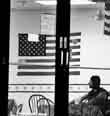
SAŠo PodGoRŠEK
slovenia
2005, Betacam sP, col., 70’ v.o. inglese / english o.v.
i Laibach sbarcarono la prima volta in nord america nel 1989, due anni prima del disintegrarsi della loro madrepatria jugoslava. il tour si chiamava “sympathy for the Devil tour”, cui sarebbero seguiti quello del 1992 e del 1997. Ci furono poi l’attacco suicida alle torri gemelle, le guerre “vendicatrici” contro afghanistan e iraq, la lotta internazionale al terrorismo, tutti eventi che hanno segnato profondamente il nuovo millennio, rendendo allo stesso tempo più complicato per molti stranieri l’accesso negli stati Uniti. nonostante questo, nel 2004, anno di elezioni presidenziali durante il quale il paese era sprofondato in un’atmosfera di profonda divisione fra chi sosteneva la rielezione di Bush e chi, invece, il candidato democratico Kerry, i Laibach riuscirono ad attraversare il paese con il loro tour di 15 date. Prima tappa, Washington D.C., a un tiro di schioppo dalla Casa Bianca e proprio un giorno dopo l’annuncio dei risultati elettorali. Le riprese del tour, che si è svolto in questa traumatica atmosfera post-elezioni, non è quindi solo un documento unico dei live dei Laibach, ma anche un ritratto di un paese profondamente diviso in due fazioni politiche e culturali molto diverse. Per questo motivo il tour è diventato “the Divided states of america tour”.
sceneggiatura, fotografia, montaggio, suono / screenplay, Photography, editing, sound: Sašo Podgoršek. musica / music: Laibach.
Produzione / Produced by: divided Artists.
Coproduzione / Co-produced by: Artrebel9, Studio 100.
Distribuzione internazionale / World sales: Artrebel9.
Laibach conducted its first tour of north america in 1989, two years before the disintegration of its mother country, Yugoslavia. it was called “sympathy for the Devil tour”. the following two extensive tours happened in 1992 and in 1997. then came the attack on WtC, the avenging wars on afghanistan and iraq, and the universal offensive against terrorism, events which radically marked the new millennium – but also tightened the doors to the Usa for many foreigners. Despite that, in election year 2004, in a tensely divided atmosphere between President Bush and Democratic candidate Kerry, Laibach successfully slipped again into the country to carry out their latest 15concert north american tour. the first stop was in Washington, D.C., only a gunshot from the White House and only one day after the election results had been announced. this film is a unique document of the Laibach tour, set during the traumatic post-election atmosphere in the Usa , a country deeply divided by two opposite political and cultural poles. the tour has been therefore named “the Divided states of america tour”.

SunG-hyunG Cho
Germania / Germany 2006, 35mm, col., 92’ v.o. tedesca / German o.v.
mucche al pascolo, torte fatte in casa, due chiacchiere davanti a una tazza di caffè. a prima vista, Wacken è un paesino del tutto normale, come ce ne sono tanti in Germania, tranquillo e idilliaco. Una volta all’anno, però, quando si tiene la 3 giorni del Wacken Open air l’urlo “viva Wacken!” risuona come un grido di battaglia. 40.000 metallari con i capelli lunghi, gli abiti in pelle e i collari borchiati confluiscono a Wacken da ogni parte del mondo. Lunghe code scure si formano davanti al piccolo supermercato del paese, sui prati si vede una distesa di tende che non finisce più e sotto l’enorme palco del black metal migliaia di braccia e di teste ondeggiano ritmicamente al suono della musica metal. La regista sung-Hyung Cho, di origini coreane, entra in questo microcosmo per esplorare lo scontro, curioso e simpatico, fra due culture e offre, tramite il racconto di questo evento musicale estemporaneo, una rappresentazione di una comunità agricola la cui identità e coesione non sarebbero più immaginabili senza il festival.
“Tutto quello che sentivo e leggevo su Wacken sembrava contraddire l’immagine che mi ero costruita dei tedeschi durante la mia lunga permanenza in questo paese. All’inizio, non riuscivo a crederci: orde selvagge che invadono un paesino tranquillo e tutto è come te lo aspetteresti. Allora ti sembra che qualcos’altro sia possibile e ti viene voglia di capire il perché”. (Sung-Hyung Cho)
sceneggiatura, montaggio / screenplay, editing: Sung-hyung Cho. Fotografia / Photography: Marcus Winterbauer. musica / music: Peyman yazdanian. suono / sound: Bernd von Bassewitz, Raimund von Scheibner. interpreti / Cast: uwe Trede, Lore Trede, Klaus h. Plähn, Irma Schaack, Eva Waldow, Ann-Kathrin Schaack, Malena Schaack, norbert Venohr, Birte Venohr, henning halver e, inoltre,
la Corale e i volontari dei vigili del fuoco di Wacken, metallari da ogni parte del mondo / mixed Choir Wacken, volunteer Fire Brigade Wacken, metalheads from all over the world. Produzione, distribuzione internazionale / Produced by, World sales: Flying Moon Filmproduktion. Con il sostegno di / supported by: Gesellschaft for Audiovisuelle Werke Schleswig-holstein (MSh), Stiftung Kuratorium Junger deutscher Film, hessische Filmförderung, kulturelle Filmförderung Schleswig-holstein.
Dairy cows graze; indoors, there’s homemade cake, as well as coffee and a chance to gossip. at first glance, a very normal village, one of many of its kind in Germany, introspective and idyllic: Wacken. at least once a year, though, when the Wacken Open air takes place over three days “Wacken Rules!” goes up as a battle cry and 40,000 heavy metal fans with long hair, black leather jackets and studded collars stream into the village from all over the world. Black queues form in front of the small local supermarket. in the meadow there’s a long line of one tent after the other and in front of the huge Black metal stage thousands of arms and heads surge to the hard beat of metal music. sung-Hyung Cho, Korean by birth, looks at the curious and likeable clash of two cultures and documents, via the temporary music event, the picture of a countryside community whose sense of identity and cohesion would now be unimaginable without the heavy metal festival.
“Everything I had heard and read about Wacken appeared to contradict the image I had carefully built up of the Germans during my long stay in this country. I could not believe it at first. Wild hordes descend upon a small sleepy village and everything is as you would least expect it. So it seems that something else is possible. But why?” (Sung-Hyung Cho)

gLaSBa je čaSoVNa UMeTNoST, LP FILM PAnKRTI-doLGCAJT
La mUsiCa COme aRte DeL temPO, LP FiLm PanKRti - DOLGCaJt / mUsiC is tHe aRt OF time, LP FiLm PanKRti - nO FUn
IGoR zuPE slovenia
2006, Betacam sP, col., 47’ v.o. slovena - croata - serba / slovenian - Croatian - serbian o.v.
Usando una mole imponente di materiali d’archivio, il film copre un arco di tempo della storia jugoslava, quello che va dal 1977, anno del primo concerto della band Pankrti (i “bastardi”, da molti considerato il primo show veramente punk che si sia tenuto dietro la Cortina di ferro) al 1980, quando la band ha pubblicato il suo primo LP, Dolgcajt (in inglese No Fun). i Pankrti sono stati seminali e hanno aperto la strada a molti eventi che hanno caratterizzato la scena musicale locale, con la loro capacità di unire la cultura pop dello stato socialista in cui vivevano con i movimenti in atto a Occidente, rompendo i confini di una società essenzialmente chiusa e finendo col cambiare la storia. “senza il punk e senza quell’album il muro di Berlino sarebbe caduto dopo!” sostiene in modo provocatorio Marin Rosić, grande fan del disco e della band e figura centrale del film, in cui compaiono anche musicisti, critici musicali e altri protagonisti della scena di quel periodo. dolgcajt è il primo di una serie di documentari dedicata ai dischi che hanno fatto la storia della musica pop slovena, intitolata “La musica come arte del tempo”. il sottitolo “LP film” sta a indicare chiaramente che l’argomento centrale di ogni documentario è un particolare vinile.
sceneggiatura / screenplay: Igor Bašin, Barbara Kelbl, Igor zupe.
Fotografia / Photography: Bojan Jantol, Igor zupe, Viki Bertoncelj. montaggio / editing: Igor zupe. musica / music: Pankrti.
Produzione, distribuzione internazionale / Produced by, World sales: nord Cross Production.
Coproduzione / Co-produced by: VPK.
Featuring lots of archive material, the movie concentrates on happenings in Yugoslavia between 1977 and 1980, a period stretching from the debut concert by the band Pankrti (the “bastards”) – the very first punk show behind the iron curtain – to the release of their first record, called Dolgcajt or No Fun. Pankrti acted as a detonator for many events on the local music scene, synchronizing pop culture in the socialist state with movements in the West, breaking out of a closed society, and eventually changing history. “Without punk and no Fun the Berlin Wall would have fallen later!” claims Marin Rosić, a true fan of the record and the band and the central figure in the movie, which also features numerous musicians, journalists, music critics and other people from the scene at that time. no Fun is the first in a series of feature-length documentary films about the most important slovenian pop music records entitled “music is the art of time”. the subtitle “LP film” (which stands for “long-playing film”) clearly indicates that the central topic of each documentary is a vinyl record.

L’HeavY metaL in CamPaGna / HeavY metaL in tHe COUntRY
AndREAS GEIGER
Germania / Germany 2006, DigiBeta, col., 60’ v.o. tedesca / German o.v.
Donzdorf è un paesino situato sulle pendici dei monti della svevia. Uguale a tanti altri luoghi della Germania, è anche la sede dei quartieri generali della “nuclear Blast Records”, una delle etichette discografiche indipendenti di heavy metal più rispettate e di maggior successo al mondo. nel reparto spedizioni lavorano tranquille madri di famiglia e per le loro mani passano i dischi e i teschi sanguinanti che vengono spediti in ogni angolo del pianeta. Le sessioni d’ascolto della stampa specializzata si tengono nella trattoria della piazza, dove le proposte vengono sottoposte al giudizio dei frequentatori abituali che li giudicano con la stessa serietà dei giornalisti. il film mette a confronto proprio il rapporto, spesso comico, che si viene a creare fra i tranquilli abitanti del villaggio e il mondo dell’hard rock, per scoprire che spesso le posizioni tradizionali sono invertite: l’heavy metal – comunemente considerato musica di rottura tesa al rifiuto delle convenzioni sociali e quindi apparentemente molto lontana dallo stile di vita che caratterizza gran parte della campagna tedesca e dalle sue tradizioni – è diventato un’industria, parte integrante della vita economica e sociale del paese di Donzdorf.
soggetto / script: Andreas Geiger. Fotografia / Photography: Marc Rogoll. montaggio / editing: Jürgen Winkelblech. musica / music: dimmu Borgir, nightwish, Kataklysm, Meshuggah, Sonata Arctica, Primal Fear, hypocrisy, Amon Amarth, Sacred Steel, Brainstorm, Cluster Bomb unit. suono / sound: Patrick Veigel.
interpreti / Cast: Markus Staiger, oli Barth, Michael Siegl, le dipendenti del reparto spedizioni della nuclear Blast, il prete cattolico di Donzdorf e i suoi abitanti / employees from the shipping department, Donzdorf’s Catholic Priest and inhabitants. Produzione / Produced by: Filmtank hamburg. Coproduzione / Co-produced by: SWR. in collaborazione con / in collaboration with: ARTE.
Donzdorf on the edge of the swabian mountains in southern Germany. a village just like any other, with a pointed church spire, a supermarket and a new housing estate. But Donzdorf is the seat of “nuclear Blast Records”, one of the world’s most successful independent heavy-metal record companies. Housewives from the village work for the mail order department, sending out CDs and bloody skulls to every conceivable place in the world. Listening sessions are held in the village pub, where the offerings are commented on by the regulars as critically as by international journalists. the film takes a look at the occasionally comical interaction of the tranquil village inhabitants with the rather crude hard rock scene. But traditional positions have shifted: whereas heavy metal once stood for rebellion against provincial traditions and conventions, it has today long become a business and established part of life in the village.
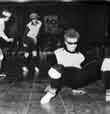
nICo RASChICK
Germania / Germany 2006, DigiBeta, col., 88’ v.o. tedesca / German o.v.
all’inizio degli anni ’80, nemmeno il muro di Berlino poteva evitare che il movimento Hip Hop venisse scoperto dalla gioventù della DDR. ispirati da film americani come Beat Street, i teenager di Dessau, Lipsia, Dresda e Berlino cominciarono a praticare stili del tutto nuovi, a incontrarsi per le strade, a imitare le mosse che vedevano nei film, a personalizzare le tute da ginnastica e a decorare con lo spray le magliette. inizialmente isolata e osteggiata dalla società, la breakdance divenne così col tempo un’importante cultura giovanile in tutto il paese. attraverso filmati incredibili, sequenze animate e interviste ai protagonisti, il film mostra un fenomeno spesso dimenticato, lontano dai clichè su come si viveva dietro la cortina di ferro, ma anche l’evoluzione che il movimento ha vissuto dopo la caduta del muro…
“Credo che l’ondata di nostalgia per l’Est (l’ostalgie) che ha invaso cinema e televisione abbia in realtà nascosto quelle che erano le vere spinte della gioventù dei primi anni ’80. In tanti mi hanno detto: ‘Breakdance nella DDR? Ma esisteva davvero?’ Eccome. Durante le ricerche per il film ho scoperto cose incredibili, per esempio il fatto che quei ragazzi siano riusciti a creare da soli la loro scena, nonostante la resistenza del governo, e a portarla dalle strade al successo. I B-Boys erano giovani, in cerca di una direzione e di un’appartenenza che fosse completamente staccata dalle strutture governative. L’unica cosa che volevano, era ballare!” (N. Raschick)
sceneggiatura / screenplay: nico Raschick.
Fotografia / Photography: Björn Knechtel.
montaggio / editing: Sven Kulik. musica / music: ElectricB, Electric Beat Crew, dJ Gambler, Beatclub 99, PdM, downtown Lyrics, S.B.-Jay, 3-M-Men, Pop Projekt, Rockhaus, opossum & B-Side the norm, Barry Künzel, FMK.
suono / sound: Pi.
effetti speciali / special effects: Manuel dollt.
Produzione / Produced by: Filmakademie Baden-Würrtemberg. Coproduzione / Co-produced by: nico Raschick.
Distribuzione internazionale / World sales: Miromar.
in the early 1980s, not even the Berlin Wall could stop the western Hip Hop movement being discovered by the youth of the communistic state. inspired by the U.s. film Beat Street, teenagers in Dessau, Leipzig, Dresden and Berlin started practicing brand new styles. they met on the streets, imitated the moves from movies, tailored their own jogging suits and painted their shirts with Graffiti. First isolated and prejudiced by the society break dance evolved to an important youth culture in the former GDR. With amazing footage, animation sequences and interviews from the protagonists, the film reveals an almost forgotten phenomenon far away from GDR cliches and portrays the changes the movement underwent after the wall came down..
“The wave of misleading (n)ostalgia about the GDR in the movies and on tv, in my opinion, has hidden what really moved the youth in the 80s there. A lot of people asked me: ‘Breakdance in the GDR – did that really exist?’ A lot more than that. I found out amazing things during my research. The boys created their own scene and they made it through all the governmental resistance from the street to the biggest stages of the GDR. The B-Boys were young, they were looking for orientation and belonging, far away from the governmental structures. The only thing they wanted, was dancing!” (N. Raschick)
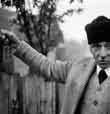
HiPi-HOPi: iL RitmO RUBatO / stOLen RHYtHm: HiPi-HOPi
MARTIn SzECSAnoV
Ungheria / Hungary
2007, Betacam sP, col., 13’ v.o. ungherese / Hungarian o.v.
e se l’hip hop fosse nato… in Ungheria?
Ricostruzione della nascita del cortometraggio girato nel 1974 da József takács sull’Hipi-hopi, antica danza contadina eseguita durante le feste per il raccolto.

PaRtiGiani in mUsiCa / mUsiC PaRtisans
MiRoSŁaW DeMBińSKI
Polonia / Poland
2007, Betacam sP, col., 53’ v.o. bielorussa - polacca / Belorusian - Polish o.v.
La Bielorussia è nota per essere l’“ultimo regime comunista d’europa”. il governo di Lukašenko mantiene il paese al di fuori della comunità democratica. La società civile ha una forte impronta conservatrice e vive nella paura di perdere il suo relativo “benessere”. in questo difficile clima economico, politico e sociale, sono i giovani la componente della società più sensibile ai cambiamenti. La cosa più importante per loro è la democrazia, un bene di prima necessità che però scarseggia in Bielorussia. altrettanto importanti sono la lingua e i simboli nazionali bielorussi, vietati da Lukašenko perché considerati segno distintivo di contadini e oppositori e divenuti per questo curiosamente di “moda” fra i giovani. il rock gioca un ruolo interessante in questo contesto, in quanto permette ai ragazzi di esprimere il loro desiderio di libertà non solo in un contesto sociale, come capita
sceneggiatura / screenplay: Piros zánkay. Fotografia / Photography: Martin Szecsanov. montaggio / editing: Csaba Somogyi. musica / music: Membran. suono / sound: Balász Pejkó. scenografia / art Director: Márton ágh. Costumi / Wardrobe: ildikó andó.
voce narrante / narrator: Károly ujj Mészáros.
interpreti / Cast: Pongrác Gonda, S. ábris Gosztola, yvette Bozsik, dr. Judit Kerekes, Amália Ferenc, judit Havas, Ágnes Simon, Károly Szabó. animazioni / animation: László csáki.
Produzione / Produced by: Laokoon Film.
Con il sostegno di / supported by: Magyar Mozgókép Közalapítvány, oktatási és Kulturális Minisztérium.
What if Hip Hop was born in Hungary? this short documentary is about the short film the director József takács shooted in 1974 about Hipi-hopi, an ancient rural dance that rooted in the harvest celebrations.
sceneggiatura, montaggio / screenplay, editing: Mirosław Dembiński. Fotografia / Photography: Maciej Szafnicki, Michał ślusarczyk, Remigiusz Przełożny, Dariusz Załuski. musica / music: Tarpacz, nRM. suono / sound: Filip Różański. interpreti / Cast: Svietlana Sugako, Pit Palau, Lavon Volski.
Produzione, distribuzione internazionale / Produced by, World sales: Film Studio “Everest”.
Belorus has been described as “the last communist regime in europe”. Lukashenko’s rule has isolated Belorus from the world of democracy. Belorus society is too conservative and fearful of losing its feeling of “relative well-being”. in the present economic, political and social climate in Belorus, young people are the section of society most susceptible to changes. they value freedom most, a commodity, which is most scarce in Belorus. For them the Belorusian language and national symbols, persecuted by Lukashenko, have become a perverse fashion. in the situation so far described, rock music plays an interesting role in Belorus. it expresses young people’s hopes for freedom not only in a social context, as is generally the case in other countries, but also in a political one. the lyrics of modern Belorusian songs, refer, on the one hand to
facilmente altrove, ma anche in quello politico. È chiaro quindi che i testi delle canzoni, rigorosamente in bielorusso e radicati nelle tradizione nazionale, vengono considerate dal governo una provocazione ed ecco perché nei concerti spesso si vede sventolare la bandiera bianca e rossa (ufficialmente proibita) e si sente ripetere con forza “Bielorussia vive!”.

La stRaDa Dei GRaFFiti GRaFFiti stReet
SERGEJ KRESo
Croazia - Bosnia erzegovina / Croatia - Bosnia & Herzegovina 2007, Betacam sP, b-n / b-w & col., 56’ v.o. bosniaca - croata - serba / Bosnian - Croatian - serbian o.v.
La Banda era uno dei gruppi più importanti della scena rock alternativa di sarajevo. alla fine degli anni ’80 stavano lavorando al loro primo album. erano già state incise 11 canzoni, ma poi scoppiò la guerra in Bosnia e le urgenze divennero altre. a 15 anni di distanza, i membri del gruppo, che attualmente vivono in 5 diversi paesi, si sono dati appuntamento a sarajevo, la città che sono stati costretti a lasciare tanto tempo fa, e hanno deciso di finire quel lavoro di registrazione iniziato anni prima, incidendo le ultime due canzoni mancanti del disco. Cos’è successo nel frattempo alla città e alla scena musicale di cui La Banda era il cuore pulsante? i membri del gruppo sapranno ritrovare l’intesa di un tempo?
native traditions, and are on the other a conscious provocation directed to the government, which promotes the theory that only peasants and the opposition speak Belorusian. the officially forbidden white-red-white flag and outburst of “Belorus is alive” can often be seen and heard at concerts.
sceneggiatura / screenplay: Sergej Kreso.
Fotografia / Photography: josip ivančić, Mladen Vekić, Matko Petrić.
montaggio / editing:
Srđan Fink, Veljko Segarić, Vlado
Gojun, Sergej Kreso. musica / music: La Banda. sound / suono: Mirsad Tukić.
interpreti / Cast: La Banda (Vlado Kajević, Miško Stanišić, Zvonimir Matić, Sergej Kreso).
Produzione, distribuzione internazionale / Produced by, World sales: Propeler Film.
Coproduzione / Co-produced by: Zijad Mehić, Miro Barnjak.
La Banda was one of the most important bands of a sarajevo alternative rock scene. in the late 80s La Banda was working on their first album. eleven songs were recorded. But the war spreads in Bosnia and album stays unfinished. 15 years later the members of La Banda track each other (they live in 5 different countries) and decide to finish the work they started long time ago - to record the last two songs of the album. they meet each other for the first time after 15 years in sarajevo, the place they were forced to leave many years ago. What happened with the city and the music scene La Banda use to be a part of? Do they understand each other as friends and musicians like before?
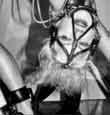
MAREn SExTRo, hoLGER WICK
Germania / Germany 2008, HD, b-n / b-w & col., 100’ v.o. tedesca / German o.v.
La techno tedesca comincia a emergere lentamente agli inizi degli anni ’90, stabilendo canoni che sono in gran parte ancora validi oggi. a quasi 20 anni di distanza, i protagonisti di quell’incredibile ondata di creatività – musicale, innanzitutto, ma anche produttiva – raccontano come è andata e cosa ne è stato dello spirito che animava la scena. Frutto di un enorme lavoro di ricostruzione condotto soprattutto su archivi privati (spesso delle semplici scatole da scarpe dimenticate in un armadio contenenti vHs o musicassette registrate, ma anche locandine e ritagli di giornale) e reso più difficile dal fatto che all’epoca erano pochi coloro che pensavano a riprendere quello che stava accadendo (anche perché la diffusione della tecnologia non era quella di oggi e pochi possedevano una videocamera), We call it Techno! racconta gli albori del movimento – la prima Love Parade, l’imporsi delle sonorità sintetiche della techno e dell’elettronica, il dialogo continuo fra linguaggi artistici diversi, la creatività, la voglia di provare a ritagliarsi uno spazio produttivo all’interno del mercato musicale tradizionale – e la sua evoluzione, giocata fra il disincanto e la delusione, la continuazione di un percorso o il suo abbandono definitivo.
sceneggiatura, interviste / screenplay, interviews: Maren Sextro. montaggio / editing: Stefan Marks. interviste con / interviews with: Alex Azary, Andreas Rossmann, Armin Johnert, Ata, Boris dlugosch, Claus Bachor, Cosmic Baby, dimitri hegemann, dr. Motte, Elsa for Toys, Frank Blümel, dj hell, Jürgen Laarmann, Mark Reeder, Mike Ink, Mijk Van dijk,
Ralf niemczyk, Sven Väth, Talla 2xLC, Tanith, Thomas Koch, Tobias Lampe, Triple R, upstart, Wolle xdP. voce narrante / narrator: Götz Bielefeld.
Produzione / Produced by: Sense Music & Media.
the techno scene slowly emerged into its own at the beginning of the 1990s. the first rules and definitions were established, many of which are still valid today. almost 20 years after these beginnings sextro and Wickgot in touch with some of the most important protagonists of the scene, characterized by an extraordinary musical and productive creativity. a mammoth job (50 hours of interview material was collected and edited) and a real challenge because the footage from the early years was very difficult to find (very few people thought about recording the events of the time and even owned a camera) the film shows material coming largely from private archives (from amateur camera operators and photographers, but also from shoe boxes full of unsorted material, vHs tapes and radio recordings, flyers and press-clipping). the documentary tells the dawn of the scene - the first Love Parade, the imposing of synthetic sounds of techno and electronics, the continued dialogue between different artistic languages, creativity, the desire to try to carve out a space within the productive traditional music market - and its evolution, played between the disenchantment and disappointment, the continuation of a journey or his abandonment.
BLuE JEAnS E GonnE CoRTE di Renzo Carbonera
ChI È CAPPuCCETTo RoSSo? di eva Ciuk
CAFFÈ TRIESTE di andrea magnani, Raffaele Rago
LA dEBoLE CoRREnTE di nicole Leghissa
IL GuARdIAno dELLA MEMoRIA di Fabiola Faidiga
IL PERdEnTE GEnTILuoMo:
VITA E ARTE dI AnTonIo CEnTA di Gloria De antoni, Oreste De Fornari
SToRIA dI un ConFInE E dI TAnTE IdEnTITà di Giampaolo Penco
IL TRAMonTo dI SPARTACo di ennio Guerrato
MEduSA. SToRIE dI uoMInI dAL Fondo di Fredo valla
VeTeR Se PoŽViŽga di Filip Robar Dorin
evento speciale / special event
SVETAT E GoLJAM I SPASEnIE dEBnE oTVSJAKAdE di stephan Komandarev
Destinata a informare sui vari aspetti del rapporto che lega il cinema al nostro territorio, la sezione quest’anno si presenta un po’ cambiata, forse meno varia, certamente più corposa e definita. si rafforza il filone delle testimonianze, a conferma del prezioso lavoro di ricerca in atto sulla storia complessa della nostra regione e sul recupero delle infinite piccole grandi storie personali e private che dal silenzio hanno contribuito a costruire e caratterizzare l’unicità della fisionomia socio-culturale del nostro territorio nel contesto storico del ‘900 non solo italiano. Oggi che questa regione si trova non più ai margini ma al centro del nuovo assetto europeo, sembra ancor più urgente per i nostri cineasti recuperare, raccogliere, salvare e rileggere ogni più piccola traccia che possa aiutare a capire e interpretare con animo e occhi obiettivi la novità degli orizzonti allargati e le molte contraddizioni di questo nostro problematico presente. Questa urgenza emerge con chiarezza dai film selezionati quest’anno per la sezione “Zone di cinema”, che si impone essa stessa come documento di un robusto laboratorio di ricerca in costante attività. molti i temi su cui si è concentrato il lavoro degli autori. Di grande stimolo quest’anno, inevitabilmente, la caduta del confine, che ha spinto a riflettere sui difficili rapporti italosloveni autori di entrambe le nazionalità: Filip Robar Dorin, regista sloveno che torna dopo quasi vent’anni al nostro festival con un’opera di ampio respiro (Veter se požvižga), ricca di riflessioni, documenti rari e testimonianze anche illustri, e Giampaolo Penco, documentarista triestino, che sale sul Carso e sul monte nanos per raccontare da lassù la fatica del confine dentro casa (Storia di un confine e di tante identità). Poi, argomento sempre attuale e inesauribile, le persecuzioni etniche e ideologiche, dei cui sopravvissuti non si stanca di raccogliere voci, ricordi, documenti, questa volta con l’aiuto di ennio Guerrato, il paziente e meritorio lavoro dello storico marco Coslovich, ancora presente al nostro festival con un nuovo bagaglio di memorie (Il tramonto di Spartaco). È infatti collegato alle testimonianze il tema della memoria, fortemente evocato anche da Fabiola Faidiga nell’icona simbolica di sony, l’elefante di tito, che ancora oggi vive sull’isola di Brioni e sopravvive, come la natura, ai dettati della storia (Il guardiano della memoria). Urge nella società presente l’educazione alla convivenza multiculturale e lo ricorda eva Ciuk
Designed to provide information on various aspects of the relationship linking the cinema to the territory, this section has changed a little this year. Perhaps it is less varied, but it certainly has a clearer outline and has been filled out. the number of works unearthed is considerably greater, confirming the invaluable research taking place on the complex history of our region and on the recovery of the infinite, little big personal and private stories which have quietly contributed to the forging of our area’s unique social and cultural identity throughout the twentieth century, both within italy and outside. now that this area is no longer on the margins of europe as it was, but at the very centre of a brand new framework, it seems all the more crucial that our film makers gather, recover, restore and reinterpret every little clue that can help us understand and construe with a steady gaze the implications of our wider horizons and the many contradictions of our confusing present times.
this urgency emerges clearly in the films selected for this year’s “Zone di Cinema”, which is itself a considerable contribution to this ongoing effort. the films produced cover a wide array of themes. inevitably, a favourite topic this year is the formal removal of the border between italy and slovenia, which has led to film makers from both countries to reflect on the sometimes strained relations between the two peoples: Filip Robar Dorin, a slovenian director who is making an appearance at our festival after an absence of almost twenty years, with the wide-ranging and thoughtful Veter se požvižga, a film full of fascinating material and remarks also from famous figures, and Giampaolo Penco, a documentary film maker from trieste, who climbs up onto the Carso and up mount nanos to give a different perspective on the problems of living with a border so close to home (Storia di confine e di tante identità). then there is the ever-present and inexhaustible topic of ethnic and ideological persecution, whose victims are forever being sought so that they can contribute their own accounts, memories and documents, on this occasion with the aid of ennio Guerrato,
con il suo impegnativo e delizioso progetto per le scuole (Chi è Cappuccetto rosso?). ma vanno riscoperti anche personaggi e figure straordinarie partiti dalla nostra terra per avventure di vario tipo, famose od oscure che siano: avventure di pace, come quella dell’esploratore buono, Pietro savorgnan di Brazzà, pacifista partito disarmato dal Friuli alla scoperta dell’africa nera, nel documentario rivelatore di nicole Leghissa (La debole corrente), avventure di guerra e di mare come quella dell’equipaggio del sommergibile italiano affondato dagli inglesi nelle acque di Pola e fatto rivivere con un racconto denso di emozioni e spettacolarità da Fredo valla (Medusa. Storie di uomini sul fondo), avventure di emigranti partiti per cercare un lavoro (come nella storia, raccontata con brio da andrea magnani e Raffaele Rago, del Caffè trieste aperto a san Francisco da un emigrato triestino e diventato luogo simbolo per la beat generation) o per seguire un amore, come succedeva alle ragazze di trieste che sposavano i soldati americani nel periodo del Governo militare alleato, di cui parla il documentario Blue jeans e gonne corte di Renzo Carbonera. e c’è poi anche la grande avventura del cinema, come quella tentata da antonio Centa partito dal Friuli per diventare a Roma “il bello” dei telefoni bianchi (Il perdente gentiluomo) e raccontata dal tocco inconfondibile di Gloria De antoni e Oreste De Fornari. “Zone di Cinema” però è anche un’occasione per presentare in anteprima al nostro pubblico qualcuna delle importanti produzioni, italiane o straniere, che in numero sempre crescente vengono realizzate nella nostra regione grazie all’encomiabile lavoro della Friuli venezia Giulia Film Commission, ottima promotrice delle locations regionali e prezioso punto di sostegno per le troupes al lavoro sul nostro territorio. Completa infatti il programma di quest’anno un bell’esempio di quella che è la formula sempre più ricorrente nel panorama odierno del cinema europeo: un’operazione di alleanza produttiva tra paesi occidentale e paesi dell’est per film centrati su tematiche di forte e chiaro richiamo popolare, in questo caso affidato alla presenza carismatica di Miki Manojlović e al suo viaggio terapeutico in sella a un tandem con il giovane nipote smemorato attraverso i paesaggi d’europa, dalla Germania alla Bulgaria, dal passato al presente, con tappa obbligata, e risolutiva della storia (il recupero della memoria.. appunto...quasi per restare in tema con la sezione stessa...)
the painstaking and accurate work of the historian marco Coslovich, once again present at the festival with a fresh catch of remembrances (Il tramonto di Spartaco). the theme of memory is also powerfully evoked by Fabiola Faidiga and the iconic sony, tito’s elephant, who still lives on the island of Brioni and survives, like nature itself, the dictates of history (Il guardiano della memoria). Present-day society is crying out for a path towards peaceful multicultural co-existence and this is recalled by eva Ciuk in her delightful and compelling schools project (Chi è Cappuccetto rosso?). at the same time a place must be kept for the often extraordinary figures, whether famous or unknown, who left our shores in search of adventure in all its guises: adventures in search of peace, like those of the good-hearted explorer Pietro savorgnan di Brazzà, a pacifist who left Friuli to explore Black africa, described in nicole Leghissa’s eye-opening documentary La debole corrente; war and maritime adventures, such as the story of the italian submarine sunk by the British off Pula, brought vividly and spectacularly to life by Fredo valla (Medusa. Storie di uomini sul fondo), adventures of emigrants in search of work, as in the story brightly told by andrea magnani and Raffaele Rago of Caffé trieste, which was opened in san Francisco by a triestine immigrant and which became a focal point for the beat generation, or to follow their paramours, as did local girls who married american G.i.s during the period of the allied military Government, portrayed in the documentary Blue jeans e gonne corte by Renzo Carbonera. then there’s the great adventure of the cinema, too, which was the road trodden by antonio Centa, who left Friuli to become “the handsome lead” in elegant “White telephon” films (Il perdente gentiluomo), a life described in the unmistakable style of Gloria De antoni and Oreste De Fornari. “Zone di Cinema” is also an opportunity to give a first national screening to a number of important films, whether italian or foreign, which are increasingly being shot in our region, thanks to the praiseworthy efforts of the Friuli venezia Giulia Film Commission, a splendid location promoter and invaluable focal
proprio a trieste. il film di stephan Komandarev (Svetat e goljam i spasenie debne otvsjakade) presentato con grande successo di pubblico in numerosi festival internazionali, arriva in anteprima italiana a chiudere il nostro festival con il suo facile happy end e con un semplice e ottimistico messaggio di speranza. Che almeno al cinema è sempre legittimo e concesso. al giudizio del pubblico è affidato da quest’anno il compito di designare il film più interessante della sezione, cui verrà assegnato il premio offerto dalla Provincia di trieste.
point for film crews working in the area. this year’s programme is rounded off by a fine example of what is becoming an increasingly popular formula in present-day european film circles: east and west european co-productions with themes guaranteed to have a wide appeal. in the present instance this category is represented by a film by the charismatic miki Manojlović, who describes his journey across Europe on a tandem with his young, absent-minded grandson. their trip takes them from Germany to Bulgaria and covers the past and the present, and ends with the inevitable historical full-stop (the recovery of memory, once again, as if to refer to the underlying theme of the section itself) in trieste. the film of stephan Komandarev (Svetat e goljam i spasenie debne otvsjakade), which has enjoyed great success with audiences in a number of international festivals, is being screened in italy for the first time and brings the festival to a close with a suitably happy ending and simple and optimistic message of hope - always a welcome and permissible stance, at least in the cinema.
From this year the award for the most interesting film in the section, provided by the Province of trieste, will be left to the audience’s discretion.

BLUe Jeans anD sHORt sKiRts
REnzo CARBonERA
italia / italy 2008, HD, b-n / b-w & col., 53’ v.o. italiana / italian o.v.
tra il 1945 e il 1954, non si sapeva se trieste sarebbe finita sotto l’influenza della Jugoslavia di tito o sotto la Repubblica italiana di De Gasperi. a comandare la transizione in città rimasero battaglioni di m.P.s e marines americani con le loro Jeep, i carri armati, e gli incrociatori. sono gli anni delle sigarette Philip morris, dei primi blue jeans, mai visti in europa, delle insegne al neon, delle calze di nylon, delle gonne sempre più “mini”, delle notti a base di martini e Boogie-Woogie, dei primi film Hollywoodiani. Per raccontare quel periodo, fra i più atipici dell’europa del primo dopoguerra e al contempo poco conosciuto, il documentario segue la vita di due persone, James D. Herring e sua moglie Claudia, che si sono conosciuti a trieste proprio in quegli anni. Lui soldato americano del tRUst (tRieste United states troops), lei giovane ragazza triestina, brava a cucire. attraverso la loro storia, con l’ausilio di immagini di archivio totalmente inedite e con opportune scene ricostruite, il film racconta la vita di quei tempi, dai concerti di Frank sinatra e Louis armstrong, che passavano spesso a suonare in città al seguito dei militari americani, agli incontri di pugilato di tiberio mitri, giovane astro nascente del pugilato europeo e già campione d’europa a 20 anni che arriva a sfidare a new York il campione del mondo Jake Lamotta, “il toro del Bronx”, all’elezione di miss italia della triestina Fulvia Franco, invitata dagli studios di Hollywood per dei provini. testimonianze di Gino Cancelli, toni Capuozzo, Karl Goosmann, Claudia Herring, Jim Herring, tullio Kezich, ernest Large, Frederick Large, Lionello Rota, norman Zarfa.
sceneggiatura / screenplay: Renzo Carbonera. Fotografia / Photography: Luca Coassin, Jason Marracini. montaggio / editing: Antonio Mendolia. musica, suono / music, sound: Thomas Balin, Trey Gregory. scenografia, costumi / art Director, Wardrobe: Belinda de Vito. effetti speciali / special effects: Automa Studio. interpreti / Cast: donato Acampora, Piera Ardessi, Caterina Basile, Matteo Bernardini,
Marta Cuscunà, Federico diust, Carmine Esposito, Clara Facchinetti, Anna Giustina, Teresa Gregorin, Andrea Medeot, Cristiano Mosco, Eros Polat, Marco Rogante, Piero Rosso, Mauro Tonet, Luisa Vermiglio, Alessio zanardo, Arianna zanetti, Valentina zigante. voce narrante / narrator: Riccardo Mei.
Produzione, distribuzione internazionale / Produced by, World sales: Sd Cinematografica.
Coproduzione / Co-produced by: RTI.
From 1945 to 1954 it was not clear whether trieste would fall under the influence of tito’s Yugoslavia or become part of De Gasperi’s italian Republic. Battalions of american military Police and marines remained in the city to oversee the transition, and with them their Jeeps, their tanks and their battle cruisers. these are the years of Philip morris cigarettes, the first blue jeans seen in europe, neon signs, nylon stockings, and skirts growing shorter by the year, of nights full of martinis and boogie-woogie, of the first Hollywood films. to tell that story, one of the most unusual, and at the same time less well known situations in europe in the immediate post-War period, the film follows the lives of two people, James D.Herring and his wife Claudia who met in trieste during this period. He was an american soldier in the tRUst (tRieste United states troops), and she a young trieste woman who was good at sewing. through them, and using never before seen archive footage and dramatic reconstructions, the film tells the story of those times, of concerts by Frank sinatra and Louis armstrong, who often came to the city to play for the american soldiers; of the exploits of the tiberio mitri, the rising star of european boxing and already european champion at the age of 20, who went the new York to challenge the world champion Jake Lamotta, “the Bronx Bull”; and of Fulvia Franco, who was crowned miss italia and was invited to Hollywood for auditions.
testimonies of Gino Cancelli, toni Capuozzo, Karl Goosmann, Claudia Herring, Jim Herring, tullio Kezich, ernest Large, Frederick Large, Lionello Rota, norman Zarfa.

AndREA MAGnAnI, RAFFAELE RAGo
italia / italy 2008, DigiBeta, col., 27’ v.o. inglese - dialetto triestino / english - triestine dialect o.v.
Ritratto dello storico Caffè trieste, uno dei luoghi simbolo di san Francisco, centro vitale di north Beach, storicamente il quartiere italiano della città, bohemien e popolare, intellettuale e artistico, il quartiere della buona cucina, degli emigranti e dei poeti. il film racconta trieste e la Dalmazia della guerra e del dopoguerra, la grande emigrazione verso l’america, la beat generation, tutto visto attraverso gli occhi e la vita di Gianni Giotta, fondatore del caffè, e dei frequentatori abituali di questo luogo straordinario: romanzieri, artisti, drammaturghi, pittori che ne hanno fatto la propria fonte di ispirazione, di incontro, la loro casa e il loro laboratorio, spesso il centro della vita intera.
sceneggiatura / screenplay: Lorenzo Acquaviva, Chiara Barbo. Fotografia, montaggio / Photography, editing: Raffaele Rago. musica, suono / music, sound: Paolo Casalini. Produzione / Produced by: La Cappella underground. Distribuzione / World sales: Pilgrim Film.
a portrait of the historic Caffè trieste, one of the iconic locations of san Francisco and a pulsing centre for north Beach, historically the italian quarter of the city as well as a bohemian, popular, intellectual and artistic area of good food, immigrants and poets. the film describes the trieste and Dalmatia of the war and post-war years, the large-scale emigration to america, the beat generation; all seen through the eyes and life of Gianni Giotta, the café’s founder, and those of the habitués of this extraordinary place: novelists, artists, dramatists, painters, who have all used it as a source of inspiration, as a place in which to meet, a home and a workshop; often, indeed, the centre of their lives.

WHO is LittLe ReD
RiDinG HOOD?
EVA CIuK
italia / italy 2008, Betacam sP, col., 16’ v.o. italiano - romanès - albanese / italian - Romani - albanian o.v.
C’era una volta... C’era due volte... C’era tre volte... C’era mille volte… una bambina che si chiamava Cappuccetto Rosso. aveva occhi scuri e profondi, capelli color della notte, pelle coi riflessi dell’ambra e parlava una lingua antica venuta dal lontano Oriente. ma parlava anche il tedesco, il greco, lo spagnolo, l’italiano, il serbo, l’albanese, l’inglese… Una bimba che era tanti bimbi, sparsi in europa e nel mondo. tutti dicevano che era zingara. nomade la sua comunità. ma lei aveva sempre vissuto nello stesso luogo. in Kosovo. Di nomade in lei era solo il pensiero. Per immaginare una vita diversa.
Girato in mezzo ai bambini del campo sfollati di Plementine/a in Kosovo, il cortometraggio fa parte del progetto educazione alla multiculturalià dal titolo “Chi ha paura di Cappuccetto Rosso?
– siamo tutti bambini” che verrà proposto e presentato nelle scuole primarie. si tratta di una forma di comunicazione a misura di bambino che si propone di stimolare l’analisi, la curiosità e l’accettazione della diversità e il confronto tra contesti, culture e modi di vivere l’infanzia diversi.
sceneggiatura / screenplay: Eva Ciuk, Alfredo Stoppa. Fotografia / Photography: Petrit Domi, Marko cvejić. montaggio / editing: Gianandrea Sasso. musica / music: Zuf de Žur.
suono / sound: dario Caroli. illustrazioni / illustrated by: Živa Pahor. animazione / animation: MoviMenti
Production. interpreti / Cast: nikla Petruška Panizon.
voce narrante / narrator: Pino Petruzzelli.
Produzione, distribuzione internazionale / Produced by, World sales: dream Film. in collaborazione con / in collaboration with: osservazione. Centro di ricerca azione contro la discriminazione di rom e sinti, Mediterraneo Folk Club. Con il contributo di / supported by: Regione Autonoma Friuli Venezia Giulia (Assessorato alla Cultura), Centro di documentazione cinematografica “Pietro Pintus”, BELLA (Potenza), Zadružna kraška banka opčine- credito cooperativo del Carso opicina, SKGz.
Once upon a time... twice upon a time... thrice upon a time... a thousand times… there was a girl called Little Red Riding Hood. she had dark, deep eyes, hair the colour of the night, skin with amber reflections, and she spoke an ancient tongue come from the distant east. But she also spoke German, Greek, spanish, italian, serb, albanian and english… a little girl who was many girls, dotted throughout europe and the world. everyone said that she was a gypsy. Her community was nomadic. But she had always lived in the same place. in Kosovo. Only her thoughts were nomadic. and made her dream of a different life.
Filmed amongst the children in the refugee camp of Plementine/ a in Kosovo, this short is part of a educational project for multiculturality entitled “Who’s afraid of Little Red Riding Hood? - We are all children”, to be offered and screened in primary schools. the film is a means of communication geared to children aiming to stimulate analysis, curiosity and acceptance of diversity and a comparison between different contexts, cultures and ways of living childhood.
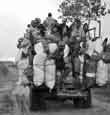
tHe WeaK CURRent: PietRO savORGnan Di BRaZZà, a WHite HeRO in BL aCK aFRiCa
nICoLE LEGhISSA
italia / italy 2008, Betacam sP, col. & b-n / b-w, 52’ v.o. italiana - francese / italian - French o.v.
seconda metà dell’’800: il giovane rampollo di una famiglia aristocratica friulana abbandona le comodità dei salotti e parte alla scoperta delle macchie bianche sull’atlante, le terre incognite d’africa. il suo nome è Pietro savorgnan di Brazzà e passerà alla storia come l’esploratore buono, l’idealista scalzo e disarmato che vestiva l’alta uniforme per incontrare i sovrani africani, l’”ufficiale gentiluomo”, il “Lawrence” italiano, l’uomo che nel 1880, al termine di una marcia estenuante in compagnia di pochi uomini, scoprì l’immenso fiume Congo. 1° ottobre 2006: le spoglie dell’esploratore vengono riesumate nel cimitero cristiano di algeri e portate a Brazzaville, dove verrà inaugurato, fra il plauso della popolazione locale e il sostegno delle autorità, un memoriale a lui dedicato. in Congo, sulle tracce del personaggio storico il giornalista Paolo Rumiz, il quale, scavando nello scarto fra il mito e l’attualità, svela il senso dell’operazione celebrativa, compiuta nell’interesse di chi oggi – proprio come due secoli fa – ha come unico fine quello di sfruttare il paese africano.
sceneggiatura / screenplay: nicole Leghissa, Paolo Rumiz, denise Vindevogel.
Fotografia / Photography: nicole Leghissa. montaggio / editing: denise Vindevogel. musica / music: Carsten Schulz, F.x. Randomiz.
suono / sound: Paolo Atzori.
Produzione / Produced by: Tico Film Company, Settimarte. Con il sostegno di / supported by: Film Fund, Friuli Venezia Giulia Film Commission.
second half of the 19th century: the young scion of an aristocratic family of Friuli abandons the comfort of the drawing room and leaves to explore the white patches on the atlas mountains, the unknown lands of africa. His name is Pietro savorgnan di Brazzà and he would be remembered in history as the good explorer, the bare-footed, unarmed idealist who used to wear ceremonial uniform to meet the african sovereigns. He was an “officer and gentleman”, the italian “Lawrence”, the man who, in 1880, after a long march accompanied by few men, he discovered the immense Congo river. 1st October 2006: the remains of the explorer were exhumed in the Christian cemetery of algiers and taken to Brazzaville, where a memorial would be raised in his honour, amid public approval and with the support of the local authorities.
in Congo, we find journalist Paolo Rumiz following the traces of this figures; digging between legend and current affairs, he reveals the meaning of the celebratory operation, undertaken in the interest of those who – just like two centuries – are only interested in exploiting the african country.
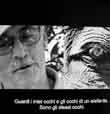
tHe GUaRDian OF memORY
(con la collaborazione di / in collaboration with Ennio Guerrato) italia / italy 2008, Betacam sP, col., 31’ v.o. croata / Croatian o.v.
sony è l'elefante che indira Gandhi, primo ministro indiano, regalò nel 1972 al maresciallo Josip Broz tito, presidente della Repubblica di Jugoslavia. Da allora sony vive, con la sua compagna Lanka, nel recinto accanto al Parco safari dell'isola di Brioni maggiore (Croazia), un tempo inaccessibile dimora privata del maresciallo tito, oggi frequentata meta turistica. il video, tratto dal progetto d'arte contemporanea “Circus meme”, propone l’intervista a timotej Pejin, lo storico guardiano degli elefanti di tito, che racconta particolari inediti sulla vita degli elefanti, l’arrivo sull’isola di sony e della sua compagna Lanka e come, nel 2000, fu evitata la vendita di entrambi a un circo tedesco.
“La giovane età dell’elefante, 38 anni, in relazione ai 75 della sua vita media, ci fornisce la misura del tempo, in realtà breve, nel quale sono avvenuti cambiamenti molto importanti. Questa percezione, dunque, di un tempo ‘non più vicino / non ancora lontano’ inizia lentamente a caricarsi di oblio attivo e ad aprire al cambiamento di prospettiva, in un’ottica di trasformazione e di riconciliazione con la storia. Sony, nella possente capacità di ricordare e nella sua naturale inconsapevolezza della storia umana, è simbolo forte: la natura trascende la storia dell’uomo e l’animale, imponente e vivo, vince la sfida con il passato; nel coniugare in sè elementi iconografici di storia, memoria e oblio, apre all’idea di ‘natura, continuità e trasformazione’.” (F. Faidiga)
soggetto / script: Fabiola Faidiga. tratto dal progetto / based on the project: “Circus Meme”.
intervista a timotej Pejin curata da / timotej Pejin’s interviewed by: Silvia Sbisà.
Fotografia / Photography: Fabiola Faidiga, Ennio Guerrato. montaggio / editing: Ennio Guerrato.
suono / sound: Francesco Morosini. Produzione / Produced by: Sculler Boston (Trieste).
sony is the elephant that indira Gandhi, the indian Prime minister, presented in 1972 to marshall Josip Broz tito, president of the Yugoslav Republic. since then, sony has lived with his companion, Lanka, in the compound next to the safari Park on the island of Brioni (Croatia), formerly the inaccessible private domain of tito, and today a popular tourist destination. the video, drawn from the contemporary art project, “Circus meme”, offers an interview with timotej Pejin, the historic guardian of tito’s elephants, who recalls original details of the life of the elephants, the arrival of sony on the island and of his companion, Lanka, and how, in 2000, the sale of both to a German circus was avoided.
“The young age of the elephant – 38 – in relation to the 75 years of life expectancy, gives us a measure of the short period of time in which very important changes have taken place. This perception, therefore, of a time that is ‘no longer near / not yet far’ begins slowly to enter a phase of oblivion and change of perspective, in a process of transformation and reconciliation with history. In his powerful ability to remember and his natural lack of awareness of human history, Sony is a strong symbol: nature transcends the history of man, and the powerful, living animal, wins the challenge with the past; in combining the iconographic elements of history, memory and oblivion, he opens the idea of ‘nature, continuity and transformation’.” (F. Faidiga)
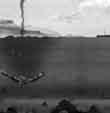
meDUsa. stORies OF men at tHe BOttOm OF tHe sea
italia / italy 2008, DigiBeta, col., 63’ v.o. italiana - slovena - inglese / italian - slovenian - english o.v.
“medusa” era il nome di un sommergibile italiano della seconda guerra mondiale. il 30 gennaio 1942, silurato dal sommergibile inglese thorn, affondò nel mare adriatico al largo di Pola, in istria. Gran parte dell’equipaggio morì nello scoppio. 14 uomini rimasero vivi a circa trenta metri di profondità, imprigionati nella parte di poppa del sommergibile. torpedinieri, sommergibili, piroscafi, motoscafi, pontoni e palombari accorsero per salvarli. i marinai sul fondo attesero pazienti, comunicando attraverso il filo della boa telefonica con i soccorritori in superficie. Poi il vento si alzò, sul mare cominciò a nevicare e l’azione dei soccorritori fu sospesa. Fu così che i marinai del “medusa” rimasero soli ad aspettare la morte…
“Medusa vuol essere un tipo particolare di documentario storico. Non è solo un’inchiesta. Non è un susseguirsi di testimonianze e documenti in gran parte inediti. È un percorso emotivo, avvincente, talora spettacolare, che intreccia linguaggi: riprese dal vero, film di repertorio, animazioni in uno stile fra gli ex voto, Karel Zeman e le figurine Liebig. Un uomo, uno scrittore, diventa esploratore di memorie…” (F. Valla)
sceneggiatura / screenplay: Fredo Valla. tratta da / based on: Un corpo sul fondo di / by Pietro Spirito. Fotografia / Photography: Luciano Federici. montaggio / editing: Mattia Petullà. musica / music: Enrico Sabena.
suono / sound: Maurizio Argentieri. effetti speciali / special effects: Enrico Sabena, Maurizio Argentieri. animazioni / animations: Francesco Vecchi, Alessia Cardini, damien Gaillardon. Produzione / Produced by: Maxman coop, Arealpina.
“medusa” was the name of an italian submarine of the second World War. On 30th January 1942, torpedoed by the British submarine, thorn, it sank in the adriatic sea off Pula, istria. most of the crew died in the explosion but 14 men survived and found themselves at a depth of 30 metres, imprisoned in the stern of the submarine. torpedo boats, submarines, steamers, motor boats, barges and divers came to save them. the submariners waited patiently, communicating via the cable of a telephone line run to the surface. then the wind began to blow, it began to snow over the sea and the rescuers had to suspend their operation. thus it was that the sailors of the “medusa” remained alone to await their death...
“Medusa aims to be a special type of historic documentary. It is not only an investigation. It is not a succession of memories and unpublished documents. It is an emotive, appealing, sometimes spectacular itinerary which combines various genres: film shot at the time, archive film and animations in a style somewhere between ex votos, Karel Zeman and Liebig picture-cards. A man, a writer, becomes the explorer of memories…” (F. Valla)
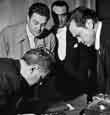
tHe GentLeman LOseR:
tHe LiFe anD aRt OF antOniO Centa
GLoRIA dE AnTonI, oRESTE dE FoRnARI italia / italy 2008, DigiBeta, col. & b-n / b-w, 52’ v.o. italiana / italian o.v.
“antonio Centa (maniago 1907-1979), uno degli astri dello star system italiano negli anni tra il ‘35 e il ‘43, ha amoreggiato con assia noris, alida valli, Luisa Ferida, ha intrecciato rapporti di amicizia virile con Fosco Giachetti, ha fatto a pugni con Gino Cervi, è stato diretto da registi come Genina, Blasetti e Camerini, ha avuto il nome nelle locandine di Lo squadrone bianco, un colpo di pistola, Fari nella nebbia, T’amerò sempre. Poi di colpo, nel ’43, l’astro si è eclissato, quando Centa è tornato nel suo Friuli, per ricomparire sugli schermi nel ’45 con un look un po’ appesantito e in ruoli un po’ secondari, seppure all’interno di film memorabili come Assunta Spina di mattoli e una vita difficile di Risi, dove è l’accompagnatore di Lea massari nel night club versiliano. alla sua figura, al suo percorso nel cinema, e alla sua vita privata, non sempre illuminata dai riflettori delle cronache mondane, e anzi per qualche aspetto ancora avvolta dal mistero, è dedicato Il perdente gentiluomo il documentario si sviluppa su più binari. Un lungo commento di De Fornari nella cornice littoria del Foro italico di Roma (pavimentato nel ‘36 dai mosaicisti friulani) che ripercorre la filmografia di Centa attraverso generi autori e ideologie; i brani dei film interpretati dall’attore; le interviste con i registi che l’hanno diretto, a partire da monicelli (aiuto regista di Lo squadrone bianco) che rievoca gli anni americani di Centa, quando era assistente personale di Primo Carnera, per arrivare a Dino Risi, in una testimonianza rilasciata pochi mesi prima della scomparsa. ma ci sono anche i ricordi di suso Cecchi d’amico e di Georgia moll (che era la figlia di Centa in Laura nuda) e soprattutto gli interventi dei familiari (la sorella e un nipote) e anche di una vecchia fiamma dell’attore, che ha voluto restare invisibile. e ancora i volti e le reminiscenze di tanti maniaghesi, a cominciare dall’autista di Centa, testimone e complice discreto in tante scorribande per andare o venire da maniago. nell’assieme un ritratto prismatico, a più facce, in bianco e nero e a colori, di una figura in cui sono riflessi i sogni di una generazione, lo stile di un’epoca e l’anima di una regione.” (O. De Fornari)
sceneggiatura / screenplay: Gloria de Antoni, oreste de Fornari. Fotografia / Photography: Silvano Kapelj. montaggio / editing: Letizia Caudullo. testimonianze / testimonies: Stefano Benvenuto, nino Bombardieri, Suso Cecchi d’Amico, Giuliana Centa, Massimo Centa, Assunta Centazzo, Ennio di Bon, Paolo Luisa Vissat,
Gloriana Milillo, Georgia Moll, Mario Monicelli, Sara Moranduzzo, dino Risi, Romano Scavolini, Antonio Tamai, Luigi Toffolo, Aldo Tomè. Produzione / Produced by: Cineteca del Friuli. Con il sostegno di / supported by: Regione Autonoma Friuli Venezia Giulia / Assessorato alle Attività Produttive, Comune di Maniago, Fondazione CRuP.
“antonio Centa (maniago 1907-1979), one of the leading stars in italy between 1935 and 1943, had love affairs with assia noris, alida valli, Luisa Ferida, was the friend of Fosco Giachetti, came to blows with Gino Cervi, and starred in films directed by such as Genina, Blasetti and Camerini, his name appearing on the posters for such movies as Lo squadrone bianco, un colpo di pistola, Fari nella nebbia, T’amerò sempre then suddenly, in 1943, the star went into eclipse, when Centa returned to his native Friuli. When he returned to the screen in 1945, he had a heavier look and appeared in secondary roles, albeit in such memorable films as Assunta Spina by mattoli and una vita difficile by Risi, in which he was Lea massari’s accompanier in the night club of versilia. Il perdente gentiluomo is dedicated to his cinema career and his private life, which was not always illuminated by the spotlights of the society media, and indeed at times is enveloped in mystery. the documentary follows several avenues. a long commentary by De Fornari at the Foro italico in Rome (paved in 1936 by Friulian mosaicists) examines Centa’s filmography through genres, directors and ideologies; excerpts from the films in which the actor appears; interviews with directors who worked with him, starting with monicelli (assistant director of Lo squadrone bianco), who evokes Centa’s american years, when he was the personal assistant of Primo Carnera, and followed by Dino Risi, in a commentary given by him a few months before his death. there will also be the memories of suso Cecchi d’amico and of Georgia moll (who was Centa’s daughter in Laura nuda) and above all those of his family (his sister and a grandson) and of a former sweetheart, who has preferred to remain invisible. the film will also present the faces and memories of many citizens of maniago, including Centa’s chauffeur, a witness and discreet accomplice in many outings to or from maniago. the overall view is a prismatic, multi-faceted portrait of a figure in whom are reflected the dreams of a generation, the style of an era and the soul of a region.” (O. De Fornari)
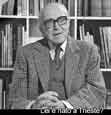
HistORY OF a BORDeR anD manY iDentities
GIAMPAoLo PEnCo
italia / italy
2008, Betacam sP, col., 52’ v.o. italiana - slovena / italian - slovenian o.v.
“il Carso ha una storia cangiante, pronta a mutar d’abito a ogni epoca successiva, a seppellire e riesumare, senza un confine netto tra ciò che è stato, e ciò che è in essere, per cui i vivi sono quelli che si decide di vedere, e quelli di cui si decide di conservare la memoria … La nascita di un confine vero risale alla Prima guerra mondiale, quando sul Carso goriziano e triestino vengono scavate trincee, combattute battaglie con migliaia di morti, e una zona, dove prima vivevano gruppi etnici differenti mescolati tra di loro, viene divisa da un confine territoriale nuovo di zecca. il confine diventa rigido durante il fascismo, e si trova nuovamente al centro di una guerra mondiale, durante la quale viene spostato più volte in maniera estremamente cruenta. Finisce la guerra, e il confine si moltiplica: italia, Zona a , Zona B, Jugoslavia, e la città di Gorizia divisa in due. nel 1954 il confine diventa definitivo, almeno per la volontà di allora, e si trasforma in ‘cortina di ferro’, simbolo di una volontà politica di separazione, di non comunicazione. nel maggio del 2004 una grande manifestazione a Gorizia abbatte simbolicamente il muro che nell’immediato dopoguerra tristemente divise la città in due parti tra italia e Jugoslavia. La linea di confine si avvia alla lenta dissoluzione, fino alla cerimonia dell’eliminazione delle sbarre, anche se da una parte non c’è più la Jugoslavia ma la Repubblica di slovenia … ma nel paese di santa Croce ci sono ancora due chiese: in una si celebrano messe solo in sloveno, nell’altra solo in italiano.” (G. Penco)
sceneggiatura / screenplay: Giampaolo Penco.
Fotografia / Photography: Paolo Babici, Bruno Beltramini, Paolo Forti, duccio zennaro.
montaggio / editing: Fulvio Burolo.
musica, suono / music, sound: Francesco Morosini.
Consulenza scientifica / Consultants: Veit heinichen, Miran Kosuta, Fabio Pelagalli.
Produzione, distribuzione internazionale / Produced by, World sales: Giampaolo Penco - Videoest.
“the Carso has a changeable history, that changes dress each coming ages, that bury and exhume, without a clear border between what was, what is and what will be, therefore the living ones are those who some decide to see, and those who’s memories are kept alive … a real border is born during the Firs World War, when in Carso, near trieste and Gorizia, were dug many trenches, many battles were fought, with thousands of dead, and an area with heterogeneous ethnic groups was divided in two by a brand new border. Border becomes strict during fascism, and it finds itself in the middle of another World War, when it changes position constantly, with dramatic situations. War ends, and the border is multiplied: italy, Zone a , Zone B, Yugoslavia, and the city of Gorizia, divided in two. in 1954 the border becames definite, and begins an ‘iron curtain’, symbol of a political aim of separation, of non-comunication … in may 2004 a big event in transalpina square open formally the wall that divided Gorizia in two after the second World War. the border slowly fades out. in December the order blocks are dismantled. But in the small town of santa Croce there are still two churces: one for masses in slovenian, one for masses in italian.” (G. Penco)
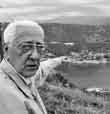
tHe enD OF sPaRtaCUs
EnnIo GuERRATo
italia / italy
2008, Betacam sP, col. & b-n / b-w, 51’ v.o. italiana / italian o.v.
“Un documentario che racconta, attraverso la viva voce dei sopravvissuti, le cruente vicissitudini della persecuzione, segregazione e deportazione dei militanti antifascisti a ridosso della seconda guerra mondiale, durante il conflitto e nel corso del dopoguerra. La scommessa è alta: comparare, al di là di ogni tabù e pregiudizio ideologico, la memoria della persecuzione dei regimi fascista e nazista accanto a quello comunista della Repubblica socialista Jugoslava. Questi regimi dittatoriali hanno ferocemente colpito, con motivazioni diverse ma con gli stessi tragici esiti, i combattenti per la libertà nonché gli stessi comunisti che hanno sperato e lottato per realizzare un sistema di vita più giusto ed equo. È tempo che gli storici diano pari e piena dignità civile e morale ad ambedue le memorie storiche. Il tramonto di Spartaco ha imboccato decisamente questa strada, senza esitazioni e senza reticenze.” (m. Coslovich)
sceneggiatura / screenplay: Marco Coslovich. Fotografia / Photography: Silvano Kapelj. montaggio, effetti speciali / editing, special effects: Eleonora Gallina. musica / music: Federico Paino, Francesco Morosini. suono / sound: Francesco Morosini, Michele Sumberaz Sotte.
testimonianze / testimonies: Ernesto Arbanas, Mario Candotto, Silverio Cossetto, Rodolfo Flego, Aldo Juretich, Gino Kmet, Riccardo Goruppi, Liubomir Sussic, Mario Tardivo, Mario Tonzar, Ferdinando zidar.
Produzione / Produced by: Prospettive storiche. Laboratorio di ricerca storica e sociale (Trieste).
“this is a documentary which, through the voices of the survivors, tells of the cruel events of the persecution, segregation and deportation of the anti-fascist militants before the second World War, during and immediately after the war. the aim is a difficult one: to go beyond taboos and ideological prejudice to compare the memory of the Fascist and nazi regimes with the communist one of the Yugoslav socialist Republic. For different reasons but with the same tragic results, these dictatorial regimes ferociously attacked freedom fighters and the same communists who hoped and fought for the creation of a more just and fair society. it is time for historians to give equal and full civil and moral dignity to both memories. Il tramonto di Spartaco has taken a clear step in this direction, without hesitation and without reticence.” (m. Coslovich)
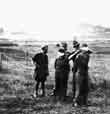
iL ventO se ne inFisCHia
tHe WinD PaYs nO ReGaRD
FILIP RoBAR doRIn slovenia
2008, DigiBeta, col., 112’ v.o. italiana - slovena / italian - slovenian o.v.
“il documentario mette in luce episodi e circostanze che hanno segnato i rapporti fra italia e slovenia nel corso dell’ultimo secolo, a partire dal crollo dell’impero austro-ungarico alla fine della Grande guerra, l’occupazione italiana di parte della slovenia, dell’istria e della Dalmazia, la violenza della polizia fascista verso gli sloveni e i crimini di guerra italiani compiuti nella slovenia occupata durante la seconda guerra mondiale. Frammenti del diario del cappellano italiano don Brignoli e del libro di memorie di marisa madieri (Aquaverde) mostrano un’altra faccia della presenza italiana in slovenia, quella civile, culturale e umana. alla fine dell’ultima guerra, le violenze si sono riaccese, queata volta da parte delle autorità jugoslave sui cittadini italiani presenti nei territori di istria e Dalmazia: dalle 200.000 alle 300.000 persone sono state esiliate in italia e centinaia di queste mandate a morte senza processo. a partire dalle conferenze di Parigi e di Londra e dal trattato di Osimo, fino all’entrata di italia e slovenia nella Comunità europea, i rapporti fra i due paesi si sono andati via via intensificando. eppure, ci sono ancora politici e storici italiani che continuano a nascondere agli italiani la verità sul loro passato, su quello che è accaduto quando i fascisti applicarono politiche di distruzione dell’identità nazionale e attuarono azioni genocide nei territori da loro occupati. il film cerca però di mostrare anche lo sforzo continuo di molte persone, sia italiane che slovene, che a cavallo del confine cercano di sostenere la coesistenza e la cooperazione.” (F. Robar Dorin)
sceneggiatura / screenplay: Filip Robar dorin. Fotografia / Photography: Primož Kastelic. montaggio / editing: Matjaž jankovič. musica / music: Iztok Mlakar. suono / sound: Boštjan Frantar, Igor Laloš.
Produzione / Produced by: Studio Vrtinec. Coproduzione / Co-produced by: TV Slovenija.
“the documentary highlights the facts and circumstances of relations between slovenia and italy during the last century; after the collapse of the austro-Hungarian empire at the end of World War i, the italian occupation of parts of slovenia, istria and Dalmatia, the violence of the fascist policy towards slovenian inhabitants and the italian war crimes in occupied slovenia during the second World War. Fragments from the diary of italian chaplain, don Brignoli, and from the book by marisa madieri, Aquaverde, expose another aspect of the italian presence in slovenia, which was civilised, cultured and humane. at the end of the second World War, renewed violence followed, this time on the part of Yugoslav authorities toward italian citizens in its territories of istria and Dalmatia. Between 200.000 and 300.000 persons were exiled to italy and hundreds of persons were put to death without trial. From the time of the conferences in Paris and London, the treaty of Osimo, and the entry of italy and slovenia into the eU, the relation between the two nations greatly improved. However some italian politicians and a few professional historians continue to prevent the italian public from finding out the truth about their past, when italian fascists implemented policies to destroy national identity and to carry out acts of genocide in territories they occupied. the film also throws light on the continued effort of many people along the border, both italian and slovenian, to improve coexistence and cooperation.” (F. Robar Dorin)
dEBnE oTVSJAKAdE
iL mOnDO È GRanDe e L a saLveZZa sta DietRO L’anGOLO / tHe WORLD is BiG anD saLvatiOn LURKs aROUnD tHe CORneR
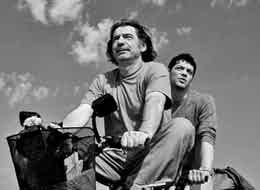
Bulgaria 1980. Le nubi si addensano sulla spensierata infanzia di alex, in una piccola città di provincia. La polizia vuole che suo padre spii il nonno Bai Dan, il re locale del backgammon. La famiglia decide allora di fuggire all’Ovest. 25 anni dopo alex è in un ospedale tedesco dopo un grave incidente stradale in cui ha perso entrambi i genitori. il nonno Bai Dan decide di andare in Germania. alex non riconosce il nonno perché soffre di amnesia in seguito all’incidente. Bai Dan comincia a insegnare il gioco del backgammon al nipote. il vecchio gioco riporta alex alla vita. Bai Dan fa uscire il nipote dall’ospedale e con un tandem iniziano un viaggio che li porta a spasso per mezza europa. in questo viaggio di ritorno verso la Bulgaria, che è anche un viaggio nel passato, alex riacquista la memoria e con essa anche la voglia di vivere. Premio del pubblico e miglior film bulgaro all’ultima edizione del Festival internazionale del cinema di sofia.
STEPhAn KoMAndAREV
Bulgaria - Germania - Ungheria - slovenia / Bulgaria - Germany - Hungary - slovenia 2008, 35mm, col., 105’ v.o. bulgara - tedesca - italiana - inglese / Bulgarian - German - italian - english o.v.
sceneggiatura / screenplay: Stephan Komandarev, Dušan Milić, Ilija Trojanow, yuri datchev, dal romanzo omonimo di / based on the novel of the same title by Ilija Trojanow Fotografia / Photography: Emil Christov.
montaggio / editing: nina Altaparmakova. musica / music: Stefan Valdobrev. suono / sound: Aleksander Bachvarov, holger Lehmann. scenografia / art Director: Anastas yanakiev.
Costumi / Wardrobe: Marta Mironska.
interpreti / Cast: Miki Manojlović, carlo Ljubek, hristo Mutafchiev, Anna Papadopulu,
Lyudmila Cheshmedzieva, nikolay urumov, Blagovest Mutafchiev, Vassil Vassilev-zueka, Stefan Valdobrev, dorka Gryllus, Pavel Popandov, Georgi Kadurin.
Produzione / Produced by: RFF International, Pallas Film Gmbh, inforg Stúdió, Vertigo-emotion Film. Coproduzione / Co-produced by: Bulgarian national Television. Con il sostegno di / supported by: Bulgarian national Film Centre, Mitteldeutsche Medienforderung, EuRIMAGES, Medienboard Berlin-Brandeburg, German Federal Film Fund, hungarian Motion Picture Public Foundation, Filmski Sklad Republike Slovenije. Distribuzione internazionale / World sales: RFF International.
Bulgaria, 1980. Clouds are gathering over alex’s idyllic childhood in a small provincial town. militia wants his father to spy on alex’s grandfather, Bai Dan, the local King of backgammon. the family decides to emigrate to the West. 25 years later alex is in German hospital after severe car crash in which his parents have died. Bai Dan goes off to Germany. alex does not recognise his grandfather because he now suffers from amnesia as a result of the accident. Bai Dan teaches his grandson backgammon. the ancient game restores alex back to life. Bai Dan drags alex out of hospital and they set off on the road with tandem bicycle, for a journey across half of europe. On this journey back to Bulgaria, which is also a journey back to the past, alex gets his memory back, and with it, the will to live again. audience award and Best Bulgarian Film at the latest sofia international Film Festival.

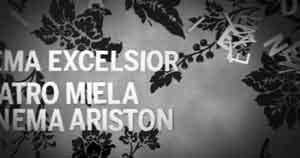


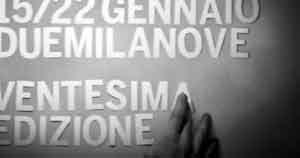

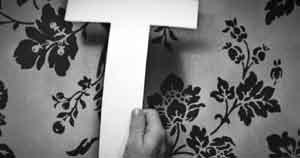
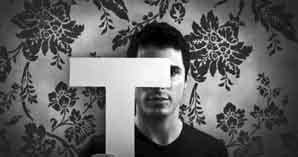
30 secondi, tanta animazione e una musica originale per festeggiare il traguardo della ventesima edizione del trieste Film Festival. nata dal desiderio di avere “una sigla speciale per il ventesimo compleanno del festival”, come spiega la direttrice artistica annamaria Percavassi, la sigla prosegue sulla scia della veste grafica scelta per questa edizione, volutamente artigianale e in parte work in progress, che richiama il lavorio di ricerca e costruzione proprio di un festival cinematografico. ecco quindi la grande t bianca su campiture floreali che ammiccano all’est come elemento che si frappone tra l’occhio dello spettatore e la realtà diventare protagonista di un’animazione che trasporta lo spettatore oltre i confini della sala buia, in un viaggio oltre la linea d’orizzonte, verso realtà lontanissime perché a chilometri e universi culturali di distanza, ma che diventano esperienza quotidiana grazie al trieste Film Festival.
La musica originale utilizzata per la sigla è stata realizzata dall’amico Massimo zamboni, nome storico della scena musicale italiana, il quale ha regalato al festival una melodia lieve ed evocativa, quasi “un rifiorire fuori stagione, note che evocano il nostro diritto all’incanto”, per usare le sue stesse parole. La regia del trailer è di Fabio Bressan, talento tutto triestino. Designer DiY, da diversi anni si dedica a grafica, video, web design e motion graphics. Bressan è anche direttore creativo di its, international talent support, piattaforma internazionale per nuovi talenti. Più persone di prima, dichiara, gli rivolgono la parola, da quando ha realizzato la sigla 2008/2009 di Nonsolomoda. È estremamente sensibile alla caffeina e alla punteggiatura. i suoi lavori sono visibili all'indirizzo www.popmypet.com.
30 seconds, plenty of animation and some original music to celebrate the threshold of the 20th edition of the trieste Film Festival. Born from the desire to have a “special theme music for the festival’s 20th birthday”, as explains the artistic director, annamaria Percavassi, the theme continues in the manner of the graphic style chosen for this edition, which is deliberately ‘hand-made’ and in part a work in progress, recalling the research and construction work typical of a film festival. Hence the large white t on a floral background gazing eastward like an element appearing between the viewer’s eyes and the reality, becoming the protagonist of an animation transporting the spectator beyond the walls of the blacked out venue, on a voyage beyond the horizon, towards distant realities, in terms of miles and culture, but now a daily experience thanks to the trieste Film Festival.
the original music used for the theme has been composed by our friend Massimo zamboni, a historic name on the italian musical scene. He has produced a light, evocative melody for the event, almost “a blossoming out of season, notes evoking our right to be enchanted”, to use his own words. the trailer has been directed by Fabio Bressan, a wholly triestine talent. DiY designer, he has for some years dedicated himself to graphics, video, web design and motion graphics. Bressan is also creative director of its, international talent support, an international platform for new talents. He declares that more people talk to him than before, since he produced the 2008/2009 theme for Nonsolomoda. He is extremely sensitive to caffeine and punctuation. His work is visible at www. popmypet.com.
EASTWEEK
nuovi talenti, grandi maestri new talents, great masters
CATodICA 4
rassegna internazionale di videoarte international review of video art
TRACCE dI MuRo
Per una memoria visiva e sonora del muro di Berlino a vent’anni dalla sua caduta
TRACInG ThE WALL
twenty Years after the Fall of the Berlin Wall. memories evoked trough images and sound
dIE ALLSEITIG REduzIERTE
PeRSÖNLicHKeiT - ReDUPeRS di Helke sander (1977)
EIn - BLICK di Gerd Conradt (1987)
FERnSEhGRÜSSE Von WEST nACh oST di Gerd Conradt, michaela Buescher (1986)
SonATA A KREuzBERG
Protezione scoppio e nuova fuga nella Berlino dei muri
KREuzBERG SonATA
Protection, Blast and a Fresh escape in Berlin, City of Walls di massimo Zamboni
ELEnA GIuFFRIdA
Curatrice
del progetto
Project
coordinator
il progetto eastweek nasce innanzitutto dal desiderio di creare occasioni di incontro e di approfondimento tra gli studenti di cinema dell’area di interesse di alpe adria Cinema, l’europa centro orientale, - che saranno i futuri protagonisti delle prossime edizioni del trieste Film Festival - e i grandi autori che del festival hanno fatto la storia. L’idea che ha fatto nascere questo progetto è quella di far diventare il festival il luogo, geografico e temporale, per interscambiare, per confrontarsi, per imparare e soprattutto per far nascere nuove idee e collaborazioni tra studenti provenienti da diversi paesi. ideato e costruito in pochi mesi, eastweek ha trovato subito l’entusiasmo dei presidi e dei professori delle scuole che abbiamo potuto incontrare, così come il generoso appoggio di alcuni storici amici del festival che hanno voluto trasmettere la loro esperienza e la loro passione per il cinema, regalando agli studenti e al pubblico del festival quattro preziose conversazioni sul loro modo di vedere e fare il cinema. Questo ci fa pensare che di questi luoghi e momenti di incontro si percepisce l’importanza nella formazione delle nuove generazioni di cineasti, come momenti di arricchimento e possibilità di sviluppo di lavori portati avanti insieme. il trieste Film Festival da anni ha scelto di dare importanza ai giovani talenti, oltre che proponendo un concorso internazionale di cortometraggi (da sempre frequentato soprattutto da giovani registi), dando la possibilità agli studenti di cinema di molte facoltà italiane di accedere gratuitamente alle proiezioni e agli eventi collaterali. L’energia di questi ragazzi ha fatto sì che il festival si arricchisse di uno spirito nuovo e migliorasse la sua offerta. il progetto eastweek è un nuovo passo in questa direzione. Dopo questa prima edizione, ricca di appuntamenti tra gli studenti e i grandi registi presenti al festival, ma anche tra gli studenti stessi, l’evoluzione naturale di eastweek è quella di diventare anche un momento produttivo. nelle prossime edizioni, infatti, verrà ampliato il numero delle scuole e delle accademie coinvolte e soprattutto verrà dedicato più spazio all’ideazione di progetti cinematografici da realizzare tra studenti di diversi paesi. sappiamo quanto sia difficile per i registi esordienti trovare
nuoVI TALEnTI, GRAndI MAESTRI
il progetto di alpe adria Cinema per la creazione di una rete tra scuole e accademie di cinema dell’area Cei nEW TALEnTS, GREAT MASTERS a project by alpe adria Cinema designed to create a network linking schools and film academies in the Cei area
the eastweek project is designed to create the opportunity for film students in the area covered by alpe adria Cinema – central and eastern europe – who will undoubtedly play an important role in future trieste Film festivals, to meet some of the film makers who have made the history of the festival and improve their understanding of their work. the idea for this scheme grew out of the belief that the festival should become the place and the occasion for fruitful encounters, an opportunity to learn and exchange opinions and especially a chance for students from various countries to develop fresh ideas and work together. the eastweek project was devised and put in place in just a few months and was enthusiastically received by the heads of schools and their teachers we have been able to meet, as well as enjoying the generous support of a number of historical friends of the festival, who have been keen to pass on their experience and love of the cinema, providing four invaluable interviews on their approach to the cinema and their own ways of making films. it is through these schemes that these occasions convey a sense of the importance of training the new generation of film makers and provide them with the opportunity to improve their understanding and to develop projects as combined efforts. Over the years, trieste Film Festival has always been keen on giving young talent its head, by holding an international short film competition (that has attracted young directors since its inception), and allowing free access for film students from many italian universities to screenings and collateral events. the enthusiasm of these students has energized the festival with a fresh spirit and led it to improve what it has to offer. the eastweek project is a further step in this direction. after this initial experiment, packed with encounters between students and the great directors present at the festival, as well as between the students themselves, eastweek will inevitably evolve into a creative opportunity. Over the coming years, the number of schools and academies involved will increase, and above all further stress will be laid on developing film projects to be realized by students from different countries. We appreciate
appoggio, economico e logistico, per realizzare i loro film. e siamo fermamente convinti che dalle collaborazioni, dal confronto con le diversità – di provenienza, di cultura, di lingua, ecc. – nascano i frutti migliori. il trieste Film Festival, attraverso eastweek, dunque, si propone di moltiplicare le occasioni di questo confronto e di essere il trait d’union tra i giovani registi, i possibili finanziatori e chi può dare appoggio logistico ed esperienza in campo cinematografico.
Ci auguriamo che eastweek si sviluppi quanto prima in questa direzione e vorremmo ringraziare, per aver dato fiducia a questo progetto, la Cei – Central european initiative, da sempre molto attenta alla valorizzazione e alla conoscenza dei talenti provenienti dall’area est-europea.
e un ringraziamento particolare per la loro generosità ai relatori delle masterclass: Márta Mészáros, Jerzy Stuhr, Dinko Tucaković e Andrzej Żuławski
how difficult it is for young directors to find the logistical and financial support they need to make their first films. We are fully convinced that drawing together different approaches, arising from background, culture, languages and so on, and encouraging collaborative efforts, brings the best results. so, through eastweek, trieste Film Festival aims to provide ever more of these opportunities and to become the link between young directors, potential backers and those in a position to provide logistical support and experience in the field of the cinema. We hope eastweek will develop along these lines as soon as possible and we should like to thank Cei, Central european initiative, which has always taken great care to nurture young talents from the eastern european area, for its steadfast support for this project.
Our heartfelt thanks also go to the masterclass speakers for so readily agreeing to take part: Márta Mészáros, Jerzy Stuhr, Dinko Tucaković and Andrzej Żuławski.
LE SCuoLE dI CInEMA ChE PARTECIPAno AL PRoGETTo EASTWEEK
ThE SChooLS TAKInG PART In ThE EASTWEEK PRoJECT ARE
akademija Umetnosti Univerzitet, novi sad (serbia)
akademija Umjetnosti, Banja Luka (Bosnia erzegovina)
AGRFT - Akademija za gledališče, radio, film in televizijo, Lubiana / Ljubljana (slovenia)
Fakultet Dramskih Umetnosti, Belgrado / Belgrade (serbia)
Fakultet Dramskih Umjetnosti, Cetinje (montenegro)
Hochschule für Film und Fernsehen Konrad Wolf di Potsdam-Babelsberg (Germania)
marubi Film school di tirana (albania)
Márta Mészáros
È nata a Kispest, Ungheria, nel 1931. Dal 1935 al 1946 ha vissuto in Unione sovietica, dove il padre, lo scultore László mészáros, fu vittima del regime di stalin. Dopo essersi diplomata nel 1956 allo vGiK di mosca, collabora fino al 1958 con lo studio “alexandru sahia” di Bucarest per cui realizza una serie di documentari. nel 1958 torna in Ungheria dove realizza solo cortometraggi fino al 1968, anno di uscita del suo primo lungometraggio, Eltávozott nap Raggiunge la fama internazionale con Örökbefogadás, premiato nel 1975 a Berlino con l’Orso d’oro e l’anno seguente con Kilenc hónap che vince a Cannes il premio FiPResCi. nel 1982 realizza Napló gyermekeimnek (Diario per i miei figli), il primo di una serie autobiografica. il film non viene proiettato in Ungheria fino al 1984 per problemi di censura, ma quell’anno vince il premio speciale della Giuria a Cannes. nel 1995 vince il premio OCiC al festival di venezia con La settima stanza. Di márta mészáros il trieste Film Festival ha presentato numerosi film, fra cui l’ultimo A temetetlen halott (2004) dedicato alla figura di imre nagy.
márta mészáros was born in 1931 in Kispest, Hungary. she lived in the soviet Union between 1935 and 1946. Her father, László mészáros, a sculptor, fell victim to stalins cleansing. after graduating from the Union state Film school (vGiK) in moscow in 1956, she made documentary films in the Bucharest alexandru sahia studio until 1958; then returned in Hungary, where produced only short films until 1968, when realized her first feature film, Eltávozott nap. she gained international fame with Örökbefogadás, which won in 1975 the Golden Bear in Berlin, and in the following year at Cannes with Kilenc hónap, which won the FiPResCi award. in 1982, she made Napló gyermekeimnek (Diary for my children), the first in her autobiographic series. the film was not screened in Hungary until 1984 because of problems with the censor, but it won the Jury’s special Prize in Cannes. in 1995, with The Seventh Room, she won the OCiC prize at the venice Film Festival. the trieste Film Festival presented several films of márta mészáros, among them the latest A temetetlen halott (2004) a imre nagy portrait.
Jerzy Stuhr nasce nel 1947 a Cracovia. Dopo essersi laureato in Letteratura e Filologia polacca all’Università Jagellonica, si diploma in recitazione alla scuola superiore di studi teatrali, sempre a Cracovia. nel 1971 entra a far parte, come attore, del teatr stary di Cracovia e lavora fra gli altri con Konrad swinarski, Jerzy Jarocki, andrzej Wajda. Dal 1975 inizia a lavorare anche nel cinema e nel 1978 ottiene un ruolo nel film di agnieszka Holland Aktorzy prowincjonalni nel 1979 l’incontro con Kieślowski per il film Amator segna l’inizio di un sodalizio artistico: stuhr comparirà in dekalog (Decalogo, 1989) e in Trois Couleurs: Blanc (tre colori: Film Bianco, 1994). Lavora anche per Zanussi, Wajda, Falk e machulski. Contemporaneamente, continua a lavorare anche per il teatro: del 1985 è la messinscena e l’interpretazione de Il contrabbasso di süsskind che lo fa conoscere in tutto il mondo. nel 1994 esordisce nella regia cinematografica, con Spis cudzołonic, che ottiene dei riconoscimenti al Festival del Cinema Polacco di Gdynia. seguono nel 1997
Historie miłosne (Premio FiPResCi alla mostra del Cinema di venezia), nel 2000 duże zwierzę, nel 2003 Pogoda na jutro, tutti presentati al trieste Film Festival. il suo ultimo film è Korowód (2007), da lui scritto, diretto e interpretato.
Jerzy stuhr was born in Cracow in 1947. after graduating in Literature and Polish Philology at the Jagellonian University, he gained a diploma in acting at the High school for theatrical studies in Cracow. in 1971 he joined the teatr stary of Cracow as an actor and worked with Konrad swinarski, Jerzy Jarocki and andrzej Wajda, among others. He began working in the cinema in 1975 and in 1978 he obtained a role in the film Aktorzy prowincjonalni by agnieszka Holland. meeting Kieślowski in 1979 in the film Amator marked the beginning of an artistic partnership: stuhr appeared in dekalog (Decalogue, 1989) and in Trois Couleurs: Blanc (three Colours: White Film, 1994). He also appeared in films by Zanussi, Wajda, Falk and machulski. He continued to work in the theatre: in 1985 he staged and acted in The Double Bass by süsskind, which made him known throughout the world. in 1994 he made his debut as a film director with Spis cudzołonic, which was praised at the Polish Film Festival in Gdynia. in 1997 he directed Historie miłosne (FiPResCi Prize at the venice Film Festival), in 2000 duże zwierzę, in 2003 Pogoda na jutro all presented at the trieste Film Festival. His latest film is Korowód (2007), which stuhr writed, directed and played.
dinko Tucaković
nasce nel 1960 a Zenica in Bosnia. nel 1984 si laurea in Regia cinematografica e televisiva presso la facoltà di arti Drammatiche dell’Università di Belgrado (dove oggi insegna storia del cinema e regia). Regista per il cinema e per la televisione, ha collaborato come critico e teorico di cinema per le riviste «vreme» (Belgrado), «Positif» e «sight and sound». Cura la programmazione e le pubblicazioni della Jugoslovenska Kinoteka, ha presieduto fra il 1997 e il 2002 il comitato del Fest (il Festival internazionale di Cinema di Belgrado). autore di parecchi libri di cinema, fra cui Tajni život filma (1993) e Stranci u raju (1998), è stato membro della giuria FiPResCi in numerosi festival internazionali. alcuni dei suoi film sono stati selezionati in festival internazionali, fra cui Pismo (a Berlino) e Belgrader Tagebuch (alla Mostra del Cinema di Venezia). Vive e lavora a Belgrado. Di Tucaković, Alpe Adria Cinema - Trieste Film Festival ha presentato nel 2000 Belgrader Tagebuch, nel 2005 The Rubber Soul Project e nel 2007 zabranjeni bez zabrane (diretto con Milan Nikodijević).
Dinko Tucaković was born in Zenica, Bosnia, in 1960. In 1984 he gained a degree in Film and Television Directing at the Faculty of Dramatic arts of the University of Belgrade (where currently is a guest lecturer on history of cinema and film direction). a film and television director, a film critic and theorist he collaborated with the magazines Vreme (Belgrade), Positif e Sight and Sound as well. Programming director and Chief editor of publishing branch of Yugoslav Film archives (Jugoslovenska Kinoteka), he was chairman of the Board of the Fest (Belgrade international Film Festival) from 1997 to 2002. author of several film books, among them Tajni život filma (1993) and Stranci u raju (1998), he has been nominated member of the FiPResCi jury in many international film festivals. some of his films have been selected in international film festivals, including Pismo (at Berlin international Film Festival) and Belgrader Tagebuch (at the venice Film Festival). Lives and works in Belgrade. alpe adria Cinema - trieste Film Festival has presented in 2000 his Belgrader Tagebuch, in 2005 The Rubber Soul Project and in 2007 zabranjeni bez zabrane (directed with Milan Nikodijević).
Andrzej Żuławski andrzej Żuławski nasce nel 1940 nella città di Lvov (Leopoli), ora in Ucraina, in una famiglia di intellettuali e ar tisti. Nel 1957 il giovane Żuławski va a Parigi, dove studia regia all’IDHEC. Ritornato in Polonia nel 1960, diventa assistente alla regia di Andrzej Wajda ma continua a studiare Filosofia all’Università di varsavia e scienze Politiche all’Università di Parigi. nel 1971 esce il suo film di debutto Trzecia część nocy (La terza parte della notte). il film andò alla mostra del Cinema di venezia ma poi non ebbe una distribuzione internazionale causa problemi con la censura polacca. Così anche il film successivo Diabeł ebbe problemi con la censura e uscì solo nel 1988. nel 1973 è di nuovo a Parigi, dove riceve dalla produttrice albina de Boisrouvray l’incarico di fare un film dal racconto La nuit américaine di Christopher Frank. Così nel 1974 esce L’Important c’est d’aimer (L’importante è amare), che è un successo e la cui attrice protagonista, Romy schneider, riceve il Premio César. nel 1980, sempre in Francia, esce Possession il suo film più complesso, anche questo girato in Francia, protagonista isabelle adjani. il 1984 è l’anno de La Femme publique con valérie Kaprisky, che riceve il Premio speciale della Giuria e del Pubblico al Festival di montreal. nel 1985 con L’Amour braque inizia la sua relazione professionale e personale con sophie marceau, che sarà la protagonista di quattro suoi film. negli anni novanta comincia a rivolgersi sempre più alla letteratura: fra i romanzi e racconti pubblicati Był Sad (pubblicato per la prima volta in Francia nel 1987 con il titolo di Il était un
verger), Lity bòr (1991), W oczach tygrysa (1992) Ogród miłosni (1993), Małpa o krwawiącym sercu (2000), Jako nic (2004). nel 1996 viene insignito in Francia dell’Ordine delle arti e delle Lettere, la più alta onorificenza del paese. nel 2000 esce il suo ultimo film La Fidélité, con sophie marceau. attualmente Żuławski vive in Polonia. Nel 2003 il Trieste Film Festival gli ha dedicato una retrospettiva completa dal titolo “(P)ossessioni - il cinema estremo di andrzej Żuławski”.
andrzej Żuławski was born in 1940 in Lvov, now Ukraine, in a family with remarkable traditions in arts and literature. In 1957 the young Żuławski went to Paris where he studied film direction at IDHEC. Upon his return to Poland, he became an assistant to Andrzej Wajda. He also studied philosophy at the Warsaw University and political science at the Université de Paris. in 1971 he made his feature debut with Trzecia część nocy (the third Part of the night). the picture was well received at the venice Film Festival, but had only limited release due to Polish censorship. Żuławski’s next feature Diabeł (the Devil) was banned for political reasons and not released until 1988. in 1973 Żuławski was back in Paris, where the producer Albina de Boisrouvray proposed him to do a film adaptation of the acclaimed novel La nuit américaine by Christopher Frank. the film whose title was changed to L’Important c’est d’aimer (the main thing is to Love) was a success and brought its star Romy schneider a César (French Oscar). in 1980, again in France, he made Possession, his most audacious and complex film, starring isabelle adjani. in 1984 he made La Femme publique (1984) starring valérie Kaprisky: the film received the special Jury Prize and the audience award at the montreal World Film Fesival. L’Amour braque (1985) initiated his creative and personal partnership with actress sophie marceau who would star in four of his films. in the 1990s Żuławski’s film work became less frequent and he devoted more time to his literar y endeavors: among the titles Był Sad (published in France as Il était un verger), Lity bòr (1991), W oczach tygrysa (1992) Ogród miłosni (1993), Małpa o krwawiącym sercu (2000), Jako nic (2004). in 1996 Żuławski was distinguished with the Order of Arts and Letters, the highest cultural award of France. In 2000 he directed his last film La Fidélité, with sophie marceau. at present time Żuławski is living in Poland. In 2003 the Trieste Film Festival made a complete retrospective of his works, entitled “Possessions - the extreme Cinema of andrzej Żuławski”.
ELFI REITER
al muro di Berlino e a tutto ciò che ha significato e continua a significare mi ha fatto pensare di recente edoardo Galeano, straordinario poeta dell’Uruguay nel nuovo libro chiamato metaforicamente Specchi. tra le tante brevi storie c’è una che più o meno dice così: il muro di Berlino, quando (assieme a molti di noi) era giovane, fu considerato “muro della vergogna, dell’infamia”. Poi cadde, ma di muri ne sono sorti altri di cui però, sebbene grandi, non si parla: gli Usa ne hanno fatto uno al confine col messico, la spagna ha messo il filo spinato a Ceuta e melilla, quello in Cisgiordania è lungo 15 volte e quello in marocco persino 60 volte quello di Berlino. “Come mai muri così altosonanti e così muti?”, si chiede Galeano alla fine... Ho deciso di “far parlare” un po’ il “muro della vergogna” (43 km di sbarramento anteriore verso Berlino Ovest con 8 punti di passaggio) costruito velocemente la notte del 13 agosto 1961 e caduto con altrettanta veemenza il 9 novembre 1989, scegliendo tre piccoli film per conoscere un po’ l’impatto sulla città e la vita che si svolgeva accanto, attorno, sopra e sotto quella linea di separazione che aveva portato la morte a tante persone (si parla di almeno 138 accertate) che tentarono di superarlo per raggiungere i propri cari o sfuggire un modello di vivere poco democratico. Helke sander in Die allseitig reduzierte Persönlichkeit - Redupers fotografa non solo la città divisa ma anche vite e persone divise, tra est e ovest, pubblico e privato, politico e personale, nelle lotte delle donne. Gerd Conradt nel corto Ein-Blick offre uno sguardo sul muro e dall’altra parte, da una finestra in una casa a Berlino Ovest, testimonianza curiosa e quasi grottesca (a ritmo accelerato perché girata a un fotogramma al secondo) di una giornata di vita nel neanche troppo lontano 1987, mentre nel precedente Fernsehgrüsse von West nach Ost (1986) si raccontano brevi fatti o situazioni reali, anche tenebrose come la traversata in metrò delle stazioni chiuse, al buio e con guardie armate, per mostrare la linea di separazione sotterranea. Una linea che oggi è marcata con altri segni lungo l’antico percorso del muro, a tratti ricostruito - come vicino al Potsdamer Platz. Helke sander e Gerd Conradt hanno frequentato, lavorando anche insieme, i primi corsi della scuola di cinema di Berlino, la DFFB, inaugurata nel settembre 1966, e si incontrano di nuovo – casualmente riuniti dai film sul muro – a trieste. Per dire che “il cinema abbatte tutti i muri, semplicemente perché va oltre – sempre” (come mi ha scritto Conradt).
PER unA MEMoRIA VISIVA dEL MuRo dI BERLIno (1961-1989)
FoR A VISuAL MEMoRy oF ThE BERLIn WALL (1961-1989)
the Berlin wall and all it has signified and continues to signify has recently made me think of edoardo Galeano, an extraordinary Uruguayan poet, and his new book, metaphorically called Espejos among the many short stories, there is one that more or less goes like this: when he was young (like many of us), the Berlin wall was considered a “wall of shame, of infamy”. then it fell, but other walls have been raised of which, however, although high, nothing is said: the United states has one on its border with mexico, spain has barbed wire at Ceuta and melilla, the one in Palestine is 15 times longer than the Berlin wall, and the one in morocco 60 times as long. “Why is it there are such bombastic and mute walls?”, Galeano asks himself at the end...i have decided to make one of the “walls of shame” “talk” a little: the 43 km of barrier towards West Berlin with 8 checkpoints, rapidly built in the night of 13 august 1961 and as rapidly pulled down on 9 november 1989. to do so, i have picked three little films to learn something of the impact of the wall on the city and life carrying on alongside, around, over and beneath that line of separation, one that dealt death to so many people (at least 138 documented cases) who sought to cross it in order to reach dear ones or escape a way of life that had little democratic about it. in Die allseitig reduzierte Persönlichkeit - Redupers, Helke sander portrays not only the divided city but also divided lives and people, between east and West, public and private, political and personal, in the struggle of the women. in his short Ein-Blick, Gerd Conradt offers a look at the Wall and from the other side, from a window in a house in West Berlin, the curious and almost grotesque images (accelerated because filmed at the rate of one frame per second) of a day in the life of the not so distant 1987, while in the preceding Fernsehgrüsse von West nach Ost (1986), brief events or real situations are described, including gloomy ones, such as the metro train passing through closed stations in the dark and with armed guards, to show the underground line of separation. a line that is today marked by other signs along the former route of the Wall, in places rebuilt, such as close to Potsdamer Platz. Helke sander and Gerd Conradt both frequented the first courses of the Berlin film school, the DFFB, inaugurated in september 1966, sometimes working together. they meet by chance once again in trieste, brought together by their films on the Wall. to say that “cinema knocks down all walls, simply because it goes beyond - always” (as Conradt has written).
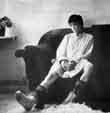
La PeRsOnaLità GeneRaLmente
RiDOtta - PeRsRiD
tHe aLLROUnD ReDUCeD PeRsOnaLitY - ReDUPeRs
hELKE SAndER
Germania est / east Germany 1977, 16/35mm, b-n / b-w, 98’ v.o. tedesca / German o.v.
edda Chiemnyjewski, fotografa freelance con una figlia piccola, è alle prese con la propria vita quotidiana, deve gestire casa, bimba e lavoro. Collabora con un gruppo di donne fotografe, dalle quali riceve l’incarico di documentare la città di Berlino. nell’ambito di questa sua quotidianità frammentata si pone, tra le tante altre cose e i tanti quesiti da risolvere ogni giorno, la domanda seguente: quando (e come) può (e deve) imparare una donna la gestione degli affari pubblici e politici di uno stato? Frase ripresa dagli scritti di Lenin, le cui tesi politiche erano molto discusse dalla sinistra nell’allora Repubblica Federale tedesca negli anni sessanta e settanta. il titolo La personalità generalmente ridotta è un rimando ironico al concetto diffuso nell’allora Repubblica Democratica tedesca (ex Ddr-Rdt) della “personalità socialista generalmente evoluta”. e vuole essere un contributo al perché le donne riescono così di rado a realizzare i propri sogni e le proprie ambizioni.
sceneggiatura / screenplay: helke Sander.
Fotografia / Photography: Katia Forbert, hille Sagel. montaggio / editing: ursula höf, Esther dayan. sound / suono: Gunther Kortwich. interpreti / Cast: helke Sander, Joachim Baumann, Frank Burckner, Eva Gagel, Andrea Malokowsky, ulrich Gressiecker, Gesine Strempel,
Ronny Tanner, helga Storck, Beate Topp, Gisela zies, Gislind nabakowski, ulla ziemann. Produzione / Produced by: Basis-Film-Verleih (Berlin), zdF (Mainz).
edda Chiemnyjewski, a freelance photographer with a small daughter, is tackling her daily life, looking after the home, child and work. she works with a group of female photographers, for whom she is documenting the city of Berlin. as part of this fragmented daily life, among the host of things that need resolving every day, is the following question: when (and how) can (and must) a woman learn the running of the public and political matters of a state? this phrase is borrowed from the writings of Lenin, whose political theses were much discussed by the left in the then German Federal Republic in the 1960s and 1970s. the title, The Allround reduced personality, is an ironic reference to the concept prevalent in the German Democratic Republic of the “generally evolved socialist personality”. and aims to be a contribution to the reason why women so rarely succeed in realising their dreams and ambitions.
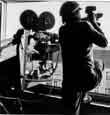
UnO sGUaRDO, Un’imPRessiOne in - siGHt
GERd ConRAdT
Germania est / east Germany
1987, 35mm, col., 10’ senza dialoghi / no dialogues
Una macchina da presa posizionata sulla finestra di una casa di Berlino Ovest scruta per 12 ore quello che avviene nei pressi di un edificio a Berlino est, catturando un’immagine al secondo. Fra le due case, il muro.
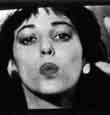
saLUti teLevisivi Da Ovest veRsO est tv-POstCaRDs FROm West tO east
GERd ConRAdT, MIChAELA BuESChER
Germania est / east Germany
1986, Betacam, col., 20’ v.o. tedesca / German o.v.
nate come esperimento mediatico, le cartoline televisive permettevano a ex residenti della DDR di “scavalcare” il muro di Berlino e raggiungere attraverso l’etere gli amici che avevano lasciato dall’altra parte, senza subire alcun tipo di censura. era così possibile salutare i vecchi amici, mostrare loro le nuove case e raccontare la loro nuova vita all’Ovest.
Fotografia / Photography: Carlos Bustamante. montaggio / editing: Axel Martin. musica / music: Frederic Rzewski. Produzione / Produced by: Gerd Conradt Videoproduktion.
a camera looks 12 hours from a house in West Berlin to a building in east Berlin, shooting one frame per second. the Wall is between the two houses.
Fotografia / Photography: Gusztav hamos, Martin Gressmann. montaggio / editing: Gerd Conradt, Michaela Buescher. suono / sound: Fabian Meyer, Paul Stutenbäumer. Produzione / Produced by: Gerd Conradt Videoproduktion, zdF, das kleine Fernsehspiel.
the tv-Postcards were invented as a media experiment. Without being censored former GDR-residents greet their friends from West to east over the iron Wall, via tv they performed, showed their new apartments and spoke of their new life in the West.
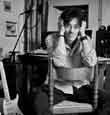
PROteZiOne sCOPPiO e nUOva
FUGa neLL a BeRLinO Dei mURi
KREuzBERG SonATA
PROteCtiOn, BL ast anD a FResH esCaPe in BeRLin, CitY OF WaLLs
“Letture, narrazione, canto, proiezioni esterne e interiori in un dopoguerra altrui. tratte dal romanzo di formazione Il mio primo dopoguerra, di massimo Zamboni (mondadori, 2005), un “libro di pensieri” che narra la possibilità di vivere e trovarsi tra le macerie a uno stato puro che sgomenta, in un incontro illuminante con le essenze. Cronache da una estate-autunno berlinese del 1981; un mondo lontanissimo, che a dispetto del suo essere imbrigliato nello scontro tra i monolitismi di Brežnev e Reagan, nella minaccia della nuovissima bomba al neutrone, è capace di vivere a fianco del muro, anzi, grazie al muro. L’epopea delle case occupate di Kreuzberg, il convegno del tuwat, gli scontri di piazza e le dolcezze della pratica alternativa, i turchi e i gastarbeiter, il rancore dei vecchi, la protezione, lo scoppio, le nuove fughe. Qualche primo sguardo di là dalla Cortina, per scoprirsi uguali al nemico, vestiti come lui. Come lui, spaesati, in attesa di istruzioni che tardano a venire. e quel concorrere da tutta europa a fare di Berlino la protagonista di una stagione d’intensità forse non ripetibile. Per quella prossima caduta del muro scritta nell’aria, impossibile da prevedere eppure già in cammino ovunque. venti anni dopo quella caduta, presi tra Ostalgie di ritorno e nuovi muri, oggi come allora l’unica via di fuga sembra perdersi e ritrovarsi in un realismo inquieto.” (m. Zamboni)
Massimo zamboni www.massimozamboni.it nato a Reggio emilia nel 1957. nome storico della scena musicale italiana, prima con i CCCP – Fedeli alla Linea e poi con i C si, produttore (i Dischi del mulo e Consorzio Produttori indipendenti), autore di colonne sonore per il cinema (Benzina di monica stambrini, Velocità massima e L’orizzonte degli eventi di Daniele vicari, Sevilla 06 / Site Specific di Olivo Barbieri) e scrittore. Dopo la sua uscita dai C si, si dedica alla scrittura: nel 2000 pubblica, con Giovanni Lindo Ferretti, In Mongolia in retromarcia (Giunti), diario di un viaggio fatto nel 1996 da cui è nato anche l’album Tabula rasa elettrificata dei C si. Due anni dopo esce il romanzo Emilia parabolica (Fandango Libri). nel 2004 pubblica il suo primo album da solista, Sorella sconfitta nel 2005 esce per mondadori Il mio primo dopoguerra. Cronache sulle macerie: Berlino ovest, Beirut, Mostar e l’album Apertura, nato dal suo progetto musicale con nada.
Massimo zamboni: voce recitante, canto, basi musicali / narrating voice, singer, backing tracks Marina Parente: voce soprano / soprano
“Readings, narratives, songs, indoor and outdoor projections in someone else’s post-war period. taken from the novel Il mio primo dopoguerra, by massimo Zamboni, a “book of thoughts” which explores with a breathtaking precision the chances of living and coming together among the ruins, in which the essentials are brought crisply and illuminatingly into focus. the record of a summer and autumn in Berlin in 1981; a long-lost world, which, in spite of being embroiled in the struggle between the looming figures of Brezhnev and Reagan and the threat of the brand-new neutron bomb, is able to flourish in the shadow of the Wall, even thanks to the Wall. the epic occupation of the Kreuzberg housing estate, the tuwat Congress, the street battles and non-aggressive new age practices, the turks and the Gastarbeiter, the bitterness of the elderly, the protection, the blast, the fresh escapes. the first glances over the Curtain, and the discovery that you are just like the enemy, dressed just the same. they are just as lost, waiting for instructions that never seem to come. and all the rest of europe is intent on putting Berlin at the heart of a time of earnestness perhaps never to recur. the fate of the Wall is in the air, impossible to predict and yet already sealed in millions of little ways. twenty years after it came down, caught between a backlash Ostalgie and fresh walls, today as then the only way of escape seems to peter out and flare up again in a restless realism.” (m. Zamboni)
Massimo zamboni
www.massimozamboni.it
massimo Zamboni was born in Reggio emilia in 1957, italy. a historic name on the italian music scene, first with CCCP – Fedeli alla Linea and later with C si, he was a musical producer (i Dischi del mulo and Consorzio Produttori indipendenti) has also written the musical score for a number of films (Benzina by monica stambrini, Velocità massima and L’orizzonte degli eventi by Daniele vicari, Sevilla 06 / Site Specific by Olivo Barbieri) and is a writer. after the disbanding of C si, he dedicated himself to writing: in 2000, with Giovanni Lindo Ferretti he published In Mongolia in retromarcia, a travel diary (from which in 1997 sprang C si’s Tabula rasa elettrificata). two years later, he wrote a novel, Emilia parabolica in 2004, he released his first solo album, Sorella sconfitta in 2005, he published Il mio primo dopoguerra. Cronache sulle macerie: Berlino ovest, Beirut, Mostar and another album, Apertura, which arose from a musical project with the italian singer nada.
MARIA CAMPITELLI
alla iv edizione CatODiCa – la rassegna internazionale di videoart promossa dall’associazione culturale Fucinemute – amplia il suo raggio d’azione. L’immagine elettronica in movimento, con tutti i suoi aggiornamenti digitali, rimane il perno centrale di questa manifestazione, tuttavia in questo caso si estende all’azione performativa. si fa cioè video-performance, una delle declinazioni possibili della dilatata sperimentazione linguistica entro cui si muove non solo la video-art ma tutta la ricerca artistica contemporanea.
CatODiCa con la sua scelta campionatura di espressioni video, italiane e straniere si svolge in parallelo con la produzione cinematografica del trieste Film Festival. Con essa certo presenta forti affinità, non fosse altro per le modalità dell’immagine in movimento che si realizza nello snodo temporale. tuttavia le caratteristiche permangono diverse, nei fini come nei mezzi, anche se il cinema si è a sua volta appropriato di formati elettronici e digitali. il video resta uno strumento fondamentale nella comunicazione degli artisti di oggi; con esso materializzano quella vocazione, già insita nelle avanguardie storiche, al racconto che si configura nel tempo. e il racconto può significare molte cose, può vestirsi di simboli e metafore, come rasentare la documentazione, può essere astratto o realistico come un quadro, raccogliere emozioni, proporre visioni e particolari letture dello stato delle cose – una Weltanshaung in digitale – come analizzare stati d’animo, enfatizzare o comprimere situazioni, a seconda della spinta interiore del video-maker. È quasi sempre di breve durata, un flash che illumina la mente e seduce lo sguardo. Le video-performance sono firmate da Angelo Pretolani, Francesco Arena, Guillermo Giampietro. Quella di Pretolani è liberamente ispirata all’happening Fall di allan Caprow. ideata nell’originale per due persone che interagivano raccogliendo foglie e spargendole lungo un percorso, nella performance di angelo Pretolani il protagonista si sdoppia nel personaggio vagamente magrittiano del monitor e nello stesso Pretolani - che ne ricalca i connotati, cappello, valigia - “presenza celeste, di nome, e persona di fatto”. in sostanza un cortocircuito tra rappresentazione e realtà, rafforzata da un’eco di Wim Wenders, attraverso il sonoro tratto da Il cielo sopra Berlino. nel video il personaggio scompare, l’immagine cede alla
RASSEGnA InTERnAzIonALE dI VIdEoARTE
InTERnATIonAL REVIEW oF VIdEo ART
at the fourth edition of CatODiCa – the international series of video-art organised by the Fucinemute cultural association – the event is adopting a broader range of action. the moving electronic image, with all its digital renewals, remains the central element of this event, but in this case it is extended to include performance art. in other words, it becomes video-performance, one of the possible forms of the extended linguistic experimentation within which not only video-art operates, but the whole of contemporary artistic research.
CatODiCa , with its selection of italian and foreign video expressions, unfolds in parallel with the film productions screened at the trieste Film Festival. it presents some strong affinities with it, if nothing else because of the form of a moving image appearing over a set period of time. However, the distinguishing features are somewhat broad, both in terms of intent and of means, even though cinema itself has at times appropriated electronic and digital formats. video remains a fundamental instrument of communication for today’s artists; with it materialises that vocation, one already present in the historical avant-garde movements, for a story unfolding over time. and the story can mean many things: it can take on symbols and metaphors, or make use of documentation; it may be abstract or realistic like a painting, gather feelings, propose visions and particular readings of the state of things – a digital Weltanshaung – or analyse moods, emphasise or compress situations, in accordance with the inner drive of the video-maker. it is almost always short, a flash illuminating the mind and enchanting the eye.
the video-performances are by Angelo Pretolani, Francesco Arena and Guillermo Giampietro
Pretolani’s work is freely inspired by allan Caprow’s happening, Fall. Originally planned for two individuals who interacted by gathering leaves and scattering them along an itinerary, in angelo Pretolani’s performance the protagonist becomes a vaguely magritte-like character of the monitor and Pretolani himself – copying his attributes, hat case – a “celestial presence, of a name and actual person”. in substance, a short-circuit between depiction and reality, reinforced by an echo of Wim Wenders, through the soundtrack taken from Wenders’ Wings of desire.
realtà vissuta, rimane il performer in carne e ossa che alla fine apre la sua valigia, da cui fuoriescono manciate di foglie d’alloro che andranno a oscurare il monitor. Come a dire un desiderio di concretezza a scapito della virtualità diffusa. La video–performance di Francesco arena è tratta da Sospiri/ Breaths un lavoro avviato dall’artista nel 2004 ed espanso fino a oggi in una produzione video in progress che vede abbinate alle immagini bicromatiche – rosso il volto, giallo lo sfondo – una sempre diversa sperimentazione sonora. sono visi in primo piano che “respirano” dietro un vetro, esprimendo diversi stati d’animo. ancora uno scarto tra la vitale, ansimante fisicità dei ragazzi chiamati a respirare davanti alla telecamera e l’icona immateriale che divengono nella proiezione. tra i 23 soggetti raccolti dall’artista si è scelto “Fabio” nella versione performativa live con un corpo danzante, quello di Luca Zampar, che traduce in “carne viva gli stati d’animo costretti nelle videoproiezioni”.
Index - questo il titolo della video-performance di Guillermo Giampietro - si ispira all’Aleph di Borges, cioè quello che, secondo il giudizio di molti critici, viene considerato un punto di partenza che non trova un punto di arrivo, ma solo una direzione. È ancora una volta il conflitto tra illusione e impossibilità reale. Index – suggerisce l’artista – “è quel tipo di struttura formale onnitemporale nella quale è presente il potenziale e il continuo riattivarsi dei sensi e dei significati delle cose”, nell’assurdo tentativo di comprendere la totalità. La video-performance, con la collaborazione di Lara Baracetti, “si presenta come la metafora sempre incompiuta” di una realtà incontenibile in un “presente vivente”. e poi c’è la serie di video-proiezioni, la spina dorsale di Catodica, ospitate nei vari spazi del teatro miela, sotto il titolo di Aggiornamenti si propongono infatti lavori di artisti (alcuni non tutti) già noti al pubblico di questa rassegna, come masbedo, Rebecca agnes, almagul menlibayeva, Ofri Cnaani… per il particolare spessore semantico, e la cifra linguistica ben riconoscibile. Rebecca Agnes ha legato il suo nome al processo dell’animazione, dischiudendo un mondo in bilico tra fantascienza e rigogliosa quanto poetica, immaginazione visiva.
i Masbedo, al vertice della produzione video italiana, con questo 11.45.03 – titolo che indica il time code – ci offrono un singolare ragionamento sulla vita e sulla morte alimentato dalla potenza
in the video, the character vanishes and the image gives way to lived experience. What remains is the performer in flesh and blood who, at the end, opens his suitcase and pulls out handfuls of laurel leaves that gradually obscure the monitor. in other words. a desire for concreteness in the place of the commonplace virtuality.
the video–performance of Francesco arena is taken from Sospiri/Breaths, a work started by the artist in 2004 and expanded up to the present day in a video production that is still a work in progress and which sees the two-tone images – red face, yellow background – matched with an ever-different experimentation with sound. What are shown are faces in the foreground “breathing” behind a window, expressing various moods. there is a division between the vital, yearning physicality of the youths invited to breath in front of the camera and immaterial icon they become in the projection. From the 23 subjects brought together by the artist, “Fabio” was chosen in the live performance version with a dancing body, that of Luca Zampar, who translates into “live flesh the moods betrayed in the video-projections”.
the title of Guillermo Giampietro’s video-performance is Index, and it is inspired by Borges’ Aleph; in other words, by what is in the opinion of many critics considered a starting point that never finds a finishing point, but only a direction. it is once again the conflict between illusion and real impossibility. index, suggests the artist, “is that type of formal, omnitemporal structure in which is present the potential and continuous reactivation of the senses and meanings of things”, in the absurd attempt of understanding the totality. With the collaboration of Lara Baracetti, the video-performance “appears as the always unfinished metaphor” of an uncontainable reality in a “living present”.
and then there is the series of video-projections, the backbone of Catodica, screened in the various spaces of the teatro miela, under the title of Aggiornamenti (Updates). the work of artists already known to the public of this event (and others that are not) are offered, such as masbedo, Rebecca agnes, almagul menlibayeva, Ofri Cnaani... for their specific semantic worth and easily recognisable linguistic style. Rebecca Agnes has linked
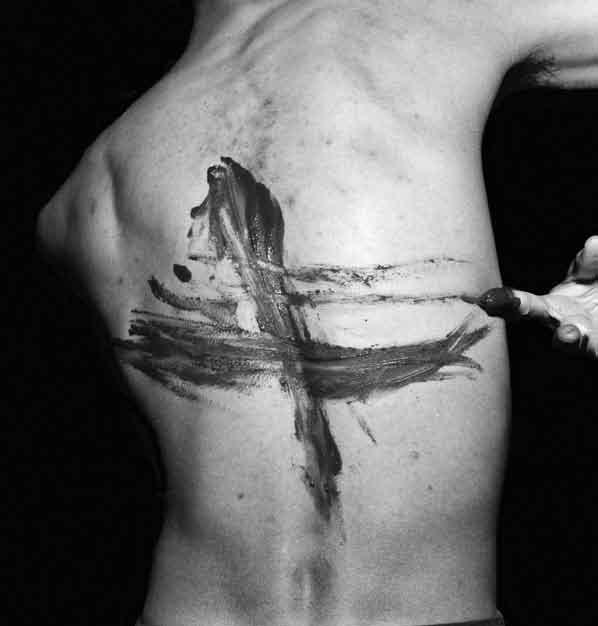
delle immagini, in un paradigma di verità e paradosso. Con i due video Pathos e Inside Collusion ofri Cnaani (israele) ribadisce le sue tematiche – costrizioni che comportano tensioni psicologiche, apparenze ludiche che nascondono violenza – tra scontri mimetizzati da maschere animalesche e rivisitazioni della tragedia greca ambientata sul tetto di un moderno edificio. Almagul Menlibayeva, con Kissing Totems abbandona la cultura islamico/animisitca del Kazakistan, per raccontare il viaggio di una bimba verso l’adolescenza tra strutture vetero industriali dismesse, attraverso misteriose apparizioni frammentate e fantasmatici rituali femminili. tra i nomi nuovi, Bruno Muzzolini con Anema e core trasporta nel severo paesaggio dell’islanda il calore mediterraneo della canzone napoletana mentre davide Bertocchi dispiega Atomium Odissey; ossia l’atomo metaforico rotante nello spazio cosmico che in esso si assorbe. Di-stanze di Angela Pietribiasi è una intensa meditazione su un luogo abbandonato, Antonio Giacomin, con la collaborazione di Francesca Dibelli, racconta una danza in mezzo alla neve, dove le immagini diventano apparizioni di sogno. C’è poi il gruppo di artisti provenienti dall’albania e dal Kosovo, Eltjon Valle, Fani zguro, diversamente documentativi di realtà delle loro terre, mentre Alban Muja assieme a Joanna Rytel intesse una breve, spregiudicata love-story. L’inglese hetain Patel, che ha dato l’immagine alla locandina, espone il rituale indiano “Kanku-Raga” con cui elabora uno stretto intreccio tra suono, corpo, percezione visiva. Gerlinde helm lavora sulle possibilità trasformistiche del mezzo digitale, giocando sulla specularità, in una frenetica, e frammentata visione del mondo circostante. tra gli artisti locali, ai quali vien dato spazio per un confronto con le svariate esperienze di questo settore nel mondo, Carlo Andreasi rivela la sua acculturata sensibilità con l’ossessione di un occhio ingigantito; autoreferenziale il discorso allusivo e simbolico di Roberta Cianciola davide Skerlj con Lazarus ribadisce il suo orientamento narrativo-cinematorafico e Massimo Premuda in “popcorning”, mette in atto l’analogia rilevata tra il comportamento del mais riscaldato che diviene popcorn e quello dei porcellini d’india in stato di eccitazione. Lucia Flego infine liberamente documenta un fastoso matrimonio giapponese, smagliante di colori.
her name to animation, revealing a world suspended between science fiction and a rigorous yet poetic visual imagination. Masbedo, at the peak of italian video production, offer us an unusual vision of life and death, fed by the power of their images, in a paradigm of truth and paradox, with their 11.45.03, a title indicating the time code.
With the two videos, Pathos and Inside Collusion, ofri Cnaani of israel portrays themes – constrictions leading to psychological tensions, playful appearances concealing violence – between clashes camouflaged by animal masks and revisitations of Greek tragedy set on the roof of a modern building.
With Kissing Totems, Almagul Menlibayeva abandons the islamic/animistic culture of Kazakhstan to tell the story of a child approaching adolescence amidst crumbling industrial structures, making use of mysterious fragmented apparitions and phantom-like female rituals.
among the new names are Bruno Muzzolini, with Anema e core, who transports the mediterranean warmth of neapolitan song to the severe icelandic landscape, while Davide Bertocchi presents Atomium Odissey: a metaphoric atom rotating in the cosmis space absorbed into it. Di-stanze by Angela Pietribiasi is an intense meditation about an abandoned place, while Antonio Giacomin, with the collaboration of Francesca Dibelli, presents a dance in the middle of the snow, in which the images become dreamlike apparitions.
there is also a group of artists from albania and Kosovo, Eltjon Valle, Fani zguro, both of whom document the reality of their lands in different ways, while Alban Muja, together with Joanna Rytel, weave a brief, explosive love story. the english hetain Patel, who provided the image for the poster, exhibits an indian ritual, “Kanku-Raga”, with which he elaborates a tight relationship between sound, body and visual perception. Gerlinde helm works on the transformational possibilities of the digital medium, playing on specularity in a frantic and fragmented vision of the surrounding world.
among the local artists, who are accorded a space for a comparison with the many experiences in this sector from around the world, we find Carlo Andreasi who betrays a cultured sensitivity and the obsession of an enlarged eye; the
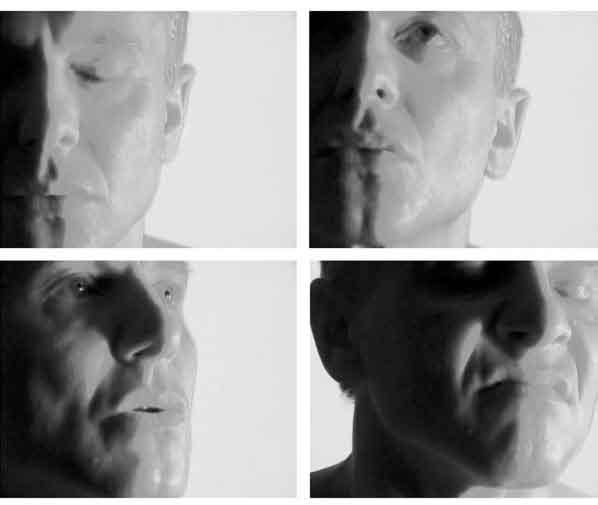
anche quest’anno CatODiCa si conclude con un concerto. È la volta dei port-royal, di Genova. Risalendo da un post-rock, ora privilegiano svariate sperimentazioni elettroniche. affascinanti nelle avvolgenti atmosfere nordiche come travolgenti di pulsante vitalità nella straordinaria molteplicità di riferimenti stilistici, si distinguono anche per una rievocazione dell’est d’europa in un auspicato connubio tra Oriente ed Occidente. ma il più diretto legame con CatODiCa consiste nella presenza all’interno del gruppo di un video-artista, Sievo damantakos, che è considerato alla stessa stregua dei musicisti e il cui ruolo di produzione di immagini è determinante per la fisionomia della band.
allusive and symbolic theme of Roberta Cianciola is selfreferential. With his Lazarus, davide Skerlj repeats his narrative and cinematographic approach, and Massimo Premuda in “popcorning” displays the analogy between the behaviour of heated corn that becomes popcorn and that of excited guinea pigs. Finally, Lucia Flego freely documents a grand Japanese wedding, bright with colour. this year, CatODiCa concludes once again with a concert, given by port-royal of Genoa. Based on post-rock, they now work with a variety of electronic experiments. as fascinating in their enveloping nordic atmospheres as they are in the pulsating vitality and extraordinary multiplicity of stylistic references, they also stand out for a re-evocation of eastern europe in a positive combination of east and West. But the most direct link with CatODiCa consists in the presence within the group of a videoartist, Sievo damantakos, considered a fundamental part of the band and whose role in the production of images is vital for the style it proposes.
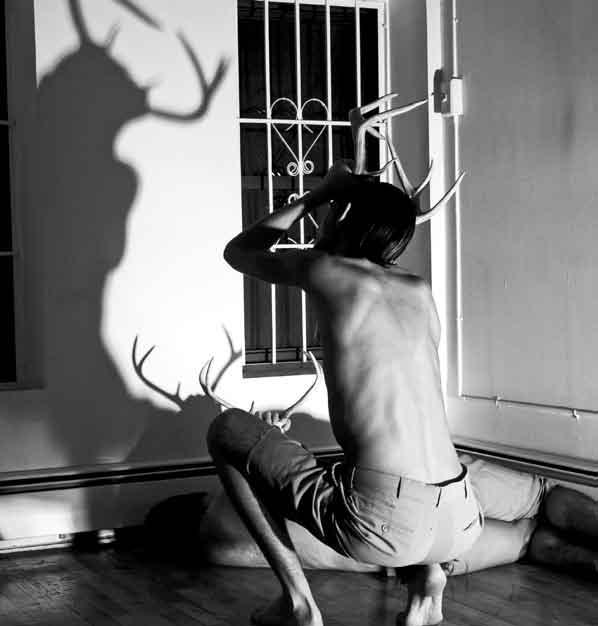
CATodICA 4
Programma / Programme
Video-performance / Video-performances
angelo Pretolani, Fall, 2008, 15’
Guillermo Giampietro, Lara Baracetti performer, Index, 2008, 14’
Francesco arena, Respiri / Breaths – Fabio – Luca Zampar, coreografia e danza, sound designer elio martuscello (substance 2007), 15’40”
Aggiornamenti / updating
Rebecca agnes, Big Bean that landed on Earth’, 2008, DvD, 6’23”, courtesy Galerie Davide Gallo, Berlino masbedo, 11.45.03, 2004, 11’15”, DvD, courtesy Galleria Pack, milano
Ofri Cnaani, Pathos, 2007, 15’20”, DvD courtesy Galleria Pack, milano
Ofri Cnaani, Inside Collusion, 2006, 6’21”, DvD courtesy Galleria Pack, milano
almagul menlibayeva, Kissing Totems, 2008, DvD, 8’56”, courtesy Galerie Davide Gallo, Berlino
Bruno muzzolini, Anema e core, 2008, 4’34”, full hd video
Davide Bertocchi, Atomium Odissey, 2007, DvD, 4’16”
angela Pietribiasi, Di-stanze, 2008, DvD, 3’
antonio Giacomin, coreografie di Francesca Debelli, danSneg, 2004, DvD, 3’48” eltjon valle, The Marinza project, 2008, DvD-PaL, 3’04”
Fani Zguro, Street by Street, 2007, DvD, 9’
alban muja-Joanna Rytel, Play Girl, 2007, DvD, 4’30”
Hetain Patel, Kanku Raga, 2007, DvD, 6’23”, courtesy Galerie Davide Gallo, Berlino
Gerlinde Helm, Resonance of one single moment, 2000/2008, DvD, 2’10”
Carlo andreasi, Come un bambino che canta nel buio – n. 2, 2008, DvD, 3’84”
Roberta Cianciola, È tutta farina del mio sacco, 2008, DvD, 2’05” (montaggio / editing Cecilia Donaggio)
Pioggia d’oro, 2008, DvD, 4’40”
Davide skerlj, Lazarus, 2007/2008, DvD, 2’40”
massimo Premuda, Popcorning, 2008, DvD, 2’46”
Lucia Flego, Wedding Cerimonies, 2008, DvD, 4’14”
elisa Zurlo e Lucio Perini, Domi Bellique, 2008, 6’30”, Production Grenade
port-royal in concerto / port-royal in concert
01 / Guillermo Giampietro, Index, 2008
02 / ofri Cnaani, Pathos, 2007
03 / Almagul Menlibayeva, Kissing Totems, 2008
04 / Lucia Flego, Wedding Cerimonies, 2008
05 / Alban Muja-Joanna Rytel, Play Girl, 2007
06 / Rebecca Agnes, Big Bean that landed on Earth’, 2008
07 / Angelo Pretolani, Fall, 2008
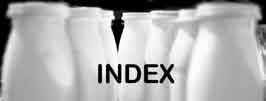

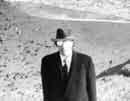
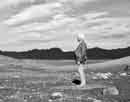

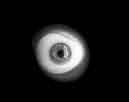
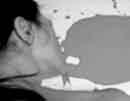
08 / Carlo Andreasi, Come un bambino che canta nel buio –
09 / Angela Pietribiasi, Di-stanze, 2008
10 / Eltjon Valle, The Marinza project, 2008
11 / Bruno Muzzolini, Anema e core, 2008
12 / Roberta Cianciola, È tutta farina del mio sacco, 2008
13 / Masbedo, 11.45.03, 2004

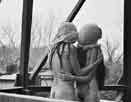
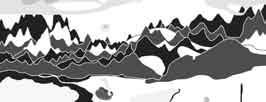

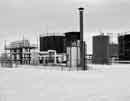
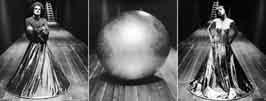
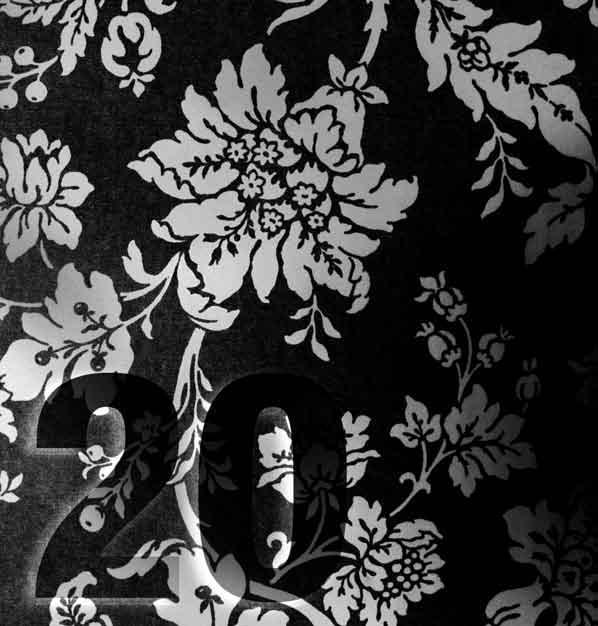
Bujar Alimani
nasce nel 1969 a Patos, in albania. studia pittura e regia teatrale all’accademia di Belle arti di tirana. nel 1992 emigra in Grecia, dove lavora come assistente alla regia in numerosi film greci. vive e lavora ad atene.
Bujar alimani was born in Patos, albania, in 1969. He studied Painting and stage directing at the academy of Fine arts in tirana. in 1992 he emigrated to Greece. He worked as an assistant director in several Greek films. He lives and works in athens.
2002 To katoi cm; Premi / awards: Drama, Festival del cortometraggio - miglior film balcanico / Best Balkan Film 2006 Ygraerio cm; Premi / awards: Drama, Festival del cortometraggio - miglior regia, Premio speciale della giuria / Drama short Film Festival - Best direction, special Jury Prize; Premio dell’associazione dei critici greci / the Greek Film Critics’ association award; salonicco, Festival internazionale del cinema - terzo premio nazionale / international thessaloniki Film Festival - third Hellenic national Film award 2007 Bussula cm; Premi / awards: montpellier Film Festival - Prix Ciné Cinécourts, CineCinema ; siena Film Festival - Premio speciale della giuria / special Jury Prize 2009 Pera apò tin amnistìa
Thanos Anastopoulos È nato ad atene nel 1965. Ha studiato Filosofia all’Università di ioannina in Grecia, e si è specializzato all’Università di Parigi i (Pantheon sorbonne) e all’ecole des Hautes etudes en sciences sociales. nel 1996 è stato uno dei fondatori di Fantasia audiovisual Ltd, società di produzione che si occupa anche di post-produzione. È stato anche coordinatore della sezione greca al Festival internazionale del Cinema di salonicco. Ha diretto cortometraggi e documentari presentati in diversi festival internazionali. nel 2004 il suo primo lungometraggio Olo to varos tou kosmou è stato presentato al festival di Rotterdam. Diorthosi, suo secondo film, è stato presentato per la prima volta a salonicco e in molti altri festival (il Forum della Berlinale, new York, Buenos aires, Crossingeurope, La Rochelle, Karlovy vary, sarajevo, montreal, tous ecrans, Festival des 4 écrans, tallinn, fra gli altri), vincendo diversi premi. il film è stato selezionato per rappresentare la Grecia agli Oscar, nella categoria dei film in lingua straniera.
thanos anastopoulos was born in athens in 1965. He studied Philosophy at the University of ioannina, Greece. He made his post graduate studies at the University of Paris i (Pantheon sorbonne) and the ecole des Hautes etudes en sciences sociales. in 1996, he cofounded Fantasia audiovisual Ltd, a production company with its own post production facilities. He has also worked as the coordinator of the Greek Films section at the thessaloniki international Film Festival. He directed short films and documentaries that were screened in several international film festivals. in 2004 his first feature film Olo to varos tou kosmou premiered at the Rotterdam international Film Festival. Diorthosi is his second feature film. Premiered at thessaloniki Film Festival, the film was presented in several international film festivals (Berlinale’s Forum, new York, Buenos aires, Crossingeurope, La Rochelle, Karlovy vary, sarajevo, montreal, tous ecrans, Festival des 4 écrans, tallinn, among others) and won several awards. it was also selected to represent Greece for the academy awards for Foreign Language Film.
1984 Nyktodia cm, super 8 1989 Theatis cm 1993 I Poli kato apo tin poli cm, video, doc. 1998 Pos se lene? doc. (diretto con / directed with stella theodorakis) 2004 Olo to varos tou kosmou 2007 Diorthosi; Premi / awards: salonicco, Festival internazionale del cinemamiglior sceneggiatura / international thessaloniki Film Festival - Best screenplay award; Crossingeurope, Linz - menzione speciale della Giuria / special mention of the Jury; tous ecrans, Ginevra - miglior attore protagonista / tous ecrans, Geneva - Best actor award
Anghelikì Antonìou nasce ad atene, dove si laurea in architettura. studia Cinema alla DFFB - accademia di Cinema e televisione - di Berlino, dove ha anche lavorato come sceneggiatrice e regista. Ha diretto cortometraggi, documentari e lungometraggi, e vive tra atene e Berlino. angeliki antoniou was born in athens. she studied architecture in Greece and Cinema at the DFFB (German Film and television academy in Berlin) in Berlin. she works as a scriptwriter and film director in Germany and in Greece. she has directed shorts, features and documentaries. she lives between athens and Berlin.
filmografia scelta / selected filmography
1984 Under A Foreign Sky cm 1986 Persephoni cm; Premi / awards:
Drama, Festival del cortometraggio - miglior cortometraggio / Drama short Film Festival - Best short Film 1989 Gefangene des Meeres doc. 1992 Donussa; Premi / awards: Locarno - Premio della Giuria dei Giovani / Youth Jury award 1996 Tänze der Nacht doc. 1997 Verspielte Nächte; Premi / awards: salonicco, Festival internazionale del cinema - miglior film, miglior regia, miglior sceneggiatura, miglior attrice / international thessaloniki Film Festival - Best film, Best director, Best script, Best actress 1999 Heimlicher Tanz film tv 2000 Allein unter Männern film tv 2001 Messerscharf film tv 2006 Eduart; Premi / awards: Premi del ministero della Cultura Greco - miglior film, miglior regia, miglior sceneggiatura, miglior scenografia, miglior musica, miglior suono, miglior montaggio, migliori costumi, miglior trucco / Hellenic ministry of Culture national Cinema awards - Best Film, Best Director, Best screenplay, Best set Design, Best music, Best sound, Best editing, Best Costumes, Best make-up; salonicco, Festival internazionale del cinema - Premio FiPResCi / international thessaloniki Film Festival - FiPResCi award; montpellier Film Festival - antigone d’oro, menzione speciale della Giuria dei Giovani / Golden antigone, special mention of the Youth Jury
dimos Avdeliodis È nato sull’isola di Chios nel 1952. studia filosofia all’Università di atene e si diploma anche presso l’accademia di arti drammatiche “iorgos theodossiadis”. Lavora come regista sia nel cinema che nel teatro.
Dimos avdeliodis was born on the island of Chios in 1952. He studied at the athens University school of Philosophy and at the “Yorgos theodossiadis” Drama school. He works both as film and theatre director.
1982 Athèmitos synagonismòs cm; Premi / awards: Drama, Festival del cortometraggio - Premio della Giuria / Drama short Film Festival - Jury Grand Prix 1986 To dendro pou pligòname; Premi / awards: Berlino - miglior Film della giuria dei giovani / Berlin - Children and Young People’s award 1990 I Niki tis Samothrakis; Premi / awards: salonicco, Festival internazionale del cinema - miglior musica, miglior suono, migliori costumi / international thessaloniki Film Festival - Best music, Best sound, Best Costumes 1999 I earinì sýnaxis ton agrofylakon; Premi / awards: Berlino - Premio “Don Quijote” della Federazione internazionale delle società cinematografiche / Berlininternational Federation of Film societies “Don Quijote” award; Premi del ministero della Cultura Greco - terzo miglior film, miglior regia / Hellenic ministry of Culture national Cinema awards - third Prize for Best Feature Film, Best Direction; salonicco, Festival internazionale del cinema - menzione speciale della giuria FiPResCi / international thessaloniki Film Festival - FiPResCi special mention
Aris Bafaloukas
nasce ad atene nel 1972. a cinque anni inizia a nuotare e nel 1984 diventa campione greco per otto anni consecutivi. nel 1995 si laurea
in educazione Fisica presso il Dipartimento sportivo dell’Università statale di atene e poi in Cinema presso la scuola di cinema stavrakos. Riceve una borsa di studio dal Centro di Cinema Greco e consegue un master in regia teatrale e cinematografica in inghilterra. Ha collaborato con registi affermati in qualità di assistente alla regia, e dal 1997 lavora come regista. Ha collaborato sia come regista che come insegnante al programma educativo greco Let’s go cinema al momento insegna alla scuola di cinema stavrakos e in altre scuole di recitazione.
aris Bafaloukas was born in athens in 1972. in 1977 he started swimming and since 1984 was Greek champion for eight consecutive years. in 1995 he graduated from the Physical education Department of sports training of the national University of athens and from Cinema at the stavrakos Film school. He received a scholarship for post-graduate studies from the Greek film centre and went to england, where he obtained a ma in Film & tv Directing. He has worked as an assistant director with well-known directors. since 1997 he has been working as a film director. He had worked also as film director and teacher at the Greek educational programme Let’s go cinema. He is currently teaching at the stavrakos Film school and in other Drama schools.
1995 To potami cm 1999 Blackout cm 1999 I svoura cm; Premi / awards: Drama, Festival del cortometraggio - miglior musica / Drama short Film Festival - Best music; Premio del Centro di Cinema Greco per lo sviluppo della sceneggiatura / Greek film Centre’s award for the script Development 2001 See no evil cm; Premi / awards: Premi del ministero della Cultura Greco - secondo miglior cortometraggio / Hellenic ministry of Culture national Cinema awards - second Best short Film; Drama, Festival del cortometraggio - secondo miglior film di finzione / Drama short Film Festival - second Best Fiction Film; Premio per il miglior film di finzione greco dell’associazione dei critici cinematografici greci / award for Best Greek fiction film from the Greek Cinema Critics’ association; Premio per il miglior film dall’associazione greca dei tecnici della televisione e del cinema / award for Best Fiction Film from the Greek Cinema and tv technicians’ association 2004 Miden thetikò cm; Premi / awards: Premi del ministero della Cultura Greco: secondo miglior cortometraggio / Hellenic ministry of Culture national Cinema awards - second Best short Film 2006 O thisavròs tou Pàrnona film tv 2009 Apnia
Arthur Bálint
È nato a Zetelaka, in Ungheria, nel 1970. Diplomatosi nel 2001 presso l’accademia di teatro e Cinema di Budapest, lavora come operatore free lance e regista. arthur Bálint was born in Zetelaka (Hungary) in 1970. Graduated in 2001 from the academy of Drama and Film in Budapest, he works as a freelance cameraman and director. filmografia scelta / selected filmography 1998 Szerencsés 13 doc. 1999 Tükröm-Tükröm cm 2000 Asszony doc. 2005 Ikrek (Lajos és Sándor) doc.; Piine=kenyér doc. 2007 Poros öltöny doc.; Kisvárosi Mozi cm, doc.
aida Begić
È nata a sarajevo nel 1976. nel 2000 si è diplomata in regia presso i’accademia di arti dello spettacolo (sarajevo Centar za savremenu Umjetnost) di sarajevo. Durante la guerra, oltre agli studi ha diretto e prodotto numerosi fra progetti di teatro, televisione e video. È entrata poi a Fabrica come video artista e durante questo periodo ha realizzato il cortometraggio Prvo smrtno iskustvo, selezionato al Festival di Cannes nel 2001 e presentato anche al trieste Film Festival. nel 2002 ha realizzato pubblicità per la televisione e ha iniziato a insegnare presso il Dipartimento di regia dell’accademia di arti dello spettacolo di Sarajevo. Nel 2004, ha fondato con Elma Tataragić la casa di produzione indipendente mamafilm. Snjieg, primo film che producono insieme, ha vinto il primo premio della settimana internazionale della Critica a Cannes.
Aida Begić was born in Sarajevo, in 1976. In 2000 she graduated from the Directing Department of the academy for Performing arts (Centar za savremenu Umjetnost) in sarajevo. During the war, besides her studies, she directed and produced several theatre, television and video projects. she has been a Fabrica video artist. During her staying in Fabrica (italy) she realized the short fiction Prvo smrtno iskustvo, selected at the Cannes Film Festival 2001, presented also at the trieste Film Festival. in 2002 she directed several tv commercials and started teaching at the Directing Dept. of the academy of Performing arts in sarajevo. in 2004 she founded an independent production company Mamafilm together with her colleague Elma Tataragić and Snijeg is their first feature film.
1995 Autobiografija cm, doc., super8 1997 Trijumf Volje cm, doc., video 2001 Prvo smrtno iskustvo cm, doc. 2003 Sjever je poludio cm 2008 Snijeg; Premi / awards: Cannes, settimana internazionale della Critica - miglior Film / Cannes, Critics’ Week - Best Film
dániel Béres
Filmmaker indipendente, è nato a Budapest nel 1975. nel 2005 ha partecipato al talent Campus della Berlinale e anche al seminario estivo del Berlin today award con la sceneggiatura di Malter, che è stata una fra le 10 finaliste del workshop. Ha partecipato anche al nipkow Programme da giugno 2006 a febbraio 2007.
Dániel Béres is an independent filmmaker, born in Budapest in 1975. in 2005 he participated at the Berlinale talent Campus and also at the summer workshop of the Berlin today award with the screenplay of Malter, which was one of the 10 finalists aty the workshop. He was fellow of the nipkow Programme between June 2006 and February 2007.
2004 Páternoszter cm 2006 Hét hónappal később cm 2008 Malter cm
Timothy Booth
nato a Kildare nel 1943, tim Booth si è affermato come artista pop nel panorama artistico irlandese degli anni '60. È stato poi uno dei fondatori del complesso “Dr. strangely strange” per passare poi al cinema d'animazione. tra le sue opere The Family Holiday, SW7, The Prisoner e Ulys. Ha partecipato a numerosi festival del cinema internazionali e le sue opere sono esposte in collezioni pubbliche e private di tutto il mondo.
Born in Kildare in 1943, timothy Booth was a leading irish pop artist during the sixties. after being among the founders of the “Dr. strangely strange” band, he dedicated himself to animation films. He directed among others The Family Holiday, SW7, The Prisoner and Ulys and with his works he participated to several international film festivals. His works are in public and private collections around the world. filmografia non disponibile / filmography not available
1997 Ulys cm, animazione / animation
Walerian Borowczyk (1923-2006)
nasce a Kwilcz, nei pressi di Poznan, nel 1923 (anche se alcune biografie riportano come data il 1932). Dal 1946 al 1951, studia pittura e litografia presso l’accademia di Belle arti di Cracovia. Dopo aver vinto il premio nazionale per la litografia, nel 1953, e aver pubblicato con Jan tarasin il volume di disegni Rysunki satyryczne, Borowczyk incontra Jan Lenica, altro grande protagonista del cinema d’animazione, con cui ha in comune l’attività di affichiste. inizia così un sodalizio personale che sfocia, sul piano professionale, nella realizzazione di alcuni cortometraggi che rivoluzionano il modo di fare animazione. Dopo alcuni corti (Był sobie raz e Nagrodzone uczucie, fra gli altri), i due realizzano Dom, vera e propria opera surrealista, con cui vincono nel 1958 il Grand Prix al Festival del Cinema sperimentale di Bruxelles. alla fine dello stesso anno, Borowczyk e Lenica si recano a Parigi per quello che sarebbe dovuto essere un soggiorno di poche settimane. Decidono, invece, di rimanere in Francia, ma capiscono anche che è arrivato il momento di seguire strade diverse. sempre nel 1958, Boro (come lo chiamano gli amici parigini) realizza così Szkoła e, l’anno dopo, Les Astronautes (che si avvale della collaborazione dell’amico Chris marker), che fanno di lui uno dei massimi protagonisti del cinema di animazione europeo. Gli anni ‘60 iniziano con Boro che si divide tra la realizzazione di corti pubblicitari di animazione per il mercato italiano e inglese (televisivi e non) e la continuazione della sua attività di creatore di mondi in cui alla riattualizzazione di tecniche di animazione tradizionale si unisce l’esplorazione di un mondo astratto e surreale: sono gli anni di capolavori come Renaissance e Les Jeux des anges, rispettivamente del 1963 e del 1964. nel 1962 realizza anche Théatre de Monsieur et Madame Kabal - Concert, nelle intenzioni dell’autore primo di una serie di episodi dedicati ai signori Kabal e che, a seguito del fallimento dell’iniziativa, diventa il germe del suo primo lungometraggio di animazione, Théatre de Monsieur e Madame Kabal (il teatro del signore e della signora Kabal, 1967), che lo impone sempre
di più come uno dei più interessanti sperimentatori dell’epoca. nel 1968 dirige il suo primo lungometraggio dal vero, Goto, l'île d'amour (Goto, l’isola dell’amore; nel 1966 aveva già realizzato il corto Rosalie, interpretato dalla moglie Ligia Branice, premiato a Berlino, Locarno e Cracovia). nel 1971 gira Blanche (Blanche - Un amore proibito), nel 1974 quello che diventerà il suo primo successo internazionale, Contes Immoraux (i Racconti immorali di Borowczyk), cui seguono Dzieje grzechu (storia di un peccato, 1975, tratto da un romanzo di uno dei più famosi scrittori polacchi, stefan Zeromski, girato nella madrepatria e considerato da molti critici il suo capolavoro) e La Bête (La Bestia, 1975), Interno di un convento (1977-78). in questi film, la vena di pervadente erotismo già presente in Goto diventa la cifra tematica e stilistica più evidente del cinema di Borowczyk. sono gli anni del successo (seppur a fasi alterne) e della grande notorietà, ma anche gli anni in cui Boro inizia a portarsi dietro l’etichetta di “pornografo” (soprattutto dopo Interno di un convento), anni in cui la produzione dal vero si mescola e alterna al cinema d’animazione e al documentario (come testimoniano Le Phonografe, del 1969, o un curioso corto del 1973, Une collection particulière, in cui mostra la sua collezione personale di statuine, cianfrusaglie, teatri d’ombre, lanterne magiche a sfondo erotico e osceno). Gli anni ’80 vedono la realizzazione di alcune pellicole, fra cui Ars amandi (1983) ed Emmanuelle V (1987, ennesimo capitolo della serie), ma anche il progressivo ritrarsi di Boro dal cinema, sfociato nel suo ritiro definitivo nel 1988. negli anni successivi, continua la sua attività di pittore, scultore e scrittore (due i libri da lui pubblicati: Anatomia diabła del 1992, tradotto in italiano come Anatomia del diavolo, e Moje polskie lata, del 2002). nel 2006 muore a Parigi, in seguito a un attacco cardiaco. Walerian Borowczyk was born in Kwilcz, near Poznan, in 1923 (even though some biographies give the date as 1932). He studied painting and lithography at the academy of Fine arts in Krakow from 1946 to 1951. after winning the national Lithography Prize in 1953 and publishing a volume of drawings entitled Rysunki Satyryczne together with Jan tarasin, Borowczyk met Jan Lenica, another leading figure in animated films, who, like Borowczyk, was also a poster designer. in this way began a personal association leading to the making of a number of short films which revolutionized the making of animated films. after a number of short films (such as Był sobie raz and Nagrodzone uczucie), the two made Dom, an out-and-out surrealist work, which won the 1958 Grand Prix at the Brussels Festival of experimental Cinema. at the end of that year, Borowczyk and Lenica went to Paris for what was to have been a stay of only a few weeks. instead, they decided to stay in France, but they also realized the time had come to go their different ways. it was again in 1958 that Boro (as his Parisian friends called him) made Szkoła and in the next year Les Astronautes (which saw him joined by his friend Chris marker), establishing him as one of the leading figures in the world of european animated films. in the early sixties, Boro divided his time between making short animated advertisements for the italian and British
markets (for both television and cinema) and continuing his work creating worlds using the revival of traditional animation techniques to explore an abstract and surreal world. this is the period when he made masterpieces such as Renaissance and Les Jeux des anges, in 1963 and 1964 respectively. in 1962 he also made Théatre de Monsieur et Madame Kabal - Concert, which he intended as the first of a series of episodes devoted to the Kabals and which, after the project fell through, became the nucleus of his first feature-length animated film, Le Théatre de Monsieur et Madame Kabal (mr. and mrs. Kabal’s theatre, 1967), which confirmed him as one of the most innovative filmmakers of the period. in 1968 he made his first nonanimated feature film, Goto, l'île d'amour (Goto, island of Love; in 1966 he had already made the short film Rosalie, starring his wife Ligia Branice, which won prizes in Berlin, Locarno and Krakow). in 1971 he shot Blanche and in 1974 he made what was to become his first international success, Contes immoraux (immoral tales), followed by Dzieje grzechu (an adaptation of a novel by one of the most famous Polish writers, stefan Zeromski, which was filmed in his homeland and considered by many critics to be his masterpiece) and La Bête (the Beast, 1975) and Interno di un convento (1977-78). in these films the pervasive atmosphere of eroticism already present in Goto becomes the predominant theme and stylistic hallmark of Borowczik’s cinema. these are the years of his greatest (albeit intermittent) success and considerable notoriety, as well as being the period when Boro began to find the label “pornographer” pinned to him (especially after Interno di un convento). at this time he alternated between animated, unanimated and documentary films (as borne out by Le Phonografe, made in 1969, or a curious short film made in 1973, Une Collection particulière, in which he exhibits his private collection of erotic and at times frankly obscene statuettes, knickknacks, shadow theatres and magic lanterns). in the eighties he made a certain number of films, including Ars amandi (the art of Love, 1983) and Emmanuelle V (1987, one of many in the series), but by then Boro was gradually withdrawing from cinema, a move he made once and for all in 1988. in subsequent years he continued to paint, sculpt and write (publishing two books: Anatomia diabła, in 1992, and Moje polskie lata, 2002). Walerian Borowczyk suffered a fatal heart attack in Paris in 2006.
1946 Sierpień cm, 8mm 1949 Magik cm, 8mm; Tłum cm, 8mm 1953 Głowa cm, 16mm 1954 Zywe fotografie cm, doc., 16mm; Atelier de Férnand Léger cm, doc., 16mm 1955 Skrommy fotograf cm, 16mm; Jesień cm, 16mm 1957 Był sobie raz cm, animazione / animation (diretto con / directed with Jan Lenica); Nagrodzone uczucie cm, animazione / animation (diretto con / directed with Jan Lenica); Striptease cm, animazione / animation (diretto con / directed with Jan Lenica); Dni ośtwiaty cm, animazione / animation (diretto con / directed with Jan Lenica); Sztandar Młodych cm, animazione / animation (diretto con / directed with Jan Lenica) 1958 Dom cm, animazione / animation (diretto con / directed with Jan Lenica); Premi / awards: Bruxelles, Festival del Cinema sperimentale - Gran Premio / Brussels,
international Competition of experimental Film - Grand Prix; Szkoła cm, animazione / animation, Premi / awards: Oberhausen - menzione speciale / special mention 1959 Les Astronautes (diretto con / directed with Chris marker) cm, animazione / animation; Premi / awards: Oberhausen - Premio FiPResCi / FiPResCi Prize; Terra incognita cm, animazione / animation; Le Magicien cm, animazione / animation; La Tête cm, animazione / animation; La Foule cm, animazione / animation; La Boîte à musique cm, animazione / animation; Solitude cm 1962 Théatre de Monsieur et Madame Kabal - Concert cm, animazione / animation 1963 L’Encyclopédie de grand-maman en 13 volumes cm, animazione / animation; Holy Smoke cm, animazione / animation; Renaissance cm, animazione / animation; Les Stroboscopes cm; Magasins du XIX siècle cm, animazione / animation; Les Bibliothèques cm, animazione / animation; Les Écoles cm, animazione / animation; La Fille sage cm, animazione / animation; L’Écriture cm, animazione / animation; Gancia cm, animazione / animation; Le Petit Poucet cm, animazione / animation 1964 Les Jeux des anges cm, animazione / animation; Le Musée cm, animazione / animation 1965 Le Dictionnaire de Joachim cm, animazione / animation; Premi / awards: Oberhausen - Premio FiPResCi / FiPResCi Prize; Théatre de Monsieur et Madame Kabal - Une été torride cm, animazione / animation 1966 Rosalie cm, Premi / awards: Berlino - Orso d’argento / Berlin - silver Bear; Locarno - menzione speciale / special mention, Cracovia - Premio speciale della Giuria / Cracow - special Jury Prize 1967 Le Théatre de Monsieur et Madame Kabal (il teatro del signore e della signora Kabal / mr. and mrs. Kabal’s theatre) animazione / animation; Gavotte cm; Diptyque cm 1968 Goto, l'île d'amour (Goto, l’isola dell’amore / Goto, island of Love) 1969 Le Phonographe cm, animazione / animation 1971 Blanche (Blanche - Un amore proibito) 1973 Une collection particulière cm, doc. 1974 Contes immoraux (i Racconti immorali di Borowczyk / immoral tales) 1975 Brief von Paris mm, doc., 16mm; Dzieje grzechu (storia di un peccato); La Bête (La bestia / the Beast); Escargot de Vénus cm, doc. 1976 La Marge (il margine) 1977 L’Amour monstre de tous les temps - Portrait de Ljuba cm 1977-78 Interno di un convento 1979 L’Armoire (episodio del film / an episode of the omnibus Collections privées diretto con / directed with Just Jaeckin, shuji terayama); Les Héroïnes du mal (tre donne immorali? / immoral Women) 1980 Lulu (Lulù); Hyper auto erotic - Hayashi doc. 1981 Docteur Jekyll et les femmes (nel profondo del delirio) 1983 Ars amandi - L’Art d’aimer (ars amandi - L’arte di amare / the art of Love) 1985 Scherzo infernal cm, animazione / animation 1987 Emmanuelle V (emmanuelle 5, diretto con / directed with steve Barnett) 1988 Cérémonie d’amour (La regina della notte) 1989 Almanach des adresses des demoiselles de Paris (episodio della serie televisiva / an episode of tv series Série rose); Boccace - Un Traitement justifieé (episodio della serie televisiva / an episode of tv series Série rose) 1991 Le Lotus d’or (episodio della serie televisiva / an episode of tv series Série rose); L’Experte Halima (episodio della serie televisiva / an episode of tv series Série rose)
Michaela Buescher nata a monaco nel 1957, è laureata in sociologia e medicina. attiva dal 1978 come regista indipendente, ha realizzato diverse videoinstallazioni.
michaela Buescher was born in monaco in 1957. Degrees in sociology and medicine, has been active since 1978 as an independent filmmaker.
1986 Fernsehgrüsse von West nach Ost cm (diretto con / directed with Gerd Conradt)
Mary Ellen Bute (1906-1983)
studiò pittura nel nativo texas e a Philadelphia e poi illuminazione scenica a Yale. È stata una pioniera delle prime sperimentazioni di animazione cinematografica astratta. La sua ricerca artistica la portò a sperimentare la pittura con la luce per approdare poi al mezzo filmico attraverso la collaborazione con il musicista e matematico Joseph schillinger. La sua ricerca si focalizza sul rapporto tra suono e immagine astratta (visual music) ed è influenzata dall'opera di Oskar Fischinger. La filmografia della Bute oltre a 14 cortometraggi di animazione realizzati tra gli anni ‘30-‘50, basati su temi di musica classica e contemporanea (Bach, saint-saens, shostakovich, Wagner, Darius milhaud, aaron Copland), comprende anche il lungometraggio Passages from Finnegans Wake del 1965, che le costò quasi dieci anni di lavoro. mary ellen Bute è stata tra le fondatrici del “Women’s independent Film exchange”. i suoi film sono stati oggetto di rassegne e retrospettive al museum of modern art di new York, allo Yale Film study Center, e più recentemente nel 2008 alla Gallery of sketch di Londra e al Los angeles Filmforum a cura del Center for visual music. L'opera di mary ellen Bute è oggetto di riscoperta non solo da parte della critica femminista, ma anche degli studiosi di storia del cinema mary ellen Bute (Houston 21 november 1906 - new York 17 October 1983) studied painting in her native texas and in Philadelphia and then theatre lighting at Yale. she was a pioneer of the first experiments in abstract films. Her artistic research led her to experiment painting with light before moving to film through a collaboration with the musician and mathematician, Joseph schillinger. Her research focused on the relationship between sound and abstract image (virtual music) and was influenced by the work of Oskar Fischinger. Bute’s filmography includes not only 14 animated shorts made between the 1930s and 1950s, based on themes of classical and contemporary music (Bach, saintsaens, shostakovich, Wagner, Darius milhaud, aaron Copland), but also the feature-film, Passages from Finnegans Wake of 1965, which employed her for almost ten years. mary ellen Bute was one of the founders of the “Women's independent Film exchange”. Her films have been screened in series and retrospectives at the museum of modern art in new York, and at the Yale Film study Center, and more recently in 2008 at the Gallery of sketch in London and the Los angeles Filmforum by the Center for visual music. the work of mary ellen Bute has been rediscovered not only by feminist critics but also by cinema historians.
1934 Rhythm in Light cm 1935 Synchromy No. 2 cm 1936 Dada cm 1937 Parabola cm; Escape cm 1939 Spook Sport cm 1940 Tarantella cm 1947 Polka Graph cm 1948 Color Rhapsodie cm 1950 Pastorale cm 1952 Abstronic cm 1953 Mood Contrasts cm 1958 Imagination cm 1959 New Sensations in Sound cm 1965-67 Passages from Finnegans Wake
Mustafa emin Büyükcoşkun
“Mustafa Emin Büyükcoşkun è nato a Istanbul nel 1988. Attualmente studia storia all’Università di Boğaziçi. Ha lavorato come assistente alle riprese in Süt di Semih Kaplanoğlu. Scrive di critica cinematografica in varie riviste ed è attivo come cameraman per le campagne umanitarie di ‘international Human Rights and Freedom and Humanitarian Relief Organisation’. Sardunya è il suo secondo cortometraggio.” (m. e. Büyükcoşkun)
“Mustafa Emin Büyükcoşkun was born in Istanbul in 1988. He is currently studying History at Boğaziçi University. He worked in Semih Kaplanoğlu’s film, Süt, as the camera assistant. He is writing film critics in various magazines and engaging in the humanitarian campaigns of international Human Rights and Freedom and Humanitarian Relief Organisation as a cameraman. Sardunya is his second shortfilm.” (M. E. Büyükcoşkun)
2005 Uyku cm 2008 Sardunya cm
Renzo Carbonera
nato a Latisana (Udine) nel 1980, si è laureato nel 2004 presso l’Università di Padova con una tesi su Ken Loach. Dopo un master in regia documentaria, ha cominciato a collaborare con diverse società di produzione e a dirigere documentari. nel 2005 realizza Five Points, su e con Ken Loach, presentato in diversi festival in europa e in america e trasmesso da diversi canali satellitari. L’anno seguente gira il documentario breve sul terremoto del Friuli Gemona '76. Memorie di un sisma, trasmesso dalla Fox History Channel e da Rai3. attualmente, è in fase di post-produzione il suo documentario sul Dalai Lama e sulla costruzione del primo monastero tibetano sulle alpi austriache. Carbonera collabora anche con la Cineteca del Friuli alla creazione di un archivio regionale di materiale d’epoca e alla realizzazione di una serie di documentari sulla storia del nord est e della slovenia. Renzo Carbonera was born in Latisana (Udine) in 1980. He graduated from the University of Padoa in 2004 with a thesis on British director Ken Loach. after a master Course in Documentary Filmmaking, Renzo started working together with several production companies and directing documentary films. His Five Points (about Loach and with his participation) has been shown on several european and american film festivals and distributed on pay-tvs. in 2006 he shot a short documentary on the 1976 Friuli earthquake (Gemona '76. Memorie di un sisma) that was aired by Fox History Channel italia and Rai 3. He is currently post-producing a documentary on the Dalai Lama and the building of the first european tibetan temple in the austrian alps, and
is collaborating with Cinemateque of Friuli in building a regional archive of historical footage, and on their series of documentaries on the history of north east italy and slovenia. filmografia scelta / selected filmography
2004 Five Points cm, doc. 2006 Gemona '76. Memorie di un sisma cm, doc. 2008 Blue jeans e gonne corte mm, doc.
Antoine Cattin, Pavel Kostomarov
antoine Cattin (svizzera) e Pavel Kostomarov (mosca) sono entrambi nati nel 1975. Laureatosi in russo e in cinema all’Università di Losanna, antoine Cattin si reca per la prima volta in Russia nel 1997. in seguito ci tornerà a più riprese, e lavorerà come aiuto regista per diversi progetti. Quanto a Pavel Kostomarov, ha frequentato lo vGiK di mosca, quindi lavorato come operatore, per registi come sergej Loznica, Victor Asliuk, Aleksej Učitel. Lavorano assieme dal 2003. Nel 2005 i due registi con il progetto per La mère hanno seguito il Discovery Campus masterclass. nel 2004 il mediometraggio Mirnaya zizn, storia di un padre e di un figlio ceceni rifugiati in Russia, è presentato e premiato nell’ambito di numerosi festival in Russia e in europa (mosca, Cannes, Cracovia e Lipsia). Uscito nel 2007, La mère è il loro primo lungometraggio documentario.
antoine Cattin (switzerland) and Pavel Kostomarov (moscow, Russia) were both born in 1975. With a degree in Russian and Film from Lausanne University, antoine Cattin went to Russia for the first time in 1997. He returned several times, and worked as an assistant director on various projects. Pavel Kostomarov trained at the vGiK, the moscow Film institute, before working as a cameraman. He has worked on a number of films as a cinematographer with directors sergey Loznitsa, victor asliuk, alexey Uchitel. He lives both in moscow and st Petersburg. they have been making documentary films together since 2003 and in 2005, with the project La mère, took part in the Discovery Campus masterclass. in 2004, the mid-length film Mirnaya zizn, about a Chechen father and son who flee to Russia, was screened and won many awards at festivals in Russia and europe (moscow, Cannes, Cracow and Leipzig). Released in 2007, La mère is their first feature length documentary.
2003 Transformator cm, doc. 2004 Mirnaya zizn mm, doc. 2007 La mère; Premi / awards: DOK, Festival del documentario di Lipsiamiglior documentario / DOK Leipzig - Best Documentary; nyon, visions du Réel - miglior opera prima / Best First Film
George Chiper nato in Romania nel 1979, dal 2004 è iscritto alla Facoltà di cinema, dipartimento di direzione della fotografia, presso l’Università nazionale di teatro e Cinema “i. L. Caragiale” di Bucarest (UnatC). Balastiera #186 è la sua prima regia ed è stato presentato lo scorso anno al Festival di Locarno.
George Chiper was born in Romania in 1979. in 2004 he enrolled the national University of Drama and Film “i. L. Caragiale” in Bucharest
(UnatC). Balastiera #186 is his first short film as director. the short was presented at the latest Locarno Film Festival.
2007 Balastiera #186 cm (diretto con / directed with adina Pintilie)
Sung-hyung Cho
nata a Pusan, in Corea del sud, ha studiato Comunicazione alla Yonsei University di seoul. si è poi trasferita a marburgo, dove ha studiato storia dell’arte, comunicazione, filosofia e videoarte all’accademia del design Offenbach. Ha iniziato a produrre videoclip alla fine degli anni ’90. sung-Hyung Cho tiene corsi di montaggio presso la Filmhaus Frankfurt e il sae institute. Full Metal Village è il suo primo lungometraggio documentario. Presentato alla Berlinale nel 2007, ha vinto (prima volta per un documentario) il prestigioso premio “max Ophüls”. attualmente, sung-Hyung Cho sta lavorando a un nuovo documentario. sung-Hyung Cho was born in Pusan, south Korea. she studied mass Communication at Yon-sei University in seoul. in marburg she studied art History, media studies and Philosophy as well as video art at the Offenbach College of Design. she began producing video clips at the end of the 1990s. sung-Hyung Cho also teaches editing at the Filmhaus Frankfurt and at the sae institute. Full metal village is her first full-length film. Presented at Berlinale in 2007, it was the first documentary to win a “max Ophüls Prize”. she is currently working on a new documentary.
2001 Your Mind doc. 2006 Full Metal Village; Premi / awards: Premio “max Ophüls” 2007 / “max Ophüls Prize 2007”; Premio Hessen 2006 / Hessen Film award 2006; Premio schleswig-Holstein / schleswigHolstein Film award
Claudia Cipriani
nata a milano nel 1972. Laureata in filosofia, ha frequentato i corsi di regia e sceneggiatura della scuola Civica di Cinema tv e nuovi media di milano. Giornalista professionista, ha collaborato con diversi quotidiani e mensili a tiratura nazionale. Ha lavorato in qualità di regista e autrice per sky ed è stata consulente per mostre allestite presso la triennale di milano.
Born in milan in 1972. a graduate in philosophy, she attended directing and scriptwriting courses at the scuola Civica di Cinema tv e nuovi media in milan. a professional journalist, she has worked with various daily italian newspapers and monthlies. she has also worked as director and author for sky tv and has been consultant for exhibitions held at the triennale in milano.
2004 Ottoni a Scoppio doc. 2005 Danae cm 2008 La guerra delle onde doc.
Eva Ciuk
nata a Gorizia nel 1975, laureata in Lingue e Letterature straniere, specializzata in informazione internazionale - Paesi del sud presso l’Università Complutense di madrid (2002) e nella realizzazione di reportage e documentari. Ha collaborato con quotidiani locali
(«il Piccolo» e lo sloveno «Primorski dnevnik»), settimanali e riviste italiane e spagnole («Diario», «Latinoamerica», «Papeles de cuestiones internacionales», «Pagina Zero») e dal 2000 con la sede regionale della Rai del Friuli venezia Giulia, prima come programmista-regista e dal 2004 come giornalista. il documentario RealitieS KosovA/O – voci di minoranze dimenticate (del 2005) è stato presentato in diversi festival internazionali, fra cui il Film Festival and international Forum on Human Rights (FiFDH) di Ginevra. eva Ciuk partecipa come relatrice a varie conferenze sul tema dei Balcani, scrive articoli sui temi del sud del mondo, collabora come volontaria con diverse OnG impegnata in progetti di cooperazione allo sviluppo nel campo della comunicazione e dell’educazione allo sviluppo (scuole, seminari, conferenze). Born in Gorizia in 1975, eva Ciuk has a degree in Foreign Languages and Literature, and specialised in international information - southern Lands from the Complutense University of madrid (2002) and in the making of reports and documentaries. she has worked with local daily newspapers (Il Piccolo and the slovene Primorski dnevnik), weeklies and italian and spanish periodicals (Diario, Latinoamerica, Papeles de cuestiones internacionales, Pagina Zero) and since 2000 with the regional headquarters of the Rai of Friuli venezia Giulia, first as programme-maker and director and since 2004 as journalist. Her documentary, RealitieS KosovA/O – voices of the forgotten minorities (of 2005) was presented in various international festivals, including the Film Festival and international Forum on Human Rights (FiFDH) in Geneva. eva Ciuk has taken part as speaker in various conferences on the theme of the Balkans, and writes articles on the themes of the south of the world, as well as working as volunteer for a number of nGOs involved in cooperative projects for development in communication and education for development (schools, seminars, conferences).
2002 Las Dignas, Mujeres por la Dignidad y la Vida cm, doc. 2005 RealitieS KosovA/O - voci di minoranze dimenticate mm, doc. 2007 L'Isola del fanale cm, doc. (diretto con / directed with nicole Leghissa) 2008 Chi è Cappuccetto rosso? cm, doc.
Gerd Conradt
È nato nel 1941 in Germania, compie gli studi di cinema alla DFFB (1966-68) e dal 1982 collabora come free-lance con varie emittenti televisive tedesche. tra i film che lui considera “ritratti abbozzati di personaggi e periodi storici”, citiamo Der Videopionier (1984), Fernseh-Grüsse von West nach Ost (saluti televisivi da ovest verso est, 1986), il corto Ein-Blick nel cui titolo si gioca con il doppio senso intraducibile di “uno sguardo” e “impressioni”, trattandosi di dieci minuti che documentano una giornata intera di vita in un punto di controllo e in una casa di Berlino est vicino al muro, vista da una finestra in una casa di Berlino Ovest (1987) e blick.berlin.dok (2000). nel 1982 realizza, insieme a Hartmut Jahn, un ritratto di Holger meins (pittore e grafico nonché membro del gruppo Baader-meinhof), Über Holger Meins (a proposito di Hm). tornerà sulla sua figura nel 2001,
con il documentario Starbuck-Holger Meins in cui, attraverso interviste ad amici (tra cui margrit schiller, Gretchen Dutschke), compagni di studi (Haroun Farocki, Wolfgang Petersen), insegnanti registi (Peter Lilienthal, michael Ballhaus) e un ricco materiale d’archivio, si racconta la vita di questo cineasta, morto in carcere per uno sciopero della fame il 9 novembre 1974, creando al contempo un ritratto della persona e del periodo storico (dal 1967 al 1975). nel 2008 ha presentato alla Berlinale Die Spree – Sinfonie eines Flusses (spree, sinfonia di un fiume): un film sulla vita di un fiume come metafora della vita di una persona, di storia che scorre, della trasformazione continua. Conradt, che scrive per diverse riviste, ha anche insegnato all’università e diretto una collana di poesia.
Gerd Conradt was born in 1941 in Germany. He graduated in cinema from the DFFB (1966-68) and since 1982 he has been collaborating as a free-lance director with many German television channels. among his films – which he considers "sketched portraits of characters and historical periods – there are Der Videopionier (1984), Fernseh-Grüsse von West nach Ost (television Greetings from West to east, 1986), the short Ein-Blick, ten minutes documenting a full day of life at a control point and in a house near east Berlin the Wall viewed from a window in a house in West Berlin (1987); Heavy User (89) and blick.berlin. dok (2000). in 1982 he realized, along with Hartmut Jahn, a portrait of Holger meins (painter and graphic designer and member of the Baadermeinhof group), Über Holger Meins (about Holger meins). theme that takes in 2002, with documentary Starbuck-Holger Meins in which, through interviews with friends (including margrit schiller, Gretchen Dutschke), fellow studies (Haroun Farocki, Wolfgang Petersen), teachers directors (Peter Lilienthal, michael Ballhaus) and a rich archival material, it tells the life of this filmmaker, who died in prison on a hunger strike on november 9 1974, creating both a portrait of the person and the historical period (from 1967 to 1975). in 2008 his Die Spree - Symphonies eines Flusses (spree, a symphony of river) was presented at the Berlinale, a film about the life of a river as a metaphor of a person's life, history flowing, ongoing change. Conradt, who writes for several magazines, has also taught in several universities and directed a series of poetry. filmografia scelta / selected filmography 1966 Alfa romeo 1967 Santa Lucia 1978 Vater Tochter 1982 Über Holger Meins 1984 Der Videopionier 1986 Fernseh-Grüsse von West nach Ost 1987 Ein-Blick 1998 Menschen und Steine 2000 blick.berlin. dox 2001 Starbuck-Holger Meins 2007 Die Spree - Symphonies eines Flusses 2008 Farbtest.6 cm
jan cvitkovič
È nato a Lubiana nel 1966. si è laureato in archeologia nel 1999. Lavora come archeologo, attore, sceneggiatore e regista. Ha scritto la sceneggiatura di cortometraggi e documentari, e nel 1999 quella del pluripremiato V leru (diretto da Janez Burger e vincitore anche dell’xi edizione di alpe adria Cinema) di cui è stato anche l’attore
principale. nel 2001 ha esordito alla regia con Kruh in Mleko, che ha vinto il premio Leone del futuro alla mostra del Cinema di venezia. Odgrobadogroba (2005), il suo secondo lungometraggio, è stato presentato al trieste Film Festival e in vari festival internazionali, dove ha vinto numerosi premi. Vem è stato presentato all’ultimo festival di Locarno e a quello di sarajevo, dove ha vinto una ‘menzione speciale della giuria’.
Jan Cvitkovič was born in Ljubljana, in 1966. He studied archeology (graduated in 1999). He works as a arheologist, actor, scenarist and director. He wrote the script for some short films and documentaries: in 1999 he scripted and had the leading role in V leru (directed by Janez Burger and winner of the alpe adria Cinema 11th edition). in 2001 he directed his film debut Kruh in Mleko awarded with the Lion of the Future in venice 2001. Odgrobadogroba (2005), his second feature film, was screened at many international film festivals where received several awards, as well as at the trieste Film Festival. Vem was presented at the latest Locarno and sarajevo Film Festival: in sarajevo the short was awarded by a ‘special Jury mention’.
2001 Kruh in Mleko; Premi / awards: mostra del Cinema di veneziaPremio Leone del futuro / venice Film Festival - Lion of the Future 2002 Daleč je smrt serie tv / tv series 2003 Srce je kos mesa cm 2005 Odgrobadogroba; Premi / awards: san sebastian - Premio altadis / altadis award; Cottbus Film Festival - miglior film, Premio signis / Best Film, signis award; torino Film Festival - miglior film ex-aequo, miglior sceneggiatura / turin Film Festival - Best Film ex aequo, Best script 2008 Vem cm; Premi / awards: sarajevo Film Festival – menzione speciale della giuria / special Jury mention
Gloria de Antoni
È nata a Udine, e vive tra Roma e spilimbergo. si è laureata nel 1978 al Dams di Bologna. Durante e dopo l’Università lavora nel cinema come segretaria di edizione, e nel teatro come aiuto regista. Dal 1981 lavora per la Rai come programmista-regista, redattrice e conduttrice di programmi radio e tv, fra cui Samarcanda (1989-90, 1990-91, 1991-92), Parte civile (1992, Rai tre). Dal 1990 è. autrice e conduttrice, quasi sempre con Oreste De Fornari, di Magazine 3 (1992-93, 1993-94), Letti gemelli (1994-95), Perdenti (1995 e 1996), Le infedeli (1997), La principessa sul pisello (1998), Pacem in terris (1999 e 2000), La fonte meravigliosa (2001, Rai tre), Romanzo popolare (2002), Noi siamo le signore (2002). Dal 2004 collabora con La Cineteca del Friuli, per cui ha già realizzato 4 documentari su luoghi della regione divenuti set di film famosi. Dal 2007 è autrice e conduttrice con Oreste De Fornari del programma quotidiano di Rai international Qui si parla italiano.
Gloria De antoni born in Udine, she lives in Rome and spilimbergo. she graduated in 1978 from the Dams in Bologna. During and after university, she worked in cinema as an editing secretary, and in theatre as assistant director. From 1981, she worked for the Rai as a programmer and director, editor and anchor-person on tv and radio
programmes, including Samarcanda (1989-90, 1990-91, 1991-92), Parte civile (1992, Rai tre). From 1990, she was the writer and anchorperson, almost always with Oreste De Fornari, of Magazine 3 (199293, 1993-94), Letti gemelli (1994-95), Perdenti (1995 and 1996), Le infedeli (1997), La principessa sul pisello (1998), Pacem in terris (1999 and 2000), La fonte meravigliosa (2001, Rai tre), Romanzo popolare (2002), Noi siamo le signore (2002). since 2004 she has been collaborating with La Cineteca del Friuli, for which she already made 4 documentaries on those places in Friuli venezia Giulia Region, which became sets for popular movies. since 2007 she is author and anchor-person, together with Oreste De Fornari, of a daily tv programme for Rai international, which is called Qui si parla italiano 2005 I sentieri della gloria mm, doc., video 2006 Ritorno al Tagliamento doc., video 2008 Bottecchia, l’ultima pedalata mm, doc., video; Il perdente gentiluomo: vita e arte di Antonio Centa (diretto con / directed with Oreste De Fornari) mm, doc.
oreste de Fornari
È nato nel 1951 a Genova. Laureato in Lettere moderne e scienze politiche all'Università di Genova, è giornalista, critico cinematografico e autore televisivo. Ha fatto parte per alcuni anni della Commissione Consultiva per il Cinema presso il ministero per i Beni e le attività Culturali. Oltre che autore, critico e conduttore televisivo, quasi sempre in coppia con Gloria De antoni (Magazine 3, Le infedeli, Perdenti, La principessa sul pisello, La fonte meravigliosa, Romanzo popolare), è un critico cinematografico di lunga data, autore di diversi saggi (su Walt Disney, truffaut, sergio Leone), oltre che di una storia dello sceneggiato televisivo (Teleromanza, 1990) e ha anche curato un volume su il sorpasso di Dino Risi (i filobus sono pieni di gente onesta, 1992). Curatore della rassegna "ingrandimenti" al Genova Film Festival, conduce attualmente con Gloria de antoni il programma Qui si parla italiano, in onda su Rai international, con un docente di lingua che dà informazioni scientifiche, un attore che legge ad arte pagine di letteratura o voci del dizionario e un ospite che fornisce le sue esperienze linguistiche. negli ultimi ha collaborato con Gloria De antoni alla realizzazione di una serie di documentari prodotti dalla Cineteca del Friuli su luoghi della regione divenuti set di film famosi (I sentieri della gloria, Ritorno al Tagliamento) e su personaggi famosi originari del Friuli (Bottecchia, l’ultima pedalata). Born in Genoa in 1951. a graduate of modern literature and political sciences from the University of Genoa, he is a journalist, film critic and writer for television. For the past few years, he has been a member of the Consulting Committee for Cinema at the ministry for Cultural affairs. On top of being a writer, critic and presenter for television, almost always in the company of Gloria De antoni (Magazine 3, Le infedeli, Perdenti, La principessa sul pisello, La fonte meravigliosa, Romanzo popolare), he has for long been a film critic and is the author of a number of essays (on Walt Disney, truffaut, sergio Leone), and on a history of tv drama (Teleromanza, 1990). He has also edited
a volume on Dino Risi’s Il Sorpasso (I filobus sono pieni di gente onesta, 1992). Curator of the "ingrandimenti" section of the Genoa Film Festival, he is currently presenter, with Gloria de antoni, of Qui si parla italiano, broadcast by Rai international, with a language lecturer providing technical information, an actor who reads pages of literature or dictionary entries in perfect manner, and a guest who supplies his own linguistic experiences. in recent years, he has worked with Gloria De antoni on the production of a series of documentaries by the Cineteca del Friuli on locations in the region used as sets for famous films (I sentieri della gloria, Ritorno al Tagliamento) and on celebrated figures from Friuli (Bottecchia, l’ultima pedalata).
2008 Il perdente gentiluomo: vita e arte di Antonio Centa (diretto con / directed with Gloria De antoni) mm, doc.
Mirosław Dembiński
È nato a Bydgoszcz nel 1959. Dopo essersi laureato in matematica presso l’Università “niccolò Copernico”, ha iniziato a lavorare come docente presso la facoltà di matematica della stessa università, rimanendovi per tre anni. nel 1986, si è iscritto alla facoltà di regia della scuola di cinema di Łódź, dove si è fermato a lavorare in qualità di assistente dopo il diploma e dove tiene tuttora corsi sul documentario. nel 1991 intraprende l’attività di produttore indipendente dando vita a Film studio “everest”, che ha al suo attivo 44 cortometraggi (soprattutto documentari), premiati in diversi festival internazionali e trasmessi da una dozzina di emittenti televisive europee. Come regista, ha realizzato diversi documentari (fra cui il pluripremiato Lekcja białoruskiego - Una lezione di bielorusso) e film per la televisione. Mirosław Dembiński was born in Bydgoszcz in 1959. after gaining a degree in mathematics at “nicolaus Copernicus” University, he started working as an academic teacher at the mathematics institute at the same university where he stayed three years. in 1986 he enrolled the faculty of direction of Łódź Film school where he started to work after the diploma as assistant and where continues to keep classes of documentary up today. in 1991 he started his activity as an independent producer establishing the Film studio “everest”, has to date produced 44 short films (mostly documentary) which were awarded at several international film festivals and were broadcasted on 12 european tvs. as a director he made several documentaries and television feature films. His Lekcja białoruskiego (Lesson of Belorussian) on Lukashenko’s regime was presented in national and international film festivals receiving many awards.
1987 Stawka mniejsza niż życie cm 1988 Pomarańczowa alternatywa cm, doc.; Premi / awards: Oberhausen, international short Film Festival - main Prize 1989 Mój mały Everest cm; Stuttgart cm, doc. 1990 Plus minus nieskończoność mm, tv 1992 Owoce ziemi czarnej cm, doc. 1993 Tarantriller mm, tv; Paweł i Gaweł 5 x 3’’ 1994 Bank nie z tej ziemi 2 x 50’’ serie tv / tv series 1995 Pochowajcie mnie razem z nimi mm, doc. tv 1996 Wezwanie film tv; Premi / awards: Gdynia, Festival del Cinema Polacco - miglior attrice / Gdynia, Polish
Film Festival - Best actress 1997 Pokój 107 13 x 26’’ serie tv / tv series; A ty co? cm, doc. tv 1998 Przygoda obosza cm tv 1998 Ganek cm, doc. tv 1999 Ikar mm, doc. tv 2000 Szkoła przetrwania cm, doc. 2000 Trzeba żyć 7 x 26’’ serie doc. tv / tv documentary series 2002 Daj siebie innym mm, doc. tv; Markowi Kotańskiemu mm, doc. tv 2003 Wspólny Lot mm, doc. tv; Krasnoludek prezydentem mm, doc. tv 2004 Zwycięzcy i przegrani mm, doc. tv 2005 Praszczur cm, doc. TV; Krasnoludki jadą na Ukrainę mm, doc. tv 2006 Lekcja białoruskiego mm, doc. tv; Premi / awards: iDFa - Premio DOC U! / DOC U! award; Cracovia, festival del cinema - miglior film polacco / Cracow Film Festival - Best Polish Film; Praga, One World. Festival internazionale di cinema sui diritti umani - Premio speciale “václav Havel”, Premio della Giuria studentesca / Prague, One World. international Human Rights Film Festival - “václav Havel” special award and students’ award; DOK, Festival internazionale del documentario e del cinema d’animazione di Lipsia - miglior documentario est-europeo / DOK, international Leipzig Festival for Documentary and animated Film - Best east european Documentary 2007 Muzyczna partyzantka mm, doc., tv
Christos dimas studia scienze politiche all’Università di atene e segue corsi di cinema in Finlandia e nei Paesi Bassi. Ha lavorato come assistente alla regia di lungometraggi di importanti registi greci e negli stati Uniti. Ha collaborato con varie emittenti televisive greche in qualità di sceneggiatore e regista e inoltre ha pubblicato un paio di romanzi. Christos Dimas studied Political science at the University of athens and attended film courses in Finland and netherlands. He has worked as an assistant director on feature films by major Greek directors as well as in the United states. He also worked as a scriptwriter and a director for a few Greek tv channels. He has also published a couple of novels. 1995 Enas ouranòs gematos asteria cm 1997 Tender cm 1998
Anasa cm; Premi / awards: toronto - Premio del pubblico, miglior cortometraggio / audience award, Best short Film award 1999 Amerikanos cm; Premi / awards: Drama, Festival del cortometraggio - secondo miglior film / Drama short Film Festival -second Best short Film; Premio di qualità del ministero della Cultura Greco / Hellenic ministry of Culture Quality award 2001 I akrovates tou kipou 2003 Schedòn potè film tv
Joachim dollhopf, Evi Goldbrunner studiano entrambi alla scuola di cinema e televisione “Konrad Wolf” di Potsdam-Babelsberg in Germania. evi studia sceneggiatura, mentre Joachim studia regia. Lavorano assieme dal 2000. miglior sceneggiatura al “Cinema for Peace talent award 2007”, I Don’t Feel Like Dancing è stato poi realizzato da evi e Joachim grazie alla vincita del premio. miglior cortometraggio all’ultima edizione del festival Goeast di Wiesbaden. Joachim Dollhopf and evi Goldbrunner study at the Film & television school “Konrad Wolf” in Potsdam-Babelsberg, Germany, evi in the
scriptwriters’ class and Joachim in the directors’ class. they have been working together since 2000. With the script of I Don’t Feel Like Dancing, the film students evi Goldbrunner and Joachim Dollhopf won the “Cinema for Peace talent award 2007” which allowed them to finance their film. I Don’t Feel Like Dancing was also awarded at the latest Goeast film festival in Wiesbaden.
2000 Trocken l Dry cm, video 2002 Durst l Still got the Blues cm 2005 Majella cm 2007 Bei Anruf Matt l Dial M for Mate cm 2008 I Don’t Feel Like Dancing cm; Premi / awards: “Cinema for Peace talent award 2007” - miglior sceneggiatura / Best screenplay; Goeast Film Festival - miglior cortometraggio di finzione / Best short Fiction Film
Marko doringer
nato a salisburgo nel 1974, ha abbandonato sia gli studi di ingegneria all’Università di Graz che quelli di giornalismo a vienna per fondare, nel 1999, la sua casa di produzione, “Filmfabrik”. Documentarista free lance, vive fra l’austria e Berlino. attualmente, sta lavorando a una “novella documentaria” sull’amore e le relazioni.
marko Doringer was born in 1974 in salzburg, austria. after dropping out of the technical University in Graz and also quitting his journalism studies at the vienna University, in 1999 he founded a production company “Filmfabrik“. a free-lance documentary director, he lives in austria and Berlin. Currently, he is working on a “documentary novella” about love and relationships.
2002 Voices Of(f) - Beirut mm, doc. video 2004 In Tirana und Anderswo mm, doc. video 2008 Mein Halbes Leben doc.; Premi / awards: Graz, Diagonale Film Festival - miglior Documentario 20072008 / Best austrian documentary film 2007-08
Andreas dresen
È nato a Gera (Germania) nel 1963 e ha cominciato a girare filmati amatoriali nel 1979. Dopo aver lavorato come ingegnere del suono presso lo schwerin theatre (1984-85) e aver fatto un tirocinio allo studio DeFa (dove ha lavorato come assistente alla regia di Günter Reisch), si è iscritto ai corsi di regia dell’HFF “Konrad Wolf” di Potsdam-Babelsberg. nel 1991 si è diplomato e l’anno dopo ha realizzato il suo primo lungometraggio, Stilles Land sceneggiatore e regista televisivo, è diventato membro, nel 1998, dell’accademia berlinese delle arti. nel 2002, Halbe Treppe (Catastrofi d’amore) ha vinto l’Orso d’argento e il Gran premio della Giuria a Berlino. Dresen, di cui il trieste Film Festival ha presentato nel corso degli anni diversi film, sta lavorando a un nuovo lungometraggio, Whisky mit Wodka. andreas Dresen was born in in Gera (Germany) in 1963, he began making amateur films in 1979. He worked as a sound engineer at schwerin theatre in 1984-85 and from 1985 to 1986 he was a trainee at the DeFa feature film studio, where he was assistant director to Günter Reisch. He studied directing at HFF “Konrad Wolf” in PotsdamBabelsberg, where he graduated in 1991. the following year he realized his first feature film, Stilles Land. He works also as screenwriter and tv
director. in 1998, he became a member of the Berlin academy of arts. in 2002 Halbe Treppe (Grill Point) won the silver Bear for Best Direction and Grand Jury Prize in Berlin. the trieste Film Festival has presented, over the years, several Dresen’s films. Dresen is currently working on his next feature film, Whisky mit Wodka. 1985 Der Kleine Clown cm 1987 Schritte des Anderen cm 1988 Was Jeder Muss... doc. 1989 Jenseits von klein Wanzleben doc.; Zug in die Ferne cm 1990 So schnell geht es nach Istanbul cm 1991 Es Bleibt Alles Ganz Anders doc., tv; Die Narren Sterben Nicht Aus doc., tv 1992 Stilles Land 1993 Krauses Kneipe doc., tv 1994 Kuckuckskinder doc., tv; Das Andere Leben Des Herrn Kreins film tv; Mein Unbekannter Ehemann film tv 1995 Alte Freunde (episodio della serie televisiva / an episode by tv series Sommer-Geschichten); Sprung Ins Glück (episodio della serie televisiva / an episode by tv series Sommer-Geschichten); Achterbahn (episodio della serie televisiva / an episode by tv series Freundin Wider Willen) 1996 Der Tausch (episodio della serie televisiva / an episode by tv series Polizeiruf 110) 1997 Raus Aus Der Haut (episodio della serie televisiva / an episode by tv series Wilde Herzen) 1999 Nachtgestalten 2000 Die Polizistin 2002 Halbe Treppe (Catastrofi d’amore / Grill Point); Premi / awards: Berlino - Orso d’argento per la regia, Gran premio della Giuria / Berlin - silver Bear for Best Direction, Grand Jury award 2003 Herr Wichmann von der CDU doc. 2005 Willenbrock 2006 Sommer vorm Balkon; Premi / awards: san sebastian Film Festival - Premio della Giuria per la miglior sceneggiatura / Jury award for Best screenplay 2008 Wolke 9; Premi / awards: Cannes - Premio “Coup de Coeur” / “Coup de Coeur” award
Sergej dvorcevoj
nato nel 1962 a tšimkent, in Kazakistan. inizialmente si forma all’accademia dell’aviazione ucraina, diventando prima radiofonista e poi pilota. successivamente si trasferisce a mosca, dove nel 1992 si diploma in cinema allo vGiK e dove vive tuttora. i suoi lavoricortometraggi e documentari - premiati in diversi festival internazionali testimoniano un interesse costante per la semplicità e il calore del mondo, rappresentati con un linguaggio sospeso fra il naturalismo e la poesia. Oltre a Ščasťe e Trassa (presentati nel 2003 nella retrospettiva “stelle della steppa”), il trieste Film Festival nel 2005 ha presentato in concorso il cortometraggio V temnote Tulpan, suo esordio al lungometraggio, ha vinto molti premi fra cui il primo premio a Cannes, nella sezione “Un Certain Regard”, miglior film nella sezione “east of the West ” a Karlovy vary, miglior regia a Cottbus. sergei Dvortsevoy was born in 1962 in tšimkent, in Kazakhstan. His early training was in the soviet airforce, initially becoming a radio operator and then a pilot. subsequently, he moved to moscow, where he still lives, and studied cinema at the vGiK, obtaining a diploma in 1992. author of award-winning films, Dvortsevoy is interested in showing the simplicity and warmth of the world in a mixture of naturalism and poetry. Besides Ščasťe and Trassa (presented in 2003 in the “stars of the steppe” retrospective), the trieste Film festival
presented in competition his short film V temnote in 2005. Tulpan is Dvortsevoy’s first feature film: among several prizes, it won the “Un Certain Regard” award in Cannes, Best Film of the “east of the West” section in Karlovy vary, Best Director in Cottbus.
1995 Ščasťe cm, doc.; Premi / awards: nyon, visions du Réel Film Festival - Gran Premio / Grand Prize; Parigi, Cinéma du Réel - miglior cortometraggio / Paris, Cinéma du Réel - Best short Film; sochi Film Festival (Russia) - Gran Premio, miglior opera prima / Grand Prize, Prize for Best Debut Film 1998 Chlebnyy den mm, doc.; Premi / awards: Cracovia, festival del cinema - Drago d’oro / Cracow Film Festival - Golden Dragon; Leipzig DOK Festival - Colomba d’oro / Golden Dove 1999 Trassa mm, doc.; Premi / awards: marsiglia, Festival del cinema documentario - Gran Premio / marseille, Festival of Documentary Film - Grand Prix 2004 V temnote mm, doc. 2008 Tulpan; Premi / awards: Cannes - Primo premio nella sezione “Un Certain Regard” / “Un Certain Regard” award; Karlovy vary - miglior film nella sezione “east of the West” / Best Film of “east of the West” section; Cottbus, Festival del Cinema dell’est europa - Premio speciale alla regia / Cottbus, Festival of east european Cinema - special Prize for Best Director
ildikó enyedi È nata a Budapest nel 1955. Fra il 1975 e il 1978 ha studiato economia, nel 1979 si è iscritta all’accademia di Cinema e teatro di Budapest (sFF), dove si è diplomata in regia nel 1984. Dal 1978 al 1984 ha fatto parte del gruppo artistico inDiGO. Dopo alcuni cortometraggi realizzati con il Béla Balázs studio, nel 1988 ha vinto la ‘Caméra d’Or’ a Cannes con il suo primo lungometraggio Az én XX századom (il mio xx secolo; il film è stato presentato l’anno successivo anche a trieste). nel 1991 le è stato assegnato il premio Béla Balázs. alpe adria Cinema - trieste Film Festival ha presentato nel 2000 anche il suo terzo lungometraggio Simon mágus. Első szerelem è stato presentato all’ultimo festival di Locarno.
ildikó enyedi was born in Budapest in 1955. Between 1975 and 1978 she studied at the University of economics and from 1979 at the academy of theatre and Film art Budapest. she graduated as a film director in 1984. From 1978 to 1984 she was a member of the fine arts group inDiGO. after short feature films made with the Béla Balázs studio, in 1988 she won the ‘Caméra d’Or’ prize in Cannes for her first full-lenght feature film Az én XX századom (my 20th Century; the film was also screened in trieste in 1989). in 1991 she was awarded the Béla Balázs award. in 2000, alpe adria Cinema - trieste Film Festival presented Simon mágus her third feature. Első szerelem was also screened at the latest Locarno international Film Festival. 1979 Flirt cm 1981 A néző cm 1984 Rózsalovag cm 1985 Új könyvek cm 1985 Vakond cm 1986 Invázió cm 1988 Lidércek cm 1988 Az én XX századom (il mio xx secolo / my 20th Century); Premi / awards: Cannes - Caméra d’Or 1991 Téli hadjárat (Közjáték) cm tv 1994 Bűvös vadász; Premi / awards: settimana del Cinema Ungherese - miglior regia / Hungarian Film Week - Best Director 1997 Tamás és Juli mm
(nella serie / in the 2000 vu par... series) 1998 Simon mágus; Premi / awards: settimana del Cinema Ungherese - miglior regia, miglior Fotografia, miglior attore / Hungarian Film Week - Best Director, Best Photographer, Best actor 2003 Európából Európába (diretto con / directed with J. Rózsa, m. Jancsó, e. Ragályi, Z. Kézdi-Kovács, F. török, s. sára, P. sándor, B. Fliegauf, i. szabó) 2008 Első szerelem cm
Panaiotis Fafoutis
È nato a Patrasso. Ha studiato Giurisprudenza e Regia cinematografica alla scuola di cinema stavrakos di atene. Per alcuni anni ha lavora come assistente alla regia; ora lavora ad atene dirigendo serie televisive prodotte dai canali principali della televisione greca. Recentemente ha ricevuto un finanziamento dal Centro di Cinema Greco per il suo primo lungometraggio, Agria Dissi. Panaiotis Fafoutis was born in Patras. He studied Law and Film Directing at the stavrakos athens Film school. He worked as an assistant director for some years. now he lives in athens and works as a director for tv series, produced by the main Greek tv channels. He has got a fund from the Greek Film Centre for his first feature film, Agria Dissi.
1999 I zoì ine vrachìa cm; Premi / awards: Drama, Festival del cortometraggio - miglior film di diploma / Drama short Film Festival - Best student Film award; Premi del ministero della Cultura Greco - Premio di qualità / Hellenic ministry of Culture national Cinema awards - state Quality award 2001 O gogos cm; Premi / awards: siena Film Festival - miglior film / Best Fiction Film; Drama, Festival del cortometraggio - miglior film, miglior sceneggiatura, migliore attrice / Drama short Film Festival - Best Fiction Film, Best script, Best actress; Premi del ministero della Cultura Greco - terzo miglior cortometraggio / Hellenic ministry of Culture national Cinema awards: third Prize for Best short Film 2002 Metà tis èndeka cm; Premi / awards: Premi del ministero della Cultura Greco - Premio di qualità / Hellenic ministry of Culture national Cinema awards - state Quality award 2003 Red Sky cm; Premi / awards: Drama, Festival del cortometraggio - secondo miglior film, miglior montaggio / Drama short Film Festival - second Prize for Best Fiction Film, Best editing award; Premi del ministero della Cultura Greco - Premio di qualità / Hellenic ministry of Culture national Cinema awards - state Quality award 2005 Ta salingaria tis Louloùs cm; Premi / awards: Drama, Festival del cortometraggio - miglior film balcanico / Drama short Film Festival - Best Balkan film; Premi del ministero della Cultura Greco - Premio di qualità / Hellenic ministry of Culture national Cinema awards - state Quality award
Fabiola Faidiga
È nata a trieste nel 1958, dove vive e lavora. Ha seguito i corsi di figura del prof. nino Perizi al Civico museo Revoltella di trieste e quelli di graica tenuti da Corrado albicocco presso il museo spazzapan di Gradisca d’isonzo. Ha sviluppato la sua ricerca artistica e creativa utilizzando mezzi espressivi diversi (foto, collages, video,
scultura, performance). Ha collaborato, fra gli altri, con il Gruppo 78 international Contemporary art e con la Rivista «Juliet» di trieste alla realizzazione di mostre di arte contemporanea. Ha esposto i suoi lavori sia in mostre personali che collettive. Fra gli ultimi lavori, nel 2008 la partecipazione parte al progetto "Circus meme", curato da maria Campitelli.
Fabiola Faidiga was born in trieste in 1958 and lives and works there. she frequented life classes under prof. nino Perizi at the museo Revoltella in trieste and those of drawing under Corrado albicocco at the museo spazzapan in Gradisca d’isonzo. she has developed her artistic and creative research using diferent expressive means (photography, collage, video, sculpture, performance). among those she has worked with are Gruppo 78 international Contemporary art and the Juliet magazine of trieste in the realisation of contemporary art exhibitions. she has exhibited in both one-man and group shows. in 2008, she took part in “Circus meme”, a project of contemporary art. 1998 Sensi accesi/Lavoro d’ufficio video 2001 Il viaggio video 2002 Le madri al mare video; Mattino, pomeriggio, sera video 2004 Controventi, settembre 2004 video 2005 La misura è colma video (diretto con / directed with Luca Gabrielli) 2006 Controventi, il laboratorio video; Circus meme (diretto con / directed with ennio Guerrato); La città di Odradek cm, video 2007 7 kuoke doc cm, video (diretto con / directed with Daniele trani) 2008 Il guardiano della memoria mm, doc.
Edward Feldman
Regista, vive a san Francisco. Ha diretto video musicali e ha realizzato la sigla per il san Francisco international Film Festival. Collabora spesso con il regista Caveh Zahedi. A Day’s Work è il suo primo film di finzione.
edward Feldman is a director living in san Francisco. His directorial work includes music videos and a trailer for the san Francisco international Film Festival. He has also worked closely with director Caveh Zahedi. A Day’s Work is his first narrative film.
2007 A Day’s Work cm
Katerina Filiotou nasce nel 1965. studia Giurisprudenza e Regia cinematografica ad atene. negli ultimi dieci anni ha lavorato come assistente alla regia. Katerina Filiotou was born in 1965. she studied Law and Film direction in athens. For the past ten year she has worked as an assistant director.
1995 Electrifying Night cm 2000 Ela na sou po cm
daniele Gaglianone
È nato nel 1966 ad ancona. si è laureato in storia e Critica del Cinema presso l’Università di torino. nel 1991 ha iniziato a collaborare con l’archivio nazionale cinematografico della Resistenza. Ha girato numerosi cortometraggi di fiction e documentari, tra cui La ferita (1991), che ha vinto il secondo premio spazio italia al Festival Cinema Giovani di torino e L’orecchio ferito del piccolo comandante (1994), menzione speciale al Festival di Locarno. nel 1998 ha collaborato alla sceneggiatura e lavorato come assistente alla regia per il film Così ridevano di Gianni amelio, Leone d’Oro alla mostra di venezia. nel 2000 ha esordito nel lungometraggio con I nostri anni, selezionato alla Quinzaine del Festival di Cannes e nel 2004 il suo secondo lungometraggio, Nemmeno il destino, ha vinto il tiger award al Festival di Rotterdam. il suo ultimo lavoro, Rata neće biti! (La guerra non ci sarà), ha vinto invece il Premio speciale della Giuria nel concorso “italiana.doc” al torino Film Festival.
Daniele Gaglianone was born in ancona (italy) in 1966. Graduated in History and Cinema Critics at turin University. in 1991 he began collaborating with anCR, the national Film archives of the Resistance. He has shot numerous fiction shorts and documentaries, including La ferita (1991), which won the second prize in the “spazio italia” section at the Festival Cinema Giovani in turin, and L’orecchio ferito del piccolo comandante (1994), which won a special mention at the Locarno international Film Festival. in 1998 he collaborated on the screenplay and worked as assistant director for the film Così ridevano directed by Gianni amelio, Golden Lion at the venice Film Festival. in 2000 he made his first feature film Our Years, which was selected for the Quinzaine at the Cannes Film Festival. in 2004, his second feature, Nemmeno il destino, won the tiger award at the Rotterdam international Film Festival. Rata neće biti! (La guerra non ci sarà) his latest documentary, won the special Jury award at turin Film Festival (in the “italiana.doc” competition).
1990 Nella solitudine del sangue cm 1991 La ferita cm 1992 Mario Soldati e il cinema cm, doc.; Alla ricerca di Piero Gobetti cm, doc.; Era meglio morire da piccoli cm 1993 La battaglia della ferrovia cm, doc.; Sparare a vista sul sovversivo Agosti cm, doc. 1994 L’orecchio ferito del piccolo comandante cm; Premi / awards: Locarno - menzione speciale / special mention 1995 E finisce così cm 1996 La carne sulle ossa cm 2000 I nostri anni (Our Years) 2003 Le domeniche del Signor Mantaut doc. 2004 Nemmeno il destino; Premi / awards: Rotterdam, international Film Festival - tiger award 2005 Non si deve morire per vivere cm; Alle soglie della sera doc. 2008 Rata neće biti! (La guerra non ci sarà) doc.; Premi / awards: torino Film Festival - Premio speciale della Giuria nel concorso “italiana.doc” / turin Film Festival - special Jury award, “italiana.doc” competition
Šota Gamisonia
“sono nato nel 1980 a suchumi, in Georgia. Dal 1993 vivo a mosca, dove mi sono diplomato alla Scuola Superiore di Teatro “Ščukin”. Ho lavorato come attore presso il teatro di taganka. attualmente frequento il Corso superiore di sceneggiatura e Regia (vKsR) di mosca.” (Š. Gamisonia)
“i was born in 1980 in suchumi, Georgia. since 1993 i live in moscow, graduated from the Postgraduate Theatre College named after Ščukin. i worked as an actor in the “theatre on taganka” (“teatr na taganke”). at present time i study in the Higher Courses for scriptwriters and Film Directors (vKsR) in moscow.” (Š. Gamisonia)
2007 Kogda-to my žili v gorach cm 2008 Pole, klouny, jabloko... cm
Andreas Geiger
nato nel 1969 a schwäbisch Gmünd e cresciuto a Donzdorf, in Germania. Diplomatosi nel 1997 in regia documentaria presso la Filmakademie Baden-Württemberg, lavora dal 1997 come autore e regista. i suoi ultimi due lavori sono Punk Im Dschungel, un documentario realizzato durante il tour indonesiano della punk band “Cluster Bomb Unit”, e Stories from the Countryside, primo episodio di una serie di documentari. Geiger vive nella campagna attorno a stoccarda. andreas Geiger was born in 1969 in schwäbisch Gmünd, in Germany, and raised in Donzdorf. in 1997 he graduated in documentary directing from Filmakademie Baden-Württemberg. since 1999 he has been working as a writer and director. His last works are Punk Im Dschungel, a documentary about indonesian tour of swabian punk punk band “Cluster Bomb Unit”, and Stories from the Countryside, first episode for a documentary series. Geiger lives in the countryside, near stuttgart. 1997 San Quentin mm, doc. 2000 Supervision animazione / animation, 16mm 2002 Fresh Art Daily doc. 2003 Beuron cm, doc. 2006 Heavy Metal auf dem Lande doc., tv 2007 Punk im Dschungel doc.; Stories from the Countryside cm (primo episodio di una serie di documentary / first episode for a documentary series)
Giacomo Gentilomo (1909-2001)
nasce a trieste il 5 aprile 1909. Fin da giovane manifesta una grande passione per il teatro ed è tentato da una formazione in arti drammatiche a vienna. Decide di ripiegare sul cinema: nel 1931 parte per Roma e si presenta alla Cines, con l’intento di fare lo scenografo. inizia una lunga gavetta collaborando con vari registi e sperimentando diverse mansioni: segretario di edizione, aiuto regista (nel 1932 a O la borsa o la vita, di Carlo Ludovico Bragaglia, nel 1934 a Tempo massimo, di mario mattoli, di cui è anche sceneggiatore e montatore). nel 1937, approda finalmente alla regia con il documentario Sinfonie di Roma, uno dei primi esperimenti in technicolor. nel 1939 dirige in coppia con il commediografo Giuseppe adami Il carnevale di Venezia, con protagonista la soprano toti Dal monte. nel 1940 realizza il film-documentario sull’eiar, Ecco la radio!, prezioso documento sulle potenzialità del mezzo radiofonico. Con il passare degli anni
il regista si specializza nei generi del cinema popolare di largo consumo, cercando allo stesso tempo di dar voce, nei suoi film, alle grandi passioni-ossessioni che lo tormentano: il teatro, la musica e l’espressionismo tedesco. nel periodo di guerra, in cui incalza la produzione dei “telefoni bianchi”, l’autore gira diverse commedie sentimentali, film giallo-rosa e musicali: La granduchessa si diverte (1940), Brivido (1941), Luna di miele (1941), Finalmente soli (1942), Pazzo d’amore (1943), Cortocircuito (1943), In cerca di felicità (1943). nel dopoguerra il regista accantona la commedia e si misura con altri generi: ‘O sole mio! (1945), considerato il suo capolavoro, appartiene a questa seconda fase. Con Amanti in fuga (1946), biografia romanzata del celebre compositore alessandro stradella, Gentilomo prosegue il suo cammino in quel filone musicale inaugurato con Il carnevale di Venezia e In cerca di felicità e che proseguirà con i due melodrammi lirici Enrico Caruso, leggenda di una voce (1951) e Melodie immortali - Mascagni (1952). nel 1946 collabora alla regia di Teheran di William Freshmann, storia fantapolitica di un attentato al presidente Roosevelt; gira poi Tempesta d’anime (1946) e I fratelli Karamazoff (1947), tratto dall’omonimo romanzo di Dostoevskij, film per il quale ottiene due “nastri d’argento”. nel 1948 realizza Ti ritroverò e nel 1949 Biancaneve e i sette ladri, con Peppino De Filippo. sempre del 1949 sono Lo sparviero del Nilo, primo film d’avventura che prelude alla fase finale della sua filmografia, e Atto di accusa, mélo dall’impronta noir, datato 1950. nel 1953 Gentilomo gira La cieca di Sorrento e l’anno dopo Appassionatamente e Le due orfanelle. Dopo l’insuccesso del film canoro Una voce, una chitarra, un po’ di luna (1956) e lo strappalacrime La trovatella di Pompei (1956), Gentilomo approda definitivamente al genere avventuroso e leggendario. nel 1957 gira Sigfrido e nel 1958 Il cavaliere senza terra seguono L’ultimo dei Vichinghi (1960), Maciste contro il vampiro (1961), I lancieri neri (1962), lo storico Brenno, il nemico di Roma (1963), Le verdi bandiere di Allah (1963) e l’ultimo peplum con tratti fantascientifici Maciste e la regina di Samar (1964), che chiude definitivamente la carriera cinematografica del regista, a soli 54 anni. nauseato e profondamente disilluso dal mondo del cinema, Gentilomo si nega a produttori, critici e giornalisti, proibisce a tutti in casa di parlare dei suoi film e si dedica ad altro, in particolare alla pittura e alla collezione di libri antichi illustrati. Per anni di Gentilomo non si ha notizia. Ci si dimentica di lui, tanto che tullio Kezich in un articolo lo dà per morto anzitempo. il regista decide a un tratto di rompere il silenzio. nel 1991, Fulvio toffoli lo intervista e ne stila un ritratto in un documentario. Gentilomo si spegnerà nel sonno, nel 2001, a 92 anni appena compiuti.
Giacomo Gentilomo was born in trieste on 5 april 1909. since his youth, Gentilomo manifested a great passion for theater and tried to attend a dramatic arts courses in vienna. He turned to the cinema instead and in 1931 he travelled to Rome, where he applied for work as a set designer at Cines. this was the start of a long apprenticeship during which he worked with several directors in various different
capacities: editing secretary, assistant director (in 1932 for Carlo Ludovico Bragaglia’s O la borsa o la vita, and in 1934 for mario mattoli’s first film Tempo massimo, where he worked as screenwriter and film editor). in 1937, after eight years in the wings, he had sole responsibility for a full film, the documentary Sinfonie di Roma, one of the first experimental works made in technicolor. in 1939 he joined forces with the playwright Giuseppe adami to direct Il carnevale di Venezia, starring the soprano toti Dal monte. in 1939 he made the documentary film on eiar, Ecco la radio!, an invaluable record of radio’s potential. Over the years, Gentilomo began to specialize in films with a wide appeal, while at the same time trying to address his enduring passions-obsessions: the theatre, music and German expressionism. During the war years, when “white telephone films” were all the rage, he made a series of romantic comedies, thrillers with romantic undertones and musicals: La granduchessa si diverte (1940), Brivido (1941), Luna di miele (1941), Finalmente soli (1942), Pazzo d’amore (1943), Cortocircuito (1943) and In cerca di felicità (1943). after the war, Gentilomo turned away from comedy and took on different genres and ‘O sole mio! (1945), regarded as his best film, belongs to this second phase. With Amanti in fuga (1946), Gentilomo returned to films with a musical theme begun with Il carnevale di Venezia and In cerca di felicità, as was to occur later with his two lyrical melodramas Enrico Caruso, leggenda di una voce (1951) and Melodie immortali - Mascagni (1952). in 1946, he was once again assistant director on William Freshmann’s Teheran, in which President Roosevelt is an assassin’s target. this was followed by Tempesta d’anime (1946) and an adaptation of Dostoyevsky’s I fratelli Karamazoff (1947), which won two “nastri d’argento”. in 1948 he made Ti ritroverò and in 1949 Biancaneve e i sette ladri, with Peppino De Filippo. Lo sparviero del Nilo (1949), Gentilomo’s first adventure film, which ushered in the final stage of his career, and Atto di accusa, a dark, suspenseful melodrama, dated from 1950. in 1953 he shot La cieca di Sorrento, then Appassionatamente and Le due orfanelle (both in 1954). after the flop of Una voce, una chitarra, un po’ di luna (1956) and the tear-jerker La trovatella di Pompei (1956), Gentilomo concentrated on adventure films with a mythical theme. in 1957 he made Sigfrido, in 1958 Il cavaliere senza terra. these were followed by L’ultimo dei Vichinghi (1960), Maciste contro il vampiro (1961), I lancieri neri (1962), the historical Brenno, il nemico di Roma (1963), Le verdi bandiere di Allah (1963) and the vaguely science-fiction Maciste e la regina di Samar (1964), with which Gentilomo brought down the curtain on his career as a director at the age of only fifty-four. Disgusted and profoundly disillusioned with the world of the cinema, Gentilomo withdrew from producers, critics and journalists, forbade everyone at home to speak about his films and dedicated himself to other pursuits, especially painting and collecting old illustrated books. there was no news of Gentilomo’s life at all for several years, to the extent that he was assumed to be dead in an article written by tullio Kezich. in the end, the director himself decided to break the silence and in 1991 Fulvio
toffoli interviewed him for a filmed biography. Giacomo Gentilomo died in his sleep in 2001 shortly after his ninety-second birthday. 1937 Sinfonie di Roma cm 1940 Il carnevale di Venezia (diretto con / directed with Giuseppe adami; Ecco la radio! doc.; La granduchessa si diverte 1941 Brivido; Luna di miele 1942 Finalmente soli 1943 Pazzo d’amore; Mater dolorosa; Cortocircuito; In cerca di felicità 1945 ‘O sole mio! 1946 Amanti in fuga; Tempesta d’anime 1947 I fratelli Karamazoff 1948 Ti ritroverò 1949 Biancaneve e i sette ladri; Lo sparviero del Nilo 1950 Atto di accusa 1951 Enrico Caruso, leggenda di una voce 1952 Melodie immortali - Mascagni 1953 La cieca di Sorrento 1954 Appassionatamente; Le due orfanelle 1956 Una voce, una chitarra, un po’ di luna; La trovatella di Pompei 1957 Sigfrido 1958 Il cavaliere senza terra 1960 L’ultimo dei Vichinghi 1961 Maciste contro il vampiro 1962 I lancieri neri 1963 Le verdi bandiere di Allah; Brenno, il nemico di Roma 1964 Maciste e la regina di Samar
ognjen glavonić
È nato nel 1985 a Pančevo, Serbia. È iscritto al terzo anno di regia della Facoltà di arti Drammatiche di Belgrado (FDU).
Ognjen Glavonić was born in 1985 in the town of Pančevo, Serbia. In 2005 enrolled at Faculty of Dramatic arts in Belgrade (FDU), where he currently studying film directing.
2005 Kao nikada cm 2006 Promena cm 2007 Rukavice cm; Kutije cm
2008 Tost cm; Živan Pujić Jimmy doc.
Evi Goldbrunner vedi / see Joachim dollhopf
Kristina Grozeva
È nata nel 1976 a sofia. nel 2000 si è laureata in giornalismo all’Università statale di sofia e ha lavorato come giornalista alla televisione bulgara. nel 2005 si è diplomata in regia all’accademia nazionale di teatro e Cinema (natFa ‘Krustyo sarafov’) di sofia. Kristina Grozeva was born in 1976, in sofia. in 2000 she graduated from sofia state University in journalism and worked as a journalist for Bulgarian tv after that, in 2005 she graduated from the national academy for theatre and Film arts (natFa ‘Krustyo sarafov’, in sofia) in Film Directing.
2003 Toška i Toško cm, video 2005 Poslednata pastirka cm 2006 Igra cm 2008 Zev cm; Ptici božii cm
Ennio Guerrato
nato nel 1964, dopo gli studi inizia nel 1984 come attore marionettista con la compagnia i “nuovi Piccoli di Podrecca” presso il teatro stabile del Friuli venezia Giulia. nel 1989 si attiva nel mondo della produzione video come regista e montatore. Realizza numerosi documentari per la Rai, videoclip per emi e Wea , filmati istituzionali e promozionali per importanti aziende e istituzioni italiane. Parallelamente è attivo con Barbara Della Polla in produzioni teatrali che hanno la caratteristica di essere realizzate in spazi non convenzionali. Dal 1998 espone
presso numerose gallerie d’arte usando come mezzo espressivo la videoinstallazione. after his studies, ennio Guerrato (1964) began work in 1984 as a puppet actor with the “nuovi Piccoli di Podrecca” company with the teatro stabile del Friuli venezia Giulia. in 1989, he entered the video production world as director and editor. He has made numerous documentaries for the Rai, videoclips for emi and Wea , institutional and promotional films for major companies and italian organisations. at the same time, he is active with Barbara Della Polla in theatre productions staged in non-conventional spaces. since 1998, he has exhibited in numerous art galleries, using video-installations as his expressive medium.
filmografia scelta / selected filmography 2008 Il tramonto di Spartaco mm, video
Jouni hiltunen
Finnico, nato nel 1964, lavora come produttore e regista di documentari. attivo fin dal 1990 in ambito cinematografico, dove ha ricoperto diversi ruoli, ha realizzato oltre una quindicina di documentari, fra cui Blatnoi mir (del 2001) che ha ricevuto diversi riconoscimenti in festival nazionali e internazionali. nel 2004 ha realizzato un film in forma di diario autobiografico, Elämä näytä minulle kasvosi. vive a Helsinki.
Jouni Hiltunen, born in 1964, is a Finnish producer and documentary filmmaker. He has worked in various fields of the film industry since 1990 and has realized more than 15 documentary films. among them, Blatnoi mir (2001) which was awarded at Finnish and international festivals. in 2004 Jouni Hiltunen realized a autobiographical diary film Elämä näytä minulle kasvosi. He lives in Helsinki.
1992 Paperityötä, Laiva saapui Helsinkiin 1993 Jääsaarrosta maailman merille, Kaikkien aikojen kauppamarkkinat 1995 Matkalla muistojen Petsamoon, Moposydän 1997 Under bar himmel 1998 Taivaallinen tehtävä 1999 Nattpatrollen, Sydostliga linjen 2001 Blatnoi mir 2004 Elämä näytä minulle kasvosi 2005 Kosminen näytelmä 2007 BAMraudtee ei-kuhugi doc.
John huston (1906-1987)
Regista, attore e sceneggiatore tra i più grandi della storia del cinema, ha firmato film come Il Tesoro della Sierra Madre, La regina d'Africa, fino a L’Onore dei Prizzi. Figlio dell'attore Walter Huston (che interpreterà diversi suoi film) e della giornalista Reah Gore, condusse un’esistenza girovaga che lo portò a vivere in molte città americane ed europee e a lavorare in paesi lontani, dall'africa al Giappone. terminata la scuola superiore, si dedicò prima alla carriera militare, poi al giornalismo e contemporaneamente alla boxe, nella categoria dei medi leggeri. Pubblicò quindi un libro di racconti, American Mercury, ambientato nel milieu pugilistico e la commedia Frankie e Johnny. Dopo aver iniziato a lavorare come sceneggiatore tra il 1931 e i 1941 per la Warner Bros., nel 1941 esordì come regista con Il mistero del falco, un film
che mette in primo piano il male di vivere, atmosfere limacciose e un aspro disincanto, perfettamente impersonato dal private eye sam spade, interpretato da Humphrey Bogart. Una scelta che stigmatizza lo stretto rapporto tra cinema e letteratura che caratterizzò tutta la sua produzione cinematografica, e che lo portò a confrontarsi con autori come B. trevor, melville, arthur miller, Carson mcCullers, tennessee Williams, Kipling, Flannery O’Connor, malcom Lowry e James Joyce. Da questa passione per la scrittura letteraria nacque, tra gli altri Moby Dick, la balena bianca un film del quale Huston affermò: “volevo che fosse chiaro che moby Dick rappresenta l'impostura assoluta di Dio, la sua crudeltà, la sua inumanità. il film è una bestemmia, e mi stupisce che nessuno protesti.” O ancora Gli spostati da un cupo testo di arthur miller, reso ancora più drammatico dall'essere l'ultima apparizione di marylin monroe e di Clark Gable. nel 1984, in omaggio ai suoi avi, John Huston ottenne la cittadinanza irlandese e a periodi alterni visse a saint Clerans nella contea di Galway. attento e sensibile indagatore dell'esperienza umana, Huston raggiunse vette di insuperabile grandezza nelle descrizioni cariche d’empatia delle vite di outsider, di “perdenti”, come in Giungla d'asfalto, Gli spostati, Riflessi in un occhio d'oro, Città amara, Sotto il Vulcano e certamente The Dead; film quest'ultimo che Huston realizzò ormai malato al termine della sua vita e che si può annoverare tra i suoi capolavori.
John Huston (nevada, missouri 5.8.1906-middleton, Rhode island 28.8.1987) has been one of the greatest directors, actors and screenplay writers in the history of the cinema. He has made such films as The Treasure of Sierra Madre, African Queen and Prizzi’s honour. son of actor Walter Huston (who appeared in several of his films), and of journalist Reah Gore, he spent his youth wandering, living in a number of american and european cities and working in distant countries, from africa to Japan. Having finished high school, he dedicated himself first to a military career and then simultaneously to journalism and boxing in the middleweight category. He subsequently published a book of stories entitled American Mercury, set in the boxing world and a comedy, Frankie e Johnny after starting work as scriptwriter between 1931 and 1941 for Warner Bros., in 1941 he worked on his first film as director of The Maltese Falcon, a film focusing on mal de vivre, slimy atmospheres and bitter disenchantment, perfectly impersonated by the private eye, sam spade, played by Humphrey Bogart. His was a choice that stigmatised the close relationship between cinema and literature characterising all of his films, and which led him to tackle such writers as B. trevor, melville, arthur miller, Carson mcCullers, tennessee Williams, Kipling, Flannery O'Connor, malcom Lowry and James Joyce. From this passion for literary writing emerged, amongst others Moby Dick, about which Huston declared: “it wanted it to be clear that moby Dick represents the absolute imposture of God, His cruelty, His inhumanity. the film is a blasphemy, and i am surprised that nobody complains”. and also The Misfits, from a gloomy text by arthur miller, made even more dramatic by its including the last appearance of marylin monroe and of Clark
Gable. in 1984, in homage to his ancestors, John Huston obtained irish citizenship and in alternating periods lived at saint Clerans in County Galway. an attentive and sensitive investigator into human experience, Huston attained peaks of insuperable greatness in his empathetic descriptions of the lives of outsiders, of “losers”, such as in The Asphalt Jungle, The Misfits, Reflections in a Golden Eye, Fat City, Under the Volcano and, of course, The Dead; Huston made this last when he was already terminally ill and it is certainly one of his masterpieces. 1941 The Maltese Falcon (il mistero del falco) 1942 In this our life (in questa nostra vita) 1943 Across the Pacific (agguato ai tropici); Report from the Aleutinas doc 1944 The Battle of San Pietro doc 1948 The treasure of the Sierra Madre (il tesoro della sierra madre); Premi / awards: Oscar alla regia, miglior sceneggiatura, miglior attore a Walter Huston / academy awards: Best director, Best Writing, screenplay, Best actor to Walter Huston; Key Largo (L'isola di Corallo) 1949 We were strangers (stanotte sorgerà il sole) 1950 The asphalt jungle (Giungla d'asfalto); Premi / awards: venezia - Leone d'Oro, miglior attore a s. Jaffe / venice - Golden Lion, Best actor to s. Jaffe 1951 The Red Badge of Courage (La prova del fuoco); The African Queen (La Regina d'africa); Premi / awards: Oscar per il miglior attore a H. Bogart / academy award: Best actor to H. Bogart 1952 Moulin Rouge; Premi / awards: venezia - Leone d'argento / venice - silver Lion; Oscar per la sceneggiatura e i costumi / academy award for screenplay and Costumes 1954 Beat the Devil (il tesoro dell'africa) 1956 Moby Dick (moby Dick, la balena bianca); Premi / awards: nastro d'argento Regia e miglior Film straniero / silver Ribbon Best Director - Foreign Film 1957 Heaven knows, Mr Allison (L'anima e la carne); The Barbarian and the Geisha (il barbaro e la geisha); The Roots of Heaven (Le radici del cielo) 1960 The Unforgiven (Gli inesorabili); The Misfits (Gli spostati) 1962 Freud: The secret passion (Freud-passioni segrete) 1963 The list of Adrian Messenger (i cinque volti dell'assassino) 1964 The Night of the Iguana (La notte dell'iguana) 1966 The Bible. In the Beginning (La Bibbia); Premi / awards: David di Donatello - migliore Regia Film straniero / Best Foreign Director 1967 Reflections in a golden eye (Riflessi in un occhio d'oro); Casino Royale (James Bond 007 – Casino Royale, diretto con / directed with Ken Hughes, Robert Parrish, Joe mcGrath, val Guest) 1969 Sinful Davey (La forca può attendere); A walk with Love and Death (Di pari passo con l'amore e con la morte); The Kremlin Letter (Lettere al Kremlino) 1972 Fat City (Città amara); The Life and Times of Judge Roy Bean (L'uomo dai sette capestri) 1973 The Mackintosh Man (L'agente speciale mackintosh) 1975 The Man Who Would Be King (L'uomo che volle farsi re); Indipendence cm, doc. 1979 Wise Blood (La saggezza nel sangue) 1980 Phobia (Fobia) 1981 Victory (Fuga per la vittoria) 1982 Annie 1985 Under the Volcano (sotto il vulcano) 1985 Prizzi's Honor (L'onore dei Prizzi), Premi / awards: Oscar per la migliore attrice non protagonista ad anjelica Huston / academy award for Best actress in a supporting role to anjelica Huston 1987 The Dead (the Dead - Gente di Dublino)
Kostantinos Iànnaris
È nato ad atene nel 1959. studia nel Regno Unito dove si laurea in storia ed economia all’Università di Keele e ottiene il dottorato presso l’Università di Birmingham, studiando i rapporti tra Grecia e Unione sovietica dopo la seconda guerra mondiale. Dopo aver girato alcuni cortometraggi a Londra, fa ritorno ad atene, dove vive e lavora. Apo tin akri tis polis è stato presentato alla Berlinale.
Constantine Giannaris was born in athens in 1959. He graduated in england from the University of Keele (Joint Honours History and economics). He made his post-graduate studies at the University of Birmingham (Greek-Russian Postwar Relations). after shooting a few short films in London he moved back to athens, where he lives and works. apo tin akri tis polis was screened at the Berlin Film Festival. 1984 Framed Youth cm 1987 A Man and a Woman cm 1988 Jean Genet Is Dead cm 1989 Trojans cm; Premi / awards: Berlino - Premio per il miglior cortometraggio gay / Berlin - teddy Bear award for the Best short Film; torino, Festival internazionale di Film con tematiche Omosessuali - miglior cortometraggio / turin, international Gay and Lesbian Film Festival - Best short Film 1990 Disco’s Revenge cm; Silences cm; A Matter of Life and Death cm; Greeks cm; A Desperate Vitality. The Films of Pier Paolo Pasolini cm 1991 North of Vortex cm; Premi / awards: Chicago Film Festival - secondo miglior cortometraggio / silver award for Best short Drama; Caught Looking cm; Premi / awards: Berlino - Premio per il miglior cortometraggio gay / Berlin - teddy Bear award for Best short Film; Out of Tuesday cm 1995 Mia thessi ston ilio cm; Premi / awards: Drama, Festival del cortometraggio - miglior film / Drama short Film Festival - Best Film award; Three Steps to Heaven 1998 Apo tin akri tis polis; Premi / awards: Premi del ministero della Cultura Greco - secondo miglior Film / Hellenic ministry of Culture national Cinema awards - second Prize for Best Feature Film 2001 Dekapentàvgoustos; Premi / awards: salonicco, Festival internazionale del cinema - miglior film della Giuria dell’associazione ellenica di critici cinematografici / international thessaloniki Film Festival - Hellenic association of Film Critics’ Best Film award 2005 Òmiros; Premi del ministero della Cultura Greco - terzo miglior film, miglior regia / Hellenic ministry of Culture national Cinema awards - third Prize for Best Feature Film, Best Direction
Iannis Ikonomidis
È nato a Limassol a Cipro nel 1967. studia regia cinematografica ad atene. Ha realizzato cortometraggi e documentari. il suo secondo lungometraggio, I psychì sto stoma, è stato presentato a Cannes nella settimana internazionale della Critica. Giannis ekonomides was born in Limassol, Cyprus, in 1967 and studied Film Directing in athens. He made short films and documentaries. His second feature film, I psychì sto stoma was presented in Cannes at the international Critics Week. 1989 Episodio cm 1990 Kalimera nichta cm, doc. 1992 Stadiakì veltìosi tou keroù cm; Premi / awards: Drama, Festival del
cortometraggio - miglior cortometraggio / Drama short Film Festival - Best short Film 1994 Mono mirìzontas iasemì cm, doc.; Premi / awards: Drama, Festival del cortometraggio - Gran Premio / Drama short Film Festival - Grand Prix 1995 I zoi pou tha itheles, doc. 2002 Spirtòkouto 2005 I psychì sto stoma; Premi / awards: salonicco, Festival internazionale del cinema - Premio dell’associazione dei critici cinematografici greci / international thessaloniki Film Festival - the Greek Film Critics association (award; Premi del ministero della Cultura Greco - miglior attrice non protagonista / Hellenic ministry of Culture national Cinema awards - Best supporting actress
Stavros Ioannou
nasce sull’isola di evia nel 1954. studia ingegneria civile e regia cinematografica ad atene. Ha girato un centinaio di film, cimentandosi soprattutto nei documentari, vincendo una decina di premi in festival greci e internazionali. Klistì dromi è stato presentato al Festival di Berlino nella sezione “Panorama”.
stavros ioannou was born in 1954 on the island of evia. He studied civil engineering and film directing in athens. He has made more than one hundred films, mostly documentaries and television programs, and has won ten quality awards in Greek and international festivals. Klistì dromi was screened at the Berlin Film Festival in the “Panorama” section.
1979 Antia doc.; Premi / awards: salonicco, Festival internazionale del cinema - miglior Documentario / international thessaloniki Film Festival - Best Documentary award 1987 O ieros ke i kopela; Premi / awards: mosca, Festival internazionale del cinema - miglior film / moscow international Film Festival - Best Film 1989 Ionòs 1990 Ta glyptà tou Parthenona 1994 Estin oun tragodìa doc.; Premi / awards: salonicco, Festival internazionale del cinema - miglior Documentario, miglior musica / international thessaloniki Film Festival - Best Documentary, Best music 2000 Klistì dromi; Premi / awards: salonicco, Festival internazionale del cinema - menzione speciale / international thessaloniki Film Festival - Honorary mention 2005 Kakolyri 5/44 doc. 2006 Iketes doc. 2008 Chorèvontas ston pago
Miroslav Janek
È nato nel 1954 a náchod, ora Repubblica Ceca. Ha iniziato la sua carriera nel cinema come amatore, realizzando diversi cortometraggi sperimentali in 16mm. Ha lavorato dapprima come montatore per la televisione cecoslovacca e prodotto quasi una quarantina di cortometraggi, poi, nel 1979, è emigrato negli stati Uniti, dove ha lavorato prima a minneapolis e poi a new York come montatore (soprattutto per documentari, fra cui Powaqqatsi e Anima Mundi di Godfrey Reggio) e operatore free-lance fino al 1994. Dal 1994 al 1996 è in italia, a treviso, dove sempre con Godfrey Reggio lavora allo sviluppo del progetto multimediale di Fabrica. Dal 1993 a oggi ha diretto molti documentari per la televisione ceca e dal 1998 insegna cinema documentario alla FamU.
miroslav Janek was born in 1954, in náchod, now Czech Republic. He started his film career in the seventies as an amateur, making several experimental 16mm shorts. He also worked as an editor for Czechoslovak television before emigrating to the United states in 1979, where he worked first in minneapolis and then in new York as a free-lance editor (mostly for documentaries, e.g. Godfrey Reggio‘s Powaqqatsi and Anima Mundi) and cameraman until 1994. the next two years he spent in treviso, italy, collaborating with Godfrey Reggio on developing the Fabrica multimedia project. He has directed numerous documentaries for Czech television since 1993 and taught at the documentary department of FamU, Film and television academy, in Prague since 1998. filmografia scelta / selected filmography 1983 Visitor cm; Heroes mm, doc.; The caprices of Marianne cm 1984 Little city in Space mm, doc.; The Fantastic Adventures of the Count of St. Germain cm 1985 U film society cm 1988 K.O. Kippers cm; Now I lay me 1993 Sedum deset nečtiny doc. 1995 O králíkovi a hostech cm, doc. 1996 Zemský ráj cm, doc., tv; Nespatřené mm, doc., tv 1997 Barokní Opera mm, tv; Poslední Slovan cm, doc., tv; Kdo je... Jiří Králík cm, doc., tv 1998 Hamsa, já jsem mm, doc., tv; Previanti, vyjevy ze života vesnickych muzikantu mm, doc., tv 1999 Člověk a jeho pán mm, doc., tv 2000 Bitva o život (diretto con / directed with Vít Janeček, Roman Vávra) doc., TV 2001 Nachové plachty doc., tv 2005 Vierka aneb záhada zmizení rodiny B. doc., tv; Chačipe mm, doc.; Kha-chee-pae doc., tv 2008 Hobčan Havel doc. (diretto con / directed with Pavel Koutecký)
Panos Karkanevatos
È nato a serres, in Grecia, nel 1962. studia cinema dal 1980 al 1984 e lavora come operatore e montatore prima di diventare regista. Dirige film e documentari anche per la televisione greca. Choma ke nerò è il suo secondo lungometraggio, presentato in concorso al Festival di Rotterdam nel 2000. nel 2008 il suo film Kalà krymmena mystikà Athanassìa ha vinto il premio Fipresci al Festival internazionale di salonicco e il premio del ministero della Cultura per il terzo miglior film del 2008.
Panos Karkanevatos was born in serres in 1962. He studied Cinema from 1980 to 1984 and worked as cameraman and editor before he started making films himself. He also makes television films and documentaries for Greek television. Choma ke nerò is his second feature, screened in the international competition of the Rotterdam Film Festival in 2000. in 2008 his last film Kalà krymmena mystikà Athanassìa won the Fipresci Prize at the thessaloniki international Film Festival in 2008 and the third Prize of the ministry of Culture. 1984 103 Megacycles cm 1985 Spot cm 1988 Fragile cm; Premi / awards: Drama, Festival del cortometraggio - miglior Film / Drama short Film Festival - Best Film 1990 Ena tragoudi ia tin Ìpiro cm, doc. 1994 Metechmio; Premi / awards: salonicco, Festival internazionale del cinema - miglior regia, miglior musica, miglior attore non
protagonista / international thessaloniki Film Festival - Best Director, Best music, Best supporting actor awards 1999 Choma ke nerò; Premi / awards: Premi del ministero della Cultura Greco - miglior attrice non protagonista / Hellenic ministry of Culture national Cinema awards - Best supporting actress 2003 Pnoì tis gis 2008 Kalà krymmena mystikà Athanassìa; Premi / awards: Premi del ministero della Cultura Greco - terzo miglior film / Hellenic ministry of Culture national Cinema awards - third Prize
händl Klaus Classe 1969, è nato e cresciuto a innsbruck. segue alcuni corsi di teatro a vienna prima di entrare alla vienna schauspielhaus. Ha interpretato piccoli ruoli in film di Christian Berger, Urs egger, michael Haneke, Jessica Hausner, Dagmar Knöpfel, Wolfram Paulus, marc Rothemund. nel 1984, pubblica Legenden per la casa editrice di Graz Droschl, seguita da un dramma radiofonico e libretti d’opera per autori come Beat Furrer, Klaus Lang e eduard Demetz. seguiranno tre opere teatrali: Ich ersehne die Alpen; So entstehen die Seen, (Wilde) Mann mit traurigen Augen e Dunkel lockende Welt, presentate in numerosi festival europei e tradotte in diverse lingue. nel 1996 passa dietro la macchina da presa con un cortometraggio da lui scritto, Das Waldviertel, seguito due anni dopo dal film di animazione Kleine Vogelkunde (realizzato insieme a Patricia marchart). März è il suo primo lungometraggio e ha vinto il premio come miglior Opera Prima a Locarno, oltre al Premio specialedella Giuria a sarajevo. Klaus vive fra la svizzera, vienna e Berlino.
Händl Klaus was born in innsbruck in 1969 and grew up there. He took acting classes in vienna before joining the vienna schauspielhaus and playing small roles in films by Christian Berger, Urs egger, michael Haneke, Jessica Hausner, Dagmar Knöpfel, Wolfram Paulus and marc Rothemund, among others. in 1994 his prose work (Legenden) was published by the Graz literary publisher Droschl, and this was followed by a radio play, opera libretti for Beat Furrer, Klaus Lang and eduard Demetz, and three plays, Ich ersehne die Alpen; So entstehen die Seen, (Wilde) Mann mit traurigen Augen and Dunkel lockende Welt which were performed in numerous european festivals and translated into several languages. in 1996 he wrote and directed the short film Das Waldviertel, and in 1998 - together with Patricia marchart - the animation film Kleine Vogelkunde märz is his first feature film. Händl Klaus lives in Port am Bielersee (switzerland), vienna and Berlin.
1996 Das Waldviertel cm 1998 Kleine Vogelkunde (diretto con / directed with Patricia marchart) 2008 März; Premi / awards: Locarnomiglior Opera Prima / Best First Feature; sarajevo Film Festival - Premio speciale della Giuria / special Jury Prize
Volker Koepp È nato a stettino, in Polonia, nel 1944. Ha studiato prima all’Università di Dresda, dal 1963 al 1965, e nel 1966 si è iscritto alla scuola di cinema di Potsdam-Babelsberg. Dopo il diploma in sceneggiatura e regia conseguito nel 1969, è entrato come regista al DeFa studio (sezione documentari) dove è rimasto fino al 1991. Dal 1993 insegna all’accademia di Cinema e televisione di Potsdam-Babelsberg. i suoi documentari Dieses Jahr in Czernowitz (2004) e Söhne (2007) sono stati presentati al trieste Film Festival, nel Concorso documentari. volker Koepp was born in stettin (Poland) in 1944 and studied at the technical University of Dresden from 1963-1965. in 1966, he entered the film school at Potsdam-Babelsberg and obtained his diploma as a writer and director in 1969. From 1970 to 1991 he was a director at the DeFa documentary film studio. He has been a guest lecturer at the academy of Film and television in Potsdam-Babelsberg since 1993. His documentaries Dieses Jahr in Czernowitz and Söhne (2007) were presented at the trieste Film Festival, in the Documentary Competition. filmografia scelta / selected filmography
1971 Schuldner cm 1972 Grüsse aus Sarmatien cm, doc. 1973
Gustav J. cm 1974 Slatan Dudow mm 1975 Mädchen in Wittstock cm, doc. 1976 Das weite Feld: Wieder in Wittstock mm, doc. 1977 HütesFilm cm 1978 Am Fluss cm; Wittstock III mm, doc. 1979 Tag für Tag cm, doc. 1980 Haus und Hof cm 1981 Leben und Weben (Wittstock IV) cm, doc. 1982 In Rheinsberg cm 1983 Alle Tiere sind schön da cm 1983-1985 Afghanistan 1362 Erinnerung an eine Reise 1984 Leben in Wittstock doc. 1985 An der Unstrut cm, doc. 1986 Die F 96 16mm
1987 Feuerland cm 1988-1989 Märkische Ziegel mm, doc. 1989 Arkona-Rhetra-Vineta doc., 16mm 1990 Märkischer Heide, Märkische Sand mm, doc. 1991 Märkische Gesellschaft mbH; In Karlshorst cm, video; In Grünberg cm, video 1990-1992 Neues in Wittstock doc. 1993 Die Wismut 1994-1995 Kalte Heimat doc. 1995-1996 Fremde Ufer doc. 1997 Wittstock, Wittstock doc. 1998 Die Gilge super16mm 1999 Herr Zwilling und Frau Zuckermann doc. 2001 Kurische Nehrung doc. 2001-2002 Uckermark 2004 Dieses Jahr in Czernowitz doc.; Frankfurter Tor video 2005 Pommerland video; Schattenland video 2007 Söhne doc.; Premi / awards: nyon, visions du Réel - Grand Prix 2008 Holunderblüte doc.; Premi / awards: Firenze, 49° Festival dei Popoli - miglior documentario / Florence, 49th Festival dei Popoli - Best Documentary
Vladimir Kolas
Diplomatosi nei Corsi di alta formazione in sceneggiatura e regia della Goskino di mosca (Commissione sovietica di stato per il Cinema), ha diretto fra il 1980 e il 1991 diversi lungometraggi e documentari presso lo studio Belarusfilm e la televisione bielorussa di minsk. nel 1991, ha fondato il Liceo umanistico bielorusso, chiuso successivamente dalle autorità e attualmente operante in clandestinità. Kolas tiene lezioni di regia agli studenti del Liceo e allestisce spettacoli teatrali.
vladimir Kolas graduated from Higher Courses of script Writers and Film Directors of Goskino (UssR state Committee for Cinematography) in moscow, he directed a number of feature films and documentaries at Belarusfilm studio and at Belarusian tv in minsk between 1980 and 1991. in 1991 he founded Belarusian Humanities Lyceum which was closed by authorities and works now in underground in Belarus. He gives lessons on filmmaking to Lyceum students and makes theater performances.
1978 Drug detstva, cm tv 1980 Malady dubok cm 1982 Bagrjanaja trava cm 1984 Derev’ja na asfaľte 1986 Chotite - ljubite, chotite - net 1989 Odna noč film tv 1990 Sny o Belarusi mm, doc. 1991 Francick Skorina cm, doc. 1992 Portret na fone vremeni cm, doc. 1993 Mogilev mm, doc. 1994 Radim Goreckij cm, doc. 1998 Dogovor s Gitlerom mm 2004 Mirskij zamok cm, doc. 2008 Galeria Ady mm, doc; Premi / awards: Berlino, Prix europa - Premio speciale nella categoria documentari per la tv / Berlin, Prix europa - special Prix in category tv documentary
Stephan Komandarev
È nato nel 1966 in Bulgaria. nel 1993 si è laureato in medicina a sofia. successivamente nel 1998 si è laureato alla nuova Università Bulgara in regia cinematografica e televisiva. il suo film di debutto Pansion za kucheta (2000) è stato presentato al Forum della Berlinale. i suoi documentari Hljab nad ogradata e Azbuka na nadezhdata hanno ricevuto riconoscimenti nazionali e internazionali. Svetat e goljam i spasenie debne otvsjakade è il suo secondo lungometraggio. stephan Komandarev was born in 1966, in Bulgaria. He graduated from the medical academy at sofia (1993) and the new Bulgarian University (1998), with a degree in film & tv directing. His feature film debut Pansion za kucheta was presented at Berlinale’s Forum. His documentaries Hljab nad ogradata and Azbuka na nadezhdata have received international and national recognition. Svetat e goljam i spasenie debne otvsjakade is his second full-length feature film. filmografia scelta / selected filmography 2000 Pansion za kucheta 2001 Patyat na harmoniyata doc. 2002 Hljab nad ogradata doc.; Premi / awards: Lipsia, Festival internazionale del documentario e del cinema d’animazione - miglior documentario dell’europa dell’est / Leipzig, international Festival for Documentary and animated Films - Best east-european Documentary 2003 Azbuka na nadezhdata doc. 2008 Svetat e goljam i spasenie debne otvsjakade; Premi / awards: sofia, Festival internazionale di cinema - Premio del pubblico, miglior film bulgaro / sofia, international Film Festivalaudience award, Best Bulgarian Feature Film
Pavel Kostomarov vedi / see Antoine Cattin
Marcin Koszałka È nato nel 1970 a Cracovia, in Polonia. Direttore della fotografia, sceneggiatore e regista di documentari. Dal 1993 al 1995 ha studiato sociologia presso l’Università Jagellonica della sua città e nel 2001 si è diplomato in Produzione e fotografia cinematografica e televisiva presso il dipartimento Radio e televisione “Krzysztof Kieślowski” dell’Università della slesia (a Katowice). Śmierć z ludzką twarzą è stato presentato, in concorso documentari, all’ultima edizione di trieste Film Festival.
Marcin Koszałka was born in 1970 in Cracow, Poland. Director of photography, screenwriter and documentary film director. He studied sociology at the Jagellonian University in Cracow from 1993 to 1995 and graduated in Film and television Picture Production and Photography from the “Krzysztof Kieślowski” Radio and television Department of the University of silesia, Katowice (2001). His documentary Śmierć z ludzką twarzą, was in competition at the latest edition of trieste Film Festival.
1999 Takiego pięknego syna urodziłam cm, doc., tv 2002 Imieniny doc. tv 2004 Jakoś to będzie doc. tv 2006 Cały dzień razem cm, doc.; Premi / awards: Cracovia - menzione speciale / Cracow - special mention; Śmierć z ludzką twarzą doc. 2007 Istnienie doc.; Premi / awards: Cracovia - Premio del pubblico / Cracow - audience award
2008 Do bólu cm, doc.; Premi / awards: Cracovia - Drago d’argento, menzione speciale / Cracow - silver Dragon, special mention
Pavel Koutecký (1956-2006)
nato a Praga nel 1956. si è diplomato alla FamU nel 1982 e ha frequentato la scuola nazionale di Cinema e televisione di Beanconsfield, in inghilterra. Ha realizzato il primo documentario quando era ancora studente. nel 1991, ha iniziato a insegnare alla FamU, nel dipartimento documentari. È morto il 4 aprile 2006 a Praga, durante le riprese di un film.
Pavel Koutecký was born in 1956 in Prague, where he graduated from the FamU 1982. He directed his first documentary flms while still a student. He also attended the national Film and television school in Beaconsield, england. in 1991, Koutecký began teaching at FamU, documentary film documentary. He died on april 4, 2006 while shooting a film in Prague. filmografia scelta / selected filmography 1981 Dialog cm 1985 Maximalisté v mikrosvětě cm 1988 Etudy pro elektronový mikroskop cm 1989 Místo setkání: Nový Bor cm, 16mm; ÓÓÓ, my se máme sperimentale / experimental 1993 Zánik Československa v parlamentu video 1994 O sportovci cm, video 1996 Drahý mistře, Josip Pečnik - architekt Pražského hradu doc. 1997 Po letech II mm, video, doc. 1998 Až na věky cm, animazione / animation (diretto con / directed with michaela Pavlátová); Vzpomínám, vzpomínáš ... vzpomínáte? video 2000 Islandská pamet doc. 2001 Hledači pevného bodu video 2004 Náměstí - Ďáblice 1998-2004 cm; Proměny Pražského hradu mm, doc. 2005 Každý
rok je v Praze jaro/ každý rok je Pražské jaro op.1 mm, video; Pojď blíž, cukrátko (česko-jihoafrické sny) mm, video 2006 Pot a slzy Pražského jara, op. 2 mm, video 2008 Hobčan Havel doc. (diretto con / directed with miroslav Janek)
Lech Kowalski
È nato a Londra nel 1951 ed emigrato negli stati Uniti quando era ancora bambino. trasferitosi a new York all’inizio degli anni settanta, si iscrive alla school of visual arts di manhattan, dove incontra la regista shirley Clarke ed entra in contatto con la cultura underground. Dopo aver lavorato nel settore della pornografia, nel 1977 realizza il suo primo documentario, Sex Stars, dedicato ai professionisti dell’hard, al quale fa seguito il cortometraggio Walter and Cutie (1978). Coinvolto nella scena punk-rock newyorchese, nel 1978 Kowalski filma la prima tournee americana dei sex Pistols per il documentario D.O.A. (1981). nel 1985 si immerge nei bassifondi di new York per girare Gringo, che viene presentato a Berlino, e nel 1991, dopo alcune pellicole etnografiche girate in messico, dirige Rock Soup, premiato al san Francisco Film Festival e al sundance. nello stesso anno, alla notizia della morte del chitarrista Johnny thunders, comincia a realizzare un film sulla sua vita, che uscirà nel 2001 e che avrà il titolo Born to Lose: The Last Rock & Roll Movie. Dopo vari film per la Rock & Roll Hall of Fame, alla fine degli anni novanta Kowalski si trasferisce in europa per realizzare in Polonia The Boot Factory (2000), premiato come miglior documentario dall’associazione degli autori francesi, e On Hitler’s Highway (2002), vincitore del Premio speciale della giuria all’iDFa di amsterdam e presentato anche a trieste. nel 2003, dopo la morte del chitarrista dei Ramones Dee Dee Ramone, realizza Hey! Is Dee Dee Home? a partire da un’intervista registrata nel 1992 mentre l’anno dopo presenta Charlie Chaplin in Kabul, che segue il viaggio in afghanistan del direttore della Cinématèque Française Peter scarlet. Con Camera Gun (2003) e Diary of a Married Man (2005) torna a riflettere sui lati oscuri della società americana mentre con East of Paradise (2005), dà vita una sofferta analisi della propria vita di uomo e cineasta, che riceve il premio come miglior film della sezione “Orizzonti” della mostra del cinema di venezia. Lech Kowalski was born in London in 1952 and immigrated to the United states when he was still a baby. He moved to new York in the early 70s, and enrolled in the manhattan school of visual arts, where he met director shirley Clark and became associated with the world cultural underground. after working in pornographic films, in 1977 he made his first documentary film, Sex Stars, dedicated to the professionals of hard core pornography, which was followed by the short Walter and Cutie (1978). immersed in the new York punk-rock scene, in 1978 Kowalski filmed the first american tour of the sex Pistols for the documentary D.O.A. (1981). in 1985, he plunged into the seediest parts of new York to film Gringo, which was selected at Berlin, and in 1991, after several ethnic films made in mexico, he directed Rock soup, which won at the san Francisco Film Festival and
at the sundance festival. the same year, after news of the death of guitarist Johnny thunders, he started making a film about thunders’ life, which was released in 2001 with the title Born to Lose: The Last Rock & Roll Movie after making several films for the Rock and Roll Hall of Fame, in the late 90s Kowalski moved to Paris and then relocated in Poland to film The Boot Factory (2000), honored as Best Documentary by the association of French Filmmakers, and On Hitler’s Highway (2002), winner of the special Prize of the iDFa jury of amsterdam and screened also at the trieste Film Festival. in 2003, after the death of Ramones guitarist Dee Dee Ramone, Kowalski filmed Hey! Is Dee Dee Home? based on an interview recorded in 1992, and then presented at Locarno Charlie Chaplin in Kabul, which deals with a trip to afghanistan taken by the director of the Cinématèque Française, Peter scarlet. With Camera Gun (2003) and Diary of a Married Man (2005), Kowalski reflects on the dark sides of american society while in East of Paradise (2005) he carries out a painful analysis of his own life as a man and as a filmmaker, which received the prize for Best Film in the section called “Horizons” in venice.
1977 Sex Stars doc. 1978 Walter and Cutie cm 1979 The Smugglers doc. 1981 D.O.A. doc. 1984 Breakdance Test cm 1985 Gringo doc. 1991 Rock Soup San Francisco; Premi / awards: sundance Film Festival - menzione speciale / special mention; Chico and the People cm 1997 Punk, Rap, Grunge doc. serie / series; Under Underground doc. 2000 The Boot Factory doc. 2001 Born to Lose (The Last Rock n’ Roll Movie) doc. 2002 On Hitler’s Highway video, doc.; Premi / awards: amsterdam, iDFa – Premio speciale della giuria / special Jury award 2003 Camera Gun cm, doc.; Hey Is Dee Dee Home doc. 2004 Charlie Chaplin in Kabul video, doc. 2005 Diary of a Married Man doc.; East of Paradise doc. 2007 Winners and Losers doc.
Sergej Kreso nato nel 1963 a sarajevo. Dopo una laurea in giornalismo conseguita presso l’università della sua città, ha lavorato per televisione di sarajevo e successivamente come curatore di programmi per giovani presso la Radio Doboj. Oltre al mestiere di giornalista ha fatto parte di diverse rock band (La Banda, scabia, Festival, torpeda, Gino Banana, elvis J. Kurtovic). nel 1993, la guerra l’ha costretto a trasferirsi in Olanda, dove ha continuato a fare il giornalista, curando per Radio maastricht il programma sul jazz ‘Groovetime’. Oltre a questo è stato information Program editor dell’emittente ‘Omroep Brabant’ di eindhoven e ha lavorato a un libro sull’asilo politico in Olanda. nel 2004 ha girato il suo primo documentario, Symphony for a street musician, presentato in diversi festival internazionali (a Zagabria, a Lipsia, al BCi di Berlino, fra gli altri). il suo ultimo documentario, Jack, the Balkans & I, su un rocker congolese che approda nella Jugoslavia del 1972, è stato presentato in anteprima all’iDFa di amsterdam. Kreso continua a suonare, attualmente con la band mala vita. sergej Kreso was born in 1963 in sarajevo, BiH. after obtaining a degree in journalism from the University of sarajevo, he worked for
Rtv sarajevo, and then as the youth programmes editor for Radio Doboj. in addition to being a journalist, he also played in a number of rock bands (La Banda, scabia, Festival, torpeda, Gino Banana, elvis J. Kurtovic). in 1993 the war forced sergej to Holland. in Holland, sergej worked as a journalist, edited and hosted the jazz program ‘Groovetime’ on Radio maastricht, he was information Program editor at Rtv ‘Omroep Brabant’, eindhoven, and worked on a book on political asylum in Holland. in 2004 he made his first documentary, Symphony for a street musician, which screened at several international festivals (Zagreb Film Festival, Dokma, BCi Berlin). His last documentary, Jack, the Balkans & I about a Congolese rocker in 1972 Yugoslavia, was premiered at iDFa in amsterdam. He still plays music, currently with the mala vita band 2004 Symphony for a Street Musician 2007 Ulica grafita mm, doc. 2008 Jack, the Balkans & I doc.
nicole Leghissa
Laureata nel 1994 presso l’Università di trieste in economia politica dei paesi socialisti e specializzata in international Risk management, ha iniziato a lavorare a teatro nel 1996 come assistente del direttore artistico e un paio d’anni dopo a scrivere e girare i suoi primi cortometraggi documentari. Da allora, ha filmato e diretto programmi televisivi per Rai sat e stream e preso parte a numerosi progetti di cooperazione culturale. nel 2003, ha scritto e diretto un cortometraggio in Palestina, Ecoute la mer, selezionato in diversi festival internazionali. il suo interesse per il dialogo fra video e teatro l’ha portata a colalborare come video-designer a diversi spettacoli di danza, in italia e in Germania, oltre che a realizzare video-scenografie per eventi di spettacolo. È attualmente impegnata nella scrittura, insieme alla regista eva Ciuk, di Bosnia Tomorrow, un documentario per la televisione nazionale slovena.
after graduating from the University of trieste in 1994 in Political economy of socialist Countries and specializing in international Risk management, in 1996 she started working in theatre as artistic director’s assistant and a couple of years later conceiving and directing short documentaries. as video-maker she filmed and directed television programmes for Rai sat and stream. nicole took part in several cultural cooperation projects. in 2003 she wrote and directed a fiction short film in Palestine, Ecoute la mer, selected in several international film festivals. Her interest in the relationship between video and theatre, brought nicole to collaborate also as video-designer to different dance performances in italy and Germany and to realize video-scenographies for several stage events. Currently, she is working with eva Ciuk on Bosnia Tomorrow, a documentary commissioned by national slovenian tv
2001 Trieste, a Mediterranean port through the eyes of the novelist Claudio Magris cm, doc.; Magic and masks of Sardinia cm, doc. 2003 Ecoute la mer cm 2007 L'Isola del fanale cm, doc. (diretto con / directed with eva Ciuk) 2008 La debole corrente mm, doc.
juraj Lehotský
È nato nel 1975 a Bratislava, ora Repubblica slovacca. Dopo aver studiato fotografia dal 1990 al 1994 allo sUPŠ di Bratislava (istituto superiore delle arti e dei mestieri), ha studiato regia documentaria all’accademia di arti musicali della stessa città (vŠmU), dove si è diplomato nel 2000. Lavora come regista di cinema documentario, di video musicali, di pubblicità e per le campagne di beneficenza. Slepé lásky è il suo primo lungometraggio. Presentato in diversi festival internazionali, ha vinto l’art Cinema award a Cannes, dove è stato presentato nell’ambito della Quinzaine.
Juraj Lehotský was born in 1975 Bratislava (now slovakia). after studying photography between 1990 and 1994 at the Higher arts and Crafts school in Bratislava (sUPŠ), between 1995 and 2000 he studied documentary film directing at the academy of music arts in Bratislava (vŠmU). He is working as documentary film director, director of music videos, advertising spots and spots for charity. Slepé lásky is his full length debute. the film was screend in several international film festivals and won the art Cinema award in Cannes, where it was presented in “Directors’ Fortnight”. filmografia scelta / selected filmography
1995 Tichý svet Jožka Baláža cm 1996 Budeme mať výkony, budeme mať diplomy cm 1997 Pohreb je vlastne premiéra cm 1998 Nechcené deti cm 1999 Dvojičky cm tv 2000 Nevedel som že ťa budem mať tak rád cm (nella serie tv / tv series (Ne)chcené deti); Juraj Kukura cm, doc. (nella serie di documentari / documentary series Tucet) 2001 Rozhovor cm; Martin Hollý cm, doc. (nella serie di documentari / documentary series Tucet) 2002 Milan Lasica cm, doc. (nella serie di documentari / documentary series Tucet); Čačipen=Pravda (diretto con / directed with Juraj Johanides, marek Kuboš, marko Škop, Braňo Špaček, Braňo vincze, marián Blecha) 2008 Slepé lásky doc.
Jan Lenica (1928-2001)
nato a Poznan nel 1928 da una famiglia di pittori e musicisti e morto a Berlino nel 2001, è stato uno dei più importanti esponenti della tradizione polacca nell’ambito della grafica, delle affiches e dell’animazione. Dopo aver studiato alla scuola di musica di Poznan, Lenica si iscrisse al Politecnico di varsavia laureandosi in architettura nel 1952. terminata una breve collaborazione con il settimanale satirico «szpilki», si dedicò alla realizzazione di poster e cartelloni per il teatro e per il cinema, diventando assistente alla cattedra di cartellonistica dell’accademia di Belle arti di varsavia. Fin dall’inizio della sua carriera di illustratore sviluppò un tratto grafico estremamente personale che lo portò, nel 1955, a vincere il Premio di stato per la litografia. Divenuto molto noto nell’ambito della cartellonistica, Lenica si dedicò a partire dal 1957 al cinema di animazione, iniziando un sodalizio con Walerian Borowczyk, che lo portò a realizzare alcuni cortometraggi sperimentali diventati dei veri e propri classici del genere (al punto che Roman Polanski in un’intervista indicò Lenica, che per lui aveva realizzato i cartelloni di Cul De Sac e Repulsion, come uno dei più importanti
registi polacchi, assieme a Wayda). il sodalizio con Borowycz portò a film come Był sobie raz… (1957); Nagrodzone uczucie (1957); Strip-Tease (1957), Sztandar młodych (1957), Dom (1958). Proprio con quest’ultimo, nel 1958 i due vinsero una memorabile edizione del festival di Bruxelles diventando immediatamente figure di spicco nell’ambito dell’animazione e del cinema d’avanguardia europeo. all’inizio degli anni sessanta Lenica e Borowczyk presero strade diverse, e l’illustratore polacco continuò a realizzare cortometraggi di animazione. si stabilì in Francia, dove sarebbe rimasto fino al 1986. nel 1960 diresse Nowy Janko muzykant, cui sarebbero seguiti nel 1962 Labirynt (Labyrinth), nel 1964 Die Nashörner, La Femme-Fleur (1965) e Weg zum Nachbarn (1966). nel 1966 iniziò a lavorare a quello che sarebbe stato il suo primo lungometraggio di animazione, Adam 2. La lavorazione del film durò quasi due anni e mezzo e, al momento della sua uscita, nel 1969, il film venne salutato come uno dei suoi capolavori. seguirono poi Nature morte (1970), Fantorro, le dernier justicier (1972), Life Size (1973), Landscape (realizzato nel 1974 negli stati Uniti, nel periodo in cui insegnò a Harvard presso il Carpenter Center of visual art), Ubu Roi (1976 per la televisione) e Ubu et la Grande Gidouille (suo secondo lungometraggio del 1979). Gli anni ‘70 videro un suo progressivo allontanamento dal cinema, per avvicinarsi con sempre maggiore energia all’insegnamento di scenografia e costumistica teatrale. La sua attività di illustratore venne consacrata con una grande retrospettiva realizzata nel 1980 al Centre Pompidou. Dopo aver già iniziato a insegnare, a partire dal 1979, nel Dipartimento di animazione dell’Università di Kassel, nel 1986 si trasferì definitivamente in Germania, a Berlino, dove continuò la sua attività come docente di grafica e cartellonistica alla Hochschule der Künste. Poco prima della morte, nel 2001, Lenica ritornò alla regia con il mediometraggio Wyspa R.O.
Jan Lenica was born to a family of painters and musicians in 1928 and died in Berlin in 2001. He was one of the leading figures in Polish graphic and poster art and film animation of his time. after studying at the Poznan music school, Lenica attended the Warsaw Polytechnic, graduating in architecture in 1952. He had a brief spell on the satirical weekly Szpilki and moved on to designing posters and bills for the theatre and cinema, rising to assistant to the Chair of poster art at the Warsaw academy of Fine arts. From the start of his career as an illustrator he developed a highly personal graphic style, which earned him the state Lithography Prize in 1955. Having become highly acclaimed as a poster artist, Lenica turned to animated film in 1957, beginning the long association with Walerian Borowczyk which led to him making a number of experimental short films, many of which became real classics of the genre (to the extent that in an interview Roman Polanski singled out Lenica, who had designed the posters for Cul De Sac and Repulsion for him, as one of the most important Polish directors, along with Wajda). His partnership with Borowczyk produced films such as Był sobie raz… (1957); Nagrodzone uczucie (1957); Strep-Tease (1957), Sztandar młodych (1957) Dom (1958). in
1958 the pair won a memorable edition of the Brussels Film Festival, instantly becoming leading figures in the european animated and avantgarde cinema. in the early sixties Lenica and Borowczyk went their separate ways and the Polish illustrator continued making animated shorts on his own. He moved to France, where he stayed until 1986. in 1960 he made Nowy Janko muzykant, which was followed by Labirynt (Labyrinth) in 1963, Die Nashörner (1964), La Femme-Fleur (1965) and Weg zum Nachbarn (1966). in 1966 he began work on what was to be his first animated feature film, Adam 2 shooting on the film lasted almost two and a half years and when it was released, in 1969, it was regarded as one of Lenica’s masterpieces. it was followed by Nature morte (1970), Fantorro, le dernier justicier (1972), Life Size (1973), Landscape (made in the United states in 1974, during the time he was teaching at Carpenter Center of visual art in Harvard), Ubu Roi (1976 for television) and Ubu et la Grande Gidouille (his second feature film, 1979). Jan Lenica gradually drifted away from the cinema in the seventies as he concentrated his energies increasingly on teaching set and costume designing for the theatre. His work as an illustrator was recognized with a great retrospective held at the Centre Pompidou in 1980. meanwhile, he had been teaching in the Department of animation of Kassel University since 1979 and in 1986 he moved to Germany for good, choosing to live in Berlin, where he continued to teach graphic and poster art at the Hochschule der Künste. Just before his death in 2001, Jan Lenica made a final foray into the cinema, directing Wyspa R.O. 1957 Był sobie raz... cm (diretto con / directed with Walerian Borowczyk); Nagrodzone uczucia cm (diretto con / directed with Walerian Borowczyk); Strip-tease cm (diretto con / directed with Walerian Borowczyk); Dni oświaty cm (diretto con / directed with Walerian Borowczyk); Sztandar Młodych cm (diretto con / directed with Walerian Borowczyk) 1958 Dom cm (diretto con / directed with Walerian Borowczyk); Premi / awards: Bruxelles, Festival del Cinema sperimentale - Gran premio / Brussels, international Competition of experimental Film - Grand Prix 1959 Monsieur Tête cm 1960 Nowy Janko muzykant cm 1961 Italia ’61 cm 1962 Labirynt (Labyrinth) cm 1964 Die Nashörner cm; A cm 1965 La Femme-Fleur cm; Ein Traum cm 1966 Weg zum Nachbarn cm 1968 Stilleben cm 1969 Adam 2 1972 Fantorro, le dernier justicier cm 1974 Landscape cm 1976 Ubu Roi mm, film tv 1979 Ubu et la Grande Gidouille 2001 Wyspa R.O. mm
Sergej Loznica
È nato a Barnoviči (oggi Bielorussia) nel 1964. Nel 1986 si è laureato al Politecnico di Kiev in matematica. Dal 1987 al 1991 ha lavorato presso l’istituto di Cibernetica di quella città, specializzandosi in sistemi complessi e intelligenza artificiale. nel 1996 ha terminato i suoi studi di cinema allo vGiK di mosca. si è trasferito in Germania nel 2001, ma lavora ancora in Russia. Dei suoi lavori, il trieste Film Festival ha già presentato in concorso i documentari Landschaft del 2003, Fabrika del 2004 e Blokada del 2005.
sergei Loznitsa was born in Baranowitschi (now Belarus), in 1964. in 1986, he graduated from the Kiev Polytechnic University (Faculty of applied mathematics). From 1987 to 1991 he worked at the University of Cybernetics (involved in specialist systems and artificial intelligence) in Kiev. in 1996, he took a degree in film directing from vGiK in moscow. in 2001 he moved to Germany, but still works in Russia. His documentaries Landschaft (2003), Fabrika (2004) and Blokada (2005) were in documentary competition at the trieste Film Festival. 1996 Segodnja my postroen dom cm, doc. (diretto con / directed with marat magambetov) 1998 Žizn’, osen’ mm, doc. (diretto con / directed with marat magambetov); Premi / awards: vila do Conde (Portogallo), Festival internazionale del cortometraggio - miglior documentario / vila do Conde (Portugal), international short Film Festival - Best Documentary 2000 Polustanok cm, doc. 2001 Poselenie doc. 2002 Portret cm, doc. 2003 Landschaft mm, doc. 2004 Fabrika mm. Doc 2005 Blokada mm, doc.; Premi / awards: Festival internazionale di Cracovia - Gran Premio “Drago d’Oro” / Cracow international Film Festival - Gran Prix “Golden Dragon” 2006 Artel’ mm, doc. 2008 Predstavlenje; Premi / awards: Festival internazionale di Cracovia - Premio per il miglior lungometraggio documentario / Cracow international Film Festival - Best Feature-Length Documentary
Èktoras Lyghizos
nasce ad atene nel 1976. Lì studia Lettere all’Università e Cinema alla scuola di cinema stavrakos. Ha lavorato come regista teatrale sia di prosa che di lirica. nel 2004 il suo cortometraggio Agnà niata è stato presentato in concorso alla mostra del Cinema di venezia. Èktoras Lyghizos was born in athens in 1976. He studied Literature at the University of athens and cinema at the stavrakos Film school. He has worked as a director in the theatre, directing dramas and operas as well. His short film Agnà niata was selected in competition at the venice Film Festival in 2004.
2002 Esoterikó spitioú me gyneka pou katharizi mila (Leptomèries) cm; Premi / awards: Drama, Festival del cortometraggio - Premio dell’associazione dei critici cinematografici greci, menzione speciale del Centro di Cinema Greco / Drama short Film Festival - Greek association of Film Critics award, Greek Film Centre special mention; Premi del ministero della Cultura greco: terzo miglior cortometraggio / Hellenic ministry of Culture national Cinema awards: third Prize 2004 Agnà niata cm
Madonna
È nata a Bay City, michigan, Usa, 1958. Dopo il diploma, frequenta i corsi di danza all’Università del michigan e alla fine del 1977 si trasferisce a new York per intraprendere la carriera di ballerina. Pubblica il suo primo singolo, Everybody, nel 1982 e il suo primo album, Madonna, nel 1983. È una delle cantanti di maggior successo del mondo con all’attivo piu di 420 milioni di dischi venduti. nel 1985 ha recitato nel film Cercasi Susan disperatamente di susan seidelman.
Ha vinto un Golden Globe award nel 1997 interpretando evita Perón nel film Evita di alan Parker e ha lavorato con registi come Warren Beatty, Woody allen, abel Ferrara e Paul auster. nel corso della sua carriera è stata anche modella per versace, designer, autrice del volume illustrato Sex (1992) e dal 2003 di numerosi libri per bambini. Filth and Wisdom rappresenta il suo esordio nella regia cinematografica. madonna (Bay City, michigan, Usa , 1958) received a dance scholarship to the University of michigan after graduating from high school and at the end 1997 moved to new York City to pursue a dance career. she released her first single, Everybody, in 1982, and her first album, Madonna, in 1983. she is one of the top-earning female singer in the world, having sold over 420 million records worldwide. in 1985 she appeared in Desperately Seeking Susan by susan seidelman. she won a Golden Globe award in 1977 for her role as Evita directed by alan Parker and she worked with directors such as Warren Beatty, Woody allen, abel Ferrara and Paul auster. she is also a model for versace, a designer, as well as author of the illustrated book Sex (1992) and several children's books (from 2003 onwards).
Filth and Wisdom marks her debut as a film director.
2008 Filth and Wisdom
Andrea Magnani
È nato a Rimini nel 1971 e vive fra Roma e trieste. scrive per il cinema e per la televisione (ha sceneggiato, fra gli altri, L’ispettore Coliandro dei manetti Bros e Crimini, raccolta di film noir diretta da Giancarlo De Cataldo). Ha realizzato diversi documentari, principalmente a sfondo sociale, e cortometraggi. attualmente, sta lavorando al suo primo lungometraggio, La lunga corsa, col cui soggetto ha vinto il premio solinas. andrea magnani was born in Rimini in 1971 and lives between Rome and trieste. He writes for the cinema and for television (he wrote the screenplay, among others, for manetti Bros’ L’ispettore Coliandro and Crimini, collection of noir films directed by Giancarlo De Cataldo). He has made several documentaries, mainly social background, and short films. Currently, he is working on her first feature film, La lunga corsa, whose subject has won the solinas award. 2000 Dopo la guerra - donne in Kosovo doc. 2002 The Screenwriter cm 2004 Movimondo in Mozambico doc.; Sarajevo, Europa doc. 2006 Basta guardarmi cm 2008 Le ragazze di Trieste doc.; Caffè Trieste (diretto con / directed with Raffaele Rago) cm, doc.
Bertrand Mandico
Ha concepito e diretto diversi film, tutti caratterizzati da una bizzarra atmosfera. i primi risalgono al 1990, quando ancora studiava alla scuola per cinema di animazione CF t Gobelins (la migliore in Francia), dove si è diplomato nel 1994. negli anni, ha saputo sviluppare un universo visivo velato di humour nero sostenuto da una fantasia sfrenata. all’inizio, ha impiegato l’animazione come effetto speciale, facendo vivere elementi inanimati e usandoli per assemblare oggetti.
Progressivamente, ha però abbandonato l’animazione e si è sempre più orientato verso le riprese dal vero. alternando cortometraggi a film su commissione, ha iniziato a esplorare ogni singolo aspetto del cortometraggio (ricevendo per il suo lavoro diversi riconoscimenti). Dopo aver collaborato alla realizzazione di numerose serie televisive e di filmati promozionali per aRte, si è concentrato sulla scrittura di sceneggiature per lungometraggi, realizzandone diverse. il suo lavoro per il cinema assume forme diverse (collage, disegni e fotografie) ed è stato presentato all’interno di mostre e pubblicazioni. mandico ha anche co-organizzato l’importante retrospettiva di Walerian Borowczyk che si è svolta a varsavia l’anno scorso. sta attualmente lavorando al suo primo lungometraggio, L’homme qui cache la forêt Bertrand mandico has conceived and directed several films characterized by their bizarre atmospheres. He made his first films in 1990 while still studying at the CF t Gobelins animated film school (the main animation school in France), from which he graduated in 1994. Over the years he has developed a visual world tinged with black humour buttressed by an unbridled fantasy. in his early work, he employed animation for its usefulness as a special effect, bringing inanimate elements to life and using them to assemble objects. He gradually discarded animation and turned increasingly to live action. alternating between shorts and commissioned films, he began to explore all aspects of the short film (and received numerous awards for his works). He devised a number of tv serials and promotional films for arte, then concentrated on writing the screenplays for a number of feature films. His work for the cinema takes a number of different forms, whether exhibited or published (collages, drawings and photographs). Bertrand mandico also co-organized the Walerian Borowczyk retrospective held in Warsaw in 2008. He is at present working on his first feature film: L’homme qui cache la forêt. filmografia scelta / selected filmography
1998 La chanson du jardinier fou cm; L'amour à la sauvette cm, videoclip 1999 Le cavalier bleu cm 2002 Salon Brésil 2003 Les envies cm, videoclip 2004 Osmose cm, videoclip 2005 Chris D’angoisse (de droite) cm 2006 Sponge cm 2007 Il dit qu'il est mort s16mm, cm 2008 Mie super8, cm
Vardìs Marinakis
nasce ad atene nel 1971. nel 1995 si laurea in ingegneria civile ad atene ma ben presto decide di dedicarsi al cinema. si iscrive alla scuola statale di Cinema e televisione di Londra, dove consegue il diploma in regia avendo come tutore stephen Frears. mentre è ancora studente realizza i suoi primi due cortometraggi, che vengono selezionati in numerosi festival cinematografici, e nel 2006 il suo quarto corto, Dèfteri fyssi, viene presentato in concorso al trieste Film Festival. Ha diretto diversi spot pubblicitari e al momento ha terminato le riprese del suo primo lungometraggio, Mavro livadi.
vardìs marinakis was born in athens in 1971. in 1995 he graduated from the Civil engineering Department in athens, but soon decided
to turn to cinema. He then enrolled at the London’s national Film and television school, where he obtained a post-graduate diploma in Directing with stephen Frears. While he was still a student he made his first two short films, which went to numerous film festivals, and his fourth one, Dèfteri fyssi, was selected in the international competition of the trieste Film Festival in 2006. He has directed also several commercials, and now he has completed the shooting of his first feature film, Mavro livadi. 1997 O ikos cm 1998 O Dani Mails fevghi apò to spiti tou cm 2002 Kalokerinòs èrotas cm 2005 Dèfteri fyssi cm; Premi / awards: Locarno - menzione speciale / special mention; Premio del Centro di Cinema Greco / incentive award by the Greek Film Centre 2009 Mavro livadi
Chris Marker
Pseudonimo di Christian François Bouche-villeneuve, è nato nel 1921 a neuilly-sur-seine, in Francia. scrittore, critico e saggista, approda al cinema nel dopoguerra. L’impegno politico, che lo fa avvicinare alla resistenza, e l’atteggiamento intransigente e radicale lo portano a entrare spesso in conflitto con l’establishment culturale e politico. Grande sperimentatore di codici e linguaggi, ha operato principalmente come documentarista. il primo capolavoro, Les Statues Meurent Aussi (1953), girato con l’amico alain Resnais, viene bandito in Francia per oltre un decennio. Proprio Resnais lo chiama come assistente alla regia, l’anno dopo, in Nuit et Brouillard nel 1959 marker dirige, assieme a Walerian Borowczyk, il corto di animazione Les Astronautes. e proprio alla fantascienza rinvia la sua opera più celebre: La Jetée, del 1962, film composto solo dal montaggio di immagini fotografiche fisse. in seguito, troviamo marker tra i creatori della societe de Lancement des Oeuvres nouvelles (sLOn), collettivo di ispirazione marxista che produce, tra l’altro, il famoso documentario manifesto Loin du Vietnam, a cui partecipano anche Godard, ivens, Lelouch e varda. Le riflessioni di marker sui destini della militanza verranno consegnate a Le Fond de l'air est rouge (noto anche come con il titolo A grin without a Cat) del 1977. il lavoro svolto come funzionario dell’Unesco ha negli anni consentito a marker di fare frequenti viaggi: Praga, Pechino, il Brasile, il Cile, Cuba sono solo alcuni dei paesi a cui dedica la sua indagine cinematografica. Dopo qualche anno di assenza, nel 1981 torna al cinema col corto Junkopia. Dalle sue esperienze di viaggio nasce l’altra opera maggiore, Sans Soleil, del 1982, che mescola documentario e fiction e si snoda tra Giappone, africa e san Francisco. nel 1985, nel corso delle riprese di Ran, gira un ritratto di Kurosawa, A.K. i ritratti d’artista di marker proseguono nel 1986 con Mémoires pour Simone, su simone signoret (nel 1974 aveva girato La Solitude du chanteur de fond su Yves montand) e con Une journée d'Andrei Arsenévitch, del 2000, dedicato a tarkovskij (presentato anche a trieste). L’interesse per le tecnologie digitali lo porta a girare Level 5 nel 1996 e, l’anno successivo, a creare il CD-rom interattivo Immemory, per il Centre Pompidou. vive a Parigi, continuando –come sempre– a non rilasciare interviste.
Chris marker, pseudonym of Christian François Bouche-villeneuve, was born in France at neuilly-sur-seine in 1921. active as a writer, critic and essayist, he began working in the cinema after the War. His political convictions, which led him to join the Resistance, and his general uncompromising, radical stance have often put him at loggerheads with the cultural and political establishment. His career is notable for his willingness to explore the potential of film to its limits, especially in documentaries. His first masterpiece, Les Statues Meurent Aussi (1953), filmed with his friend alain Resnais, was banned in France for over a decade. the following year, Resnais invited him to act as assistant director on Nuit et Brouillard and in 1959 marker directed the animated short film Les Astronautes together with Walerian Borowczyk. in fact, science-fiction was to be the genre in which he would excel, making his mark in 1962 with La Jetée, a film made up entirely of a sequence of still photographs. marker was later among the founders of the société de Lancement des Oeuvres nouvelles (sLOn), a marxist collective which produced the famous manifesto documentary Loin du Vietnam, among other works, which also attracted Godard, ivens, Lelouch and varda. marker’s reflections on the role of political activism found their way into Le Fond de l’air est Rouge (also known under the title a Grin without a Cat), made in 1977 and reissued in 1993. His work for Unesco has enabled marker to make several trips abroad over the years and Prague, Beijing, Brazil, Chile and Cuba are some of the places that have found their way into his film investigations. after a few years away, he returned to the cinema in 1981 with the short film Junkopia. His many travels also generated another major work, Sans Soleil, shot in 1982, a docufiction sweeping from Japan to africa and san Francisco. in 1985, during the shooting of Ran, he took the opportunity to make a filmed biography of Kurosawa, A.K. similar biographies of creative figures continued with Mémoires pour Simone, on simone signoret (in 1974 he made La Solitude du Chanteur de Fond, on Yves montand) and Une Journée d’Andrei Arsenevitch, in 2000, dedicated to tarkovsky (presented at the trieste Film Festival). His interest in digital technology was channelled into Level 5 in 1996 and the following year he created the interactive CD-rom Immemory for the Centre Pompidou. Chris marker lives in Paris and refuses to give interviews, as always.
1952 Olympia 52 doc. 1953 Les statues meurent aussi (diretto con / directed with alain Resnais) cm, doc. 1956 Dimanche à Pekin cm, doc. 1957 Lettre de Sibérie mm, doc. 1959 Les Astronautes (diretto con / directed with Walerian Borowczyk) cm 1960 Description d'un combat doc. 1961 ¡Cuba Sí! mm, doc. 1962 La Jetée cm 1963 Le joli mai doc. 1965 Le Mystère Koumiko mm, doc. 1966 Si j'avais quatre dromadaires mm, doc. 1967 Loin du Vietnam (diretto con / directed with Jean-Luc Godard, Joris ivens, William Klein, Claude Lelouch, alain Resnais, agnès varda) 1968 À bientôt j'espère (diretto con / directed with mario marret) mm, doc.; La sixième face du pentagone cm, doc.; Cinétracts (diretto con / directed with Jean-Luc Godard) cm, doc. 1969 On vous parle du Brésil cm, doc.; Jour de tournage cm, doc.;
Le deuxième procès d'Artur London cm 1970 Les mots ont un sens cm, doc.; Carlos Marighela cm, doc.; La bataille des dix millions mm, doc. 1971 Le train en marche cm, doc. 1972 Vive la baleine (diretto con / directed with mario Ruspoli) cm 1973 L'ambassade cm 1974 La solitude du chanteur de fond (Portrait de Yves Montand) mm, doc. 1977 Le fond de l'air est rouge doc. 1981 Junkopia cm, doc. 1982 Sans soleil doc. 1984 2084: Video clip pour une réflexion syndicale et pour le plaisir cm, doc. 1985 From Chris to Christo; AK (Portrait de Akira Kurosawa) cm, doc. 1986 Mémoires pour Simone mm, doc. 1989 L'héritage de la chouette mini serie tv / mini tv series 1990 Berliner Ballade cm, doc. tv 1992 Le tombeau d'Alexandre (Portrait de Alexander Medwedkin) doc. tv; Le facteur sonne toujours cheval film tv 1993 Les 20 heures dans le camps doc. 1996 Level Five 2000 Une journee d'Andrei Arsenévitch mm, video 2001 Le Souvenir d'un avenir (diretto con / directed with Yannick Bellon) mm, doc. 2004 Chat perchés mm, doc. tv
goran Marković È nato in Jugoslavia nel 1946. Dal 1965 al 1970 ha studiato regia alla FamU di Praga: appartiene al cosiddetto gruppo di registi jugoslavi chiamato “Czech School”, di cui fanno parte Paskaljević, Karanović, Zafranović, Grlić, Kusturica. Dopo gli studi, tra il 1970 e il 1976 collabora con la tv jugoslava realizzando soprattutto documentari. esordisce nel lungometraggio a soggetto con Specijalno vaspitanje del 1976: il film sarà un evento nel panorama del cinema jugoslavo di quegli anni vincendo il Festival di Pola e battendo ogni record di incasso. Due anni dopo con la commedia Nacionalna klasa replica il successo.ma il suo film migliore viene considerato Variola vera del 1982, ben accolto da critica e pubblico. nel 1987 realizza il film horror Vec Videno, che viene presentato al Festival di Berlino nella sezione Panorama. Sabirni centar del 1989 viene eletto miglior film dell’anno in Jugoslavia. tra il 1994 e il 1995 gira Urnebesna tragedija (tragédie burlesque), che viene presentato anche al Festival di alpe adria Cinema, che presenterà anche i documentari Poludeli ljudi nel 1998 e Les rèsistants de l’ombre nel 2001. sempre nel 2001 gira il documentario autobiografico Serbie, année zéro che viene selezionato a venezia, nella sezione “nuovi territori”. nel 2003 gira Cordon sulle proteste civili in serbia fra il 1996 e il 1997, ma questa volta dalla parte dei poliziotti. Parallelamente all'attività di regista cinematografico, insegna regia all'accademia di arte Drammatica di Belgrado ed è anche autore teatrale: il suo ultimo film Turneja, nasce infatti come testo teatrale, scritto da Marković nel 1996. Goran Marković was born in Yugoslavia in 1946. From 1965 to 1970 he studied film directing at FamU in Prague: he belongs to the so-called “Czech school” group of Yugoslav directors, which include Paskaljević, Karanović, Zafranović, Grlić, Kusturica. After his studies, from 1970 to 1976, he worked for the Yugoslav television making several documentaries. in 1976 he made his first feature film, Specijalno vaspitanje, which made a big splash in the Yugoslav
cinema of the period, winning the Pula Festival while also setting new box-office records. He repeated this success two years later with the comedy Nacionalna klasa. However, Variola vera, made in 1982, is considered his best film, being a success with both critics and audiences. in 1987 he made the horror film Vec Videno, which was presented at the Berlin Film Festival inside the Panorama section. in 1989, Sabirni centar was selected as the Best Film of the Year in Yugoslavia. Between 1994 and 1995 he shot Urnebesna tragedija (tragédie burlesque), which was presented also at the alpe adria Cinema Film Festival as well as the documentaries Poludeli ljudi in 1998 and Les rèsistants de l’ombre in 2001. in 2001 he filmed an autobiographic, feature-documentary entitled Serbie, année zéro which was included in the “new territories” section of the 2001 venice Film Festival. in 2003 he made Cordon about the civil protests in serbia in 1996 and 1997, but this time from the view of policemen. Besides being a film director, he also teaches directing at the academy of Dramatic arts in Belgrade as well as is a dramatist: his latest film Turneja is a theatrical play which Marković has written in 1996. filmografia scelta / selected filmography
1976 Specijalno vaspitanje; Premi / awards: Pola, Festival del Cinema Jugoslavo - miglior film / Pula, Yugoslav Film Festival - Best Film
1978 Nacionalna klasa 1980 Majstori, majstori 1982 Variola Vera 1985 Tajvanska kanasta 1987 Vec videno; Premi / awards: miglior film dell’anno in Jugoslavia / Yugoslav Best Film of the Year 1989 Sabirni centar; Premi / awards: miglior film dell’anno in Jugoslavia / Yugoslav Best Film of the Year 1992 Tito i ja; Premi / awards: san sebastian - Grand Prix per la regia e miglior attrice protagonista / Grand Prix for Direction and Best actress; Zadate teme serie tv / tv series 1995 Urnebesna tragedija (tragédie burlesque) 1997 Poludeli ljudi mm, video doc. 2000 Les résistants de l’ombre mm, video doc. 2001 Serbie, année zéro doc. 2003 Cordon doc. 2008 Turneja; Premi / awards: montreal, Festival del cinema - miglior regia, miglior film, Premio FiPResCi / montreal, World Film Festival - Best Director, Best Film, FiPResCi award; montpellier, Festival del cinema mediterraneoGrand Prix / montpellier, Festival du Cinéma méditerranéen - Grand Prix; salonicco, Festival internazionale del cinema - Premio del pubblico / international thessaloniki Film Festival - Public Choice award
Kornél Mundruczó
È nato nel 1975 a Budapest. nel 1998 si è diplomato in recitazione alla scuola d’arte Drammatica e nello stesso anno ha iniziato a studiare regia all’accademia di Cinema e teatro (sFF) della sua città. Nincsen nekem vagyam semmi, il suo primo lungometraggio e Pardo d’argento al Festival di Locarno, è stato presentato al trieste Film Festival nel 2001. il trieste Film Festival ha presentato molti dei suoi lavori, fra cui, nel 2006, il lungometraggio Johanna e Shortlasting Silence, episodio del film collettivo Lost and Found. Delta, il suo terzo lungometraggio, ha vinto il premio come miglior Film alla settimana del Cinema Ungherese e il premio FiPResCi a Cannes.
Kornél mundruczó was born in 1975 in Budapest. He graduated from the Drama school as an actor in 1998 and in the same year he began his studies in film directing at sFF (Film and theatre academy) in Budapest. Nincsen nekem vagyam semmi, his first feature film and silver Leopard winner at Locarno Film Festival, was presented at the trieste Film Festival in 2001. the trieste Film Festival showed several of his films: among them in 2006 his feature Johanna and Shortlasting Silence, an episode of the omnibus Lost and Found – Six Glances at A Generation. Delta, his third feature film, was awarded in Budapest at the Hungarian Film Week and in Cannes, where he gained the FiPResCi Prize. 1998 Minoseget megorzi cm 1998 Haribo-Hariba! cm 1999 I/Bros Hold cm 1999-2000 Nincsen nekem vagyam semmi; Premi / awards: Budapest, settimana del Cinema Ungherese - miglior opera prima, miglior film per la Giuria dei Giovani / Budapest, Hungarian Film Week - Best Debut Film, Best Film by the Youth Jury 2000 Afta cm; Premi / awards: Budapest, settimana del cinema ungherese - miglior Cortometraggio / Budapest, Hungarian Film Week - Best short Film; Cottbus - miglior Cortometraggio / Best short Film 2002 Szep napok; Premi / awards: Locarno - Pardo d'argento / silver Leopard; Budapest, settimana del Cinema Ungherese - Premio speciale della Giuria / Budapest, Hungarian Film Week - special Prize of the Jury; Kis apokrif cm; A 78-as Szent Johannaja cm 2004 Kis apokrif No. 2 cm 2005 Johanna; Shortlasting Silence (episodio di / episode of Lost and Found diretto con / directed with Stefan Arsenijević, Nadejda Koseva, Mait Laas, Cristian Mungiu, Jasmila Žbanić) 2008 Delta; Premi / awards: Cannes - Premio FiPResCi / FiPResCi Prize; Budapest, settimana del Cinema Ungherese - miglior Lungometraggio, miglior musica, Premio della Critica “Gene moskowitz” / Budapest, Hungarian Film Week - Best Film, Best music, “Gene moskowitz” Critics award
Pat Murphy
nata a Dublino nel 1951, scrittrice, regista. Diplomata al Royal College of art Film school di Londra, ha realizzato film di ambientazione storica e drammatici. Come regista si è affermata negli anni '80 con due film centrati su donne forti: Maeve (1981), storia di una giovane irlandese emigrata a Londra, che torna a Belfast per far visita ai genitori in un percorso che la porta a riflettere sul passato e a contestare il nazionalismo irlandese; e Anne Devlin (1983), basato sulla figura storica e sui diari di una governante, che nel 1803 si fece imprigionare per amore di Robert emmet, leader di una delle tante fallite insurrezioni irlandesi contro il dominio britannico. il film venne dedicato “alle donne dimenticate dalla storia, che hanno lavorato per la libertà e sono state imprigionate per quello in cui credevano” ed è stato presentato in numerosi festival internazionali. Dopo un’esperienza come documentarista, Pat murphy ha scritto e realizzato per il teatro The Parade of Innocence e The River Parade. Dal 1993 collabora con l’irish Film Centre e l’irish museum of modern art, per i quali ha realizzato i progetti “From Beyond the Pale” e “the event Horizon”. nel 1999 ha girato a trieste Nora, il film tratto dall'omonimo libro di Brenda
maddox, costato alla regista quasi dieci anni di preparativi, e che venne presentato al trieste Film Festival nel 2001.
Writer and director, Pat murphy was born in Dublin in 1951. a graduate of the Royal College of art Film school in London, she has made films with a historical and dramatic setting. she established herself as director in the 1980s with two films focusing on strong women: Maeve (1981), the story of a young irish emigrée to London, who returns to Belfast to visit her parents: a journey that would cause her to reflect on her past and dispute irish nationalism; and Anne Devlin (1983), based on the historic figure and diaries of a housekeeper, who allowed herself to go to jail in 1803 through her love for Robert emmet, leader of one of the many failed irish insurrections against British domination. the film was dedicated to “those women forgotten by history, who have worked for freedom, and have been imprisoned for their beliefs”, and was presented at numerous international festivals. after experiences as a documentary-maker, Pat murphy, wrote and staged The Parade of Innocence and The River Parade for the theatre. since 1993, she has worked with the irish Film Centre and the irish museum of modern art, for which she produced the “From Beyond the Pale” and “the event Horizon” projects. in 1999, she filmed Nora in trieste, the film adapted from the book of the same name by Brenda maddox, which required ten years of preparatory work on the part of the director, and which was presented at the trieste Film Festival in 2001.
1981 Rituals of Memory cm; Maeve 1983 Anne Devlin 1988 Sean McBride Remembers doc. 1993 Reflections from the Roof of the World 2000 Nora 2002 What Miro Saw cm
Werner nekes
nato a erfurt (Germania) il 29 aprile del 1944. Regista, collezionista, artista, Werner nekes oggi insegna Film e media art alla Hochschule für Bildende Kuenst ad amburgo. sposato con l'artista Dora O. nel 1962, con altri registi tedeschi indipendenti, tra cui Wenders e Fassbinder, è stato tra i firmatari del manifesto di Oberhausen. Ha realizzato un centinaio di cortometraggi e alcuni documentari, tra cui la serie Media Magica I-VI, un viaggio alla scoperta degli oggetti che costituiscono la storia dei media. La ricerca sulle possibilità espressive insite nel mezzo cinematografico lo hanno spinto a realizzare un’opera complessa come Uliisses e nel 1997 Der Tag des Malers i suoi lavori sono stati esposti in musei e festival cinematografici internazionali. Werner nekes possiede una imponente collezione di oggetti che documentano 500 anni di esperimenti pre-cinematografici e i successivi sviluppi del cinema degli esordi. L’opera di Werner nekes ha ricevuto riconoscimenti e premi sia in europa che negli Usa , in Canada e in Brasile.
Werner nekes was born in erfurt (Germany) on 29 april 1944. Director, collector and artist, Werner nekes today teaches Film and media art at the Hochschule für Bildende Kuenst in Hamburg. He is married to artist Dora O. in 1962, with a number of other independent German directors, including Wenders and Fassbinder, he was one of the signatories of
the Oberhausen manifesto. He has made about a hundred short films and some documentaries, including the “media magica i-vi” series, a journey of discovery of the objects constituting the history of the media. His research into the expressive possibilities of film encouraged him to produce such a complex work as Uliisses and, in 1997, Der Tag des Malers. His works have been exhibited or presented in museums and international film festivals. Werner nekes possesses an imposing collection of objects documenting 500 years of pre-cinema experiments and the successive developments of early cinema. the work of Werner nekes has won awards both in europe and in the Usa , Canada and Brazil.
filmografia scelta / selected filmography
1965 Tom Doyle und Eva Hesse cm 1966 Start cm; Fehlstart cm; Article cm 1967 Das Seminar cm; Operation cm; Bogen cm 1968 Tarzans kampf mit dem Gorilla cm 1969 Kelek mm 1970 Jüm-Jüm cm; Premi / awards: German Film award - miglior cortometraggio / Outstanding short Film; Abbandono mm 1971 Spacecut mm 1972 T-WO-MEN 1974 Amalgam I-IV; Diwan; Makimono mm 1975 Hymningen cm Premi/awards, German Film award – Outstanding short Film 1977 Lagado 1978 Mirador 1979 Hurrycan 1981 Peggy und die anderen mm; Beuys cm, Premi/awards – German Film Critics: Best short Film 1980-82 Uliisses; Premi / awards: Premio della critica tedesca – miglior film / German Film Critics - Best Film 1986 Was geschah wirklich zwischen den Bildern?; Johnny Flash; Media Magica I film tv 1993-1996 Schattentheater der Welt, “videodocumentation” in nove parti / 9-part video-documentation 1995-97 Media Magica II-VI film tv 1997 Der Tag des Malers 2004 Richard Bradshaw's Shadowtheater mm 2008 Loplop cm
Dragan Nikolić
nato a Zajecar, in serbia, nel 1974. Ha studiato Filosofia presso l’Università di Belgrado e drammaturgia alla Facoltà di arti Drammatiche, sempre a Belgrado. Lavora occasionalmente come giornalista, soprattutto per «Playboy» dove scrive sull’industria del porno in serbia. Ha collaborato in molti film di studenti di cinema, come sceneggiatore e assistente alla regia. Ha co-sceneggiato il corto di Pavle Vučković, Beži zeko beži, primo premio nel 2003 alla “Cinefondation” di Cannes. Ha poi collaborato alla sceneggiatura del documentario Made in Serbia (2005) di mladen Đordević sul mercato dei video pornografici in serbia.
Dragan Nikolić was born in Zajecar (Serbia) in 1974. He studied philosophy at Belgrade University and dramaturgy at the Faculty of Drama arts in Belgrade. Occasionally works as a journalist, mostly in Playboy where he writes about serbian porn industry. He collaborated on many student films as a screenwriter and assistant director. Cowriter and assistant of the awarded short film Beži zeko beži directed by Pavle Vučković. He then collaborated as co-scriptwriter of Made in Serbia (2005) a documentary by mladen Đordević, a portrait of the serbian video porn industry.
2004 Hot Line doc. 2006 Nacionalni park doc. 2008 Kavijar konekšn doc.
Pavel orešnikov È nato nel 1973 a Leningrado, ora san Pietroburgo, in una famiglia di artisti. nel 1991 entra allo vGiK di mosca. a causa di problemi finanziari e della situazione in Russia, nel 1993 si trasferisce poi a new York, dove lavora come falegname, idraulico, scultore. nel 2002 riesce a ritornare alla sua passione/professione iniziale e comincia a lavorare in produzioni televisive. nel 2006 ritorna a san Pietroburgo. nel 2008 finisce il suo primo cortometraggio Resolution che viene presentato al festival di Locarno, dove riceve una menzione speciale. attualmente sta scrivendo la sceneggiatura per un lungometraggio.
Pavel Orešnikov was born in 1973 in Leningrad, now st. Petersburg, to a family of fine artists. in 1991, he entered the vGiK state Film institute in moscow. Due to his financial necessity and Russia’s social instability, in 1993 he left for new York City. While in new York, Orešnikov worked in many capacities - as a carpenter, plumber, sculptor. in 2002, he returned to his originally intended profession and became involved in television productions. in 2006, Orešnikov came back to st. Petersburg. in 2008, he completed the final cut of his first short movie Resolution which was presented at the Locarno Film Festival and gained a special mention. He is currently engaged in script development for a full-length feature film.
2008 Resolution cm
Penny Panaiotopoulou
nata ad atene, studia Giurisprudenza all’Università di atene e Regia cinematografica alla scuola di cinema stavrakos. Dal 1982 al 1985 vive a Londra dove studia fotografia e regia cinematografica al Politecnico di Londra, presso l’Università di Westminster. Dal 1986 collabora per la televisione di stato greca, producendo e dirigendo numerose serie televisive a contenuto sociale e psicoanalitico, e dirigendo programmi culturali.
Born in athens, Penny Panayotopoulou studied Law at the University of athens and film directing at the stavrakos Film school. From 1982 to 1985 she lived in London where she studied photography and film directing at the Polytechnic of Central London University of Westminster. since 1986 she has been working as a free lance for the Hellenic television, producing and directing series with a social and psychoanalytical content as well as directing cultural programs.
1984 And if You Hear from My Louise cm 1988 Eldorado cm; Premi / awards: salonicco, Festival internazionale del cinema - miglior cortometraggio / international thessaloniki Film Festival - Best short Film 2002 Dýskoli apocheretismì, o babàs mou; Premi /awards: Locarno - miglior attore / Best actor; salonicco, Festival internazionale del cinema - miglior attore, Premio dell’associazione ellenica di critici cinematografici, Premio FiPResCi / international thessaloniki Film Festival - Best actor award, Hellenic association of Film Critics award, FiPResCi award; Premi del ministero della Cultura Greco - secondo
miglior film, miglior regista esordiente / Hellenic ministry of Culture national Cinema awards - second Prize for Best Feature Film, Best new Director
Giampaolo Penco
È nato a trieste nel 1954, dove nel 1979 si è laureato in Lettere moderne con una tesi in storia del Cinema. in seguito si è specializzato in cinema presso l’association varan di Parigi, sotto la guida di Jean Rouch e nestor almendros. Regista televisivo dal 1983, dal 1990 è uno dei soci fondatori e responsabile artistico della videoest di trieste. Ha scritto, diretto e prodotto numerosi film di tipo artistico, storico, naturalistico, così come film pubblicitari, industriali e videoclip musicali (fra gli altri ha lavorato con alice, Roberto vecchioni, angelo Branduardi). nel 1995 ha collaborato alla realizzazione del documentario di Franco Giraldi 40 anni di Teatro Stabile a Trieste Giampaolo Penco, born in trieste in 1954, he earned a degree in modern Literature in the same city in 1979 with a thesis on the history of cinema. subsequently, he specialised in cinema at the association varan of Paris, under the direction of Jean Rouch and nestor almendros. a television director since 1983, in 1990 he was one of the founding members of videoest in trieste, of which he has since been artistic director. He has written, directed and produced numerous artistic, historical and nature films, as well as advertising and industrial commercials and music videos (he has worked with alice, Roberto vecchioni and angelo Branduardi, amongst others). in 1995, he worked on the production of Franco Giraldi’s documentary, 40 anni di Teatro Stabile a Trieste.
1987 Per altre vie, per altri porti film tv 1993 Miramare, il sogno di Massimiliano mm tv 1994 Revoltella, storia di un barone e del suo museo mm, doc. tv 1995 Timavo il fiume fantasma mm 1996 Egidio Marzona; collezionista mm, doc. tv 1997 Luciano Fabro: artista doc. tv 1998 Callisto, Tullio, Franco e il cinema doc. tv 1999 Zoran Music: un pittore a Dachau doc. tv; Your action world cm tv; Da Samo a Basquiat mm, doc. tv; Biennale backstage mm, doc. tv; Alpi Giulie: storie, percorsi e rifugi doc. tv 2000 Musica senza suono mm tv; La casa del poeta cm tv 2001 Potessi essere tutte le persone in tutti i posti film tv 2002 Trieste, un secolo ha attraversato una piazza film tv; Gillo Dorfles, pittore clandestino cm, doc. tv 2003 Chen Zhen cm, doc. tv 2004 Kimsooja in Italia cm, doc.; Daniel Buren: un’opera in diretta mm, doc.; Giuseppe Panza di Biumo, collezionista doc. 2005 Getulio Alviani, saper fare le cose mm, doc. tv; Villa Manin, un teatro per l’arte mm, doc. tv; Le lunghe ombre della morte film tv 2006 La dolce crisi, fotografia contemporanea in Italia cm, doc. tv; Infinite Painting cm, doc. tv; The Eye of the Beholder (diretto con / directed with eva Ch. nilsen) mm 2007 Hiroshi Sugimoto cm, doc. 2008 Manifesto per Milano cm; Storia di un confine e di tante identità mm, doc.
Adina Pintilie
nata a Bucarest nel 1980, si è diplomata nel 2002 in sceneggiatura e storia del cinema all’Università nazionale di teatro e Cinema “i.L. Caragiale” di Bucarest (UnatC) e l’anno scorso in regia. Dopo aver realizzato quattro cortometraggi e due documentari brevi e aver vinto dei premi in alcuni festival studenteschi, ha girato il mediometraggio documentario Nu te supara, dar… il film, prodotto nell’ambito dell’”aristoteles Workshop”, laboratorio per lo sviluppo del cinema est-europeo organizzato a sibiu nel 2007 da aRte e dalla televisione rumena (tvR), è stato presentato al festival di Locarno, nella sezione “Cineasti del presente”. anche Balastiera #186 è stato presentato all’ultimo festival di Locarno, nella sezione “Pardi di domani”. Born in Bucharest in 1980, she graduated in 2002 from the national University of Drama and Film “i.L. Caragiale” in Bucharest (UnatC) in screenwriting and film history and in 2007 in directing. after realizing 4 short films and 2 short documentaries (awarded in several student film festivals), she shot a medium-length documentary, Nu te supara, dar… the film, made during the “aristoteles Workshop” (a documentary filmmaking workshop for developing eastern europe cinema, organized in 2006 in sibiu by aRte and by the Romanian tvR) was in competition in Locarno, “Filmmakers of Present” section. also Balastiera #186 was screened at the latest Locarno Film Festival, in the “Leopards of tomorrow” section.
2003 Ea cm, 16mm 2004 Trenuri nepazite cm (diretto con / directed with marius iacob) 2005 Nea Pintea... model cm, doc., video; Un fel de singuratate cm, doc., video (diretto con / directed with marius iacob) 2006 Frica domnului G cm; Casino cm (diretto con / directed with marius iacob) 2007 Nu te supara, dar... mm, doc.; Premi / awards: DOK-Festival internazionale del documentario di Lipsia - miglior documentario / DOK-Leipzig, international Documentary Film Festival - Best Documentary award; Oxygen mm, video; Balastiera #186 cm (diretto con / directed with George Chiper)
Sašo Podgoršek
Nato nel 1964 a Brežnice in Slovenia, si è diplomato all’AGRFT di Lubiana. ancora studente, nel 1991 realizza due corti che ottengono un buon successo e gli fanno vincere premi a festival internazionali. nel 1997, con Vrtoglavi ptič, vince il premio per il miglior cortometraggio a Portorose. nel 1999 gira il suo primo lungometraggio, Temni angeli usode, cui seguono nel 2001 il pluripremiato Sladke sanje e Divided States of America, nel 2005, documentazione sul tour americano dei Laibach dell’anno prima. Dalla sceneggiatura di Sladke sanje è nato anche un romanzo, Kralj ropotajočih duhov, di miha mazzini, tradotto recentemente in italia con il titolo di Il giradischi di Tito (Fazi editore). Podgoršek è anche molto attivo in campo pubblicitario e nel settore dei video musicali. il suo film più recente è What Are You Going To Do When You Get Out of Here?
sašo Podgoršek was born in 1964 in Brežnice (Slovenia). Graduated from the aGRF t of Ljubljana, he directed as a student two short
films winning prizes at international festivals. in 1996, with Vrtoglavi ptič he won the prize for best short film in Portorož. In 1999 he directed his first feature film, Temni angeli usode, followed in 2001 by award-winning Sladke sanje and Divided States of America (2005). Podgoršek realized also several commercials and music videos. What Are You Going To Do When You Get Out of Here? is his last film. 1991 Prostor pogled cm; Koza je preživela 1997 Vrtoglavi ptič 16mm; Premi / award: Portorose, festival del cinema sloveno - miglior cortometraggio / Portorož, Slovenian Film Festival - Best Short Film 1999 Temni angeli usode; Premi / award: Portorose, festival del cinema sloveno - Miglior montaggio, Migliori costumi / Portorož, slovenian Film Festival - Best editing, Best Costume Design 2000 Dom svobode cm 2001 Sladke sanje; Premi / award: Portorose, festival del cinema sloveno - miglior film, miglior sceneggiatura, miglior attrice protagonista, Premio della Critica slovena / Portorož, Slovenian Film Festival - Best Film, Best screenplay, Best actress, slovene Film Critics award; motovun international Film festival - menzione speciale della Giuria / motovun iFF - special mention of the Jury 2005 Divided States of America - Laibach 2004 Tour doc., video; What Are You Going To Do When You Get Out of Here? mm
ihor Podolčak
nato nel 1962 a Leopoli (Ucraina) e diplomatosi nel 1984 all’Accademia di Belle Arti della sua città, Podolčak è un noto artista visivo, le cui opere sono esposte in 26 fra musei e collezioni pubbliche di tutto il mondo. Una delle sue installazioni vanta il primato di prima esposizione artistica a essere lanciata nello spazio, a bordo della stazione spaziale Mir nel 1993. Podolčak ha anche vinto, con il suo libro Jacob Bohme, il primo premio alla Fiera del Libro di Francoforte. Las meninas è il suo film d’esordio, presentato in numerosi festival internazionali, fra cui Karlovy vary, Rotterdam, Goeast, mosca, san Paolo.
Born in 1962 in Lviv (Ukraine), Ihor Podolčak is a well-known visual artist who graduated from the Lviv academy of Fine arts in 1984. His artworks can be found in 26 museums and public collections worldwide. One of his exhibitions was the first art exhibition ever to be held in space, at space station mir in 1993. His book Jacob Bohme was awarded the title Best Book at the Frankfurt Book Fair. Las meninas is his feature debut, presented in several international film festivals, among which Karlovy vary, Rotterdam, Goeast, mosca, são Paulo.
2008 Las meninas
Aljona Polunina
È nata nel 1977 in Russia. nel 1996 ha frequentato l’accademia d’arte dell’istituto surikov di mosca. nel 2000 si è poi iscritta allo vGiK, Dipartimento di critica cinematografica. si è diplomata nel 2004 presso il Corso superiore di sceneggiatura e Regia di mosca (Dipartimento di cinema documentario).
aljona Polunina was born in 1977 in Russia. in 1996 she attended the moscow academy art school of surikov’s institute (maHL). in 2000 Polunina enrolled at vGiK, Faculty of film critics. Graduated in 2004 from Higher Courses for scriptwriters and Film Directors (Faculty of documentary films) in moscow.
2004 Yes, death! doc. 2005 …one of the cases of bird flu cm 2006 Sacrum doc. tv 2007 Women above doc.; Festival doc. tv 2008 The Revolution That Wasn’t doc.; Premi / awards: DOK, Festival del documentario di Lipsia - menzione speciale / DOK Leipzig - special mention
Constantin Popescu È nato nel 1973 in Romania. nel 1992 si è diplomato presso l’Università nazionale di teatro e Cinema “i. L. Caragiale” di Bucarest (UnatC). nel 1997 si è laureato in lingue (spagnolo e inglese) presso l’Università di Bucarest. nel 1993 ha iniziato a lavorare con Lucian Pintilie, come assistente di produzione per Un’estate indimenticabile (1994), Terminus Paradis (1998), Il pomeriggio di un torturatore (2000) e Niki & Flo (2002). Ha inoltre lavorato sui set di Code Inconnu (storie – Racconto incompleto di diversi viaggi, 2000) di michael Haneke e Amen (2002) di Costa-Gavras. È stato assistente alla regia nell’ultimo film di Francis Ford Coppola Youth without Youth (Un’altra giovinezza, 2007). Dopo aver diretto vari cortometraggi, tutti presentati con successo a vari festival internazionali, sta ora girando il suo primo lungometraggio. Constantin Popescu was born in 1973 in Romania. in 1992 he graduated from the national University of Drama and Film “i. L. Caragiale” in Bucharest (UnatC). in 1997 he took also a degree in languages (spanish and english) at the University of Bucharest, Foreign Languages and Literatures Faculty. in 1993 Popescu started working with Lucian Pintilie as production assistant on An Unforgettable Summer (1994), Terminus Paradis (1998), The Afternoon of a Torturer (2000), and Niki & Flo (2002). He also worked for michael Haneke (Code Inconnu, 2000), Costa-Gavras (Amen, 2002) and, as assistant director, for Francis Ford Coppola on his latest film Youth without Youth (2007). after making several short films, all presented successfully at many international film festivals, he is now shooting his first feature film. 2004 Apartamentul cm 2005 Canton cm 2007 Trenul doc. tv 2008 Apa cm; Fața galbenă care râde cm
Raffaele Rago
nato nel 1964 a Cotignola in Romagna e attualmente vive a Roma. Ha iniziato il mestiere di attore nella compagnia “accademia perduta”, attività durata alcuni anni e affiancata alla gestione e organizzazione di spazi ed eventi cinematografici. terminata l’esperienza attoriale, inizia l’attività di filmmaker. Ha diretto documentari e produzioni televisive, soprattutto di carattere teatrale, documentari scientifici, documentari di viaggio e documentari a carattere sociale. insegna tecnica e regia televisiva nell’ambito di diversi corsi di formazione professionale e master universitari.
Born in 1964 in Cotignola (Ravenna, italia), Raffaele Rago lives in Rome. He started working as an actor in the company “accademia perduta”, where he stayed some years. in the meanwhile, he engaged in the management and organization of film events. after his acting experience, he began directing documentaries and television productions, especially of theatrical nature, science documentaries, travel and social documentaries. Rago teaches technique and television directing television in various training courses and masters.
2000 Sarajevo - l’ultimo giorno di guerra cm, doc.; Il concerto doc. 2001 Tuxedomoon (diretto con / directed with enrico Ludovici) 2002
No stop Benni 2003 Mozambico dove va il cinema 2004 Movimondo in Mozambico doc. 2006 Allegretto ma non troppo doc.; Fisica in barca doc. 2007 Conversazione in casa con giardino doc. 2008 Radio Uffa; Caffè Trieste (diretto con / directed with andrea magnani) cm, doc.
Ivan Ramadan È nato nel 1985. vive a sarajevo ed è studente di architettura. Ha diverse esperienze nel campo dell’animazione in 3D da progetti a cui ha collaborato, pubblicità, sigle per programmi televisivi. Tolerantia è il suo primo cortometraggio, prodotto da lui stesso e completato nel febbraio 2008. Fra i premi, si segnalano quello di miglior cortometraggio all’ultimo festival di sarajevo e la nomination agli Oscar europei del 2008.
ivan Ramadan was born in 1985. He lives in sarajevo and is a student of architecture. He has experience in 3D animation from previous projects like advertisements, intro sequences for tv shows. Tolerantia is his first independent short film: it was completed in February 2008. among others prizes, it was awarded as Best short Film at the latest sarajevo Film Festival and was nominated for the european Film academy awards 2008.
2008 Tolerantia cm, animazione / animation; Premi / awards: sarajevo Film Festival - miglior cortometraggio, Premio UiP / Best short Film, Prix UiP
nico Raschick
È nato a Dessau (ex DDR) nel 1978 e si è diplomato alla scuola di cinema Baden-Württemberg nel 2006. autore di diversi cortometraggi, videoclip e documentari, Raschick sta lavorando al suo primo lungometraggio.
nico Raschick was born in Dessau (former GDR) in 1978 and graduated from the Film academy Baden-Württemberg in 2006. author of short films, music videos and documentaries, actually he is preparing his debut film.
2000 Und das bleibt so (Kretschi und Pone) videoclip; Sync cm 2001 In Liebe und Dankbarkeit (Kretschi und Pone) videoclip 2002 The Finest cm; Sync 3 cm 2003 Somebody (FMK) videoclip 2005 Der kleine See und das Meer cm 2006 Here We Come doc. 2007 Wo Flüsse zusammenlaufen doc.
Filip Robar dorin sceneggiatore, regista e montatore, è nato a Bor, in serbia, nel 1940. Dopo aver studiato letteratura comparata e filosofia presso la facoltà d’arte di Lubiana, si è laureato in sceneggiatura, regia, fotografia emontaggio al Columbia College di Chicago nel 1969. Per due anni ha insegnato teoria e storia del cinema all’istituto di montesano a Gstaad (svizzera), dopodiché ha lavorato come assistente fino al 1980 presso il dipartimento di regia e recitazione dell’accademia di teatro, Radio, Cinema e televisione (aGRF t) di Lubiana. all’inizio degli anni ’80, ha fondato una delle prime società di produzione indipendenti del paese, la Filmske alternative, divenuta poi Filmal Pro. Robar Dorin è anche l’autore di 12 lungometraggi e video-ritratti di poeti, scrittori, musicisti e pittori sloveni. nel corso della sua carriera, ha ottenuto diversi riconoscimenti a livello nazionale e internazionale.
a screenwriter, director and editor, Filip Robar Dorin was born in Bor, serbia, in 1940. He studied comparative literature and philosophy at the Faculty of arts in Ljubljana, and screenwriting, directing, camera and editing at Columbia College in Chichago, where he graduated in 1969. For two years he taught film practice and history at the institute of montesano in Gstaad, switzerland, and then worked until 1980 as an assistant at the department of film directing and acting at the academy of theatre, Radio, Film and television in Ljubljana. in the early 1980s he founded one of the first independent production companies, Filmske alternative, which later became Filmal Pro. Robar Dorin is also the author of twelve feature-length films and video portraits of slovenian poets and writers, musicians and painters. He is the winner of a number of national and international film awards. filmografia scelta / selected filmography
1972 Posebna šola cm, doc. 1985 Ovni in mamuti 1989 Veter v mreži 2004 Trdinov ravs doc. 2007 Vivat Kozina doc. 2008 Veter se požvižga ... doc.
Roberto Rossellini (1906-1977)
nato a Roma nel 1906, figlio di un architetto, si avvicina al cinema verso la metà degli anni ‘30 realizzando, sia come montatore che come regista, alcuni cortometraggi come Prélude à l’après-midi d’un faune (1938) e Fantasia sottomarina (1939), ma è anche sceneggiatore, con il regista Goffredo alessandrini, di Luciano Serra pilota (1938), film di regime che vince la coppa mussolini alla mostra del Cinema di venezia. il primo lungometraggio è La nave bianca (1941), commissionato dal Centro cinematografico del ministero della marina e segmento iniziale di una “trilogia della guerra fascista” più tardi completata da Un pilota ritorna (1942) e L’uomo della croce (1943). nel 1945, dopo aver provato e vissuto gli orrori dell’occupazione tedesca di Roma, a liberazione avvenuta Rossellini dirige Roma città aperta, il film-manifesto del neorealismo. Realizzato con mezzi di fortuna, il film interpretato da anna magnani e aldo Fabrizi vince la Palma d’oro al Festival di Cannes del 1946. subito dopo, il regista realizza Paisa’ (1946), che gli fa ottenere una candidatura all’Oscar, e Germania
anno zero (1947). Con Stromboli terra di Dio (1949) egli dà il via al suo sodalizio artistico con ingrid Bergman (si sposeranno nel 1950): il film è segnato da tematiche legate alla solitudine dell’individuo e da un linguaggio cinematografico decisamente innovativo. Europa ‘51 (1952) e Viaggio in Italia (1953) saranno - successivamente allo splendido interludio di Francesco, giullare di Dio (1950) - le tappe di questo percorso. Viaggio in Italia in particolare fu amatissimo da Bazin, Rivette, truffaut e Godard, anche se da un punto di vista commerciale si rivelò un disastro clamoroso. Dopo un periodo di crisi artistica e personale (nel 1957, la separazione da ingrid Bergman), caratterizzato da un lungo viaggio in india destinato a produrre materiale per l’omonimo film documentario del ‘58, tornato in italia dirige vittorio De sica ne Il generale Della Rovere (1959), a cui seguono Era notte a Roma (1960) e Viva l’Italia (1960). inseguendo la sua idea di cinema didattico, inizia a lavorare molto per la televisione realizzando lavori a carattere divulgativo: da Età del ferro (1964) a La prise de pouvoir par Louis XIV (La presa del potere di Luigi xiv, 1966), realizzato per la tv francese e fra le sue cose migliori, e ancora gli Atti degli Apostoli (1968), Socrate (1970), L’età di Cosimo (1973). torna al cinema, per girare nel 1974 Anno uno e nel 1975 Il Messia. il 3 giugno 1977, si spegne a Roma in seguito a un attacco cardiaco. Born in Rome in 1906, the son of an architect, he first worked in cinema in the mid 1930s, directing and editing some short films, such as Prélude à l’après-midi d’un faune (1938) and Fantasia sottomarina (1939). However, he was also the script-writer under director Goffredo alessandrini, of Luciano Serra pilota (1938), a film by the regime which won the mussolini Cup at the venice Film Festival. Roberto Rossellini’s first feature film was La nave bianca (the White ship, 1941), commissioned by the naval ministry and to be the first segment of a “trilogy of the Fascist war”, later completed with Un pilota ritorna (a Pilot Returns, 1942) and L’uomo della croce (1943). in 1945, after having witnessed the horrors of the German occupation of Rome and seen the city liberated, Rossellini directed Open City, the film-cum-manifesto of neorealism. made using whatever means came to hand, the film starring anna magnani and aldo Fabrizi won the Palme d’Or at the Cannes Film Festival of 1946. immediately after, the director made Paisan (1946), which won him a nomination for an Oscar, and Germany Year Zero (1947). With Stromboli (1949), he began his collaboration with ingrid Bergman (whom he was to marry in 1950). the film is marked by themes associated with the solitude of the individual and a decidedly innovative style of filming. The Greatest Love (1952) and Journey to Italy (1953) were subsequent steps in this journey, interrupted only by the splendid interlude of The Flowers of St. Francis (1950). Journey to Italy in particular was especially loved by such as Bazin, Rivette, truffaut and Godard, although it was a disaster from a commercial point of view. after a period and artistic and personal crisis (he and ingrid Bergman separated in 1957), marked by a long voyage to india which was destined to produce material for the 1958 documentary, India, he returned to italy and directed vittorio De
sica in General della Rovere, which were followed by Escape by Night (1960) and Garibaldi (1960). Pursuing his idea of didactic cinema, he began working for television, producing educational works: from The Iron Age (1964) to The Rise of Louis XIV (1966), made for French television and one of his best works. Other television films he produced were Acts of the Apostles (1968), Socrates (1970), and Cartesius (1973). in 1974, he returned to cinema and made italy: Year One, followed in 1975 by Il Messia. On 3rd June 1977, he died in Rome in the wake of a heart attack.
1936 Daphne cm 1938 Prélude à l’après-midi d’un faune cm 1939 Fantasia sottomarina cm; Il tacchino prepotente cm; La vispa Teresa cm 1941 Il ruscello di Ripasottile cm; La nave bianca (the White ship) 1942 Un pilota ritorna (a Pilot Returns) 1943 L’uomo dalla croce 19431946 Desiderio (diretto con / directed with marcello Pagliero) 1945 Roma città aperta (Open City); Premi / awards: Cannes - Gran premio / Grand Prize of the Festival 1946 Paisa’ (Paisan) 1947 Germania anno zero (Germany Year Zero) 1948 L’amore (Ways of Love) 1948-1951 La macchina ammazzacattivi 1949 Stromboli, terra di Dio (stromboli) 1950 Francesco, giullare di Dio (the Flowers of st. Francis) 1952 L’invidia (episodio di / episode of I sette peccati capitali / the seven Deadly sins diretto con / directed with Y. allégret, C. autant-Lara, e De Filippo, J. Dréville, G. Lacombe, C. Rim); Europa ‘51 (the Greatest Love) 1953 Dov’è la libertà?; viaggio in italia (Journey to italy); ingrid Bergman (episodio di / episode of siamo donne diretto con G. Franciolini, a . Guarini, L. visconti, L. Zampa) 1954 Napoli ‘43 (episodio di / episode of amori di mezzo secolo diretto con m. Chiari, P. Germi, G. Pellegrini, a . Pietrangeli); Giovanna d’arco al rogo; La paura (non credo più all’amore) (Fear) 1958 L’India vista da Rossellini programma tv / tv programme; India 1959 Il generale Della Rovere (General della Rovere); Premi / awards: venezia, mostra del Cinema - Leone d’Oro ex-aequo / venice Film Festival - Golden Lion ex-aequo 1960 Era notte a Roma (escape by night); Viva l’Italia (Garibaldi) 1961 Vanina Vanini; Torino ha cent’anni doc. tv 1962 Anima nera; Illibatezza (episodio di / episode of RO.GO.PA.G. Laviamoci il cervello diretto con / directed with J.-L. Godard, U. Gregoretti, P. P. Pasolini) 1964 L’età del ferro (the iron age) diretto con / diretto con Renzo Rossellini jr. doc. tv 1966 La prise de pouvoir par Louis XIV (La presa del potere di Luigi xiv / the Rise of Louis xiv) programma tv / tv program 1967 Idea di un’isola doc. tv 1968 Atti degli Apostoli (acts of the apostles) programma tv / tv program 1970 Socrate (socrates) programma tv / tv program
1971 Blaise Pascal programma tv / tv program; Intervista a Salvador Allende: La forza e la ragione doc. 1972 Agostino d’Ippona programma tv / tv program 1973 L’età di Cosimo programma tv / tv program
1974 Cartesius programma tv / tv program; Anno uno (italy: Year One) 1975 Il Messia 1977 Concerto per Michelangelo doc. tv; Beaubourg, Centre d’art et de culture Georges Pompidou doc.
András Salamon nasce a Budapest nel 1956. all'età di otto anni recita in Nagyfülű (1965) un cortometraggio di sandor Pál, e successivamente compare in altri suoi film. studia cinema e nel 1976 lavora per la televisione nazionale Ungherese. nel 1980 viene ammesso all'accademia di Cinema e teatro di Budapest (sFF), ma dopo un anno interrompe gli studi. verso la fine degli anni ‘80 inizia a scrivere sceneggiature e racconti. nel 1991 scrive e dirige il suo primo lungometraggio Zsötem nel 1996 viene pubblicata la sua prima raccolta di novelle che riscuote un notevole successo. Dal 1997 insegna alla scuola di Cinema Documentario dell'Università Loránd eötvös. Meséld el... è stato giudicato miglior cortometraggio all’ultimo festival internazionale di amiens in Francia.
andrás salamon was born in Budapest in 1956. at the age of 8, he played a part in Nagyfülű (1965), a short by sandor Pál, and he subsequently appeared in other films by the same director. He studied cinema and in 1976 worked for the national Hungarian television. in 1980, he was admitted to the Budapest academy of Cinema and theatre (sFF), but after a year he broke off his studies. towards the end of the ‘80s, he began to write screenplays and stories. in 1991, he wrote and directed his first feature film, Zsötem. 1996 saw the publication of his first collection of short stories which met with considerable success. since 1997, he has been teaching at the school of Documentary Cinema at the Loránd eötvös University. Meséld el... was awarded as Best short Film at the latest amiens international Film Festival in France.
1989 Hajléktalanok doc.; Cigányok doc. 1990 Ki vigyáz ránk? doc. tv 1991 Zsötem; Miről álmodnak a kínaiak? doc. tv; Hős utca doc. tv; Gyerekek a városban doc. tv 1992 Egy vidám nap a szeméttelepen doc. tv; Cigányballada doc. tv; Az élet film tv; Film a szépségről doc. tv; Vágyakozás doc. tv 1993 Robot doc. tv; Gyilkosság semmiért doc. tv; Elhagyott emberek doc. tv; Az idegenlégió doc. tv; Film a melegekről doc. tv 1994 Fiatal bűnözők doc. tv; A tejesember doc. tv; Marika élete doc. tv; Koldusgyerekek doc. tv; Az utolsó út doc. tv; Ózdi képeslapok doc. tv 1995 Roller doc. tv; Taxisofőr volt doc. tv; Lujza utca doc. tv; A rádió doc. tv; Bacsi és a villamos doc. tv; Elveszett család doc.; A vállalkozás szenvedélye doc. 1996 Anna Frank és a cigányok doc. tv; Huttyán doc. 1997 Az ősember álma doc.; Városlakók doc. 1998 Közel a szerelemhez 1999 Szeptember 2000 Jonuc és a koldusmaffia 2002 A kommunizmus igérete 2004 Getno 2007 A város ritmusa doc.; Meséld el... cm
Corso Salani
nato a Firenze nel 1961, ha conseguito nel 1984 il diploma presso l’istituto di scienze Cinematografiche della stessa città. Dal 1985 vive a Roma. nel 1989 gira il suo primo lungometraggio, Voci d’Europa, con cui si aggiudica il Premio speciale al Festival Riminicinema. seguiranno numerosi film di finzione tra cui Gli ultimi giorni (1991), Gli occhi stanchi (1995), Occidente (2000) e Corrispondenze private (2002)
e diversi documentari come Cono Sur (1998), Tre donne in Europa (2004) e C’è un posto in Italia (2005). nel 1995 ha tenuto un corso sul cinema a basso costo presso la Universidad del Cine di Buenos aires. nel 1999 ha insegnato lingua italiana all’accademia italiana di varsavia. alterna l’attività di regista a quella di attore. tra le sue interpretazioni ricordiamo Il muro di gomma di marco Risi, Il Conte Montecristo di Ugo Gregoretti per la tv, Il vento di sera di andrea adriatico. alpe adria Cinema – trieste Film Festival ha presentato molti dei suoi lavori, tra cui la serie Confini d’Europa nell’ultima edizione.
Corso salani, born in Florence in 1961, received the diploma of the istituto di scienze Cinematografiche in that city in 1984. since 1985 he has been living in Rome. in 1989, he made his first feature film, Voci d’Europa, which won the special Prize at the Riminicinema Festival. this was followed by several fiction films including Gli ultimi giorni (1991), Gli occhi stanchi (1995), Occidente (2000) and Corrispondenze private (2002) as well as a number of documentaries, Cono Sur (1998), Tre donne in Europa (2004) and C’è un posto in Italia (2005). in 1995 he taught a course on low-cost cinema at the Universidad del Cine in Buenos aires. in 1999 he taught italian at the accademia italiana of Warsaw. He alternates working as a director and acting. His roles include Il muro di gomma by marco Risi, Il Conte Montecristo by Ugo Gregoretti for television, Il vento di sera by andrea adriatico. the trieste Film Festival showed many of his works: the latest, the series Confini d’Europa in 2008.
1984 Zelda cm; Guerra cm, video 1988 Danilo cm 1989 Voci d’Europa 16mm 1990 Eugen si Ramona doc. 1991 Gli ultimi giorni 16mm 1995 Gli occhi stanchi 16mm, doc. 1998 Cono Sur doc. 2000 Occidente 2002 Corrispondenze private video 2003 Palabras 2004 Tre donne in Europa doc., video 2005 C’è un posto in Italia doc. 2006 Il peggio di noi doc. 2006-2008 Confini d’Europa serie doc. / doc. series 2008 Le vite possibili, mm video
helke Sander
nata a Berlino, inizia la sua carriera di regista fra il 1962 e il 1963 nei teatri e alla televisione finlandese. viene considerata fin da subito uno dei nomi di punta di una nuova generazione di registi. Pur ottenendo tutto ciò che desidera, spaventata da questo successo, fugge e ritorna a Berlino. Lì, nel 1965, inizia una nuova vita e si iscrive ai corsi della DFFB, che frequenterà dal 1966 al a969. i primi anni ’70 vedono un continuo scambio fra attività artistica e impegno politico. nel 1973 organizza a Berlino, insieme alla regista Claudia von aleman, il primo "int. Frauenfilmseminar“ (prima rassegna internazionale sul cinema femminile), in assoluto il primo festival europeo di cinema delle donne, dove vengono presentate ben 40 anteprime. L’anno dopo fonda “l’unica rivista femminista di cinema in europa”, il «Frauen und Film» (Donne e cinema), di cui sarà editrice, redattrice e autrice fino al 1982 (attualmente, la rivista ha un nuovo editore di Francoforte). il suo primo lungometraggio, Die Allseitig reduzierte Persönlichkeit - Redupers (t.l. La personalità generalmente ridotta - Persrid), esce nel
1977. Ottiene diversi riconoscimenti a livello internazionale e rimane a lungo nelle sale. il successivo Der Subjektive Faktor (del 1981) vince un premio al festival di venezia. La sander ha insegnato Cinema presso la Hamburger Hochschule für bildende Künste, pubblicato diversi saggi e articoli, la raccolta di racconti Die Geschichten der drei Damen K. (Le confessioni delle tre signore K., La tartaruga 2000), il romanzo Oh Lucy (Lucy. La prima donna della preistoria, La tartaruga 2002) e, con Barbara Johr, il testo da cui è stato tratto nel 1992 il documentario in due parti BeFreier und Befreite (t.l. Liberatori e liberate), il cui sottotitolo recita Krieg, Vergewaltigungen, Kinder (Guerra, stupri, bambini). Libro e film raccontano gli stupri di massa sulle donne tedesche perpetrati dai soldati dell’armata Rossa alla fine della seconda guerra mondiale. il film ricevette diversi premi e ottenne una grande eco a livello internazionale. vincitrice del premio melkweg per la ricerca sociale, è stata fra i fondatori nel 1989 del Bremen institute for Film and television (che ha co-diretto fino al 1993). al suo lavoro sono stati dedicati omaggi e retrospettive in america, asia, australia ed europa.
Helke sander was born in Berlin. On 1962-1963 she starts her career directing plays at Finnish theatres, doing work for Finnish television, but finding herself regarded as one of the new big names in directing, getting whatever she wants, disturbed by this, she escapes. 1965, back in Berlin, a new start with studies at the “DFFB”, Deutsche Film und Fernsehakademie (1966-1969). in the early 1970s there is a visible interaction between Helke sander’s artistic and political activities. in 1973 she organises the "1. int. Frauenfilmseminar“ (1st international Women’s Film seminar) in Berlin, together with film director Claudia von aleman: the first european women’s film festival, showing 40 prémieres. in 1974 she founds the 'only european feminist film magazine’, entitled Frauen und Film (Women and Film) and becomes its publisher, editor and author until 1982 (the magazine now has a new publisher based in Frankfurt). the first full-length feature film Die Allseitig reduzierte Persönlichkeit – Redupers (the all round reduced personality – ReduPers), realised in 1977, received several international awards and remained in theatres for a long time. the following Der subjektive Faktor (1981) won a price at venice Film Festival. Helke sander was Professor of Film at the Hamburger Hochschule für bildende Künste. she publishes occasional articles and essays, including the short stories Die Geschichten der drei Damen K. (three Women K.), the novel Oh Lucy (1991, both are translated also into italian), and, with Barbara Johr, she published the book companion to the film BeFreier und Befreite with the subtitle Krieg, Vergewaltigungen, Kinder (War, Rapes, Children), which became the film in two parts on 1992, winning several prices and having a great international resonance. she received the melkweg award for Reality research. in 1989 she co-founded and later co-directed the Bremen institute for Film and television until 1993. Retrospectives and festivals in america, asia, australia and europe have shown her films.
filmografia scelta / selected filmography 1967 Subjektitüde cm; Silvo cm, doc. 1967-68 Brecht Die Macht Der Manipulateure 16mm, mm 1970 Kinder sind keine Rinder cm, doc. 1971 Eine Prämie für Irene mm, tv 1977 Die Allseitig reduzierte Persönlichkeit - Redupers 1981 Der Subjektive Faktor 16mm 1983 Der Beginn aller Schrecken ist Liebe 1984 Aus Berichten der Wachund Patrouillendienste – NR. 1 cm; Premi / awards: Berlinale, Orso d’Oro / Berlin - Golden Bear 1986 Muss ich aufpassen? (episodio di / an episode by Felix-Donne); Aus Berichten der Wach- und Patrouillendienste – NR. 5 cm; Aus Berichten der Wach- und Patrouillendienste – NR. 8 cm 1989 Die Deutschen und ihre Männer – Bericht aus Bonn 16mm, doc., tv; Die Meisen von Frau S. 16mm, cm, doc. 1991-92 BeFreier und BeFreite. Krieg, Vergewaltigungen, Kinder doc. (in 2 parti / 2 episodes) 1997 Dazlak 1998 Muttertier – Muttermensch doc. tv 2001 Dorf tv 2005 Mitten im Malestream
Greta Schiller nata a Detroit nel 1954, vive tra Londra e new York, dove ha fondato la casa di produzione "Jezebel". Lavora in coppia con andrea Weiss che cura le sceneggiature e i testi; insieme seguono la ricerca storica e d’archivio che è la base di tutti i loro film. Registe indipendenti, Greta schiller e andrea Weiss hanno realizzato insieme molti documentari raccogliendo dati storici altrimenti perduti perché: "siamo entrambe interessate alla storia che è stata dimenticata e vogliamo riportarla alla luce prima che scompaia per sempre". Le loro opere sono narrazioni che si svolgono attraverso la fusione di interviste, materiali d’archivio, fotografie. nel 1983 Greta schiller ha curato la fotografia di Born in Flames di Lizzie Borden. nel 1985 ha prodotto, sempre in collaborazione con andrea Weiss, Before Stonewall, un documentario sugli ambienti gay americani prima della nascita del movimento di liberazione omosessuale, emmy award nel 1987 per il miglior documentario storico e culturale. Hanno poi realizzato: International Sweethears of Rhythm (1986), sulla prima band multirazziale di donne in Usa negli anni ’40 e tiny and Ruby: Hell-Divin’Women (1986), profilo della leggendaria trombettista jazz tiny Davis e della sua compagna e amante per 40 anni, la batterista Ruby Lucas. nel 1993 Greta schiller ha realizzato anche un'opera narrativa a carattere sperimentale, Woman of the Wolf interpretato da alex Kingston. nel 2000 ha prodotto il film Escape to Life: The Erika and Klaus Mann Story. Greta schiller was born in Detroit in 1954 and lives in London and new York, where she founded the “Jezebel” production house. she works with andrea Weiss who handles the screenplay and texts; together, they effect the historical and archival research underlying all of their films. independent directors, Greta schiller and andrea Weiss have together made many documentaries, collating historical details that would otherwise be lost because: “we are both interested in history that has been forgotten and want to bring it back to the light before it disappears for ever”. their works are narratives that unfold through the fusion of interviews, archive materials and photographs. in 1983,
Greta schiller was responsible for photography in Lizzie Borden’s Born in Flames in collaboration with andrea Weiss, in 1985 she produced Before Stonewall, a documentary on the american gay scene before the birth of the homosexual liberation movement, for which they received the emmy award for best historic and cultural documentary (1987). they then produced International Sweethearts of Rhythm (1986) on the first multiracial group formed of women in the Usa in the 1940s, and Tiny and Ruby: Hell-Divin’Women (1986), the profile of the legendary trumpet-player, tiny Davis and his partner and lover for 40 years, Ruby Lucas. in 1993, Greta schiller also made an experimental narrative film, Woman of the Wolf, starring alex Kingston. in 2000, she made Escape to Life: The Erika and Klaus Mann Story.
1978 Greta’s Girls cm 1984 Before Stonewall: The Making of a Gay and Lesbian Community doc.; Premi / awards 1986 International Sweethearts of Rhythm doc, cm 1988 Tiny and Ruby: Hell Divin’Women cm, doc. 1989 Maxine Sullivan: love to be in Love doc.
1994 Woman of the Wolf cm, tv 1995 Paris Was a Woman doc.
1998 The Man who Drove with Mandela doc.; Premi / awards: Berlino - Premio Gay teddy al miglior documentario / Berlin - Gay teddy Bear award for best documentary
Pola Schirin Beck
È nata a Berlino nel 1982. Dopo vari lavori anche in ambito cinematografico, nel 2003 ha frequentato per un anno lo european Film College. nel 2005 ha iniziato gli studi di regia alla scuola di cinema e televisione “Konrad Wolf” di Potsdam-Babelsberg. Lavora anche come fotografa ritrattista.
Pola schirin Beck was born in Berlin in 1982. after various jobs and directing internships in the film industry she spent a year at the international european Film College in 2003. she took up studies in directing at the “Konrad Wolf” College of Film and television PotsdamBabelsberg in 2005 and also works as a portrait photographer.
2004 A Handful of Life cm 2004-2005 Five to Six cm 2007 Sternstunden cm doc.; Postkarte aus Rom cm 2008 Elysium cm; In Deiner Haut cm
Arthur Schmidt
Bio-filomografia non disponibile / Bio-filmography not available
2006 Castle Party 2006 mm, doc.
Maren Sextro, holger Wick biografie non disponibili / biographies not available filmografia comune / common filmography
2006 Pioneers of Electronic Music - Vol. 1 (A Documentary Film About Richie Hawtin) doc. 2008 We Call It Techno! doc.
Jerzy Skolimowski È nato a Łódź il 5 maggio 1938. il padre, comandante della Resistenza nella ZWZ (Lega per la Lotta armata), muore in un campo di concentramento. nel dopoguerra compie studi irregolari in Polonia e per breve tempo in Boemia, dove segue la madre, nominata addetto culturale a Praga (ma poi rimossa dall’incarico durante le purghe staliniane). in seguito, a varsavia, non ammesso all’accademia di Belle arti, si iscriverà al Corso di storia della Cultura materiale. negli anni ’50 i suoi principali interessi sono la poesia e la boxe. tra il 1953 e il 1955 sostiene una trentina circa di combattimenti negli incontri riservati ai debuttanti. Frequenta intensamente le “jam session” e si lega al gruppo di Krzysztof Komeda, di cui segue le tournée occupandosi delle luci. alla fine degli anni ’50 pubblica due raccolte di poesie: Gdziés blisko siebie (1958) e Siekiera i niebo (1959), e una pièce teatrale (Ktog sie utopi, 1959) e viene ammesso alla Federazione degli scrittori. Qui incontra andrzej Wajda e lo scrittore Jerzy andrzejewski, che gli propongono di collaborare alla sceneggiatura di Niewinni czarodzieje (ingenui perversi). nel film appare per la prima volta anche come attore interpretando la parte del giovane pugile. Fino ad allora non si è mai interessato al cinema, ma su suggerimento di Wajda chiede l’ammissione alla Scuola di Cinema di Łódź mentre sostiene gli esami, nel 1960 scrive con Polanski la sceneggiatura di Noz w wodzie (il coltello nell’’acqua), che sarà realizzato due anni dopo. alla scuola di Cinema di Łódź, oltre ai saggi scolastici, realizza nel corso di diversi anni il primo lungometraggio, Rysopis (segni particolari: nessuno), che insieme al successivo Walkower (del quale è anche interprete) lo rivelano anche all’estero come una delle figure più interessanti della nouvelle vague internazionale degli anni ’60. nel 1967 gira il suo primo film all’estero, Le départ (il vergine), premiato con l’Orso d’Oro a Berlino. nello stesso anno realizza in Polonia Rêce do gory (mani in alto), il film che segnerà il destino della sua vita: selezionato in concorso a venezia, il film viene proibito e ritirato dalle autorità polacche pochi giorni prima del festival. skolimowski dichiara che non realizzerà più film in Polonia finché non sarà tolta la censura. Rêce do gory verrà ‘sbloccato’ solo nel 1981 e il regista ne farà una seconda versione. skolimowski inizia così una vicenda artistica e professionale che si svolge in gran parte fuori della Polonia, anche se egli non interromperà mai i contatti e i ritorni nel suo paese. Ricca di svolte inattese, di avventure produttive rischiose e di straordinari capolavori, la carriera internazionale di skolimowski si svolge attraverso diversi paesi (Cecoslovacchia, italia, Germania, inghilterra). Dopo l’insuccesso artistico di König, Dame, Bube (Un ospite gradito per mia moglie) trascorre tra inghilterra e Polonia un lungo periodo di inattività, per poi trasferirsi stabilmente a Londra con la famiglia dopo il successo di The Shout (L’australiano). in inghilterra realizza negli anni successivi Moonlighting (id.) e Success is the Best Revenge (il successo è la migliore vendetta). nel 1985 dirige il suo primo film interamente americano, The Lightship (Lightship - La nave faro), e si trasferisce con la famiglia a santa monica. Di ritorno nel suo paese, realizza nel 1991
il suo primo film polacco dopo Rêce do gory, Ferdydurke. Durante tutta la sua carriera, skolimowski ha continuato a scrivere testi letterari e sceneggiature, dipinge, ha allestito spettacoli teatrali. torna sullo schermo nel 2007 interpretando la parte di stepan, un immigrato russo a Londra, nel film di Cronenberg La promessa dell’assassino. Cztery noce z Anną segna il suo ritorno dietro la macchina da presa a 17 anni di distanza da Ferdydurke
Jerzy Skolimowski was born in Łódź on may 5 1938. His father, a commanding officer of the Resistance in the ZWZ organization (League for armed Combat), died in a concentration camp. after the War he studied on and off in Poland and for a short time in Bohemia, to which he had gone with his mother, following her appointment as cultural aide in Prague (she was removed from this office during the stalin purges). He subsequently went to Warsaw, where after falling to be admitted to the academy of Fine arts, he enrolled in a course of the History of material Culture. But, in the Fifties, he dedicated himself, above all, to poetry and boxing. Between 1953 and 1955 he took part in about thirty boxing matches. He attended jam sessions and also joined the Krzystof Komeda group, with whom he turned as a lighting assistant. at the end of the 1950’s he published two collections of poetry, Gdzies blisko siebie (1958) and Siekiera i niebo (1959), as well as a piece for the theatre Ktos sie utopi (1959) and was admitted to the Federation of Writers. it was here that he met andrzej Wajda and the writer Jerzy andrzejewski, who asked him to collaborate with them on the script of Niewinni czarodzieje (innocent sorcerers). in this film he also made his first appearance as a actor in the role of young boxer. Up till that time he had no interest in the cinema, but, as Wajda’s suggestion, applied for admission to the Polish School of Cinema in Łódź. in 1960, while taking his final exams, in collaboration with Polanski he wrote the script Noz w wodzie (Knife in the Water), which was filmed two years later. at the Cinema School of Łódź, in addition to school films, he also made his first feature film Rysopis, which together with his subsequent Walkower (in which he also acted) earned him the reputation (even abroad) of one of the most important figures of the international nouvelle vague of the 1960’s. His first foreign film, Le départ (1967) earned him the Golden Bear award in Berlin. During the same year, in Poland, he made Rêce do gory, the film that was to mark the changing point in his life; selected for the venice festival, the film was censured and withdrawn by the Polish authorities just a few days before the festival. skolimowski declared that he would to make anymore films in Poland until the ban was lifted. Rêce do gory was only taken off the censor’s list in 1981 at which time the director made a second version. skolimowski thus began an artistic and professional career that was mostly conducted outside Poland even though he never completely severed ties with his native country. Rich in an unexpected events, involving risky production adventures and extraordinary masterpieces, skolimowski international career flounshed in different countries including Czechoslovakia, italy, Germany and england. after the failure of König, Dame, Bube (King, Queen, Knave) skolimowski spent a long period of inactivity
between england and Poland. Following the success of The Shout he subsequently settled permanently in London with his family. in the years that followed, he made Moonlighting and Success is the Best Revenge in england. in 1985 he directed his first entirely american film The Lightship, and then moved with his family to santa monica. On his return to Poland, in 1991, he made his first Polish film after Rêce do gory, Ferdydurke. During his entire career as a filmmaker, skolimowski has continued to write literary texts and scripts, he staged theatrical plays and has also tried his hand at being an artist and a collector. in 2007 he acted in David Cronemberg’s Eastern Promises, where he played the role of an old Russian immigrant in London. Cztery noce z Anną marks his return to directing after 17 years of absence. 1960 Oko wykol cm; Hamles cm 1960 Erotyk cm 1961 Boks cm; Pieniadze albo zycie cm 1962 Akt cm, doc. 1964 Rysopis 1965 Walkower 1966 Bariera 1967 Rêce do gory (prima versione / first version); Le Départ (il vergine); Premi / awards: Berlino - Orso d’oro / Berlin - Golden Bear 1968 Dialóg 20-40-60 1970 The Adventures of Gerard (Le avventure di Gérard) 1971 Deep End (La ragazza del bagno pubblico) 1972 König, Dame, Bube (Un ospite gradito… per mia moglie / King, Queen, Knave) 1978 The Shout (L’australiano); Premi / awards: Cannes,- Gran Premio della Giuria / Grand Prize of the Jury 1981 Rêce do gory (mani in alto, seconda versione / second version); Premi / awards: Gdynia, Festival del Cinema Polacco - Premio della Critica / Gdynia, Polish Film Festival - Critics award 1982 Moonlighting; Premi / awards: Cannes - miglior sceneggiatura / Best screenplay 1984 Success Is the Best Revenge (successo a ogni costo) 1986 The Lightship (Lightship - La nave faro); Premi / awards: venezia, mostra del Cinema - Premio speciale della Giuria / venice Film Festival - special Jury Prize 1989 Acque di primavera (torrent of spring) 1993 Ferdydurke 2008 Cztery noce z Anną; Premi / awards: Gdynia, Festival del Cinema Polacco - menzione speciale della Giuria / Gdynia, Polish Film Festival - Jury special mention
Mercedes Stalenhoef nata nel 1966, si è laureata in storia dell’arte nel 1992 presso la Rijksuniversiteit di Leiden, nei Pesi Bassi. Dopo aver realizzato diversi filmati per la sezione dei Paesi Bassi di amnesty international, stalenhoef ha iniziato a scrivere e a realizzare cortometraggi e documentari. Carmen Meets Borat è stato presentato all’iDFa di amsterdam. mercedes stalenhoef was born in 1966. in 1992, she graduated from Rijksuniversiteit Leiden (netherlands) in art history. From 1992 to 1995 she realized several films for amnesty international, the netherlands. in 1993 she began writing and directing short and documentary films. Carmen Meets Borat was in competition at iDFa in amsterdam. 1996 Schone kleren mm 1998 Scheurrak so 1 cm 1999 Koffie verkeerd cm 2000 Mijn Droomhuis cm; Broodnodig cm, doc. 2002 Ik neem gewoon mijn speelgoed mee mm, doc. 2004 Godofredo leeft mm, doc. 2005 Ik wil nooit beroemd worden doc. 2008 Carmen Meets Borat doc.
Joseph Strick nato a Braddock, Pennsylvania, il 6 luglio del 1923. Regista, produttore e sceneggiatore, ha iniziato come cameraman dell'esercito americano durante la seconda Guerra mondiale e nel 1959 ha realizzato con irwing Lerner e Ben maddow il documentario sperimentale The Savage Eye (originale uso del cinema verité). È stato uno dei primi registi americani a tentare la trasposizione cinematografica di testi modernisti: The Balcony di Jean Genet del 1963, su sceneggiatura di Ben maddow e con un cast che comprendeva shelley Winters, Peter Falk e Lee Grant; Ulysses da Joyce, scritto con Fred Heines (autore della sceneggiatura de Il lupo della steppa da H. Hesse), Tropico del cancro di Henry miller interpretato da Rip torn ed ellen Burstyn; e ancora da Joyce A Portrait of the Artist as a Young Man per la sceneggiatura della scrittrice Judith Rascoe e con la partecipazione straordinaria di sir John Gielgud. nel 1995 realizza il documentario Criminals sulla criminalità negli Usa utilizzando come narrazione testi del poeta C. K. Williams. nell'attività di documentarista da segnalare Interviews with My Lai Veterans sui massacri di civili vietnamiti a opera di militari americani, che gli valse nel 1971 un academy award nella categoria “Best Documentary short subjects”. tra il 1950 e il 1958 il governo americano confiscò i passaporti al regista e a sua moglie e Joseph strick ha finito per lavorare gran parte della sua vita fuori dagli Usa . il filo rosso che lega la sua produzione cinematografica – impegno sociale e per la giustizia, trasposizione filmica di straordinarie opere letterarie, e amore per la natura – riflettono forse più qualità di un artigiano che non di un filmmaker e rimandano ad una individualità fuori dall'ordinario.
Joseph strick was born in Braddock, Pennsylvania, on 6 July 1923. Director, producer and script-writer, he began work as cameraman for the Us army during the second World War and in 1959, with irwing Lerner and Ben maddow, produced the experimental The Savage Eye documentary (as original use of cinema verité). He was one of the first american directors to try transposing modernist texts to the screen: The Balcony by Jean Genet in 1963 used a screenplay by Ben maddow and a cast including shelley Winters, Peter Falk e Lee Grant; Joyce’s Ulysses, written with Fred Heines (who wrote the screenplay for H. Hesse’s Steppenwolf), Tropic of Cancer by Henry miller starring Rip torn and ellen Burstyn; and Joyce again: A Portrait of the Artist as a Young Man with a script by Judith Rascoe and the participation of sir John Gielgud. in 1995, he made another documentary, Criminals, on crime in the Usa , using texts by poet C.K. Williams as narration. His other works as documentary-maker include Interviews with My Lai Veterans on the massacres of vietnamite civilians by american soldiers, which won the director an academy award in the “Best Documentary short subjects” catagory in 1971. Between 1950 and 1958, the Us government confiscated the passports of the director and his wife and as a result, Joseph strick spent much of his life working abroad. a common thread linking all his film production – social commitment and striving for justice, the transposing of extraordinary
literary works to the screen and a love of nature – perhaps reflects more the quality of a craftsman than of a film maker, and suggest an uncommon individuality.
1948 Muscle Beach cm, doc. 1949 American Homes cm, doc. 1953 The Big Break 1960 The Savage Eye 1963 The Balcony 1966 The Hecklers tv 1967 Ulysses 1969 Justine (non accreditato/uncredited) 1970 Tropic of Cancer; The Darwin Adventure doc. 1971 Interviews with My Lai Veterans cm, doc.; Premi / awards: Oscar - miglior Documentario / Best Documentary, short subjects 1974 Road Movie 1977 A Portrait of the Artist as a Young Man 1996 Criminals doc.
Martin Szecsanov
È nato a Budapest nel 1967. Ha frequentato le scuole a sofia, in Bulgaria, e a sei anni ha vinto una gara di disegno su marciapiede. Dodici anni più tardi è tornato a Budapest, dove si è diplomato in fotografia. in seguito ha lavorato sui set cinematografici ricoprendo ruoli diversi, dall'elettricista all'aiuto operatore, e adesso è un esperto direttore della fotografia.
martin szecsanov was born in Budapest in 1967. He started school in sofia, Bulgaria, at the age of six and won his first pavement drawing competition the same year. twelve years later, he studied still photography back in Budapest. Later he worked as an electrician, a clapper loader, a camera assistant, a focus puller and is currently an experienced director of photography.
2005 Amerika cm, video 2007 Lopott Ritmus (Hipi-Hopi)cm, video, doc.
Małgośka Szumowska
È nata a Cracovia nel 1973. Ha studiato storia dell’arte presso l’Università Jagellonica e poi si è diplomata in regia alla scuola di cinema di Łódź. il suo primo lungometraggio Szczęśliwy człowiek (2000) si è aggiudicato il Premio speciale al Festival di salonicco, è stato presentato nella prestigiosa sezione variety Critics Choice al Festival di Karlovy vary e ha ricevuto una nomination agli european Film academy awards. nel 2004 il suo secondo lungometraggio Ono è stato in concorso al sundance e poi nella sezione “Panorama” del festival di Berlino. sempre nel 2004 ha rappresentato la Polonia nel progetto Visions of Europe, con Crossroad (presentato anche a trieste). 33 szeny z życia si è aggiudicato il Premio speciale della giuria all’ultima edizione del festival di Locarno. szumowska è membro dell’accademia europea di Cinema.
Małgośka szumowska was born in Krakow in 1973. she studied History of art at Jagellonian University in Krakow and then graduated in Film directing at Łód ź national Film school. His first feature film Szczęśliwy człowiek (2000) won the special Prize at the thessaloniki Film Festival and was selected for the prestigious variety Critics Choice section at the Karlovy vary Festival as well as was nominee at the european Film academy awards. in 2004 his second feature Ono was in competition at the sundance Film Festival and screened in Panorama section at the Berlin Film Festival. With Crossroad she
represented Poland in Visions of Europe (2004) project, presented also in trieste. 33 szeny z życia won the special Prize of the Jury at the latest Locarno film festival. the filmmaker is a member of the european Film academy.
1996 Zanim znikniesz cm; Kobiety są jak kwiaty video doc. 1997 Sposób na Moravię cm; Dusza z ciała wyleciała video, doc.; Jeden dzień z życia Tomka Karata doc. tv 1998 Kalesoner cm; Cisza cm, doc. 1999 Siedem lekcji miłości doc. tv; Ślub w domu samotności cm, doc. tv 2000 Wniebowstąpienie cm; Szczęśliwy człowiek Premi / awards: salonicco, Festival internazionale del cinema - Premio speciale / thessaloniki, international Film Festival - speciale Prize 2001 “Documentary” doc. 2004 Ono; Premi / awards: Goeast, Wiesbaden - miglior regia / Best Director; Crossroad (episodio di / an episode from Visions of Europe diretto con / directed with F. akin, B. albert, Š. Bartas, a . Bausch, C. Boe, F. Comencini, s. Coninx, t. Gatlif, C. Giannaris, s. Gedeon, C. Georgiou, P. Greenaway, m. Hermoso, a . iho, a . Kaurismaki, D. Kozole, L. Pakalniņa, K. scicluna, m. Šulík, B. tarr, J. troell, t van Gogh, t villaverde, a . Walsh) 2005 Ojciec (episodio di / episode of Solidarność, Solidarność diretto con / directed with F. Bajon, J. Bromski, R. Bugajski, J. Domaradzki, F. Falk, R. GliÒski, a . Jakimowski, J. J. Kolski, J. machulski, P. trzaskalski, a . Wajda, K. Zanussi) 2007 A czego tu sie bac? doc. 2008 33 szeny z życia; Premi / awards: Locarno - Premio speciale della Giuria / special Jury Prize; Gdynia, Festival del Cinema Polacco - miglior regia / Gdynia, Polish Film Festival - Best Director
Fulvio Toffoli
Laureato in storia del cinema all’Università di trieste, vive a Roma e lavora alla Rai. Collaboratore di numerose testate giornalistiche nazionali, ha diretto per molti anni la sezione cinema del Festival dei Due mondi di spoleto e ha svolto il ruolo di capoufficio stampa per molti festival e manifestazioni cinematografiche e culturali. È responsabile delle relazioni esterne delle Giornate del Cinema muto di Pordenone.
a graduate in History of Cinema at the University of trieste, Fulvio toffoli lives in Rome and works for the Rai, the italian broadcasting corporation. Contributor to numerous national newspapers and magazines, he has directed the cinema section of the two Worlds Festival in spoleto for many years and has worked as press office manager for many cinema and cultural events and festivals. He is public relations manager for the silent Cinema Days in Pordenone. 1991 Un gentiluomo del cinema doc. 2006 Canto per Cheikh (diretto con / directed with elisabetta Caracciolo) mm, video
Guido Tortorella
È nato a milano nel 1977. nel 2005 si diploma come ‘filmmaker’ presso la scuola Civica di Cinema, televisione e nuovi media di milano. Dal 2006 è iscritto al corso di regia del Centro sperimentale di Cinematografia di Roma. È stato allievo di Giuseppe Piccioni, sergio Rubini, Giuliano montaldo, Daniele Luchetti e marco Risi. il suo film di diploma, attualmente in postproduzione, è stato coprodotto da medusa Film e dal Centro sperimentale di Cinematografia.
Guido tortorella was born in milan in 1977. in 2005 he graduated as ‘filmmaker’ from the municipal school of Cinema, television and new media in milan. in 2006, he enrolled at Centro sperimentale di Cinematografia in Rome, in the course of film directing. He was a student of Giuseppe Piccioni, sergio Rubini, Giuliano montaldo, Daniele Luchetti and marco Risi. His diploma film, currently in postproduction, was co-produced by medusa Film and the Centro sperimentale di Cinematografia.
2005 Hang over cm, video; Bere il mare cm, video 2006 Il silenzio fuori cm, doc. video; Welcome to my loft cm, video 2007 La stanza dei giochi cm 2008 Cronaca di un rapimento cm
Claudia Tosi
È nata a modena nel 1970. Ha studiato Filosofia all’Università di Bologna. nel 2004 ha realizzato il documentario Private Fragments of Bosnia, selezionato fra gli altri all’iDFa di amsterdam e allo One World Human Rights Festival di Praga. Mostar United è stato in concorso all’ultima edizione dell’international Documentary Film amsterdam (iDFa). Claudia tosi was born in modena (italy) in 1970. she studied Philosophy at Bologna University. in 2004, she realized a documentary, Private Fragments of Bosnia, which was in competition at the international Documentary Film amsterdam (iDFa) and at the One World Human Rights Festival in Prague. Mostar United was also in competition at the latest edition of iDFa
2004 Private Fragments of Bosnia doc. 2008 Mostar United doc.
Syllas Tzoumerkas
nasce a salonicco nel 1978 e studia regia cinematografica, teatro e recitazione alla scuola di cinema stavrakos di atene, all’instituut media en Re/presentatie di Utrecht e presso lo studio stella adler di new York. Ha diretto e sceneggiato cortometraggi, fiction televisive e documentari, e ha diretto inoltre il programma televisivo settimanale pluripremiato I Fàkeli (mega Channel 2004-2006). nel 2003 è stato selezionato a partecipare al primo talent Campus del Festival di Berlino. Ta matia pou trone è stato presentato alla Cinéfondation di Cannes nel 2001. syllas tzoumerkas was born in 1978, in thessaloniki. studied film directing, theatre and acting at the stavrakos Film school in athens, at the instituut media en Re/presentatie in Utrecht and the stella adler studio in new York. He has worked as a director and screenwriter for short films, tv films and documentaries, and as a director for the several times awarded weekly news show I Fàkeli (mega Channel,
2004-2006). in 2003 he was selected to participate at the first talent Campus of the Berlinale. Ta matia pou trone premiered in Cannes at the Cinéfondation in 2001.
1998 Kalothànati cm 2000 Ta matia pou trone cm; Premi / awards: Karlovy vary - Premio della giuria / Jury Prize; Drama, Festival del cortometraggio - miglior regia / Drama short Film Festival - Best Director award 2002 Vrochì cm; Premi del ministero della Cultura Greco - miglior cortometraggio / Hellenic ministry of Culture national Cinema awards - Best short Film; Drama, Festival del cortometraggio - Premio della critica / Drama short Film Festival - Critics’ Prize 2004
Ezra Pound: Paràdiso ìthela na grapso doc. 2009 Chora proèlefsis
Valentin Valčev
Documentarista, è nato nel 1962 a Belogradčik, in Bulgaria. Ha realizzato oltre una trentina di lavori, che spaziano dal documentario educativo, al ritratto e al documentario storico. il suo cortometraggio d’esordio, Reel Mix, è stato presentato con successo in oltre 20 festival internazionali.
valentin valchev was born in 1962 in Belogradchik, Bulgaria, he works in the field of documentary cinema. His more than 30 works range between educational documentaries on various social issues, documentary portraits, historical documentaries and creative documentaries. His short fiction debut Reel mix was presented at over 20 international film festivals. filmografia scelta / selected filmography
1997 Reel Mix cm 1998 Pisma ot Tutrakan cm, doc. 2002
Stefan Kančev: spomeni i znaci doc. 2003 Valija Balkanska doc.; Severozapadna muzika doc. 2004 Istorijata na Olga doc. 2006 Deca na sadbata - Pet savremenni istorii doc. 2007 Az čuvam glasove doc.; Sbogom na vsičko tova doc. 2008 Srešča pri Ajfelovata kula doc.
Fredo Valla
nato a sampeyre (Cn) nel 1948, vive a Ostana (Cn). si è formato con "ipotesi Cinema", diretta da ermanno Olmi. Realizza documentari trasmessi dalle sedi Rai regionali. Ha lavorato in vari ruoli con France 3 e come regista per sat 2000, oltre ad aver ideato e realizzato videoinstallazioni per diverse realtà museali. Ha scritto e co-sceneggiato il film lungometraggio Il vento fa il suo giro di Giorgio Diritti, per cui nel 2008 è stato candidato al Premio David di Donatello per migliore sceneggiatura e ha vinto il Premio amidei di sceneggiatura per l’opera prima. Born in sampeyre (Cn, italy) in 1948, lives in Ostana (Cn). He attended "ipotesi Cinema", ermanno Olmi’s film shool. valla makes documentaries broadcast by Rai regional offices. He worked in various roles with France 3 and as a director for sat 2000, in addition to having conceived and produced video installations for various museums. He wrote and co-dramatized Giorgio Diritti’s feature film Il vento fa il suo giro, which in 2008 was nominated for the David di Donatello award for best screenplay and won the screenplay prize “amidei” for the debut.
1994 Un secondo di luce quattro di buio cm, 16mm 1995 Monte Grappa - L’Eccidio doc., Rvm 3/4 di pollice, (diretto con / directed with toni De Gregorio, tonino Gelao) 1996 Riposino in pace cm, video (diretto con / directed with Filippo mauceri) 1997 Valades Ousitanes doc., video (diretto con / directed with Diego anghilante); Alpi Cuore d’Europa mm, doc., video (diretto con / directed with Filippo mauceri) 1998-99 Cluzoun - un viaggio attraverso le valli Chisone e Germanasca cm, doc., video (diretto con / directed with Diego anghilante); Alpevideo mm, video 1999 E i a lo solelh - François Fontan e la descuberta de l’Occitania video (diretto con / directed with Diego anghilante) 2001 Giuliano Daniele Laura cm 2002 Mario Rigoni Stern racconta… Alpi e mestieri cm, doc., video 2004 Novalesa una storia d’inverno mm 2005 Prigionieri della libertà mm 2006 La strada dei capelli cm; A est di dove? 11x55’ (serie tv / tv series) 2007 Sovrani del bosco cm; Family day 2008 Gli stati del welfare - Gran Bretagna; Italiani in Europa-Gran Bretagna; Medusa. Storie di uomini dal fondo doc.
Milen Vitanov
È nato nel 1978 a Praga. nel 1997 si trasferisce a sofia, in Bulgaria, dove frequenta prima la scuola d’arte, poi fino al 1999 l’accademia di Belle arti e dal 1999 al 2000 l’accademia nazionale di teatro e cinema. nel 2000 si trasferisce a Berlino, dove fino al 2002 frequenta l’Università delle arti. nel 2002 si iscrive alla scuola di cinema e televisione “Konrad Wolf” di Potsdam Babelsberg dove si è diplomato nel 2007. My Happy End è il suo film di debutto: selezionato a numerosi festival internazionali, ha vinto il Premio speciale della giuria all’ultimo festival di animazione annecy. milen vitanov was born in 1978 in Prague. in 1997 he moved to sofia, Bulgaria, where he first attended the High school for applied arts and then the academy of arts, until 1999. From 1999 to 2000 vitanov attended the national academy for theatre and Film arts in sofia and then moved to Berlin at the University of arts. in 2002 he enrolled at Film and television school “Konrad Wolf” in Potsdam Babelsberg, where he graduated in 2007. My Happy End is his debut film: the short was presented in several international film festival. special Jury award at the latest annecy international animation Film Festival.
2007 My Happy End cm, animazione; Premi / awards: annecy, festival internazionale dell’animazione - Premio speciale della giuria / annecy, international animation Film Festival - special Jury award
Jan Wagner È nato nel 1975 ad Hannover, in Germania. Dal 1997 al 2000 ha studiato presso l’accademia tedesca del Cinema e della televisione (dffb) di Berlino e lavora attualmente come sceneggiatore e aiuto regista. Dal 2003 studia regia presso la scuola nazionale di Cinema (PWSFTviT) di Łód ź in Polonia. il suo cortometraggio Porno, in concorso lo scorso anno al trieste Film Festival, ha ricevuto una menzione speciale della Giuria.
Jan Wagner was born in 1975 in Hanover, Germany. From 1997 to 2000 he studied at the German Film & television academy (dffb) in Berlin and currently works as a screenwriter and assistant director. since 2003 a student of Directing at Polish national Film school (PWSFTviT) in Łódź (PWsF tvit). His short Porno, in competition at the latest trieste Film Festival, received a Jury’s special mention. 2004 15 minut potem pukanie cm; 9. Dzień cm, video; Slużba zastpęcza cm, doc. 2006 Pod opieką cm, doc., video; Porno cm; Premi / awards: Berlino - interfilm, international short Film Festival - miglior Fotografia / Berlin - interfilm, international short Film Festival - Best Cinematography; Cottbus Film Festival - miglior cortometraggio / Best short Film 2007 Mój Brat cm
Sean Walsh nato a Dublino 47 anni fa, irlandese, ha alle spalle una sorprendente gamma di mestieri: ha lavorato in banca, nell'edilizia, ed è stato un musicista ambulante. Ha viaggiato molto e nel 1985, a Londra, mentre studiava alla television studies at south thames College, ha lavorato come assistente montatore nella società di pubblicità Wardour motion Pictures. È poi tornato in irlanda nel 1990 dove ha rilevato gli studi millbrook. nel 1993 ha fondato la Odyssey Picture. Le sue esperienze ventennali nella televisione e nel cinema lo hanno portato infine a realizzare personalmente Bloom/BL,.M (2003) una riduzione cinematografica dell'Ulisse di Joyce - alla cui sceneggiatura ha lavorato per dieci anni. Ha firmato a vario titolo A Sunday in September, Snow in Tears and Blood e The Blind Leading the Blind Per Bloom/BL,.M ha vinto l'irish television and Film award iF ta per la categoria “Best new talent”. il film è stato presentato in anteprima a Cannes e al Festival di taormina.
sean Walsh was born in Dublin 47 years ago. irish, he has a surprising range of careers behind him: he has worked in a bank, in construction and has even worked as a busker. He has travelled a great deal and in 1985, in London, while studying television studies at south thames College, he worked as assistant editor for the Wardour motion Pictures advertising company. He then returned to ireland in 1990, where he took over the millbrook studios. in 1993, he founded Odyssey Picture. His 20 years of experience in tv and cinema led him finally to make Bloom/BL,.M (2003), a cinematographic abridgement of Joyces’ Ulysses, on the script of which he had worked for ten years. He has also been involved in the making of A Sunday in September, Snow in Tears and Blood and The Blind Leading the Blin. With Bloom/BL,.M, he won the irish television and Film award iF ta for the “Best new talent” category. the film was given its world premiere at Cannes and at the taormina Festival.
2003 Bloom/BL,.M
holger Wick vedi / see Maren Sextro
Iorgos zafiris
nasce a Patrasso nel 1963. studia cinema alla scuola di Cinema stavrakos di atene, dove gira due film in super8 e uno in 16mm dal titolo generico Momenti. Dall’aprile 1998 fa parte della della società diproduzione indipendente notos. Efìmeri poli, il suo lungometraggio d’esordio, è stato presentato alla settimana internazionale della Critica di Cannes.
Yorgos Zafiris was born in Patras in 1963. studied Cinema at the stavrakos Film school in athens where he made two directorial attempts on s-8mm and one on 16mm with the general title Moments since april of 1998 he has been a member of the independent production company notos. His debut film Efìmeri poli was screened in Cannes within the section “Critics Week”.
1990 Piso apò ti maska doc. tv 1994 Ismaìl cm; Premi / awards: Drama, Festival del cortometraggio - miglior regia, miglior fotografia / Drama short Film Festival - Best Director, Best Cinematography; Premi del ministero della Cultura Greco - miglior film / Hellenic ministry of Culture national Cinema awards - Best short Film; montpellier Film Festival - Premio Canal Plus / Canal Plus award 1999 Monastiria tis Egnatìas Odoù cm, doc. 2000 Efìmeri poli; Premi / awards: Premi del ministero della Cultura Greco - terzo miglior film, miglior regista esordiente, miglior fotografia, miglior montaggio / Hellenic ministry of Culture national Cinema awards - third Prize for Best Feature Film, Best new Director, Best Cinematography, Best editing
Petr zelenka
nato a Praga nel 1967 e diplomatosi alla FamU, ha lavorato inizialmente come sceneggiatore agli studi Barrandov. agli inizi degli anni ’90, ha scritto diversi testi anche per la televisione. nel 1998 ha esordito alla regia con Knoflíkáří, che gli è valso il primo premio al festival di Rotterdam e quattro “Leoni cechi” (gli Oscar cechi). Con il film successivo, Rok d'ábla (miglior lungometraggio anche a trieste) ha vinto molti premi, fra cui il primo premio al festival di Karlovy vary e altri 6 “Leoni cechi”. Zelenka è anche un drammaturgo di successo e i suoi lavori vengono tradotti e rappresentati in tutta europa. Karamazovi, il suo lungometraggio più recente, è stato presentato l’anno scorso in concorso internazionale a Karlovy vary, dove ha vinto una menzione speciale della Giuria e il premio FiPResCi
Born in Prague in 1967 and a graduate of the Czech film school FamU, Petr Zelenka worked initially as a script editor at the Barrandov Film studios. in the early 1990s he wrote a number of teleplays for Czech television. in 1998 his feature film Knoflíkáří won a tiger award at the international Film festival Rotterdam and four Czech Lions (Czech academy awards). His next feature directorial effort, Rok d'ábla (awarded as best feature Film also in trieste) won the Crystal Globe at the 2002 edition of the Karlovy vary international Film Festival, among others, and took home 6 Czech Lions. He also is a successful playwright, whose work is translated and produced throughout europe. Karamazovi, his most recent feature, made its international premiere in
the official selection, international competition of the 43rd Karlovy vary international Film Festival where it was awarded a Jury special mention and the FiPResCi award.
1993 Padlock 1982-2007 doc., tv; Vsací Zámek 1982-2000 mm, doc. tv 1996 Mňága - Happy End 1997 Knoflíkáří; Premi / awards: Rotterdam - miglior film / Best Film; salonicco, Festival internazionale del cinema - miglior sceneggiatura / international thessaloniki Film Festival - Best screenplay 2000 Powers cm, tv 2002 Rok d’ábla; Premi / awards: Karlovy vary - Gran Premio / Crystal Globe; Cottbus, Festival del Cinema dell’est europa - premio FiPResCi / Cottbus, Festival of east european Cinema - FiPResCi prize; aaC trieste Film Festival - miglior Lungometraggio / Best Feature Film 2005 Príbehy obycejného sílenství 2008 Karamazovi; Premi / awards: Karlovy vary - menzione speciale della Giuria, premio FiPResCi / special Jury mention, FiPResCi Prize
Sophia zornitsa
È nata nel 1972 a sofia. si è diplomata nel 1996 all’accademia nazionale di Belle arti di sofia. nel 1997 si è trasferita negli stati Uniti, dove ha continuato i suoi studi presso la school of visual arts di new York e presso l’Università di Washington, specializzandosi in Pubblicità e Grafica. nel 2002, tornata in Bulgaria, si è diplomata in regia televisiva e cinematografica presso l’accademia di Cinema e di teatro di sofia. artista concettuale, ha esposto i suoi lavori in tutto il mondo, in più di 50 fra mostre collettive e personali. il suo primo lungometraggio Mila ot Mars è stato in concorso a trieste Film Festival nel 2005. sophia Zornitsa was born in sofia, in 1972. she graduated from the national academy of Fine arts in sofia in 1996. in 1997 she moved in Usa , where attended the school of visual arts in new York; then moved to Washington DC, where she specialized in advertising and Graphic Design at the american University. Back in Bulgaria, in 2002 she gained a diploma in Film and tv Directing at the academy of Film and theater in sofia. she is also a conceptual artist: she has had over 50 solo and group exhibitions all over the world. Her first feature Mila ot Mars was in competition at the trieste Film Festival in 2005. 2004 Mila ot Mars; Premi / awards: sofia, 26° Festival del Cinema Bulgaro - miglior film, miglior attrice, Premio “vulo Radev” per il miglior debutto alla regia / sofia, 26th Bulgarian Film Festival - Best Film, Best actress, “vulo Radev” award for Outstanding Director’s Debut; Smrta i celijat pat obratno doc. video 2006 Modus Vivendi doc. 2008 Prognoza
Igor zupe
È nato a murska sobota, in slovenia. si è diplomato in regia cinematografica e televisiva presso l’accademia di teatro, Radio, Cinema e televisione di Lubiana. Oltre ad aver diretto moltissimi spot e video musicali è produttore, è regista e autore di programmi televisivi musicali e collabora con diverse agenzie pubblicitarie, reti televisive ed etichette discografiche slovene ed estere. Con il collega sašo Podgoršek ha fondato la casa di produzione nord Cross, che ha attualmente al suo attivo più di una cinquantina fra spot televisivi, animazioni al computer e video musicali.
igor Zupe was born in murska sobota (now slovenia). He earned his diploma in directing for tv and cinema at the academy for theatre, radio, film and television in Ljubljana. Producer, director and co-writer of weekly music and entertainment tv programmes, he also realized many spots and music videos. He works on projects with different agencies, tv networks, and record labels in slovenia and abroad. along with his collegue the director sašo Podgoršek Zupe founded his own production company nord Cross production, which has to date produced over 50 tv commercials, computer animations and music videos. filmografia scelta / selected filmography
1985 Lepota in narod cm 1992 C’est ci n’est pas Paris; Moderna galerija, Ljubljana doc. 1996 It’s Alive - Laibach Occupied Europe Nato Tour doc. 2006 Glasba Je Časovna Umetnost, LP Film Pankrti-Dolgcajt mm, doc. 2007 Ženini doc.
Agitprop
Budapesta str. 68, ap. 1 1202 sofia
Bulgaria
tel. & fax +359 2 9831411 producer@agitprop.bg www.agitprop.bg
Alfama Films Production
176, Rue du temple
75003 Parigi
Francia
tel. +33 1 42010705 fax +33 1 42010830 alfamafilms@orange.fr
Arealpina
Fraz. s. Bernardo, 24 Ostana (Cn)
italia
tel. +39 017 594981 fax +39 017 594929
Artileria Drobného 23 84101 Bratislava Rep. slovacca artileria@artileria.sk www.artileria.sk
Autlookfilmsales
Zieglergasse 75/1
1070 vienna
austria
tel. +43 720 553570 fax +43 720 553572 peter@autlookfilms.com www.autlookfilms.com
Babydoc Film s.n.c. via artisti, 30 10124 torino
italia
tel. +39 011 8179192 fax +39 011 8812768 info@babydocfilm.it www.babydocfilm.it
BIM distribuzione via marianna Dionigi, 57 00193 Roma
italia
tel. +39 06 3231057 fax +39 06 3211984 www.bimfilm.com
Bulgar Beats
66 General skobelev Blvd., Fl. 4, apt. 8 1606 sofia
Bulgaria tel. +359 2 8696498 fax +359 2 8519694 bulgar.beats@gmail.com www.bulgarbeats.com
Büyükcoşkun Mustafa emin
Battalgazi sok. 113/2 34091 Fatih-istanbul
turchia
tel. +90 555 6479118 mustafaemintr@gmail.com
Cinephil 18, Levontin st. 65512 tel aviv
israele tel. +972 3 5664129
fax +972 3 5601436 info@cinephil.co.il
Cinepol International Švédská 25 150 00 Praga 5 Repubblica Ceca tel. & fax +420 220 806353 john.riley@cinepol.com
Coop99 Filmproduktion Wasagasse 12/1 a-1090 vienna austria
tel. +43 1 3195825 fax +43 1 3195825-20 welcome@coop99.at www.coop99.at
CSC (Centro Sperimentale di Cinematografia) via tuscolana, 1524 00173 Roma italia tel. +39 06 722941 www.snc.it
deckert distribution marienplatz 1 04103 Lipsia
Germania
tel. +49 341 2156638 fax +49 341 2156639 info@deckert-distribution.com www.deckert-distribution.com
divided Artists & Art Rebel 9 Livarska 12 si 1000 Lubiana slovenia tel. +386 1 0236160 fax +386 1 2361678
dream Film via Filippo Corridoni 14 00195 Roma italia tel. +39 06 37517331 fax +39 06 37516874
info@dreamfilmproduzioni.com
dresden Films 200 Ripley street 94110 san Francisco, Ca
Usa tel. +1 415 6217791 fax +1 415 7774123
Elle driver 66, Rue de miromesnil 75008 Parigi
Francia tel. +33 1 56436735
duna Műhely
c/o magyar Filmunió varosligeti fasor 38 H-1068 Budapest
Ungheria tel. +36 1 3517760 fax +36 1 3526734 filmunio@filmunio.hu www.filmunio.hu
dunatáj Alapítvány
Utca mészáros 48-54
H-1016 Budapest
Ungheria
tel. +36 1 3558327 dunataj@gmail.com
Essential Filmproduktion Gmbh mommsenstr. 27 10629 Berlino
Germania
tel. +49 30 32777879 fax +49 30 3232091 info@thecopro.de
Eurovision Fiction c/o eBU-UeR
L' ancienne-Route 17a CP45 CH-1218 Grand-saconnex (Ge) svizzera www.eurovisiontv.com
Extinkt Films
38, Rue des 7 arpents 93500 Pantin
Francia
kingoutlaw@noos.fr
Fantasia Audiovisual Ltd 24, Kallisperi str. 11742 atene
Grecia
tel. +30 210 9210882 fanfilm@hol.gr
Fakultet dramskih umetnosti
Bulevar Umetnosti 20 11070 novi Beograd
serbia
tel. +381 11 2140419
Filmakademie BadenWürrtemberg Gmbh
mathildenstrasse 20 71638 Ludwigsburg
Germania
tel. +49 71419690 fax +49 714969299
Film a Sociologie s.r.o.
Pod Zvona ř kou 10
12000 Praga 2
Repubblica Ceca
tel. +420 606 634688 fax +420 222 0364686 fas@seznam.cz
Filmfabrik Marko doringer
Filmproduktion
Ferdinand Raimundgasse 4 a-2344 maria enzersdorf
austria tel. +43 699 11916321 info@halbesleben.com www.filmfabrik.com
Filmpartners Hűvösvölgyi út 62
H-1021 Budapest
Ungheria
tel. +36 1 3914800 fax +36 1 3914809
Filmtank hamburg Gmbh
Lippmannstrasse 53
22769 amburgo
Germania
tel. +49 40 4318610 filmtank@filmtank.de www.filmtank.de
Filmteam Kft. c/o magyar Filmunió varosligeti fasor 38
H-1068 Budapest
Ungheria
tel. +36 1 3517760 fax +36 1 3526734 filmunio@filmunio.hu www.filmunio.hu
Film Transit International Inc.
252 Gouin Boulevard est H3L1a8 montreal
Canada
tel. +1 514 8443358 www.filmstransit.com
Flying Moon Filmproduktion Gmbh
seestrasse 96
D-13353 Berlino Germania
tel. +49 30 32297180 fax +49 30 322971811 www.flyingmoon.com
Ghira Film via vignoli 47 20146 milano italia
tel. +39 02 468863
Greek Film Centre 10, Panepistimiou ave. 10671 atene Grecia
tel. +30 210 36785037 fax +30 210 3614336 info@gfc.gr www.gfc.gr
händl Klaus Filmproduktion eslarngasse 1/1/58 a-1030 vienna austria
hBo Polska Sp. z.o.o. Pulawska 17 02-515 varsavia Polonia
tel. +48 22 8528800 fax +48 22 8528802
kontakt@bo.pl www.hbo.pl
hFF “Konrad Wolf”
marlene-Dietrich-allee 11 14482 Potsdam-Babelsberg Germania
tel. +49 331 62020 fax +49 331 6202199 www.hff-potsdam.de
inforg Stúdió 11, Kinizsi st. H-1092 Budapest
Ungheria
tel. & fax +36 1 2190961 www.inforgstudio.hu
Katapult Films Sales 8490 santa monica Blvd., suite 5 90069 West Hollywood (Ca) Usa
tel. +1 310 3580303 fax +1 310 3580333 www.katapultfilms.com
Kloos & Co. Medien Gmbh schlesische strasse 29/30 10997 Berlino Germania
tel. +49 30 47372980 fax +49 30 473729820 info@kloosundco.de www.kloosundco.com
Kuukulgur Film niine 11 10414 tallinn estonia tel. +372 5640354 fax +372 6177069
Kw Filmworks 2104 Ottilia street Utica nY 13501 Usa
La Cappella underground via economo, 12/9 trieste
italia
tel. +39 040 3220551 fax +39 040 3225220
La Cineteca del Friuli
Palazzo Giurisatti
via Bini 50
33013 Gemona del Friuli (UD)
italia
tel. +39 0432 980458 fax +39 0432 970542 www.cinetecadelfriuli.org
Laokoon Film Arts Ltd. c/o magyar Filmunió varosligeti fasor 38 1068 Budapest
Ungheria
tel. +36 1 3517760 fax +36 1 3526734 filmunio@filmunio.hu www.filmunio.hu
Leevandia-entertainment info@leevandia.ru www.leevandia.ru
Les Films hors-Champ Ch. de l'epignau 1 CH-1373 Chavornay
svizzera
tel. +41 21 5503640 films@hors-champ.ch www.hors-champ.ch
Magyar Filmunió varosligeti fasor 38 H-1068 Budapest
Ungheria
tel. +36 1 3517760 fax +36 1 3526734 filmunio@filmunio.hu www.filmunio.hu
Ma.ja.de. Filmproduktions Gmbh
marienplatz 1 D-04103 Lipsia
Germania
tel. +49 341 9839696 fax +49 341 2156639 leipzig@majade.de www.majade.de
Making Movies oy Linnankatu 7
00160 Helsinki
Finlandia
tel. +358 9 6213828 fax +358 9 68427870 mamo@mamo.fi
Mamafilm
antuna Hanglja 6 71000 sarajevo
Bosnia erzegovina
tel. +387 61 181989 fax +387 33 667452 www.mamafilm.ba
Maxman coop via delle Drapperie, 8
Bologna
italia
tel. +39 3287217242
MF Films
5 shovkovychna st., ap.4 01021 Kiev
Ucraina
tel. +380 44 2538007
nord Cross Production d.o.o. Križevniška 4 si 1000 Lubiana slovenia
tel. & fax +386 1 426 3009 zupe@nordcross.com
northern Sky Films
65 Kamennoostrovskij Prospekt 197022 san Pietroburgo
Russia
tel. & fax: +7 906 240 5279 info@northernskyfilms.com
nu Image Inc.
6423 Wilshire Blvd., 90048 Los angeles (Ca)
Usa
tel. +1 310 3886901 fax +1 310 3886900 sales@nuimage.net www.nuimage.net
Pallas Film Gmbh 56, mansfelder str. D-06108 Halle
Germania
tel. +49 345 6787323 fax +49 345 6787325 pallasfilm@t_online.de
Pandora Filmproduktion Balthasarstr. 79-81 50670 Colonia
Germania
tel. +49 221 973320 fax +49 221 973329 info@pandorafilm.com www.pandorafilm.com
Pieter van huystee Film noordermarkt 37-39
1015 na amsterdam Paesi Bassi tel. +31 20 4210606 fax +31 20 6386255 info@pvhfilm.nl www.pvhfilm.nl
Pilgrim Film via Lovisato, 3 trieste italia
Prababa produkcija Boul. Zoran Djindjic 153/25 11000 Belgrado serbia
tel. +381 64 2260009 fax +381 19 435107 info@prababa.rs www.prababa.rs
Progress FilmVerleih Gmbh immanuelkirchstrasse 14b 10405 Berlino
Germania
tel. +49 30 24003 451 fax +49 30 24003 459 www.progressfilm.de
Propeler Film sc. savska 25 10 000 Zagabria
Croazia tel. +385 1 4829477 fax +385 1 4593691 www.propelerfilm.com
Prospettive storiche via s vito 5 34124 trieste italia tel. +39 040 312530
Proton Cinema Llc. Pozsonyi u. 14. H-1136 Budapest
Ungheria tel. +36 1 3218178 fax +36 1 2360935 office@protoncinema.hu www.protoncinema.hu
První veřejnoprávní U Havlíčkových sadů 7 120 00 Praga 2
Repubblica Ceca tel. +420 602 666 676 kopecky@cestmir.cz www.cestmir.cz
PWSFTviT
Pánstwowa Wyższa Szkoła Filmowa telewizyina i teatralna (Polish national Film, television and theatre school) targowa 61/63 90323 Łódź
Polonia tel. +48 42 6345820 fax +48 42 6748139 swzfilm@filmschool.lodz.pl www.filmschool.lodz.pl
Pyramide International
5, Rue du Chevalier de saint George 75008 Parigi
Francia
tel. +33 1 42960220 fax +33 1 40200551 yoann@pyramidefilms.com
Ramadan Ivan sulejmana Filipovica 16 71000 sarajevo Bosnia erzegovina www.tolerantia.com
RFF International
1, Bulgaria sq. 1463 sofia
Bulgaria
tel. +359 2 9526467 fax +359 2 9166714 kita@sofiaiff.com
Rommel Film e.K.
Fidicinstrasse 40 10965 Berlino Germania
tel. +49 30 6937078 fax +49 30 6929575 p.rommel@t-online.de
Saga Film
Dimitrie Racovita street 8 sector 2 023993 Bucarest
Romania
tel. +40 21 3173360 fax +40 21 3173364 www.sagafilm.ro
Salani Corso balatonfilm@libero.it
Schmidt Marian
szkola Fotografii ul. tazienkowska 14 00449 varsavia
Polonia
Sculler Boston via del Pesce 3 34121 trieste italia
Sd Cinematografica
Lungotevere delle navi 19 00196 Roma italia
tel. +39 06 3215114 fax +39 06 64520220 info@sdcinematografica.it
Semtex Films
72-74 Dean street
Londra W1D3sG
Regno Unito tel. +44 20 74373344 fax +44 20 74373355
Sense Music & Media c/o media atelier GmbH mainz
Kremmener str. 9-11 / aufgang C 10435 Berlino Germania
tel. +49 30-44041615 fax +49 30-44041627 contact@sensemusic.de www.sensemusic.de
Skopia Film
Ul. Górczewska 15/31 01-186 varsavia Polonia skopiafilm@skopiafilm.com www.skopiafilm.com
Staragara Production Celovška 43 si-1000 Lubiana slovenia tel. +386 1 4210024 www.staragara.com
SteFilm International via Berthollet, 44 10125 torino italia tel. +39 011 6680017 fax +39 011 66880003 info@stefilm.it
Studio Vrtinec Pot na gorjance 29 8000 novo mesto slovenia tel. +386 59934725 fax +386 59934726 studio.vrtinec@siol.net
Testament Films d.o.o nebojšina 30/2 11000 Belgrado serbia tel. +381 6 3234323 fax +381 1 13236215
The Match Factory Gmbh Balthasarstrasse 79-81 50670 Colonia Germania tel. +49 221 539 709-0 fax +49 221 539 709-10 anne.goetze@matchfactory.de www.the-match-factory.com
Tico Film Company info@ticofilm.com www.ticofilm.com
Trikitri sheinovo 4, vh. D 1000 sofia
Bulgaria tel. +359 8 85733928 petarfilm@abv.bg
Trustnordisk Filmbyen 12 2650 Hvidovre
Danimarca
tel. +45 36 868788 fax +45 36 774448 post@trust-film.dk www.trust-film.dk
unATC matei voievod street 75-77 sector 2, Bucarest Romania tel. & fax +40 21 2525455 www.unatc.ro
Vertigo-Emotion Film 4, Kernikova st. sL-1000 Lubiana slovenia tel. +386 1 4397080 fax +386 1 4303530 www.emotionfilm.si
Videa-CdE via Livigno, 50 00188 Roma italia tel. +39 06331851 fax +39 0633185255 distribuzione@videa-cde.it www.videa-cde.it
Videoest stazione di Prosecco 29/F 34010 sgonico (ts) italia tel. +39 040 251341 fax +39 040 2529396
Vivo Film via alamanno morelli, 18 00197 Roma italia
tel. & fax +39 06 8078002 www.vivofilm.it
36 33 szeny z życia
236 allseitig Reduzierte
Persönlichkeit-Redupers (Die)
143 amerikanos
116 amour à la sauvette (L’)
136 apo tin akri tis polis
106 astronautes (Les)
189 atto di accusa
66 Balastiera # 186
78 Bam - Raudtee ei-kuhugi
122 Belle Bête
176 Bloom / Bl,.m
215 Blue jeans e gonne corte
200 Boot Factory (the)
185 Brivido
104 Był Sobie Raz…
216 Caffè trieste
79 Carmen meets Borat
201 Castle Party 2006
116 Cavalier Bleu (Le)
120 Cegetel
112 Cérémonie d’amour
116 Chanson du jardinier fou (La)
217 Chi è Cappuccetto Rosso?
137 Choma ke neró
119 Chris D’angoisse (De Droite)
119 Chris D’angoisse (ils Dansent!)
190 Cieca di sorrento (La)
109 Collection Particulière (Une)
163 Come Cretinetti paga i debiti
167 Conquête (Une)
110 Contes immoraux
186 Cortocircuito
66 Cronaca di un rapimento
38 Cztery noce z anną
67 Day’s Work (a)
218 Debole corrente (La)
172 Dead (the)
145 Dèfteri fyssi
40 Delta
108 Dictionnaire de Joachim
42 Diorthosi
202 Divided states of america - Laibach 2004 tour
105 Dom
111 Dr. Jekyll et les femmes
141 Dýskoli apocheretismí: o babás mou
142 eduart
139 efímeri poli
237 ein - Blick
143 ela na sou po...
67 első szerelem
118 envies (Les)
111 escargot de venus
144 esoterikó spitioú me gyneka pou katharizi mila (Leptomèries)
120 essai 135
68 Fața galbenă care râde
237 Fernsehgrüsse von West nach Ost
60 Filth and Wisdom
162 Francesca da Rimini; or, the two Brothers
188 Fratelli karamazoff (i)
203 Full metal village
80 Galeria ady
191 Gentiluomo del cinema (Un)
204 Glasba je časovna umetnost, Lp film Pankrti-Dolgcajt
165 Glass of Goat’s milk (a)
109 Goto, L’île d’amour
219 Guardiano della memoria (il)
81 Guerra delle onde. storia di una radio che non c’era (La)
122 Habillages pour arte (1997-2002)
122 Habillages pour Canal J
205 Heavy metal auf dem Lande
206 Here We Come
164 Huguenot (Le)
120 Husqvarna
68 i Don’t Feel Like Dancing
138 i eariní sínaxis ton agrofílakon
141 i psychí sto stoma
119 il dit qu’il est mort
118 Île de la Corne (L’)
69 in deiner haut
82 istnienie
107 Jeux des anges (Les)
44 Karamazovi
83 Kavijar Konekšn
166 (Kleine schlaumeier) (Der)
140 Klistí dromi
96 Leben in Wittstock
95 Leben und Weben
207 Lopott ritmus (Hipi-Hopi)
167 Lucia di Lammermoor
94 mädchen in Wittstock
69 malter
46 märz
220 medusa. storie di uomini dal fondo
84 mein halbes leben
48 meninas (Las)
85 mère (La)
70 meséld el...
120 mes Finances
120 mie
70 mój brat
122 monomur
116 monsieur Flupersu
86 mostar United
207 muzyczna partyzantka
71 my Happy end
174 nagrodzone uczucie
96 neues in Wittstock
175 nora
144 O gogos
187 ‘O sole mio!
87 Občan Havel
118 Osmose
173 Paris Was a Woman
169 Passages from Finnegans Wake
166 Pêche aux crocodiles
221 Perdente gentiluomo: vita e arte di antonio Centa (il)
71 Pole, klouny, jabloko...
88 Poros öltöny
162 Pouponnière à Paris (Une)
89 Predstavlenje
50 Prognoza
72 Ptici božii
93 Rata neće biti!
(La guerra non ci sarà)
107 Renaissance
72 Resolution
90 Revolution that Wasn’t (the)
108 Rosalie
118 sacre (Le)
118 salon Brésil
73 sardunya
112 scherzo infernal
145 see no evil
164 signor testardo (il)
91 slepé lásky
52 snijeg
119 sponge
92 Srešča pri Ajfelovata kula
222 storia di un confine e di tante identità
225 svetat e goljam i spasenie
debne otvsjakade
106 Szkoła
105 Sztandar Młodych
143 ta matia pou trone
73 tolerantia
74 tost
119 tout ce que vous avez vu est vrai
223 tramonto di spartaco (il)
54 tulpan
56 turneja
208 Ulica grafita
171 Uliisses
174 Ulys
170 Ulysses
122 van Houten
74 vem
224 Veter se požvižga
168 viaggio in italia
62 vite possibili (Le)
165 Way of the Cross (the)
209 We Call it techno!
95 Wieder in Wittstock
97 Wittstock, Wittstock
58 Wolke 9
145 Ygraerio
alimani Bujar 145, 249
anastopoulos thanos 42, 249
antonìou anghelikì 142, 249
avdeliodis Dimos 138, 250
Bafaloukas aris 145, 250
Bálint arthur 88, 250
Begić Aida 52, 251
Béres Dániel 69, 251
Booth timothy 174, 251
Borowczyk Walerian 98-112, 251
Buescher michaela 237, 253
Bute mary ellen 169, 253
Büyükcoşkun Mustafa Emin 73, 254
Carbonera Renzo 215, 254
Cattin antoine 85, 254
Chiper George 66, 254
Cho sung-Hyung 203, 255
Cipriani Claudia 81, 255
Ciuk eva 217, 255
Conradt Gerd 237, 255
Cvitkovič Jan 274, 256
De antoni Gloria 221, 256
De Fornari Oreste 221, 257
Dembiński Mirosław 207, 257
Dimas Christos 143, 258
Dollhopf Joachim 68, 258
Doringer marko 84, 258
Dresen andreas 58, 258
Dvorcevoj sergej 54, 259
enyedi ildikó 67, 259
Fafoutis Panaiotis 144, 260
Faidiga Fabiola 219, 260
Feldman edward 67, 260
Filiotou Katerina 143, 260
Gaglianone Daniele 93, 261
Gamisonia Šota 71, 261
Geiger andreas 205, 261
Gentilomo Giacomo 178-191, 261
Glavonić Ognjen 74, 263
Goldbrunner evi 68, 258
Grozeva Kristina 72, 263
Guerrato ennio 223, 263
Hiltunen Jouni 78, 263
Huston John 172, 263
iànnaris Kostantinos 136, 265
ikonomidis iannis 141, 265
ioannou stavros 140, 265
Janek miroslav 87, 265
Karkanevatos Panos 137, 266
Klaus Händl 46, 266
Koepp volker 94-97, 267
Kolas vladimir 80, 267
Komandarev stephan 225, 267
Kostomarov Pavel 85, 254
Koszałka marcin 82, 268
Koutecký Pavel 87, 268
Kowalski Lech 200, 268
Kreso sergej 208, 269
Leghissa nicole 218, 269
Lehotský Juraj 91, 270
Lenica Jan 104-105, 270
Loznica sergej 89, 271
Lyghizos Èktoras 144, 271
madonna 60, 271
magnani andrea 216, 272
mandico Bertrand 113-122, 272
marinakis vardìs 145, 273
marker Chris 106, 273
Marković Goran 56, 274 mundruczó Kornél 40, 274
murphy Pat 175, 275
nekes Werner 171, 275
Nikolić Dragan 83, 276
Orešnikov Pavel 72, 276
Panaiotopoulou Penny 141, 276
Penco Giampaolo 222, 277
Pintilie adina 66, 277
Podgoršek sašo 202, 277
Podolčak ihor 48, 278
Polunina aljona 90, 278
Popescu Constantin 68, 278
Rago Raffaele 216, 278
Ramadan ivan 73, 279
Raschick nico 206, 279
Robar Dorin Filip 224, 279
Rossellini Roberto 168, 279
salamon andrás 70, 281
salani Corso 62, 281
sander Helke 236, 281
schiller Greta 173, 282
schirin Beck Pola 69, 283
schmidt arthur 201, 283
sextro maren 209, 283
skolimowski Jerzy 38, 283
stalenhoef mercedes 79, 284
strick Joseph 170, 285
szecsanov martin 207, 285
Szumowska Małgośka 36, 285
toffoli Fulvio 191, 286
tortorella Guido 66, 286
tosi Claudia 86, 286 tzoumerkas syllas 143, 286
Valčev Valentin 92, 287
valla Fredo 220, 287
vitanov milen 71, 287
Wagner Jan 70, 287
Walsh sean 176, 288
Wick Holger 209, 283
Zafiris iorgos 139, 288
Zelenka Petr 44, 288
Zornitsa sophia 50, 289
Zupe igor 204, 289
